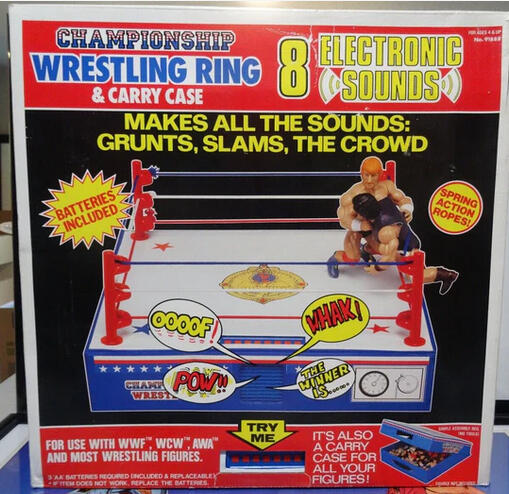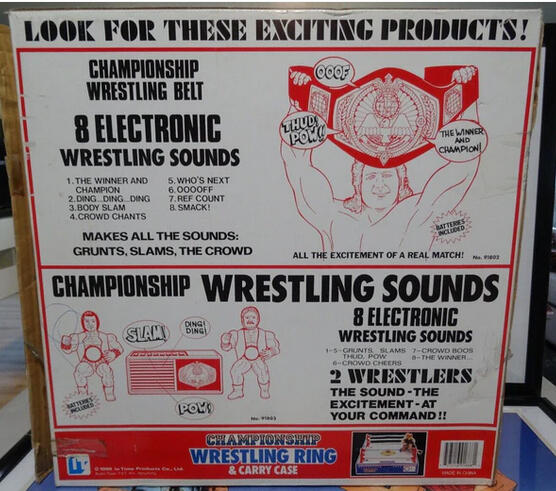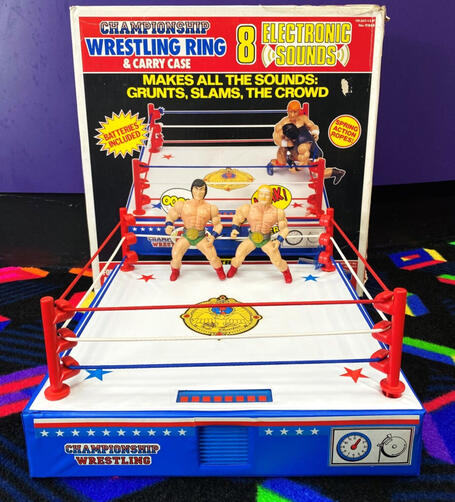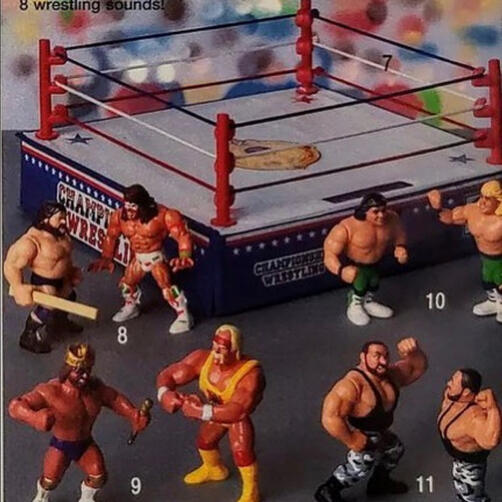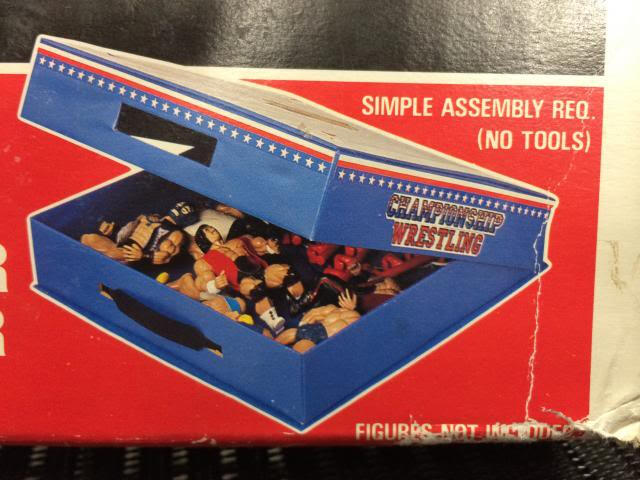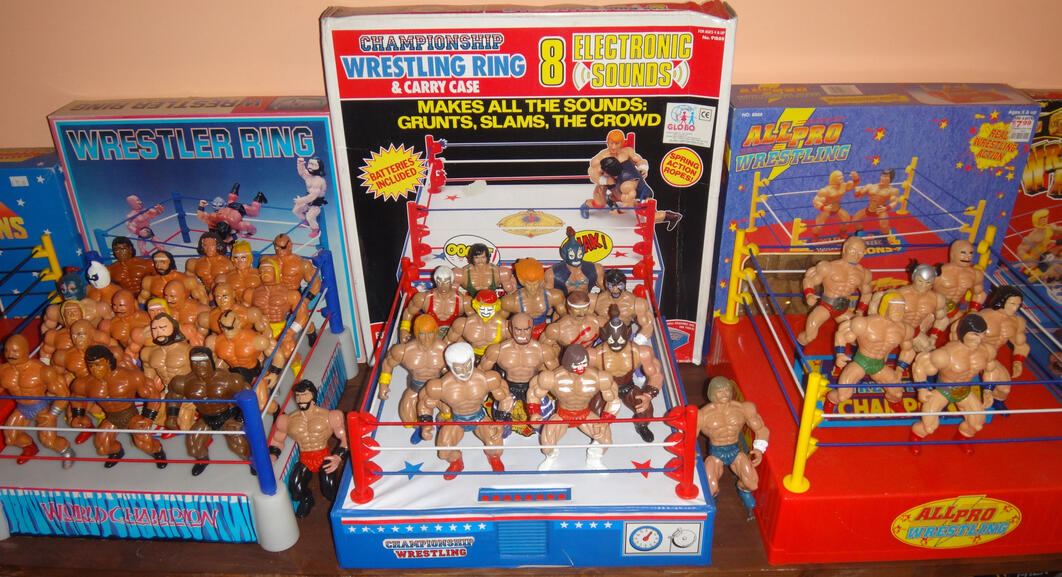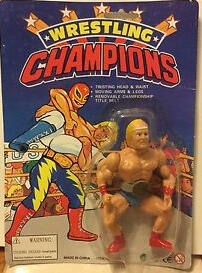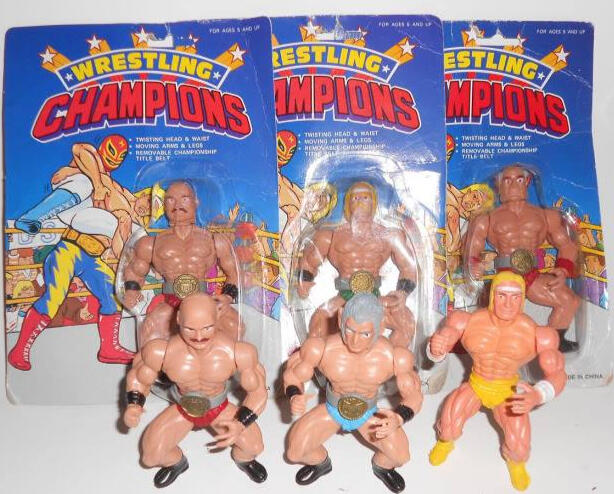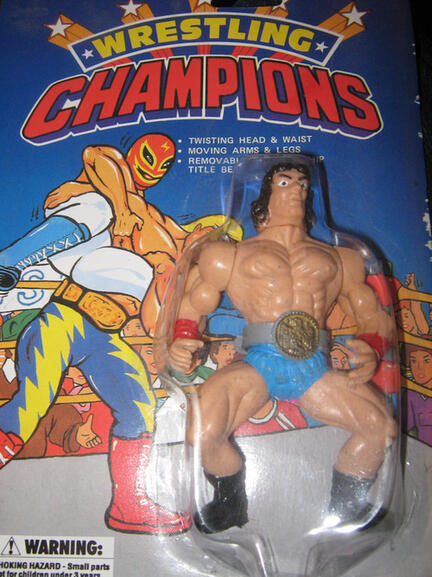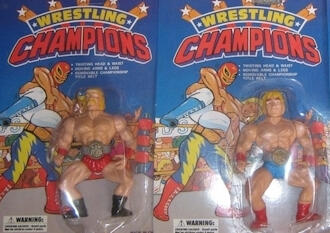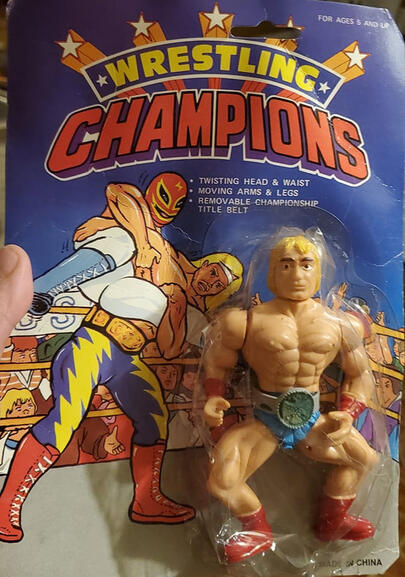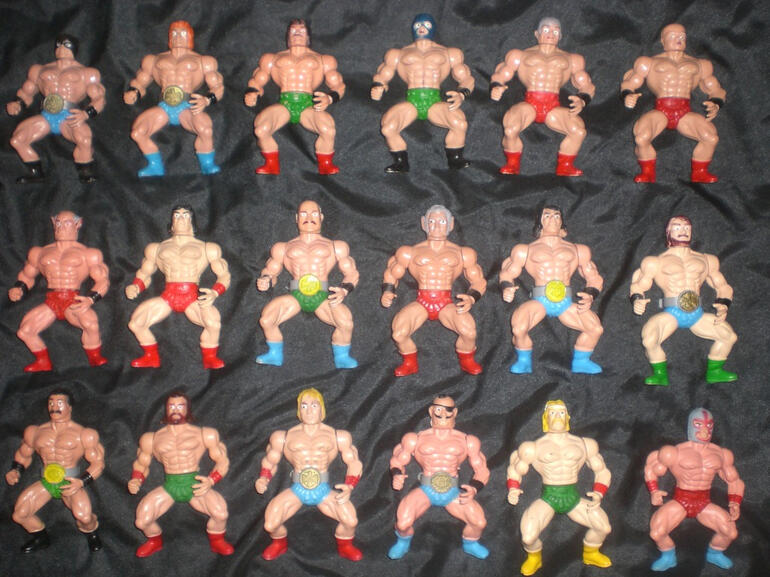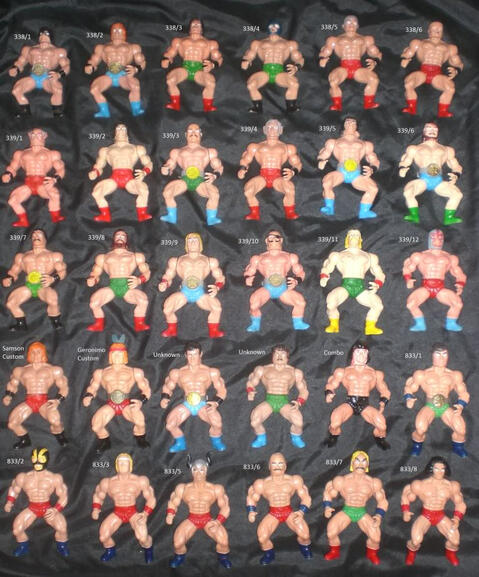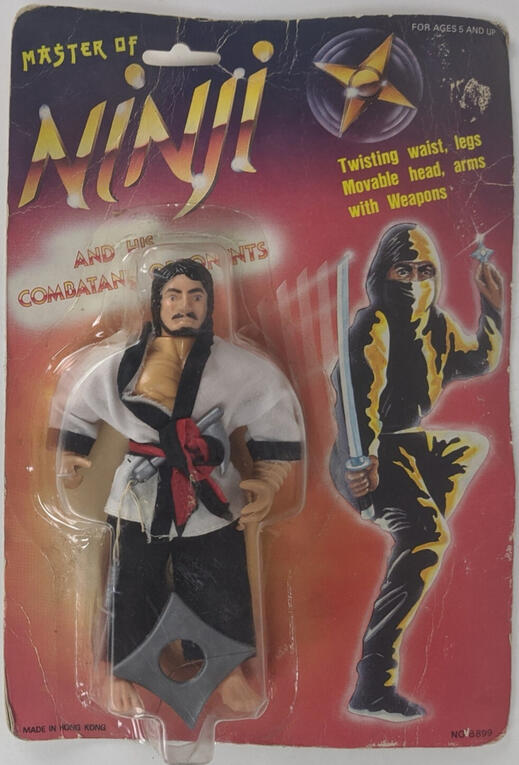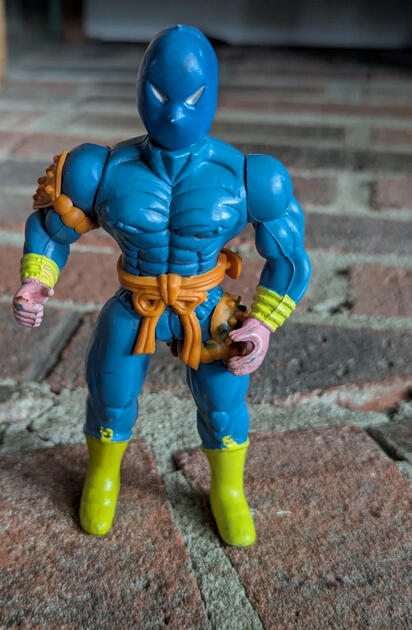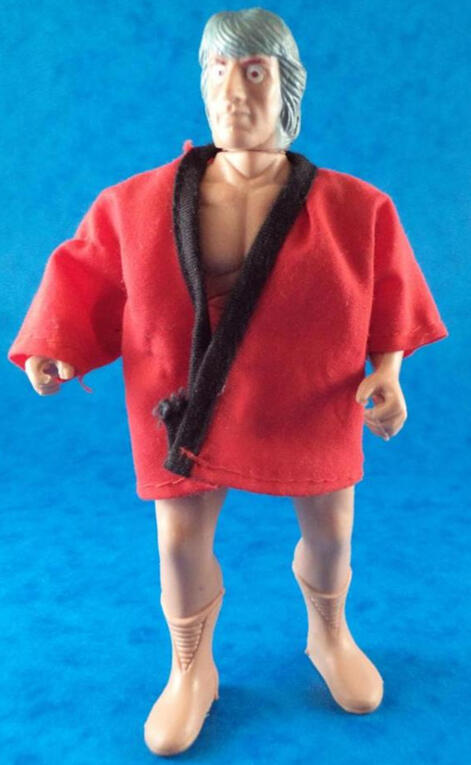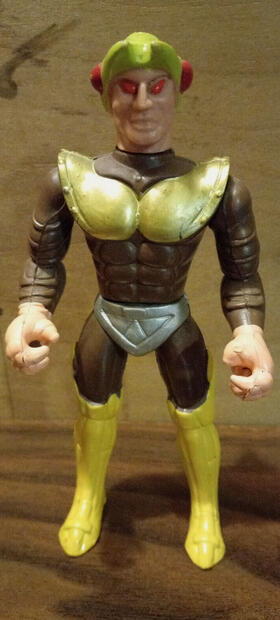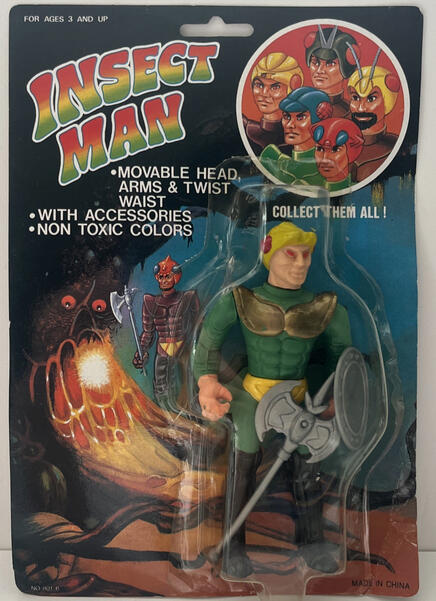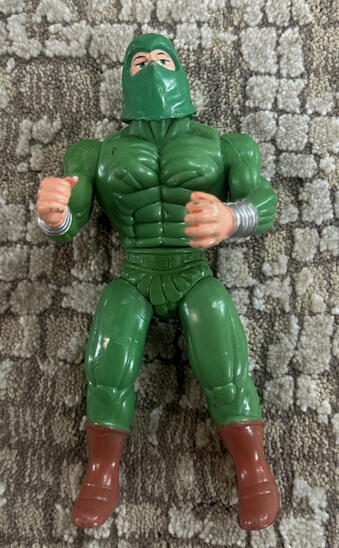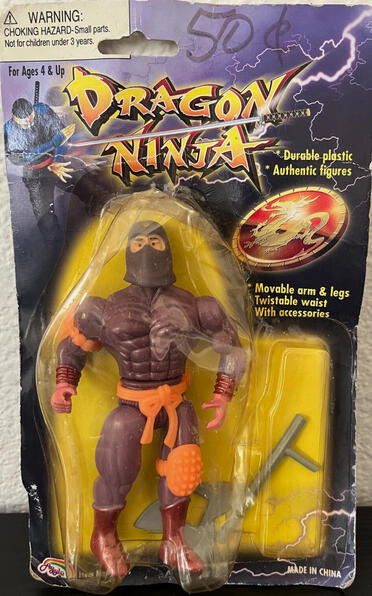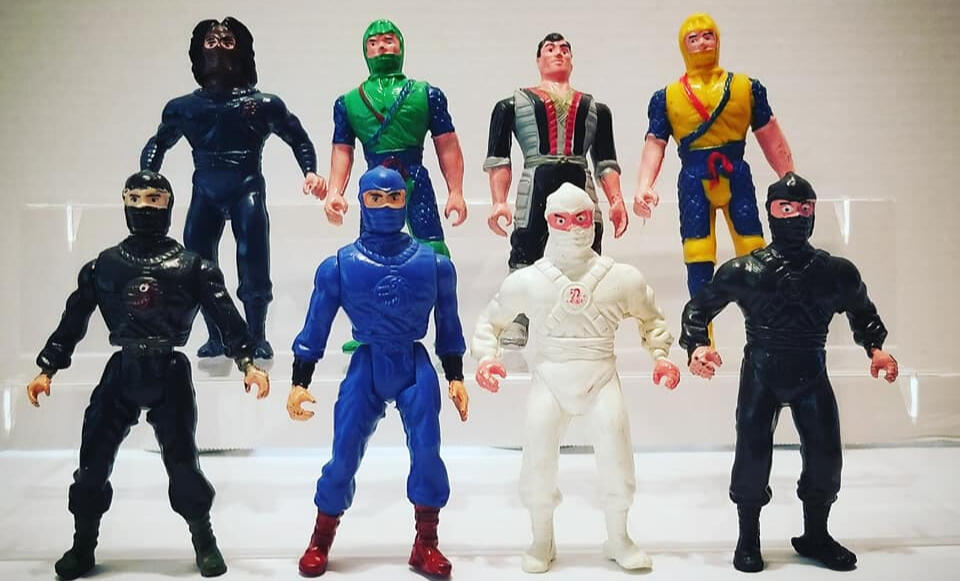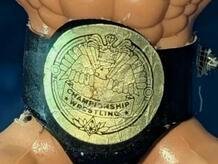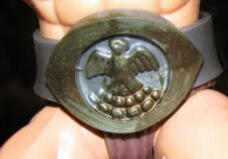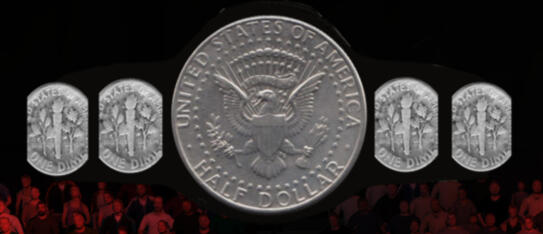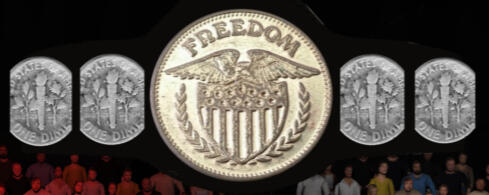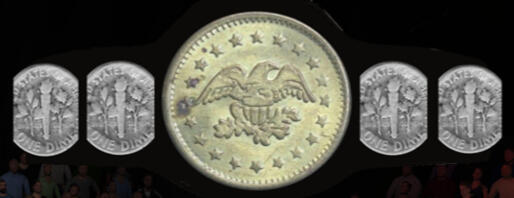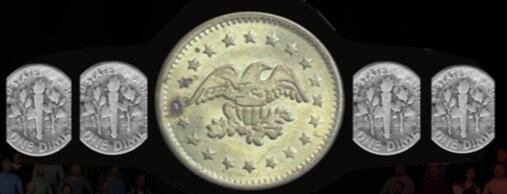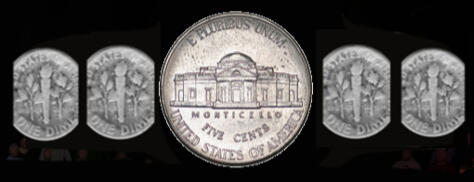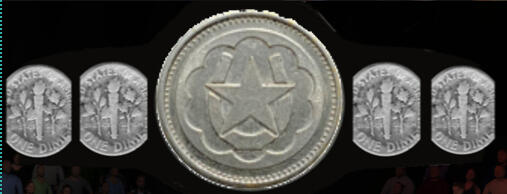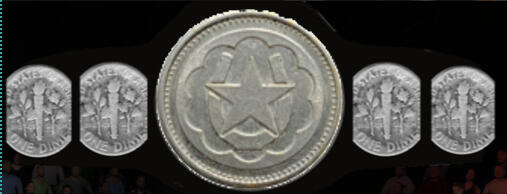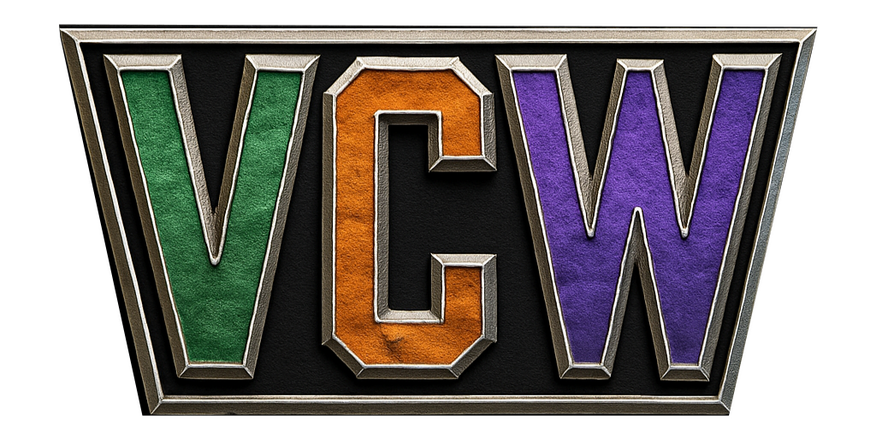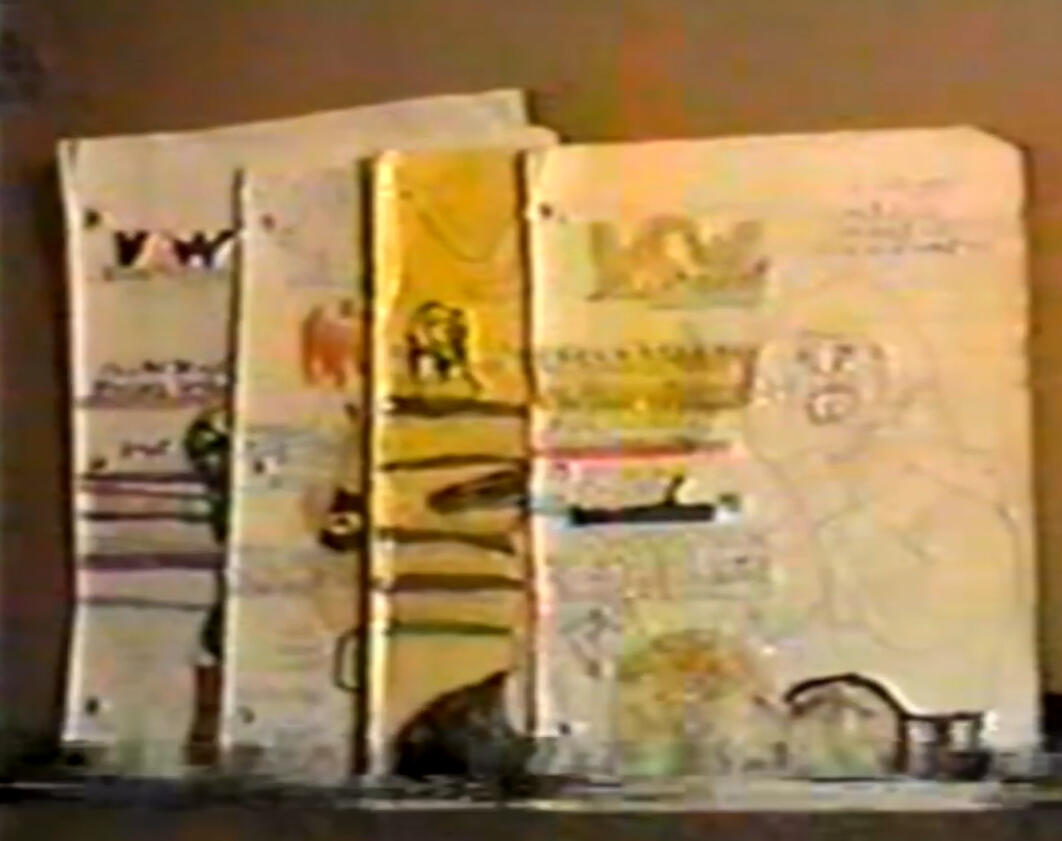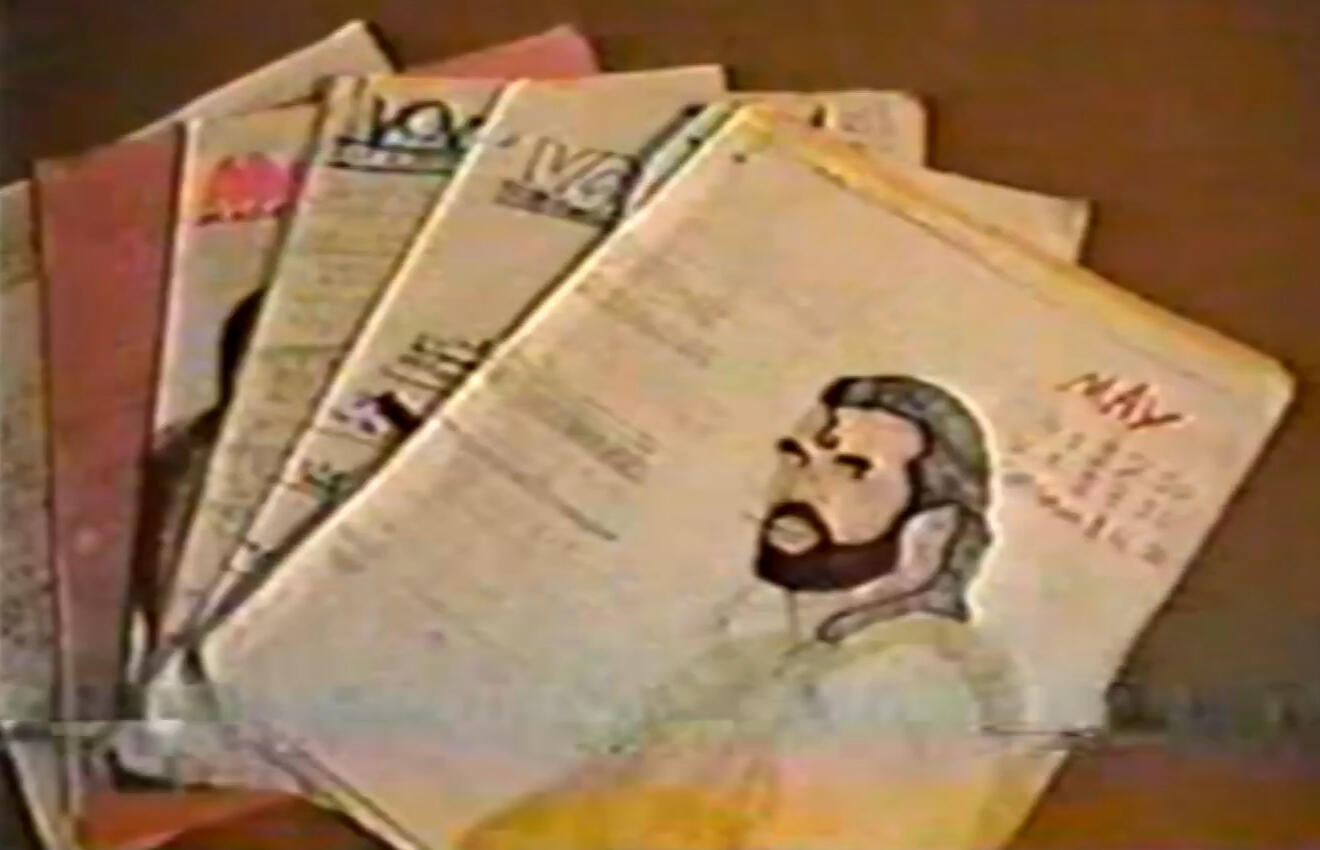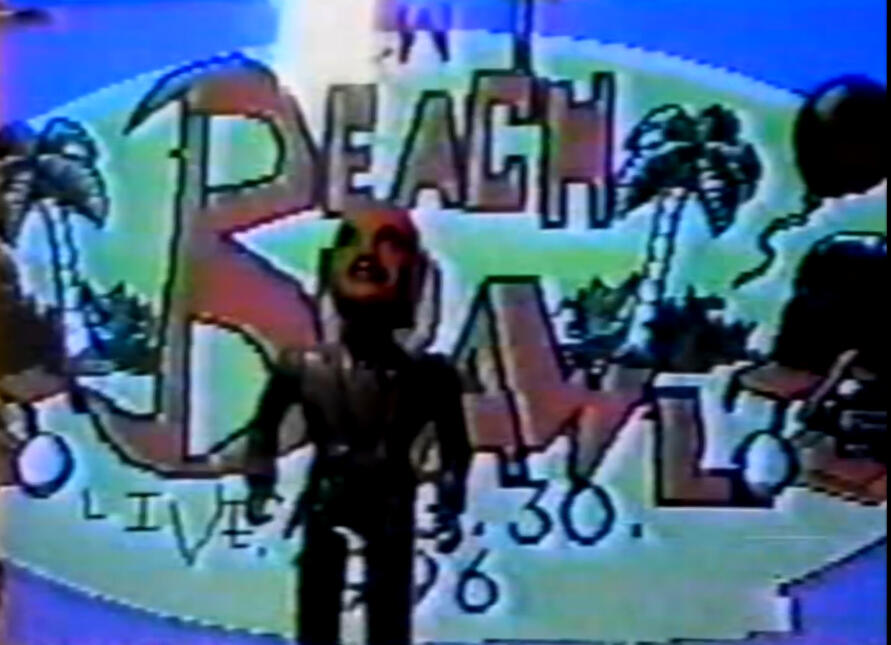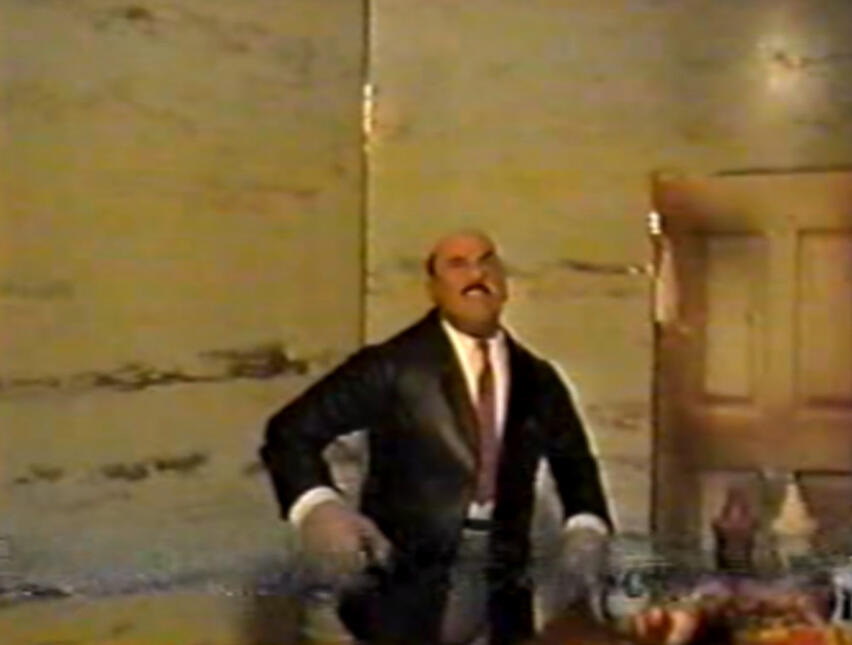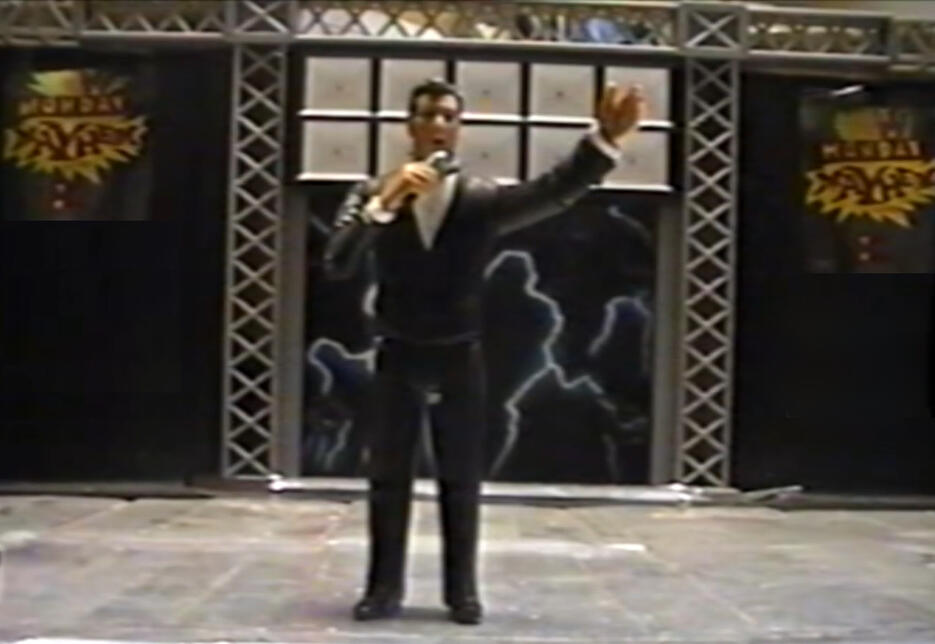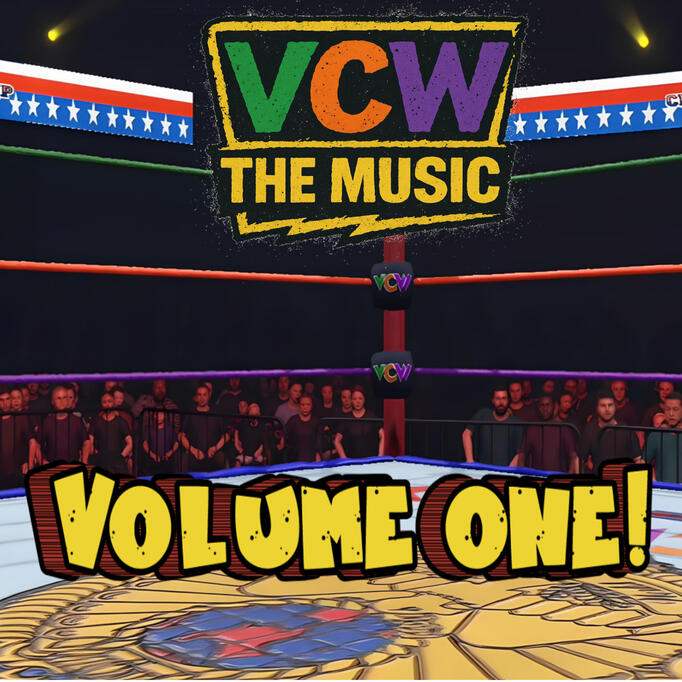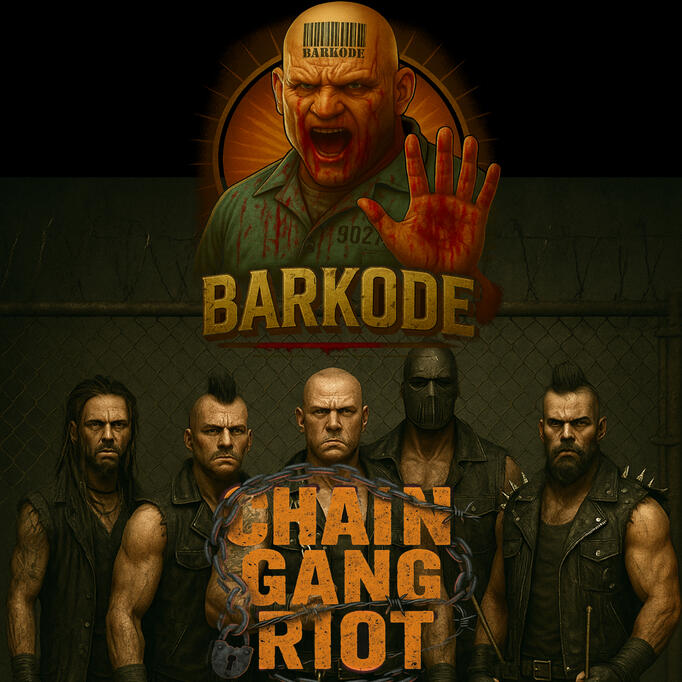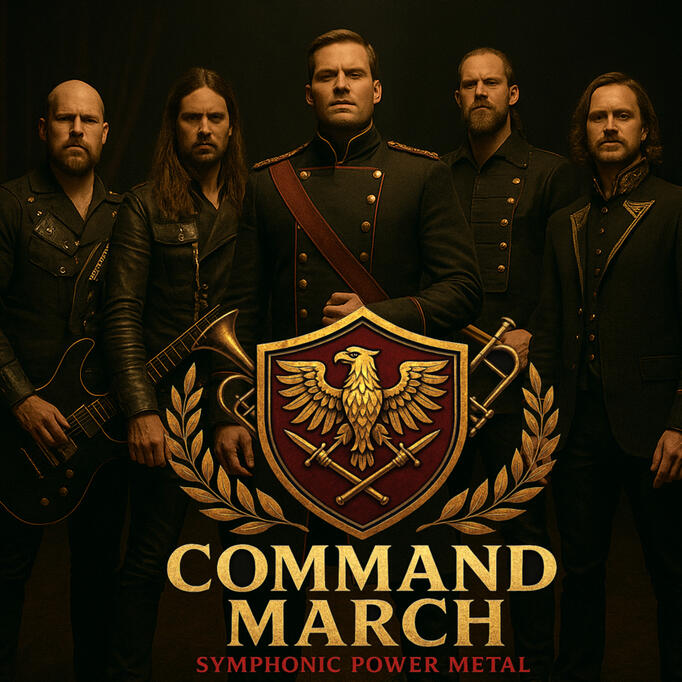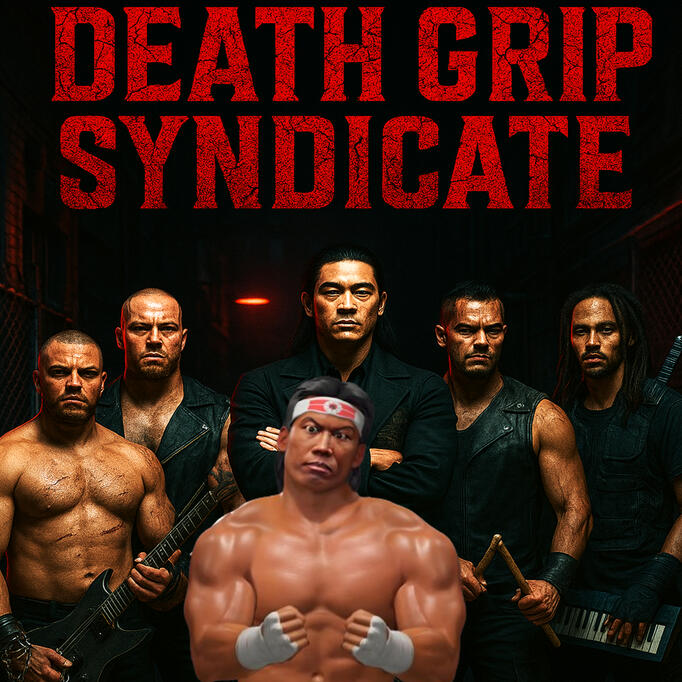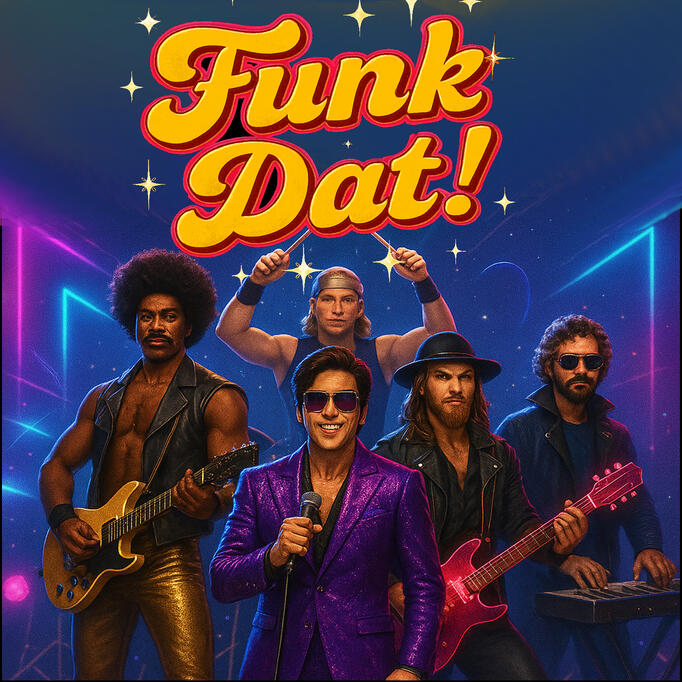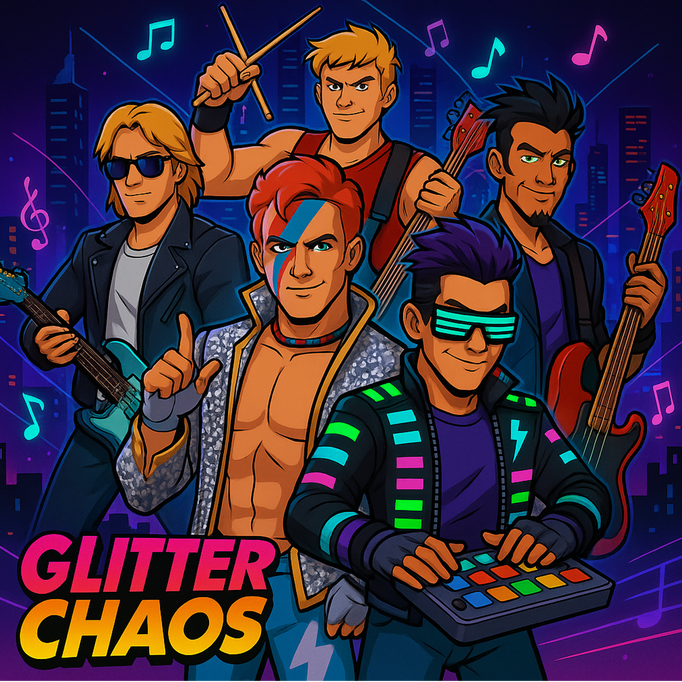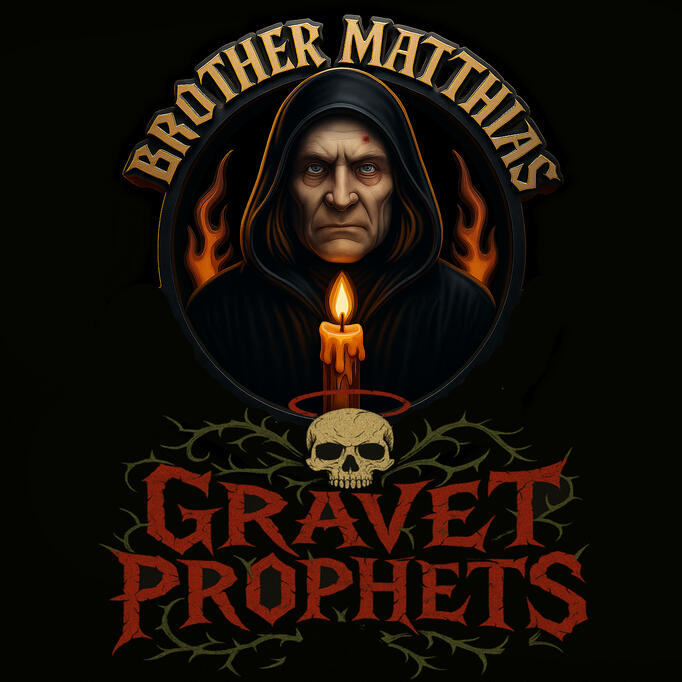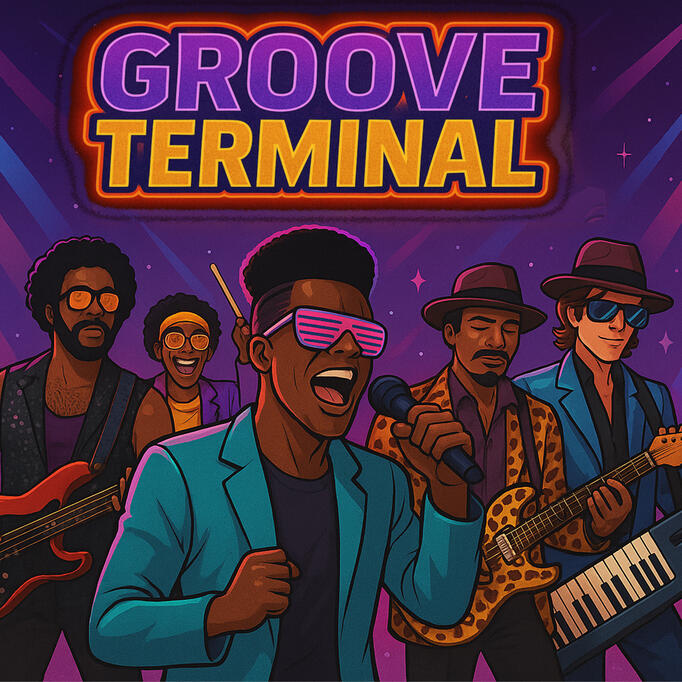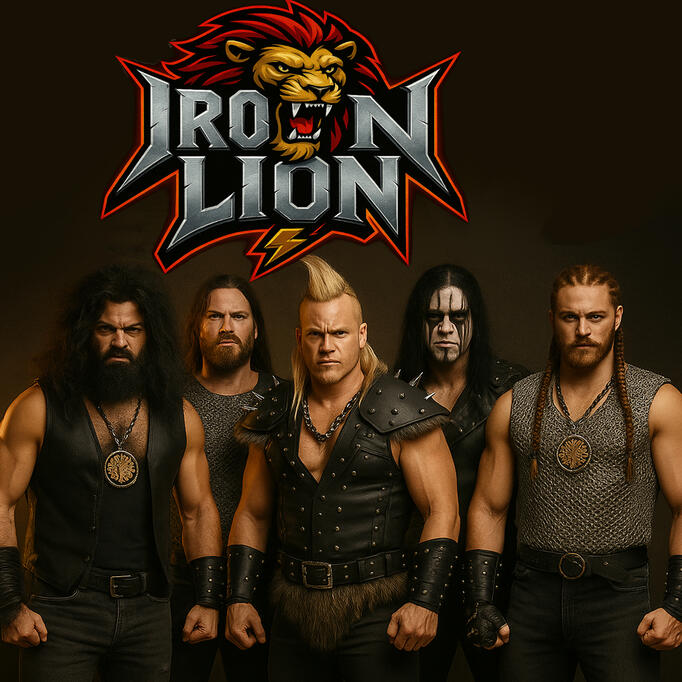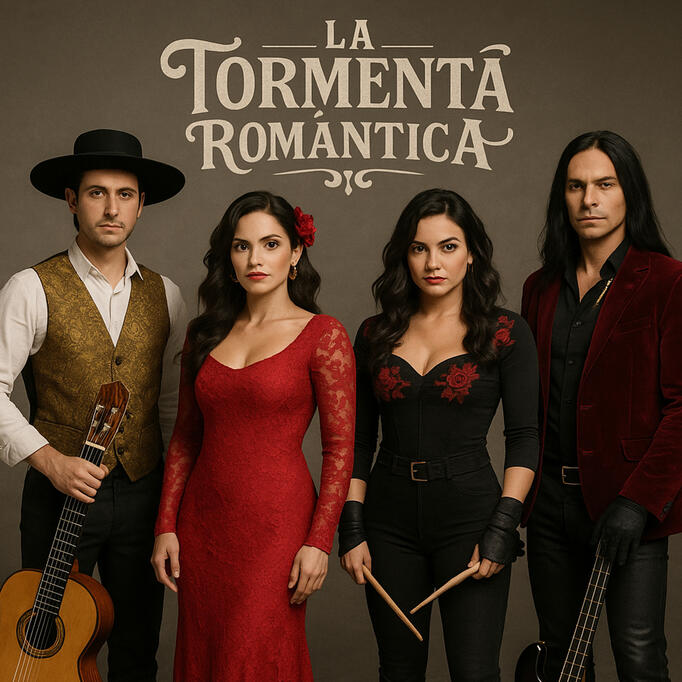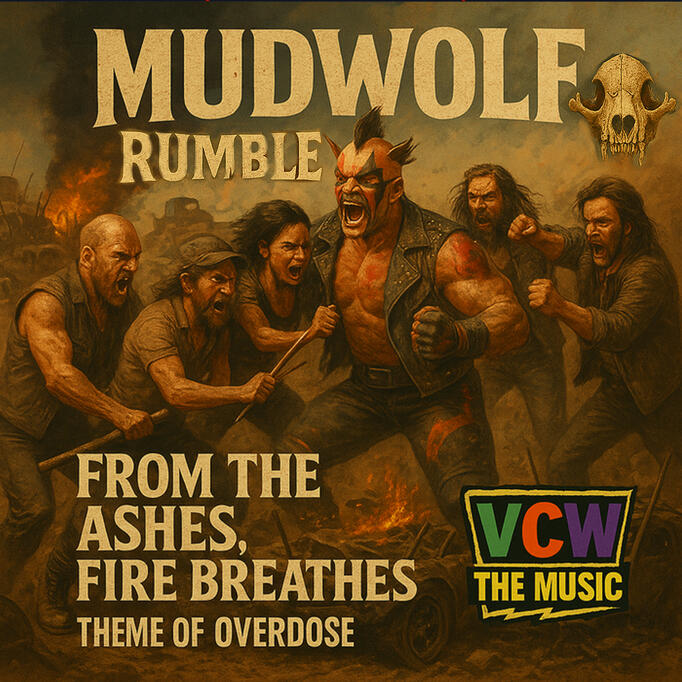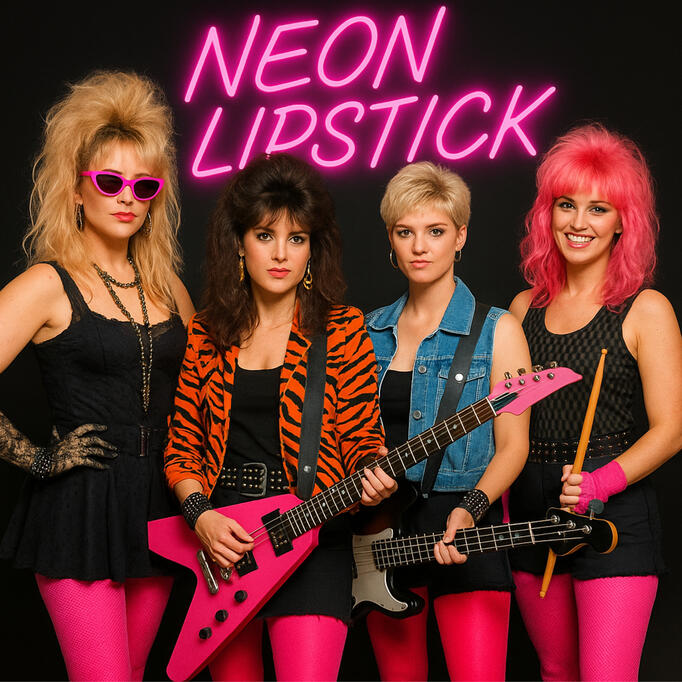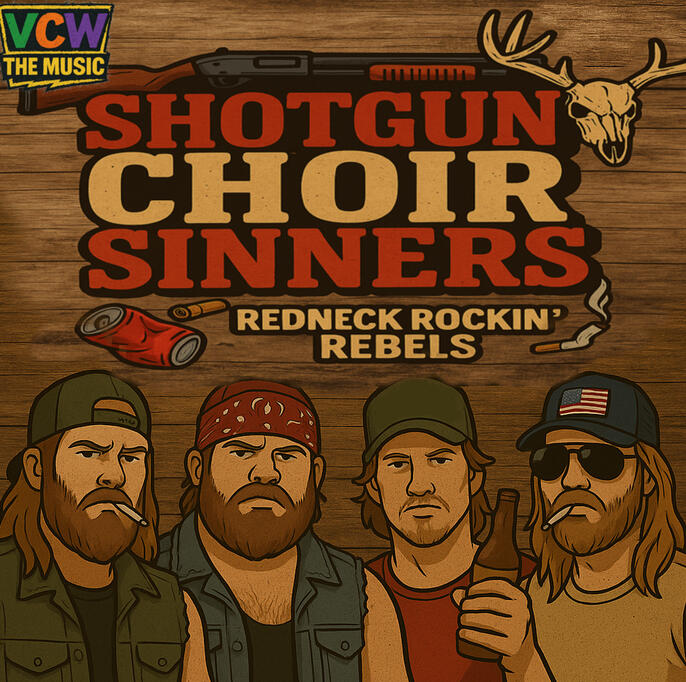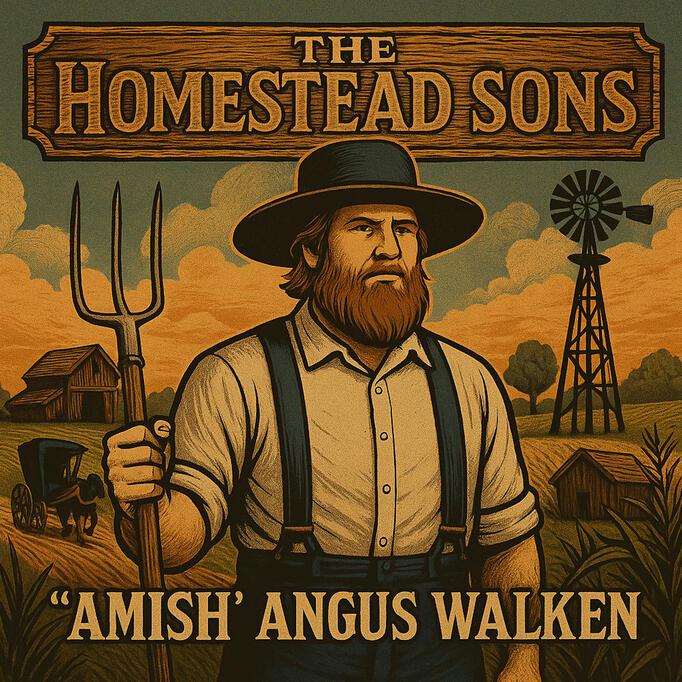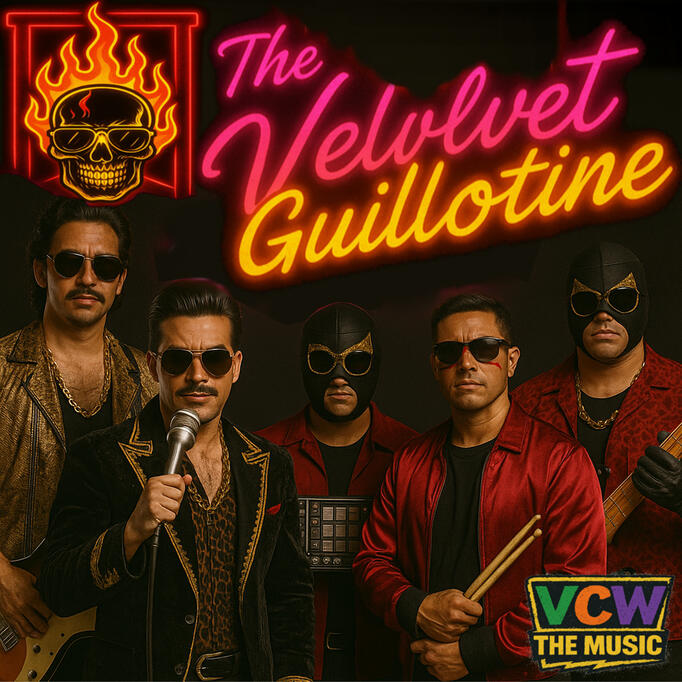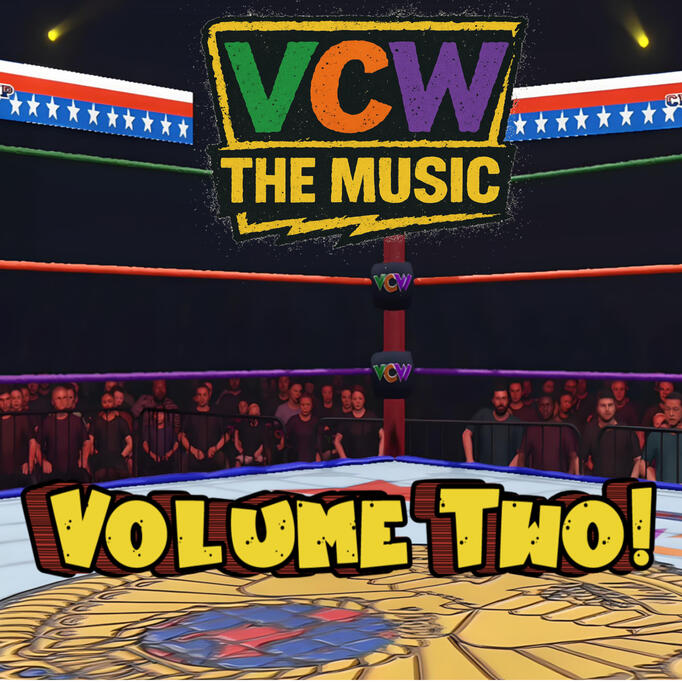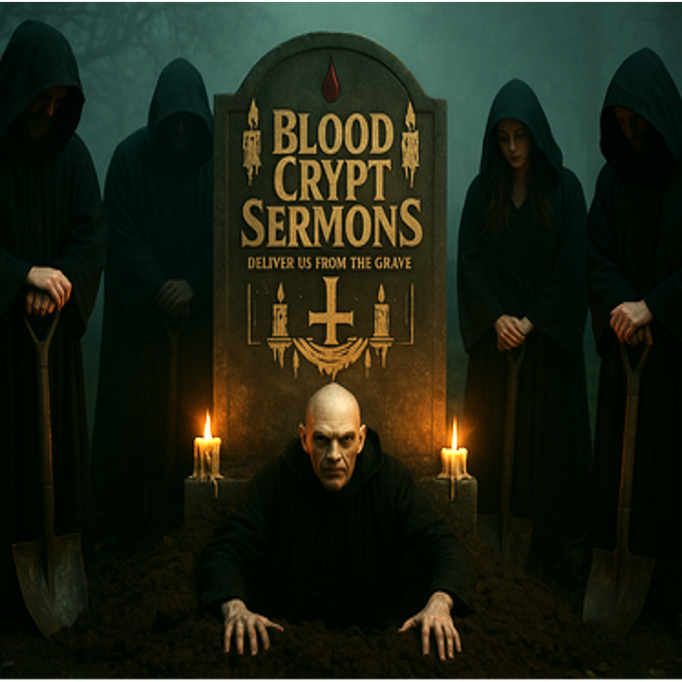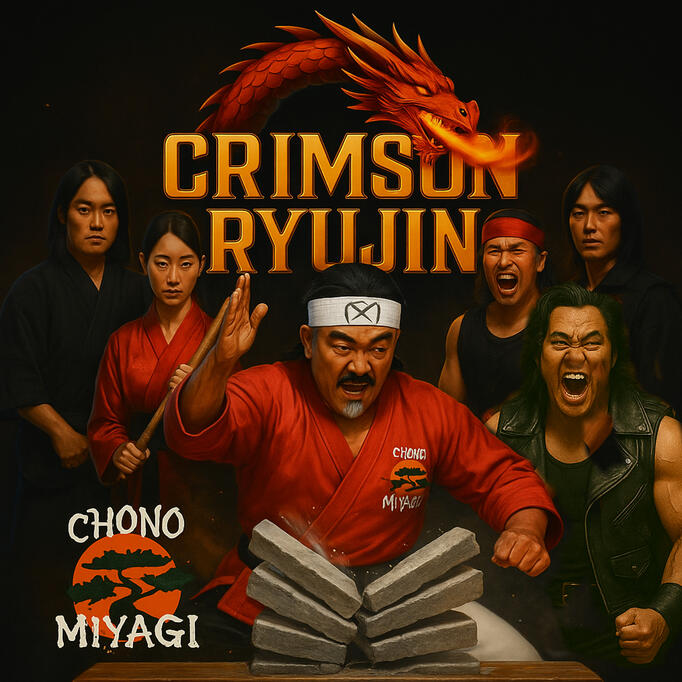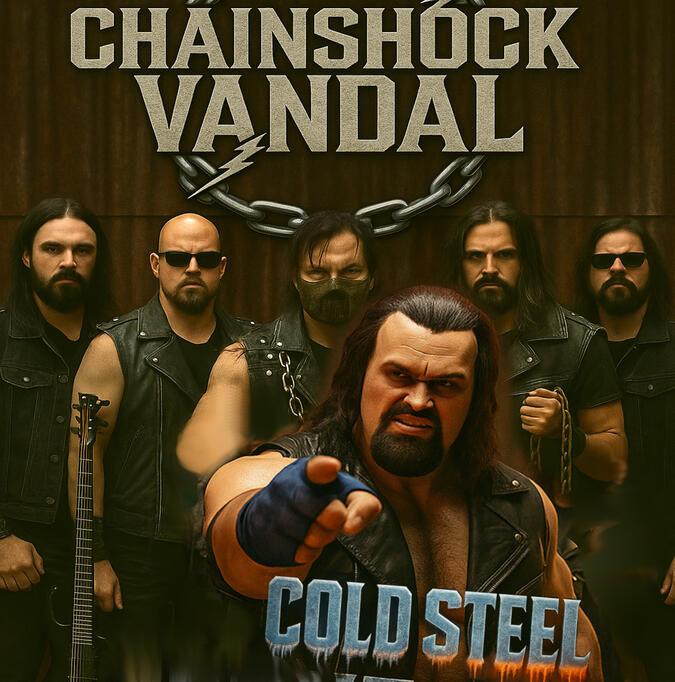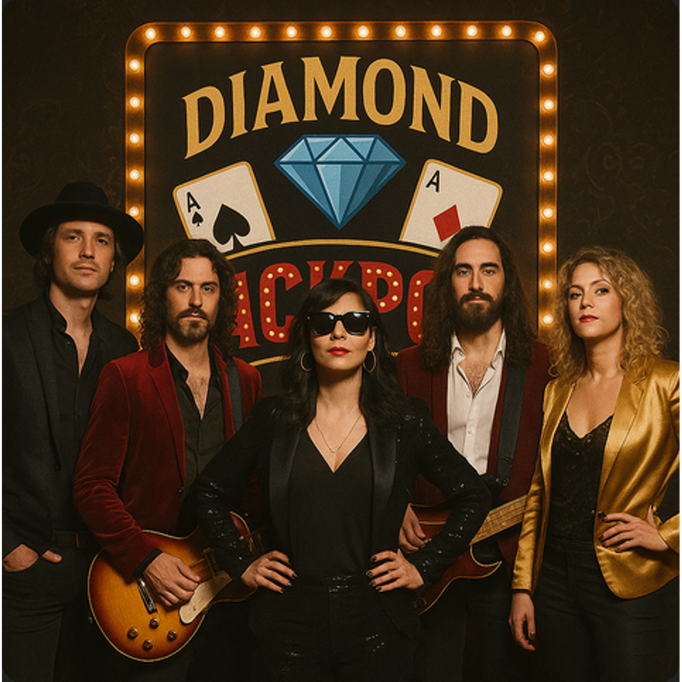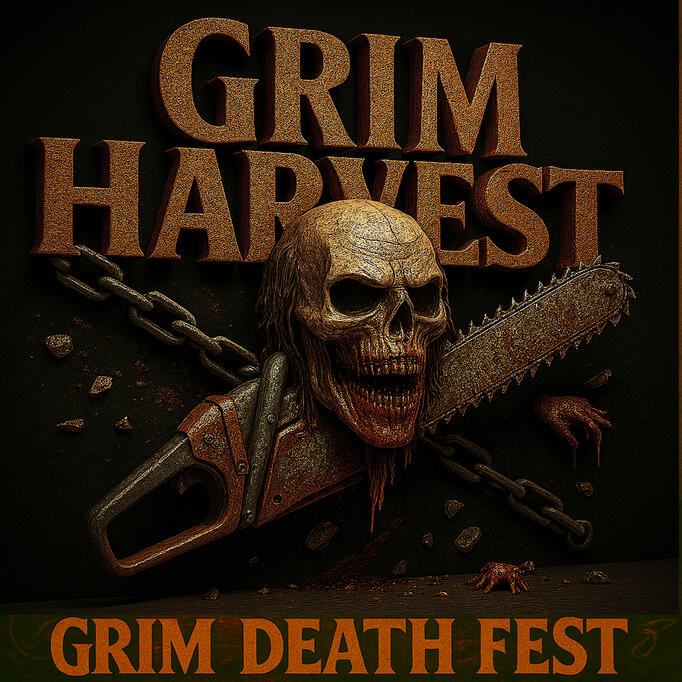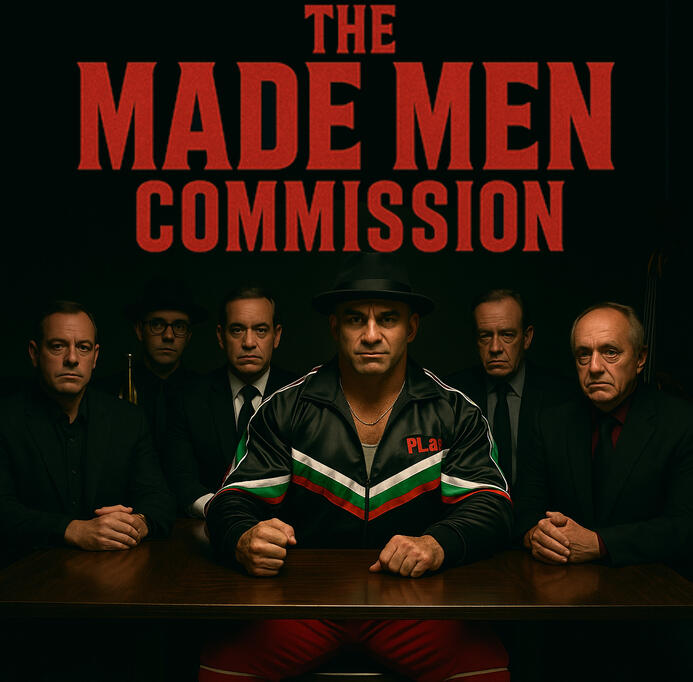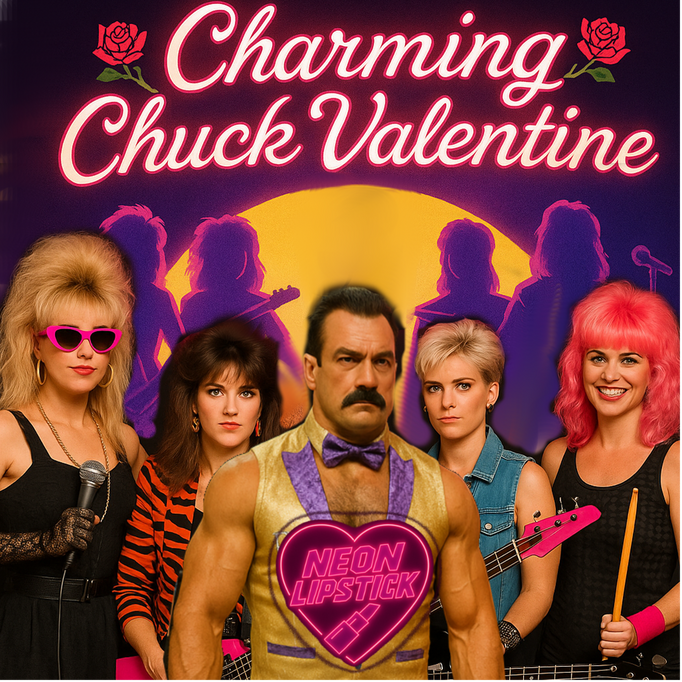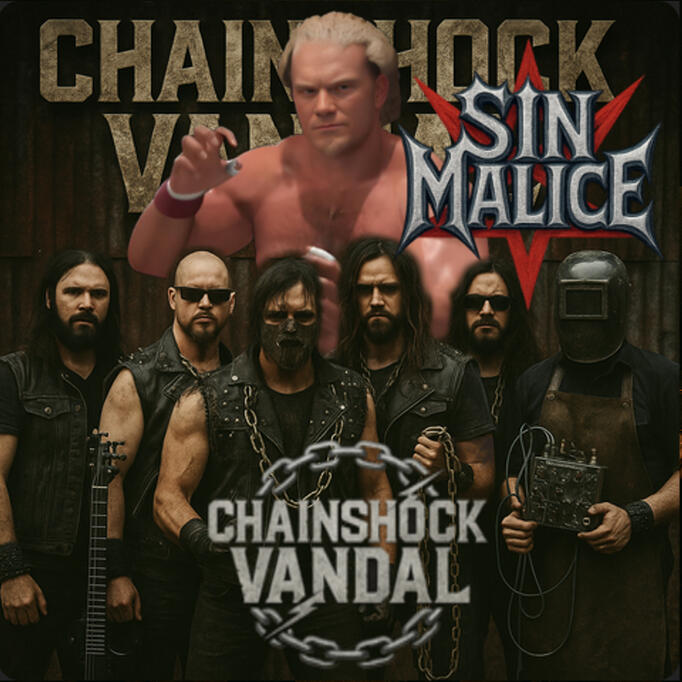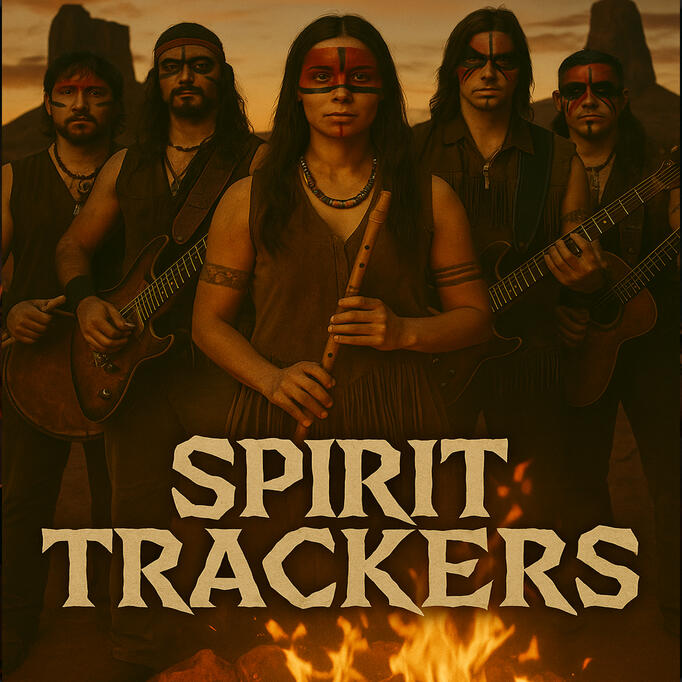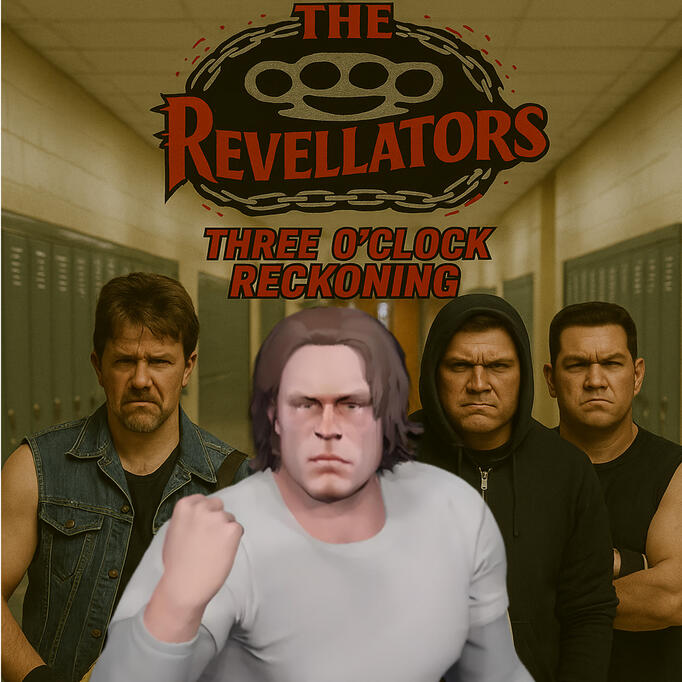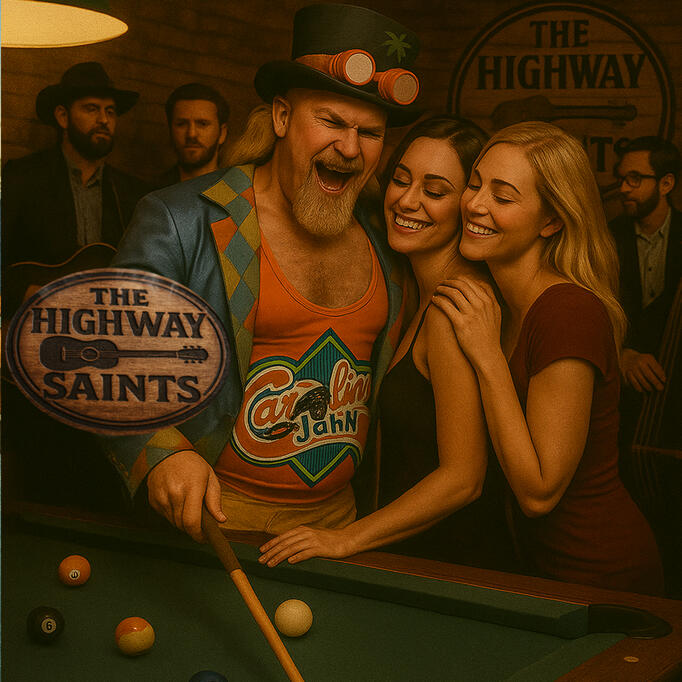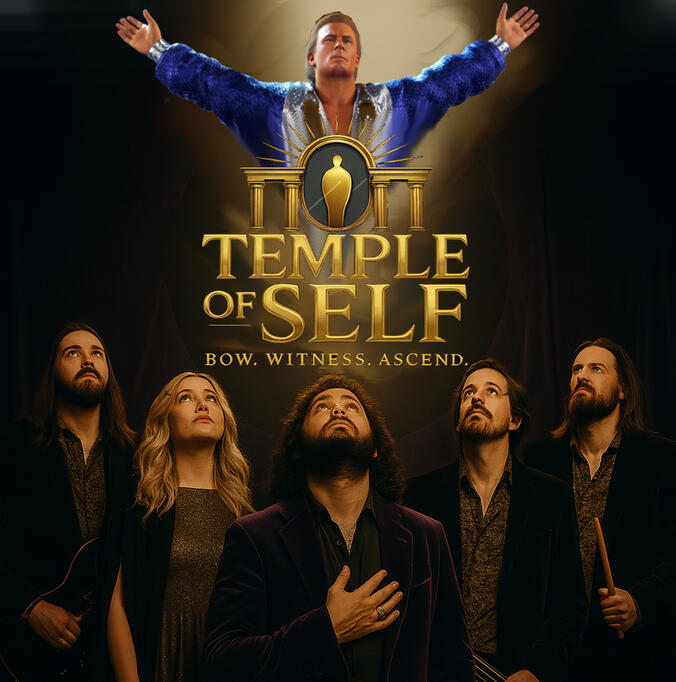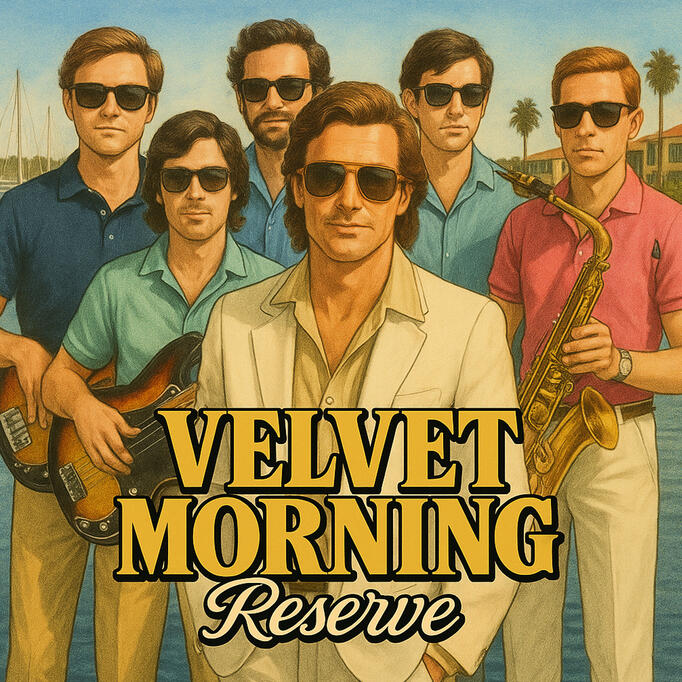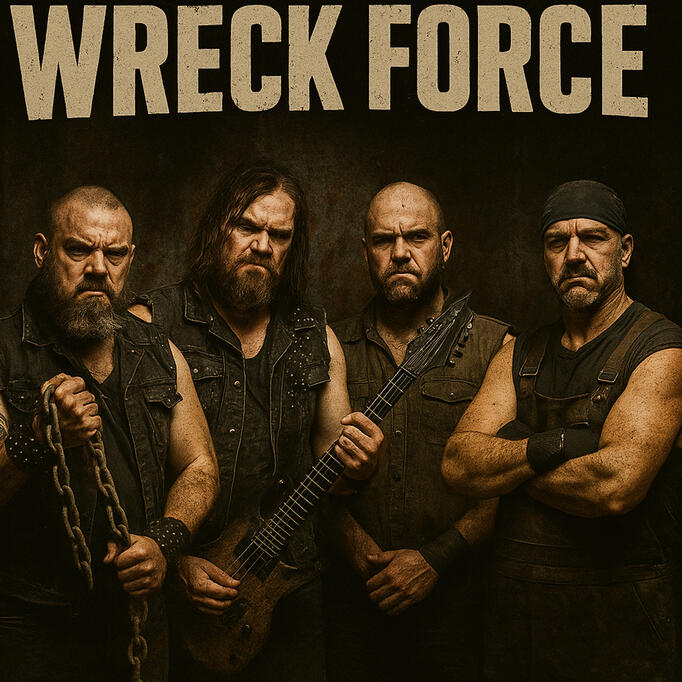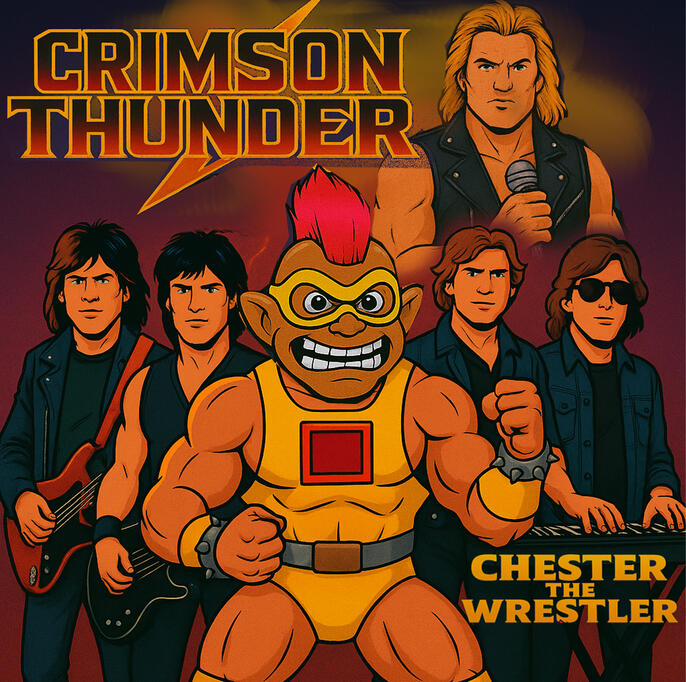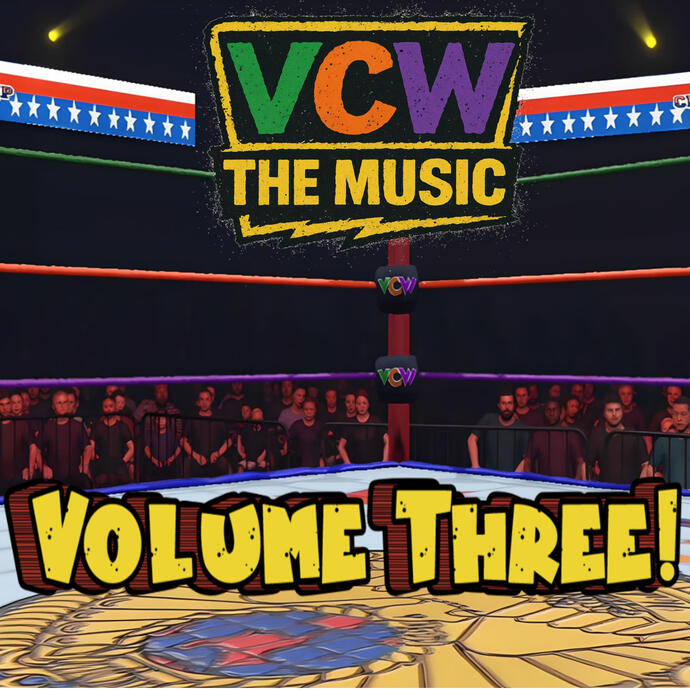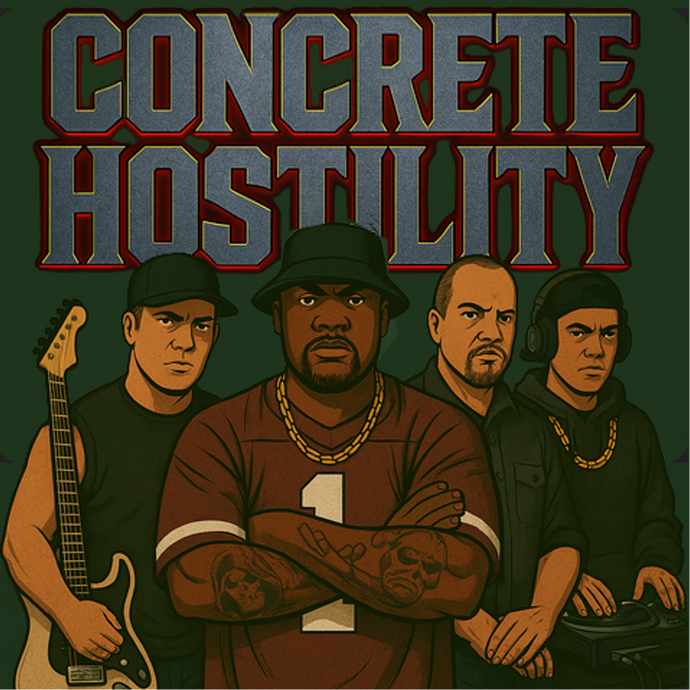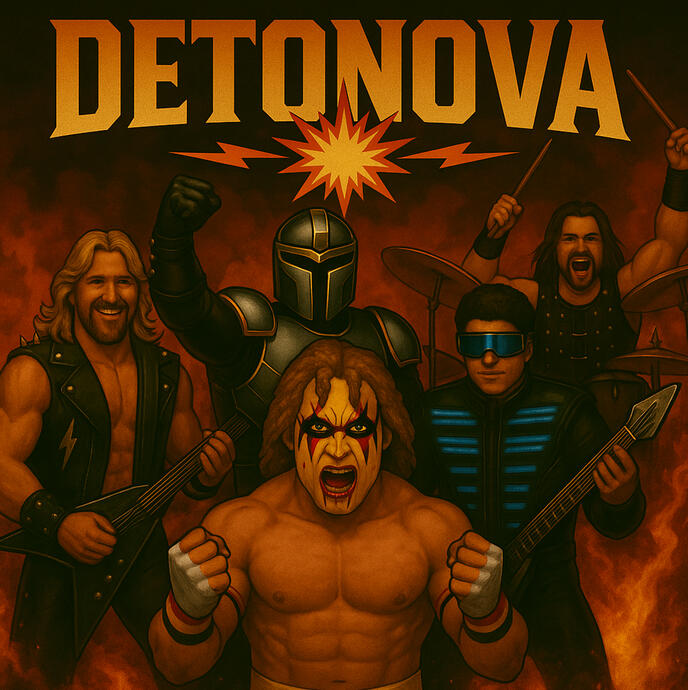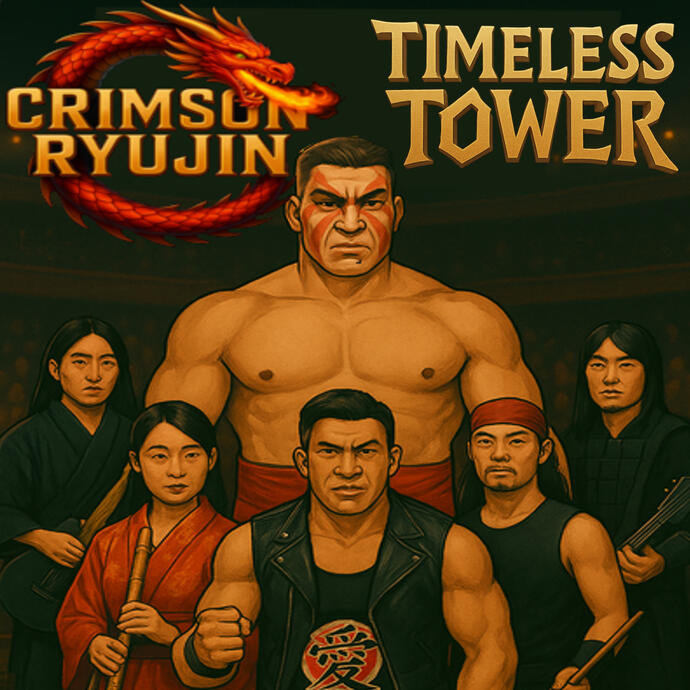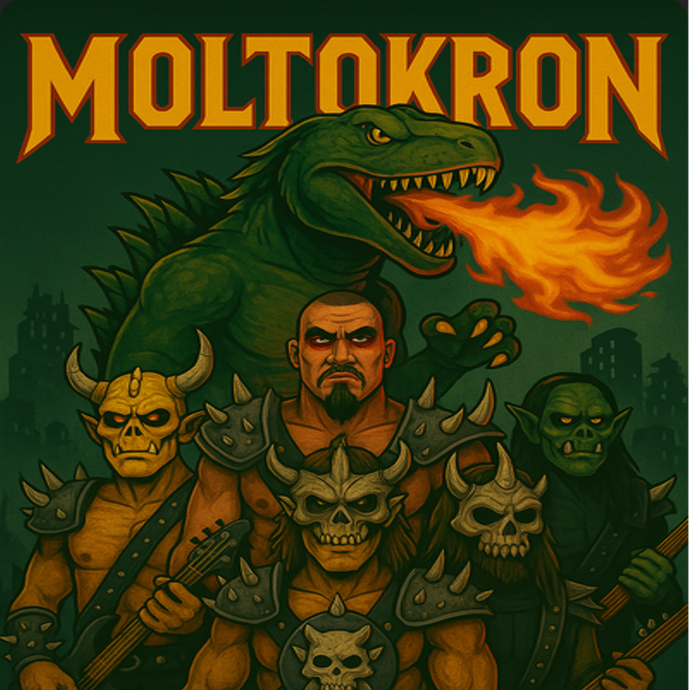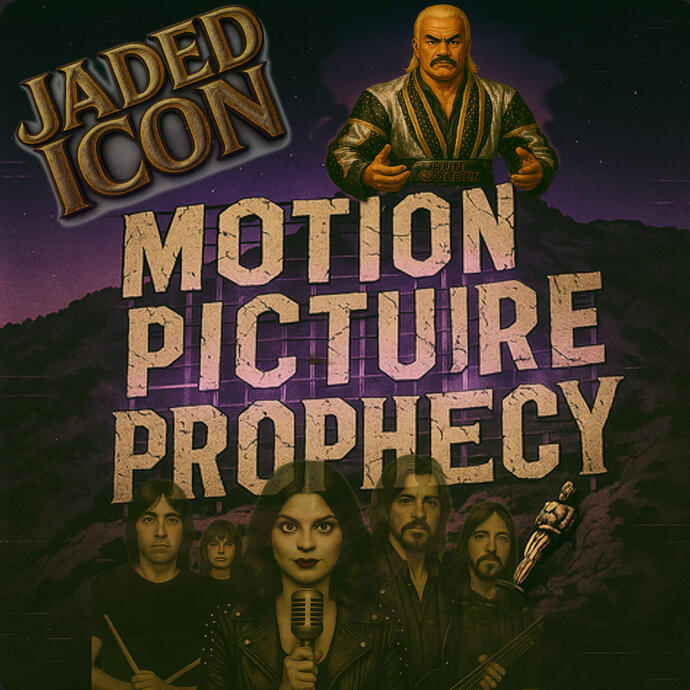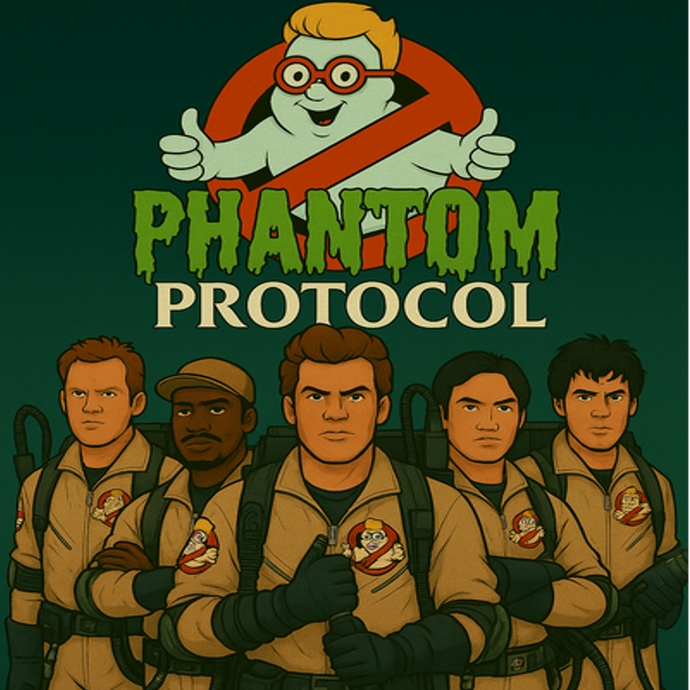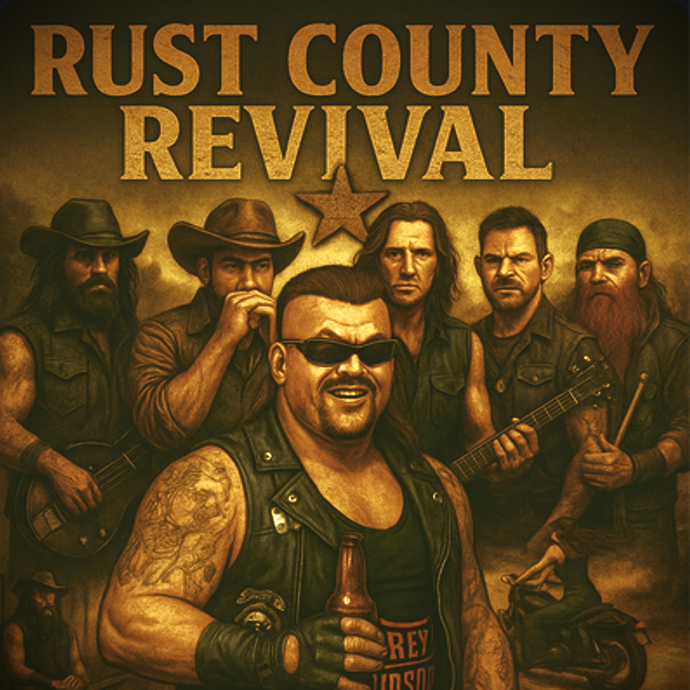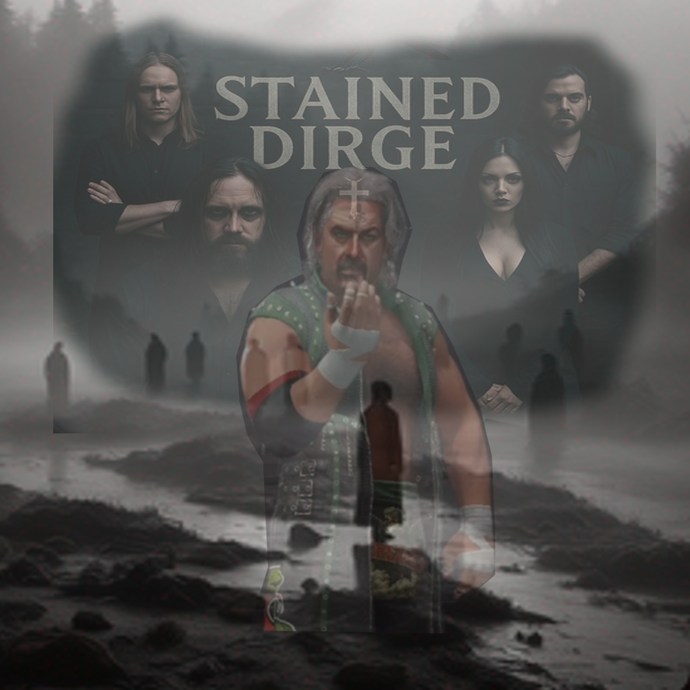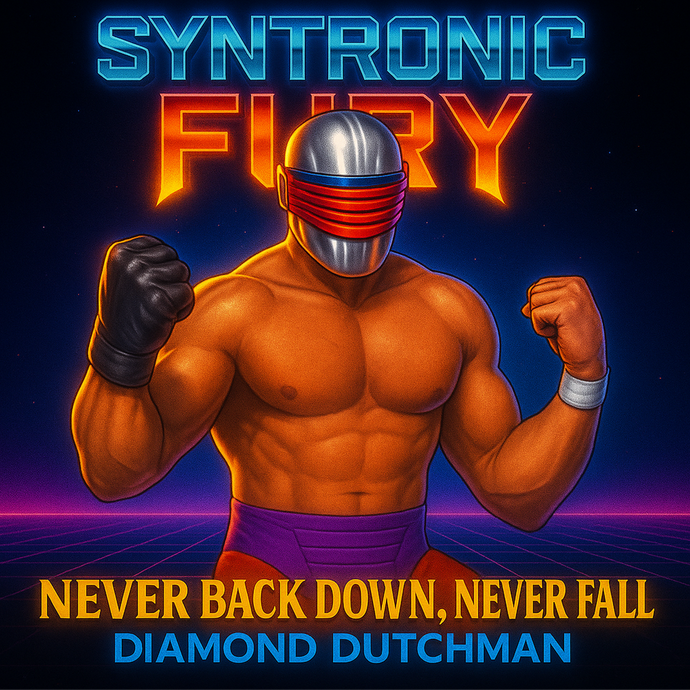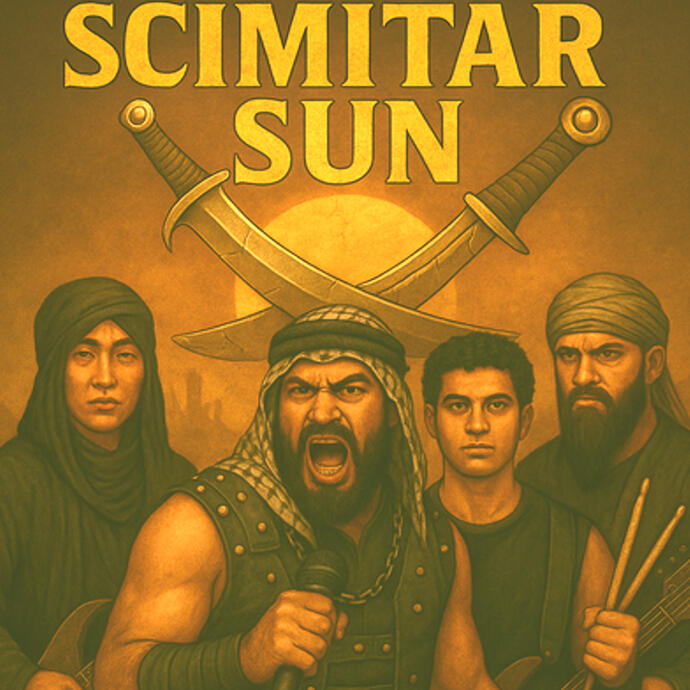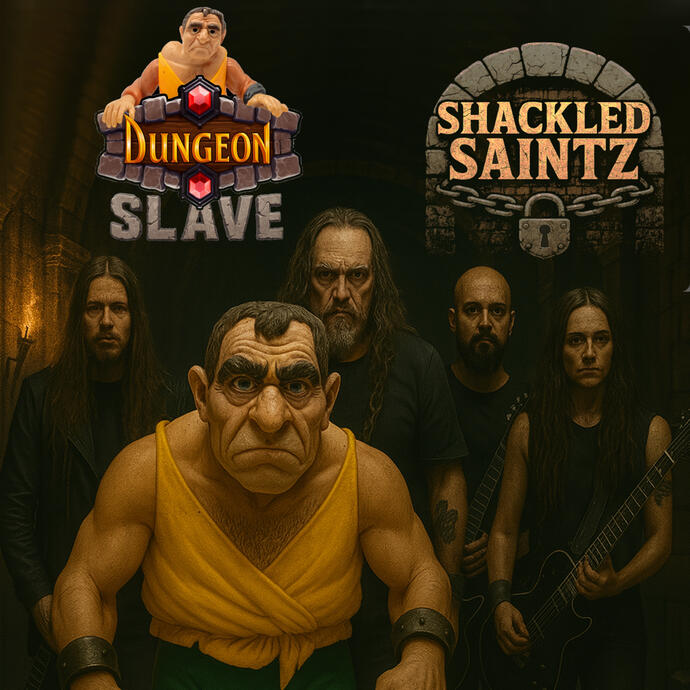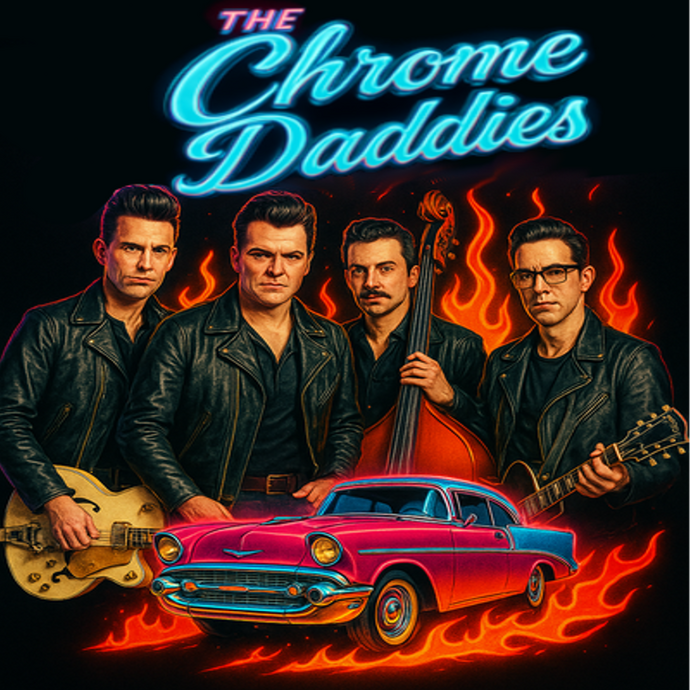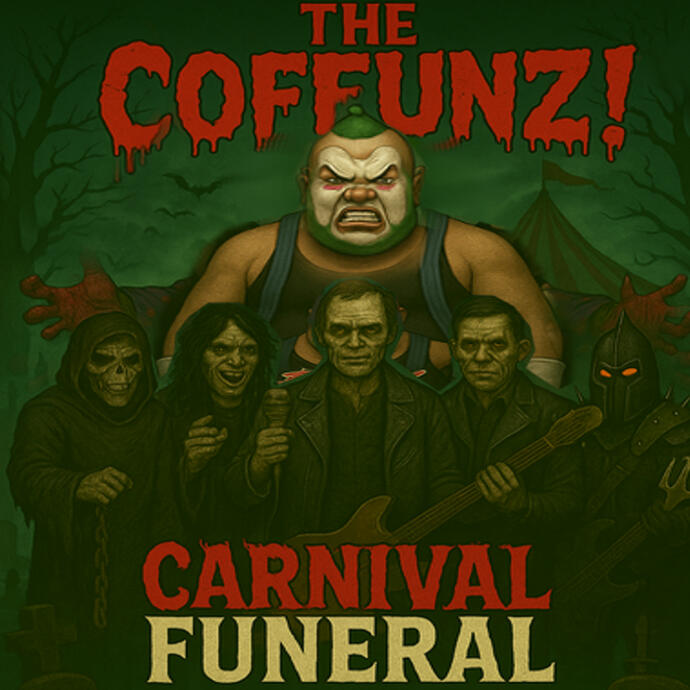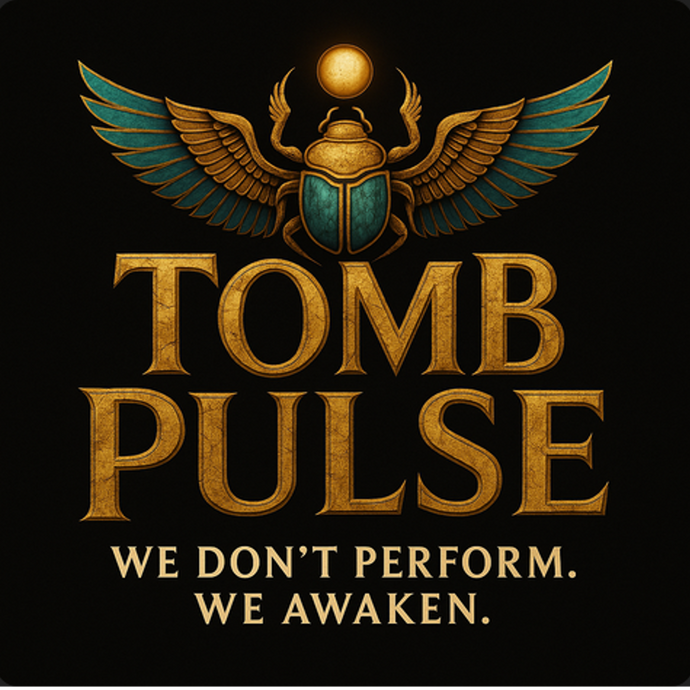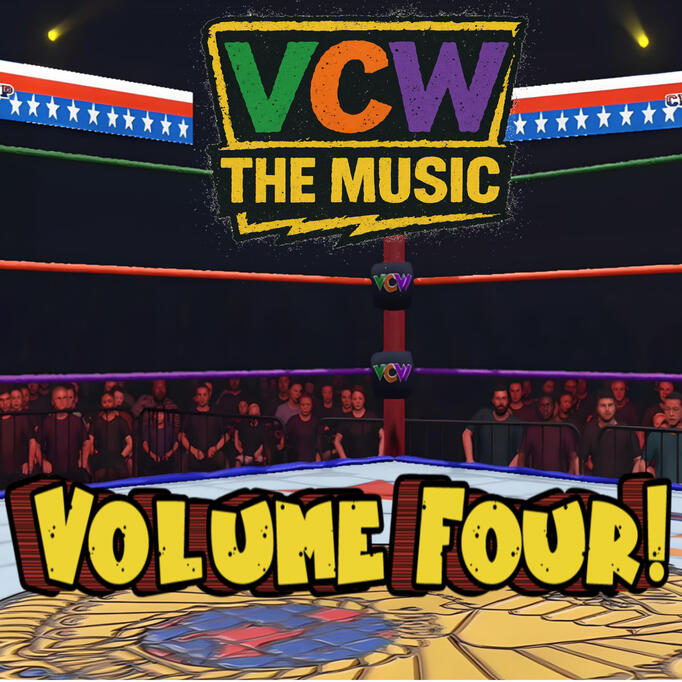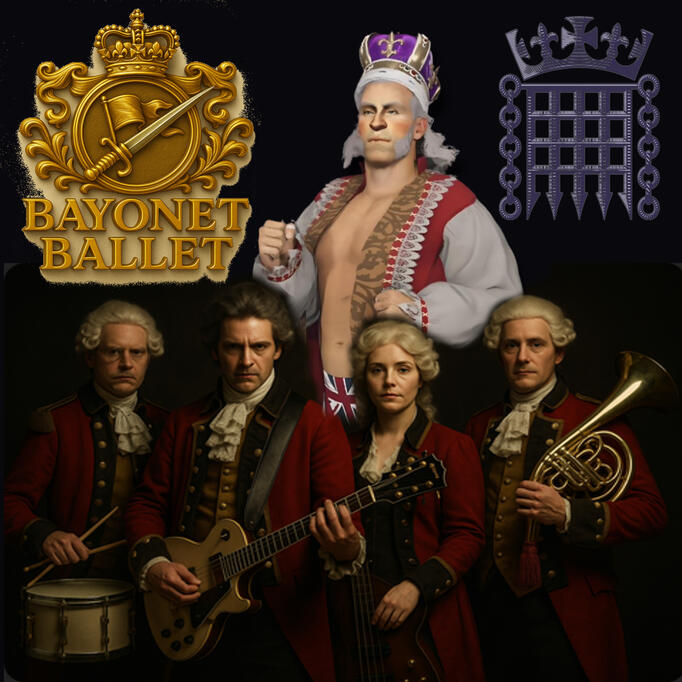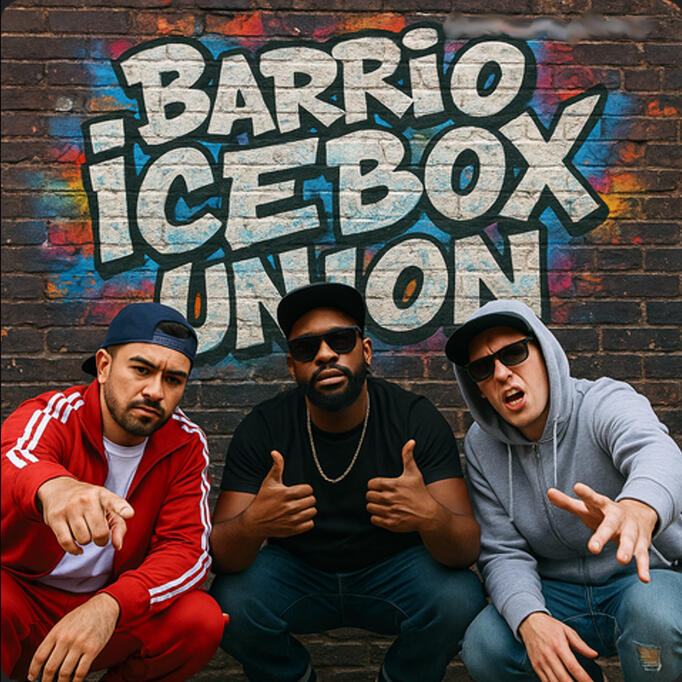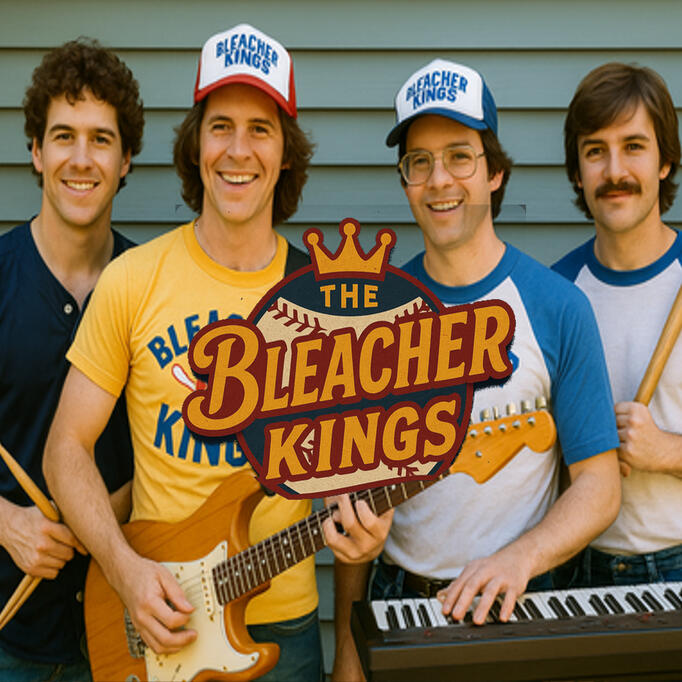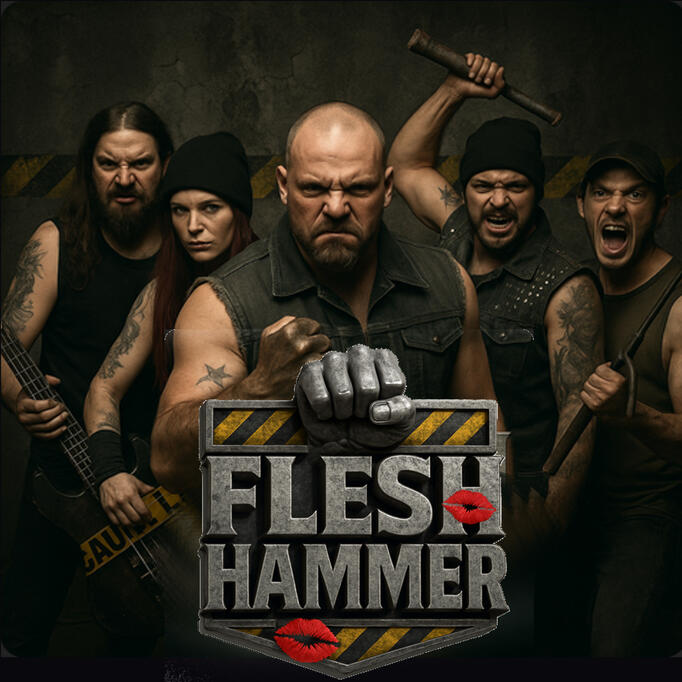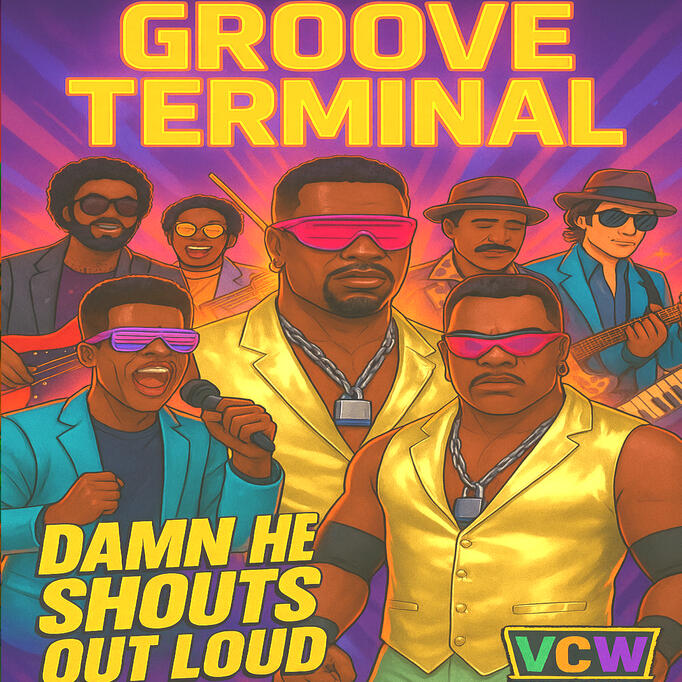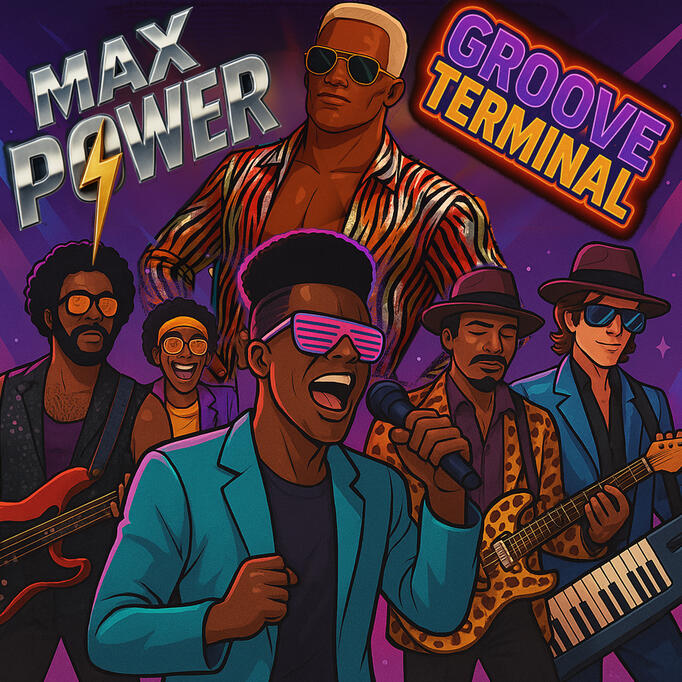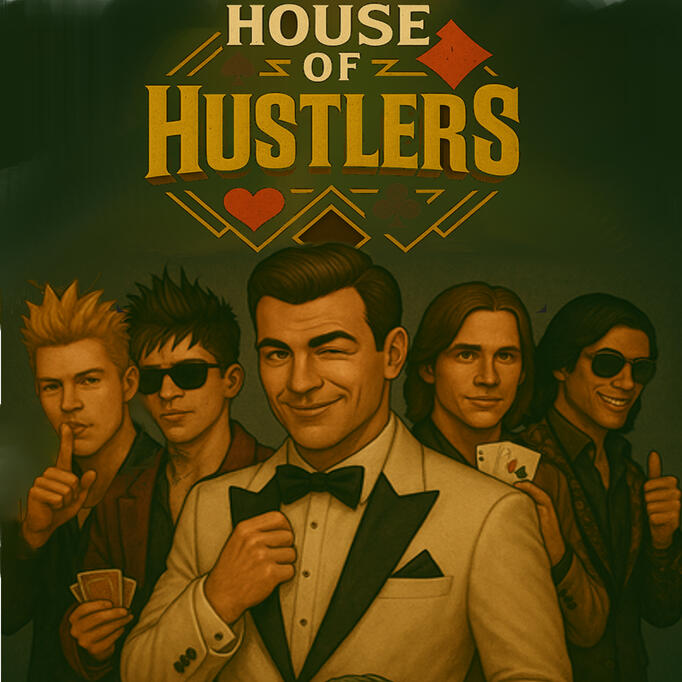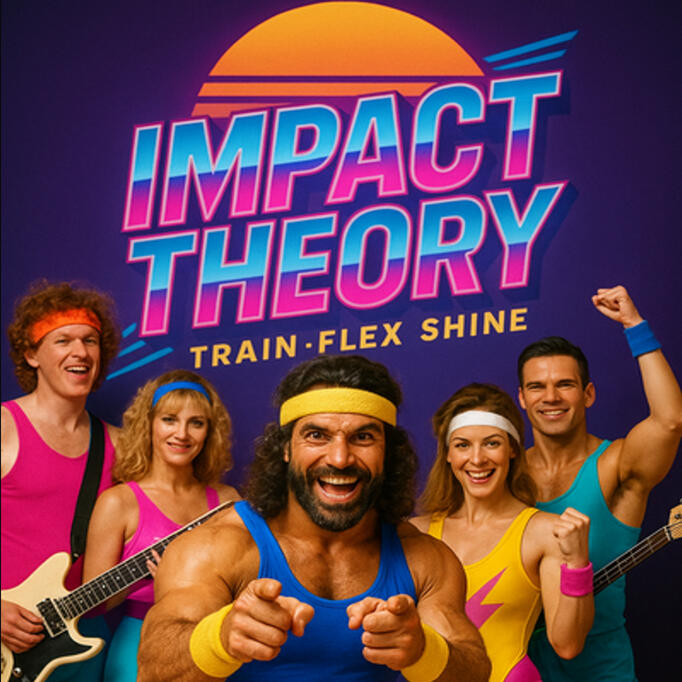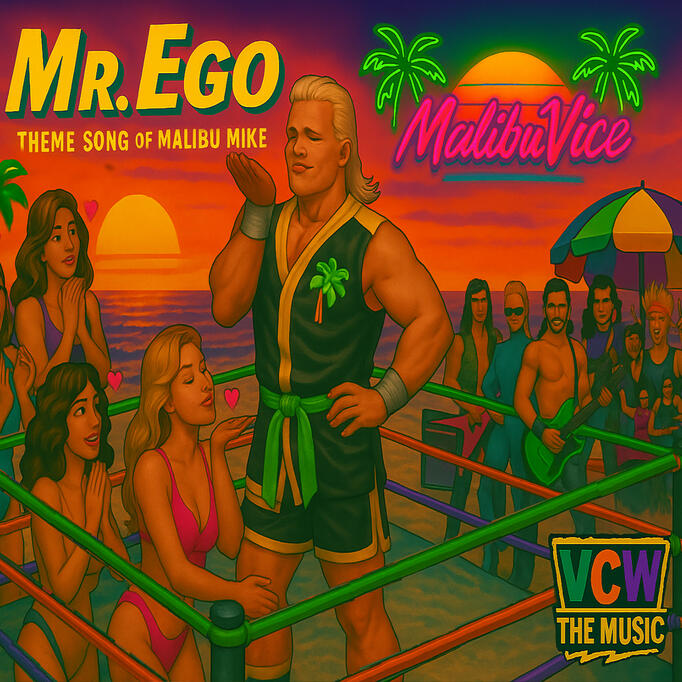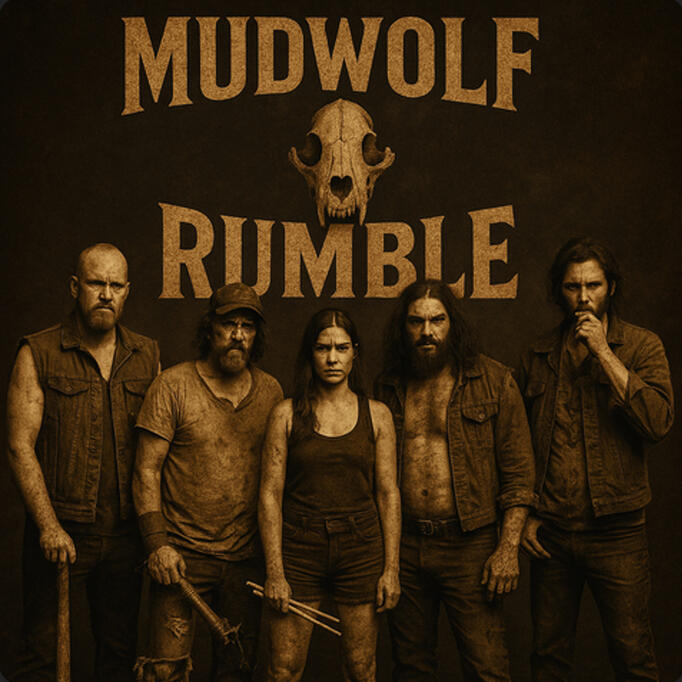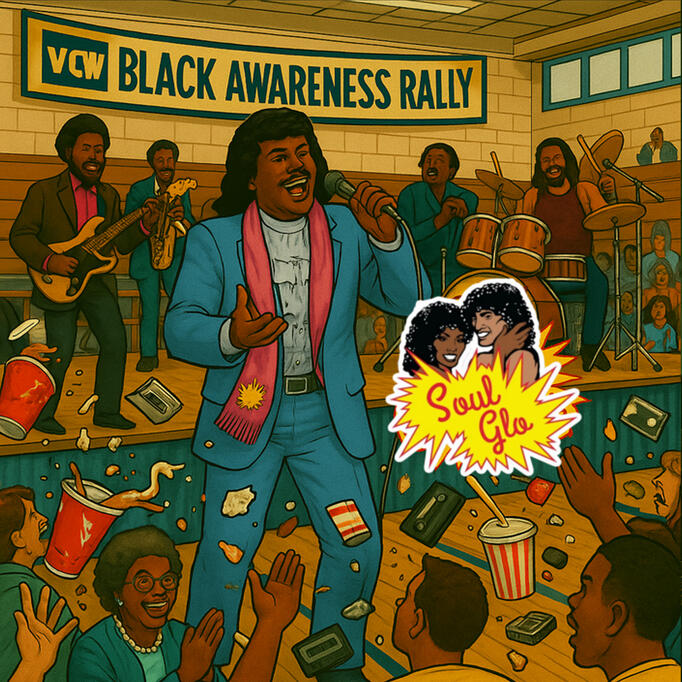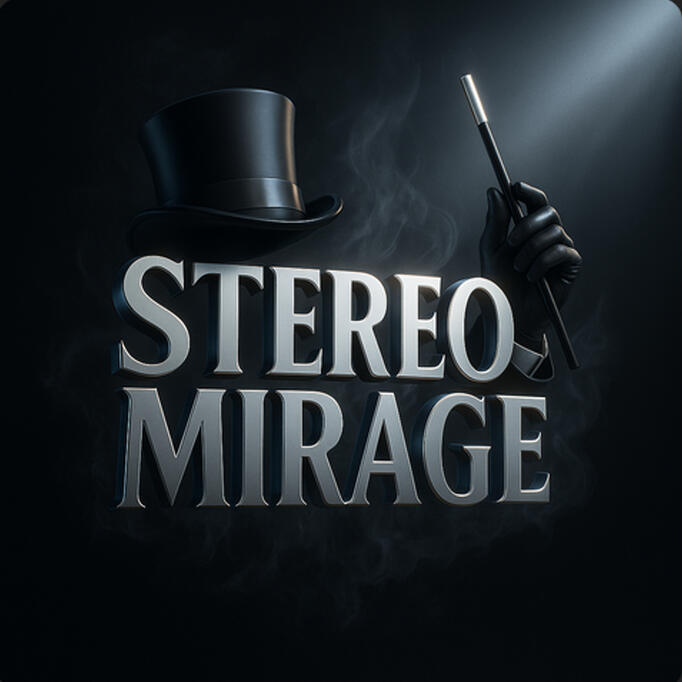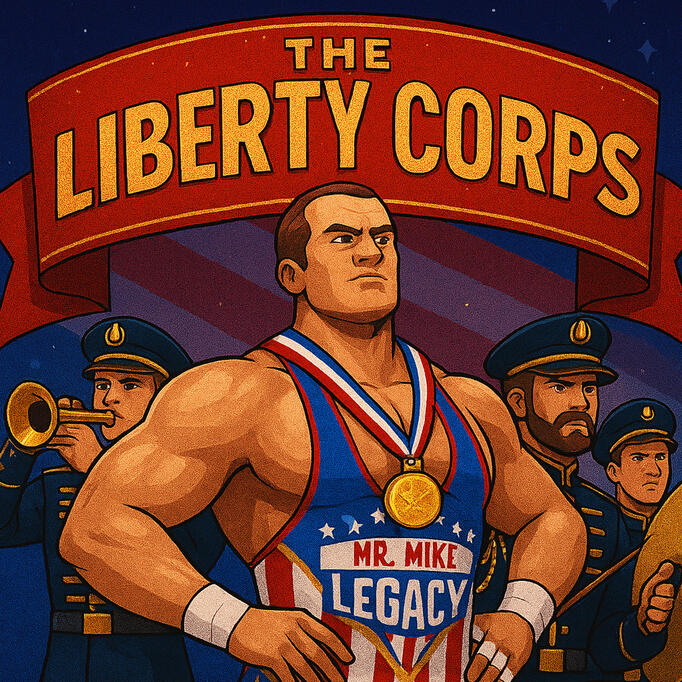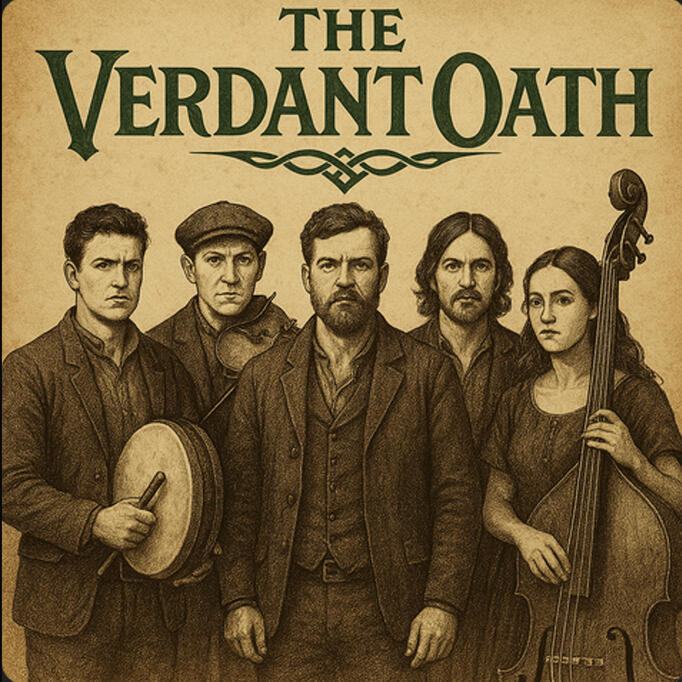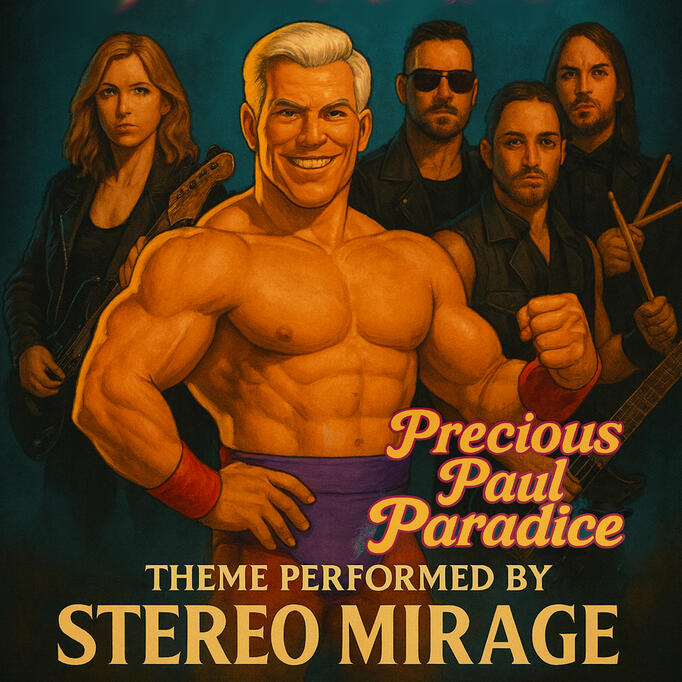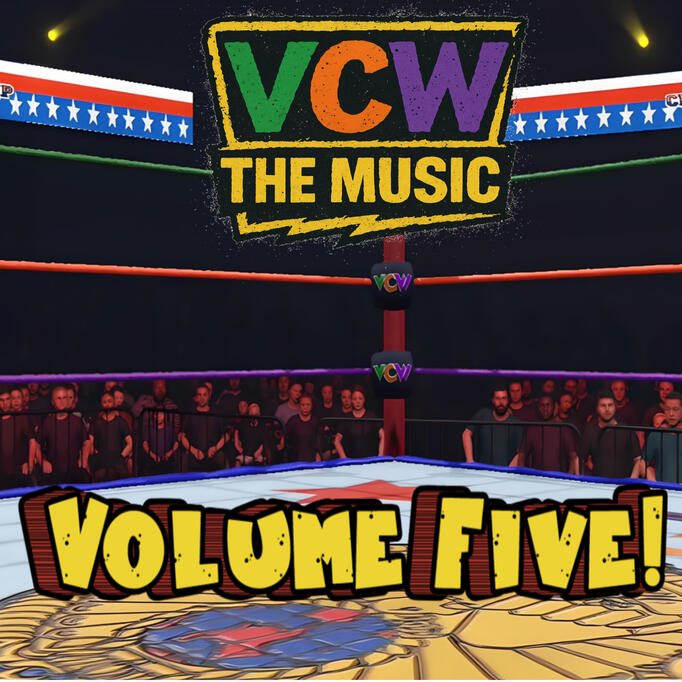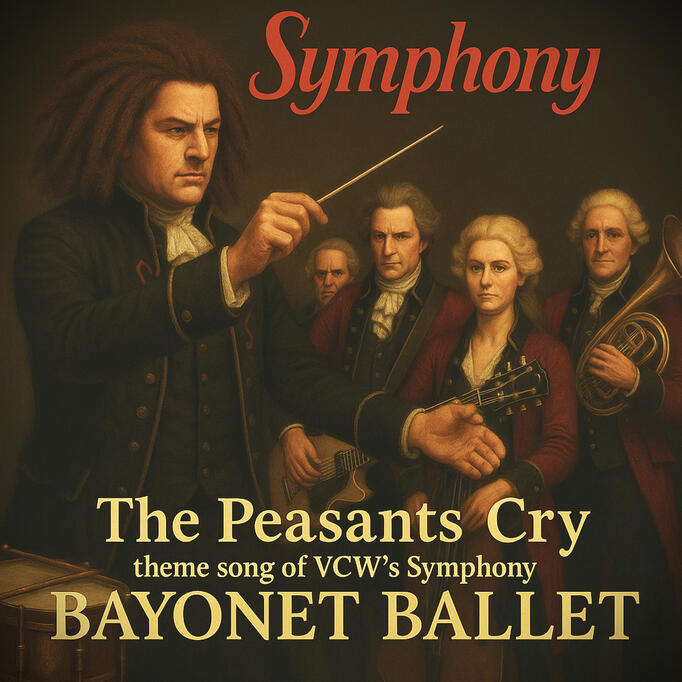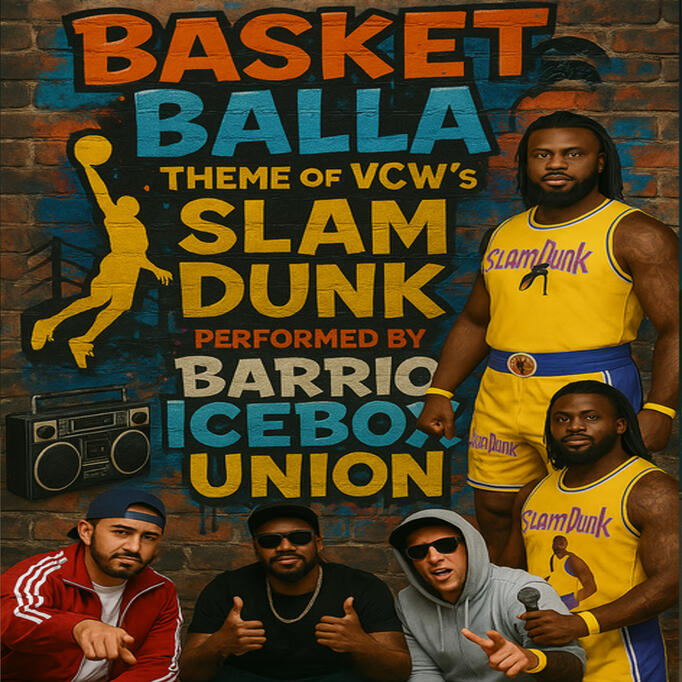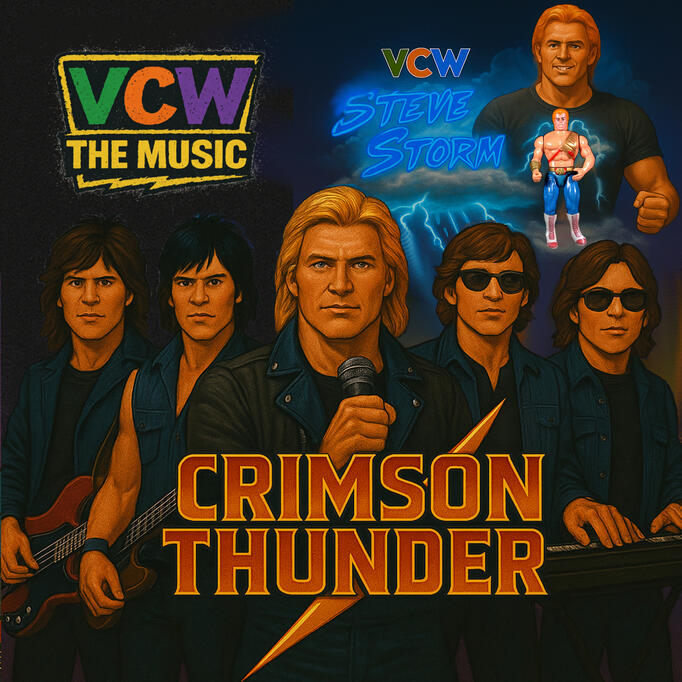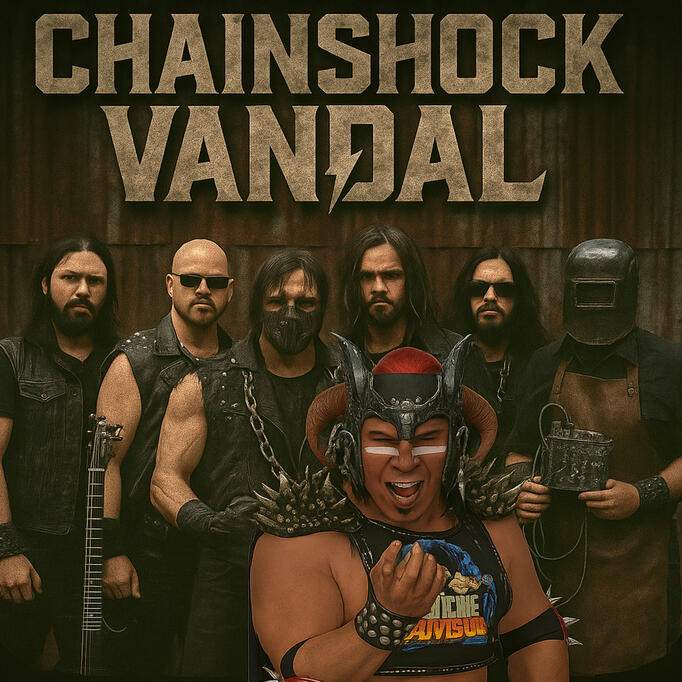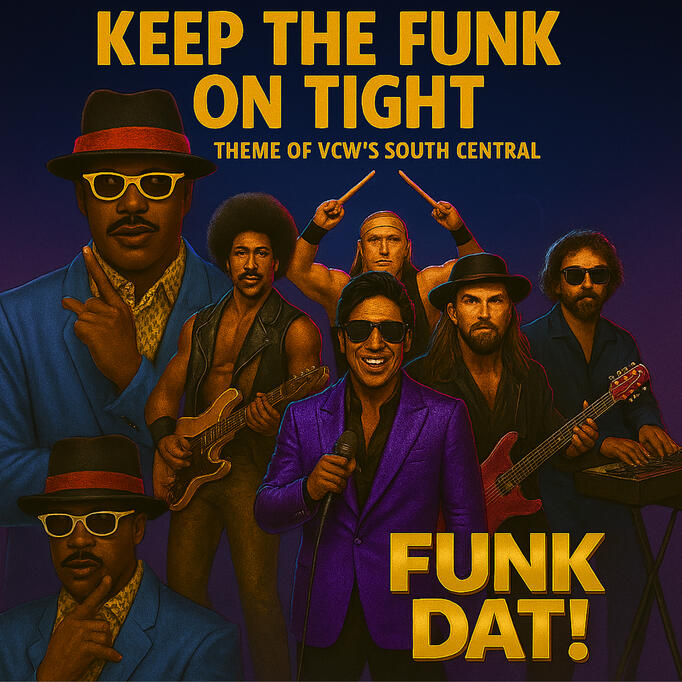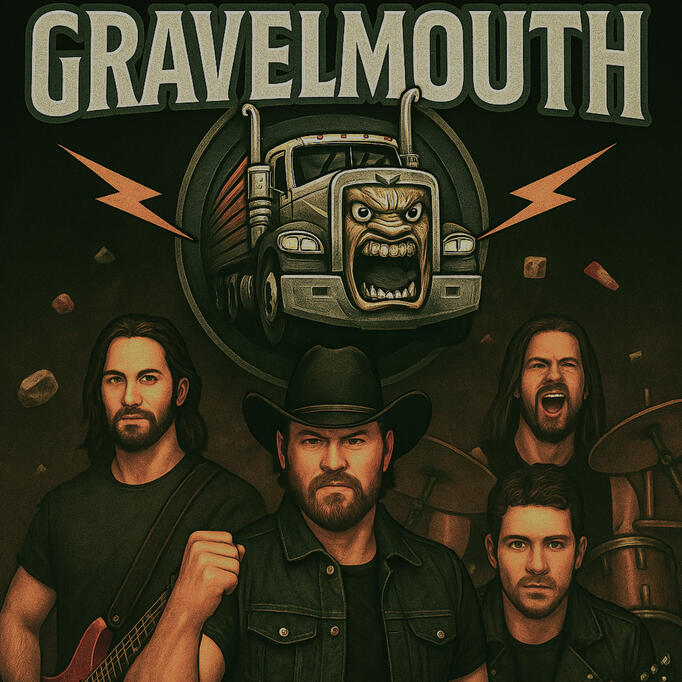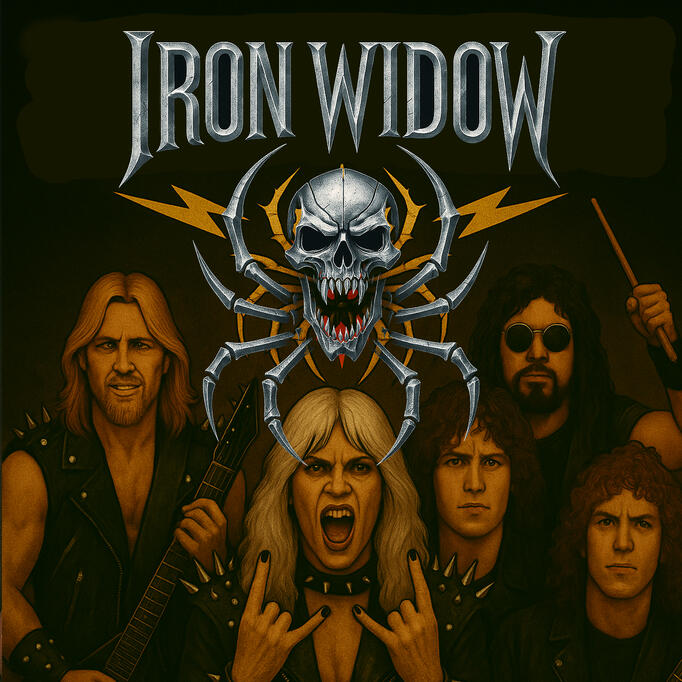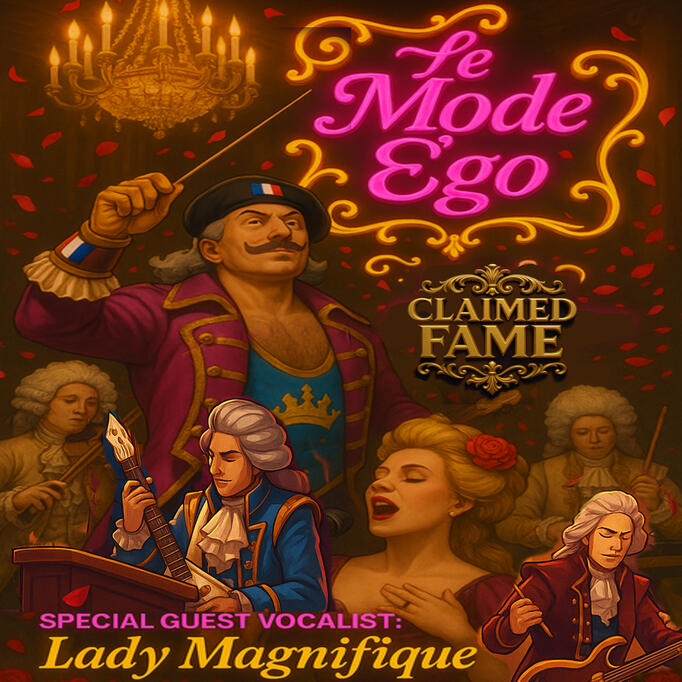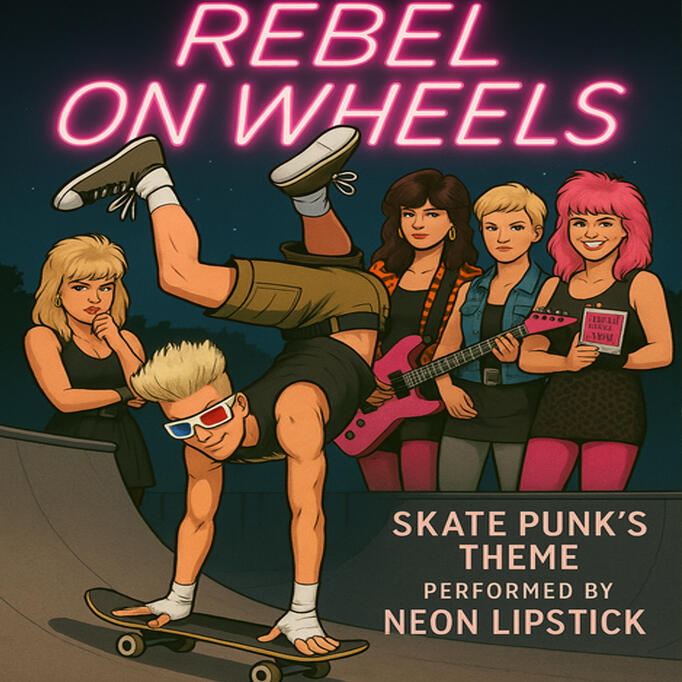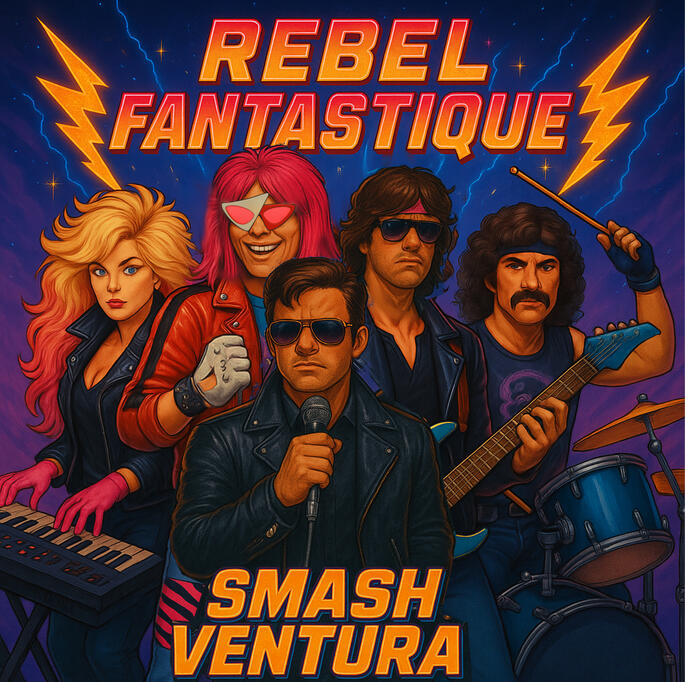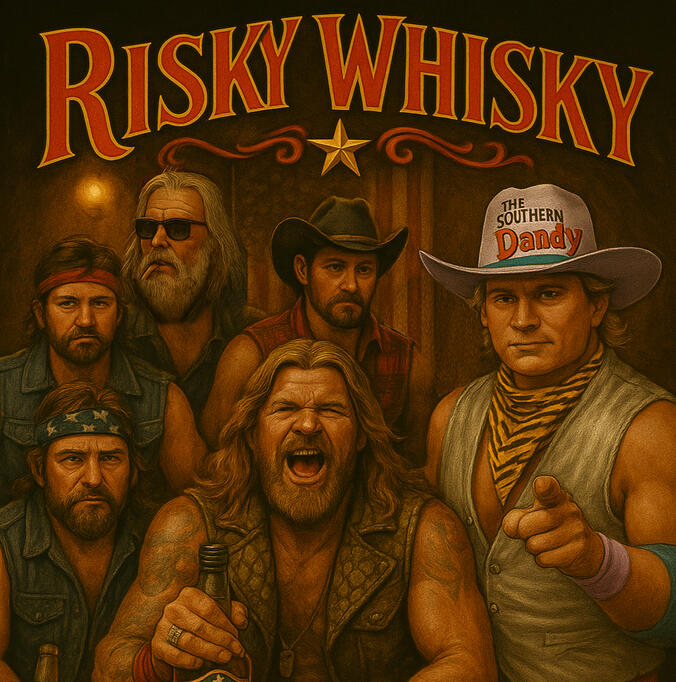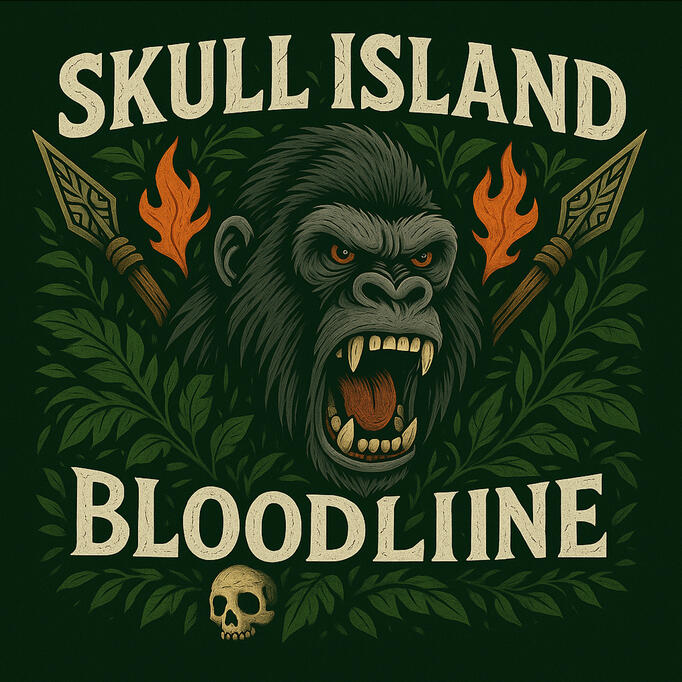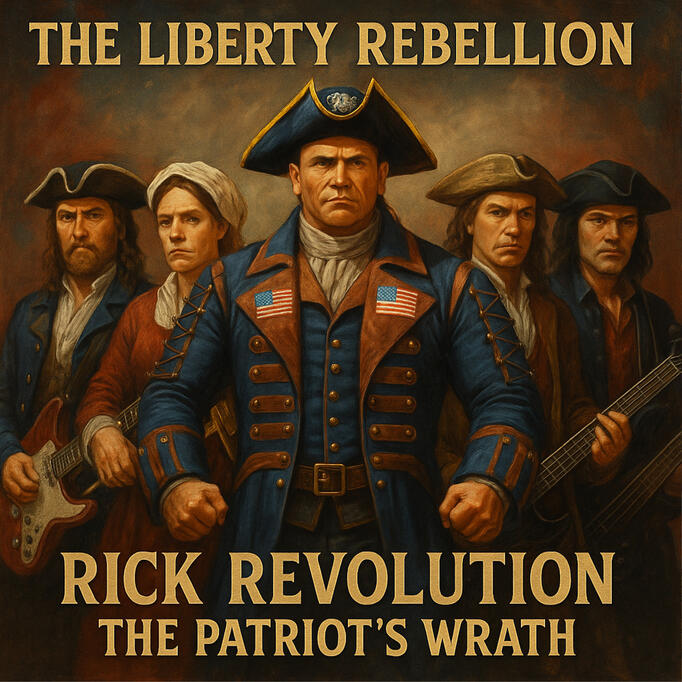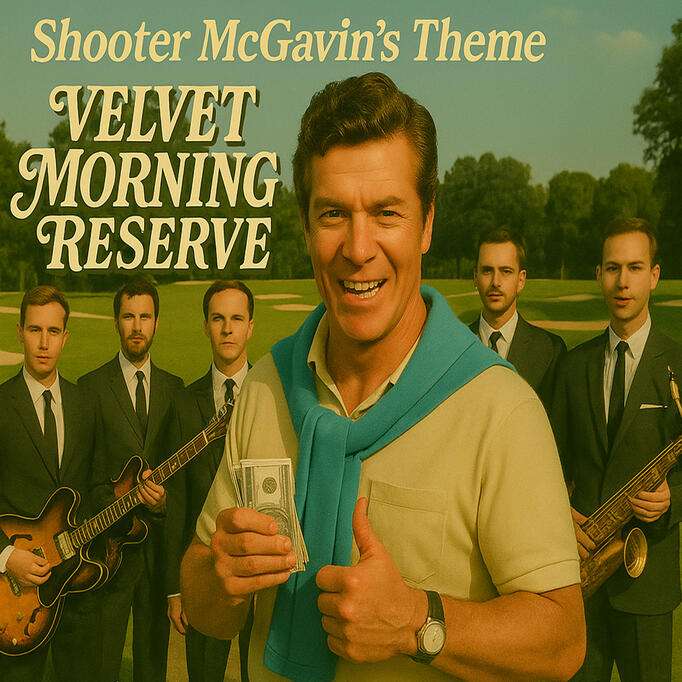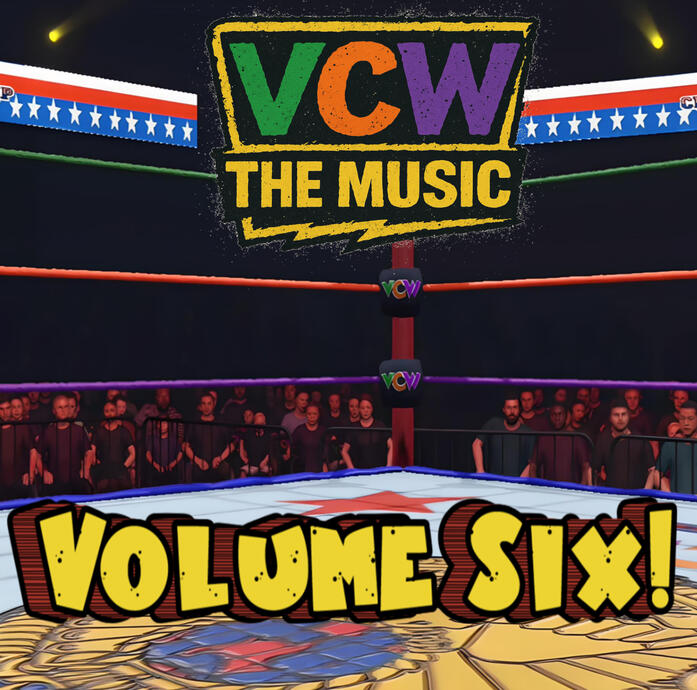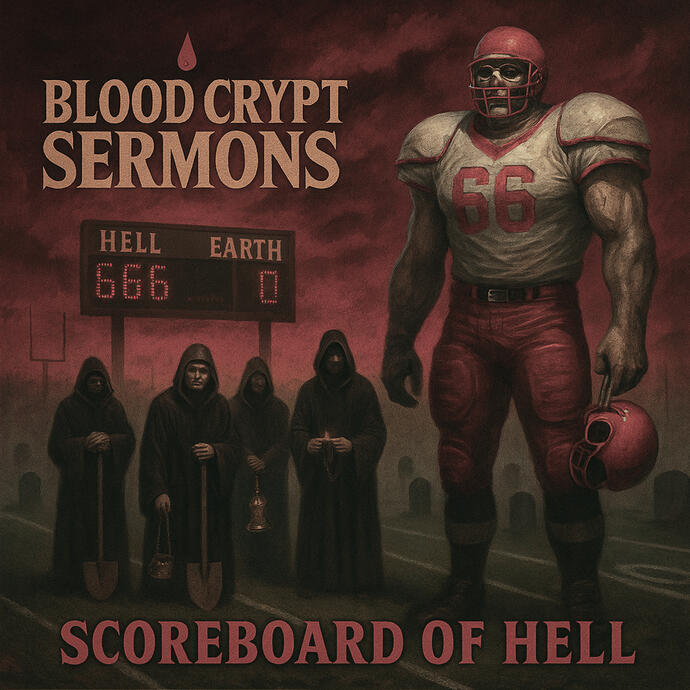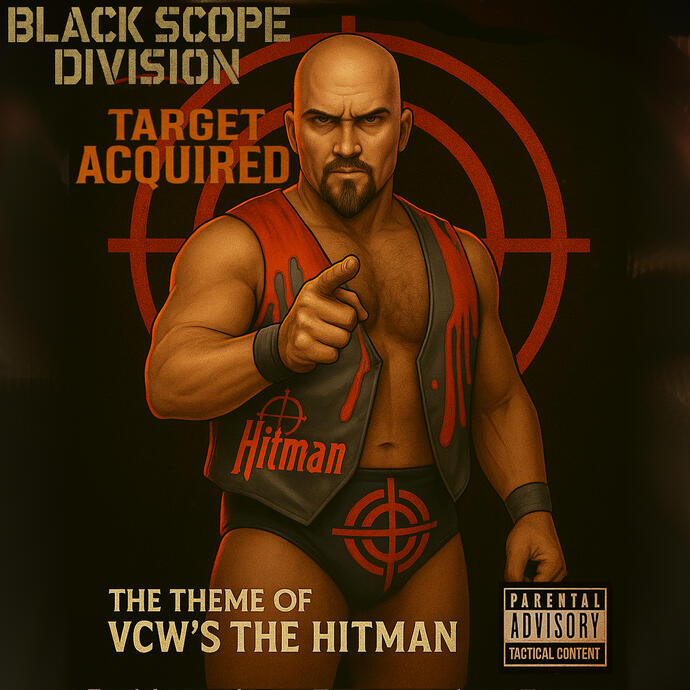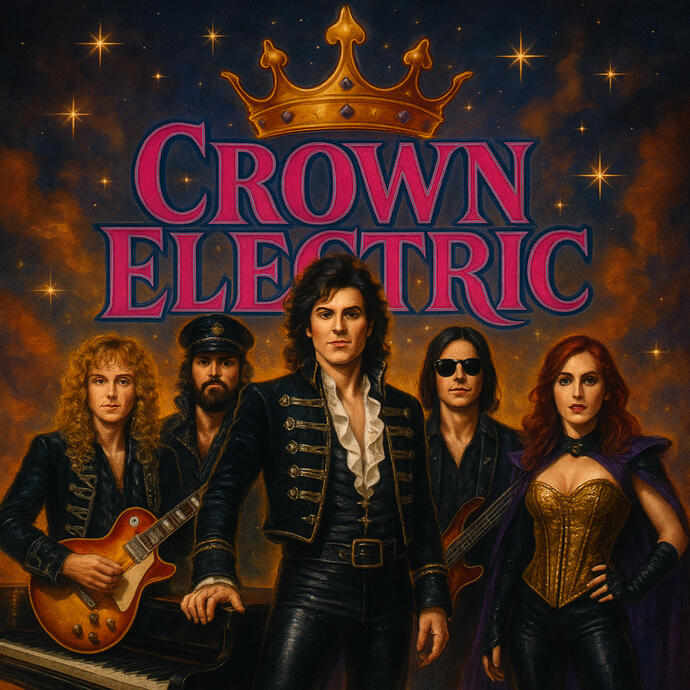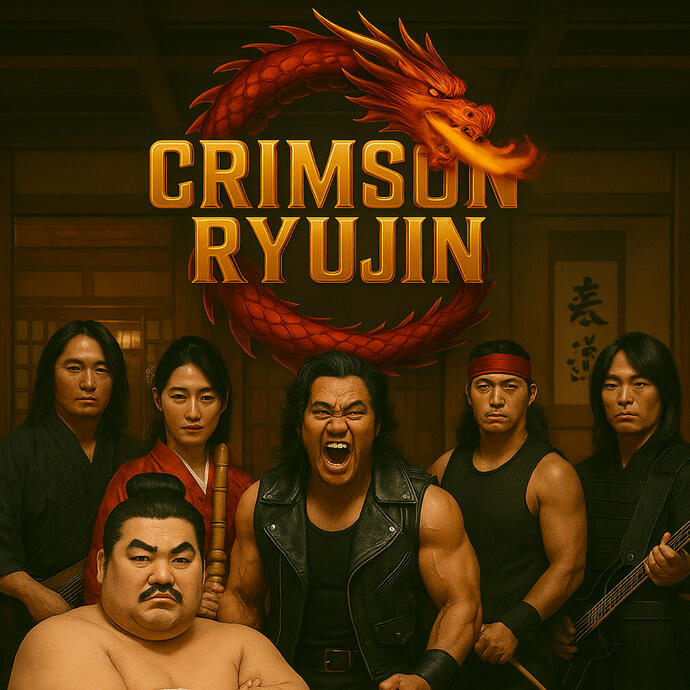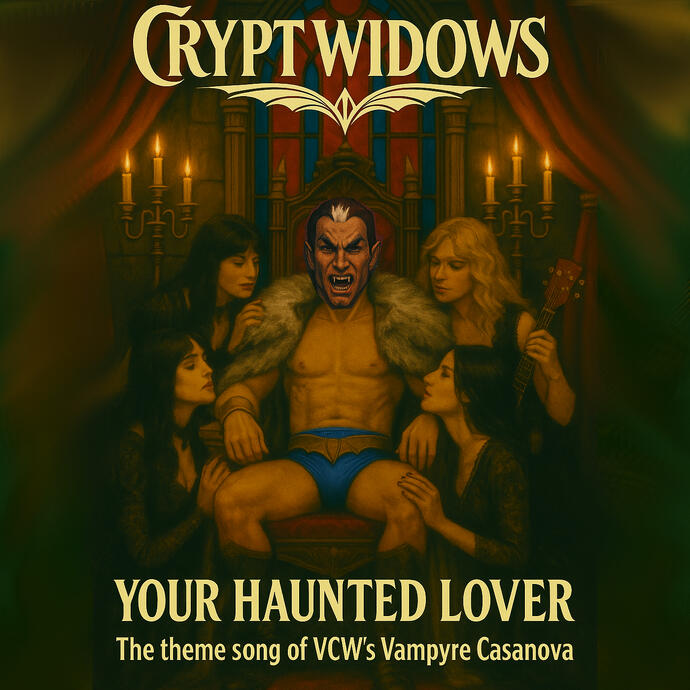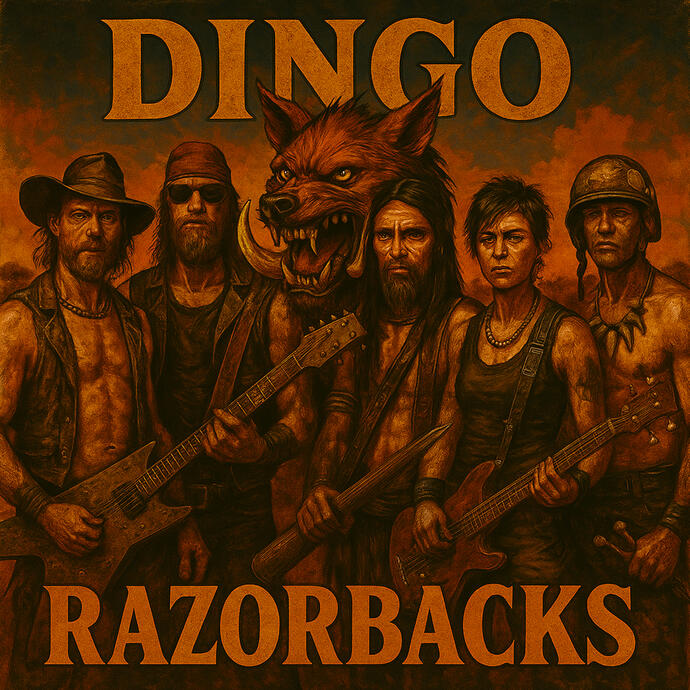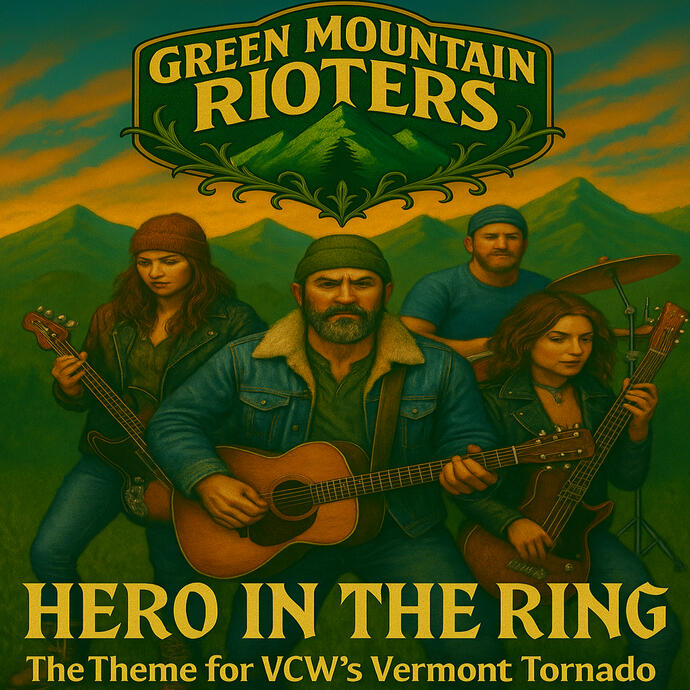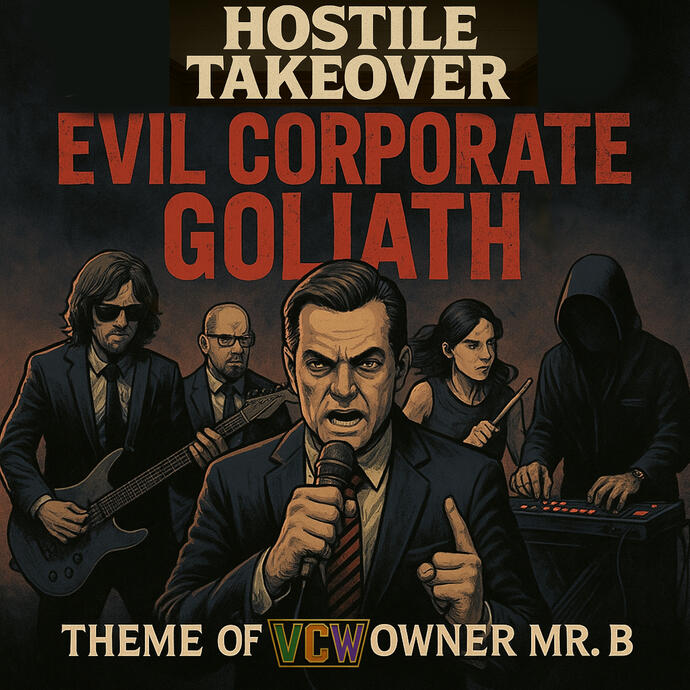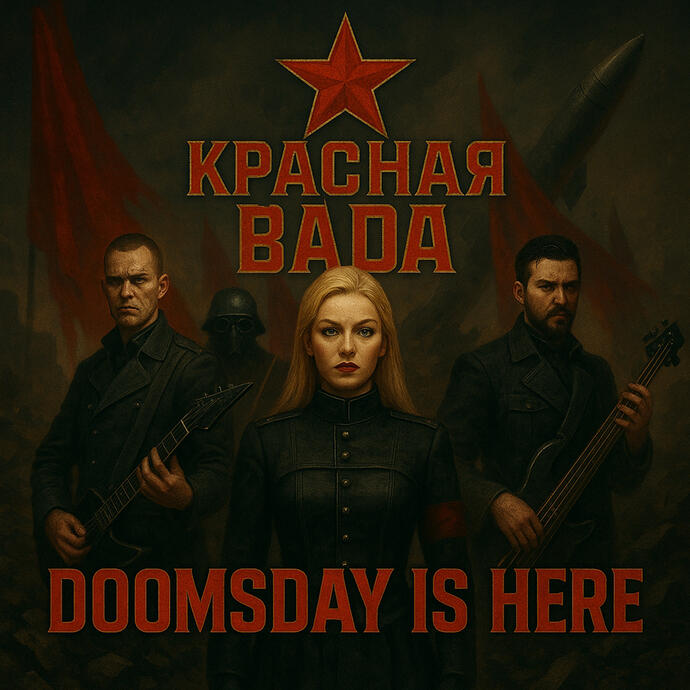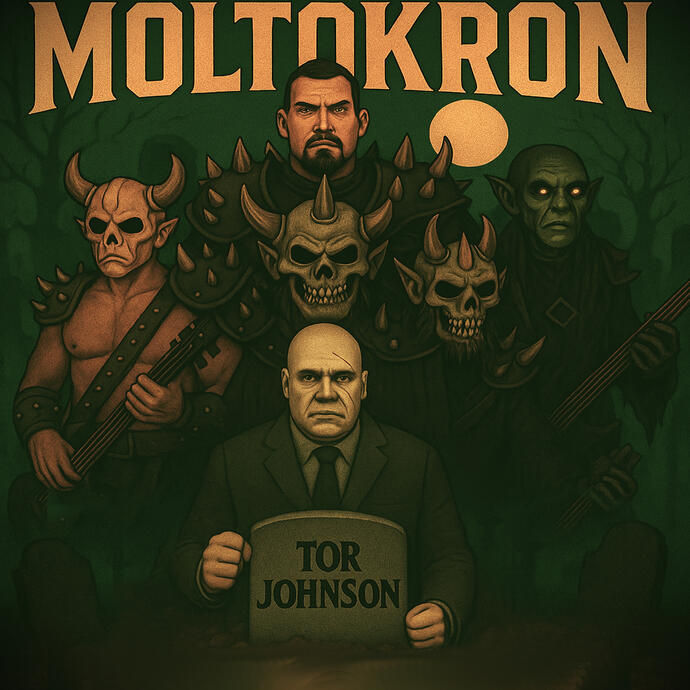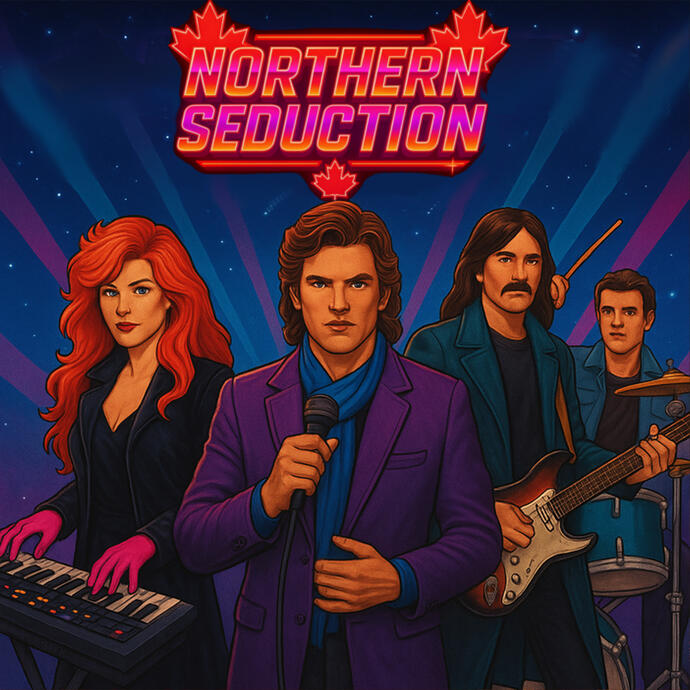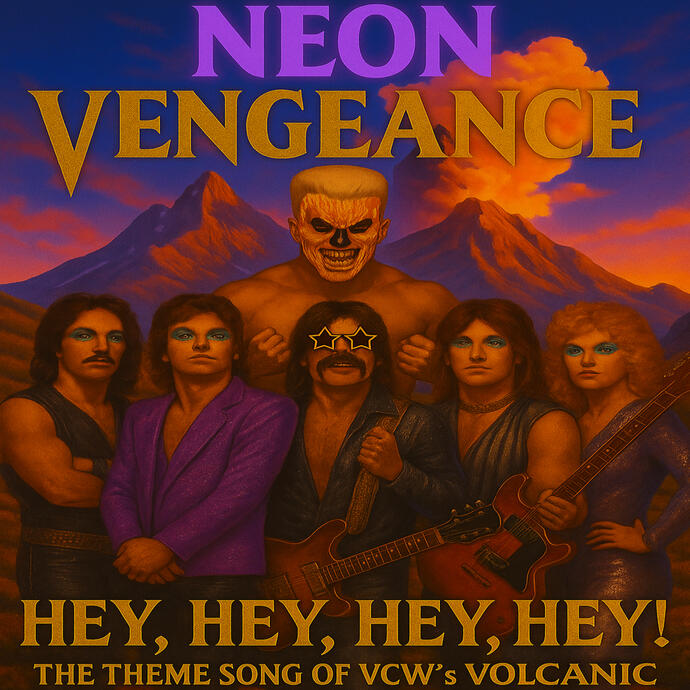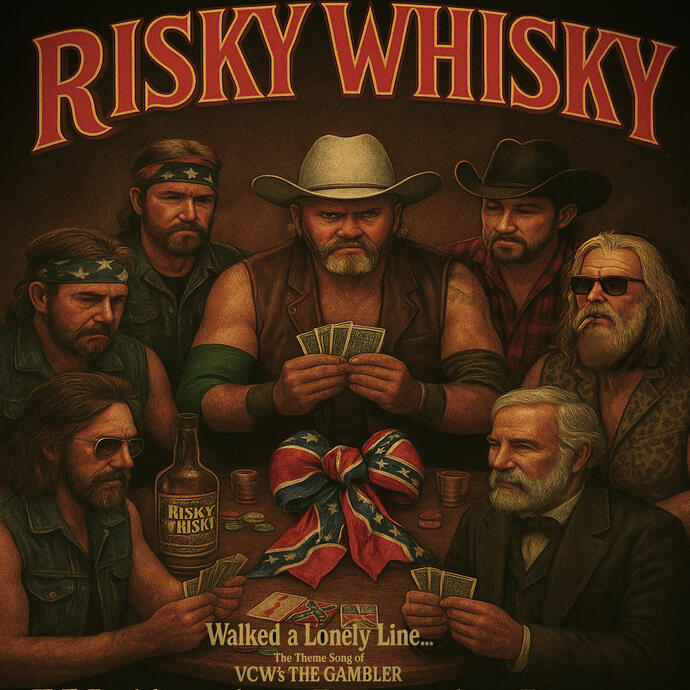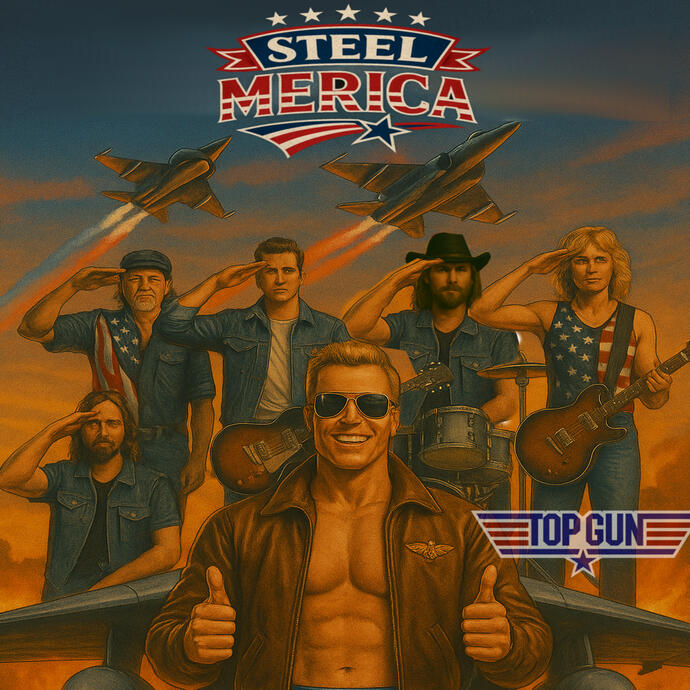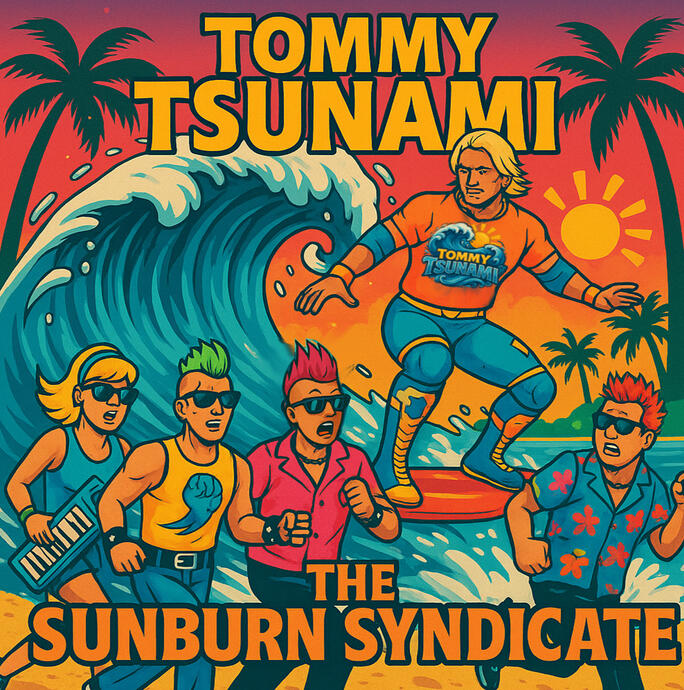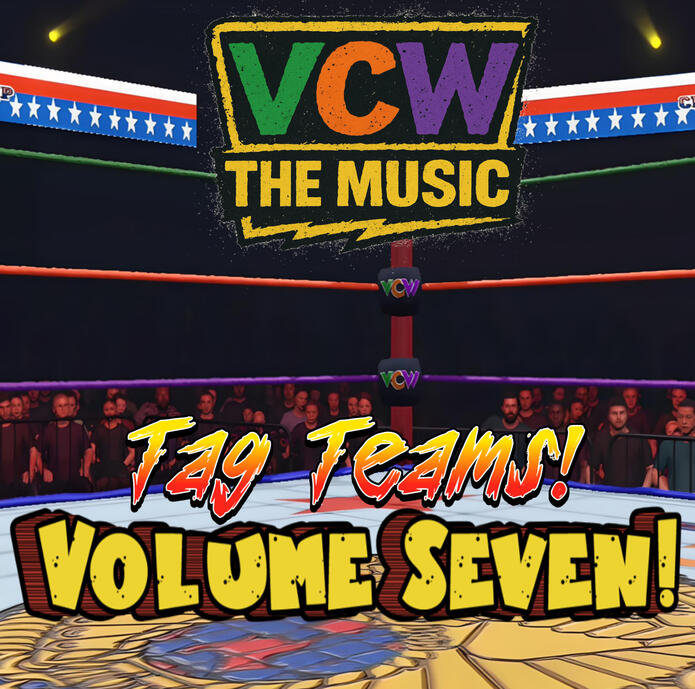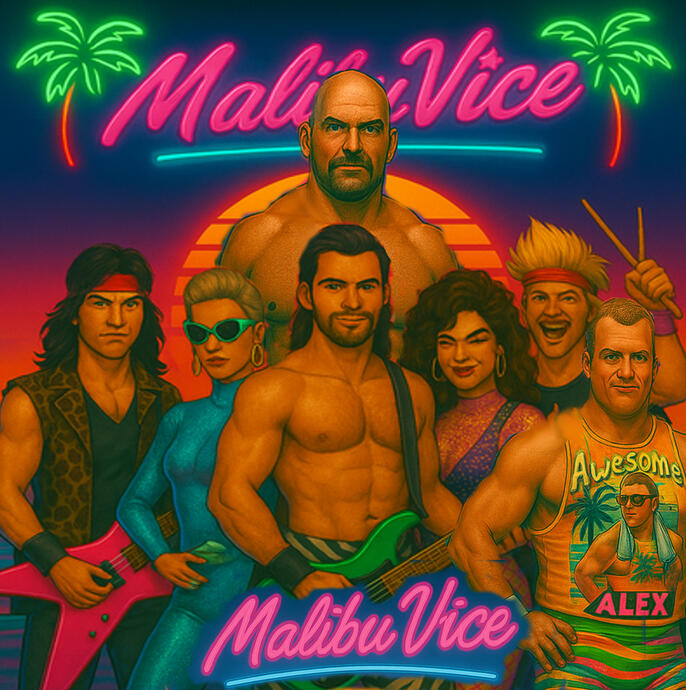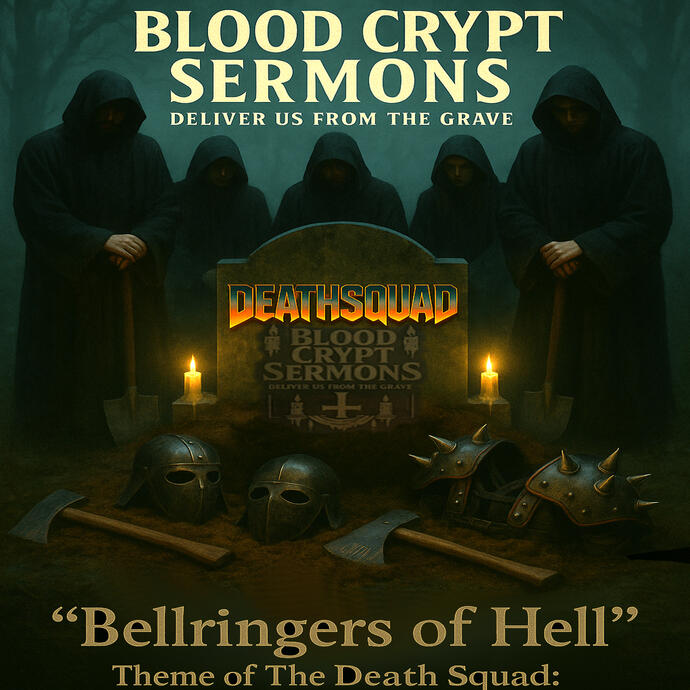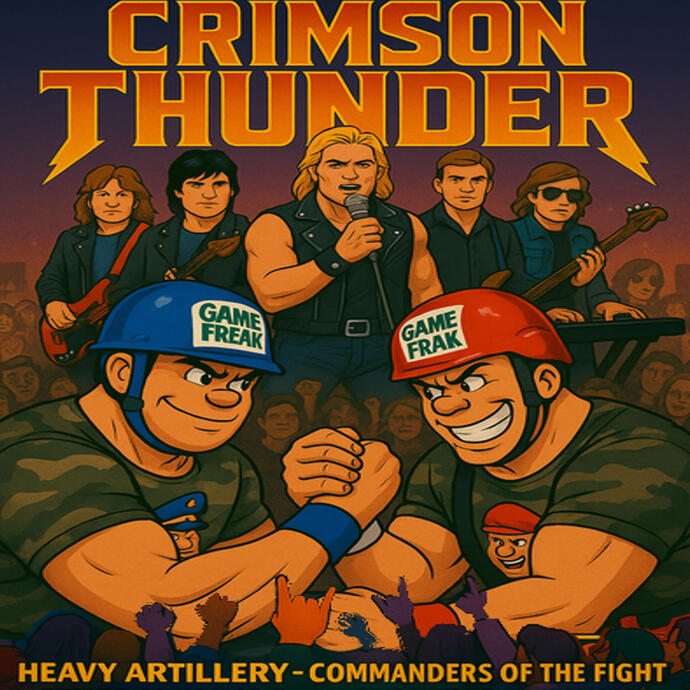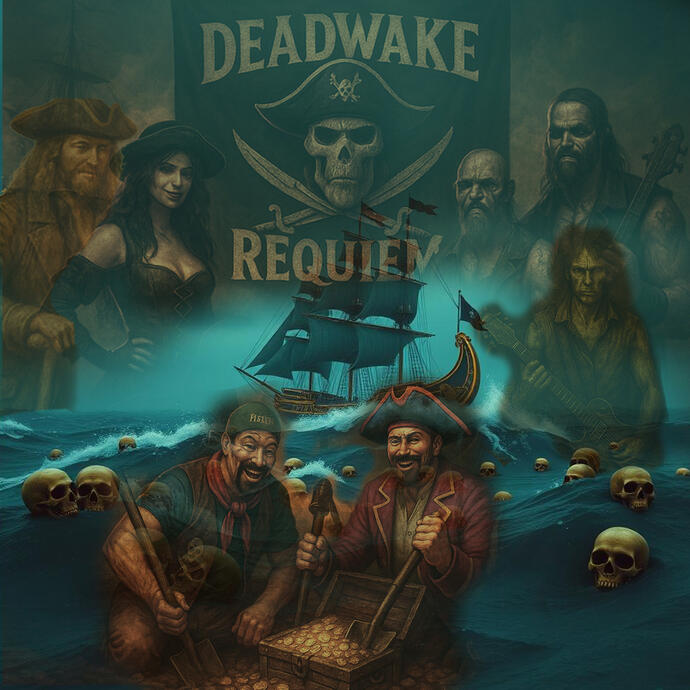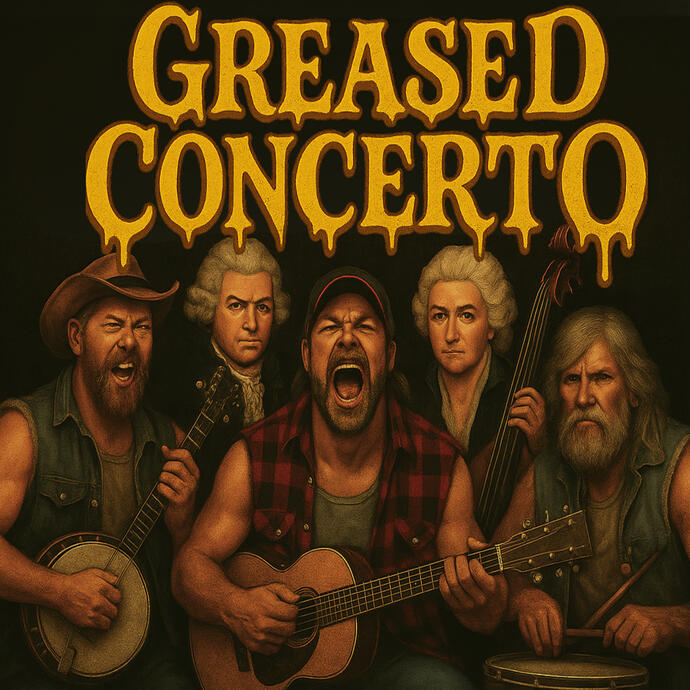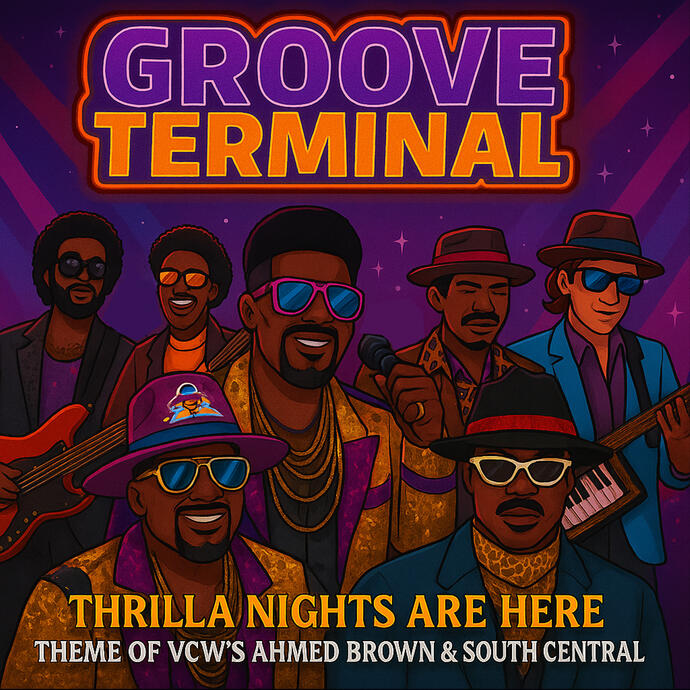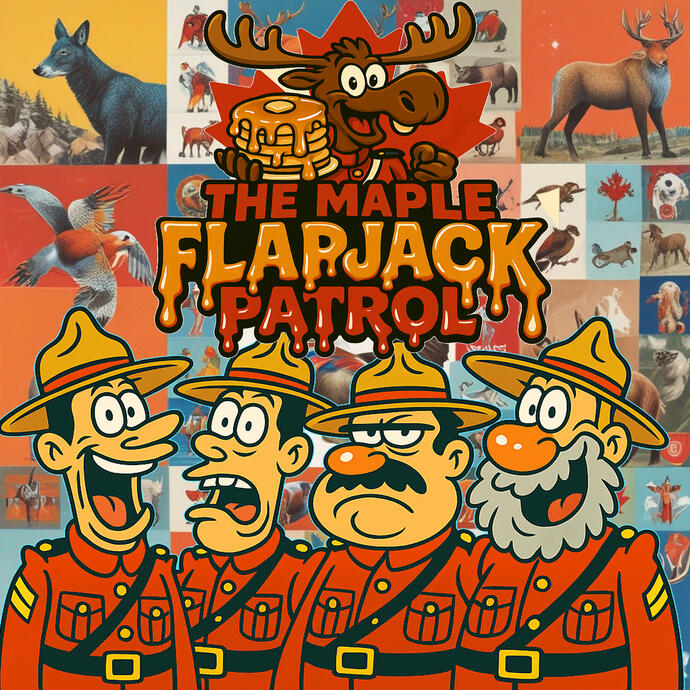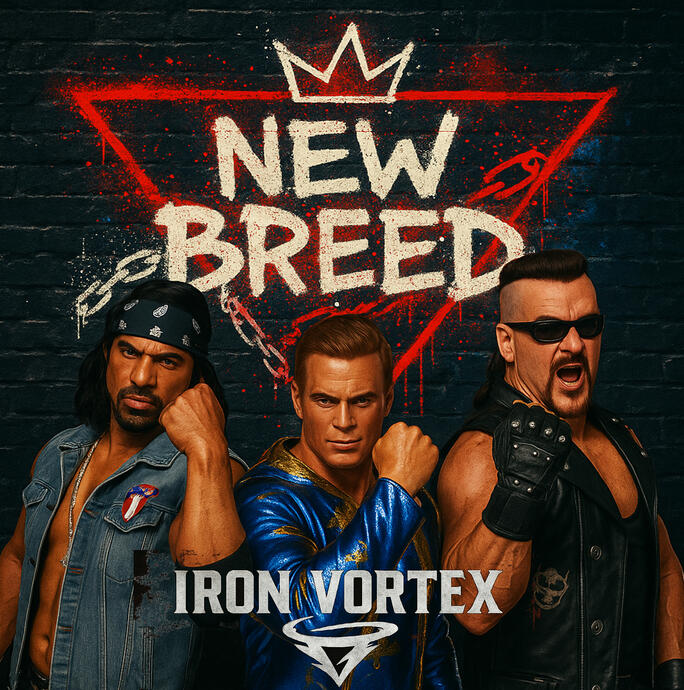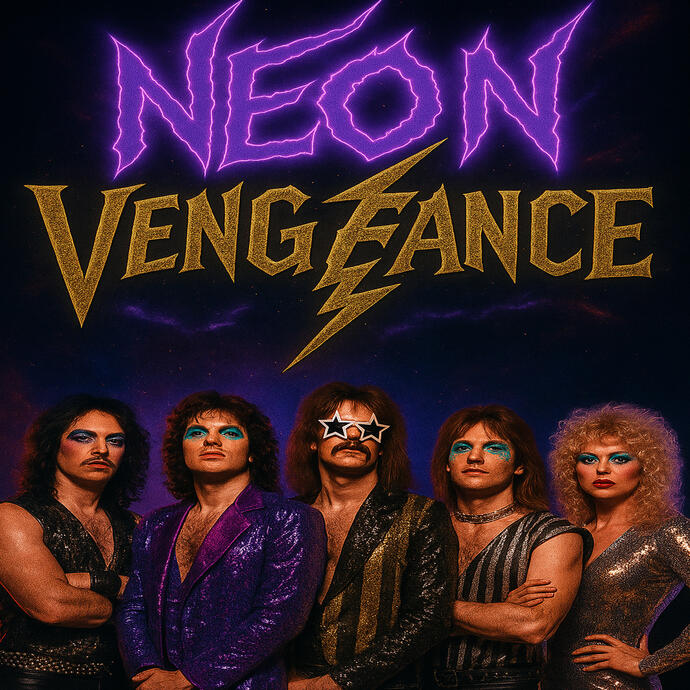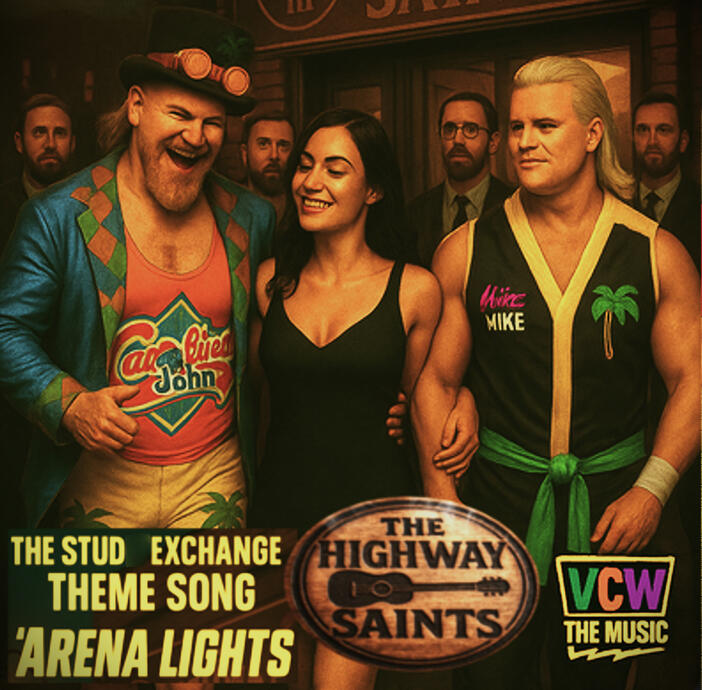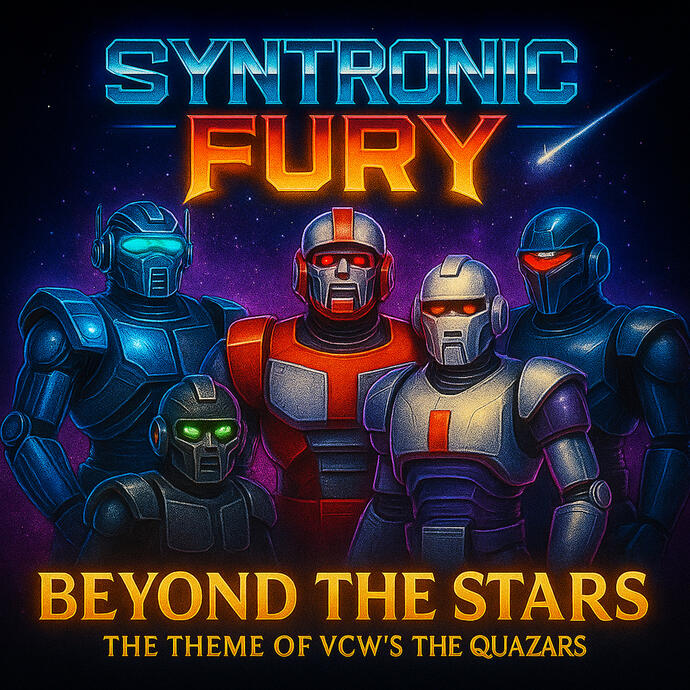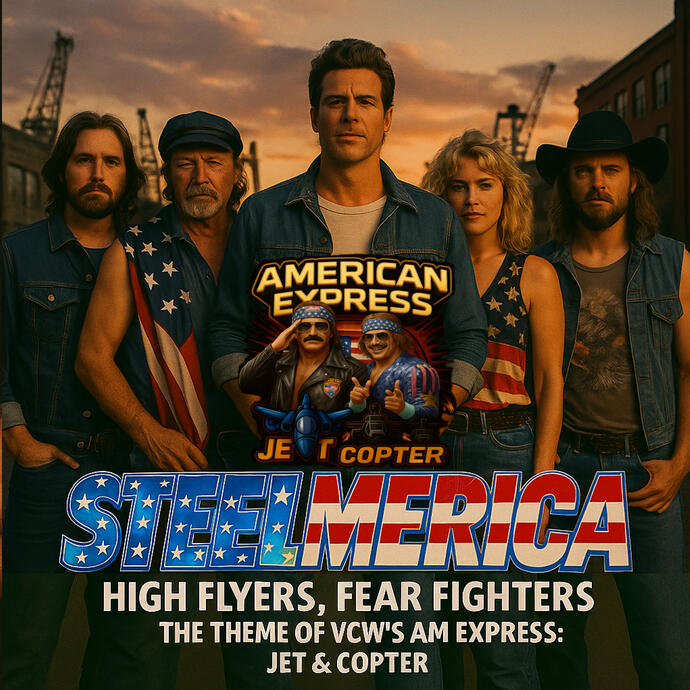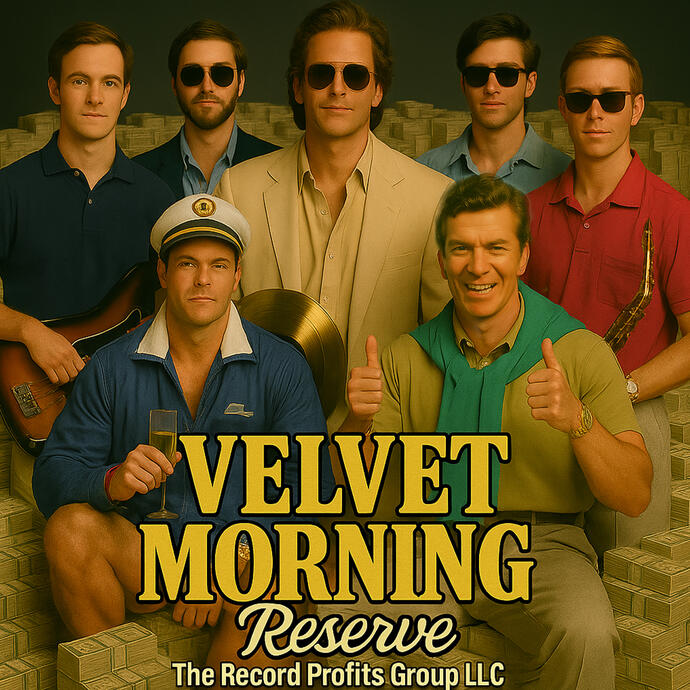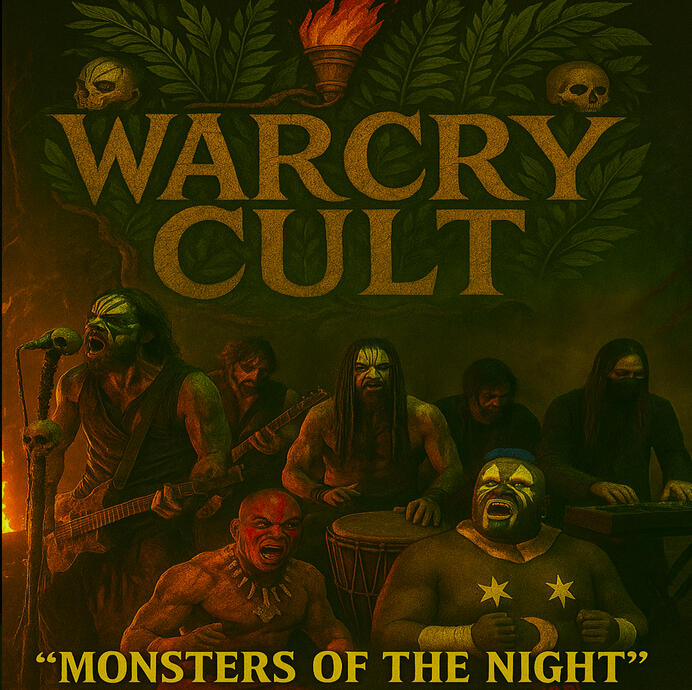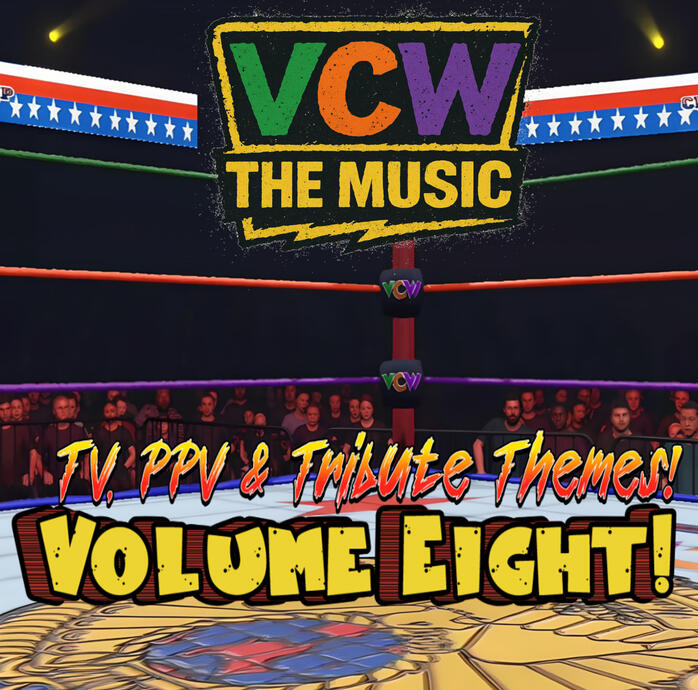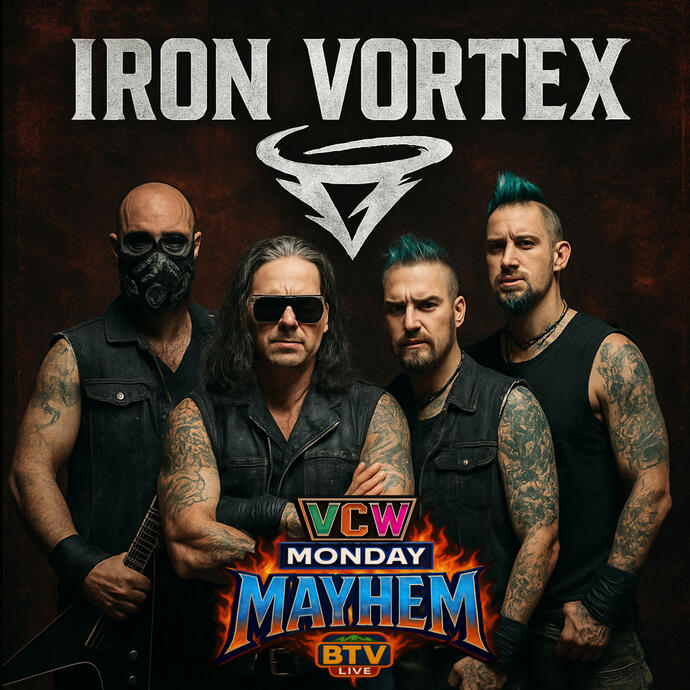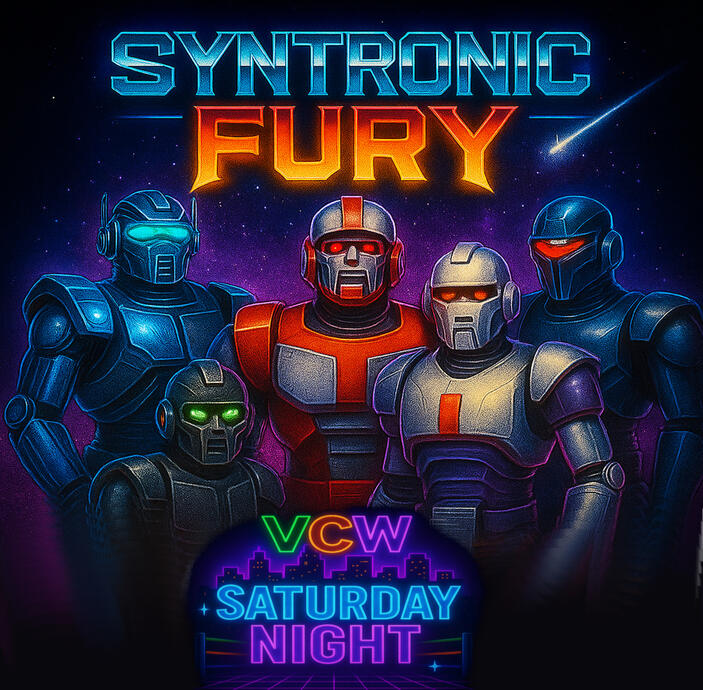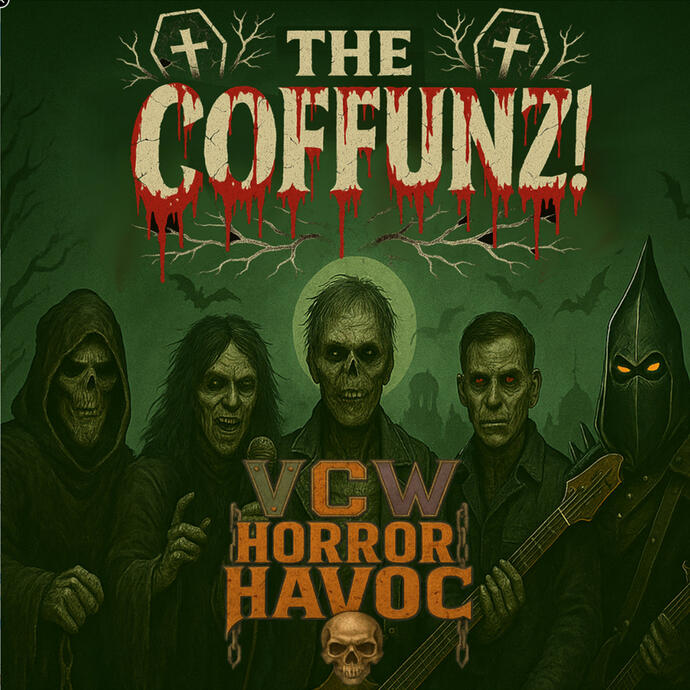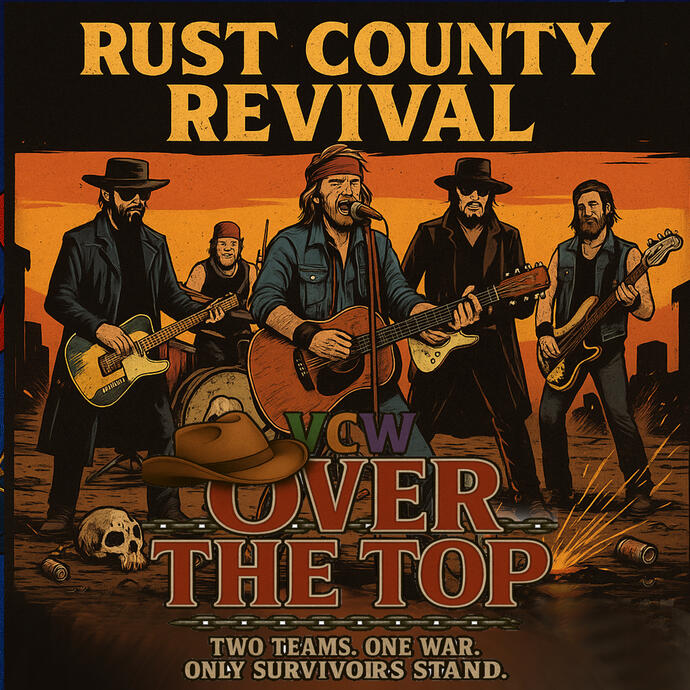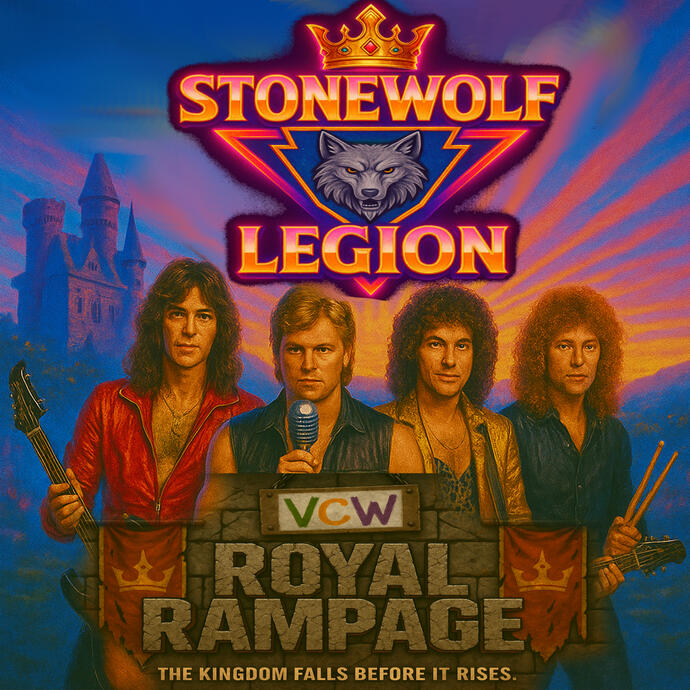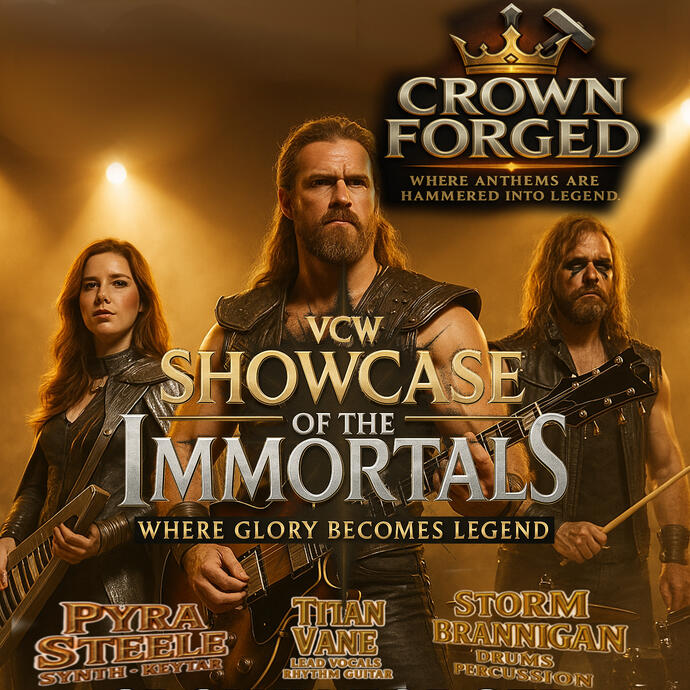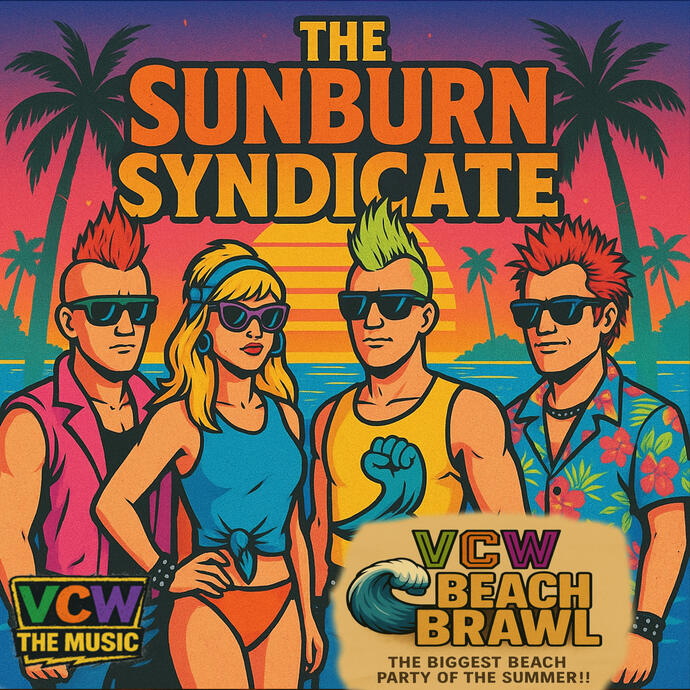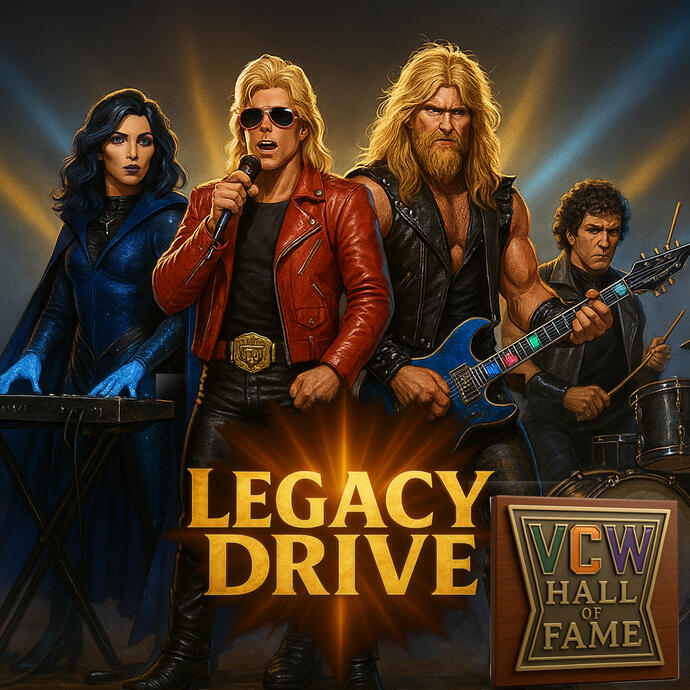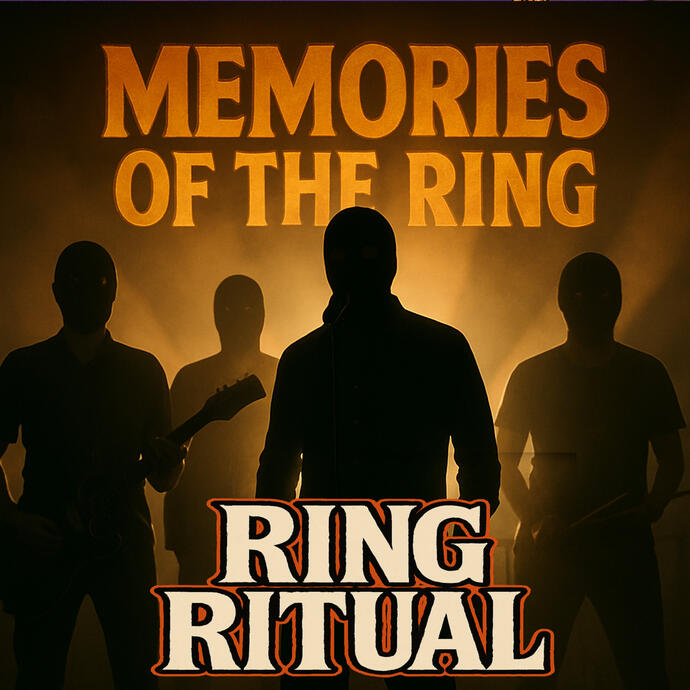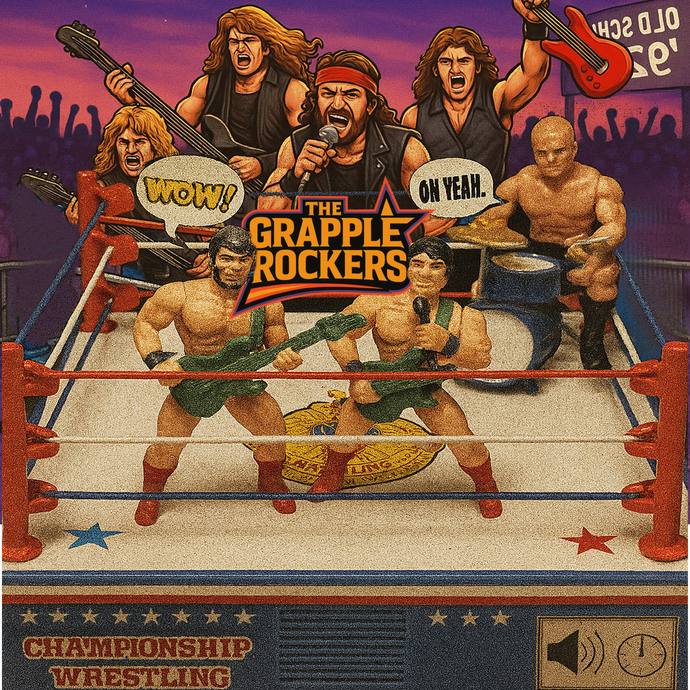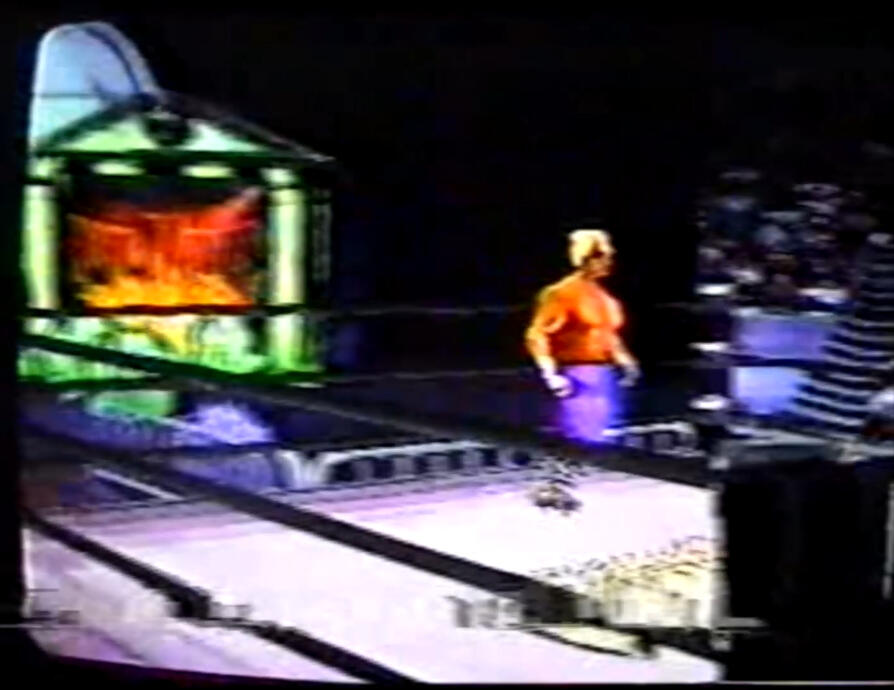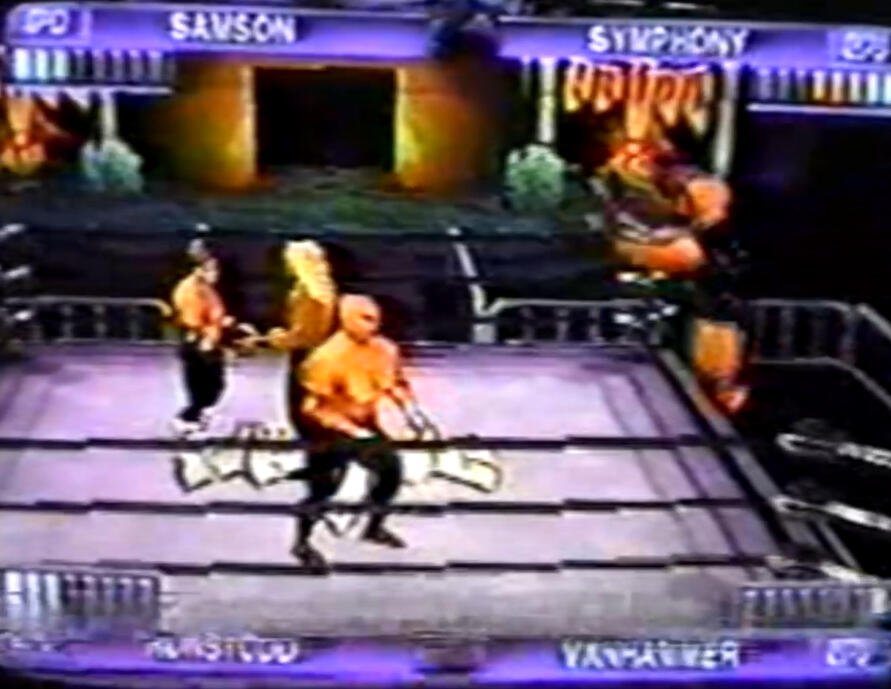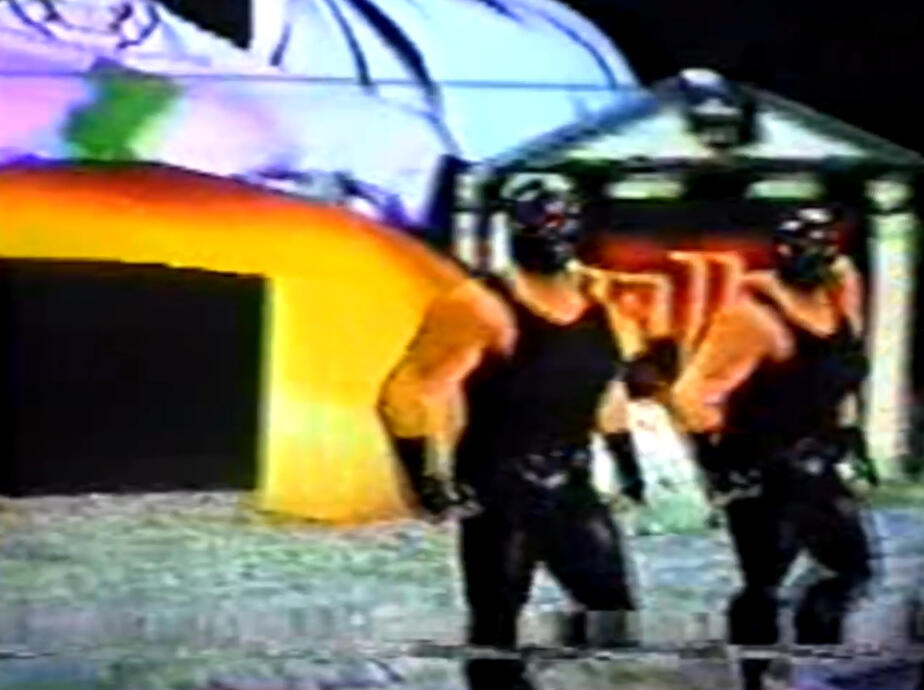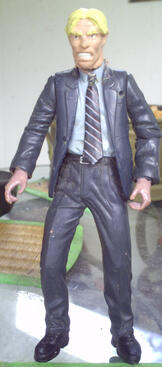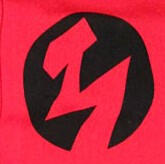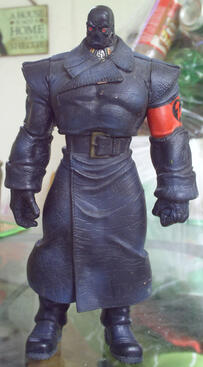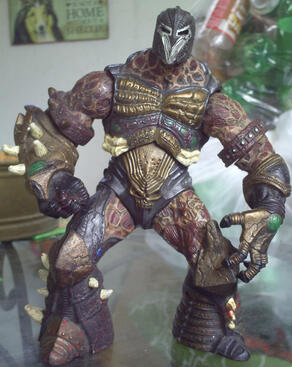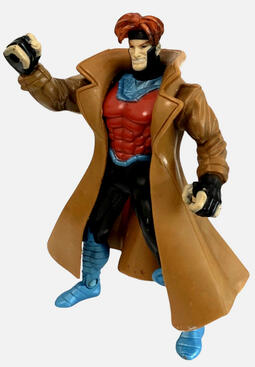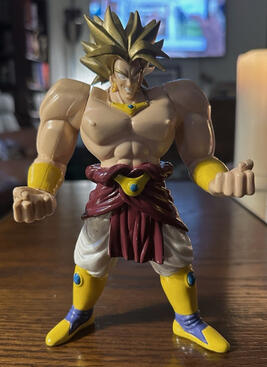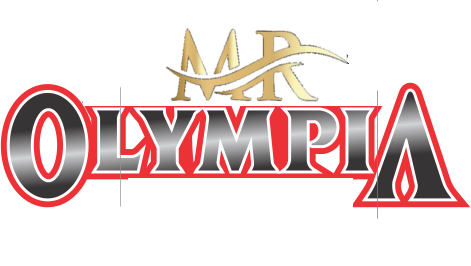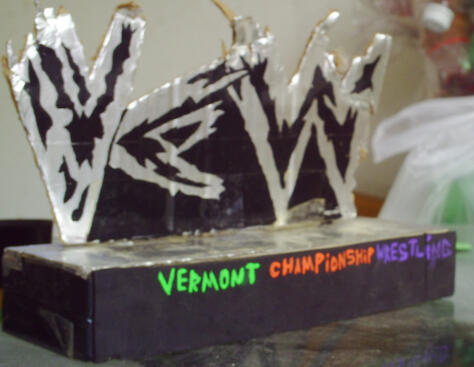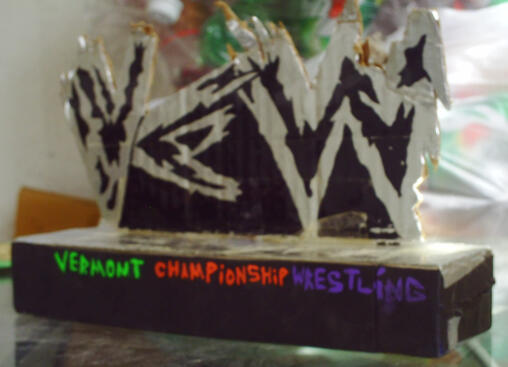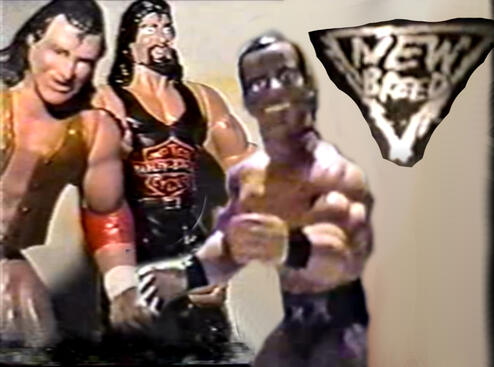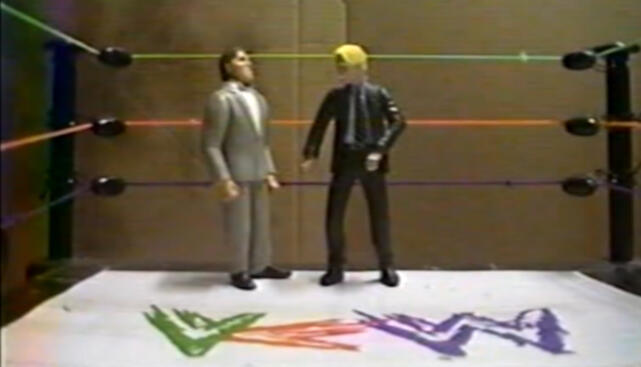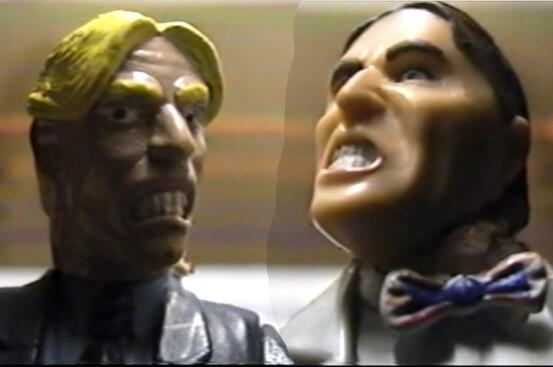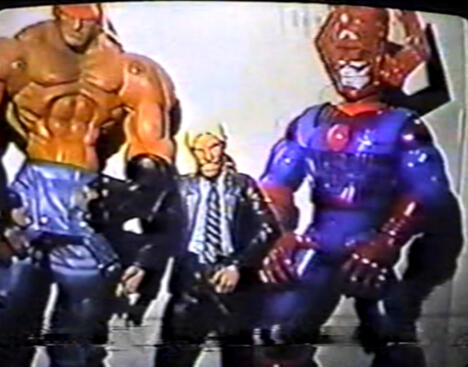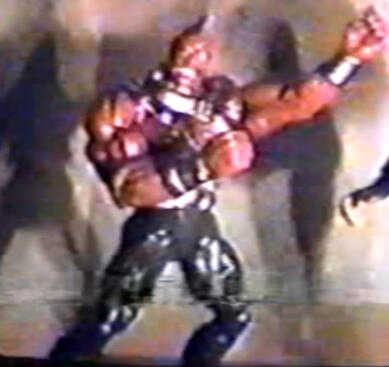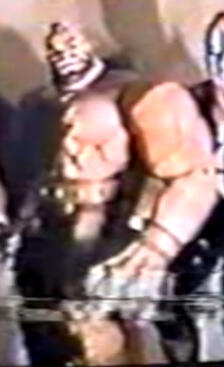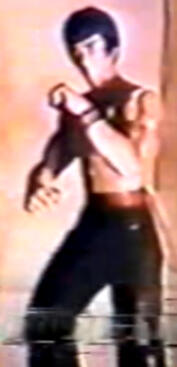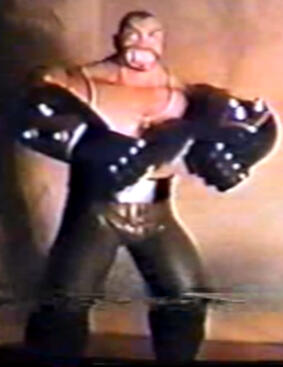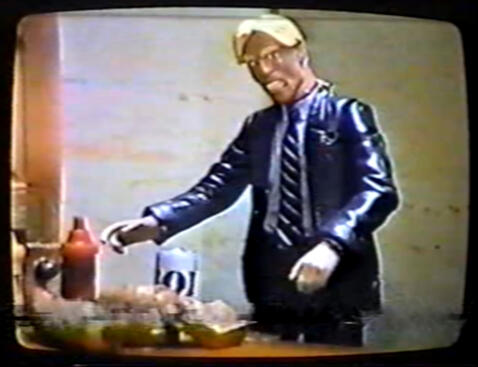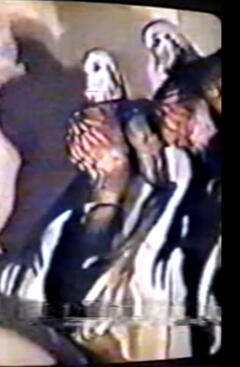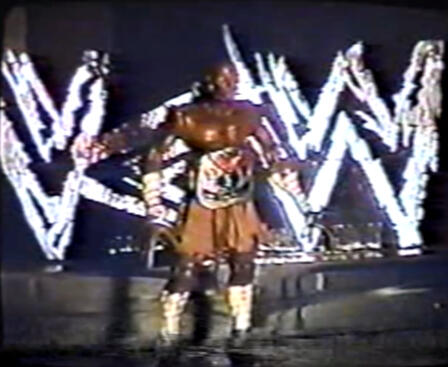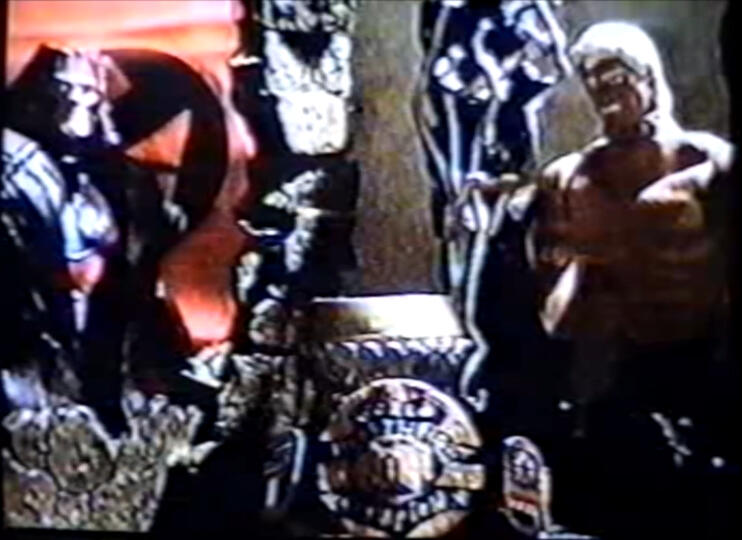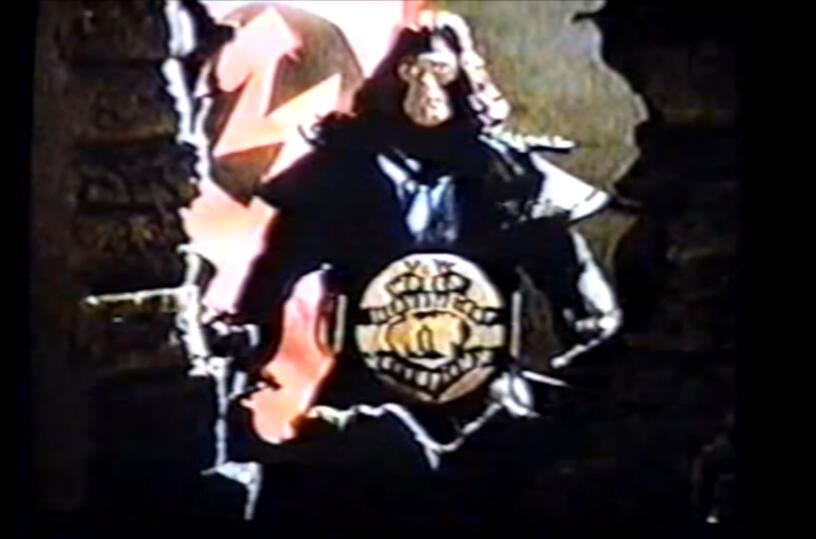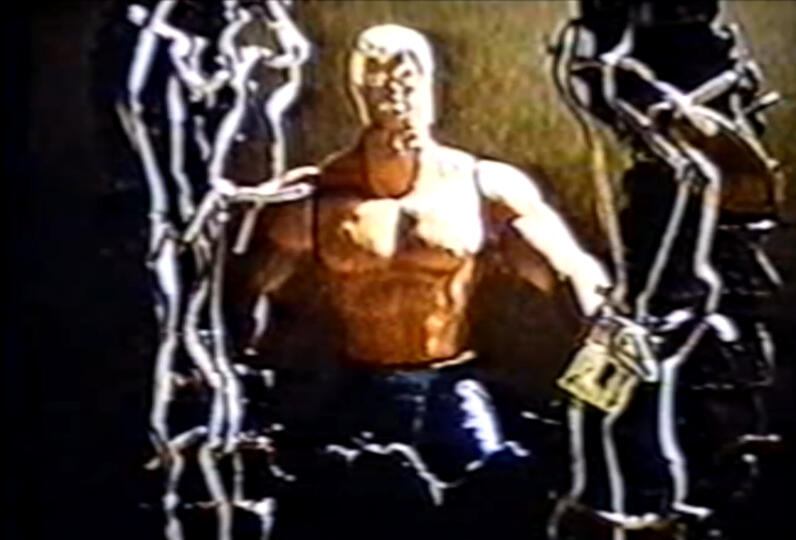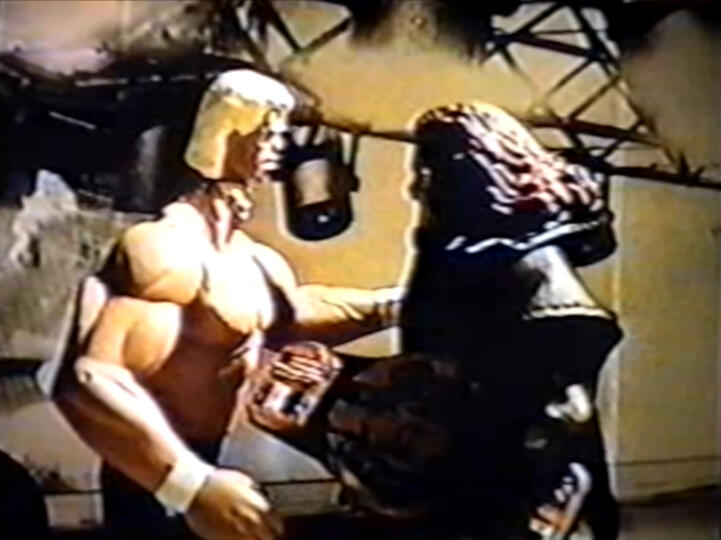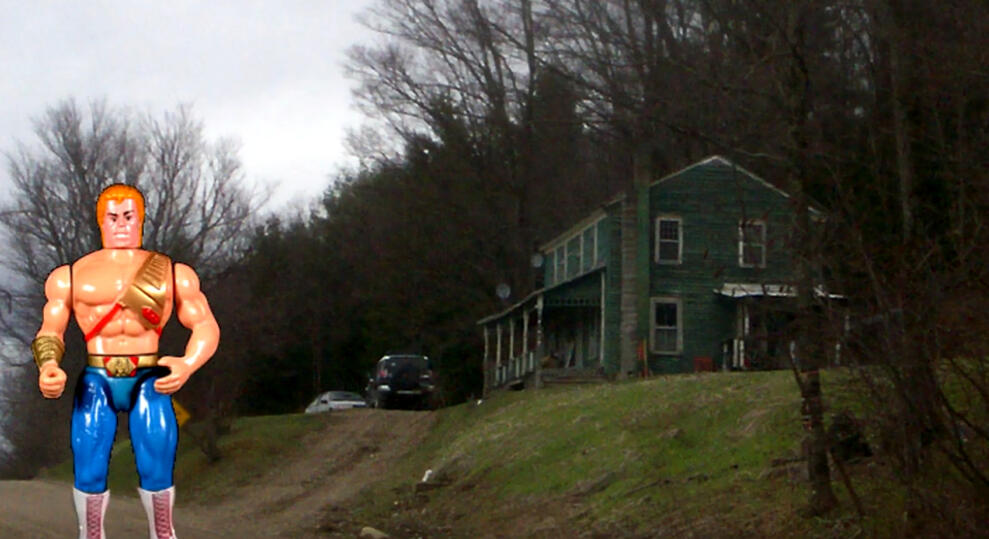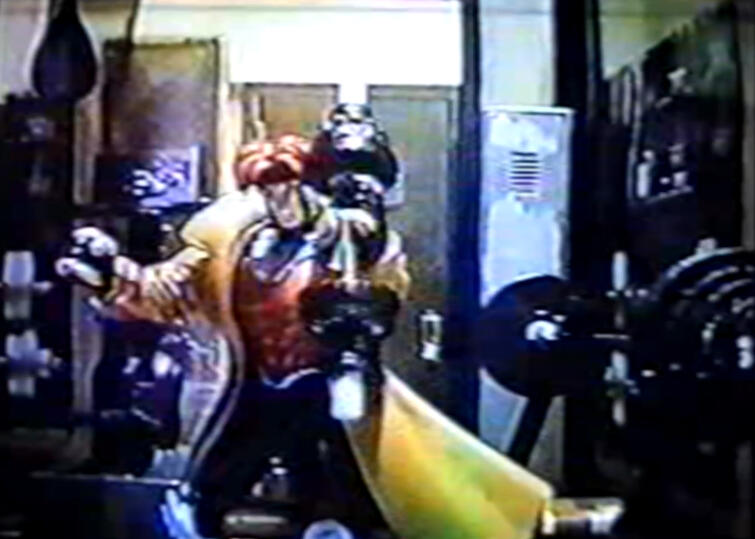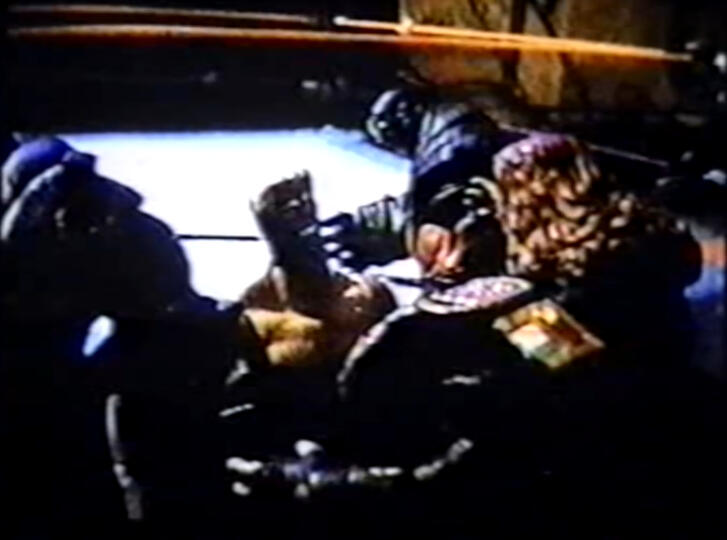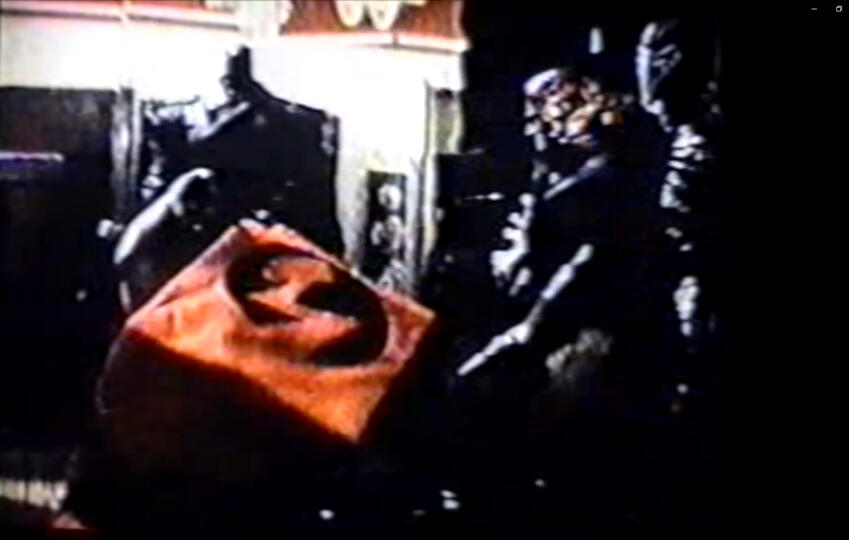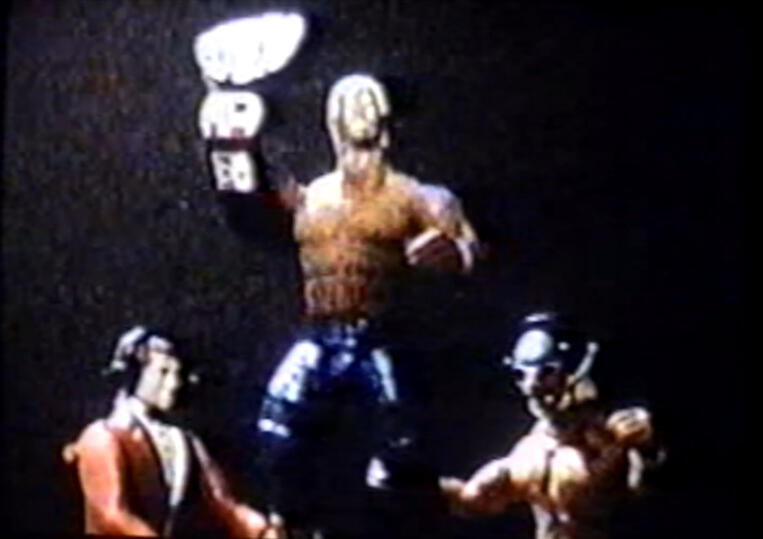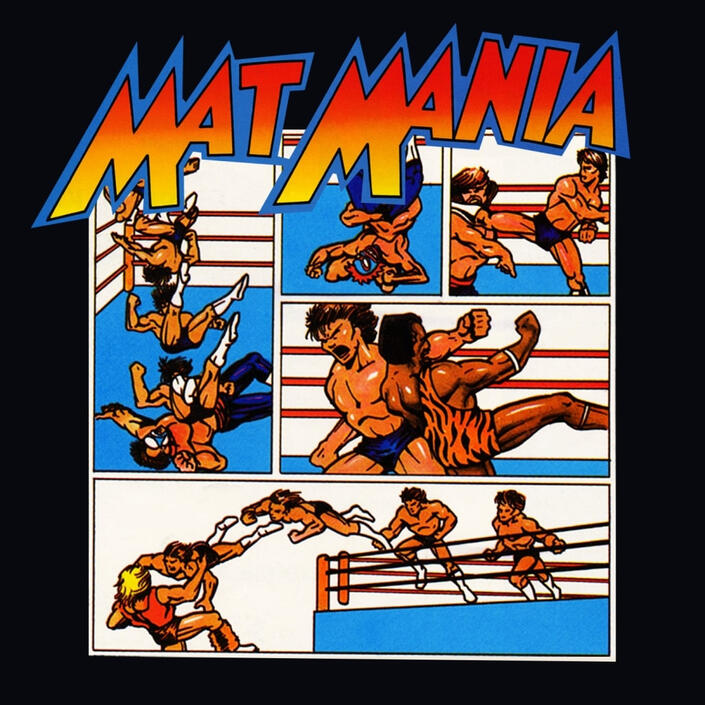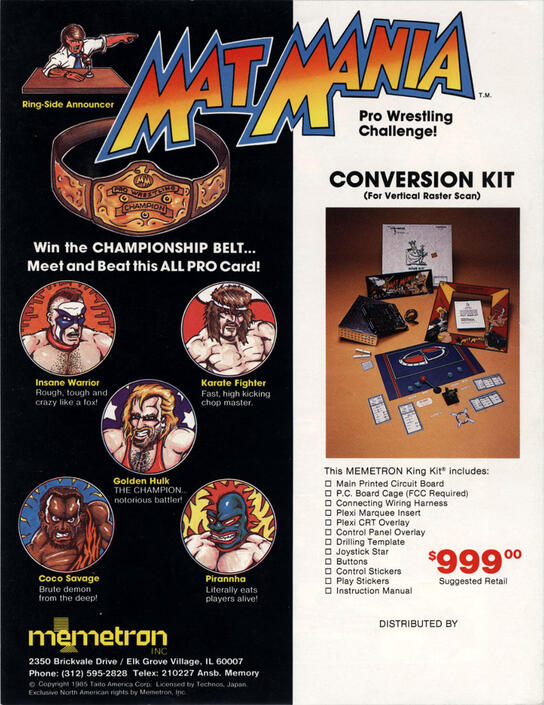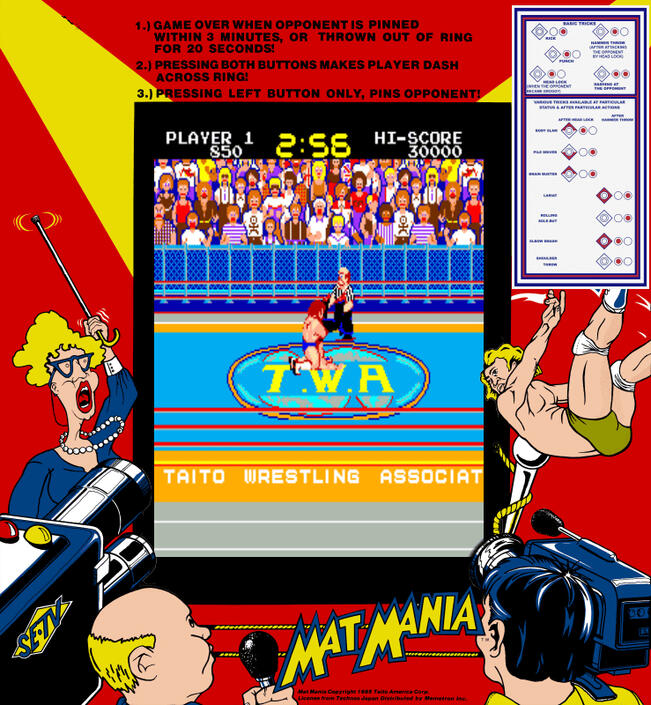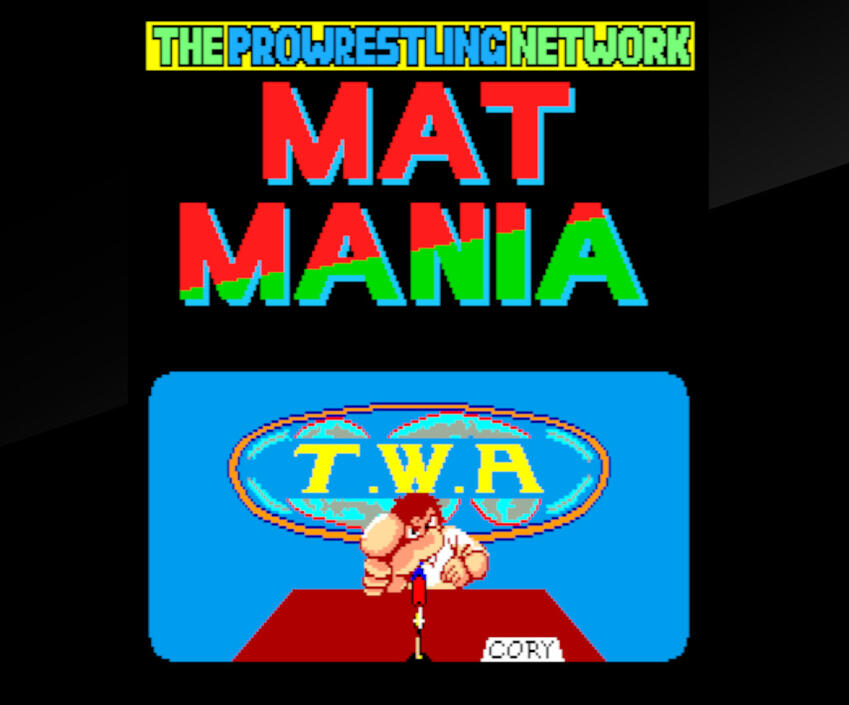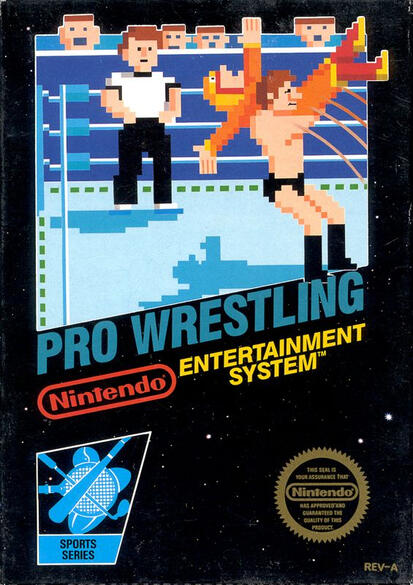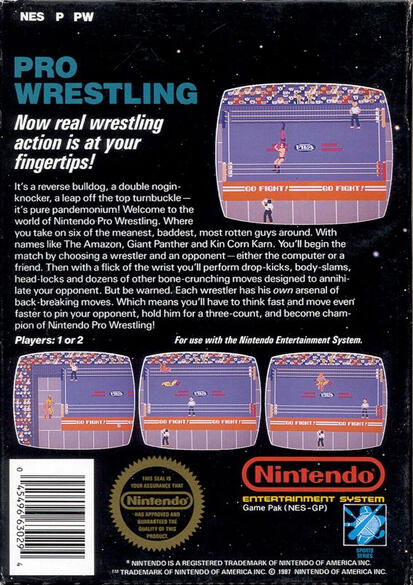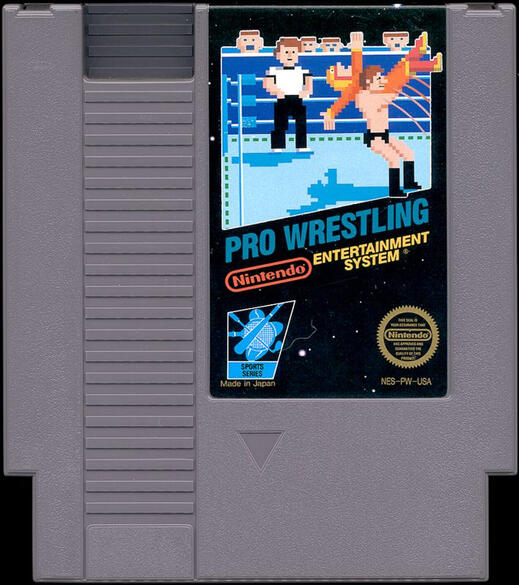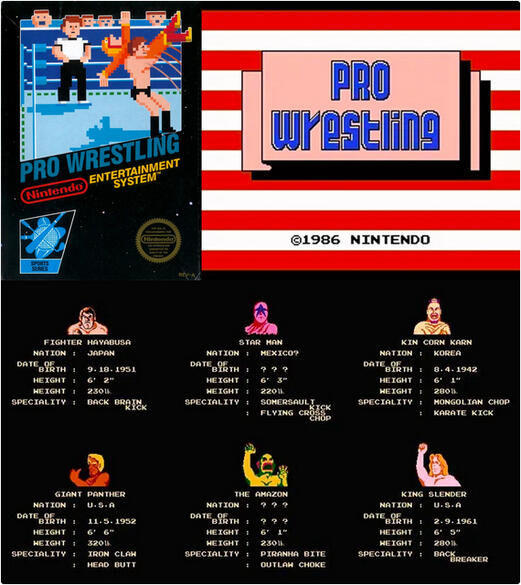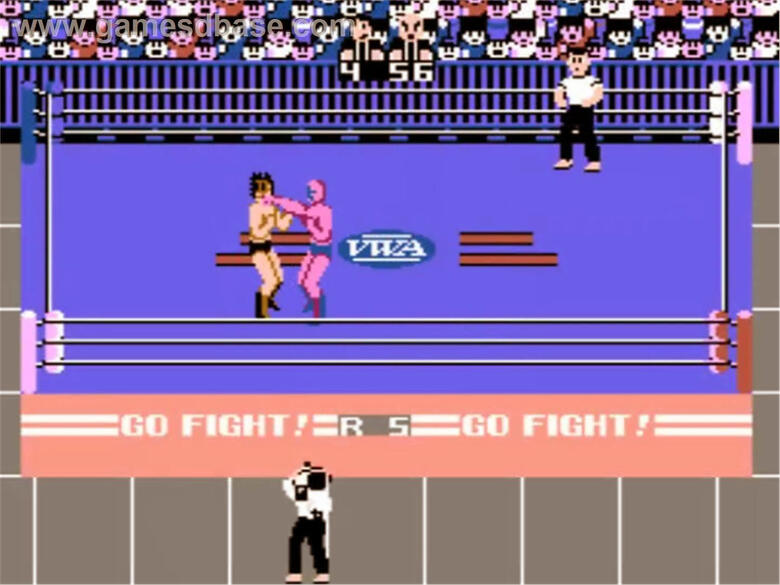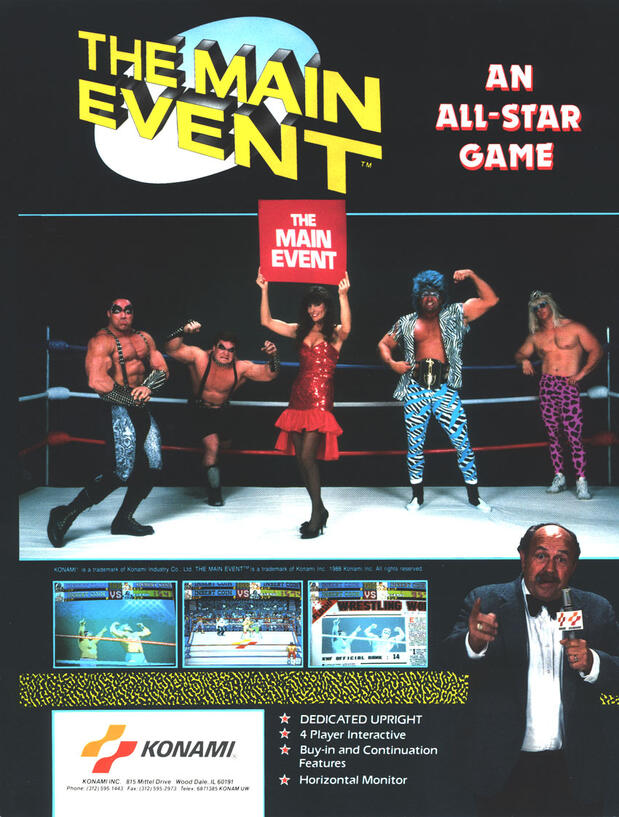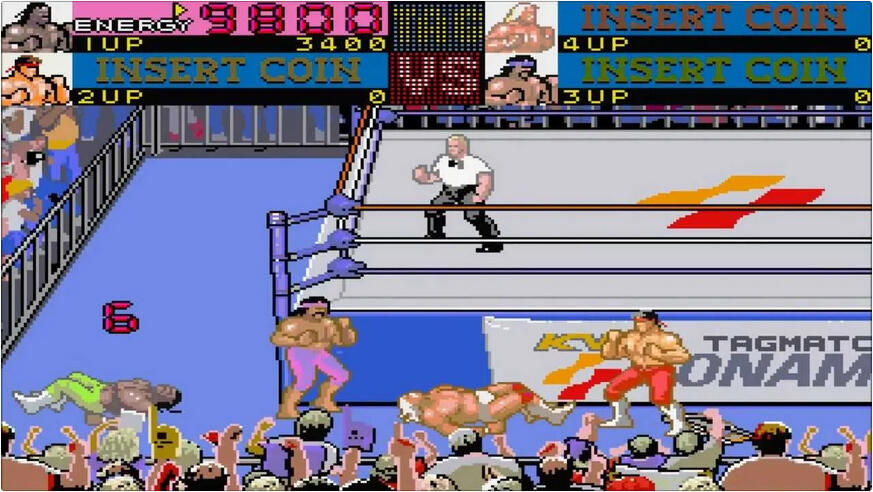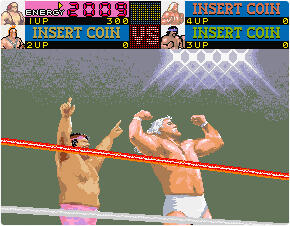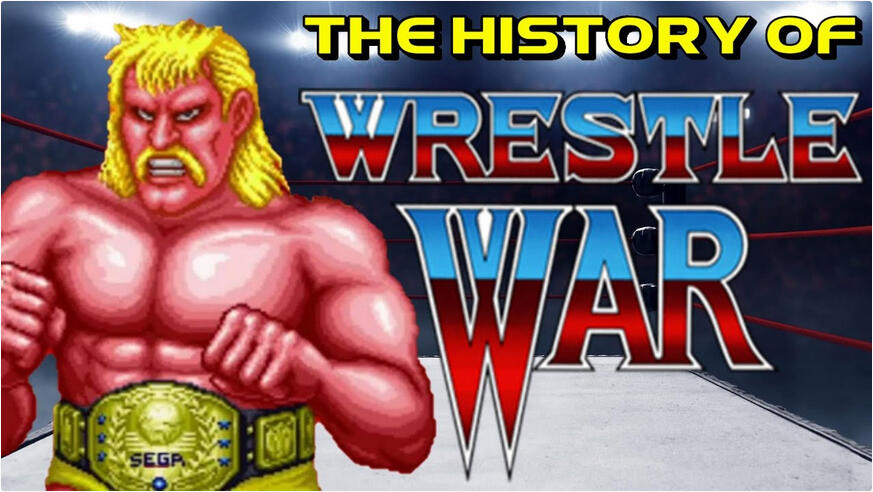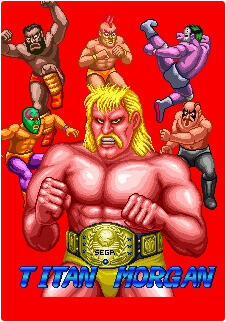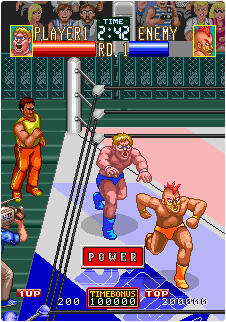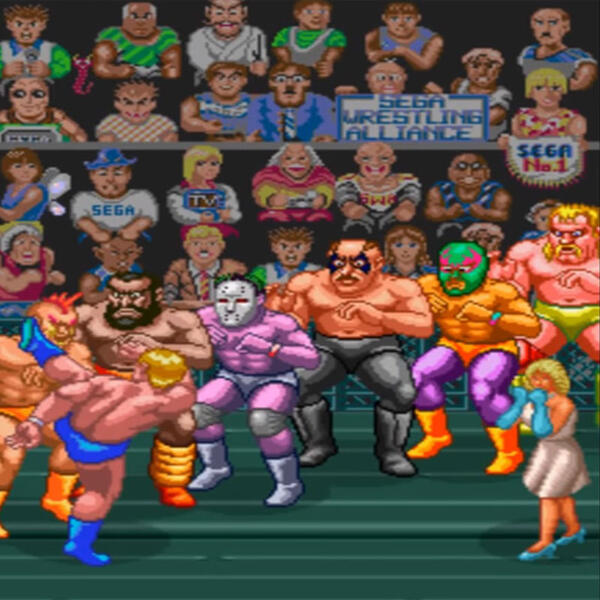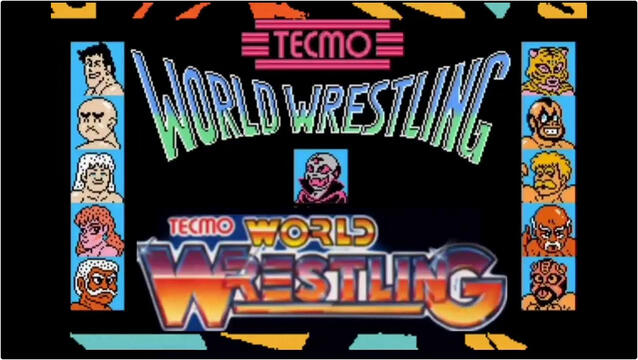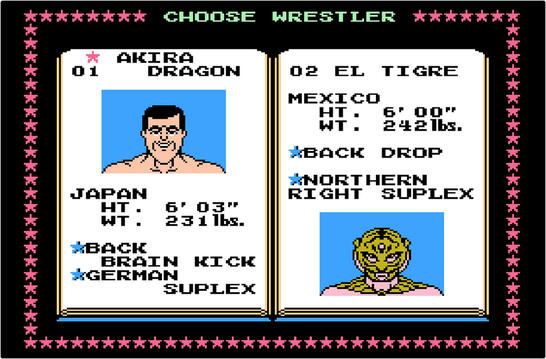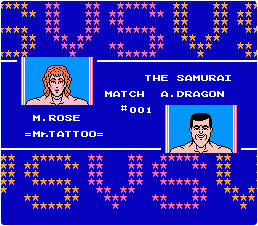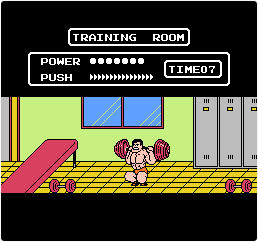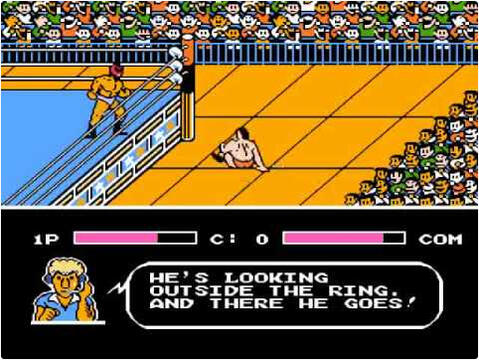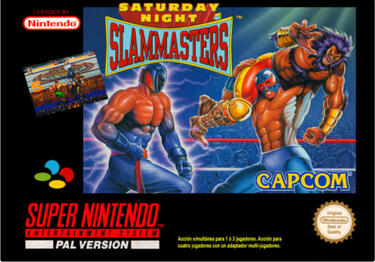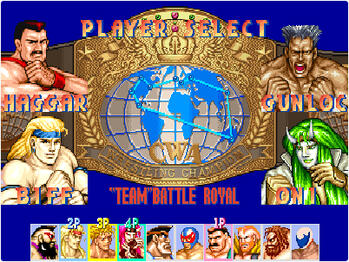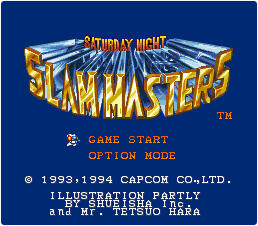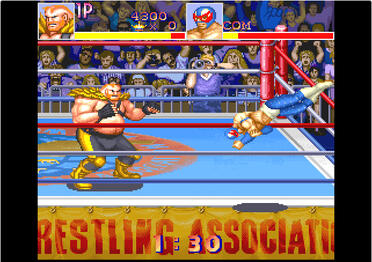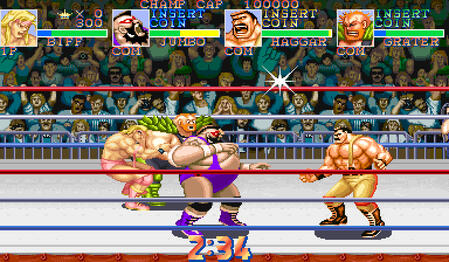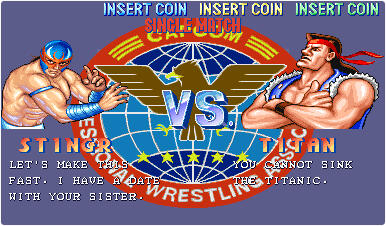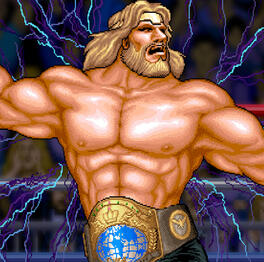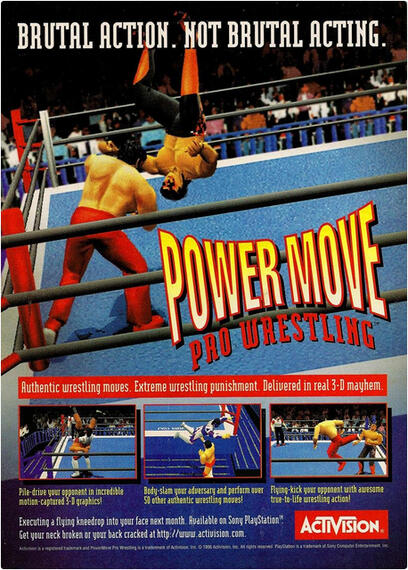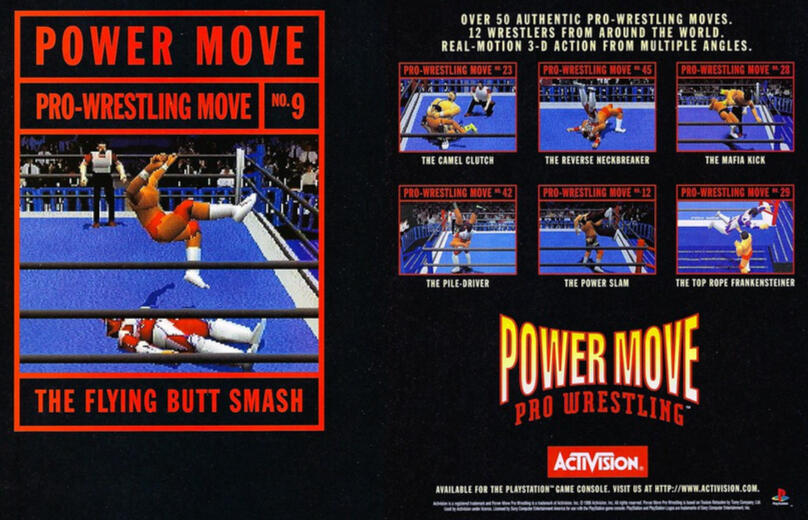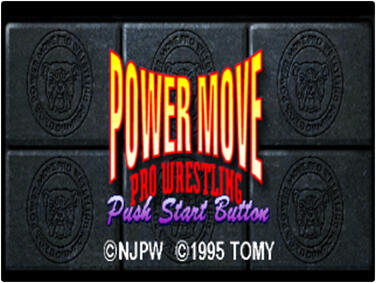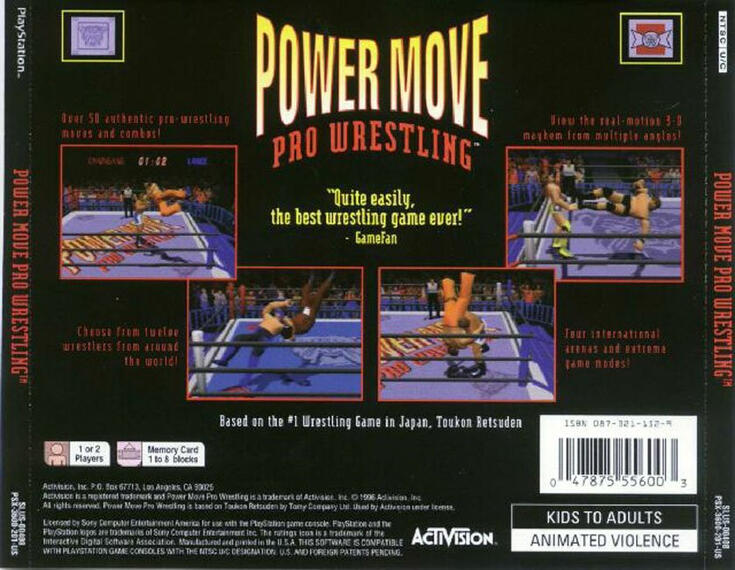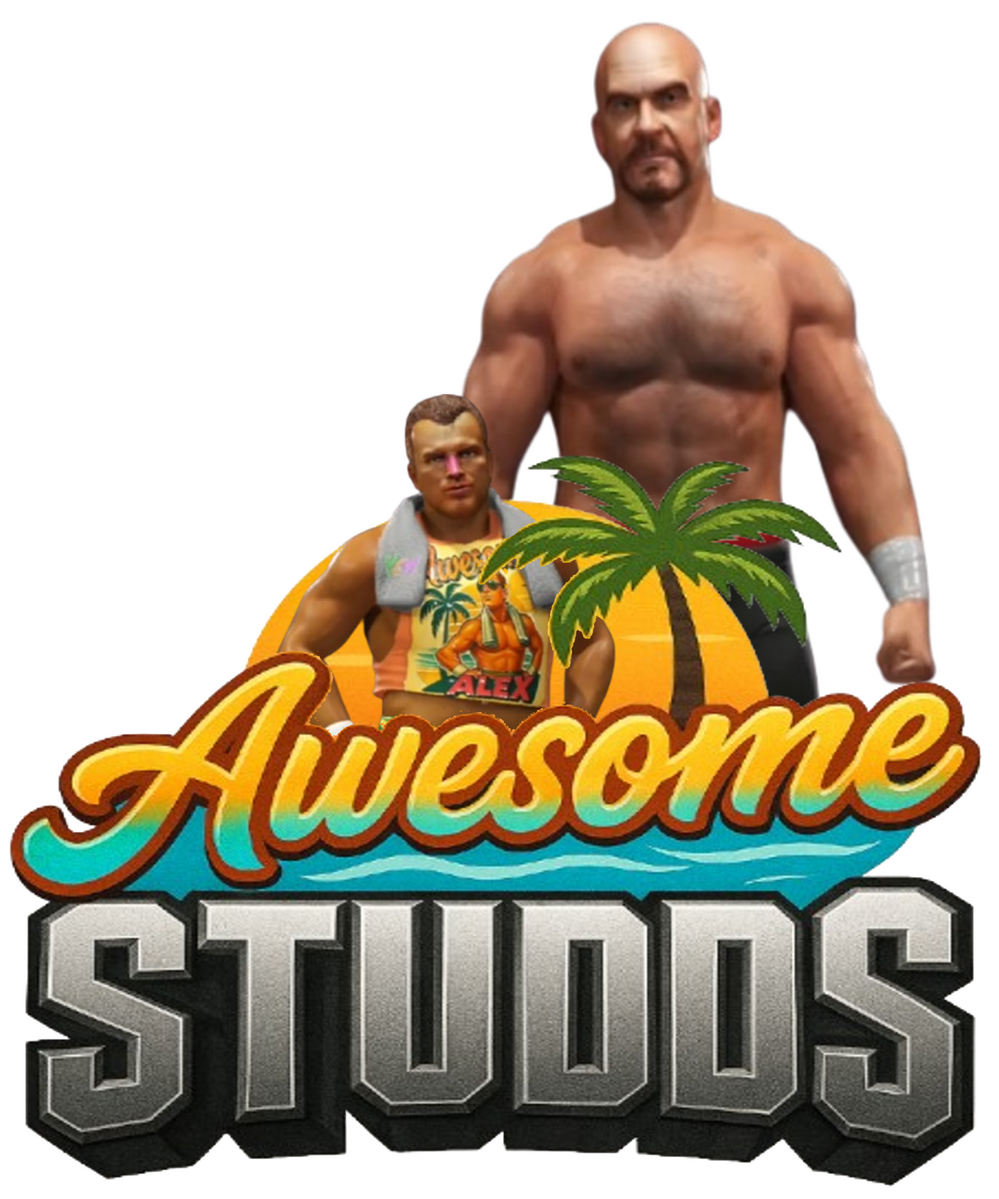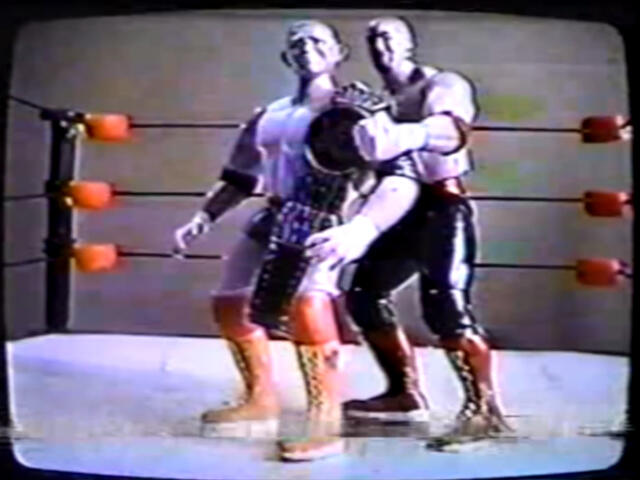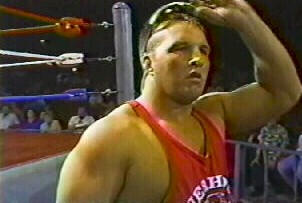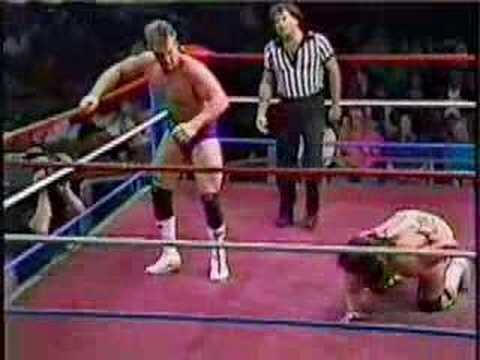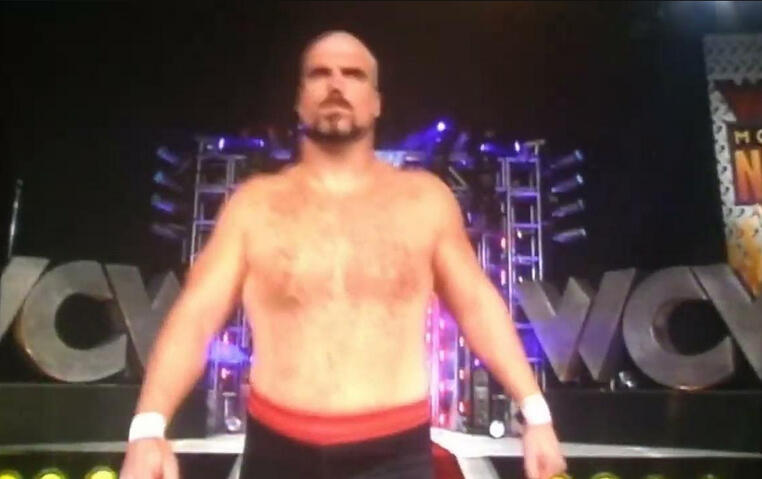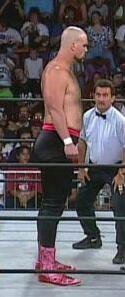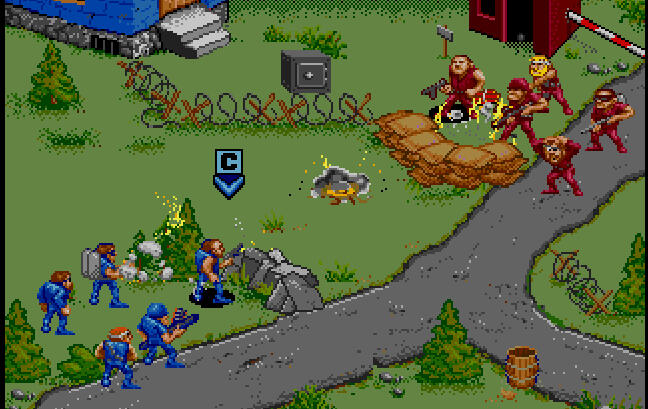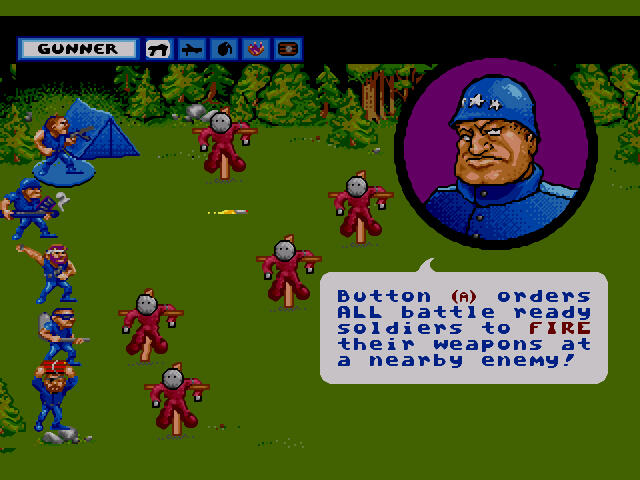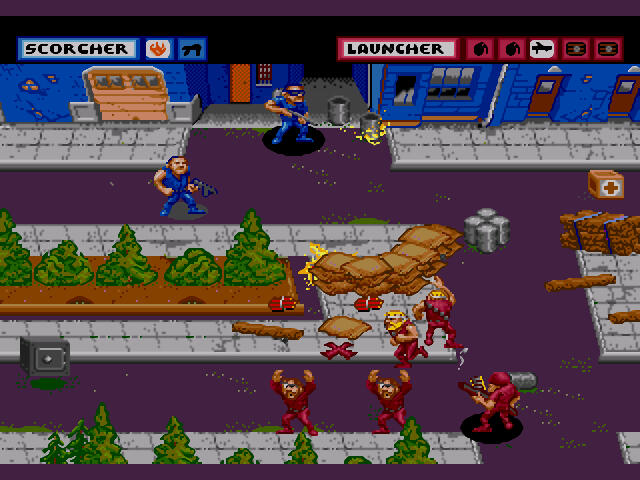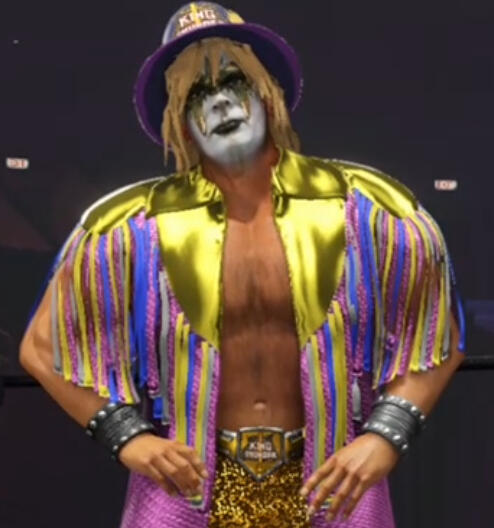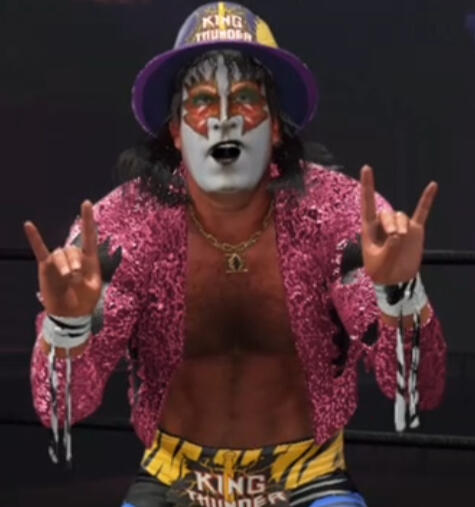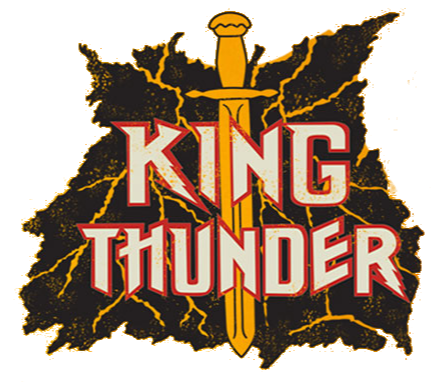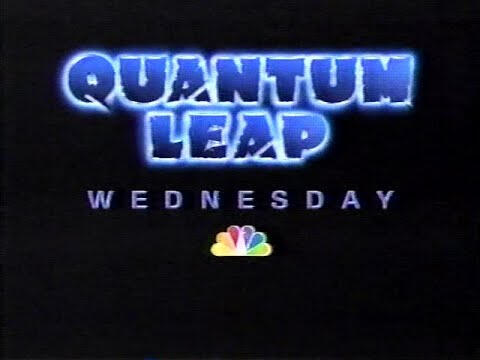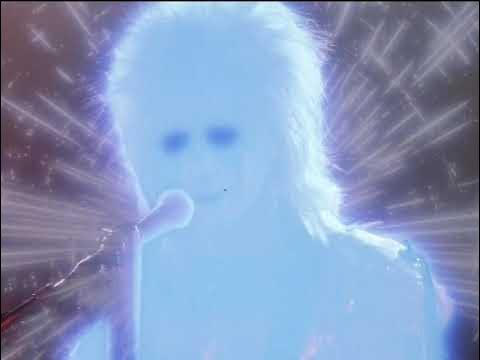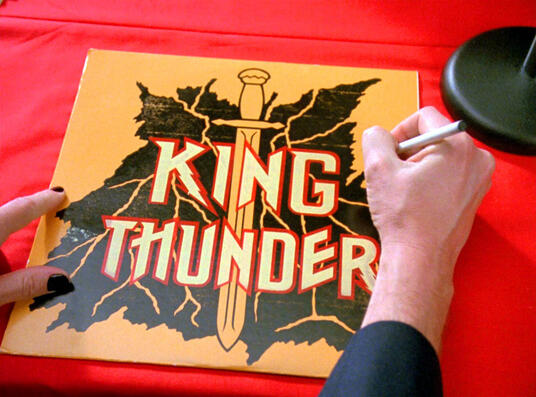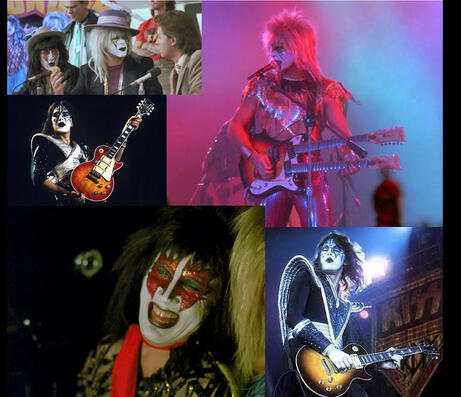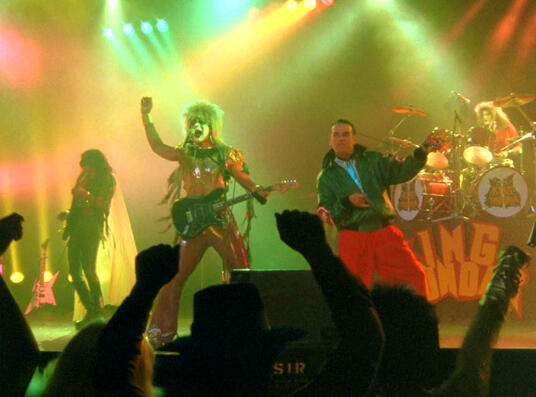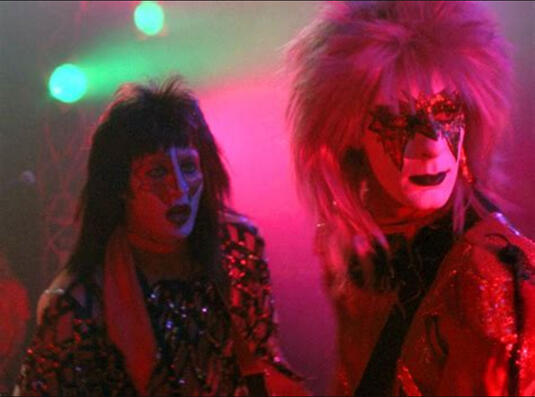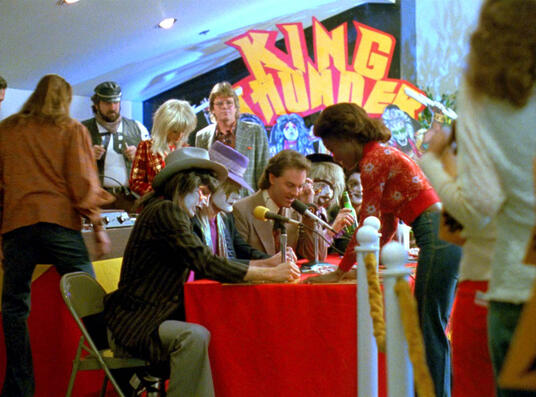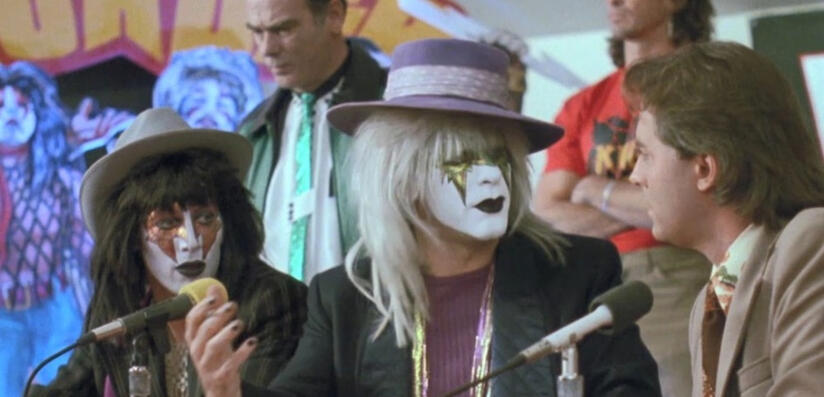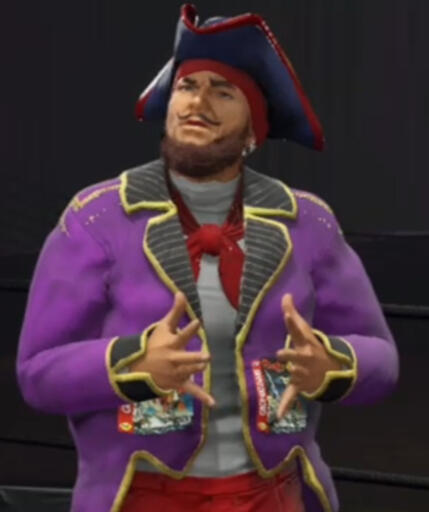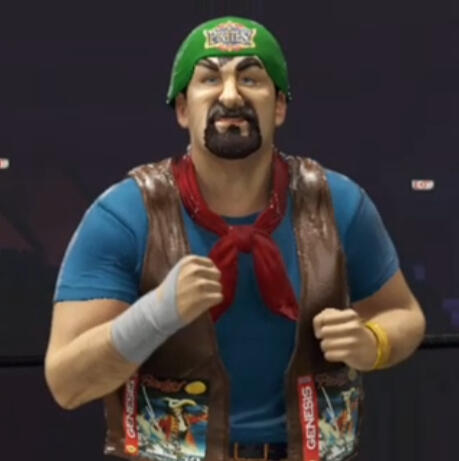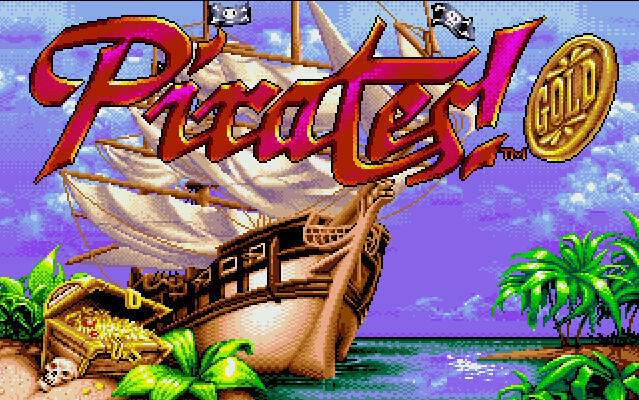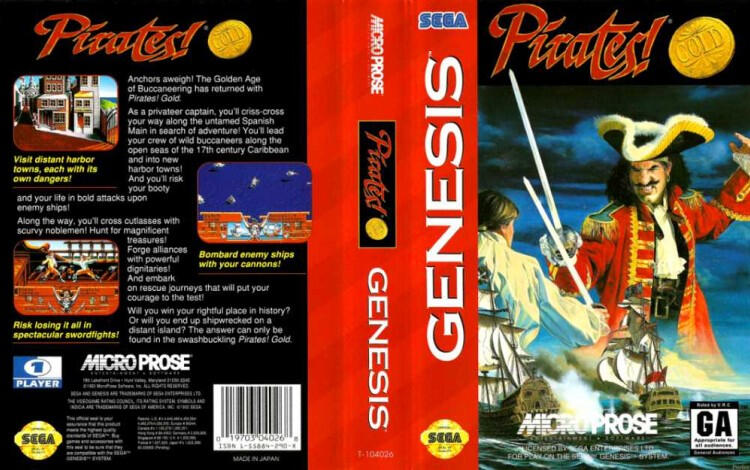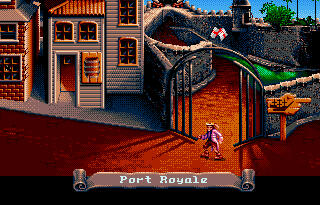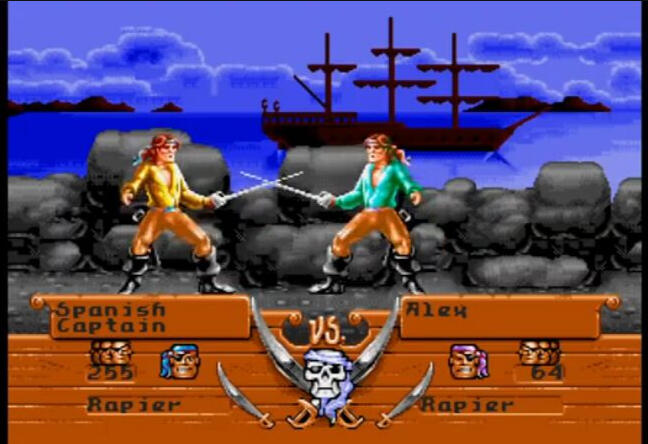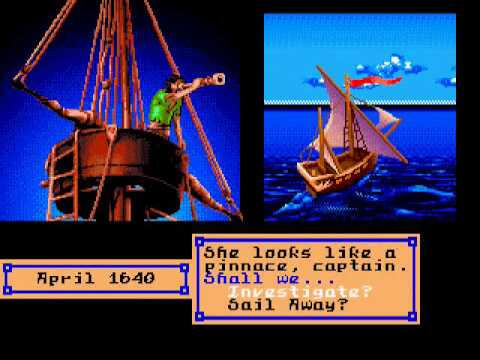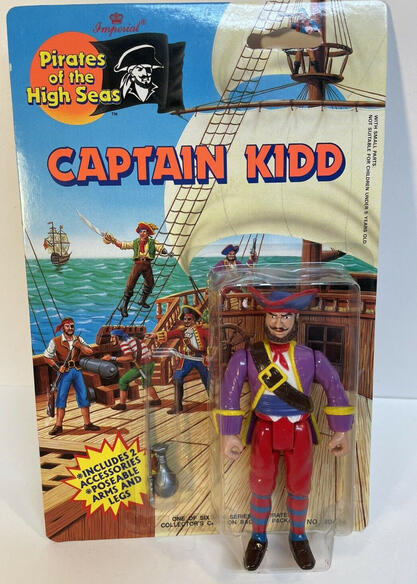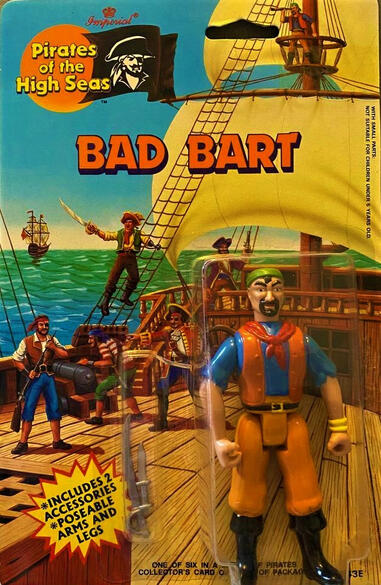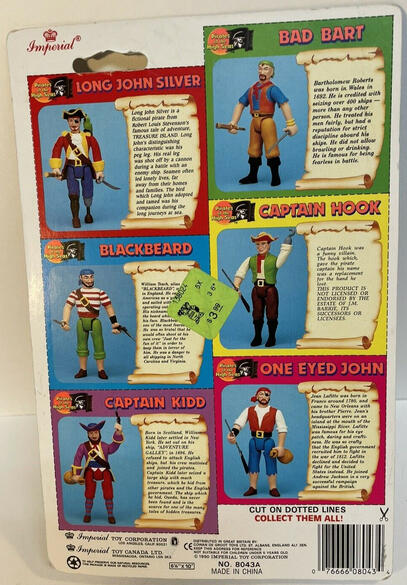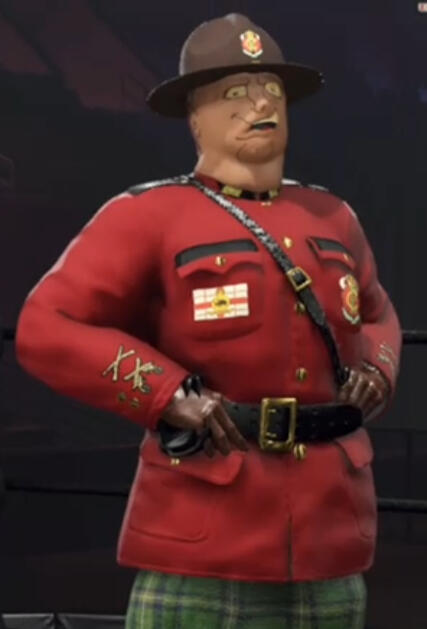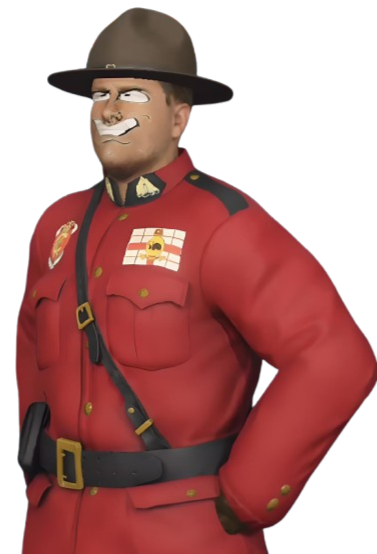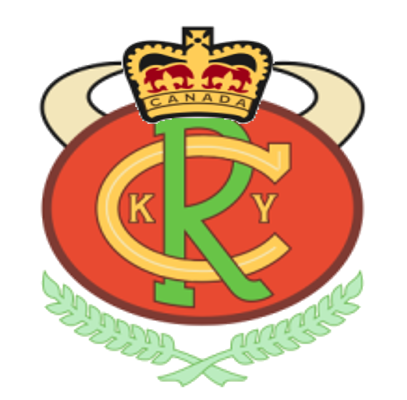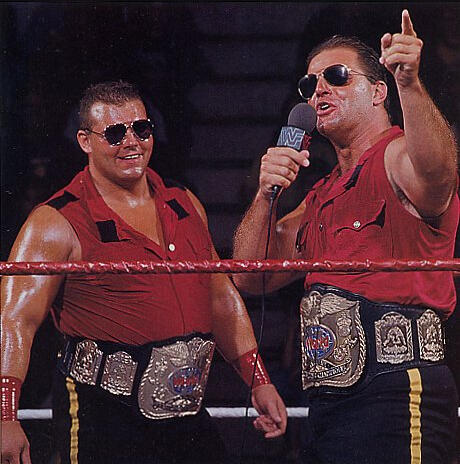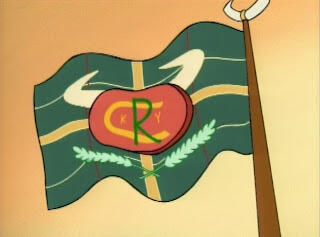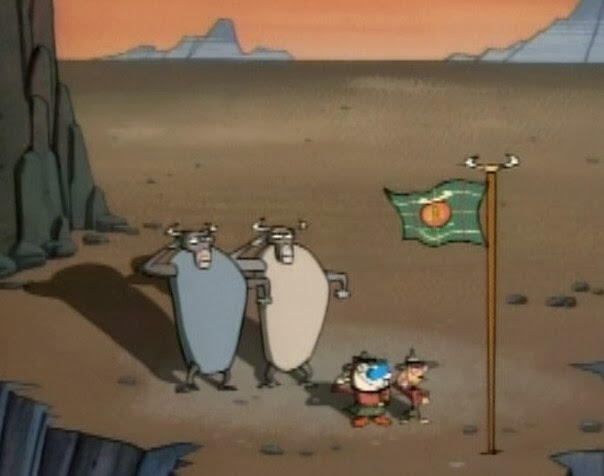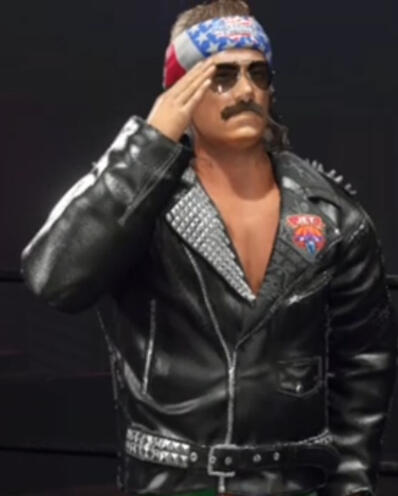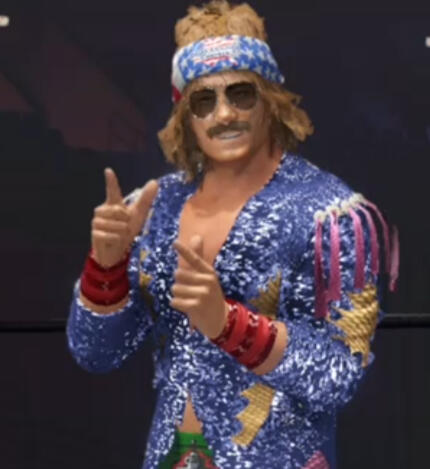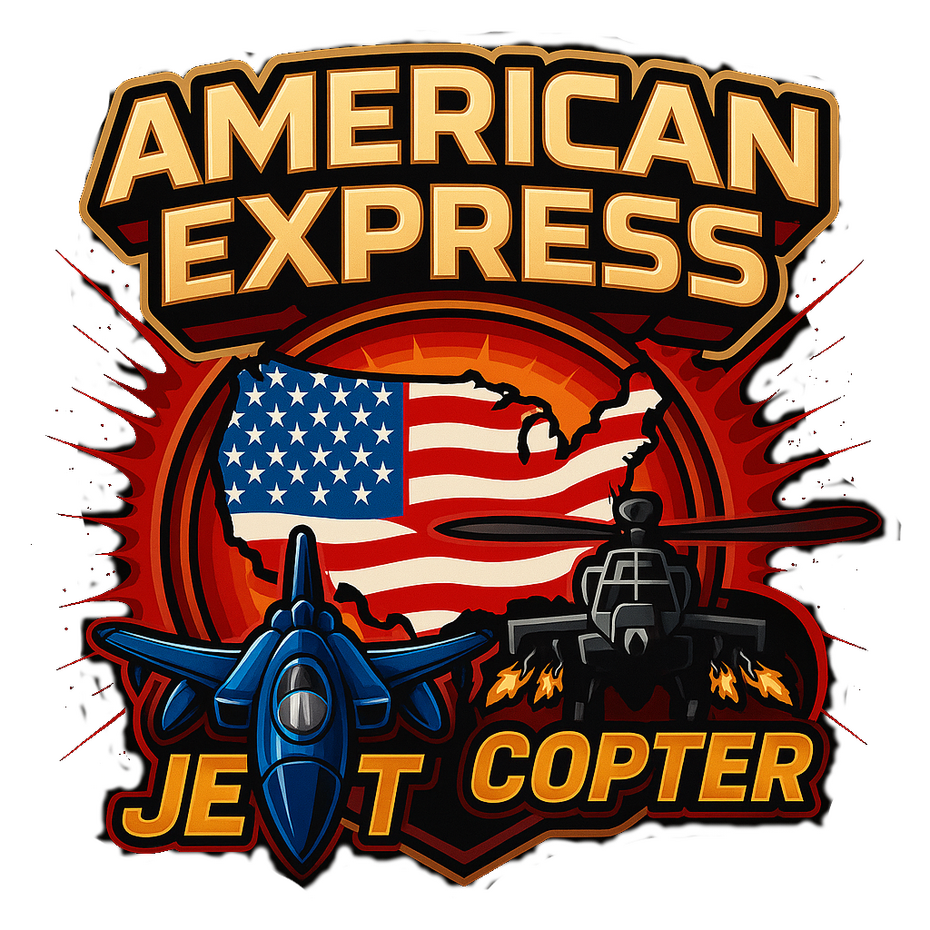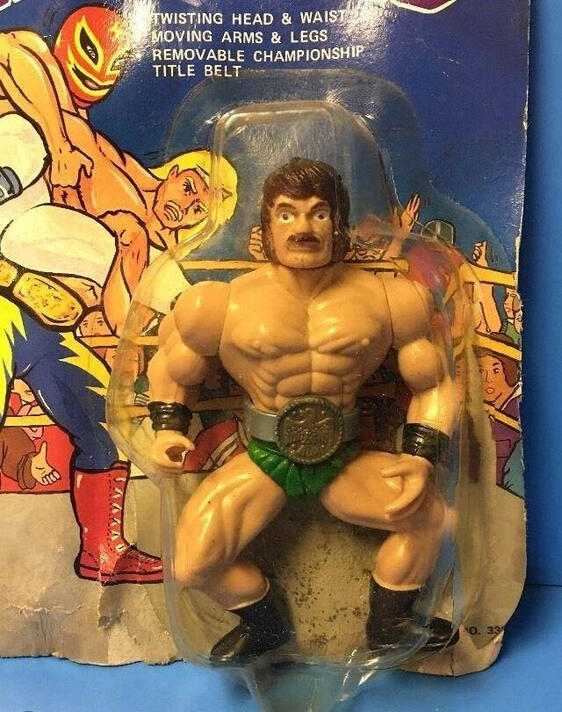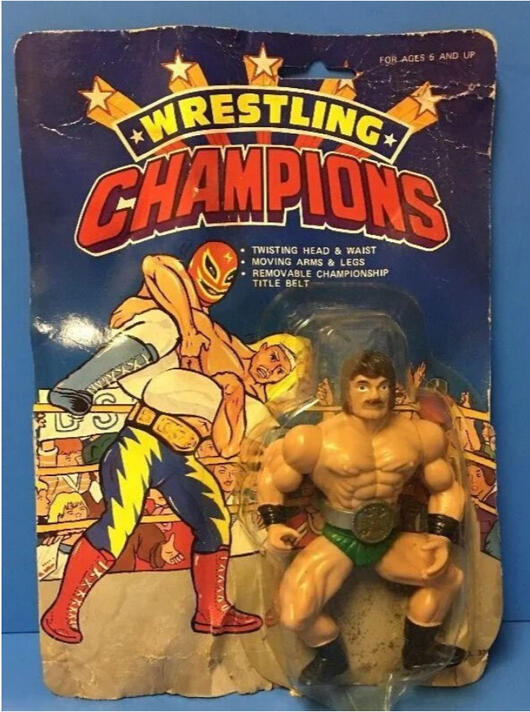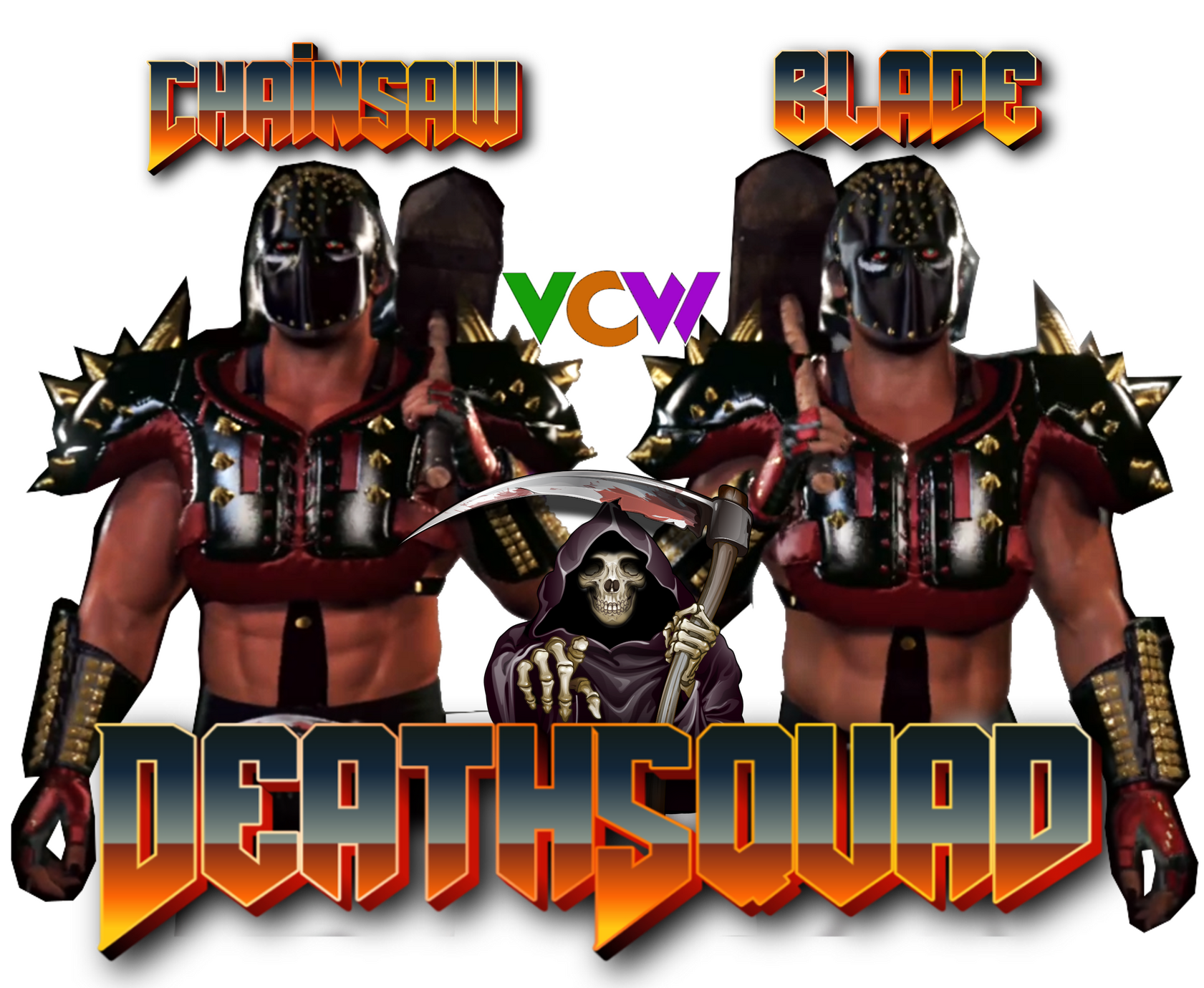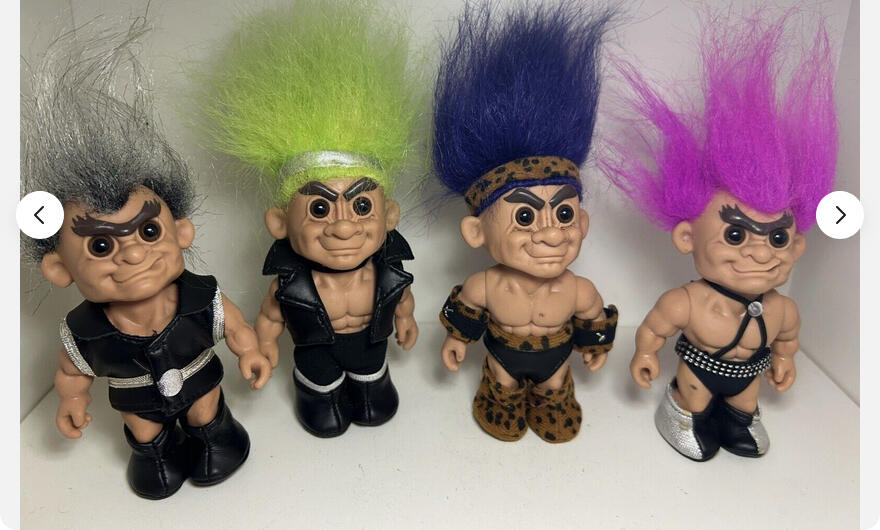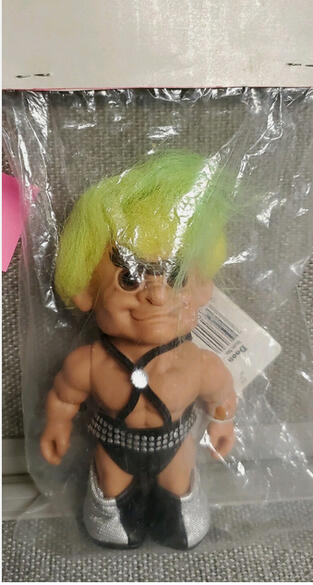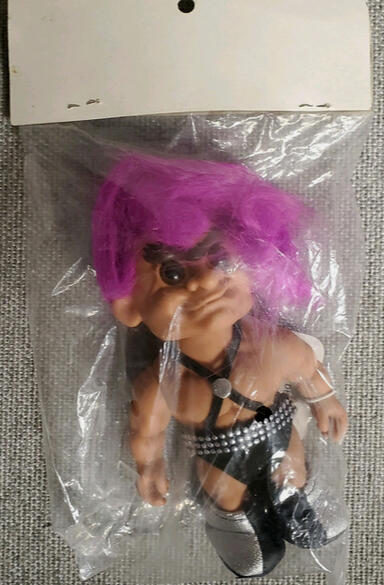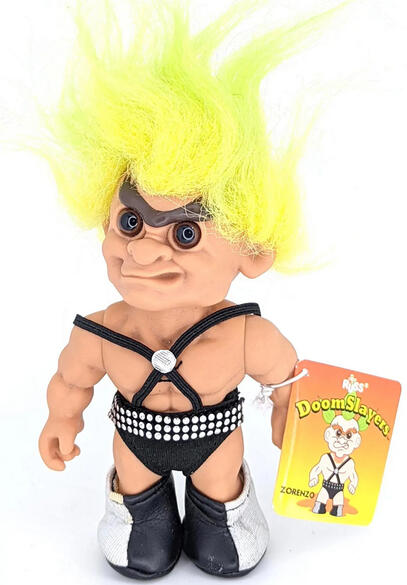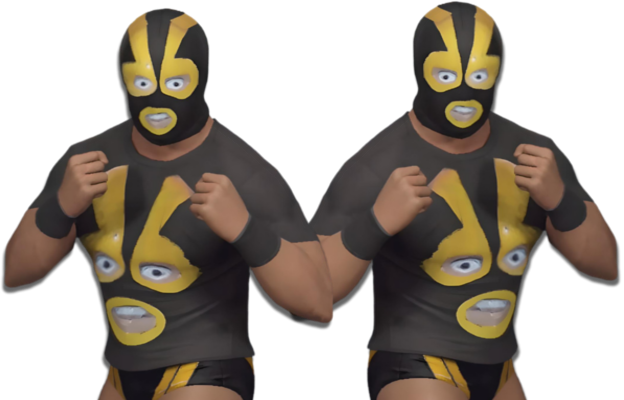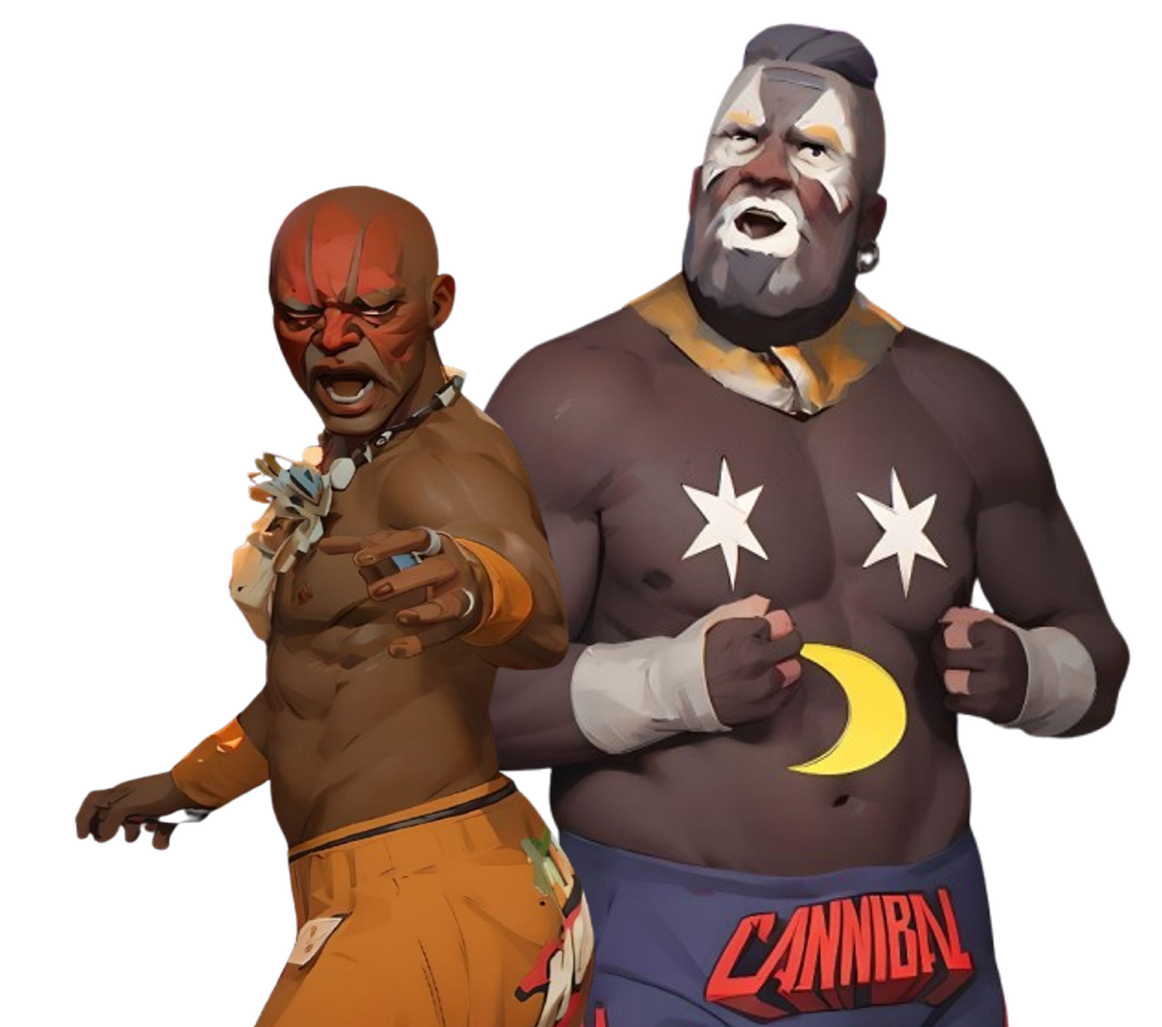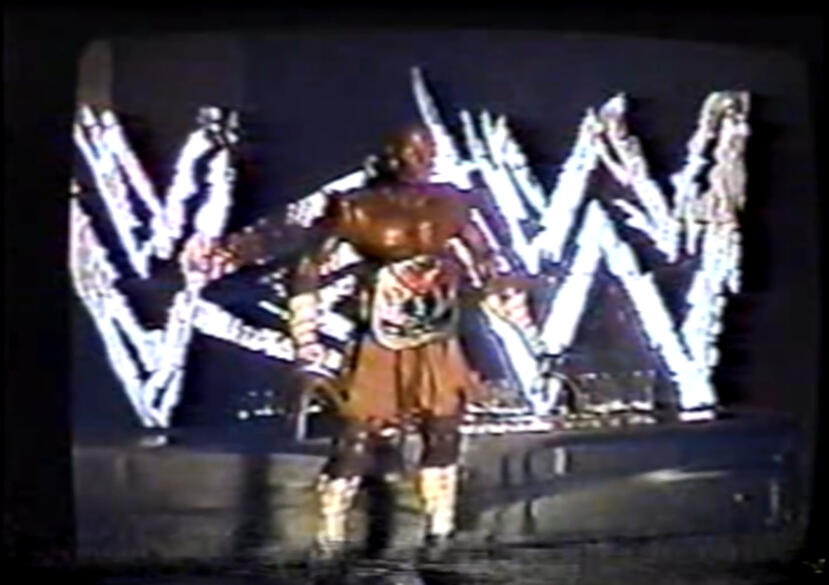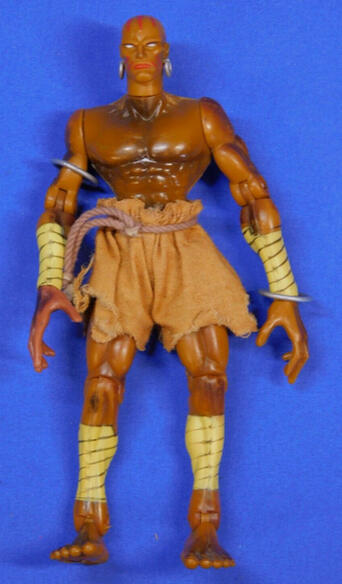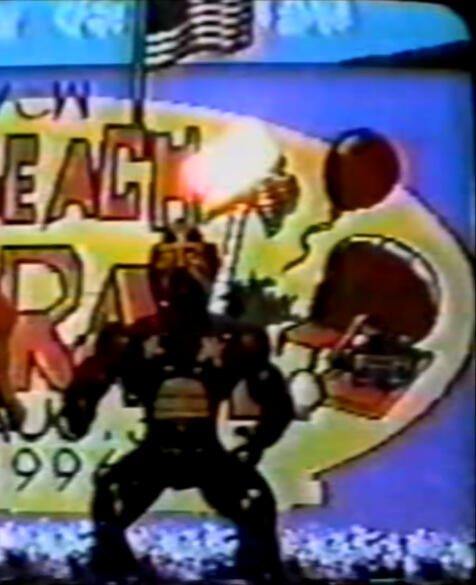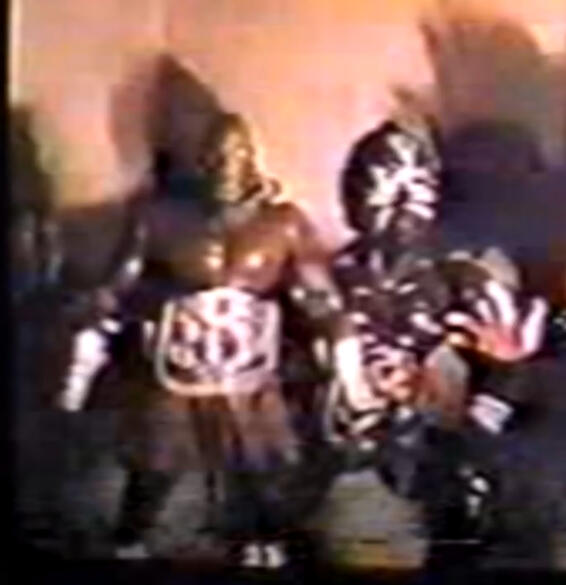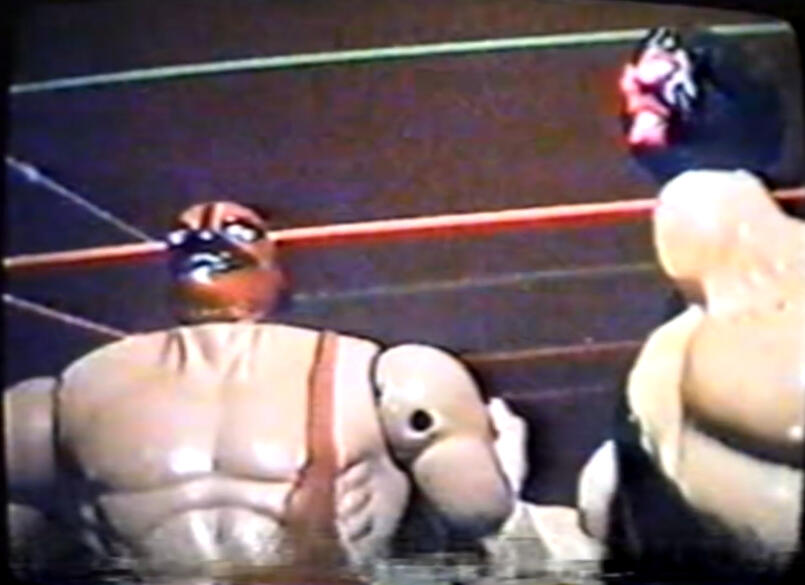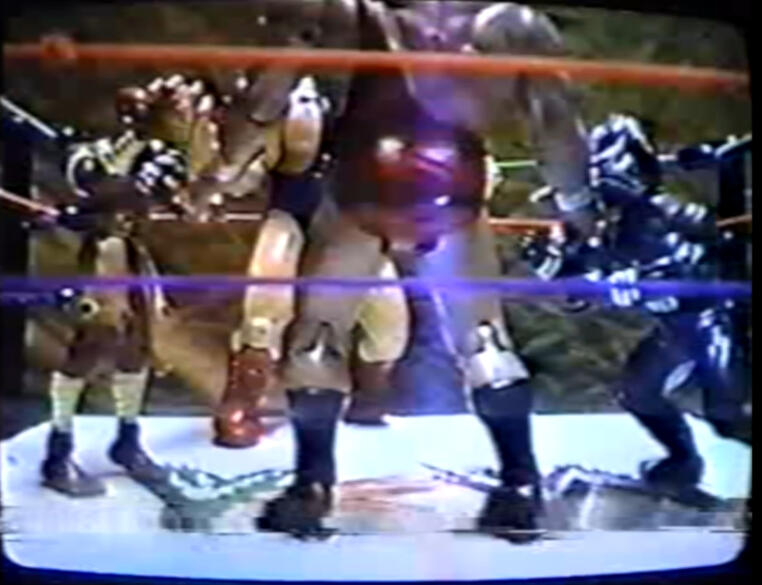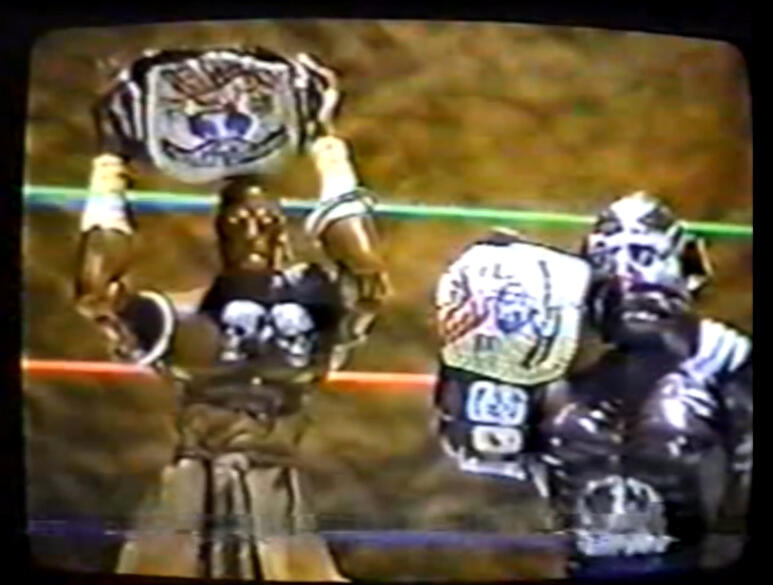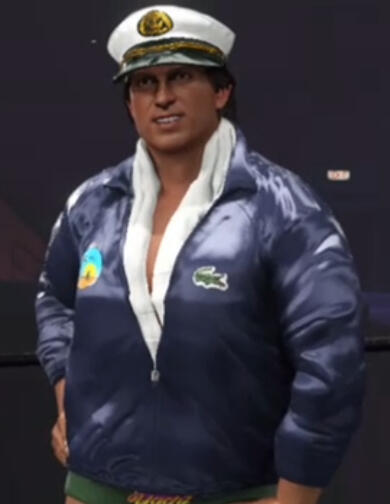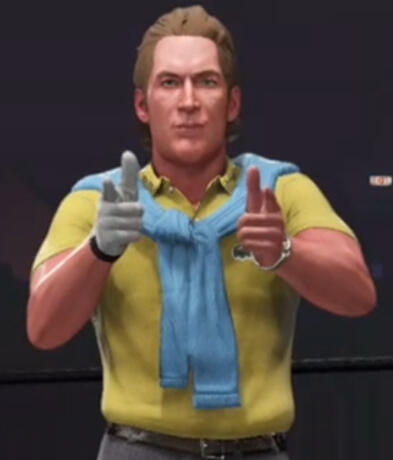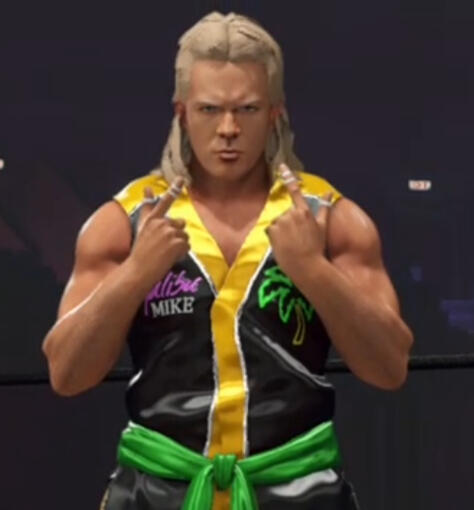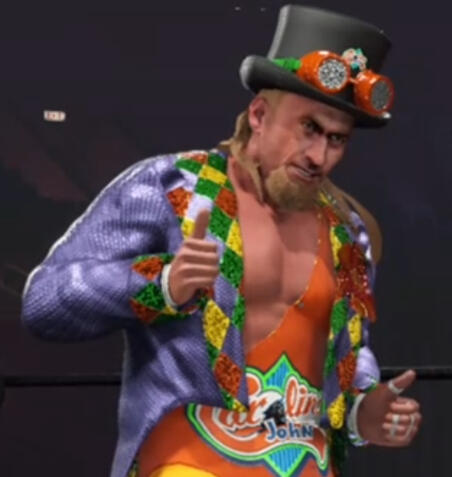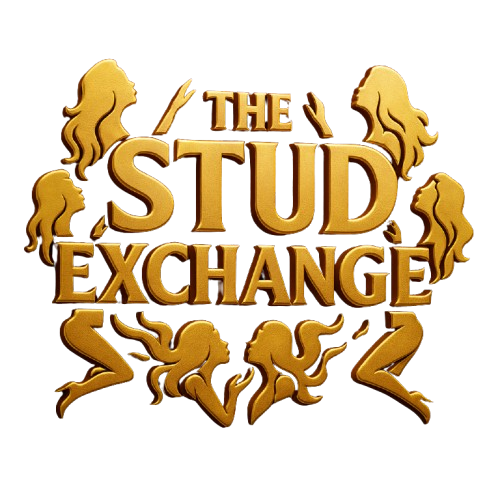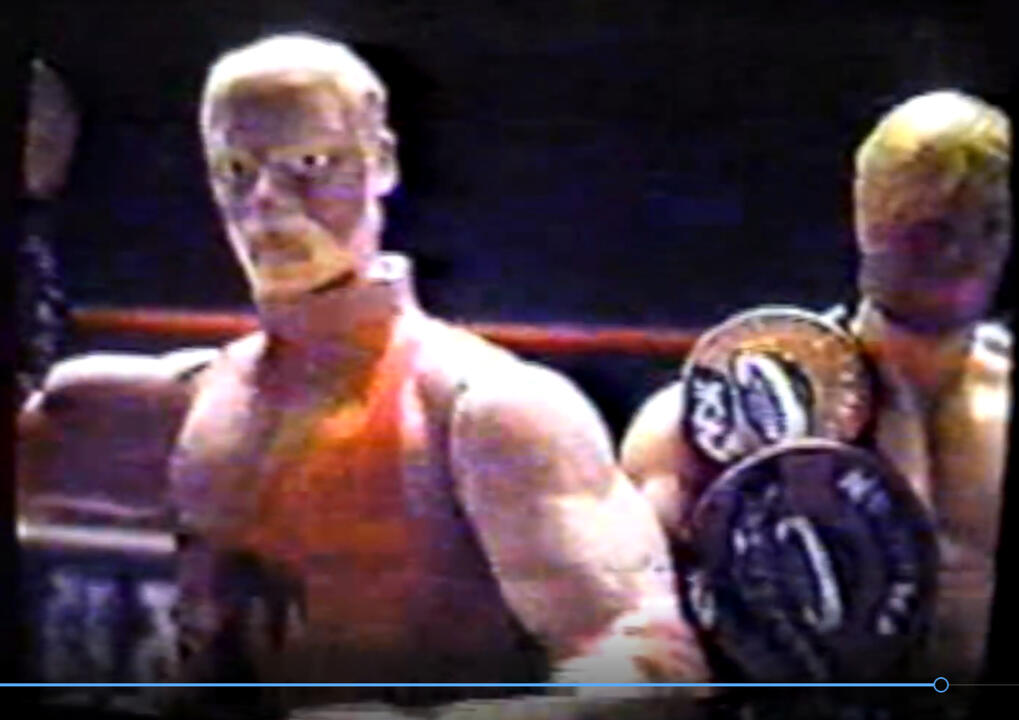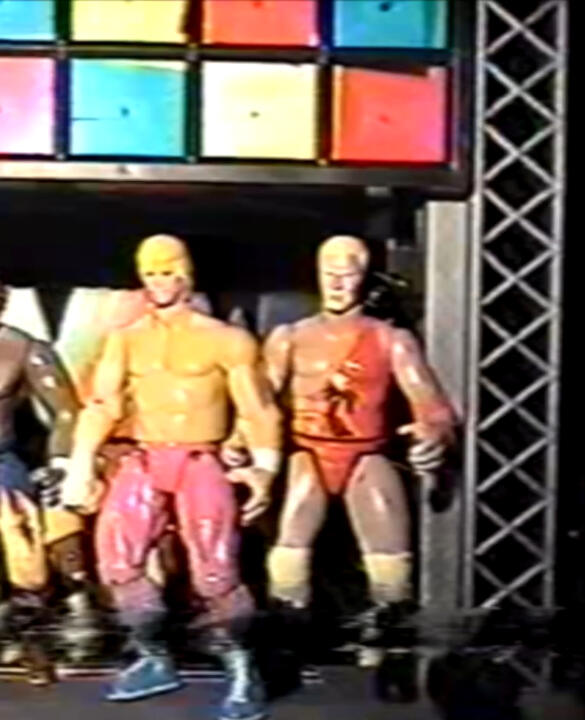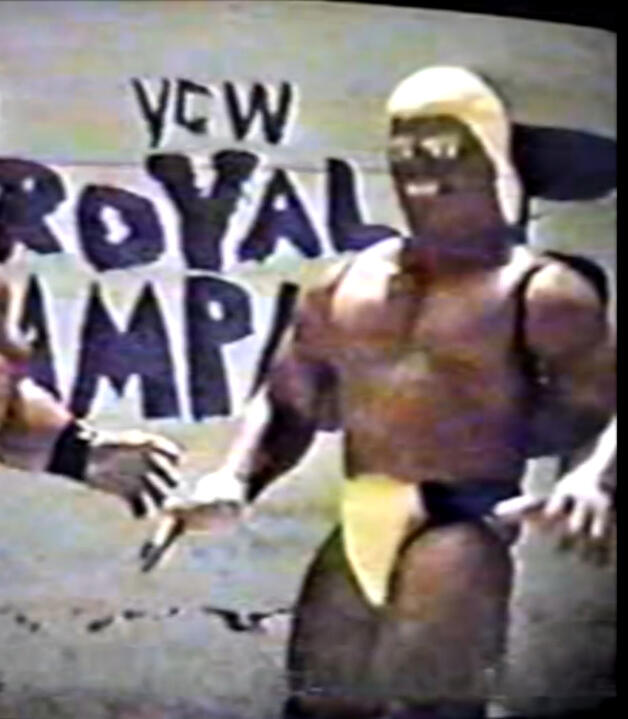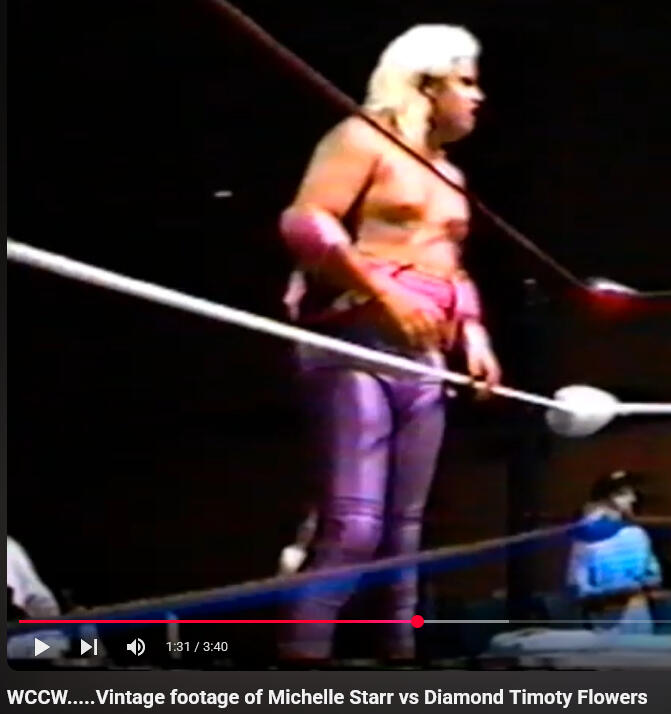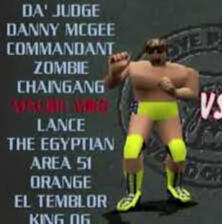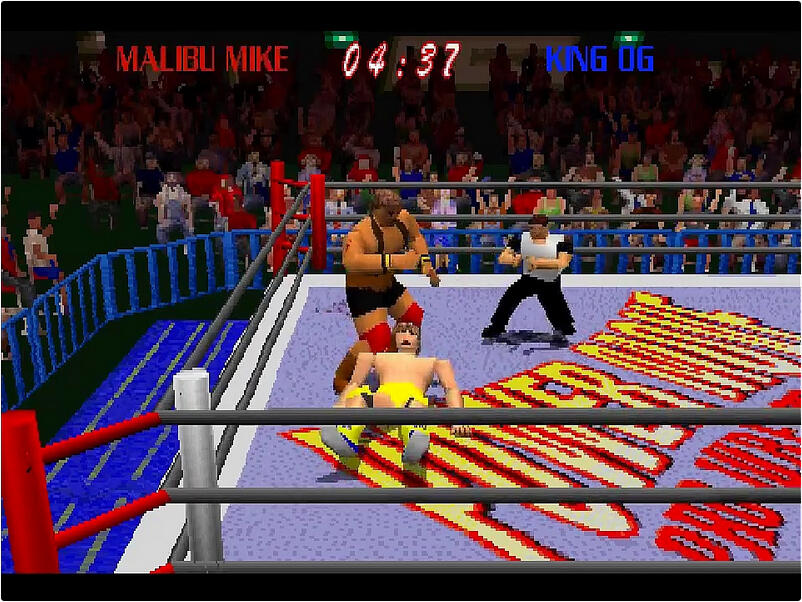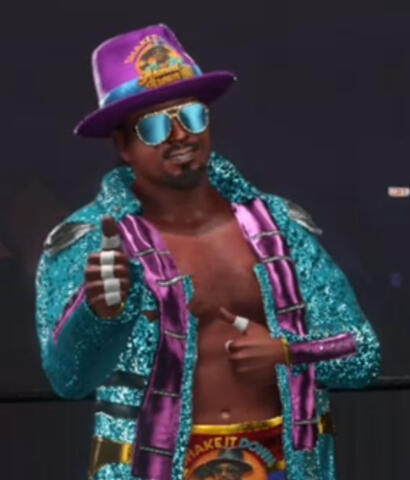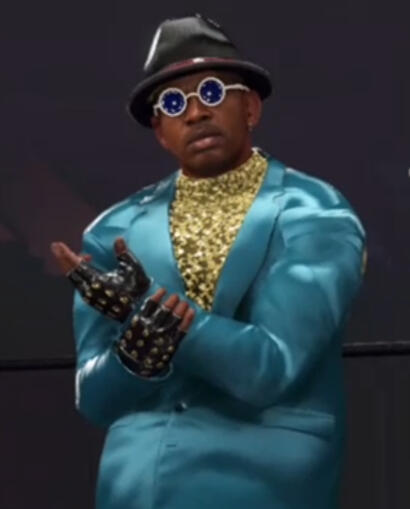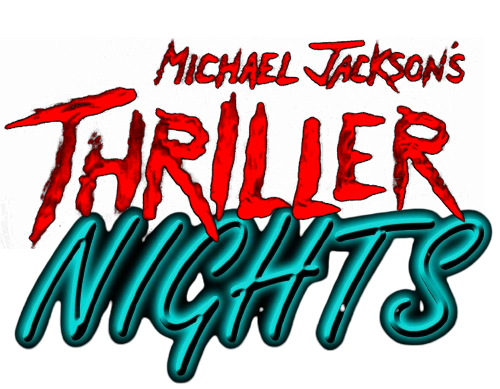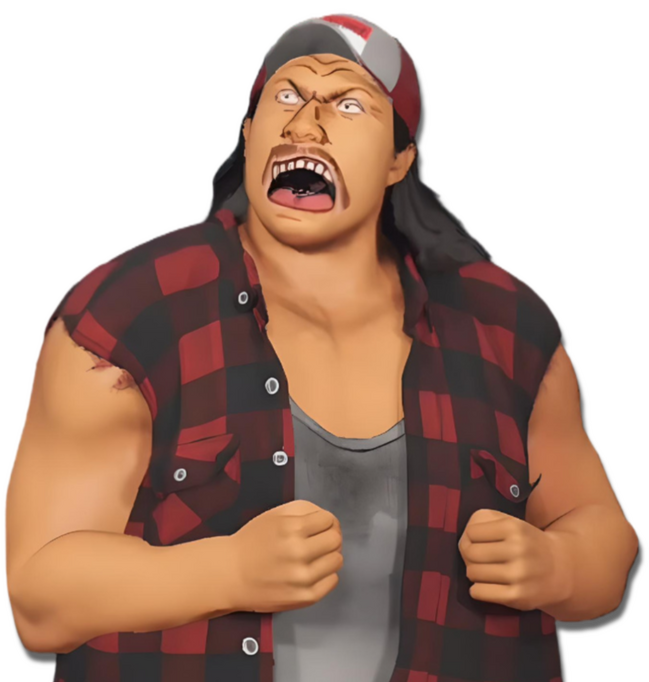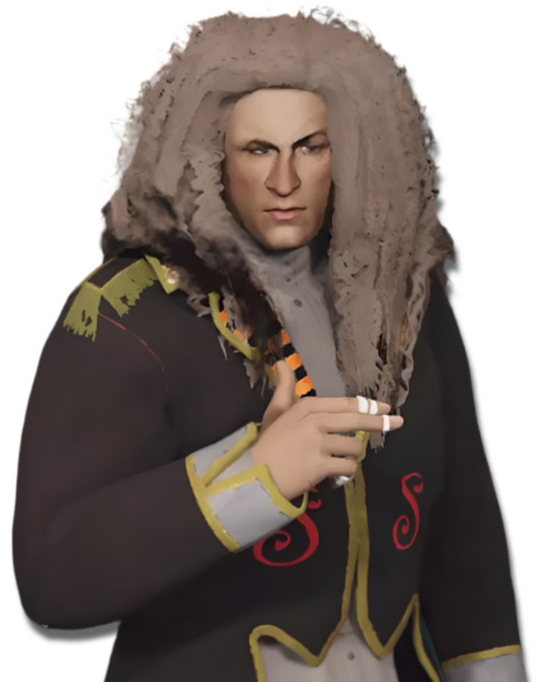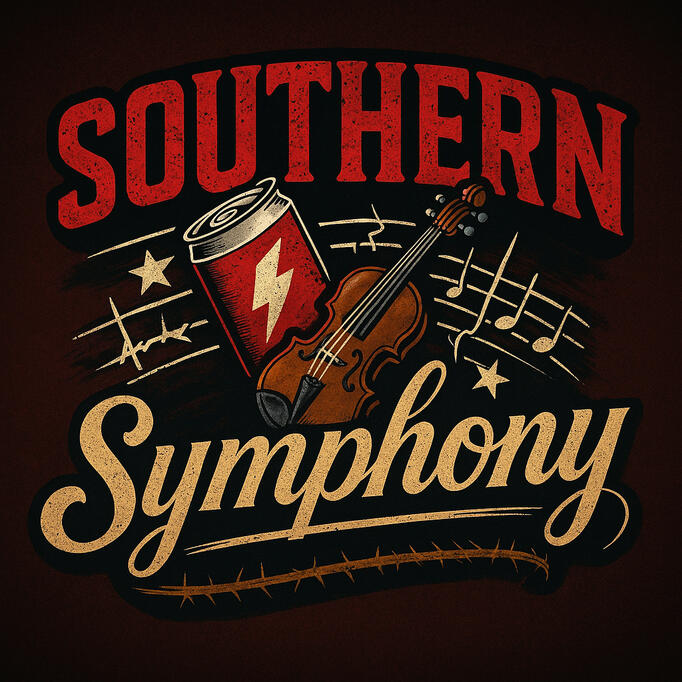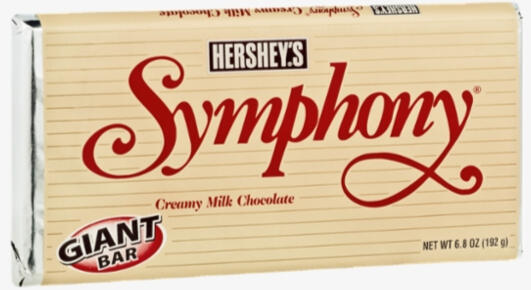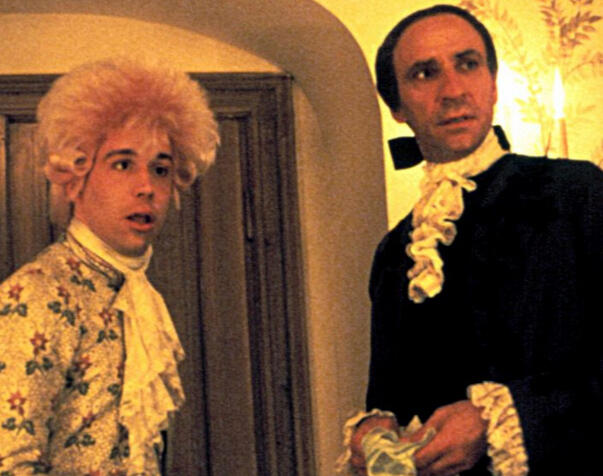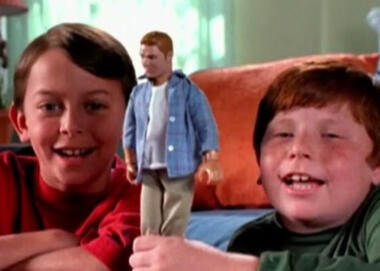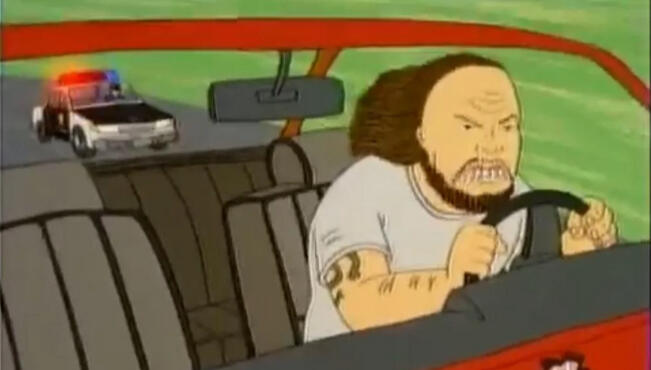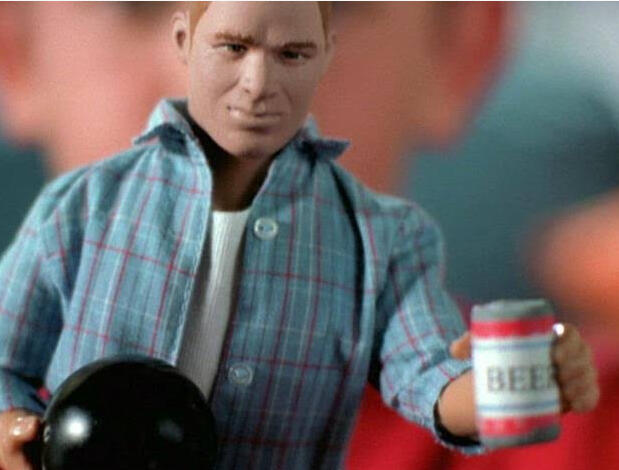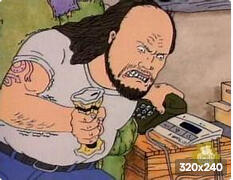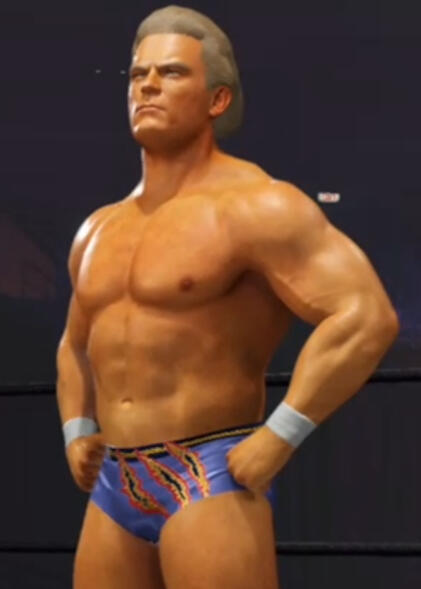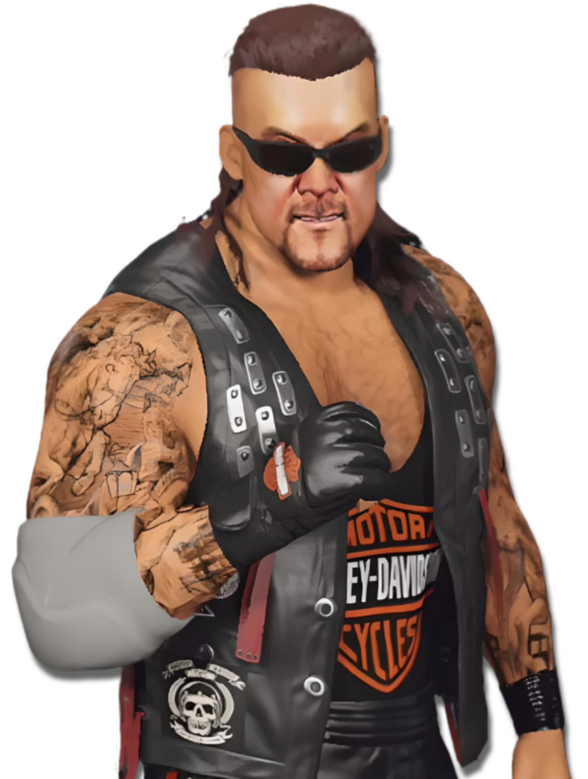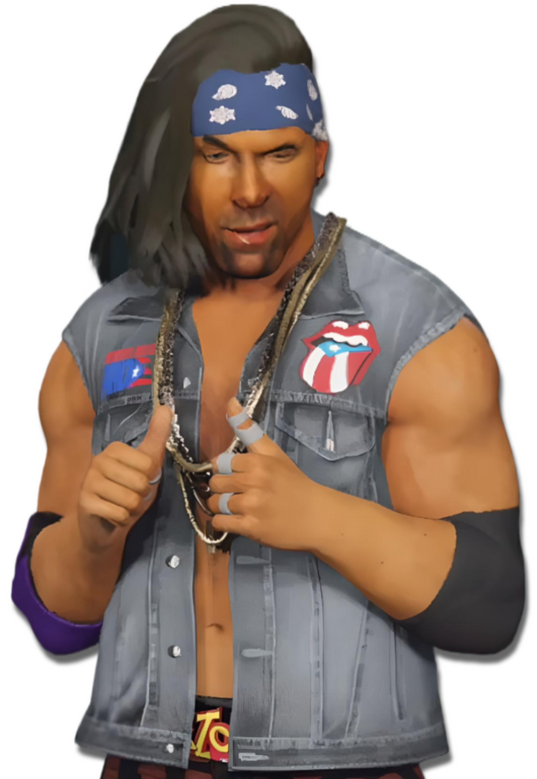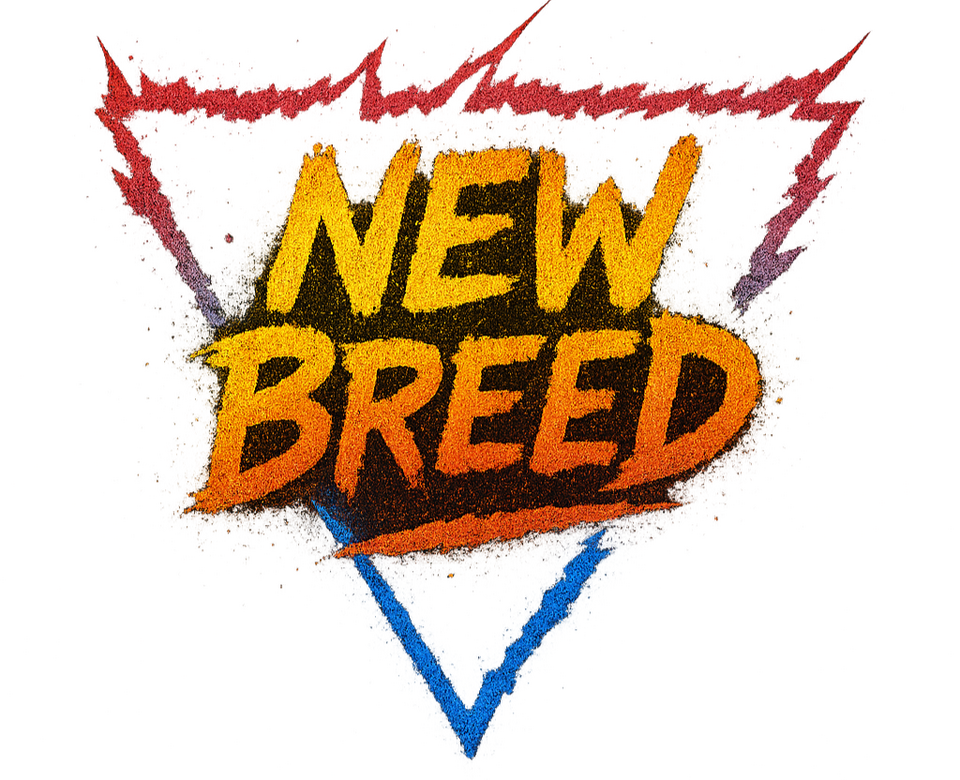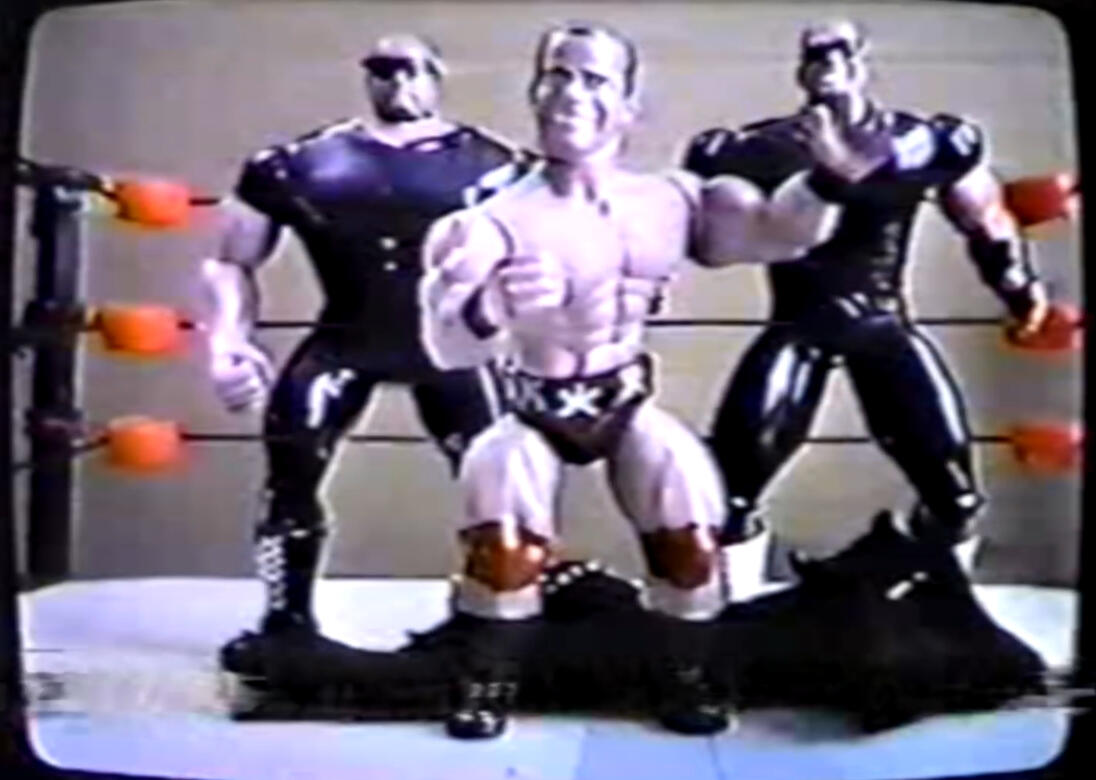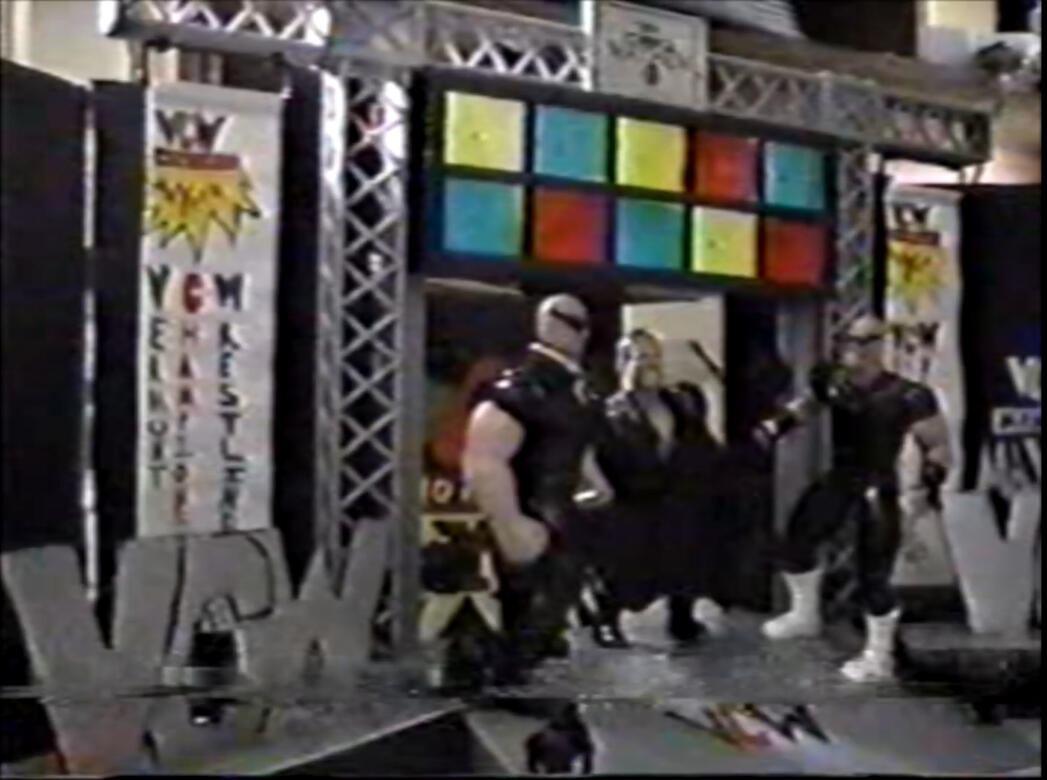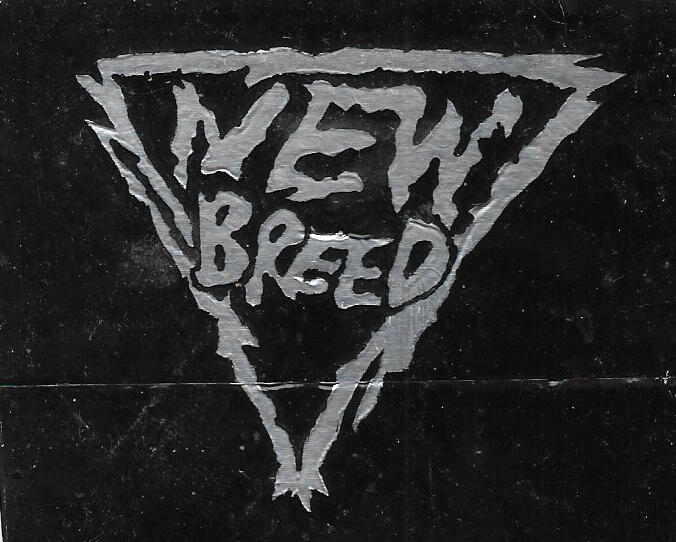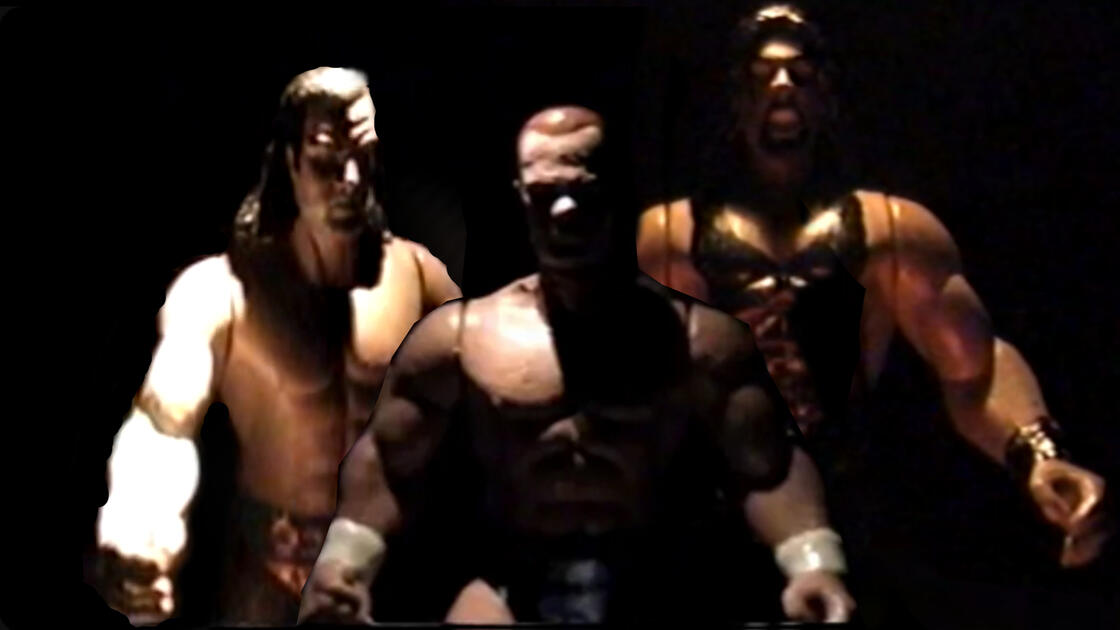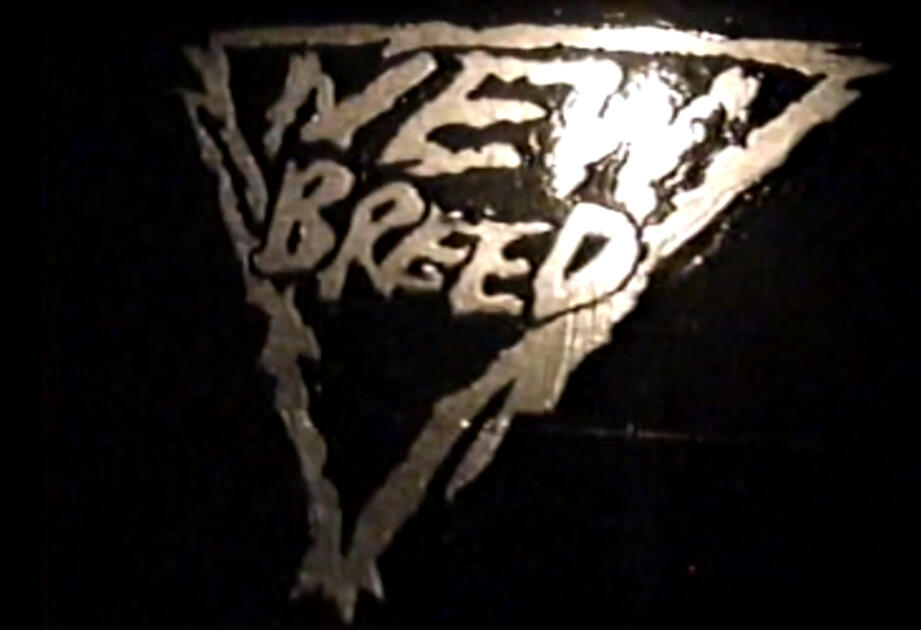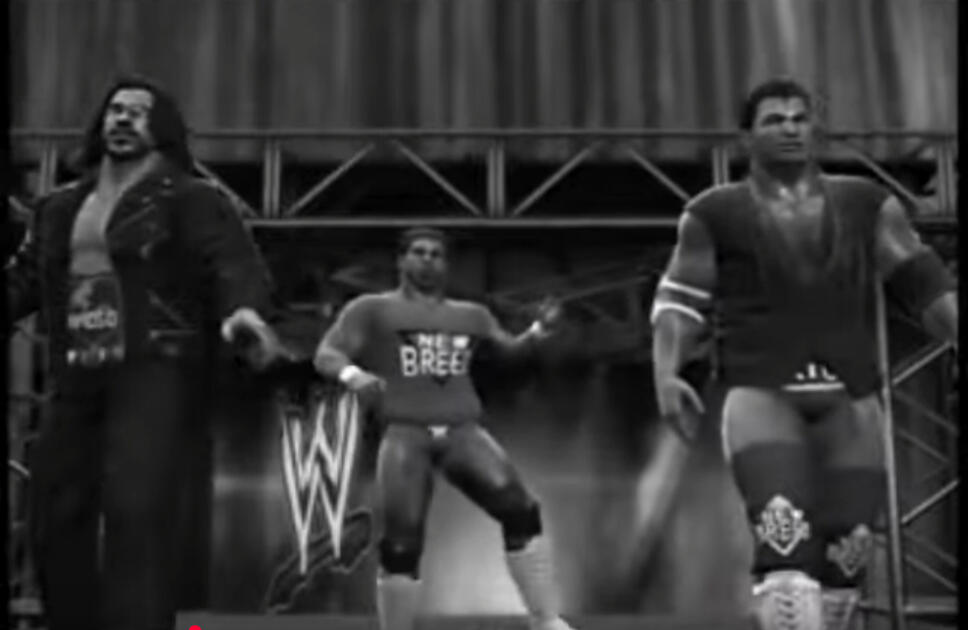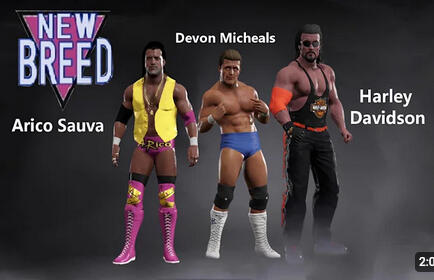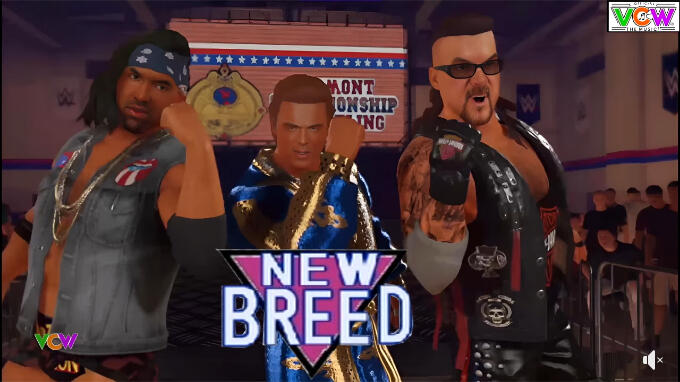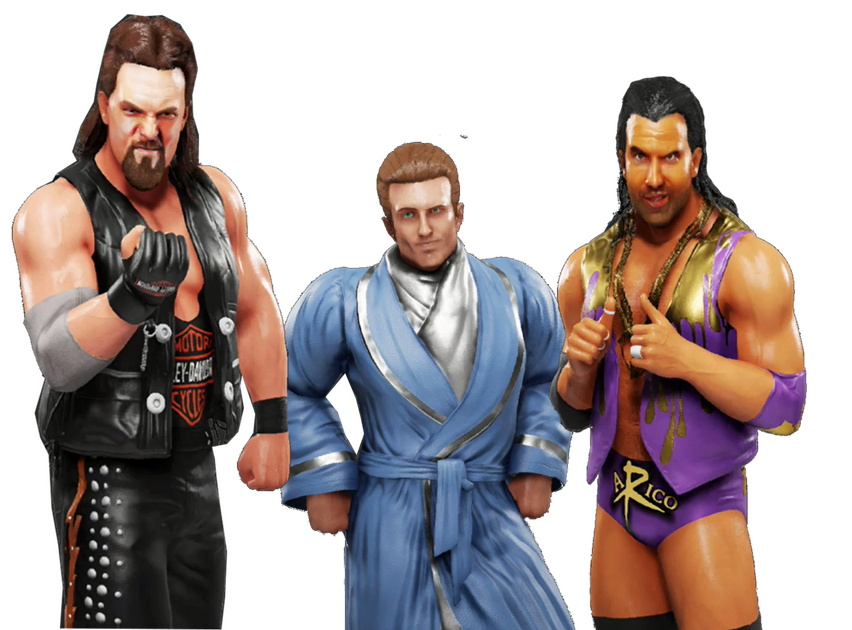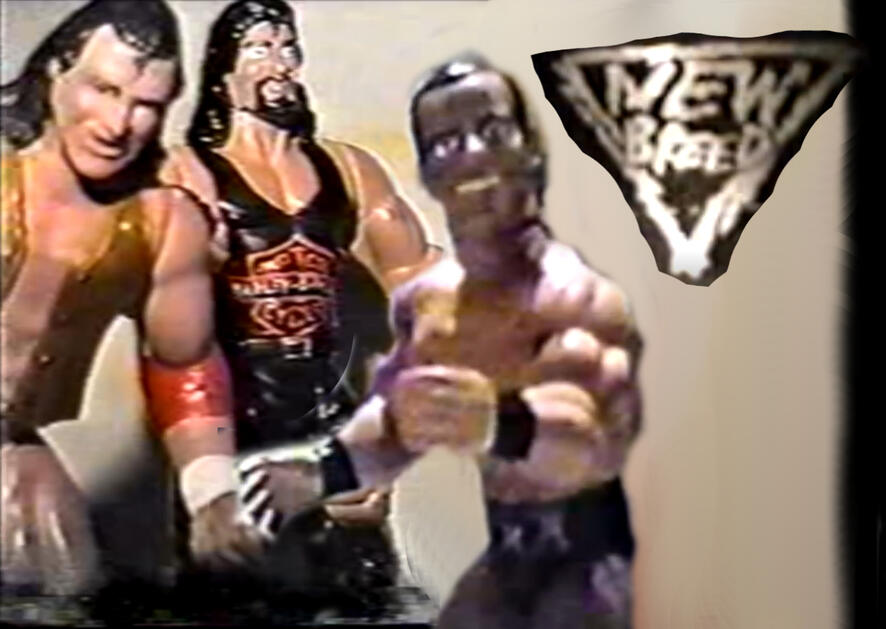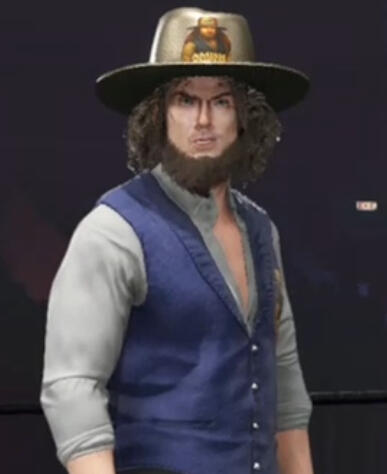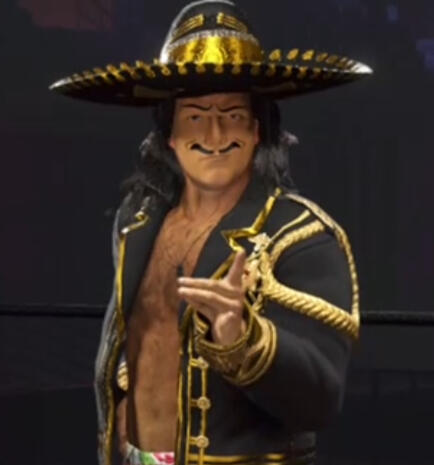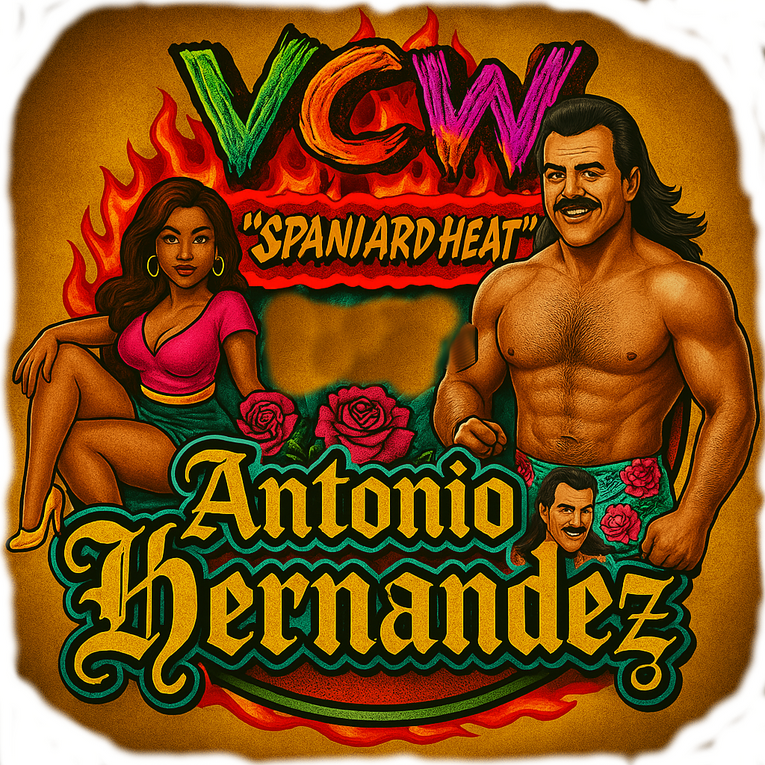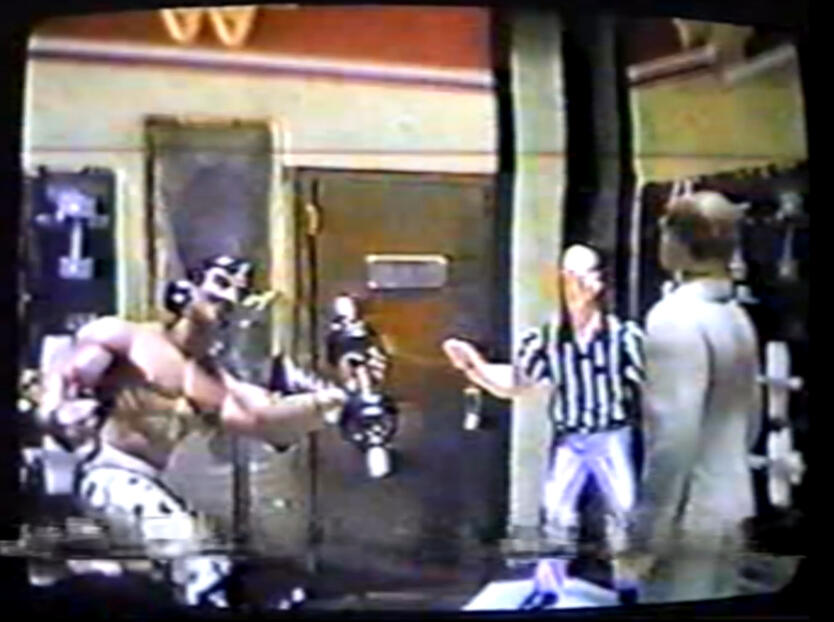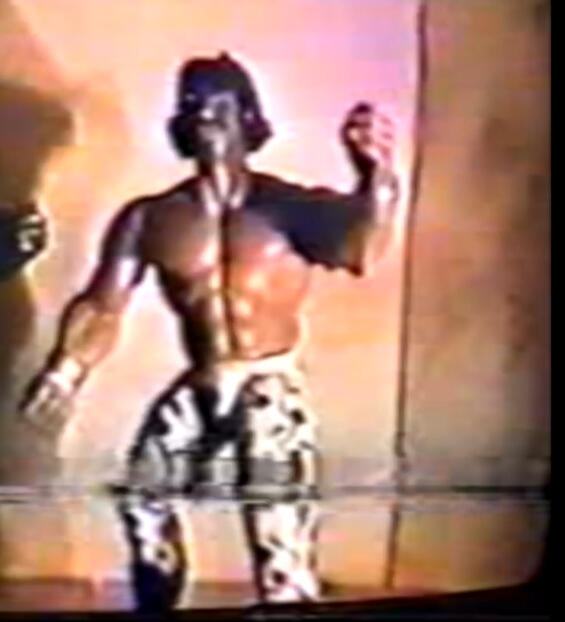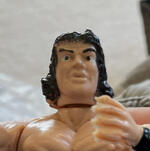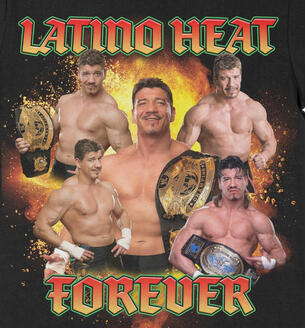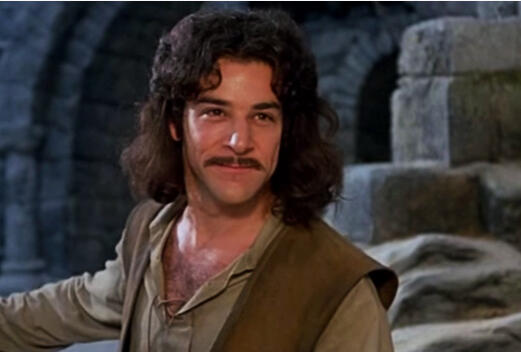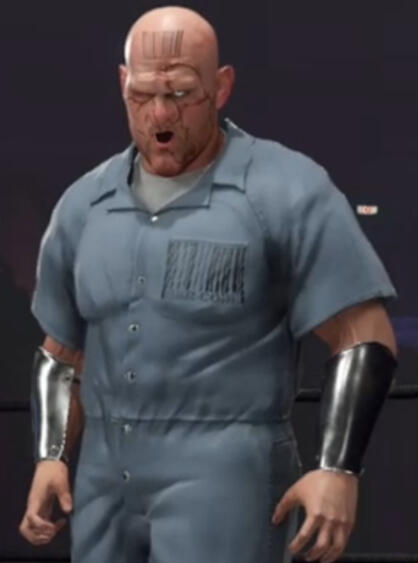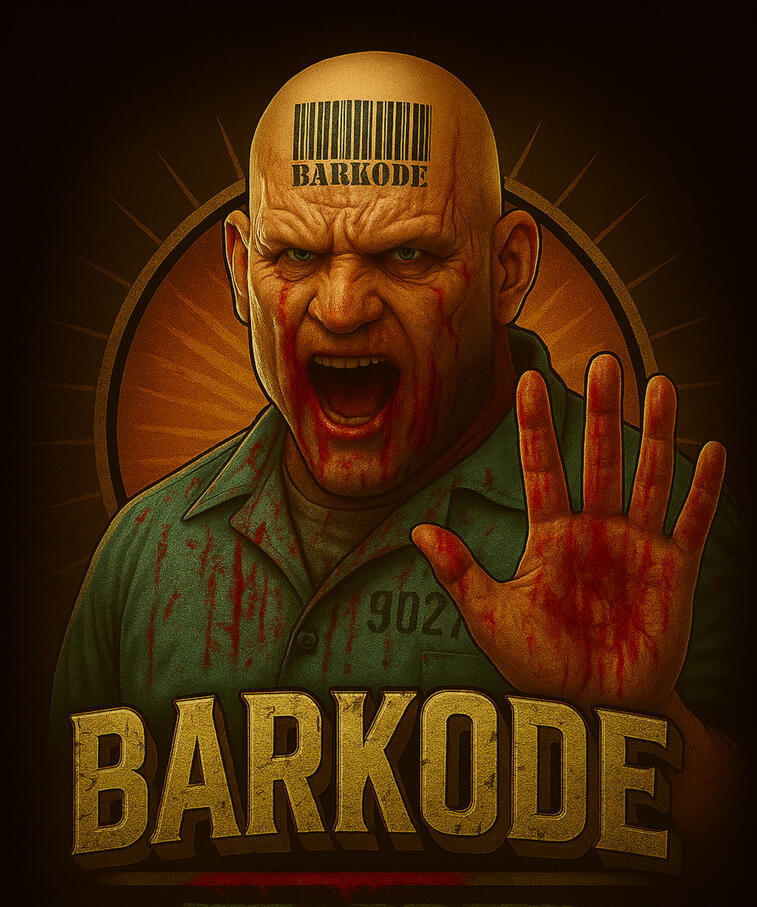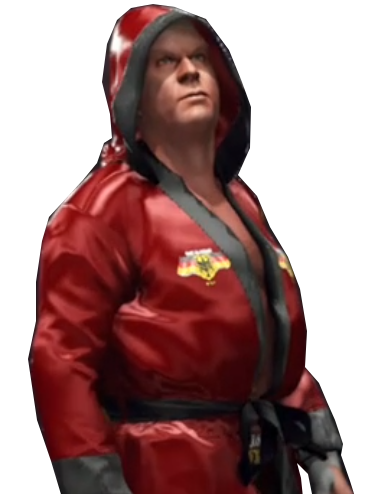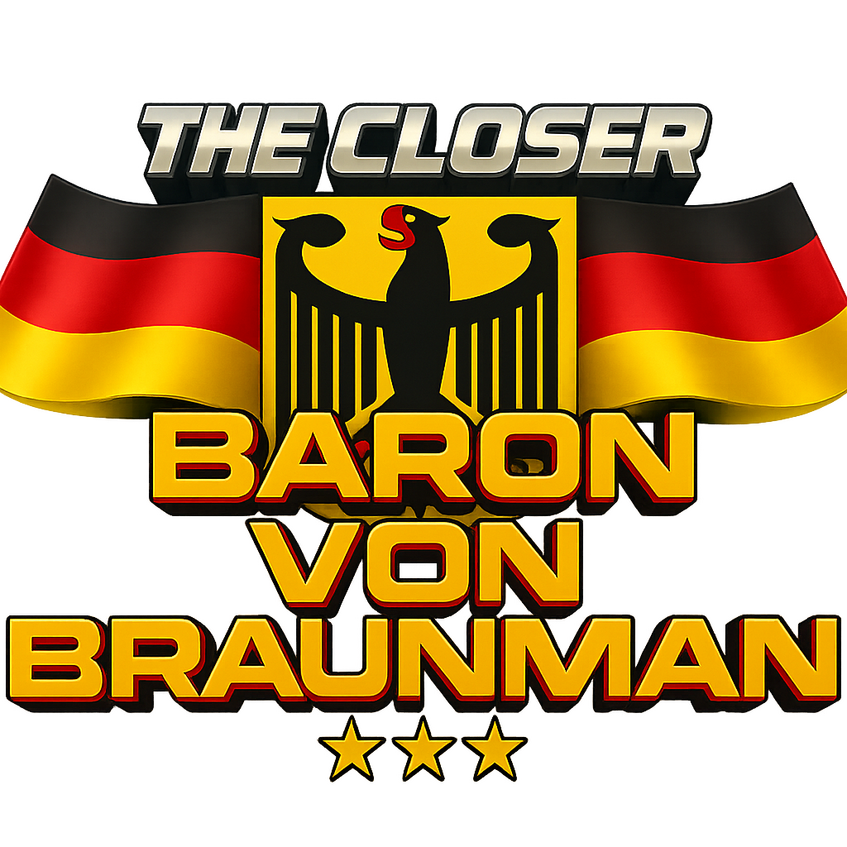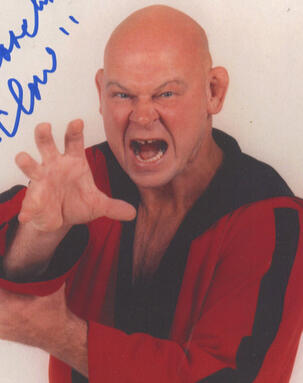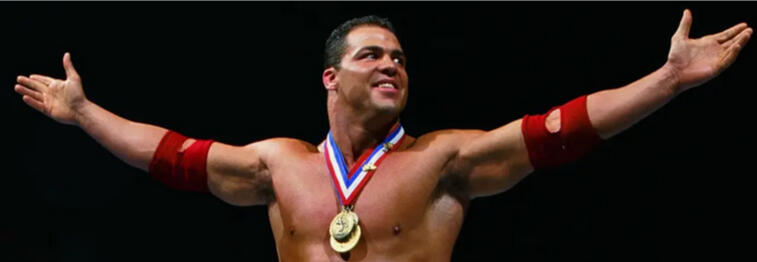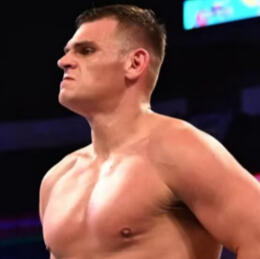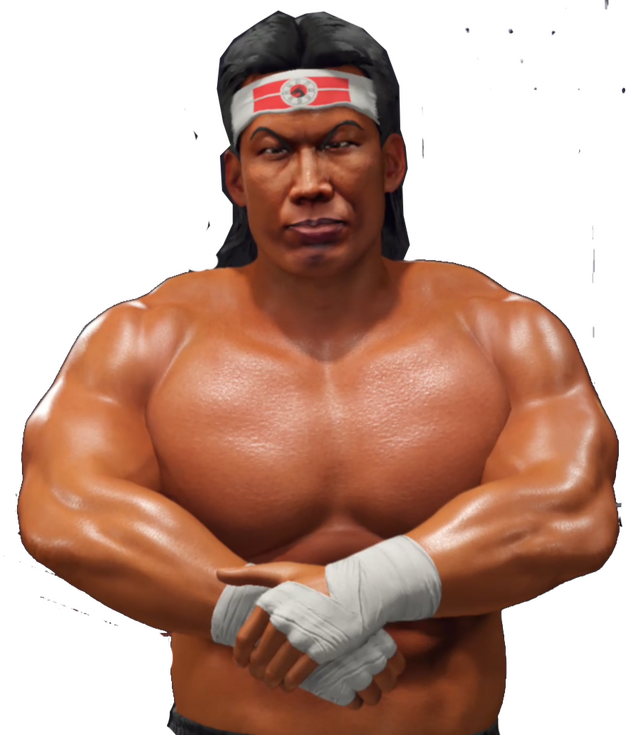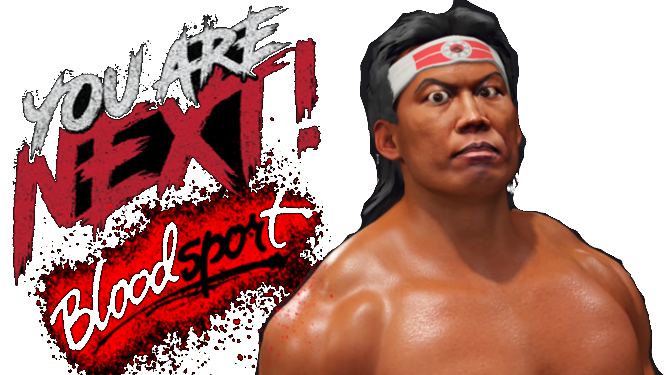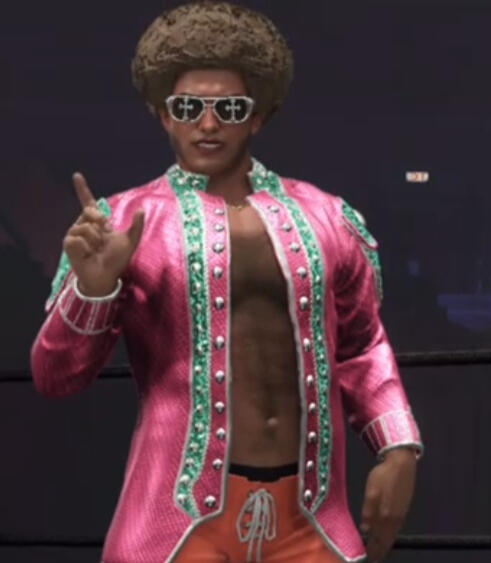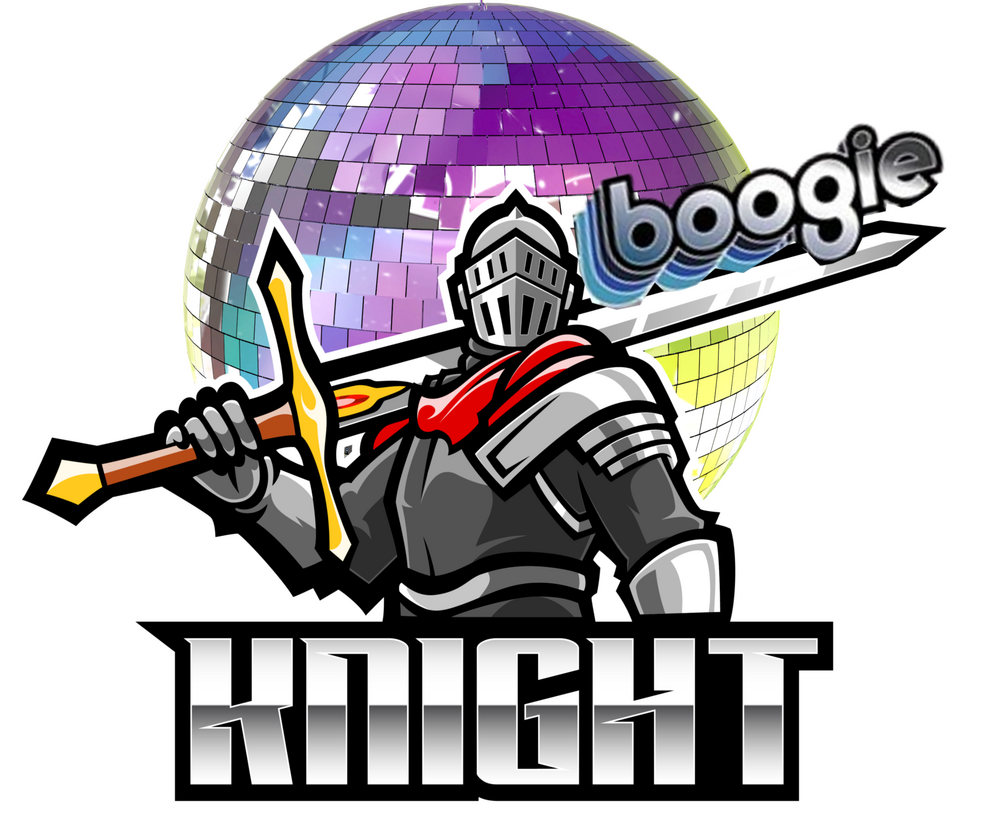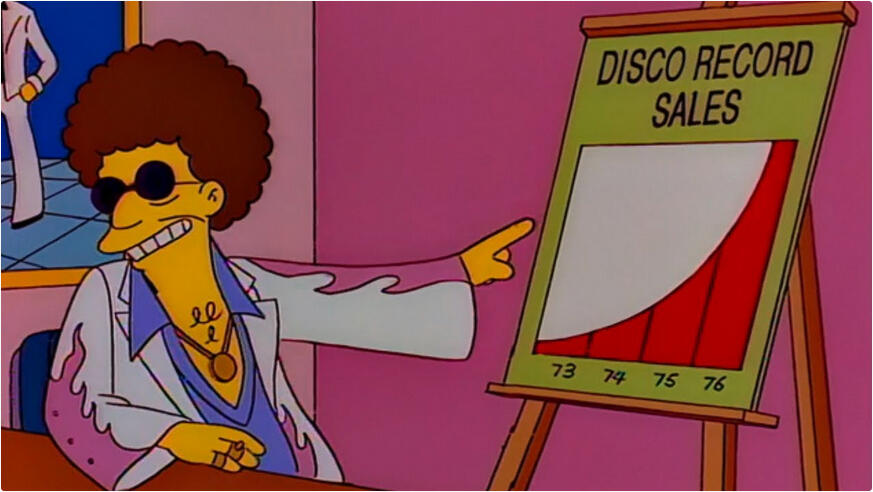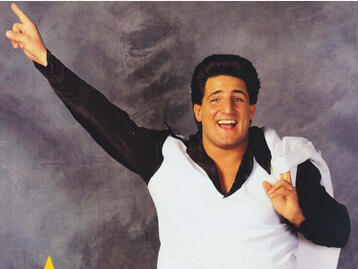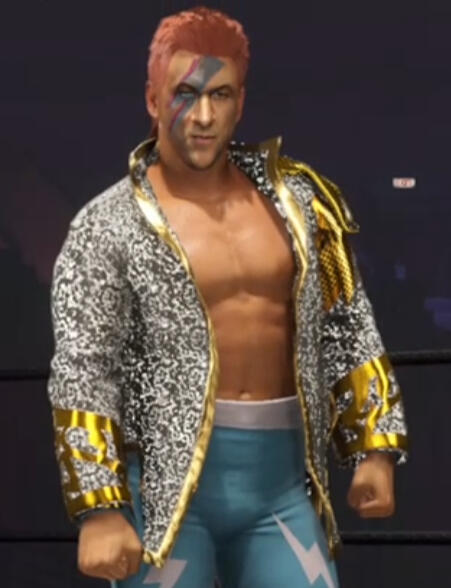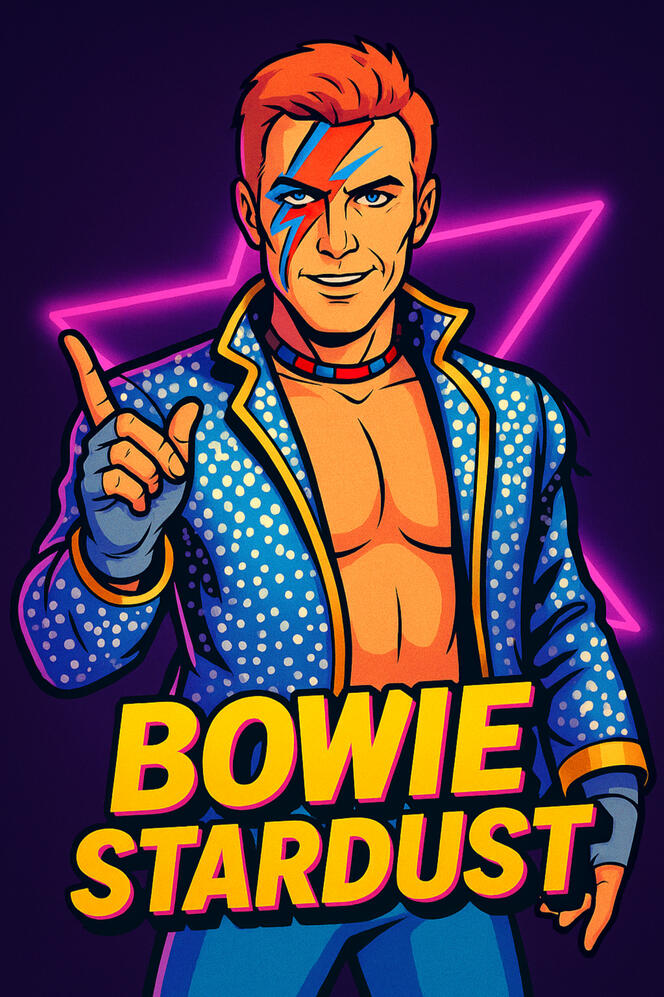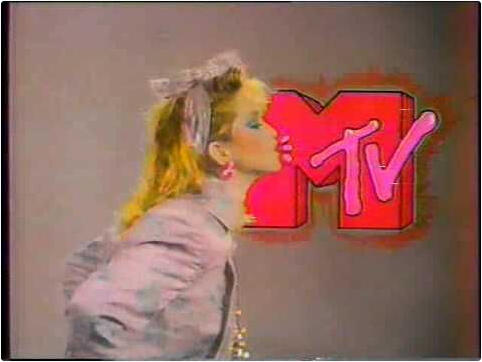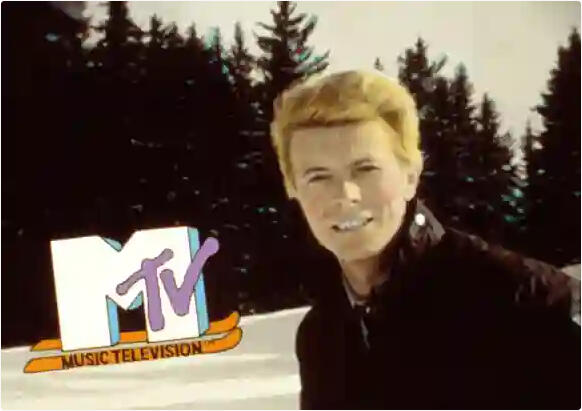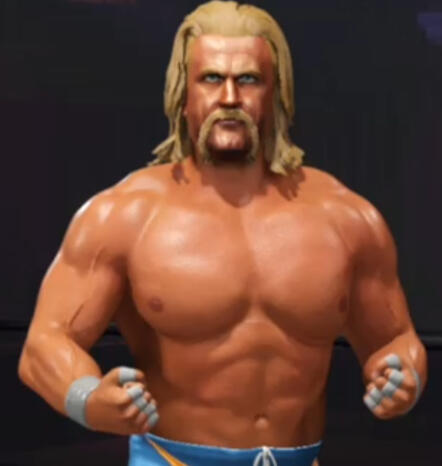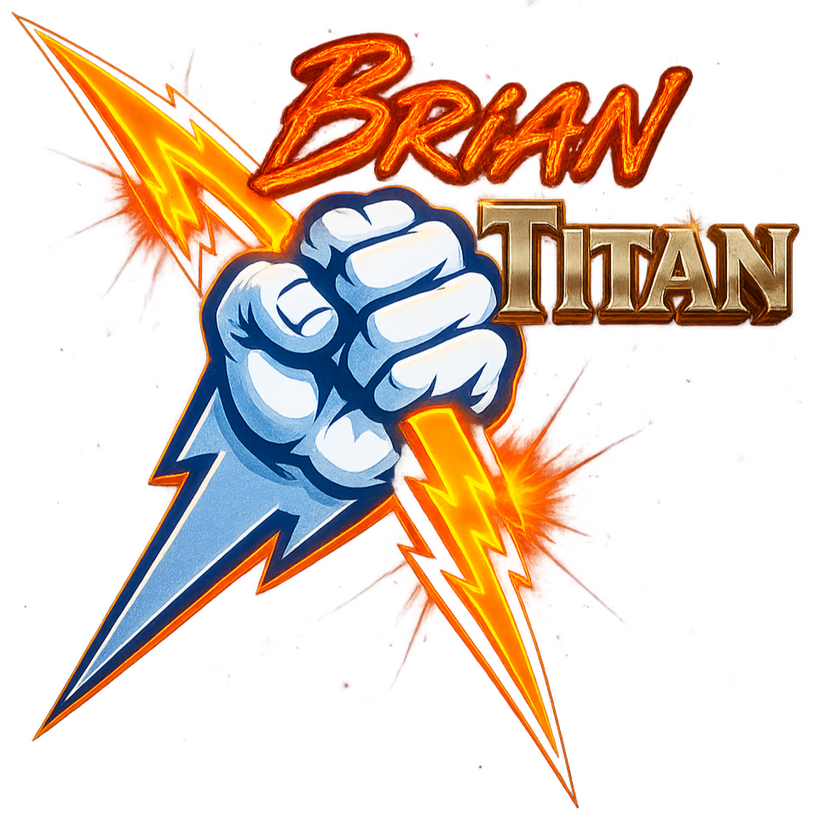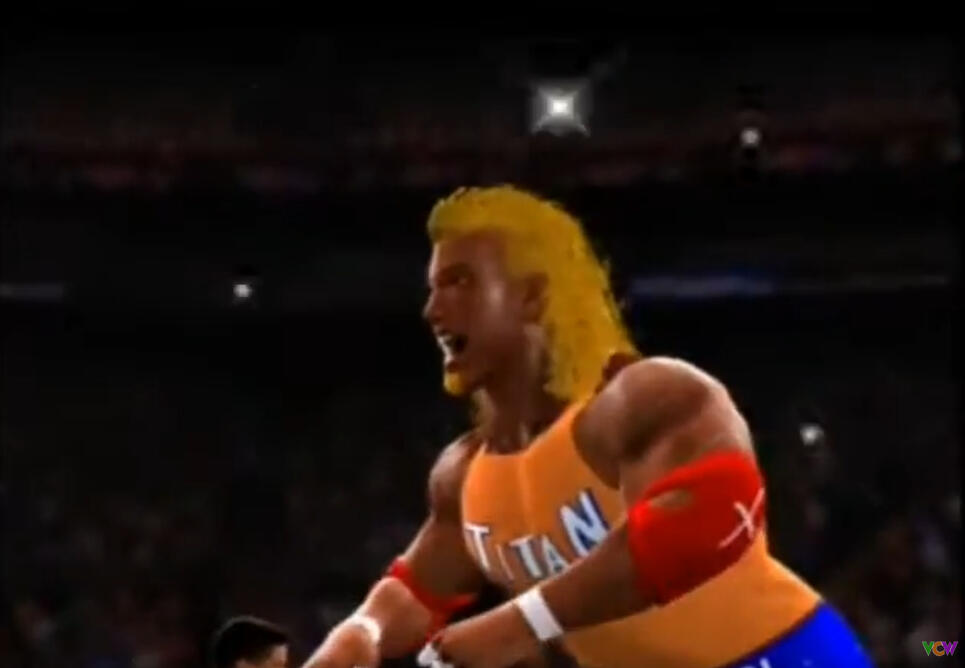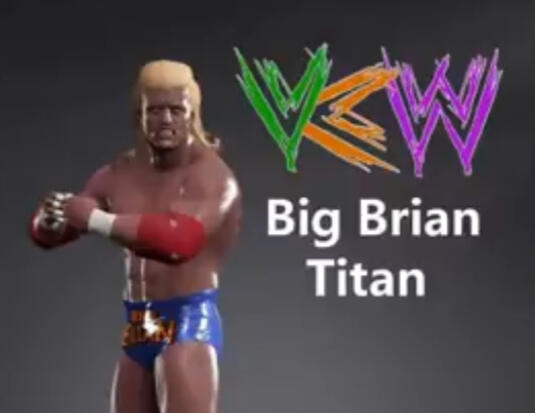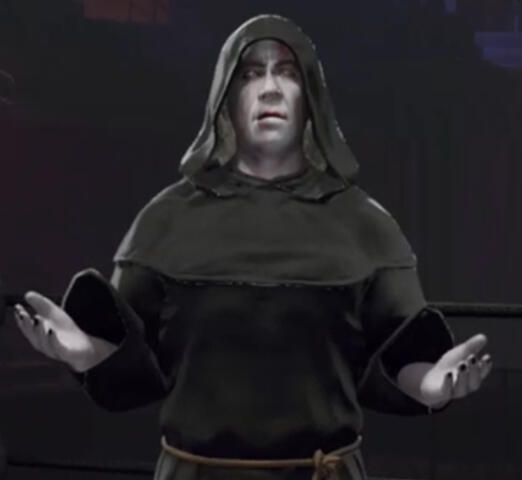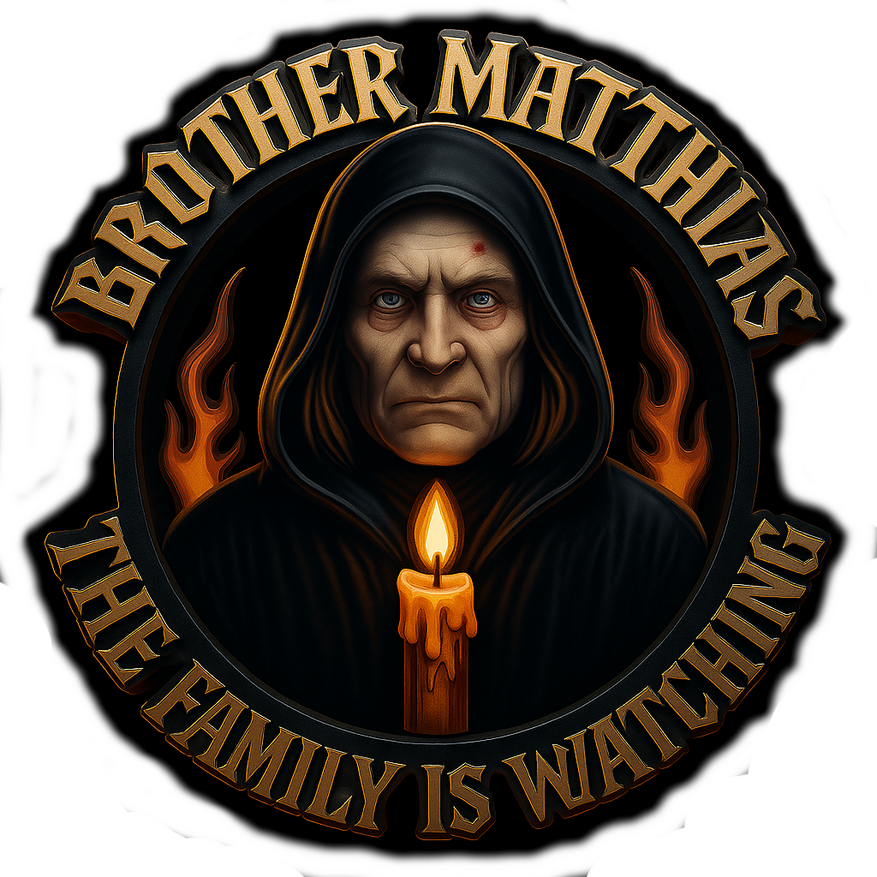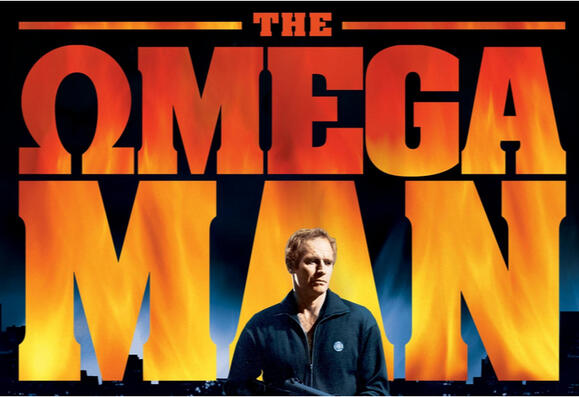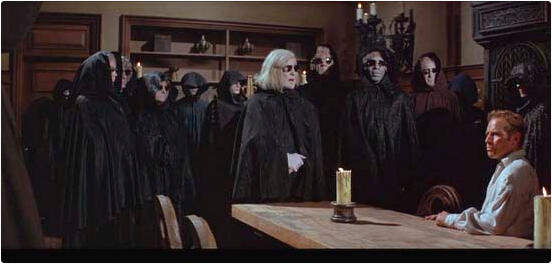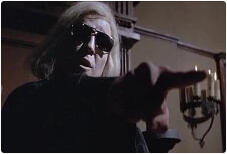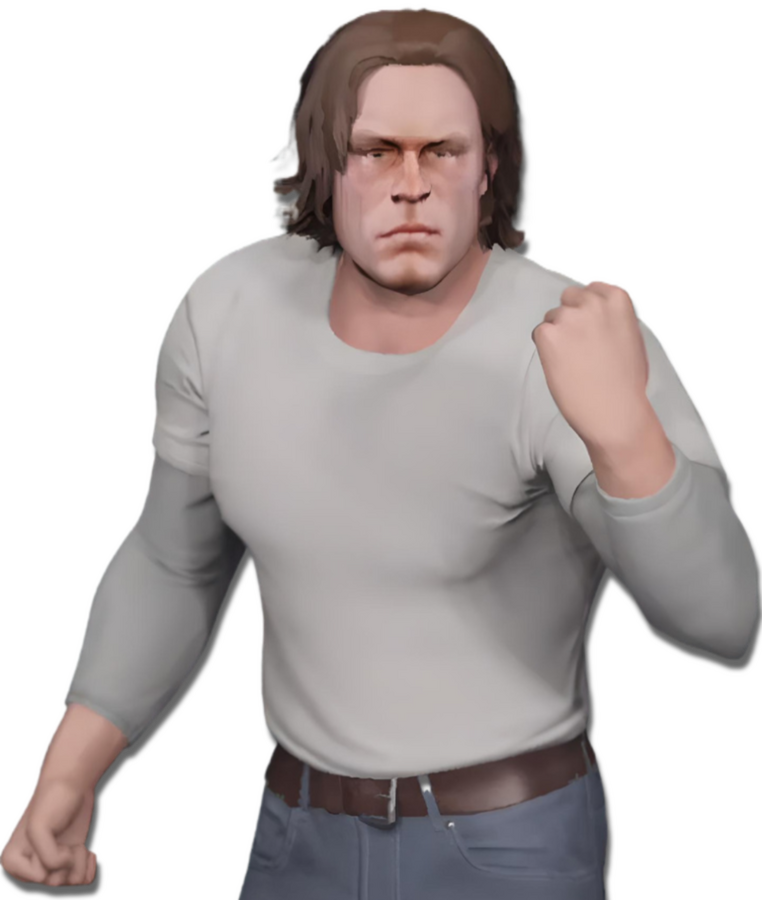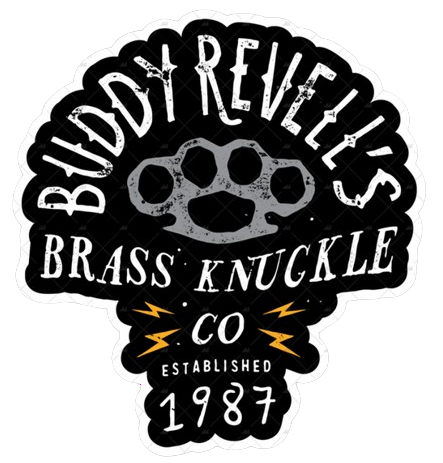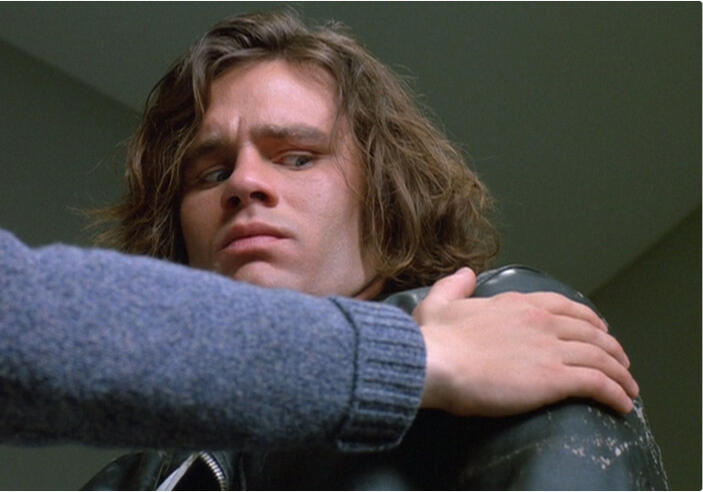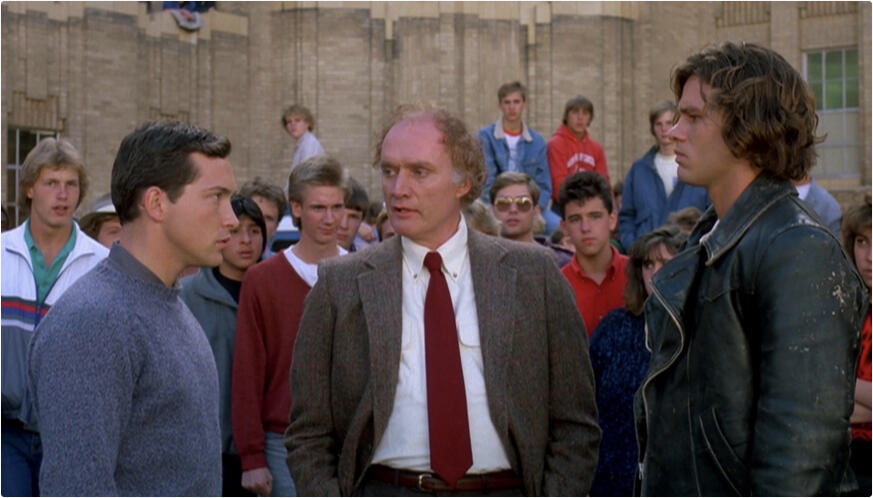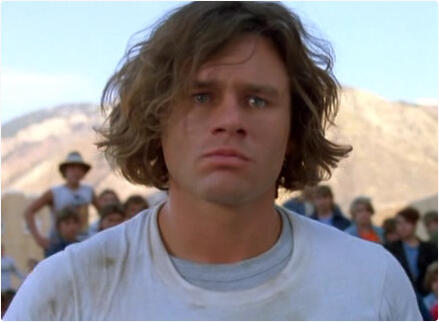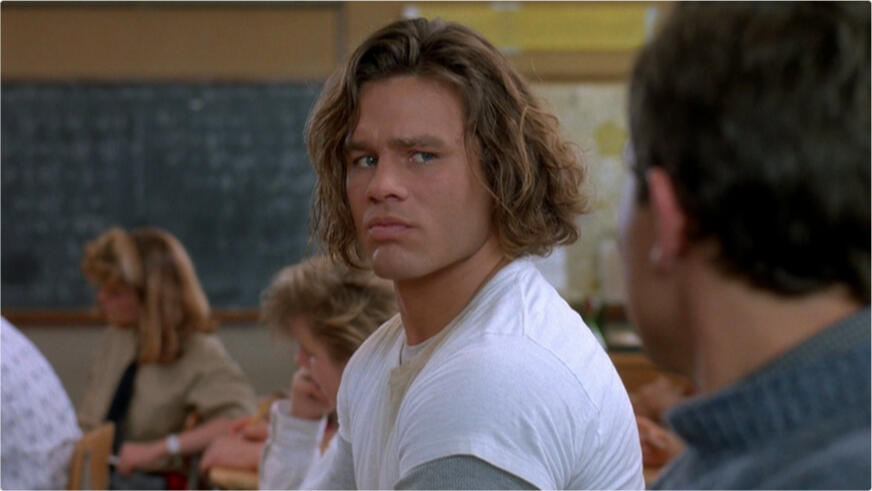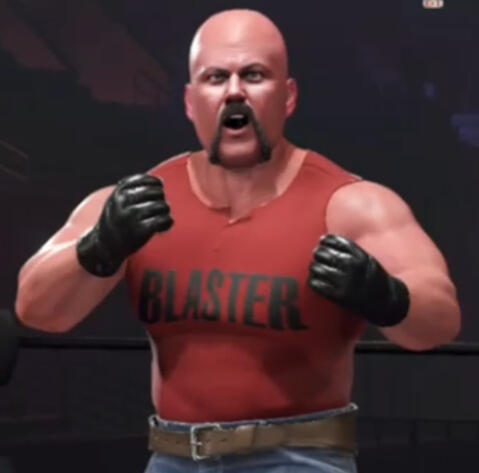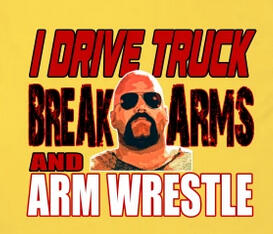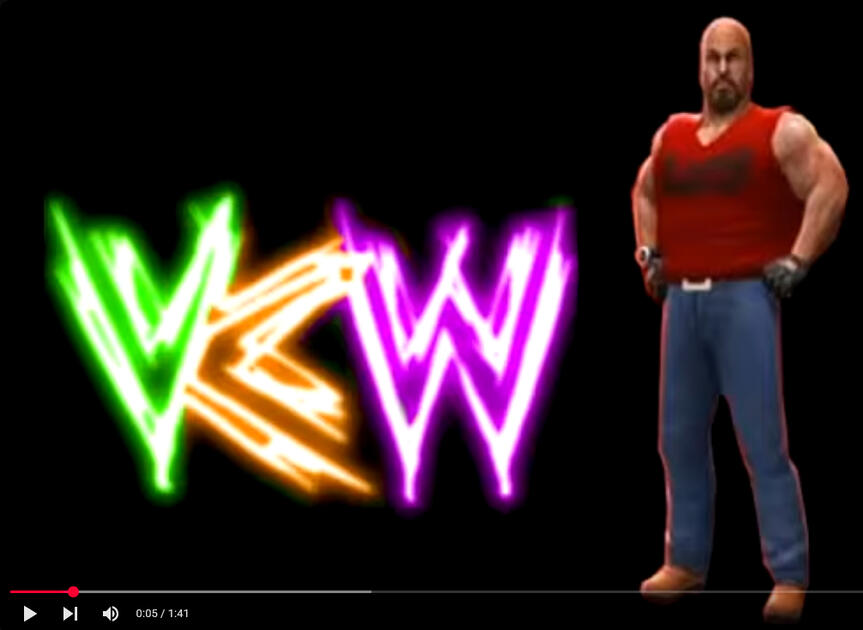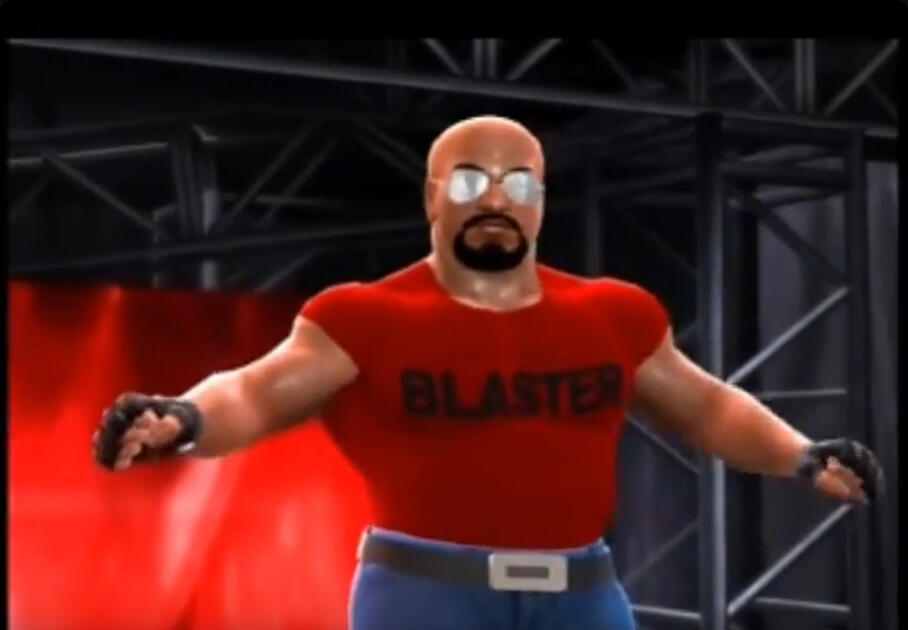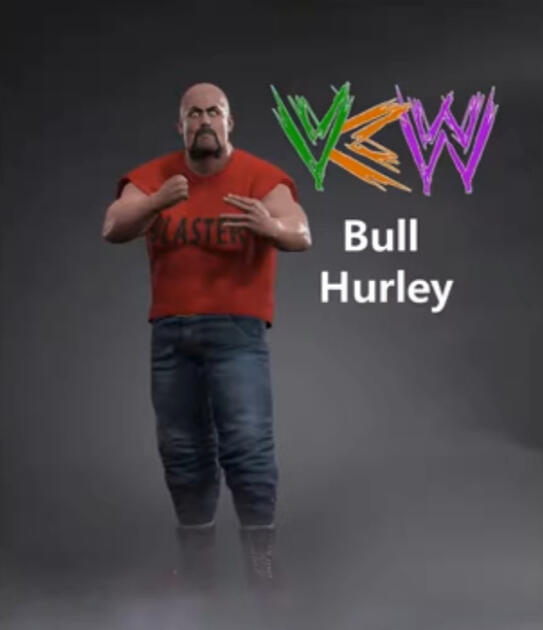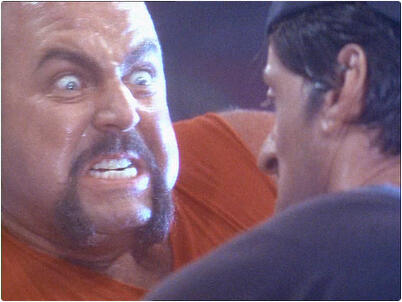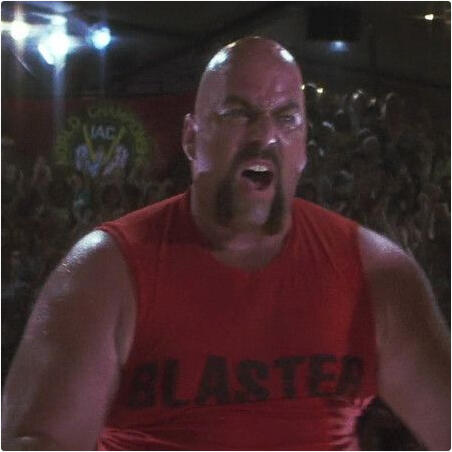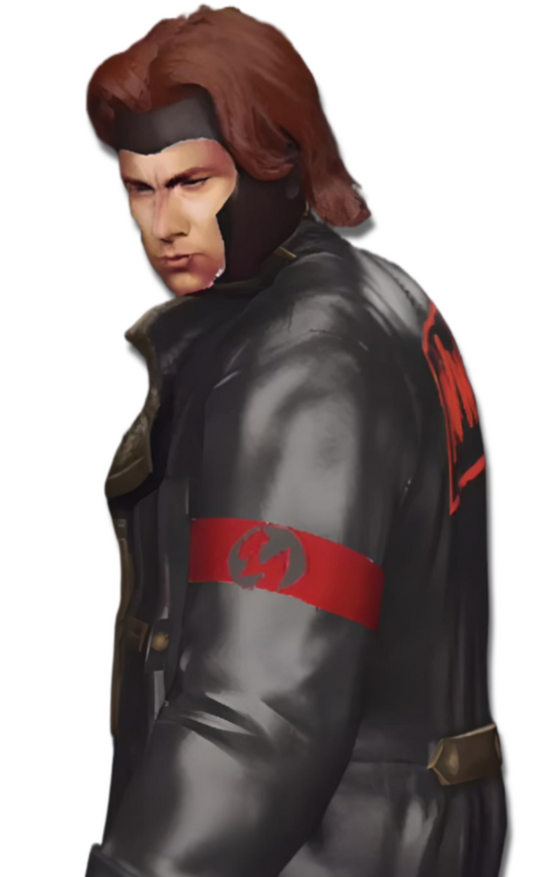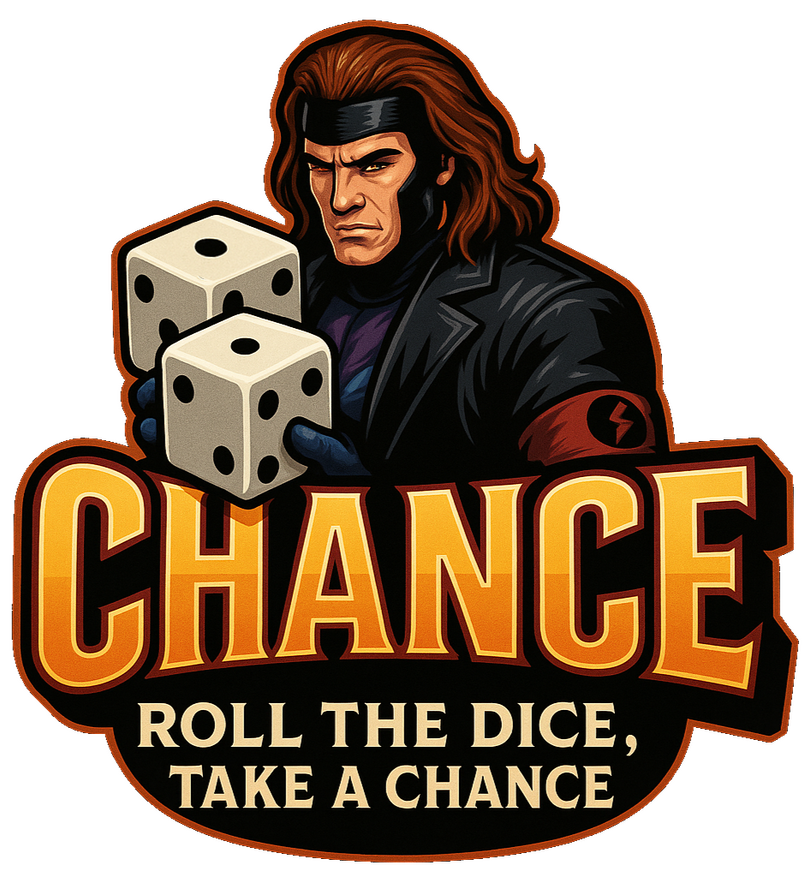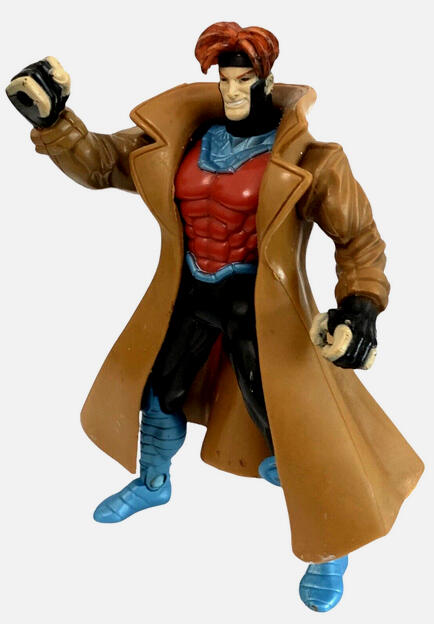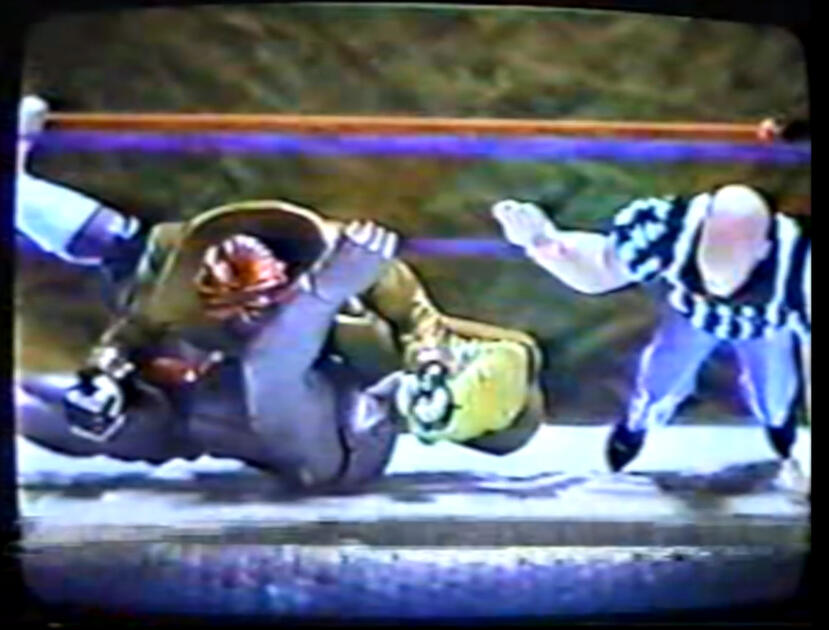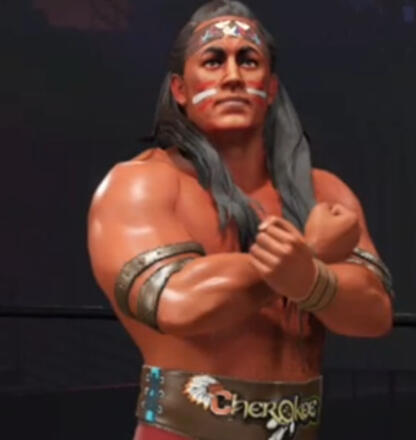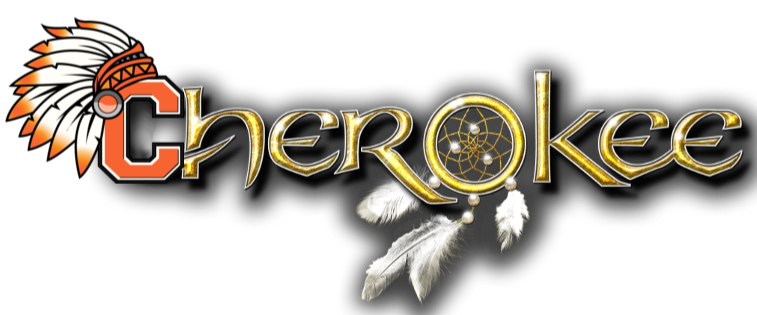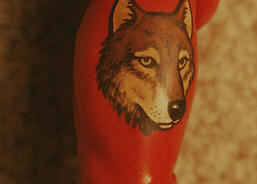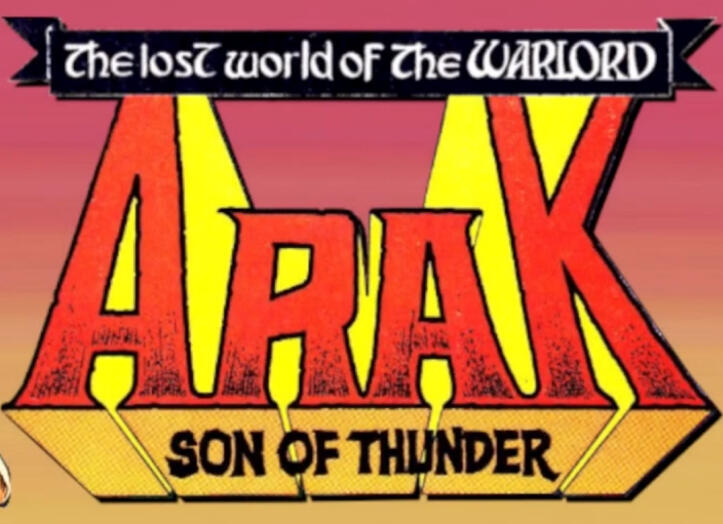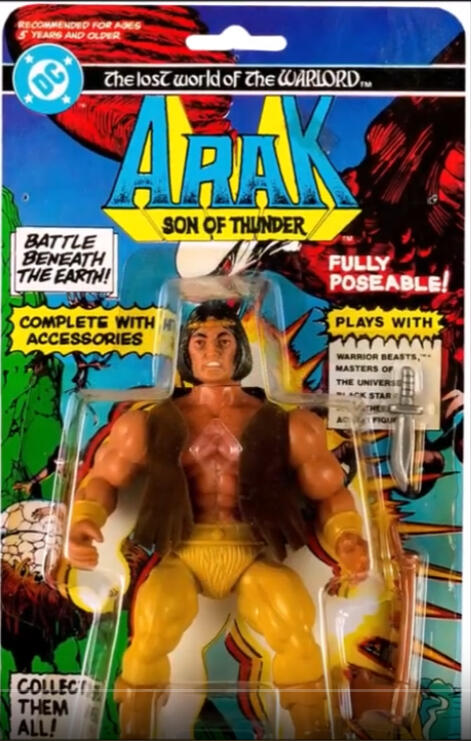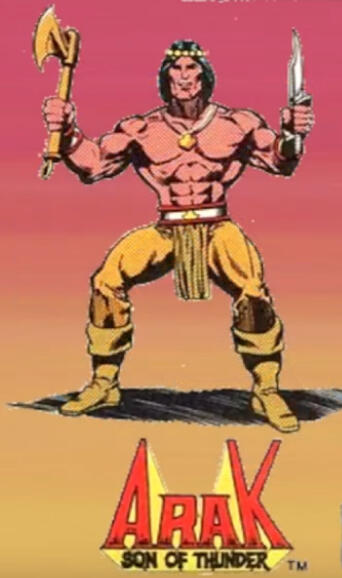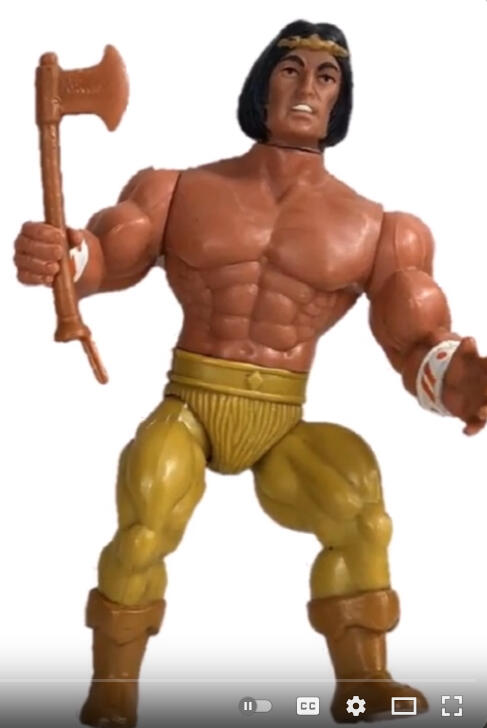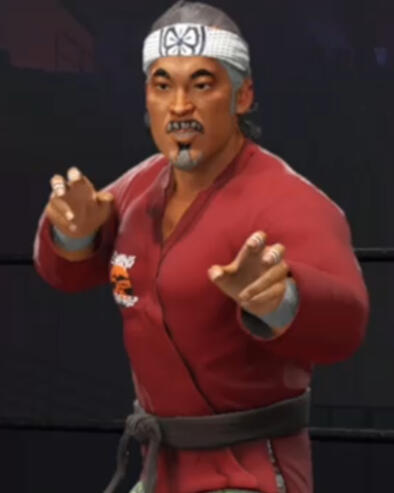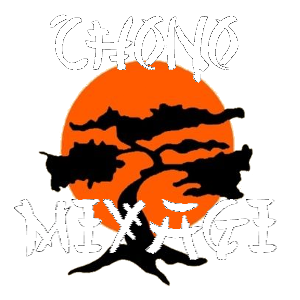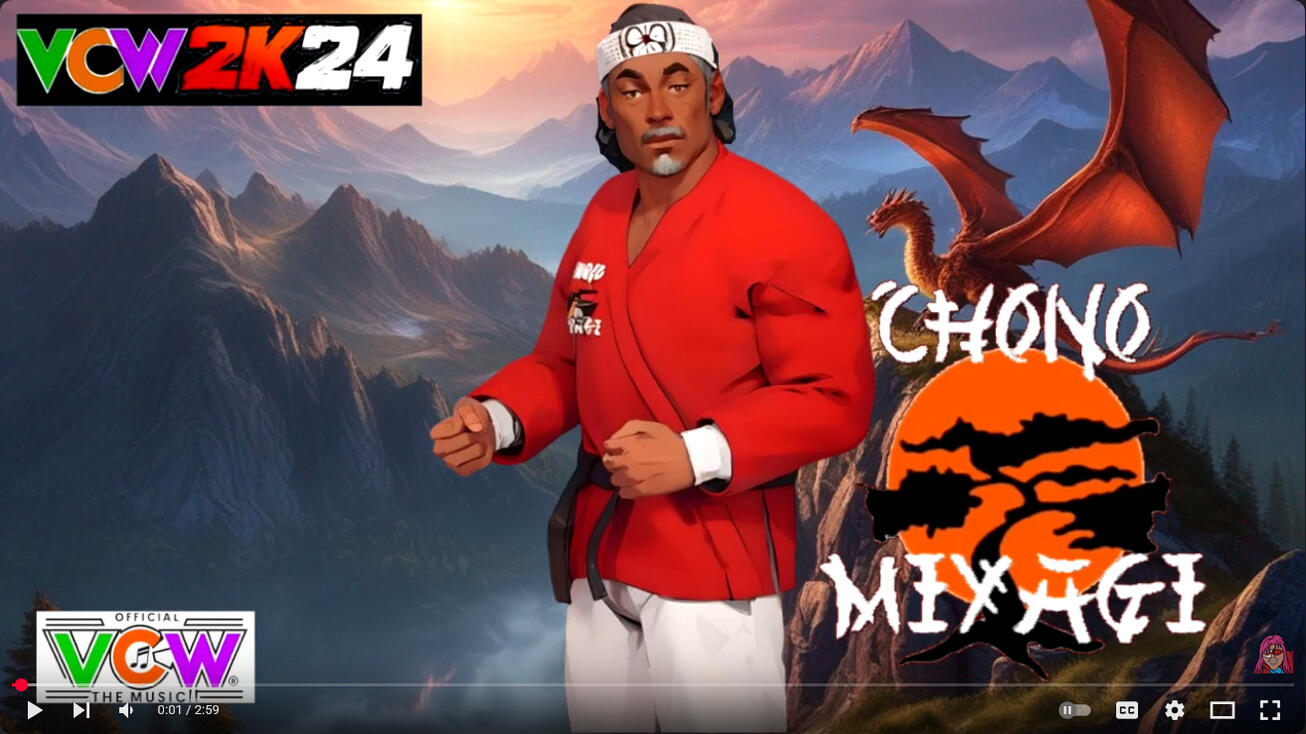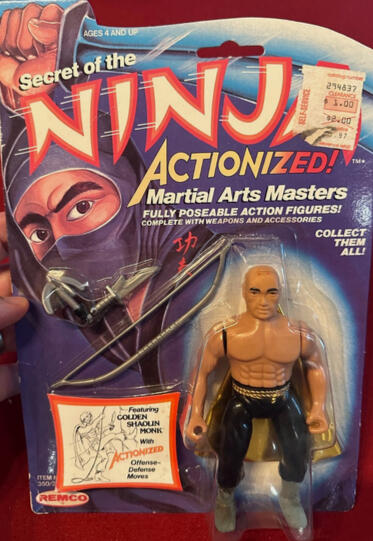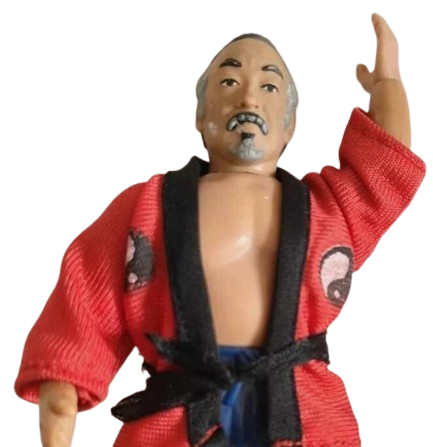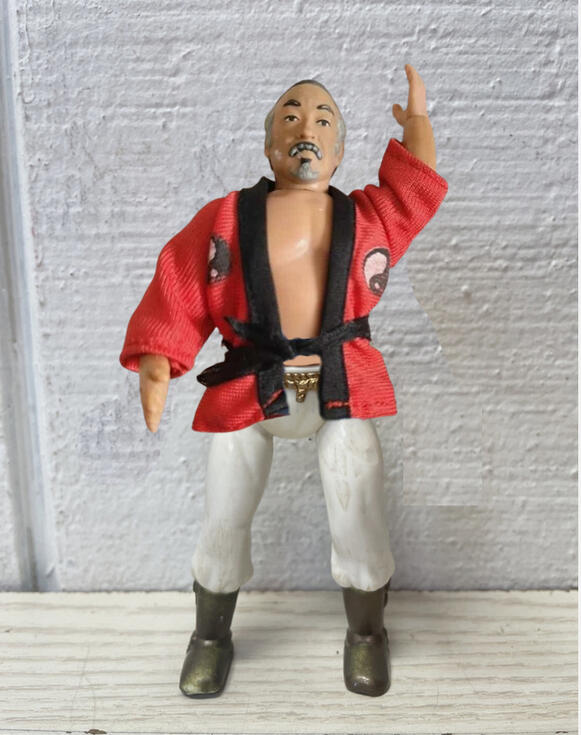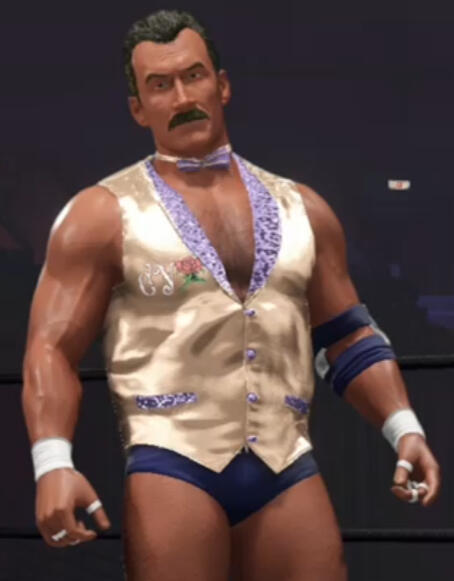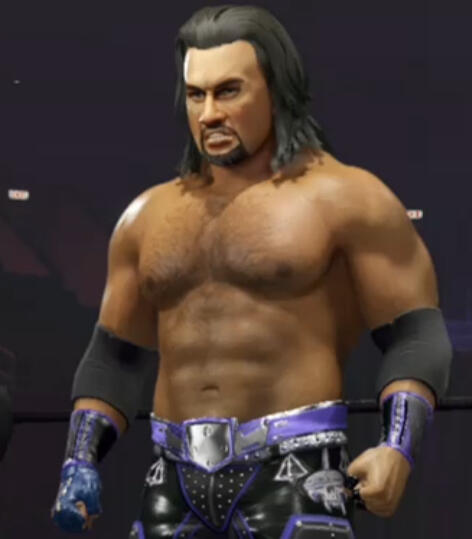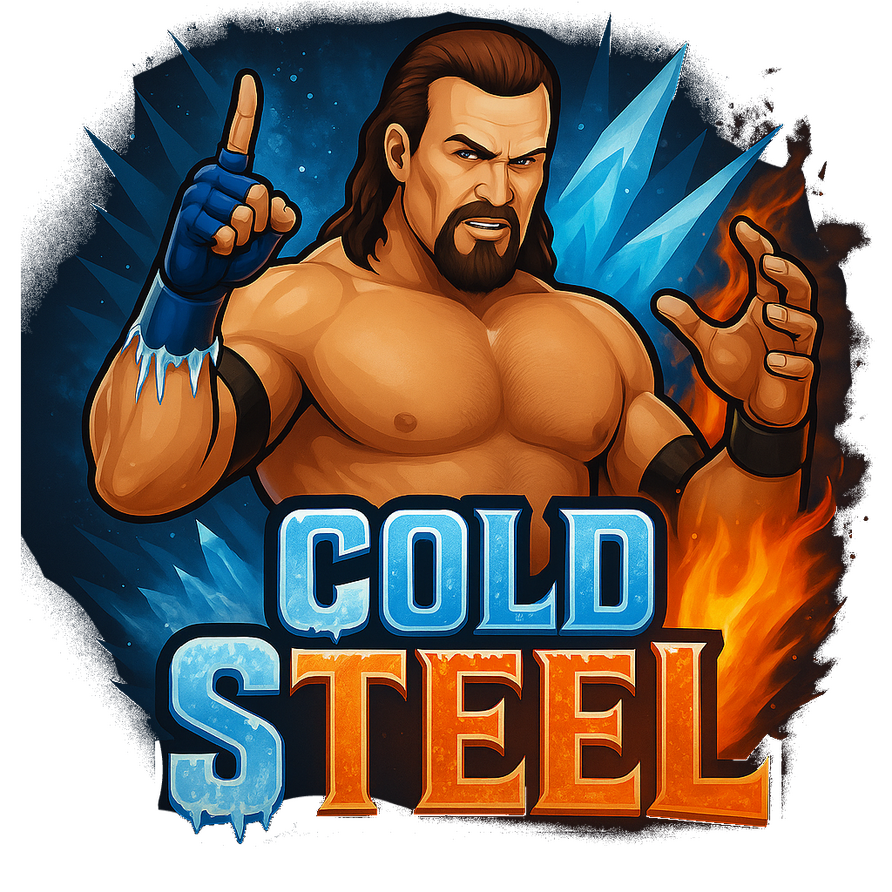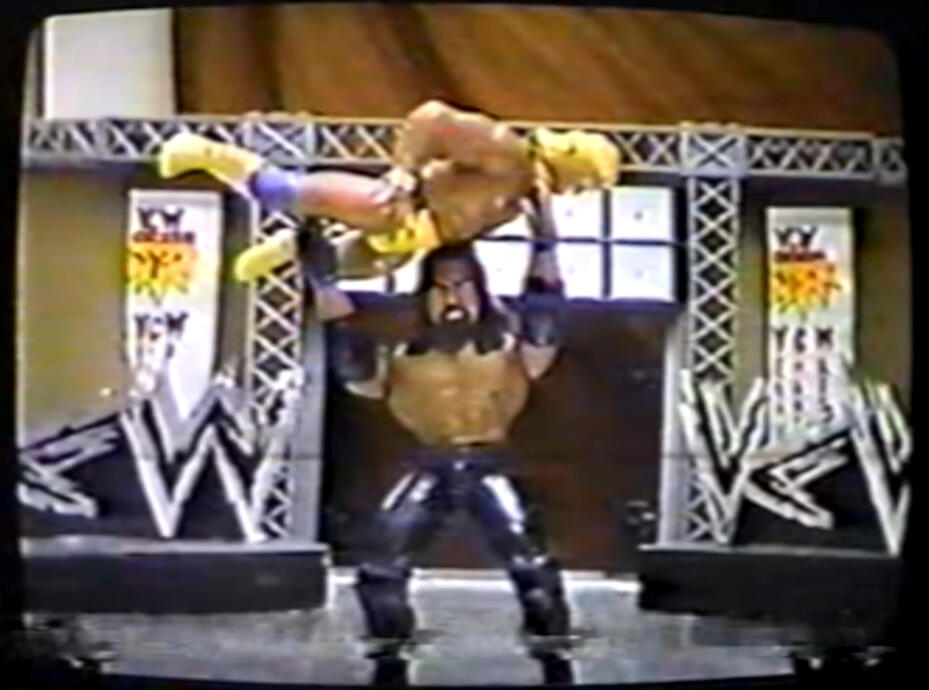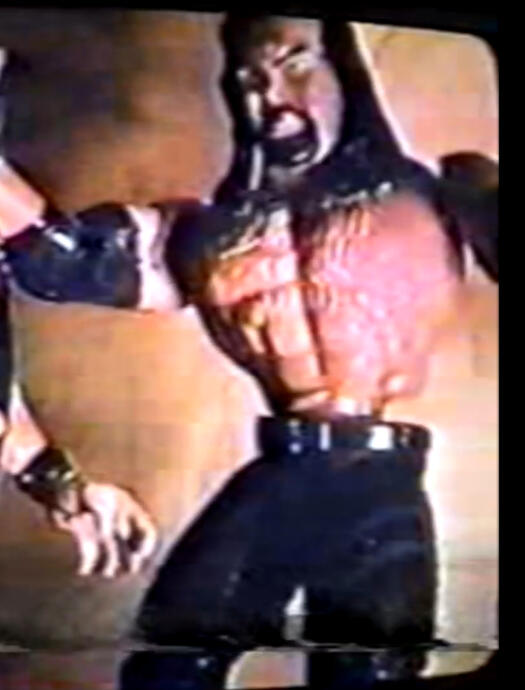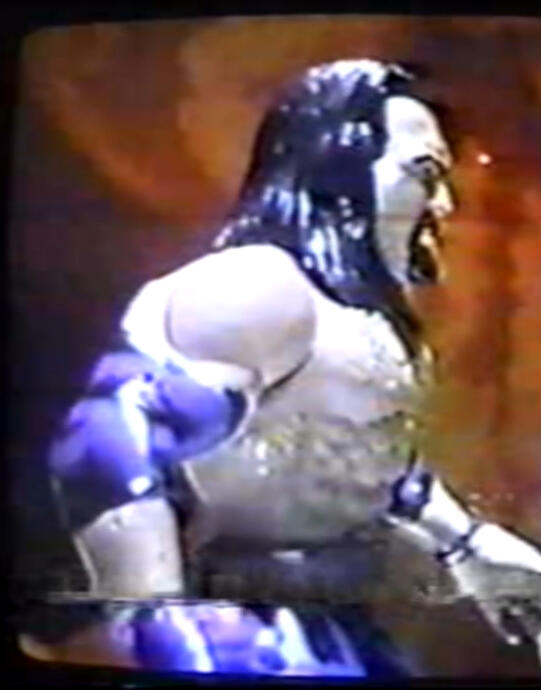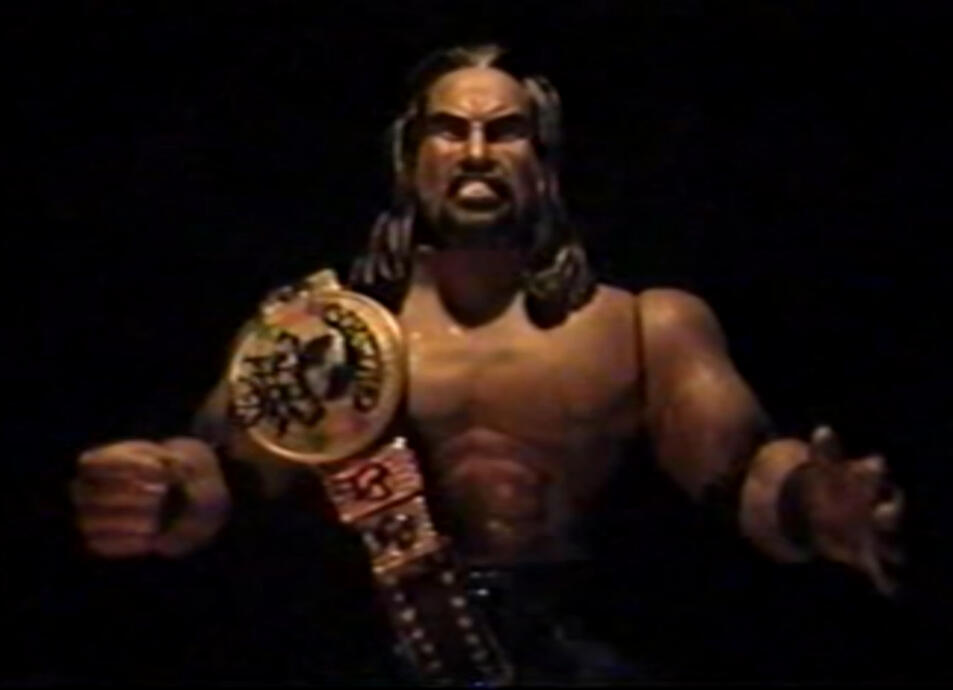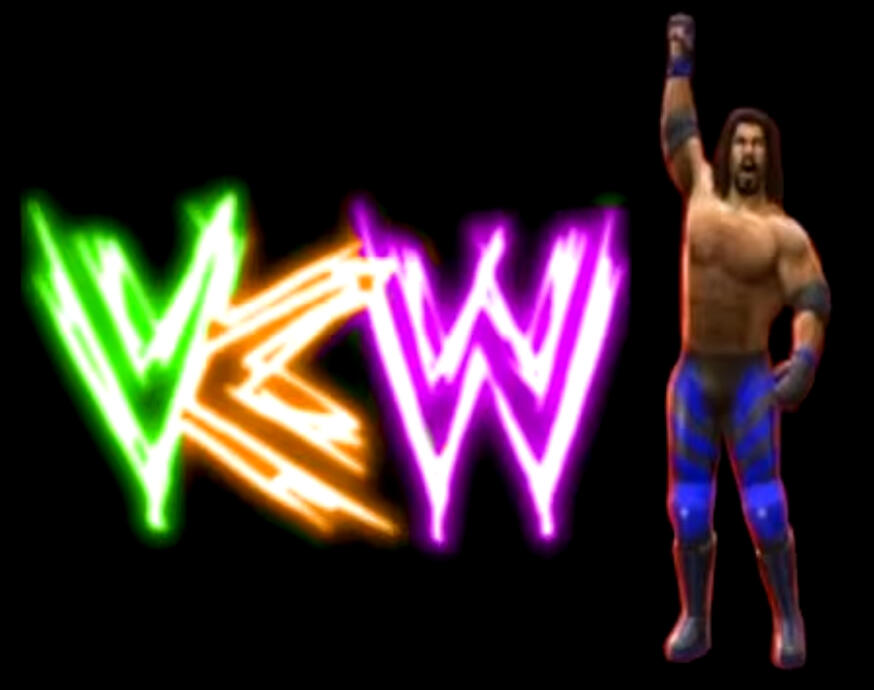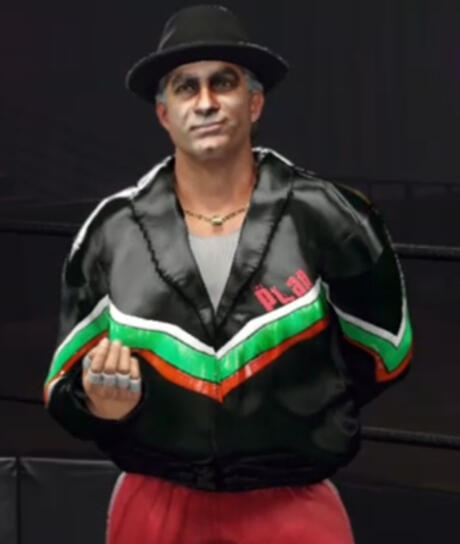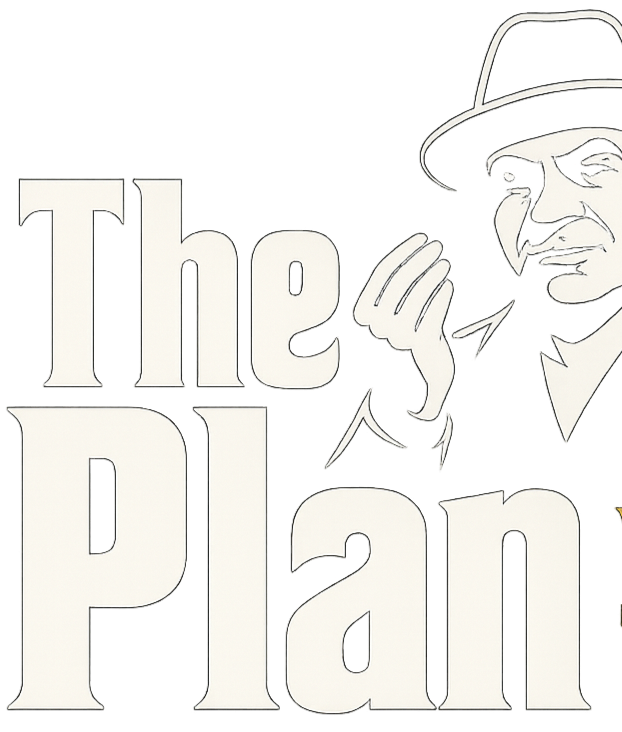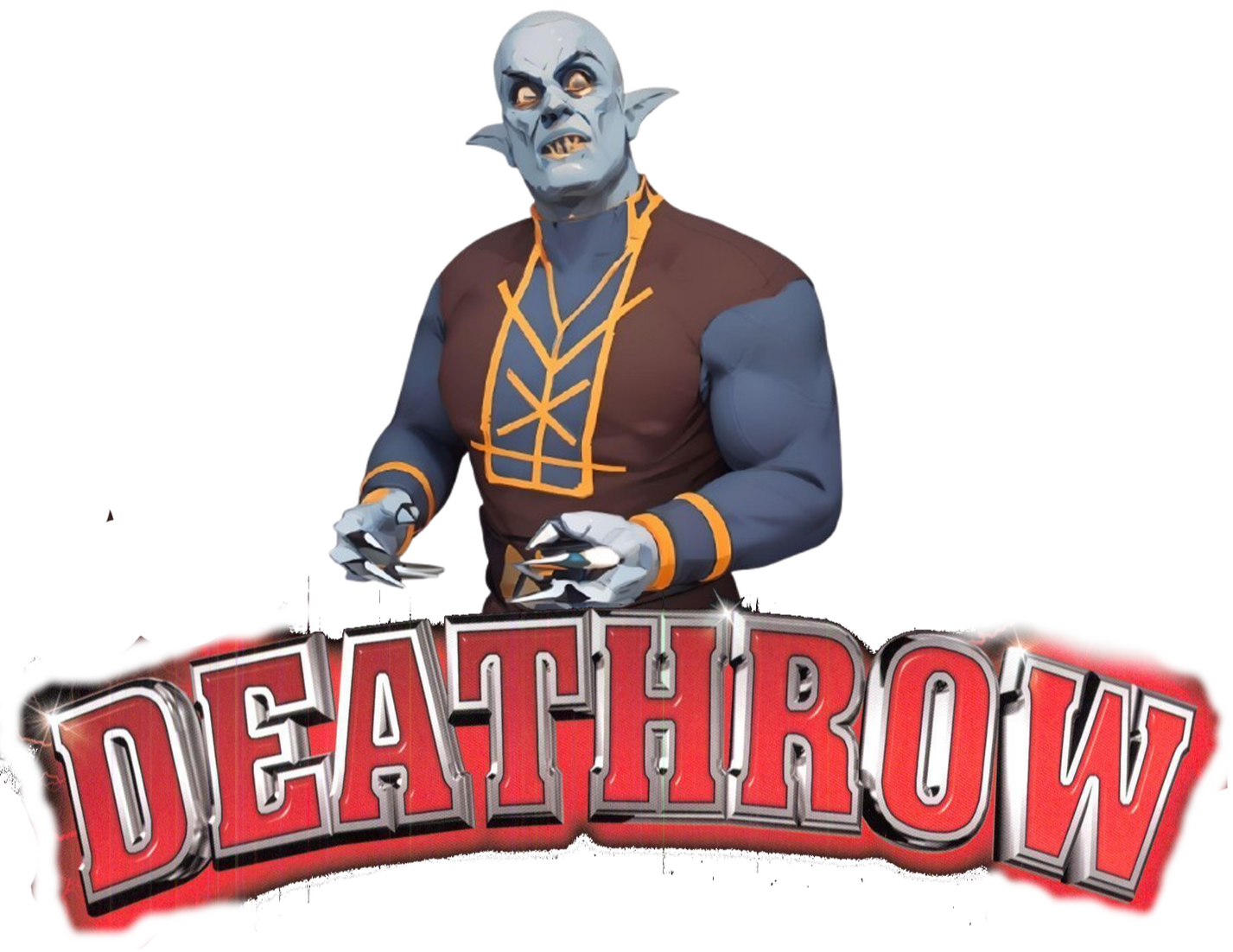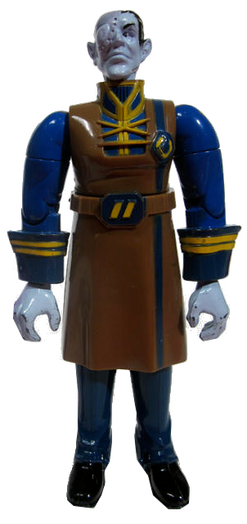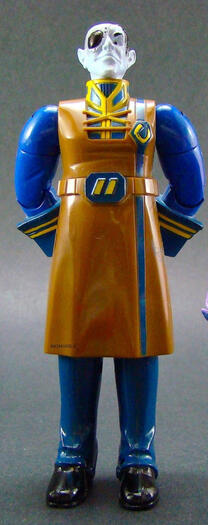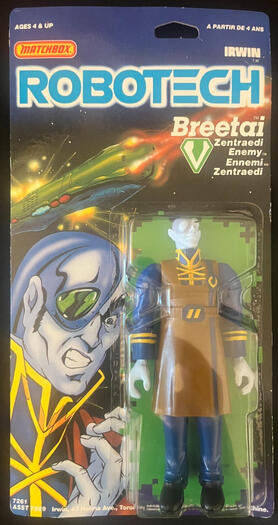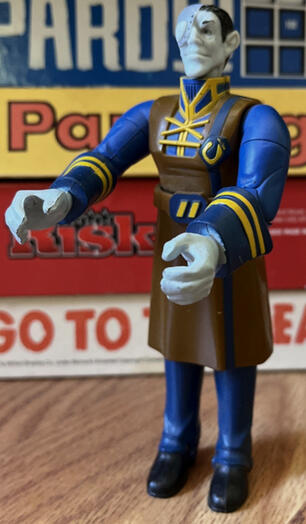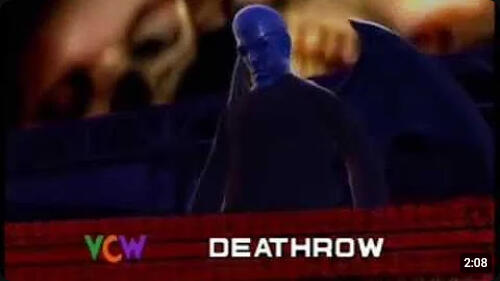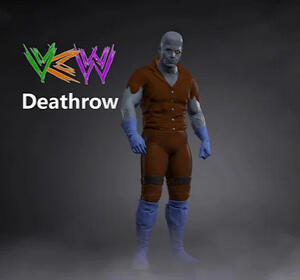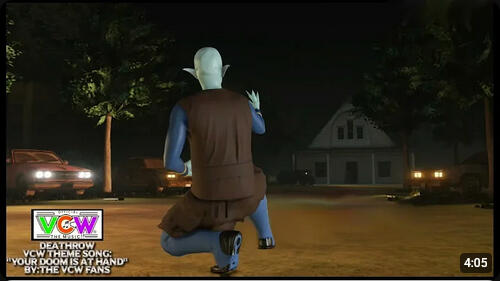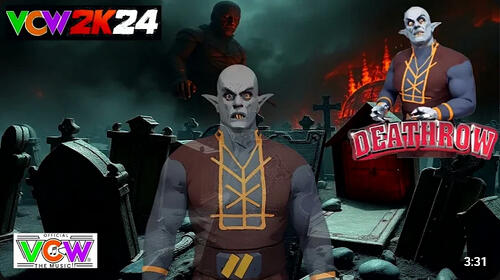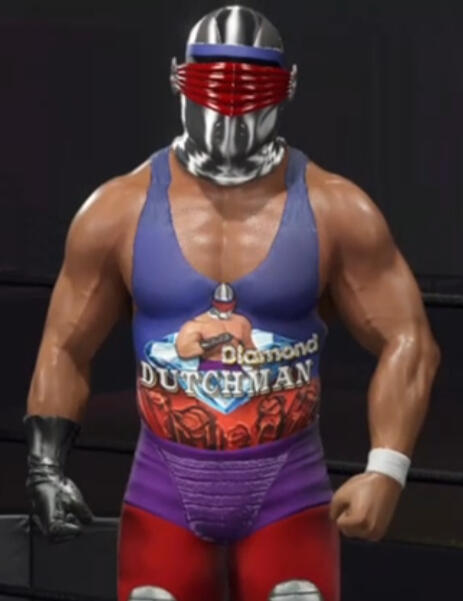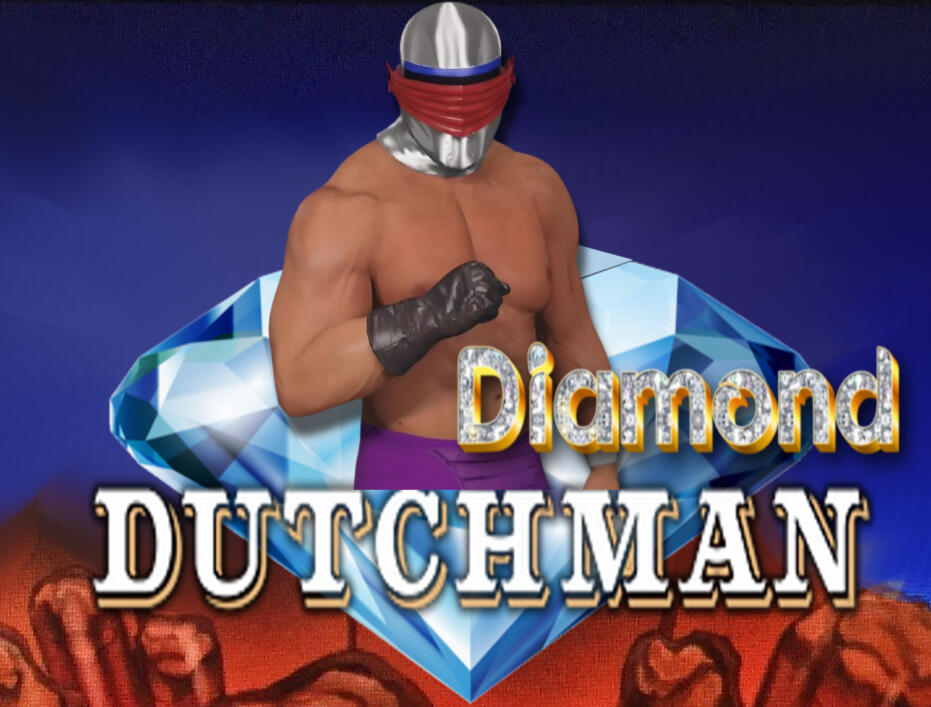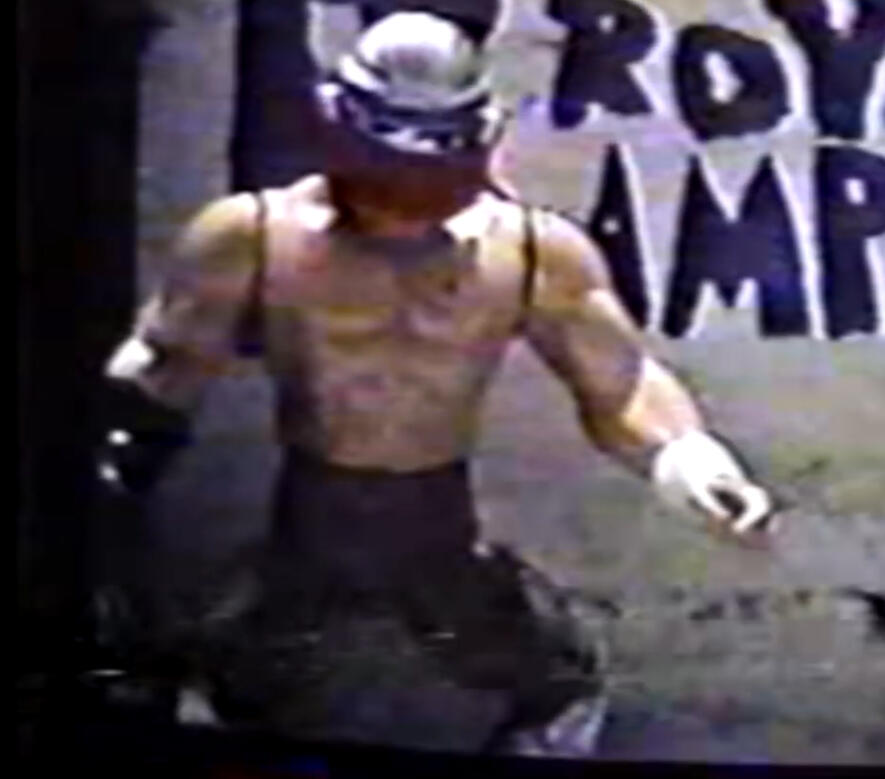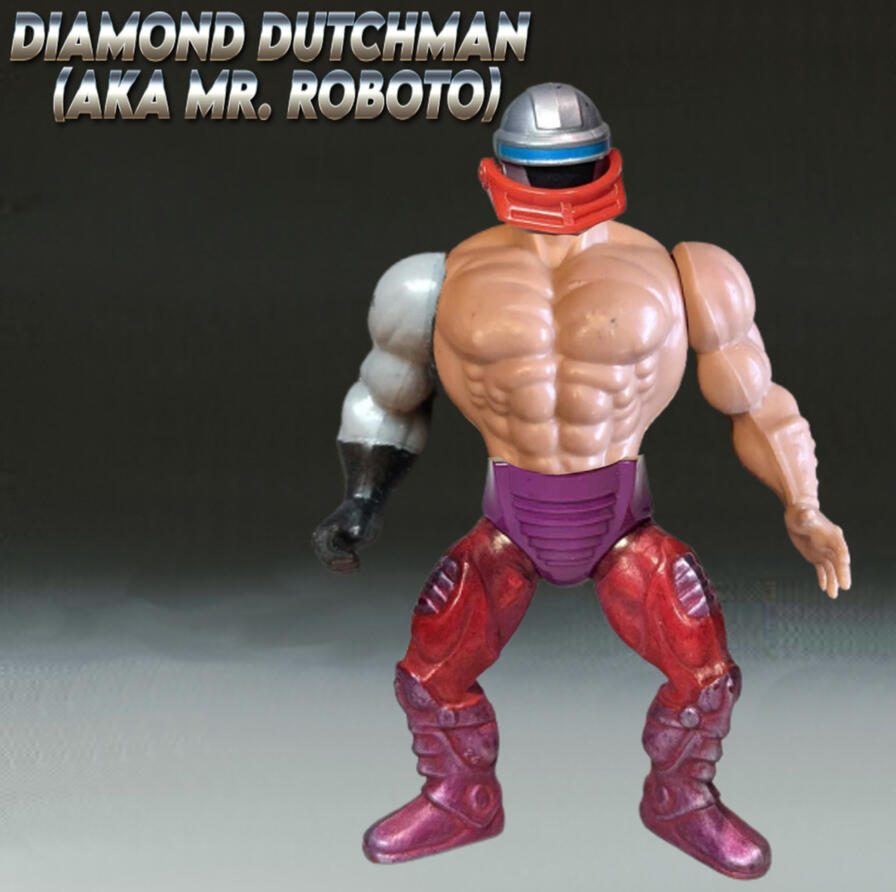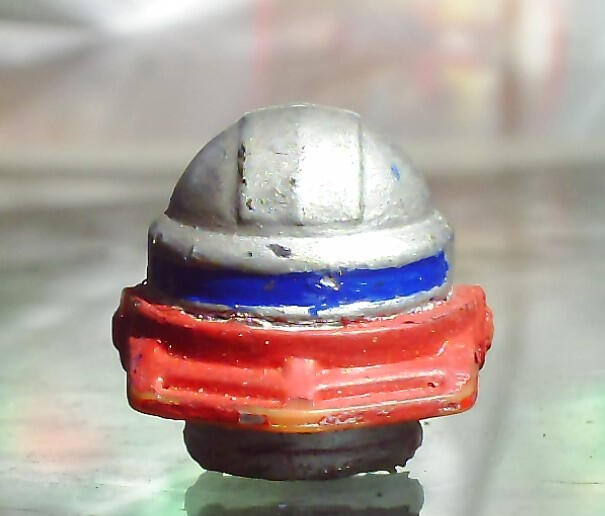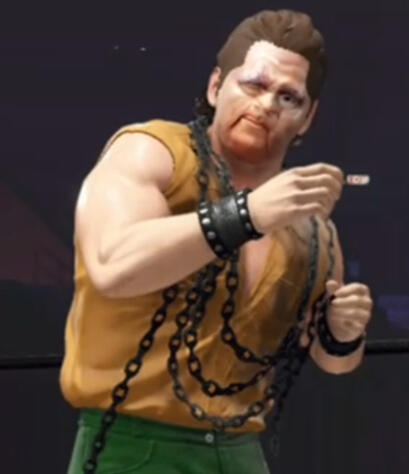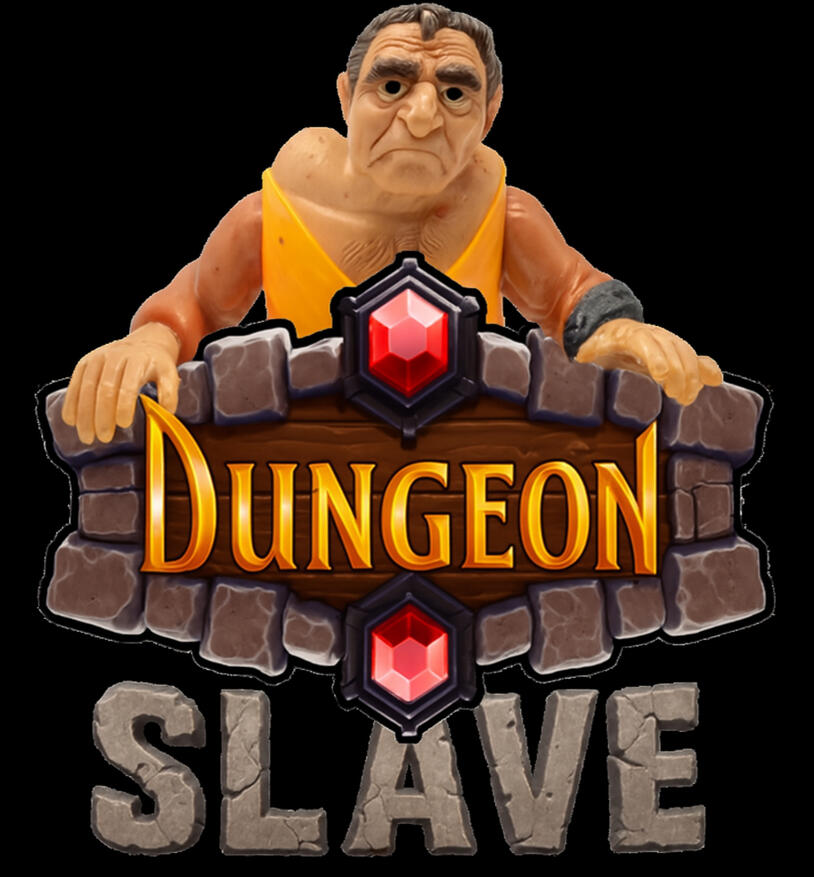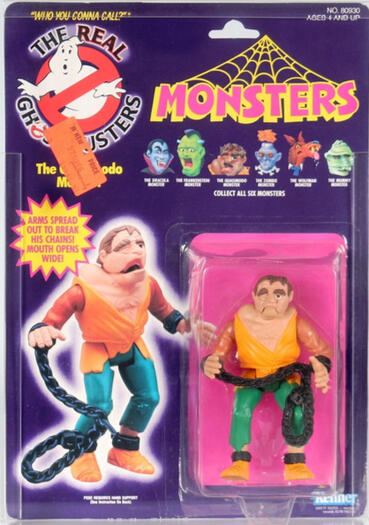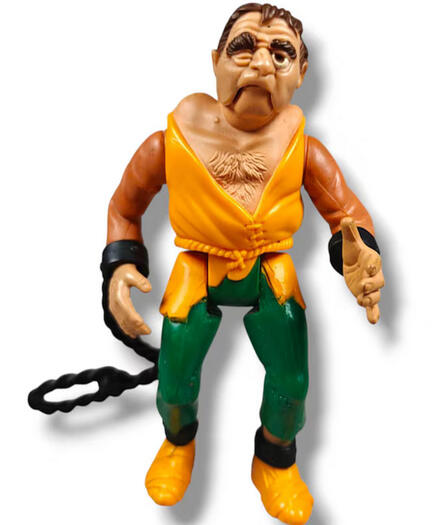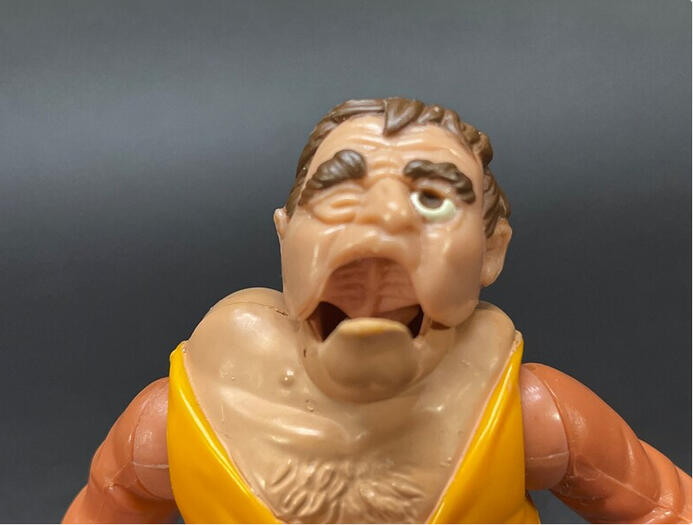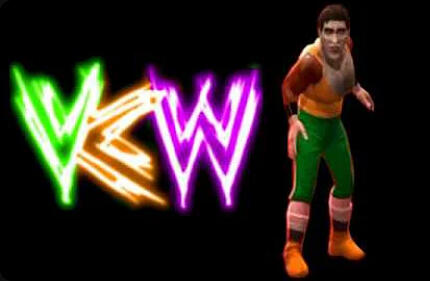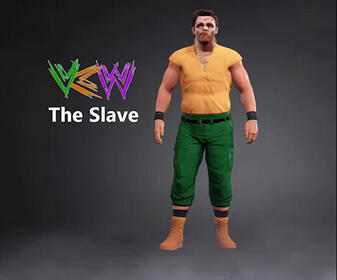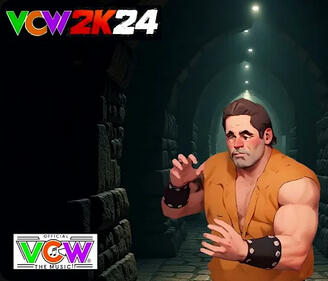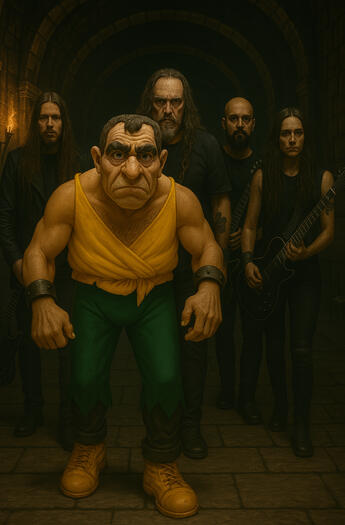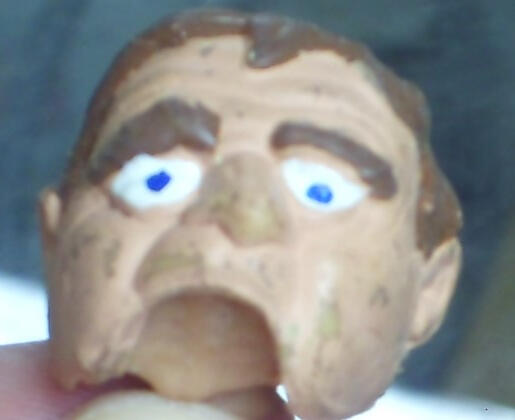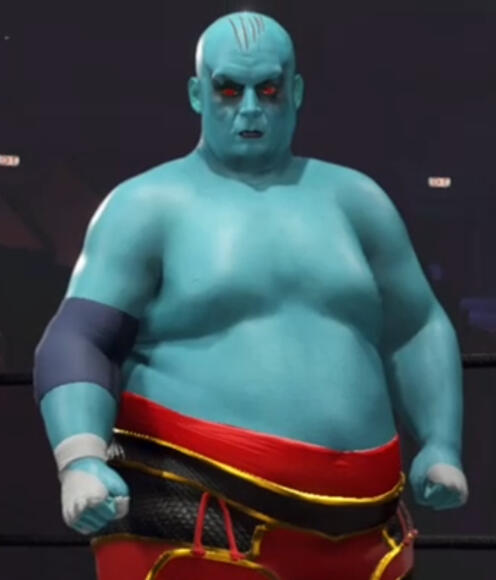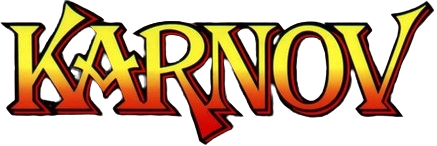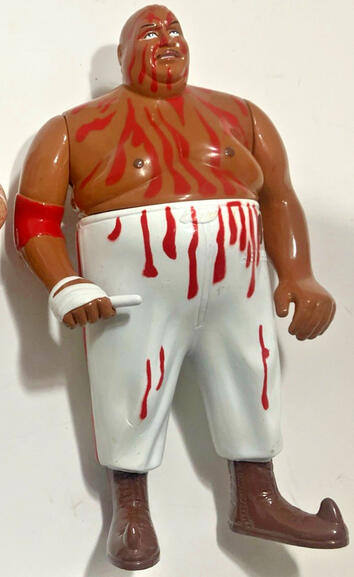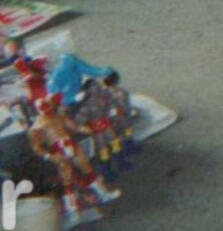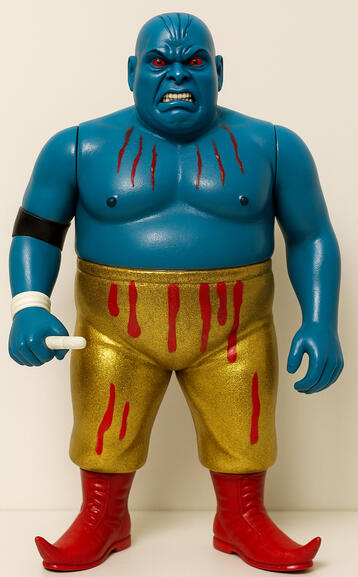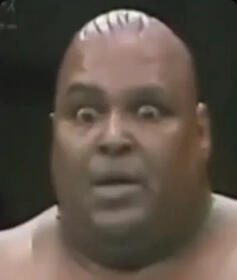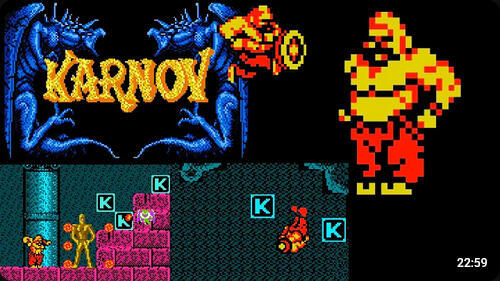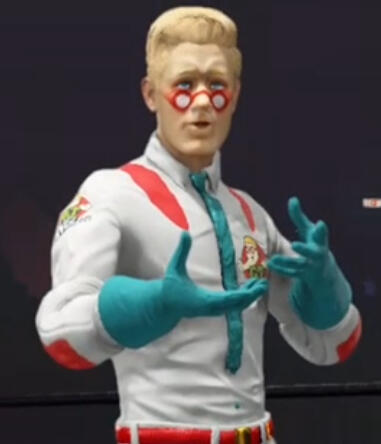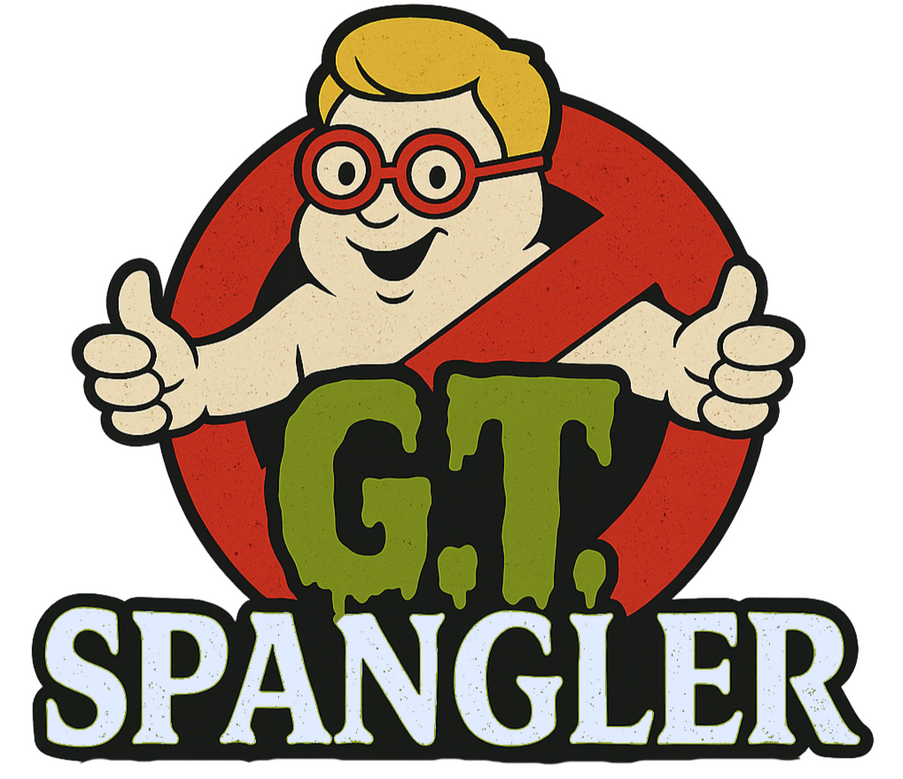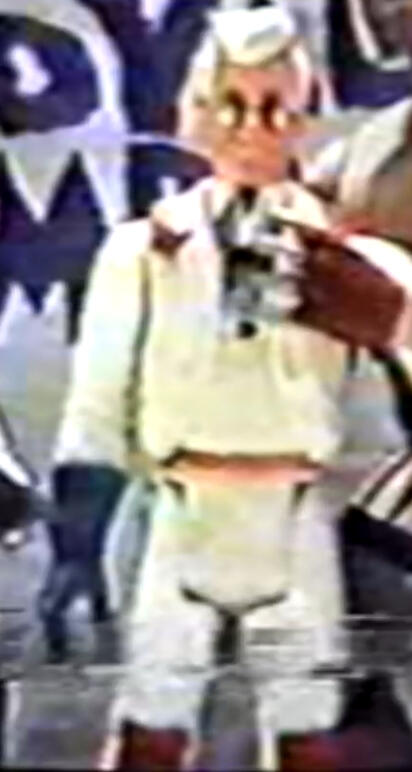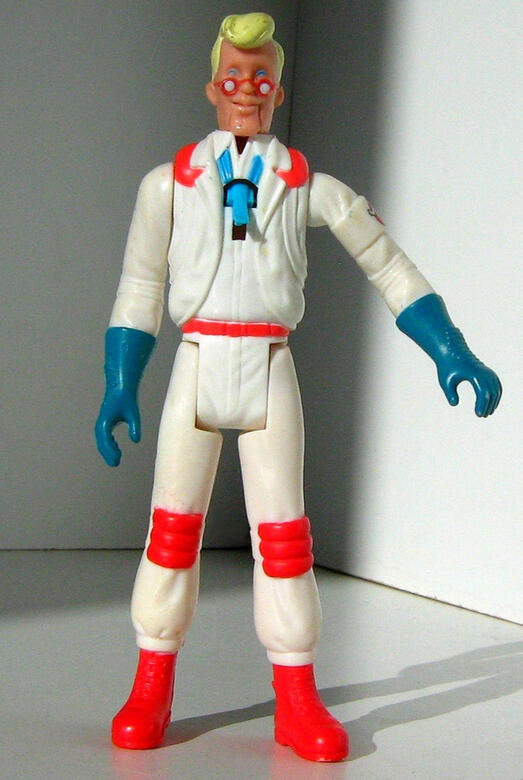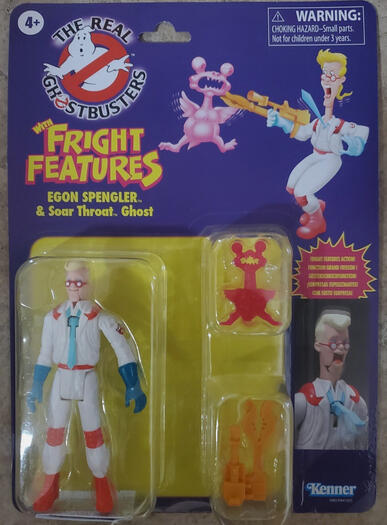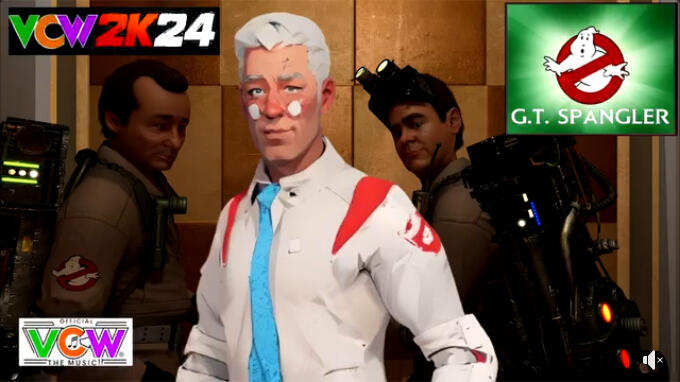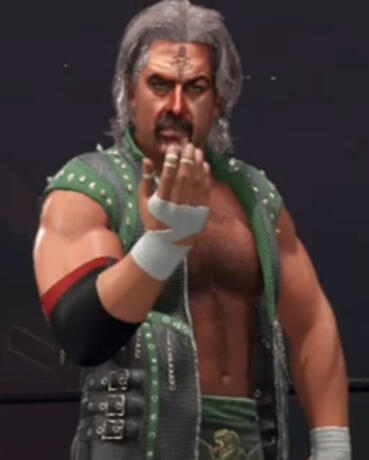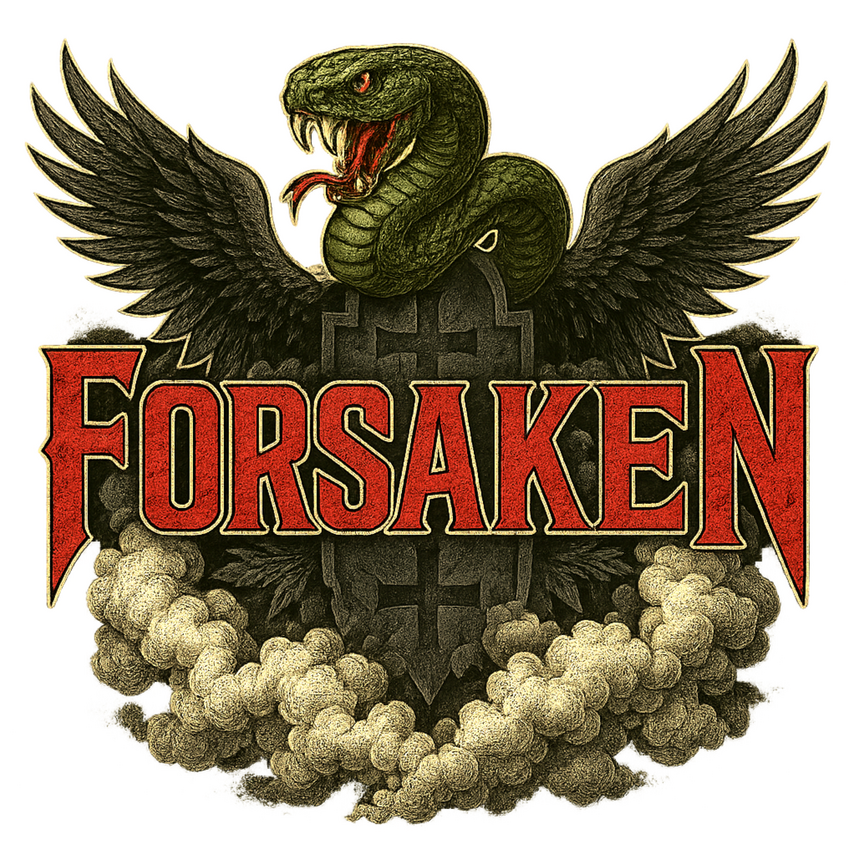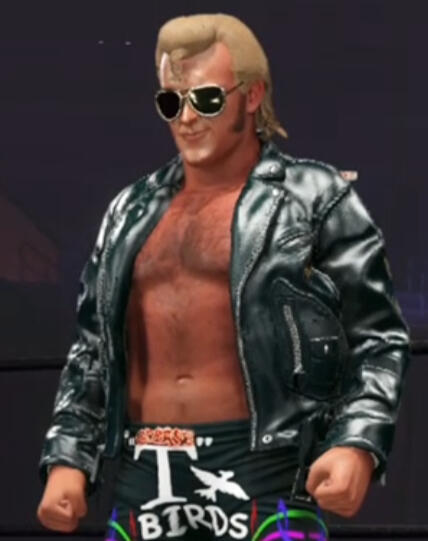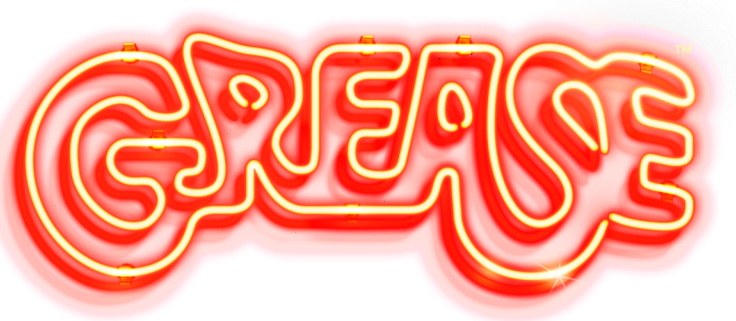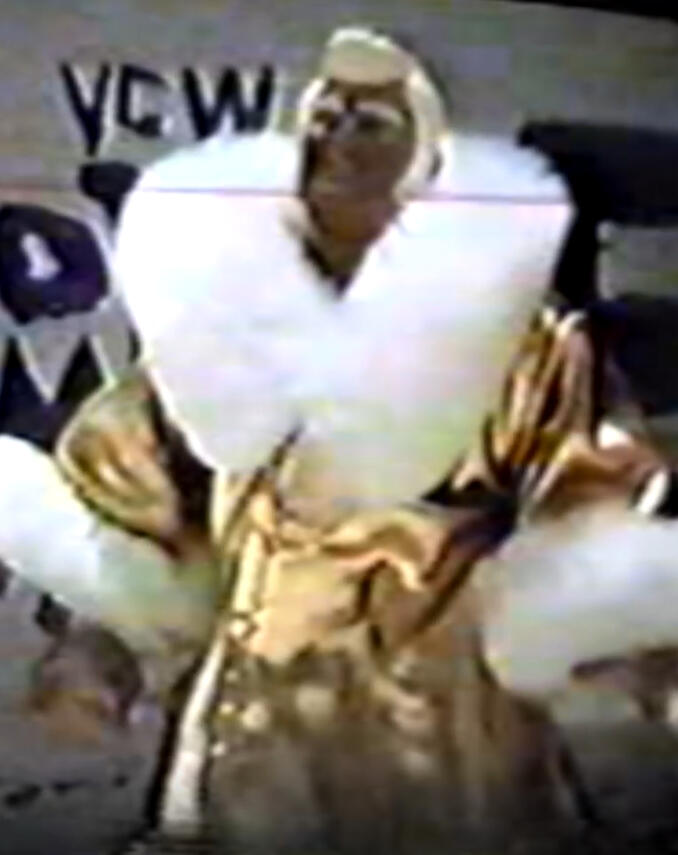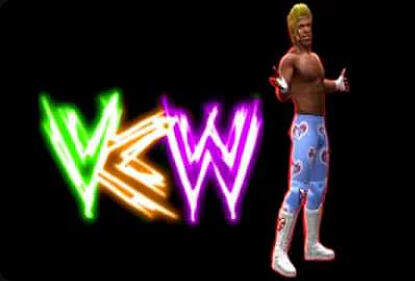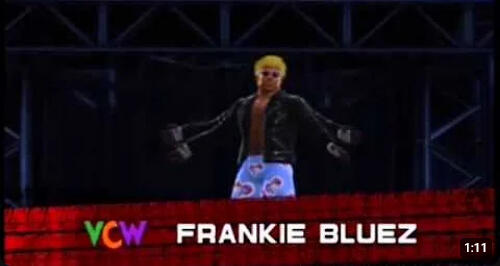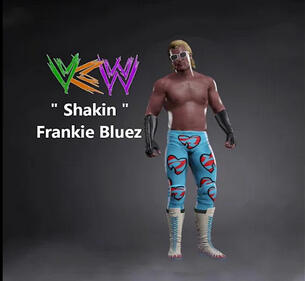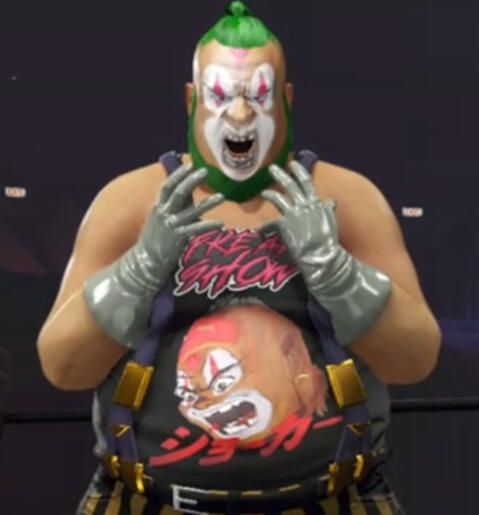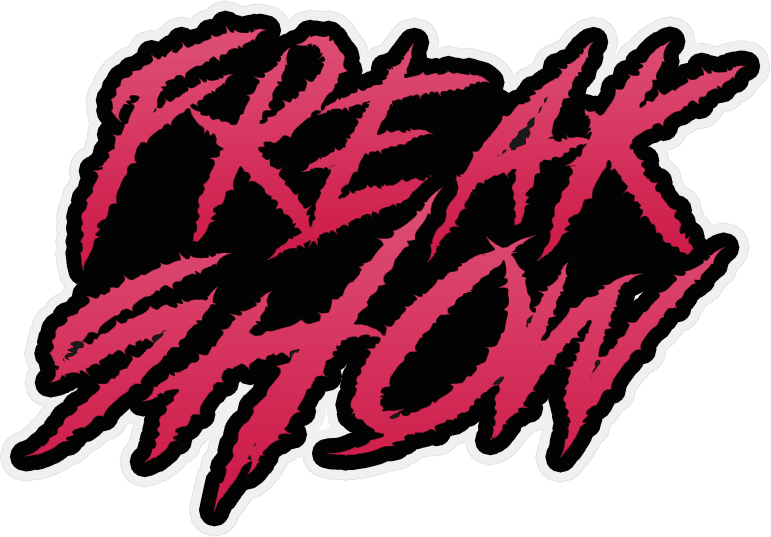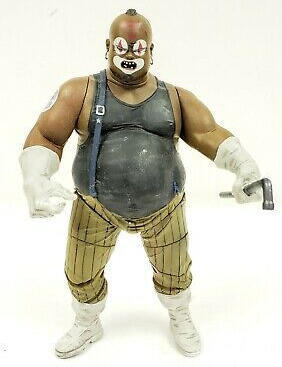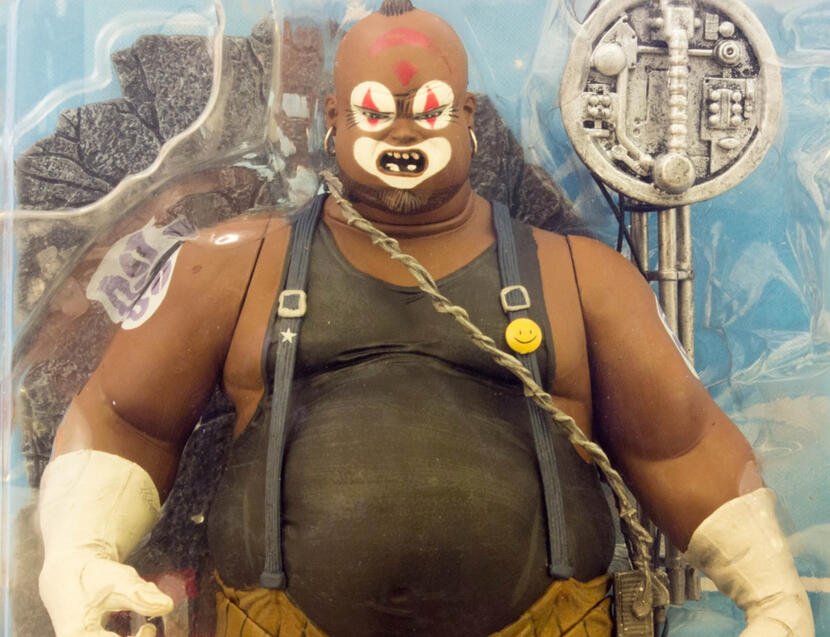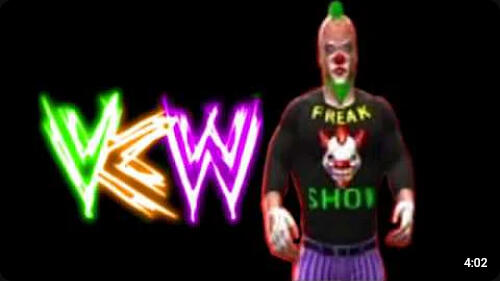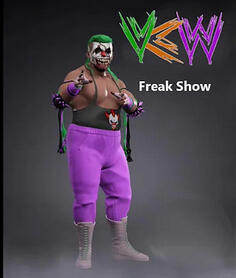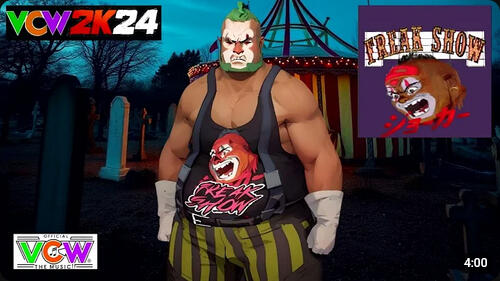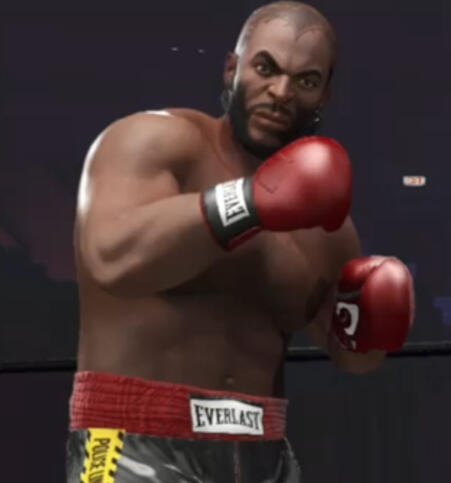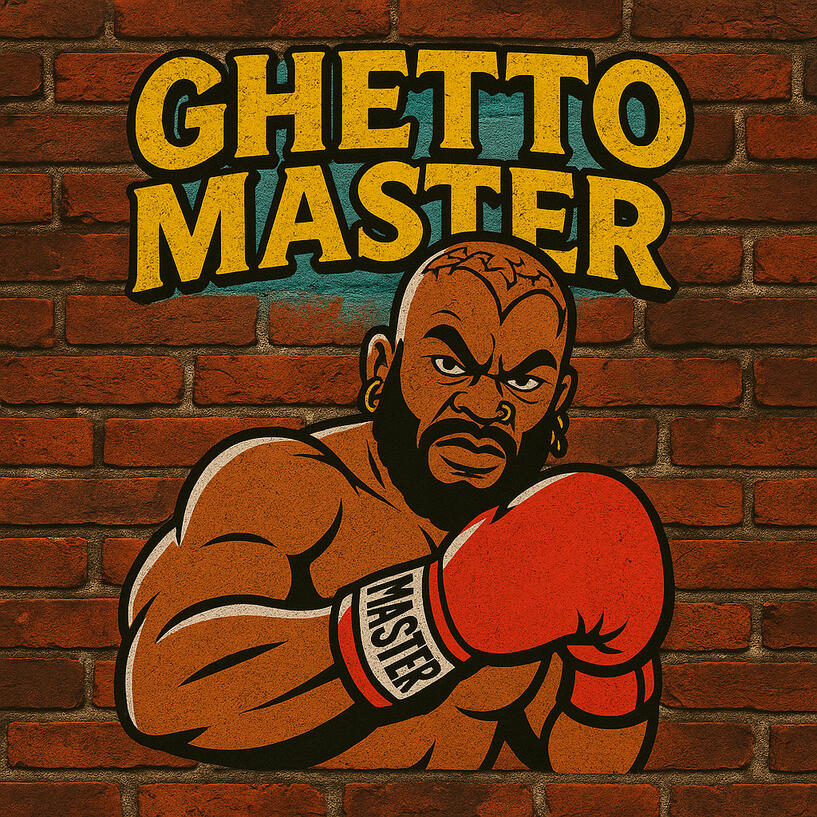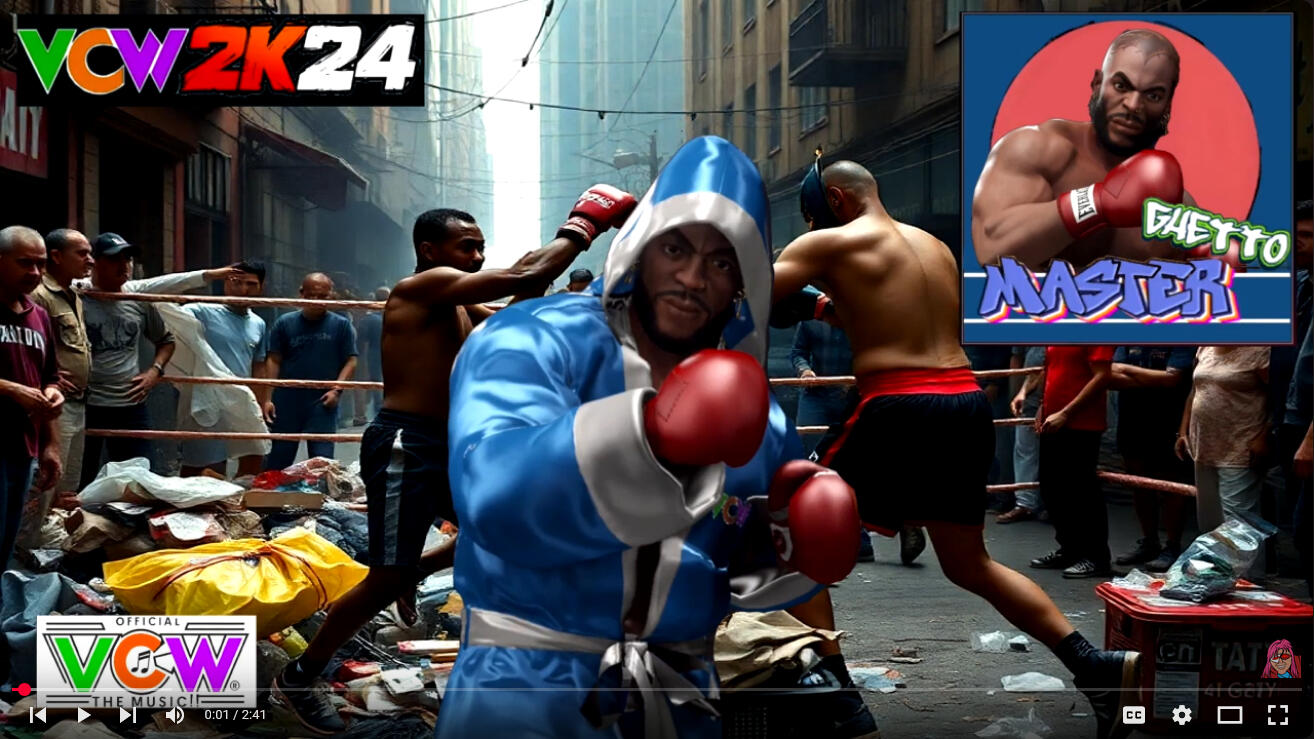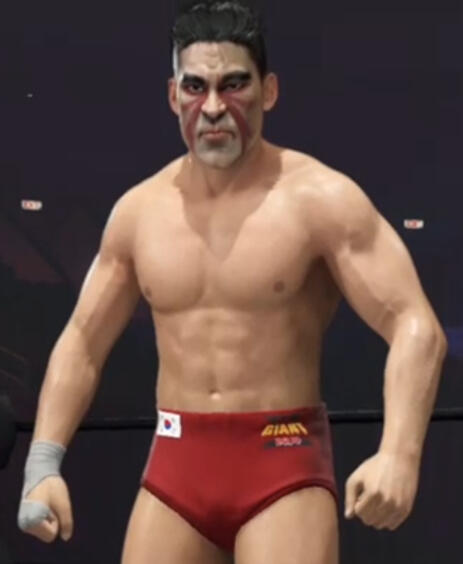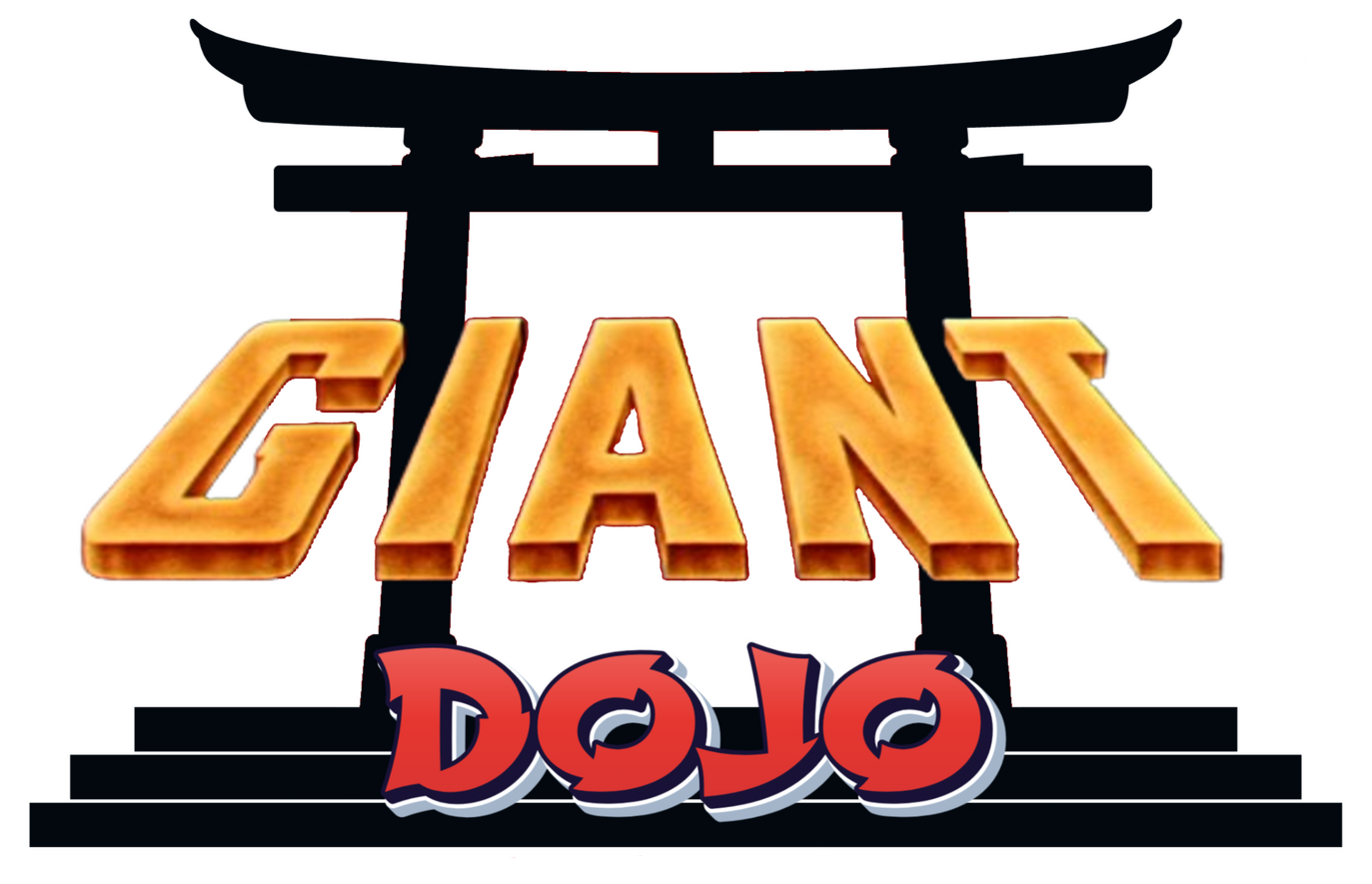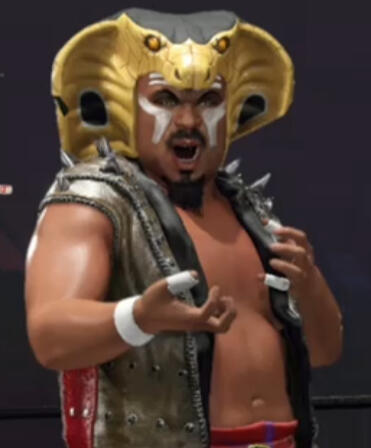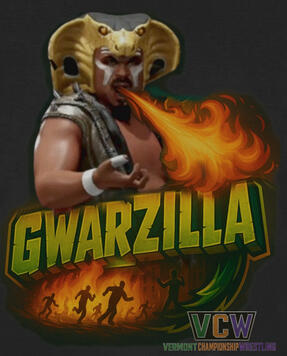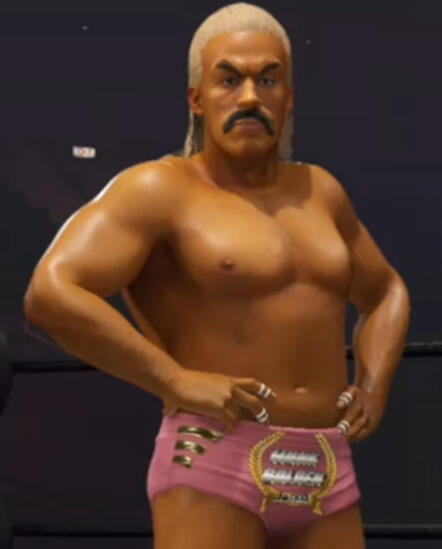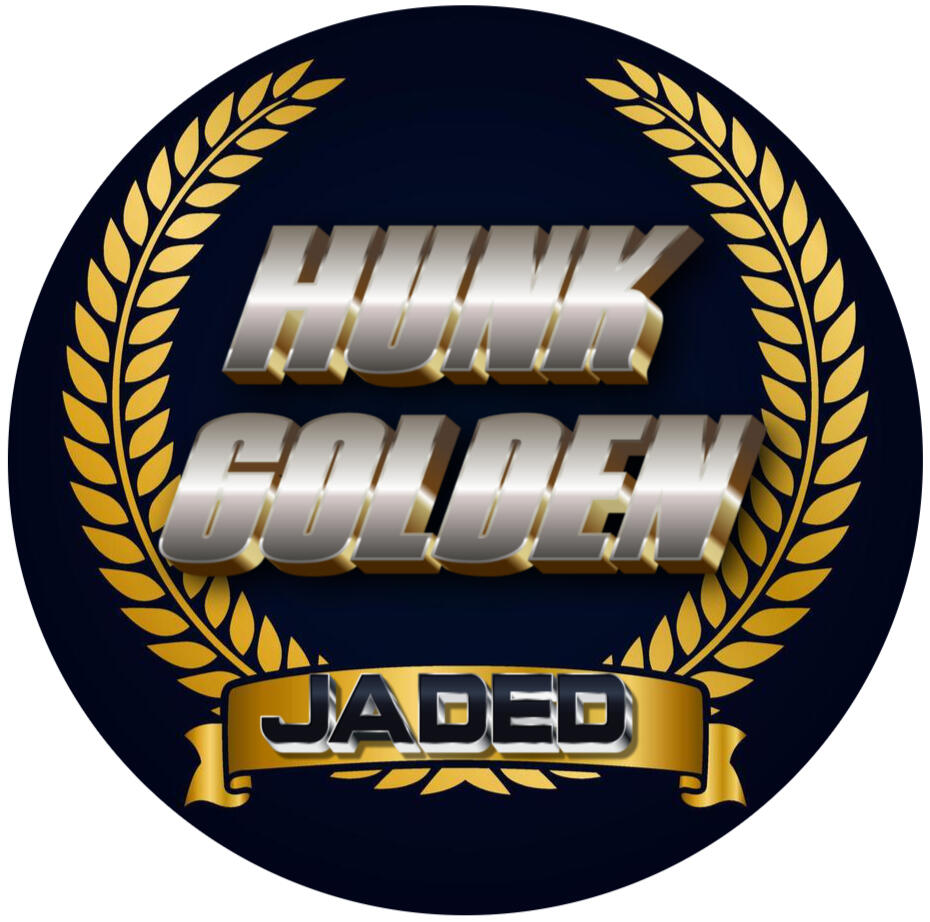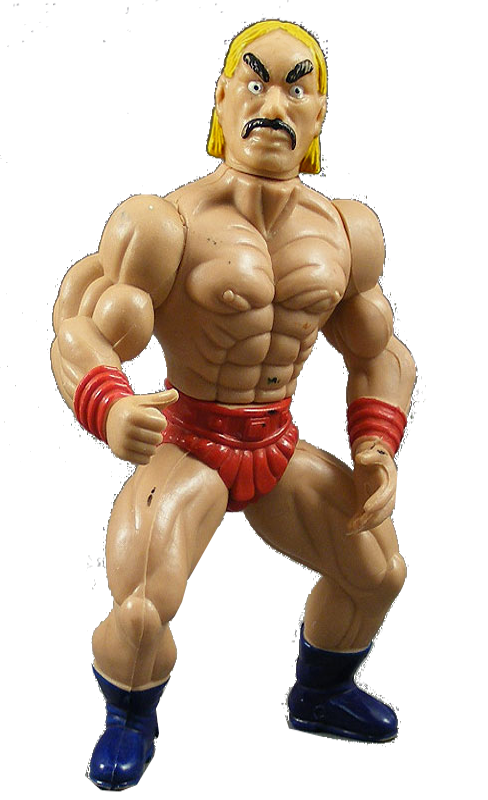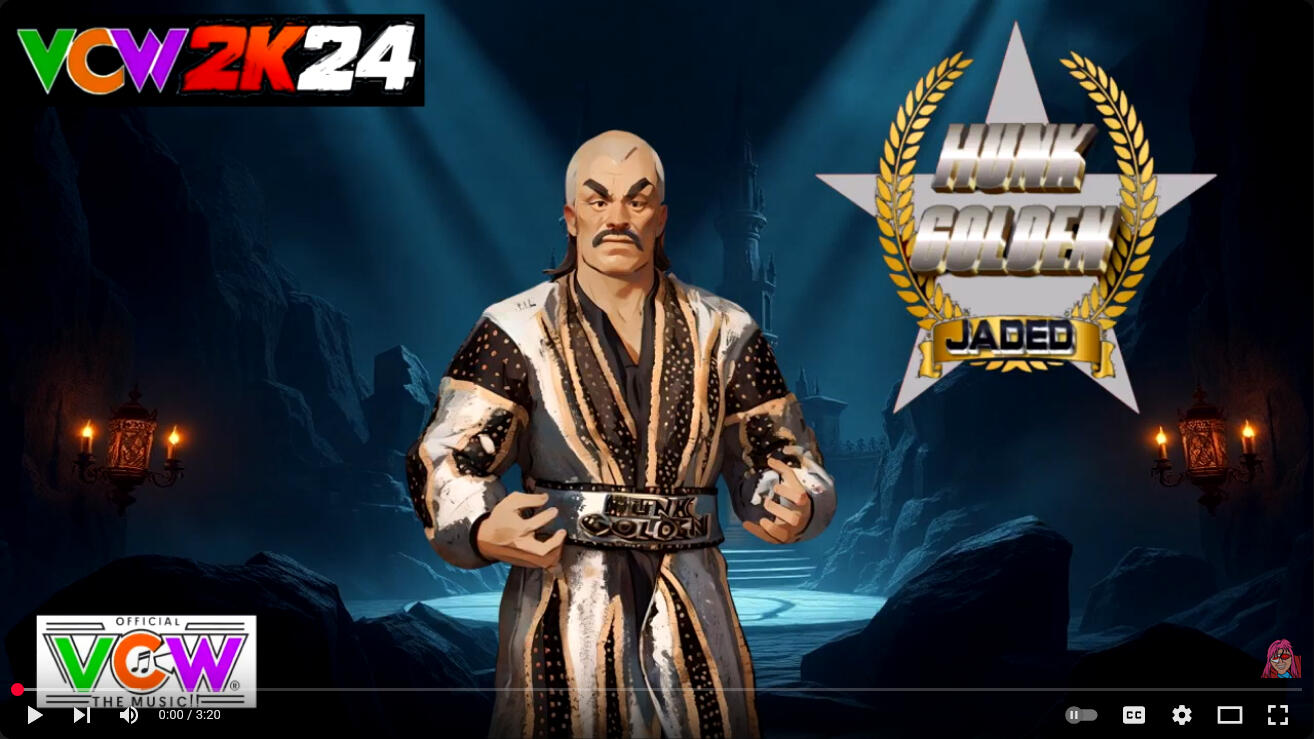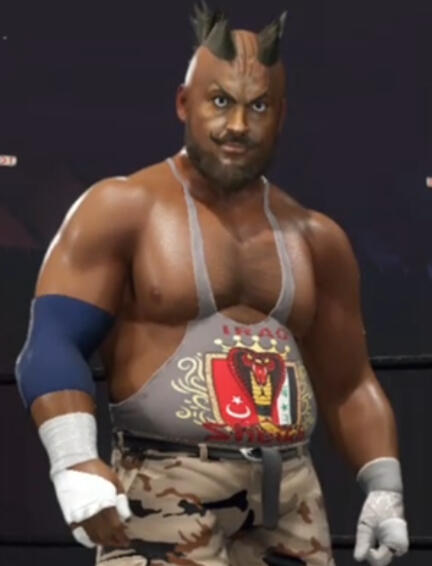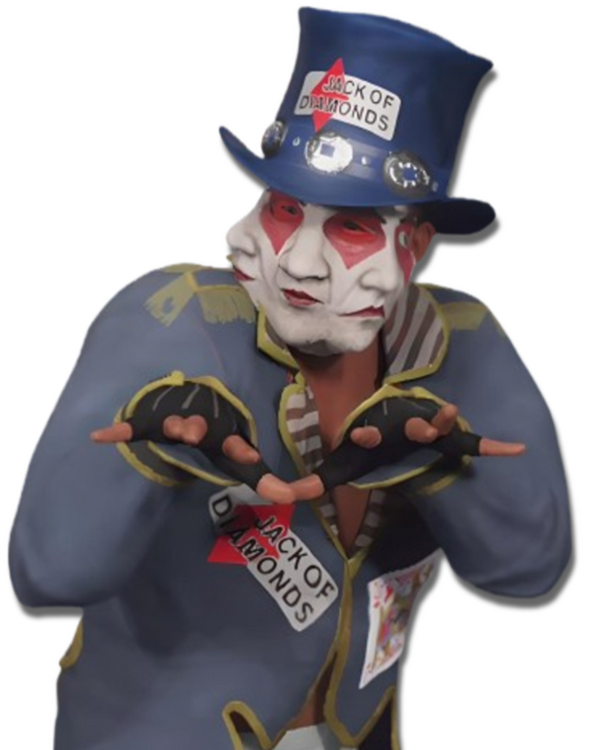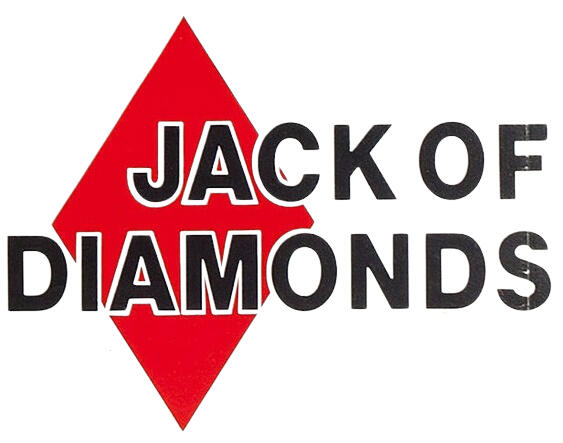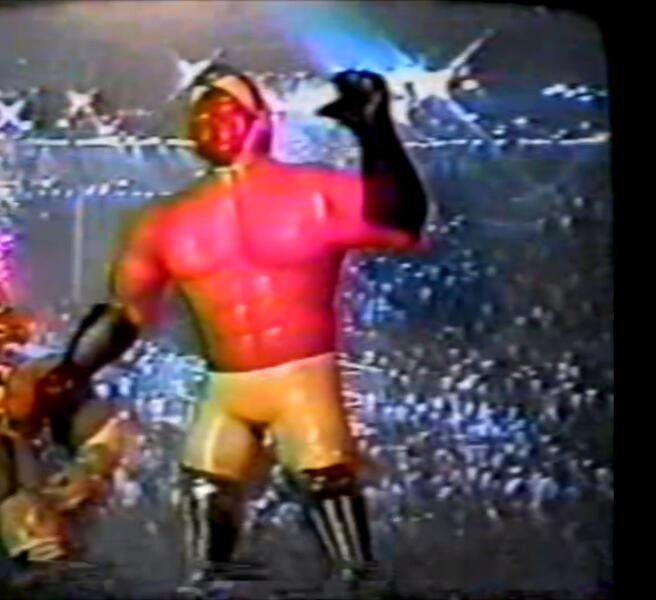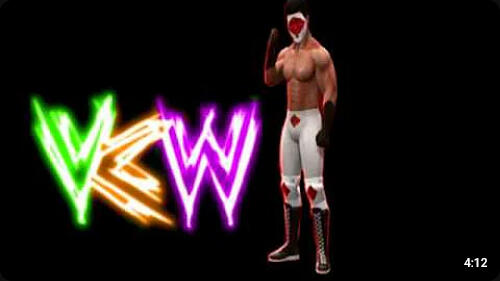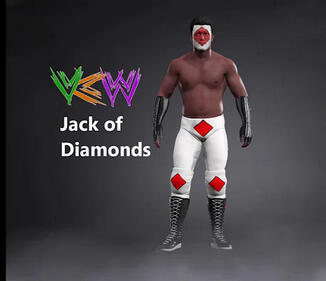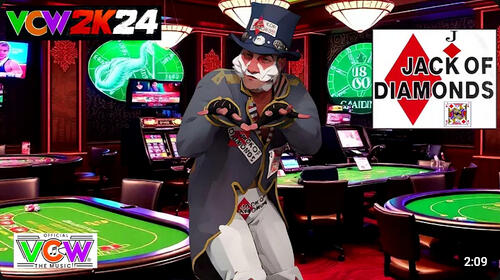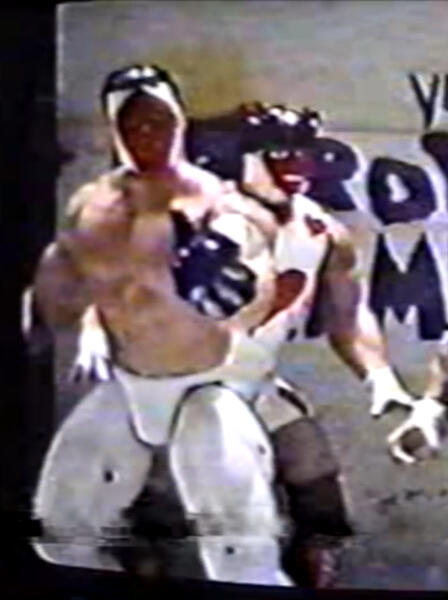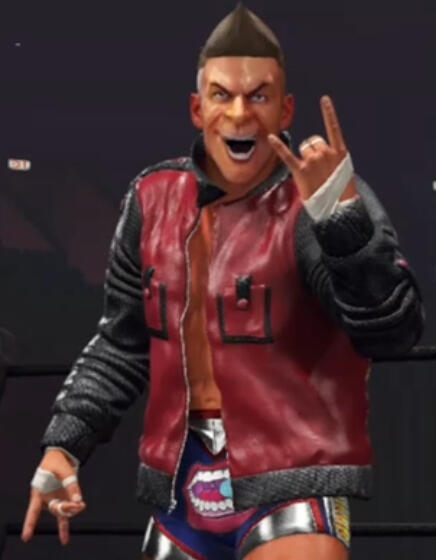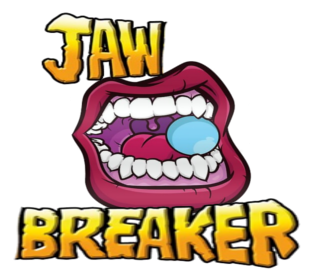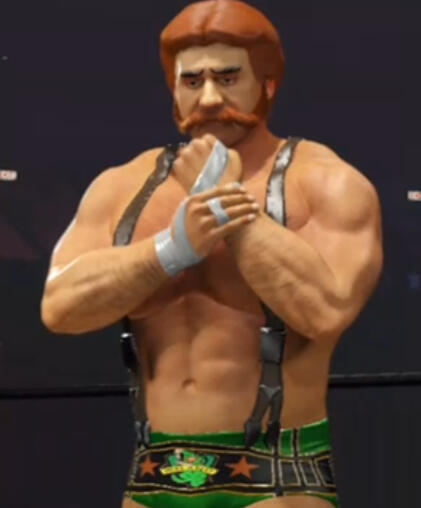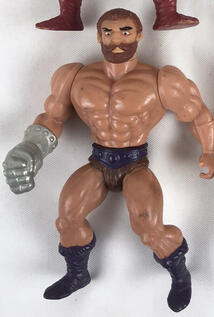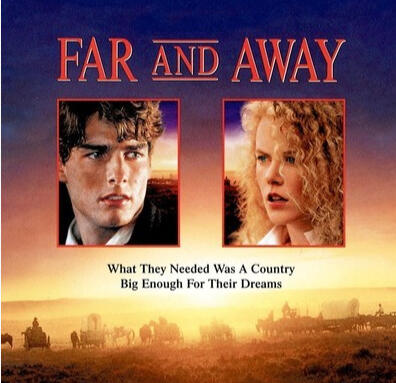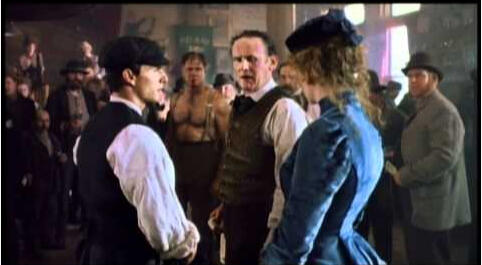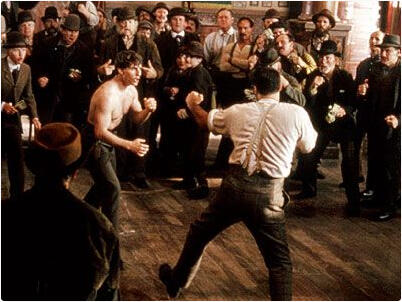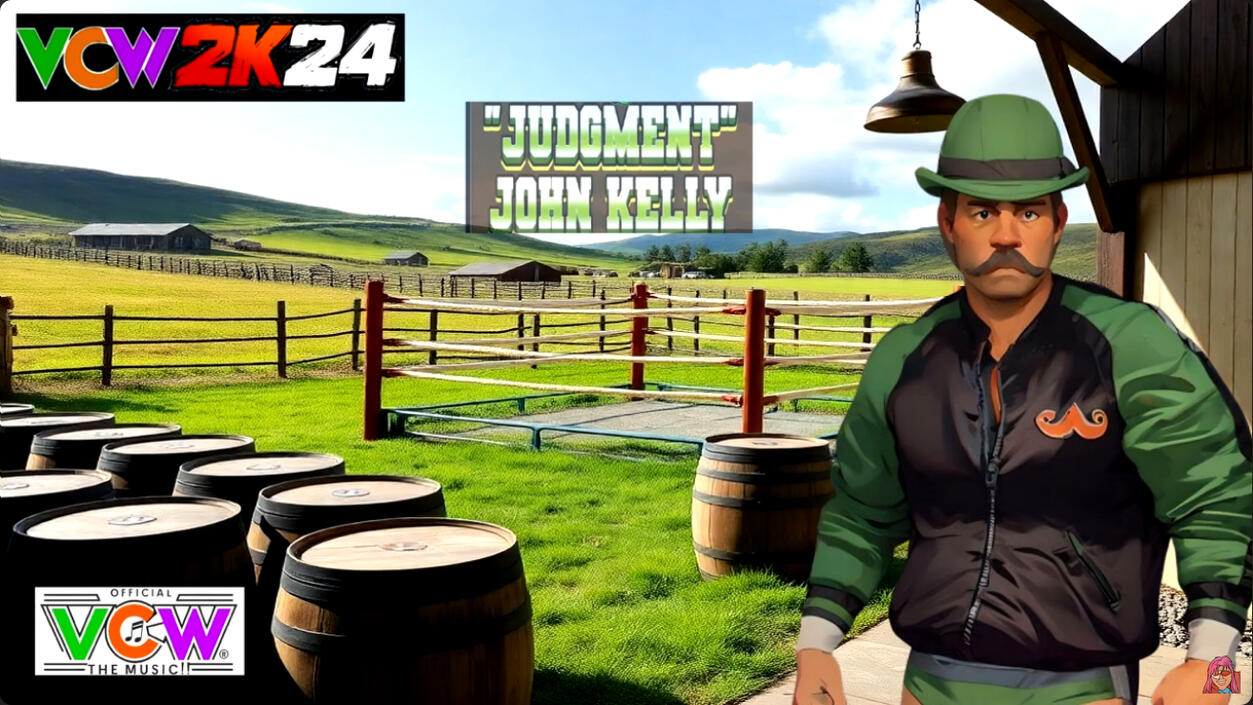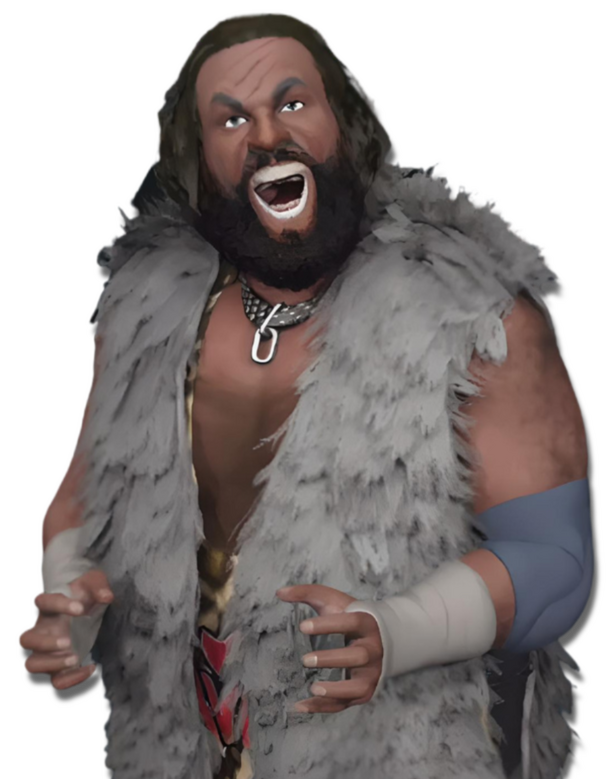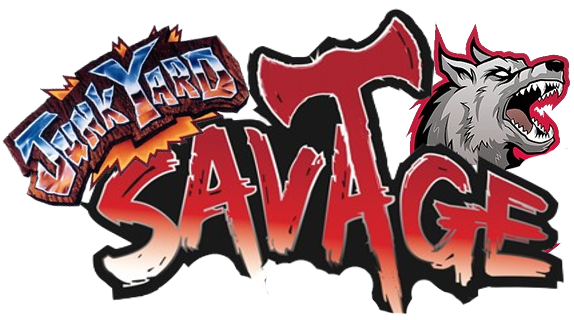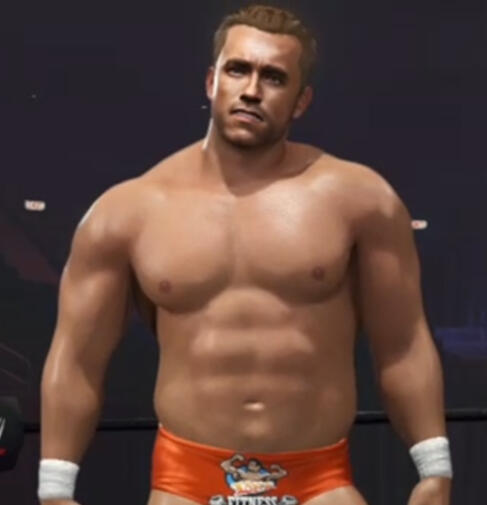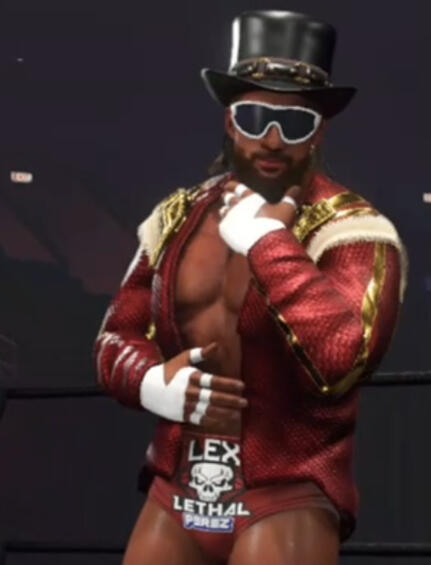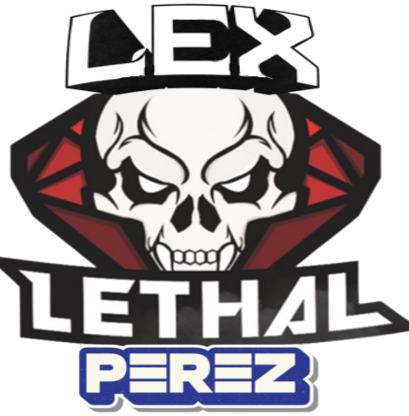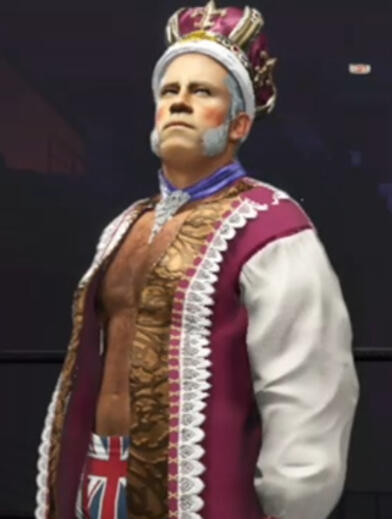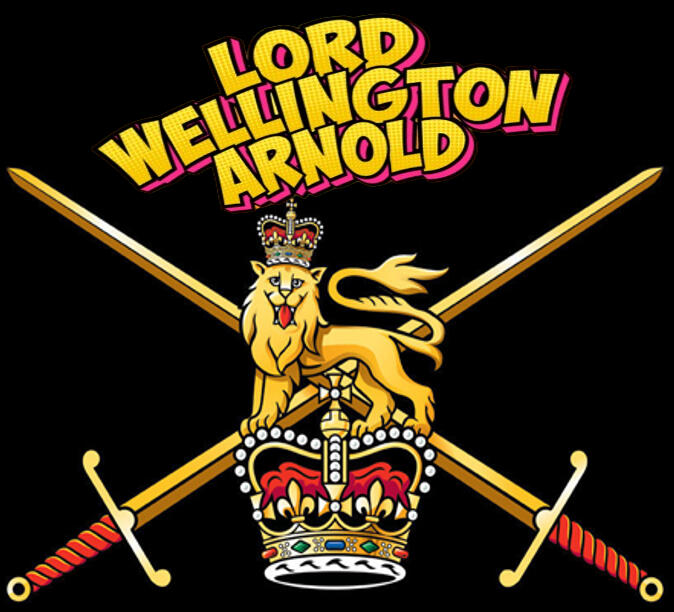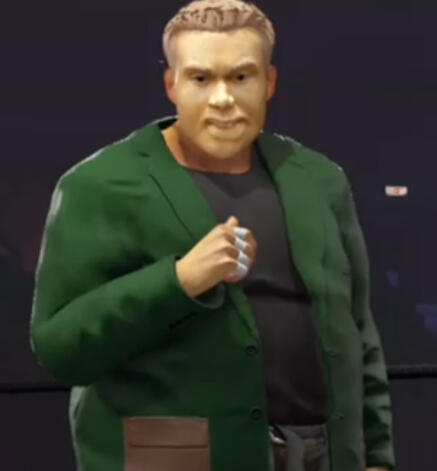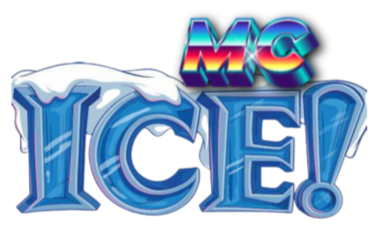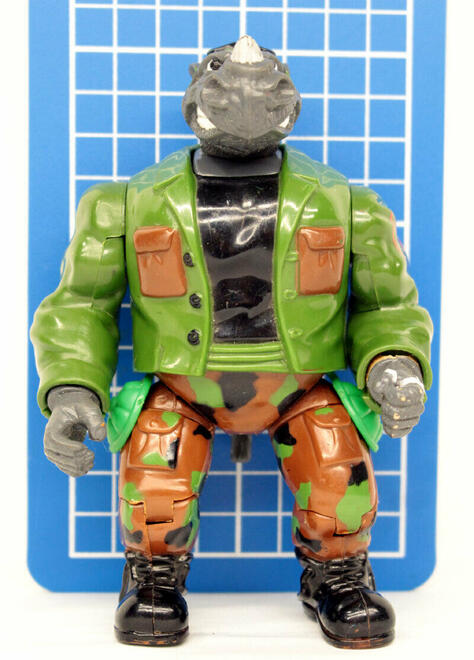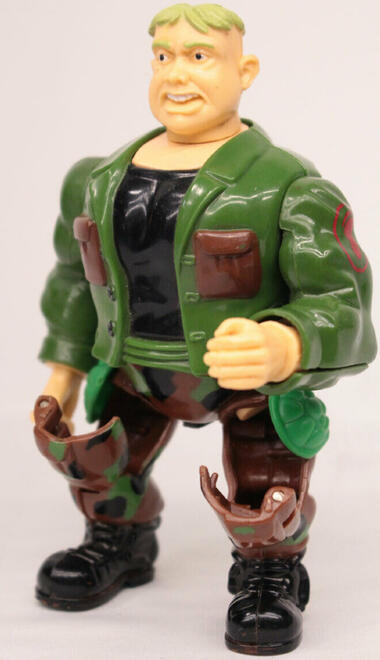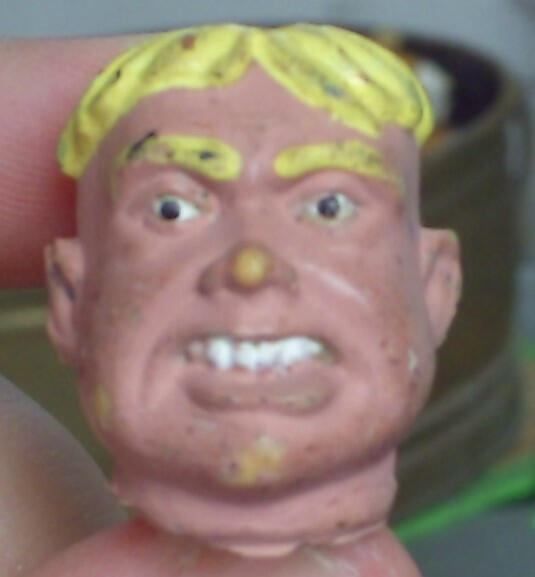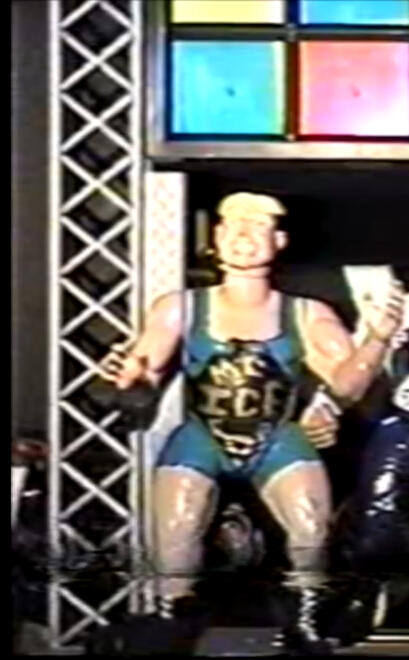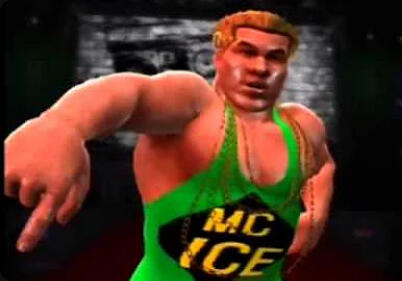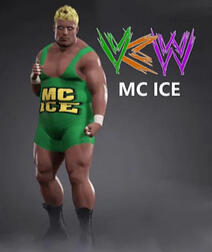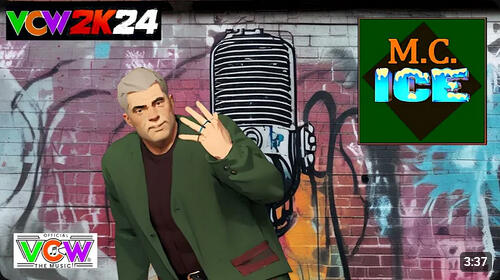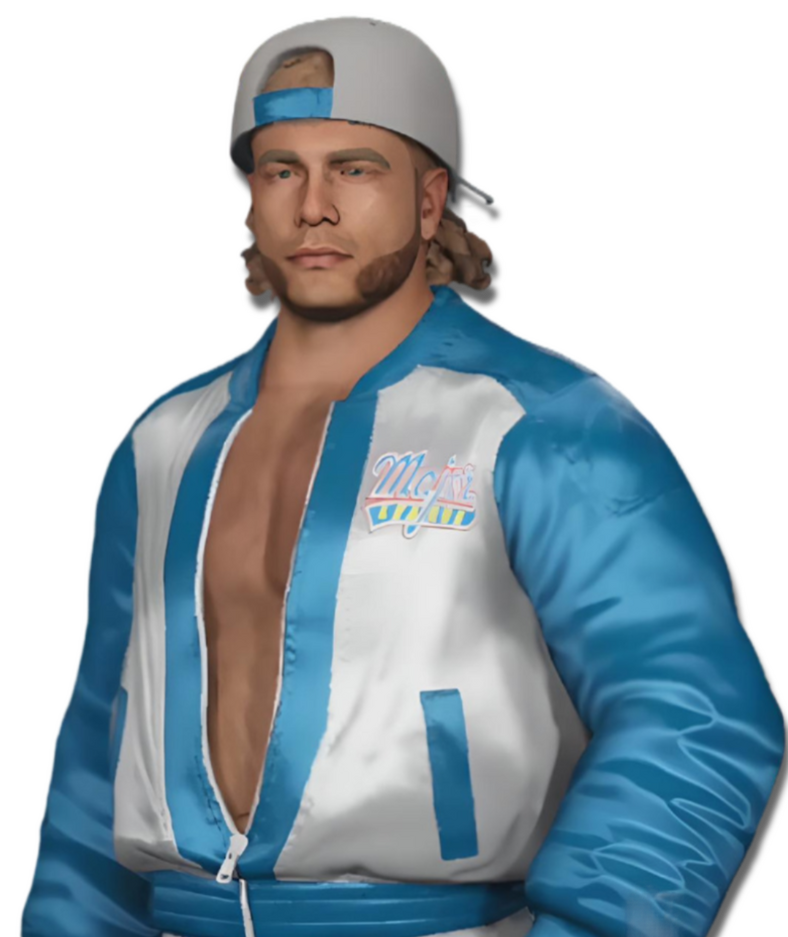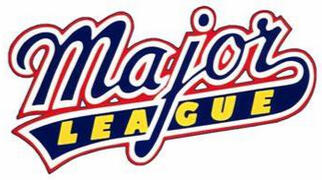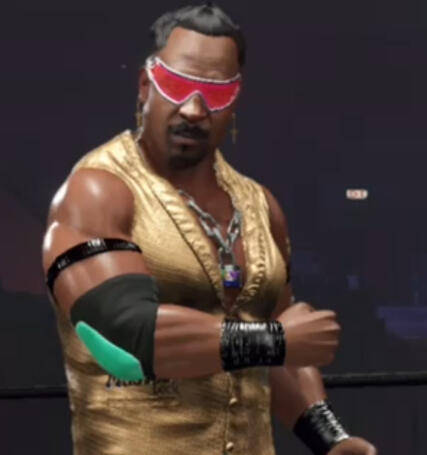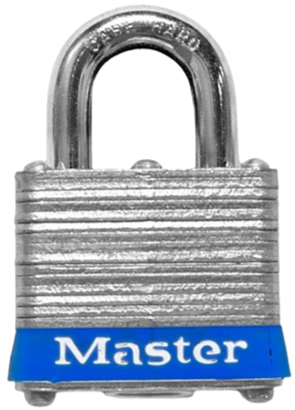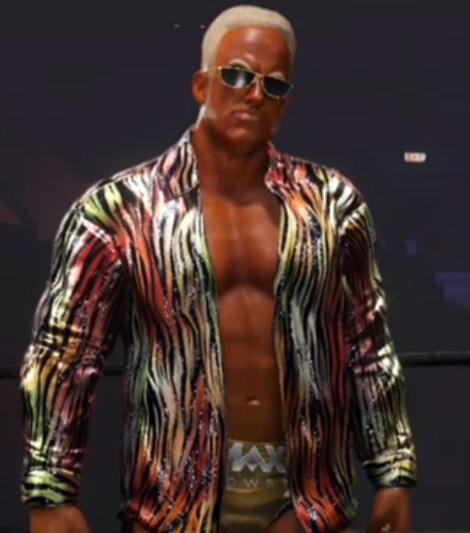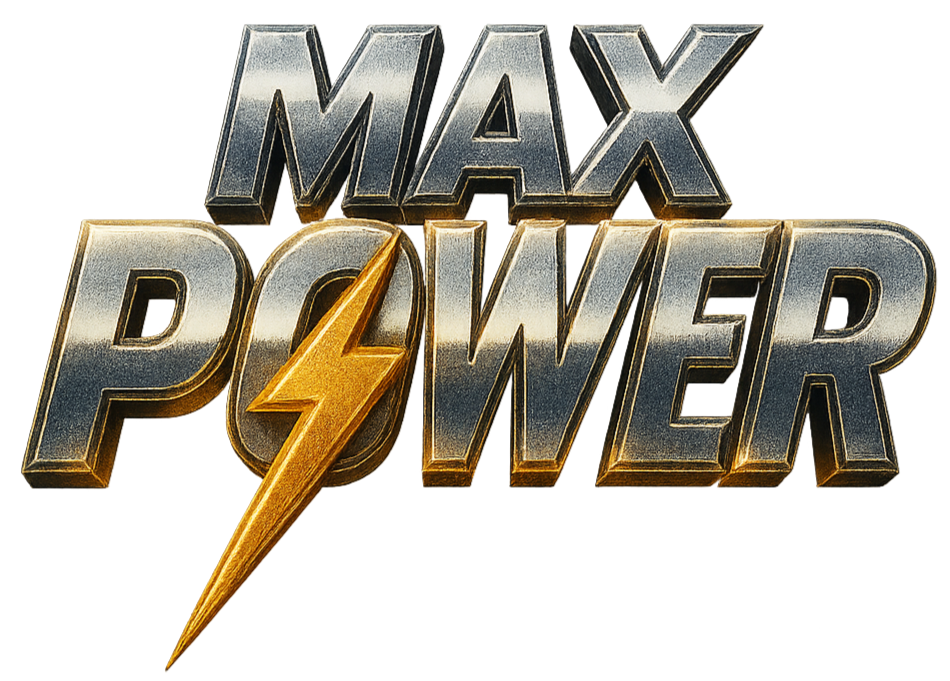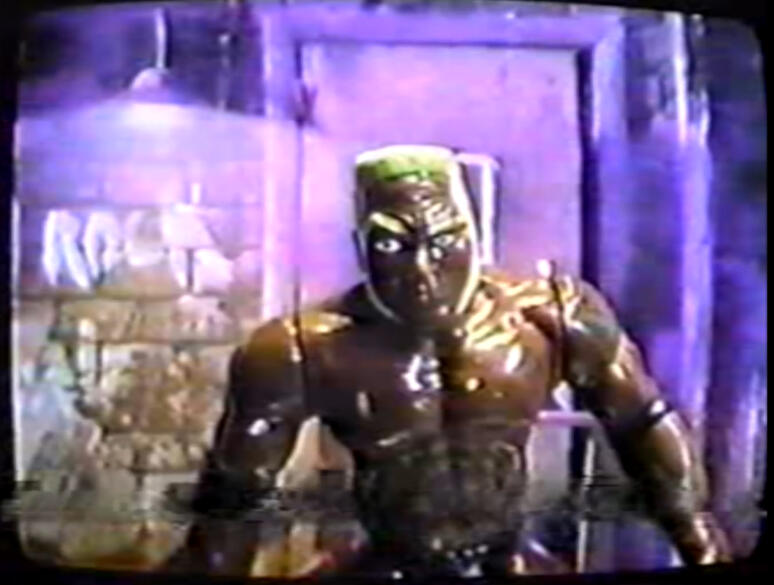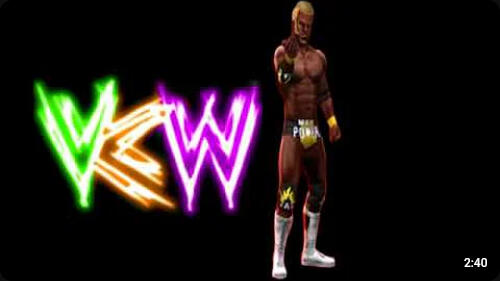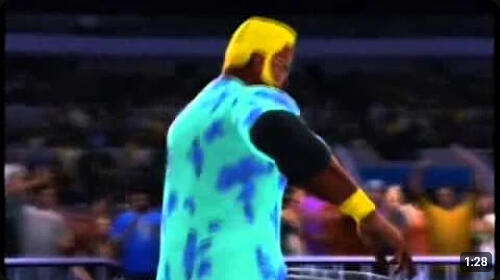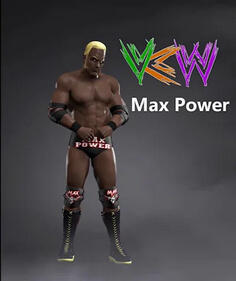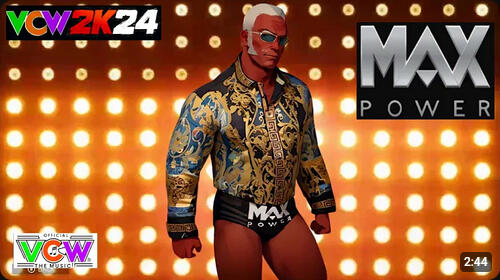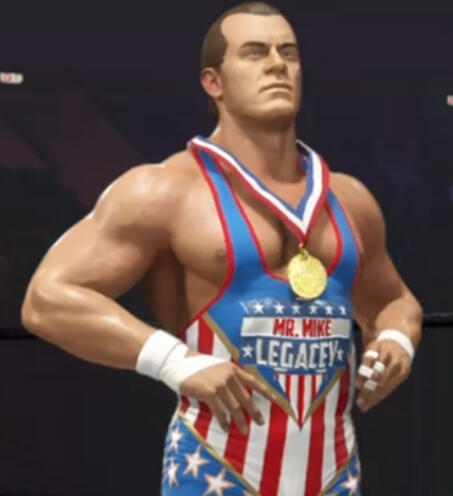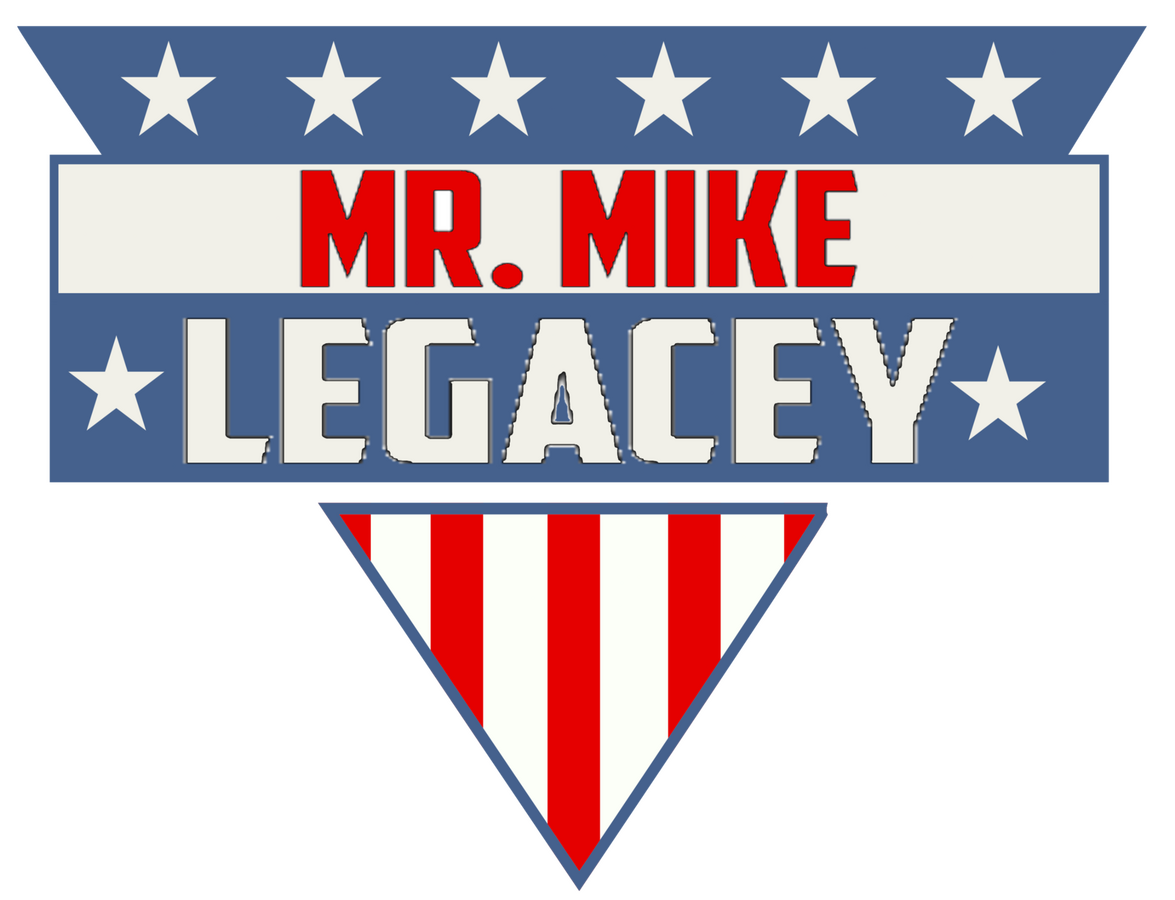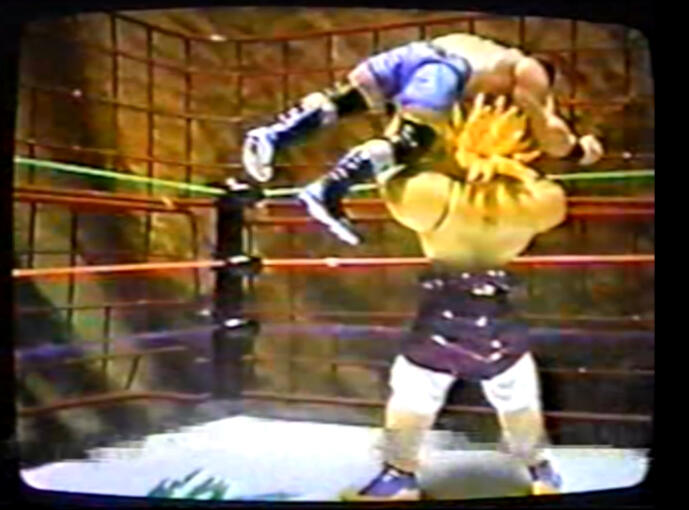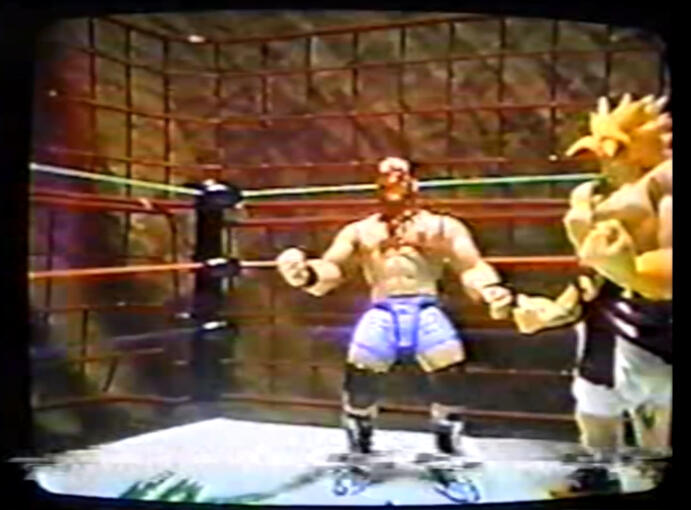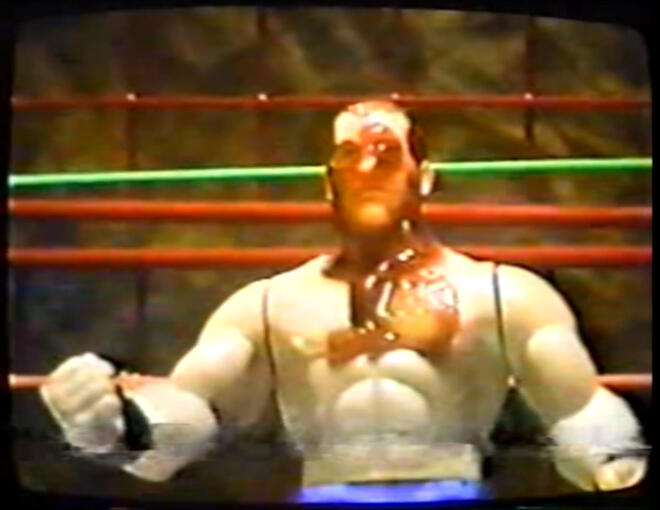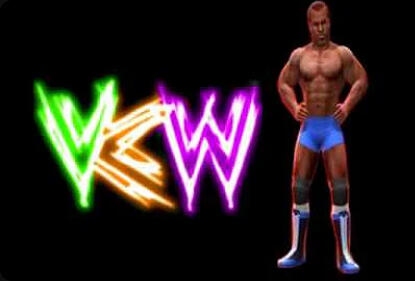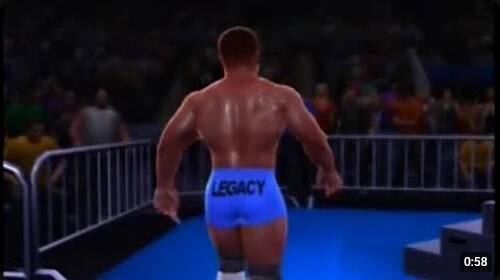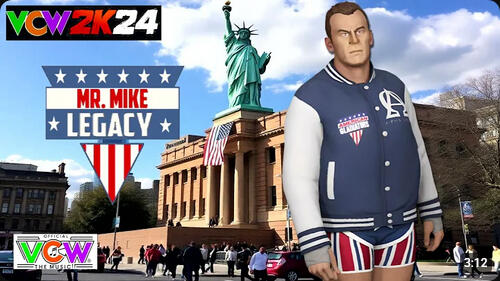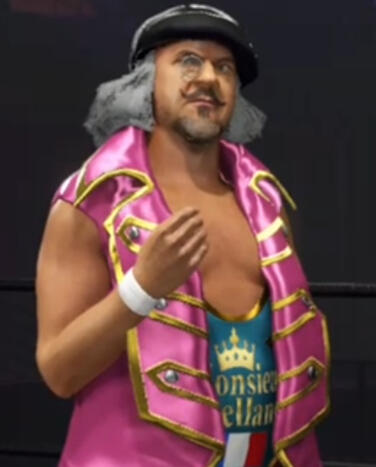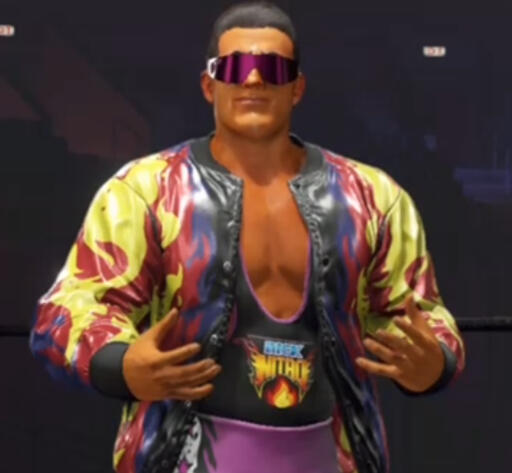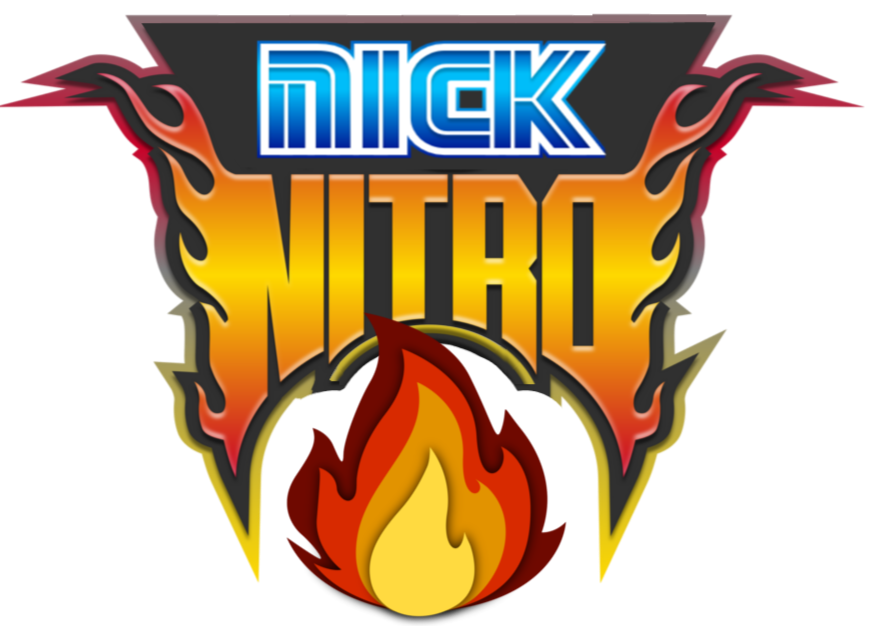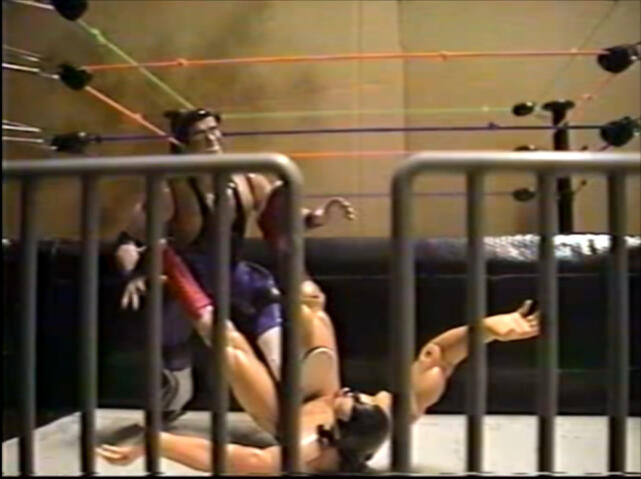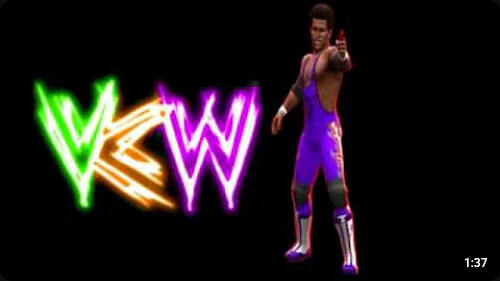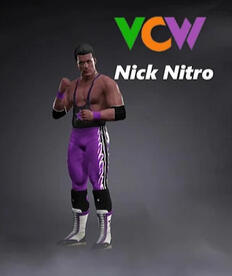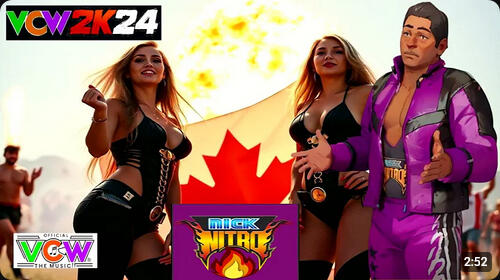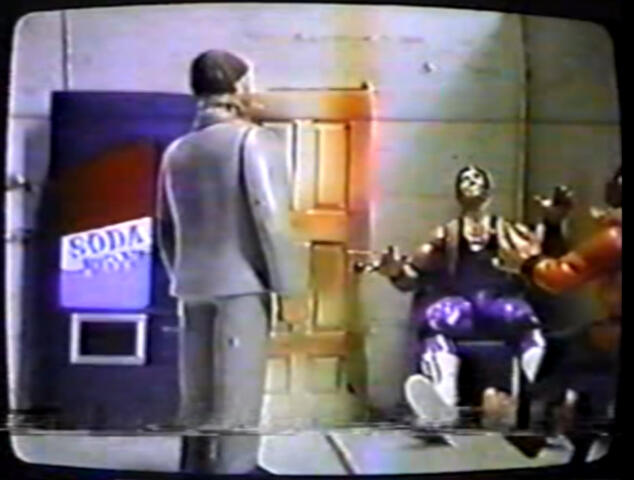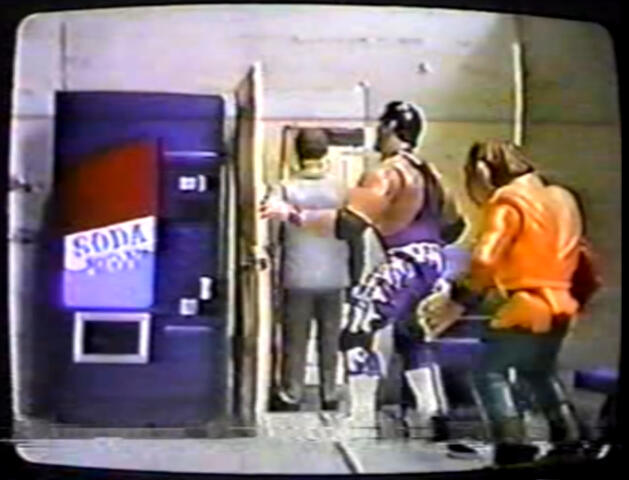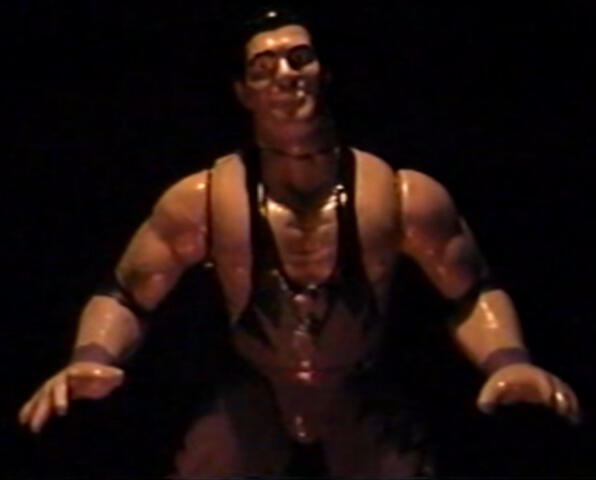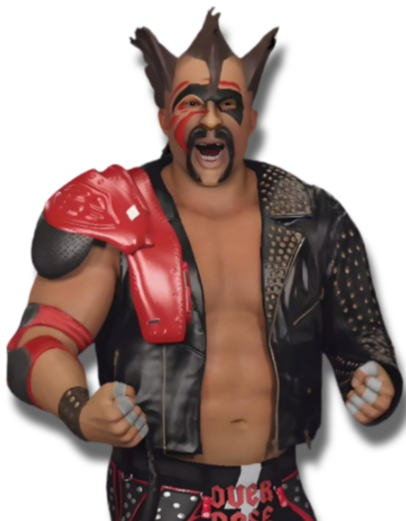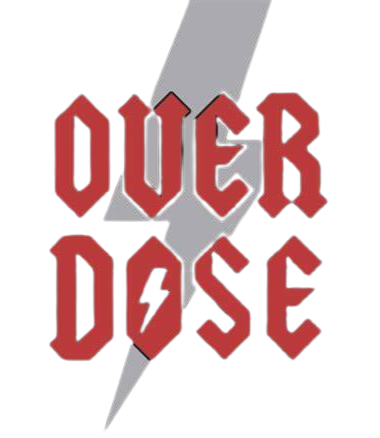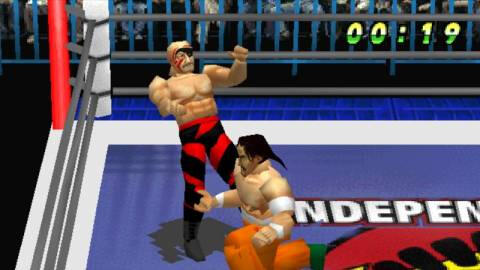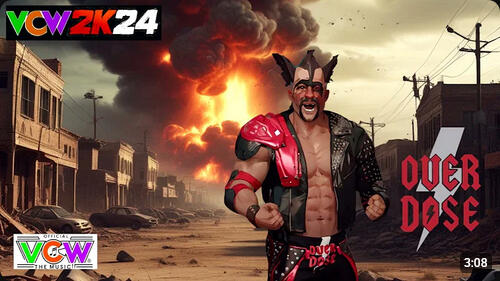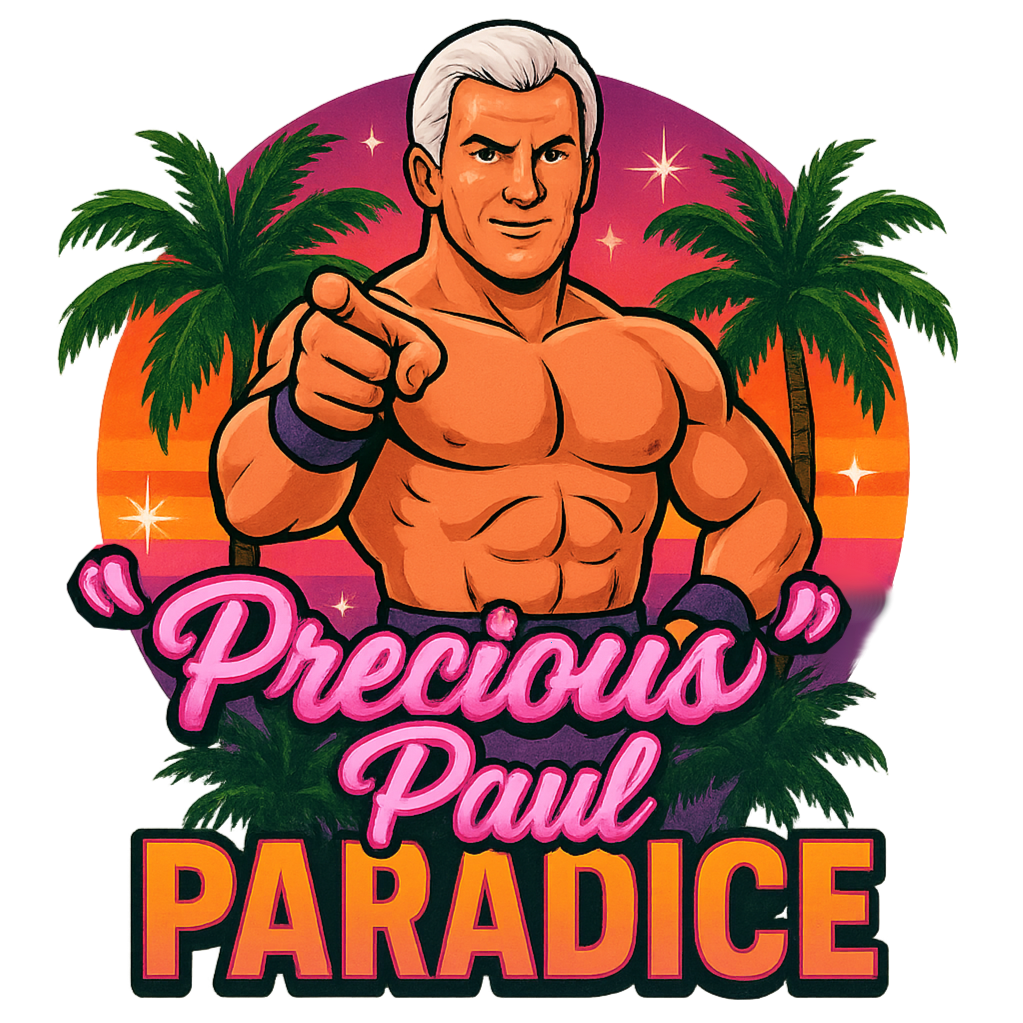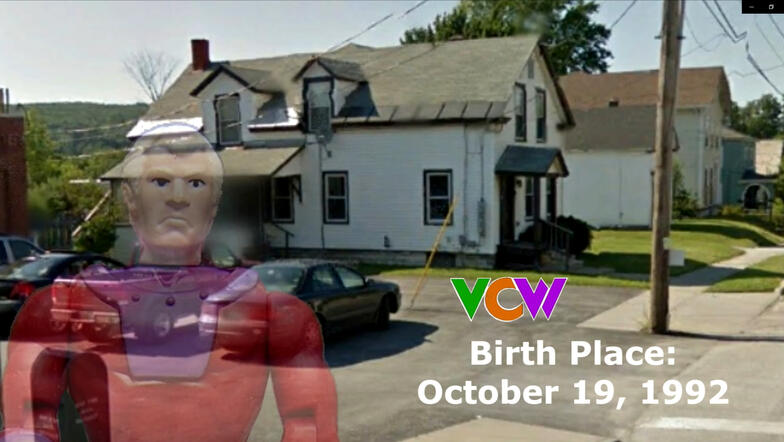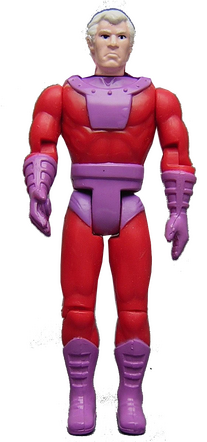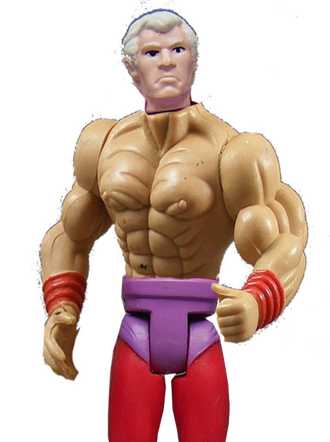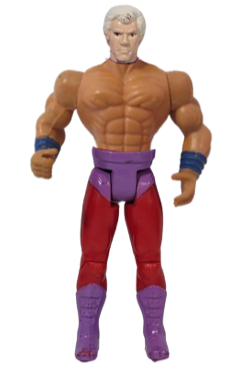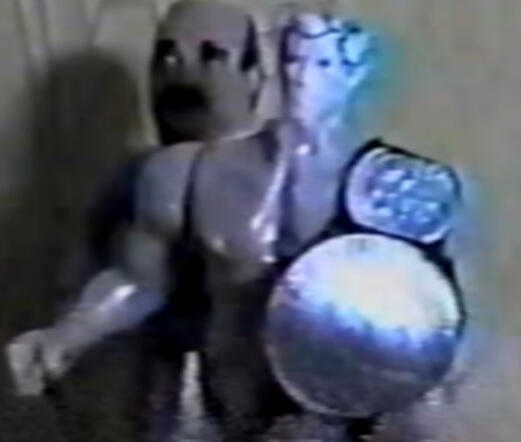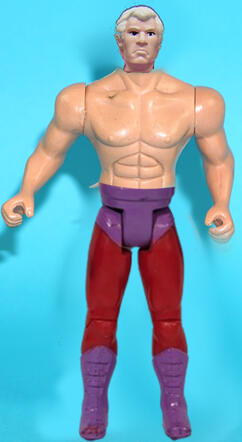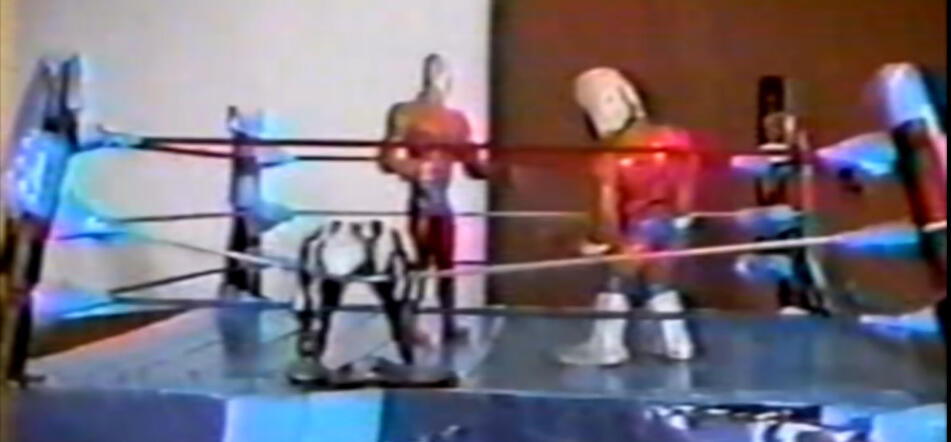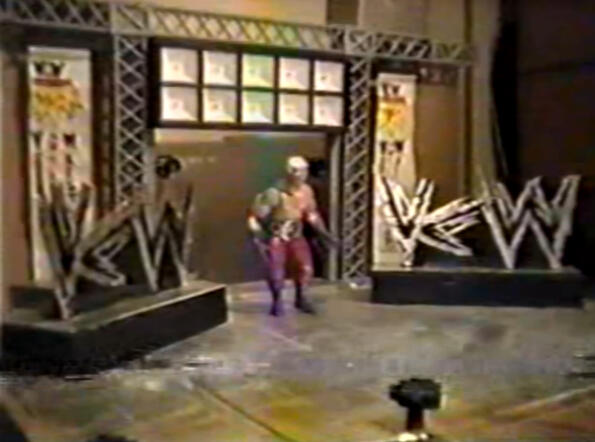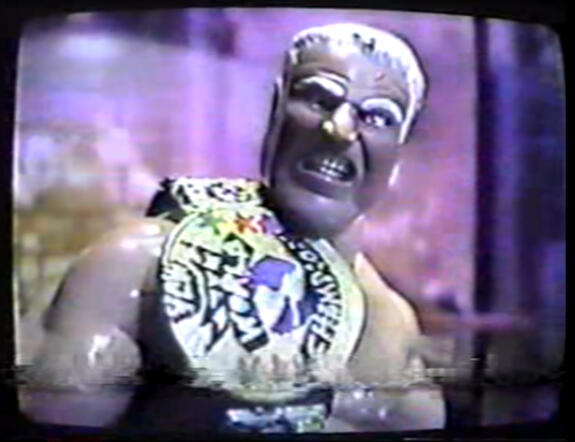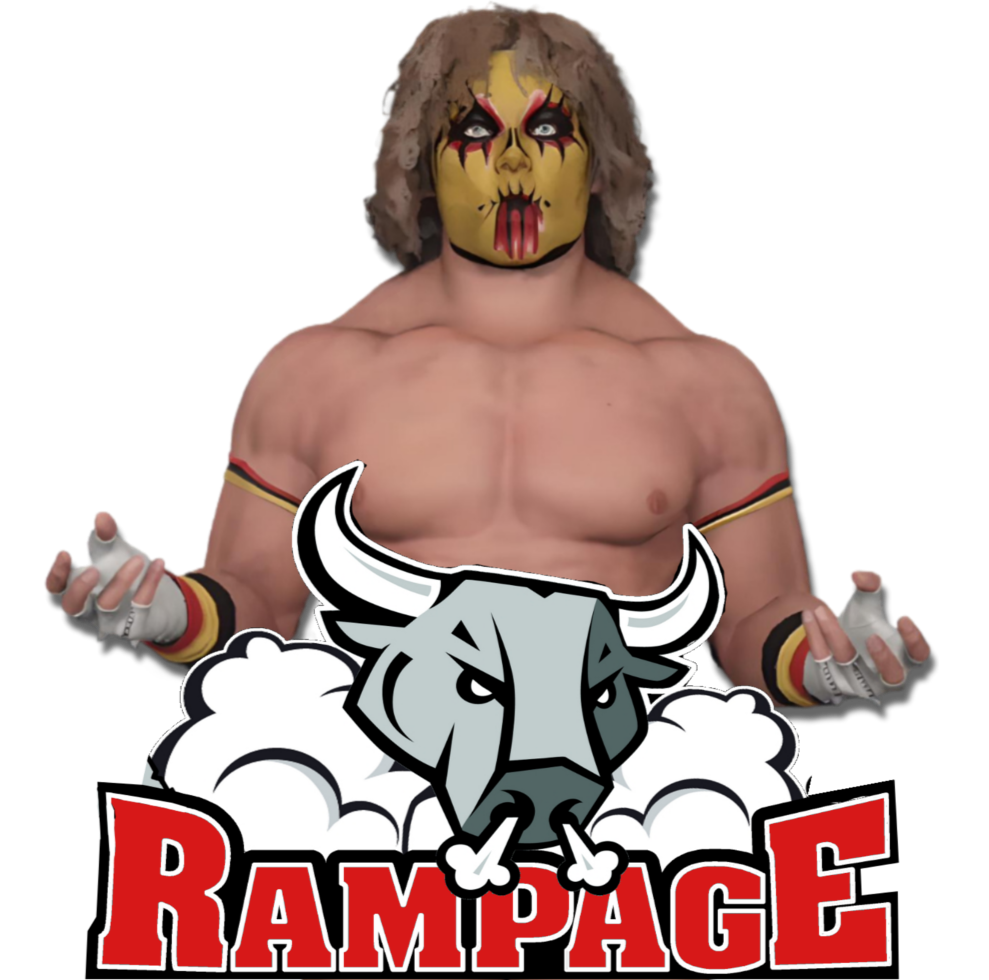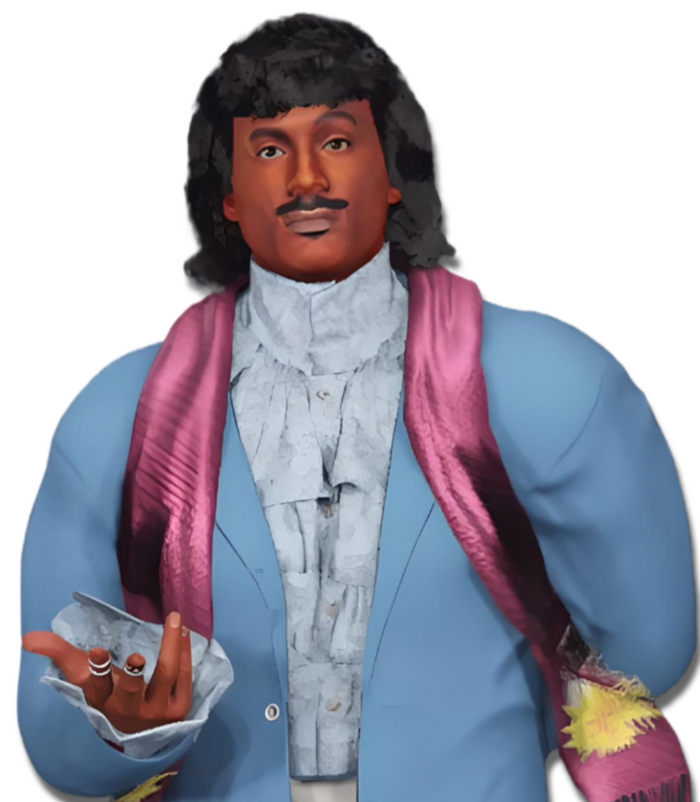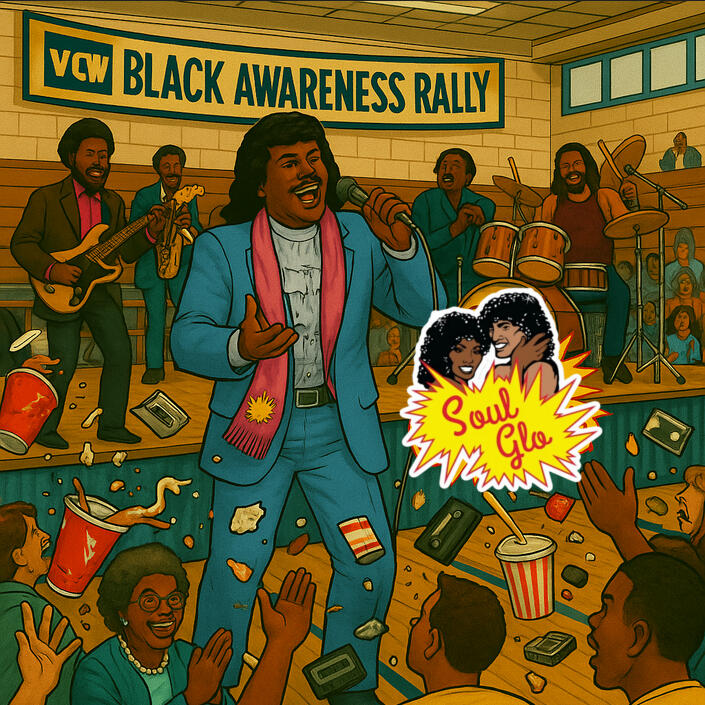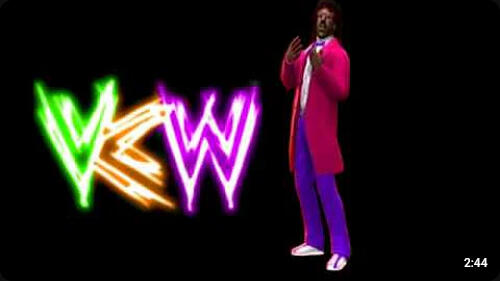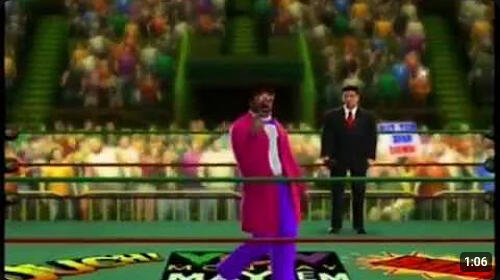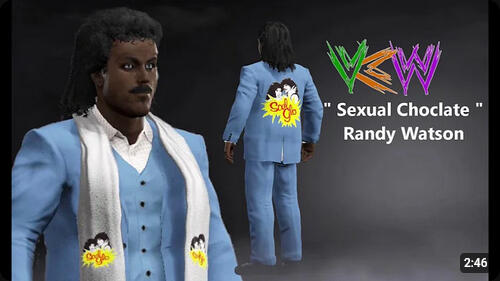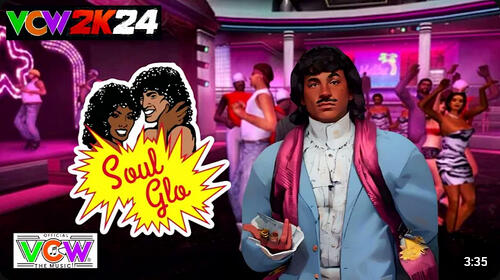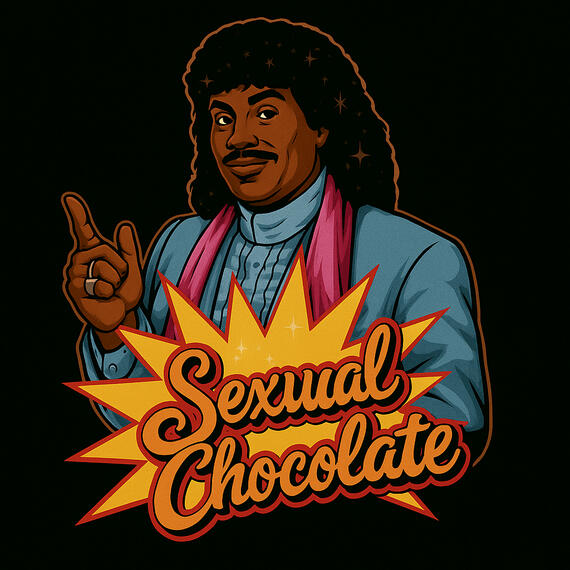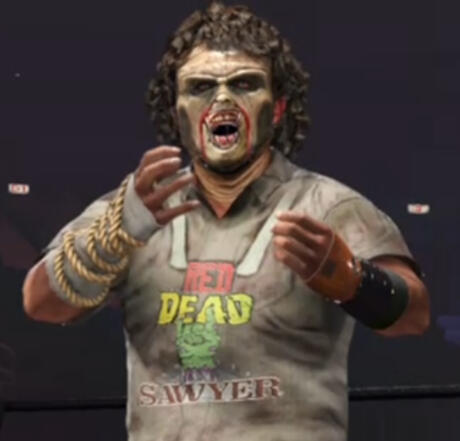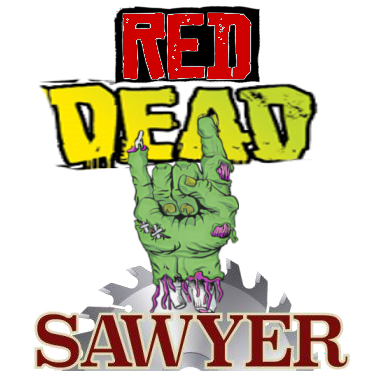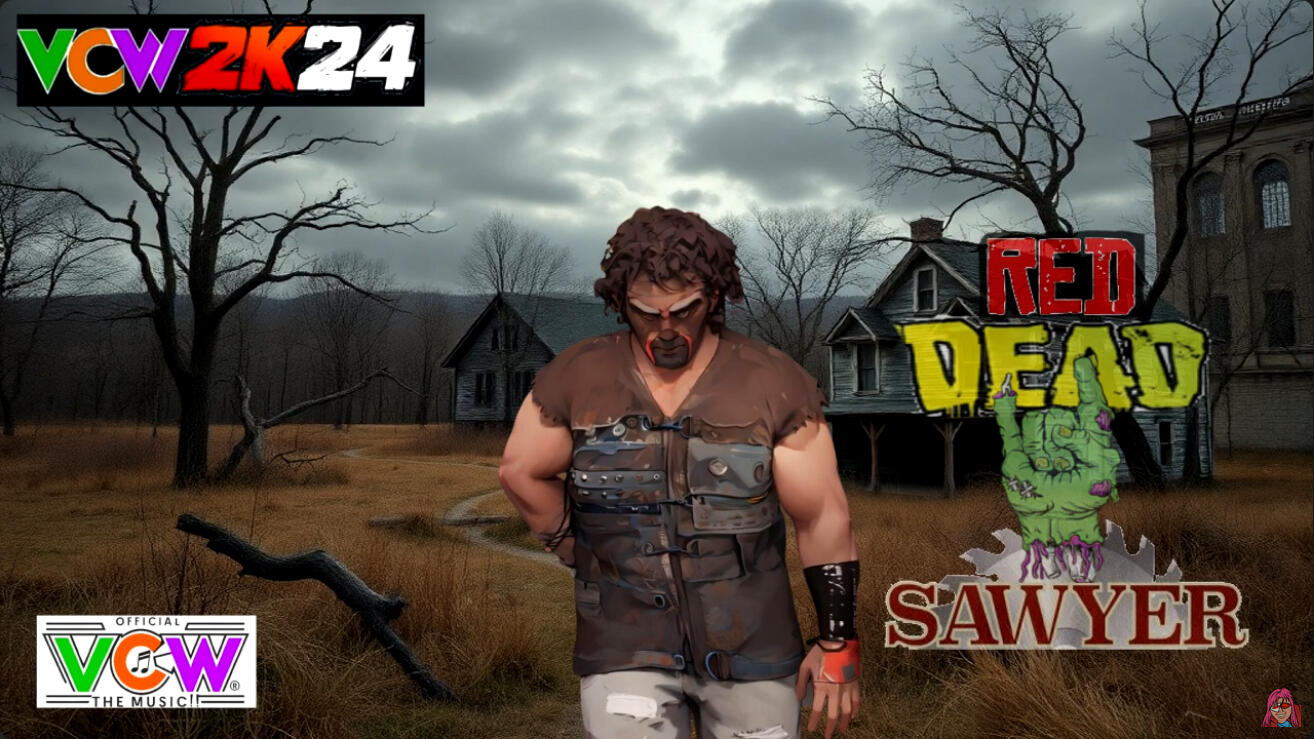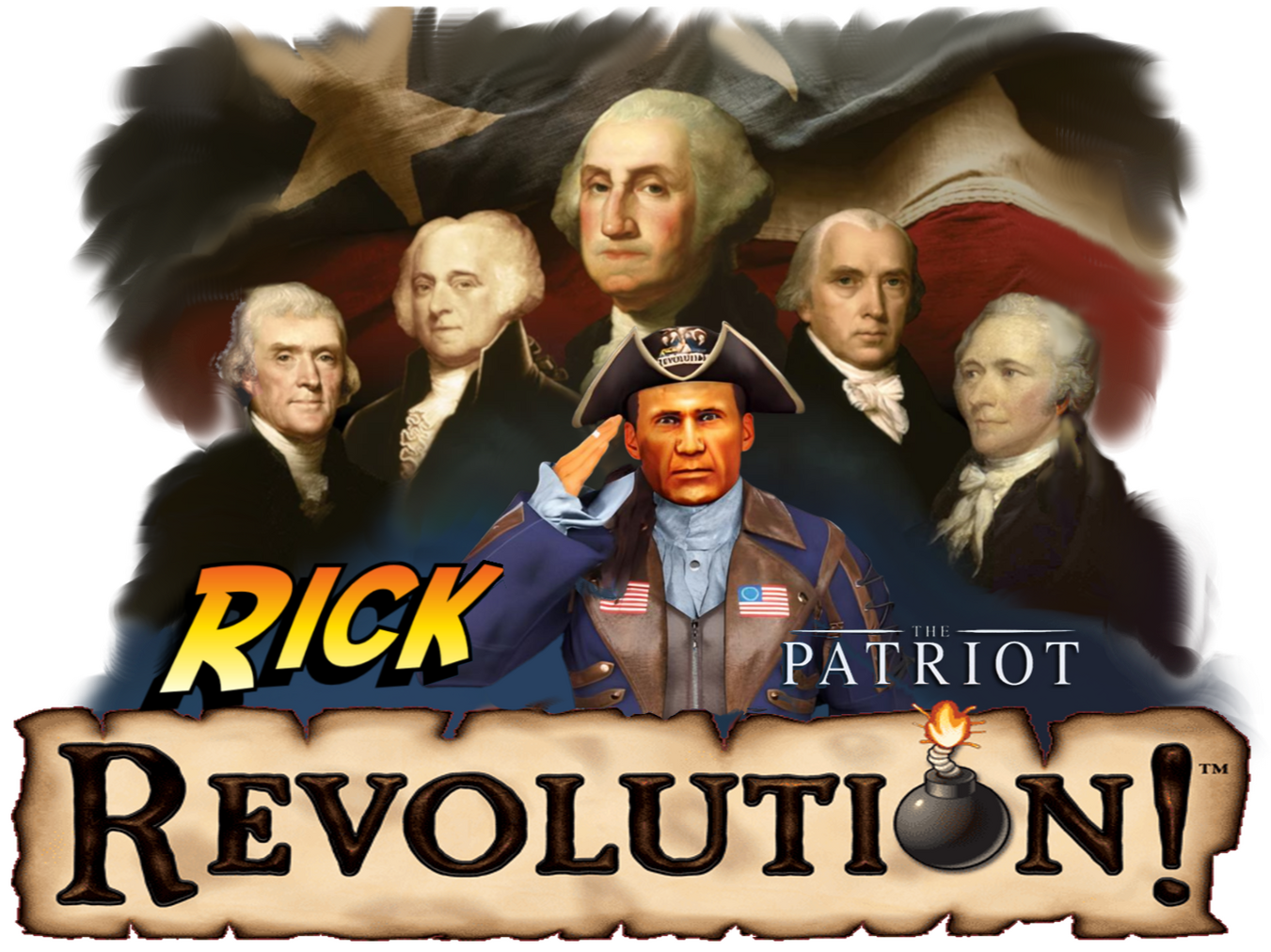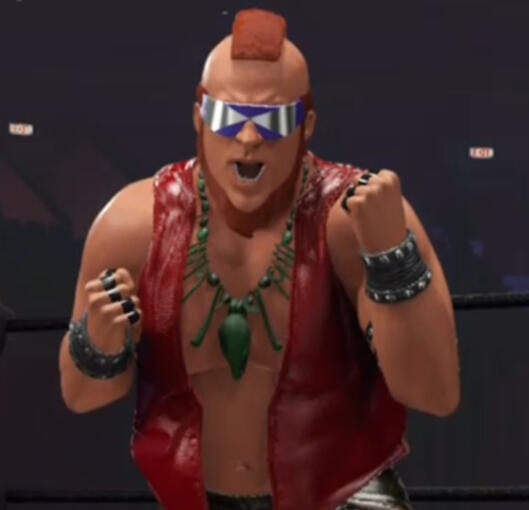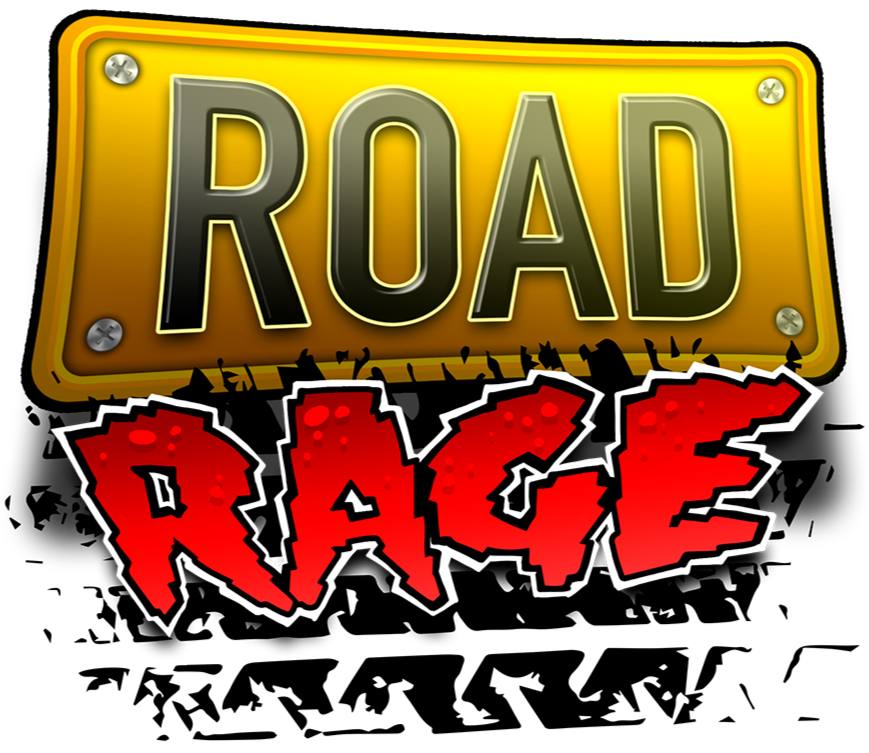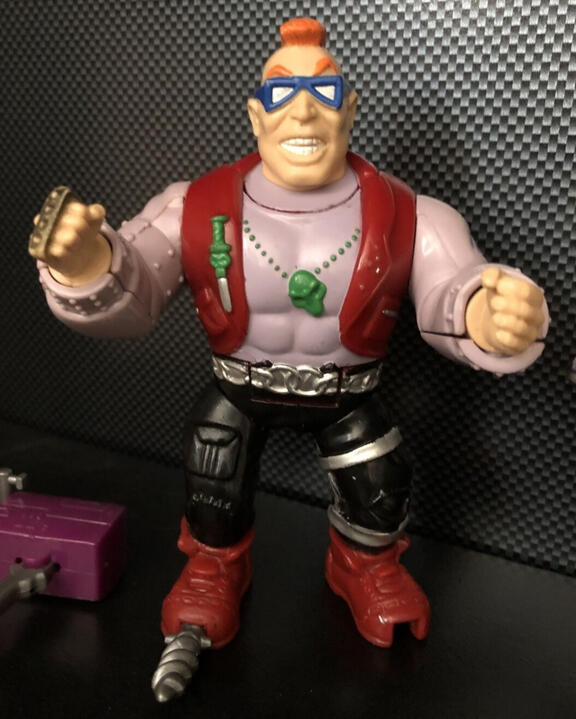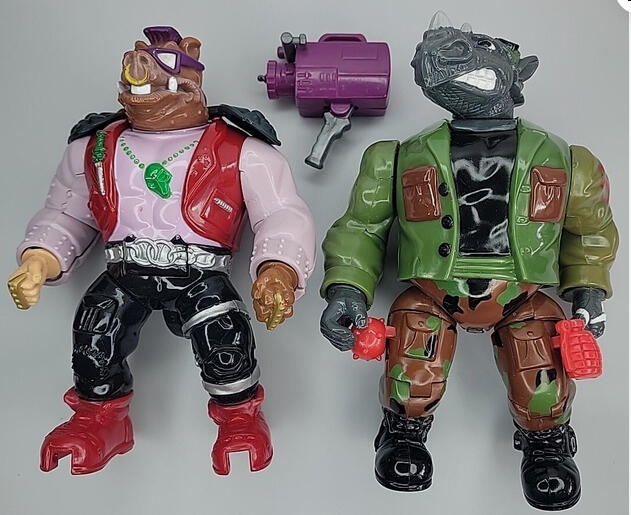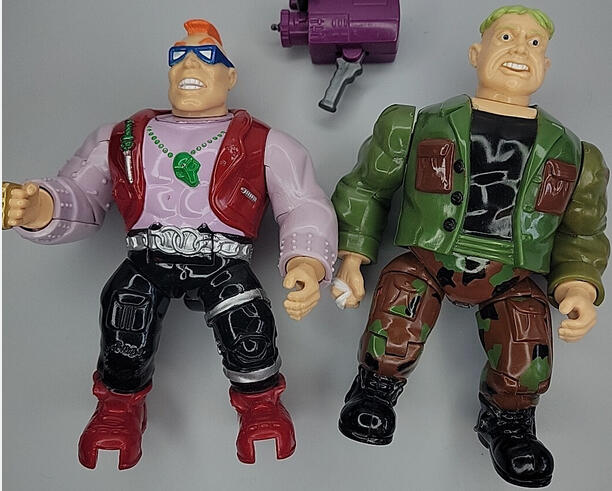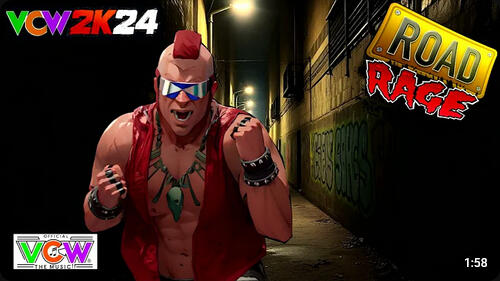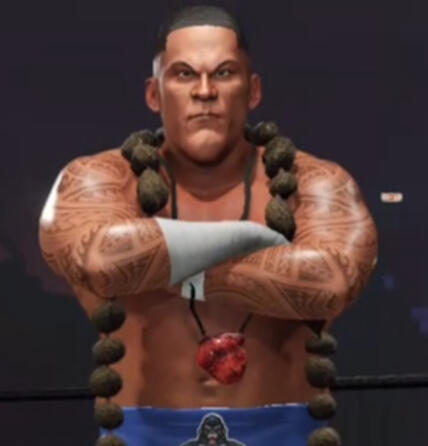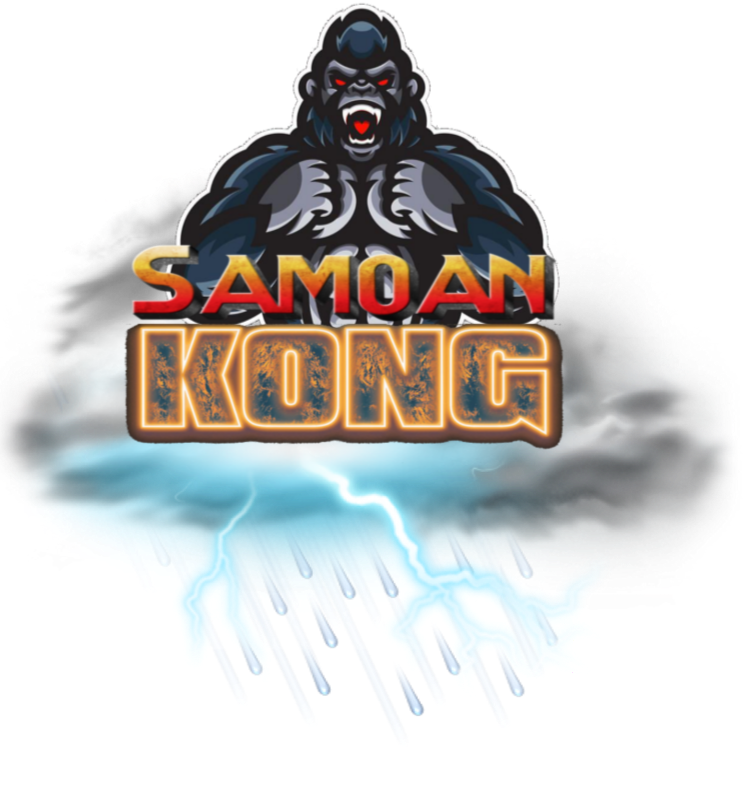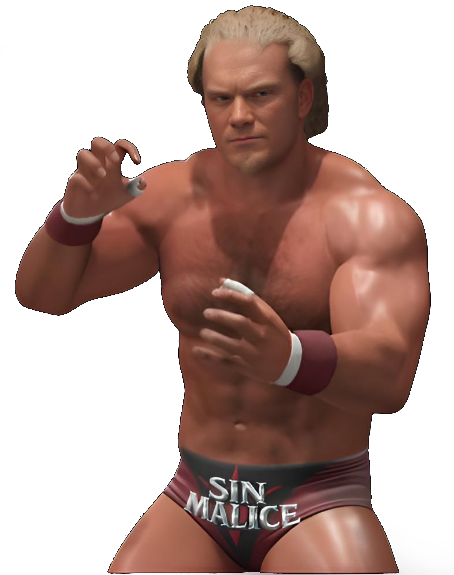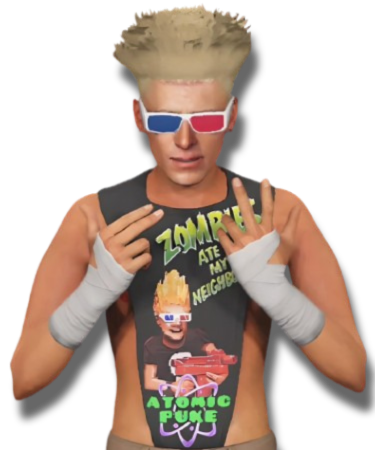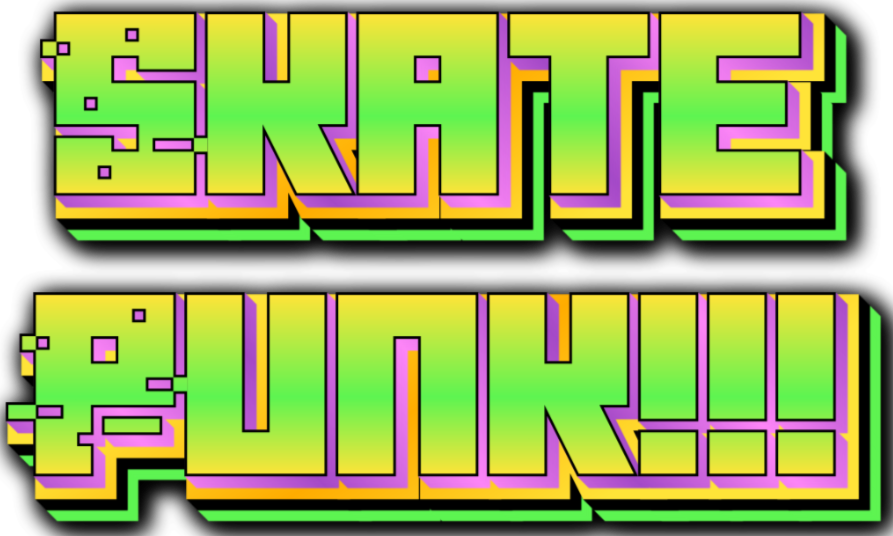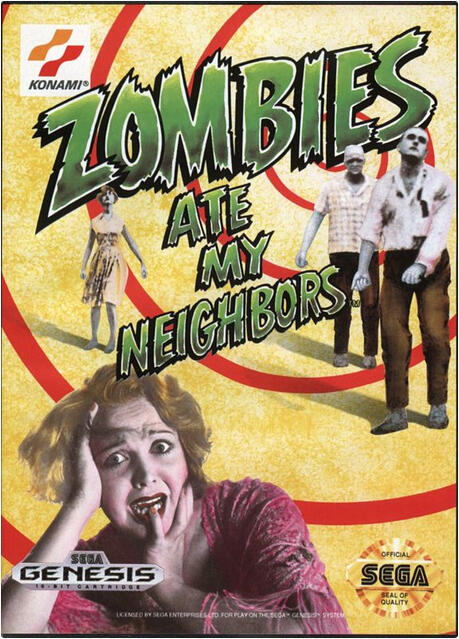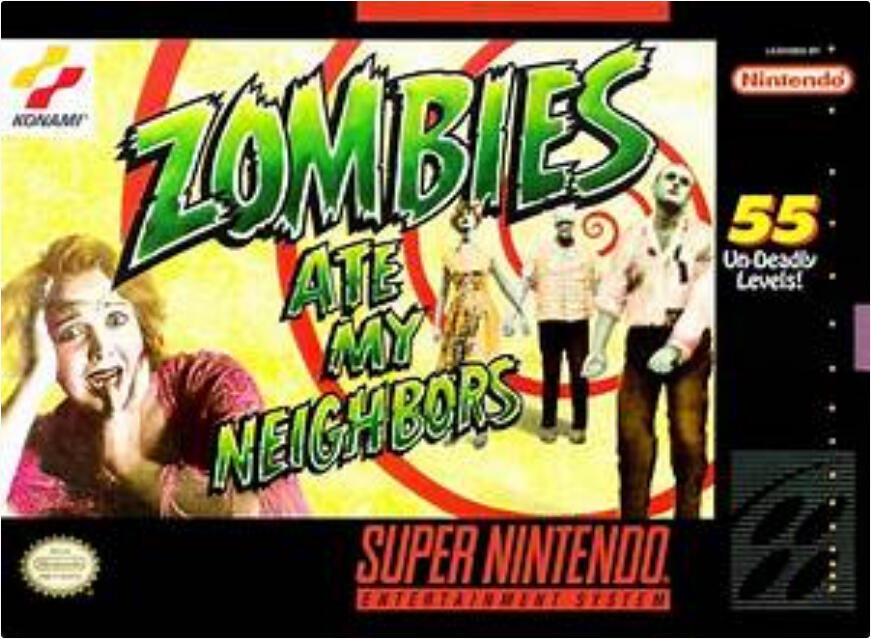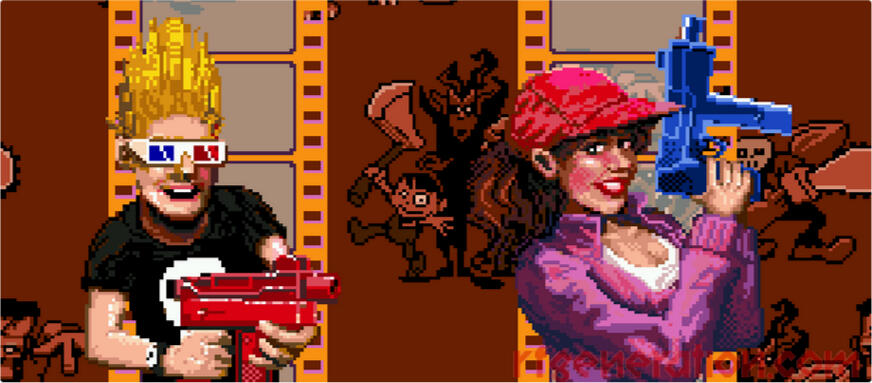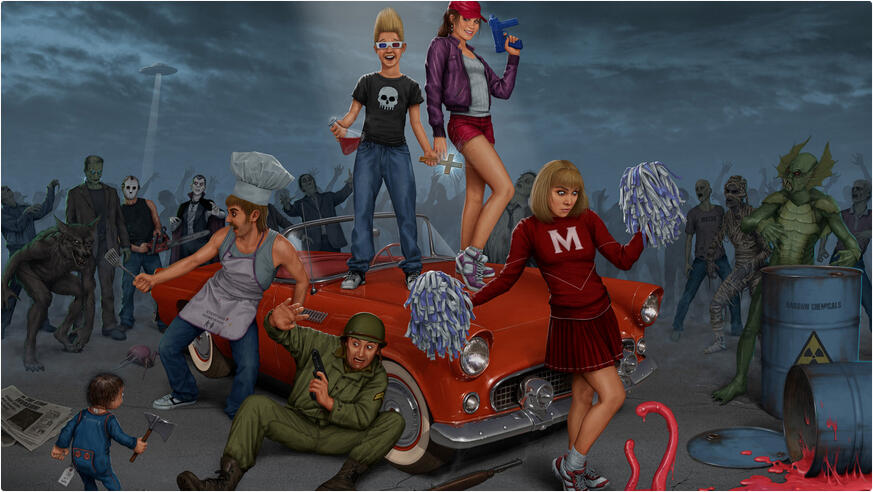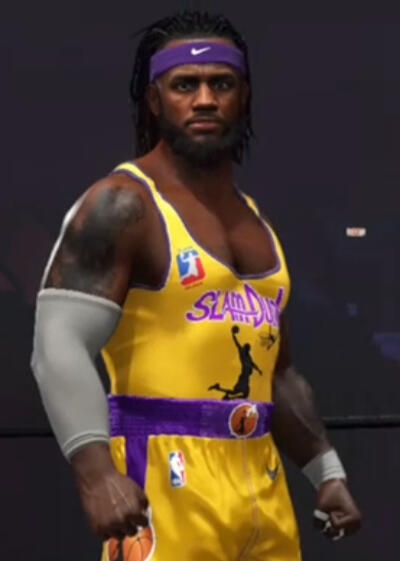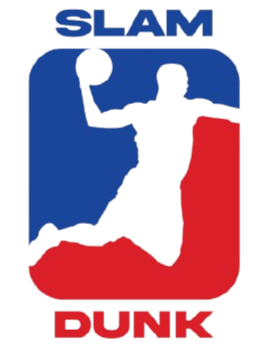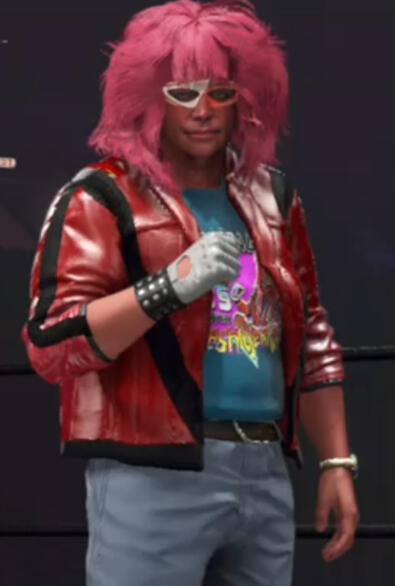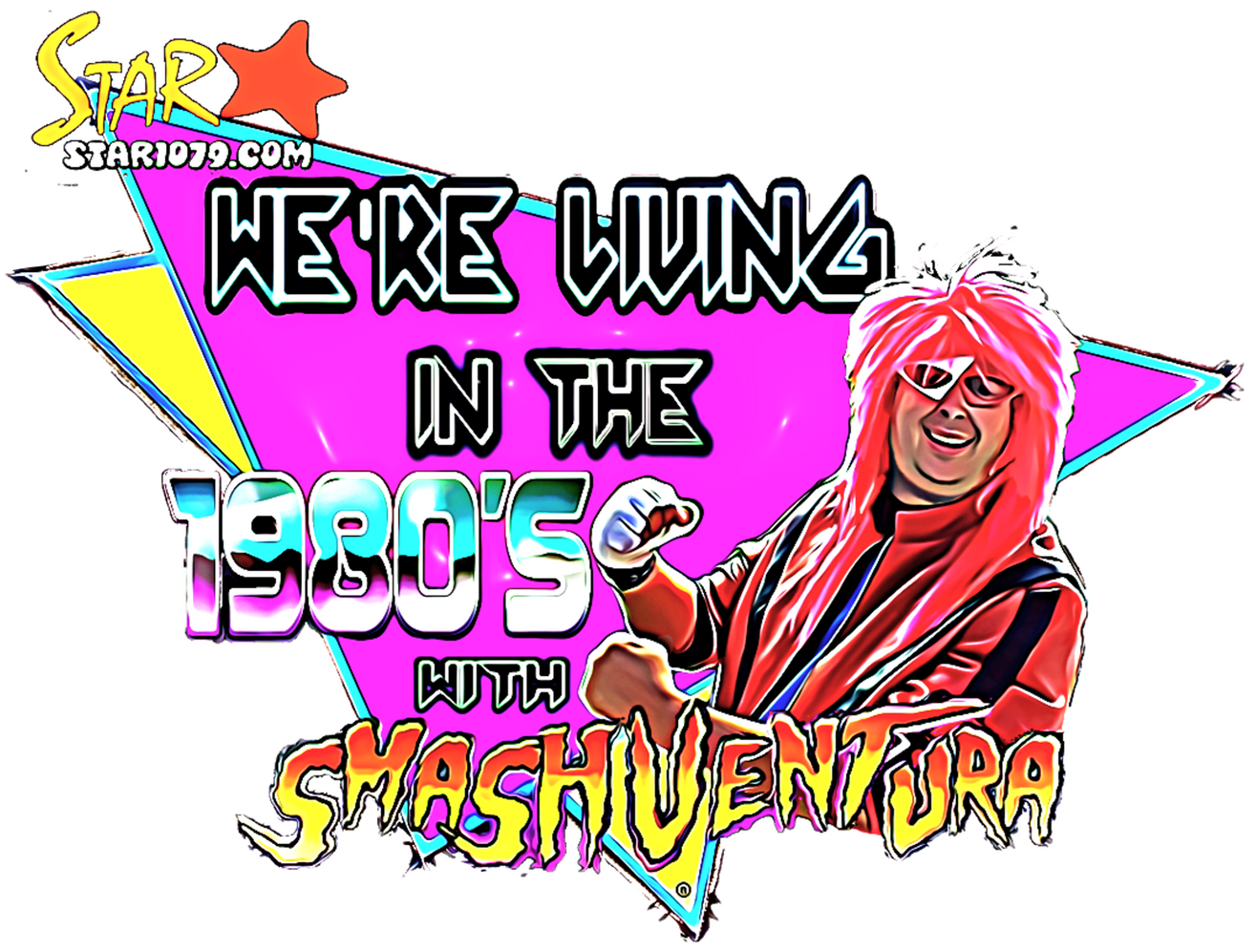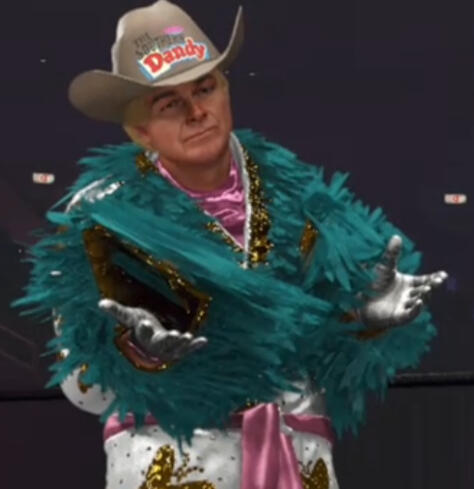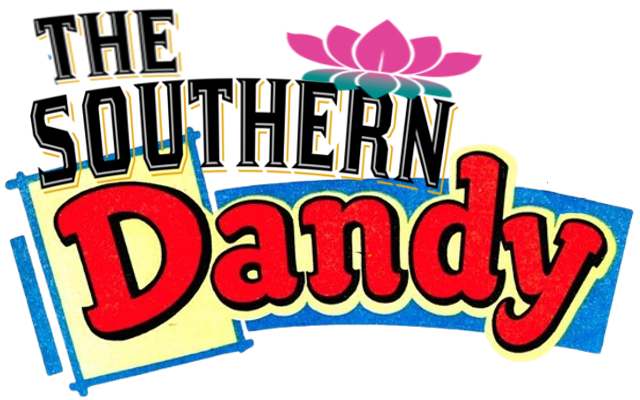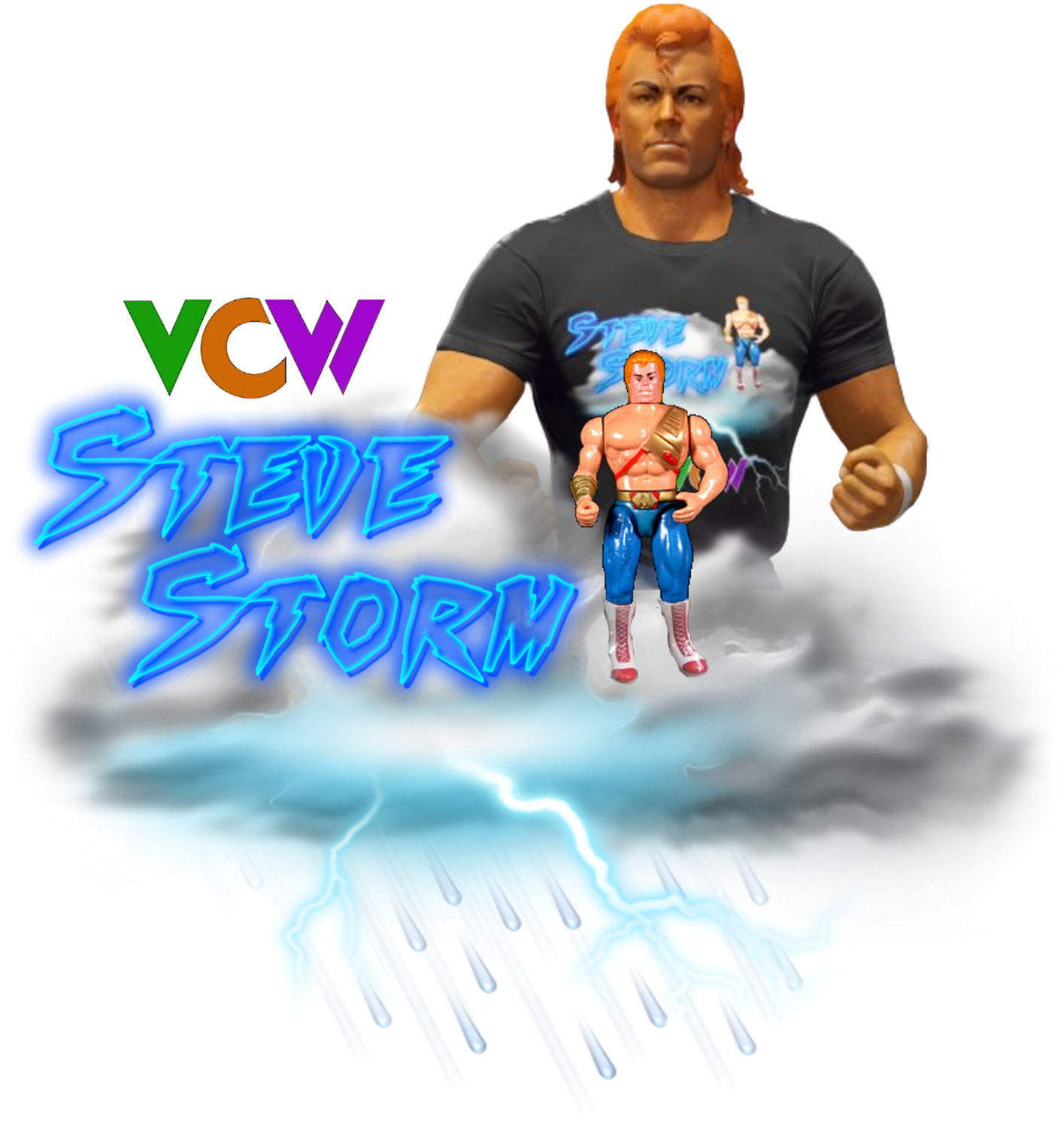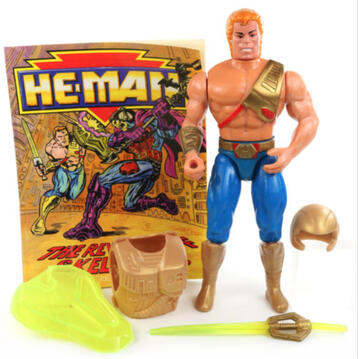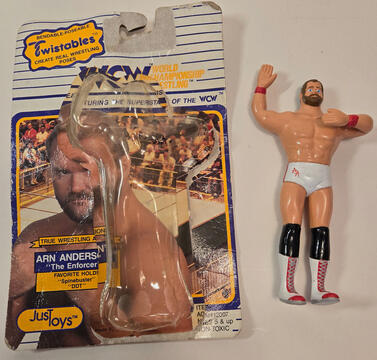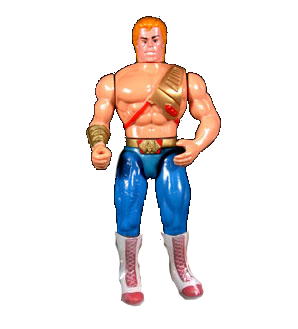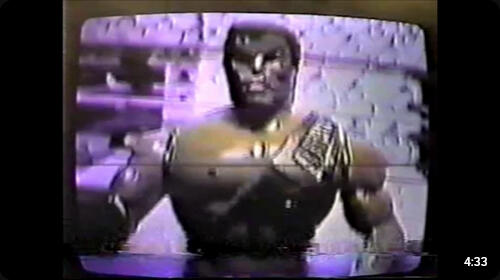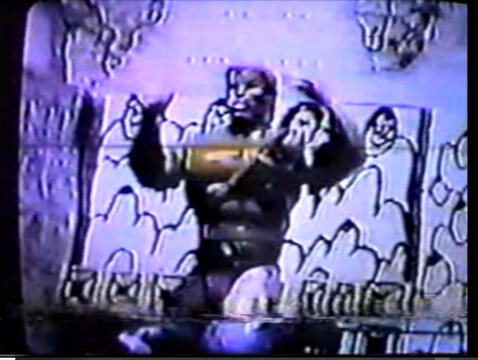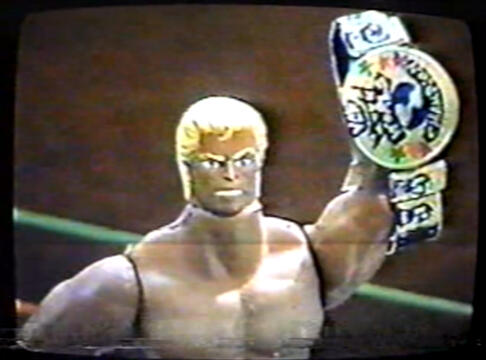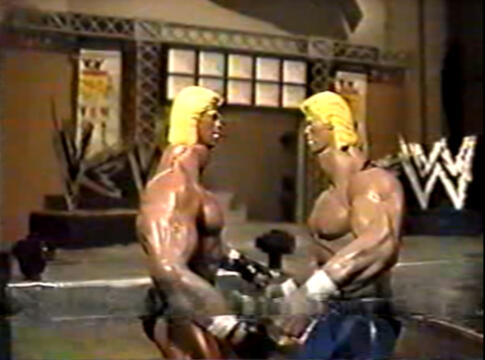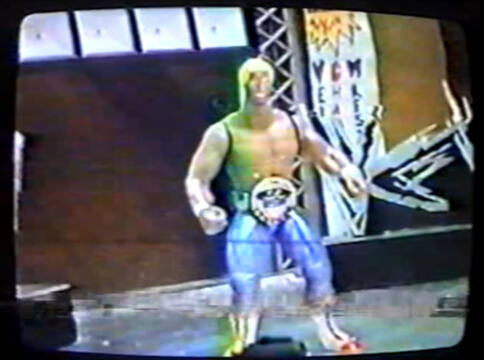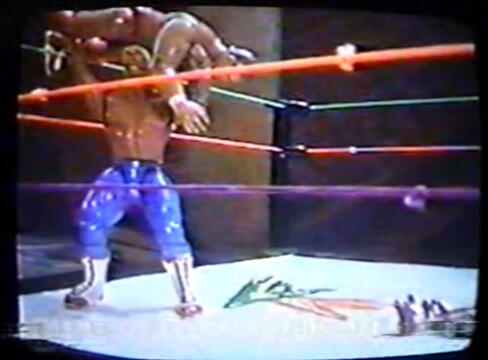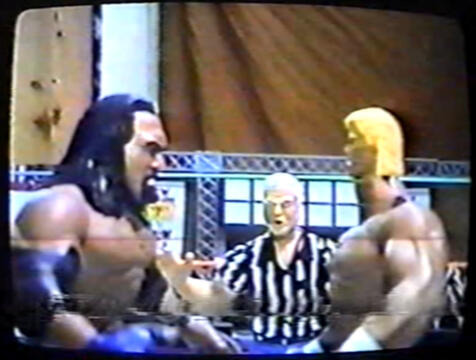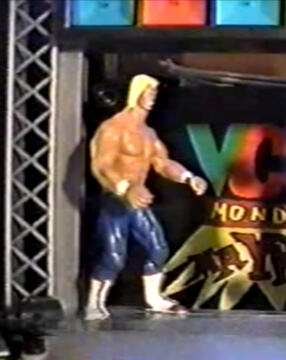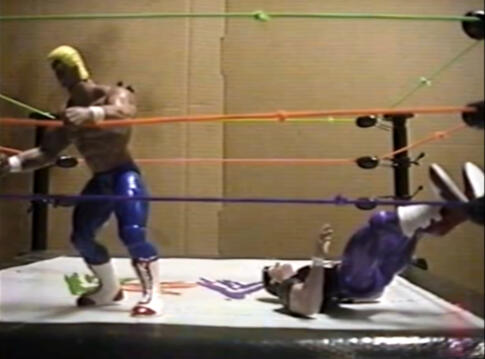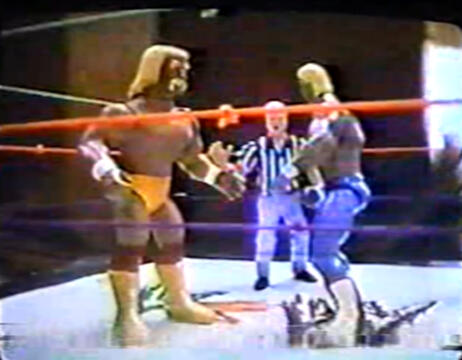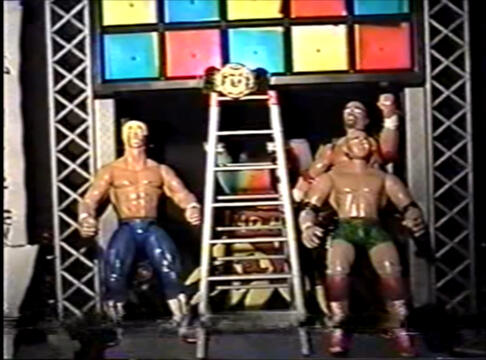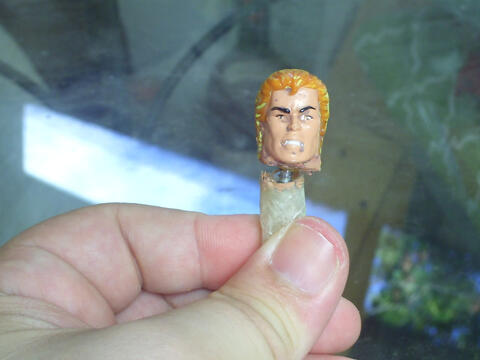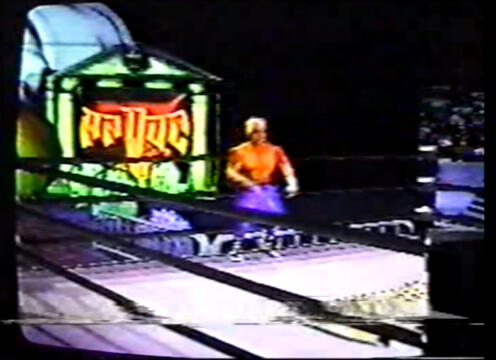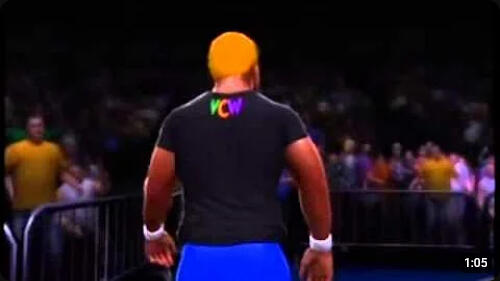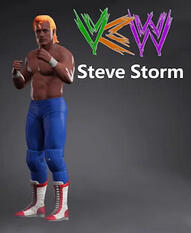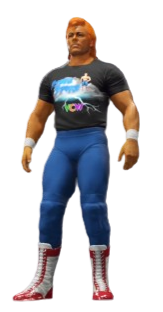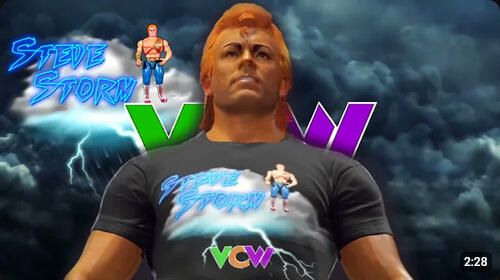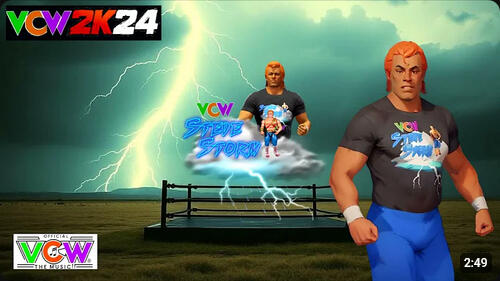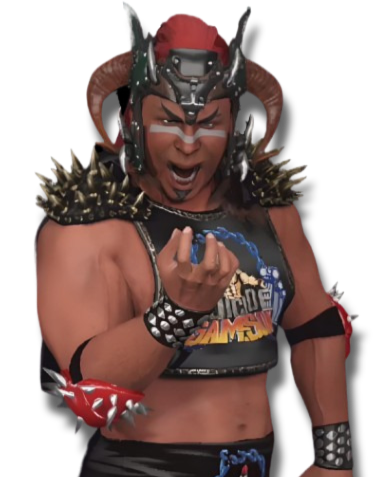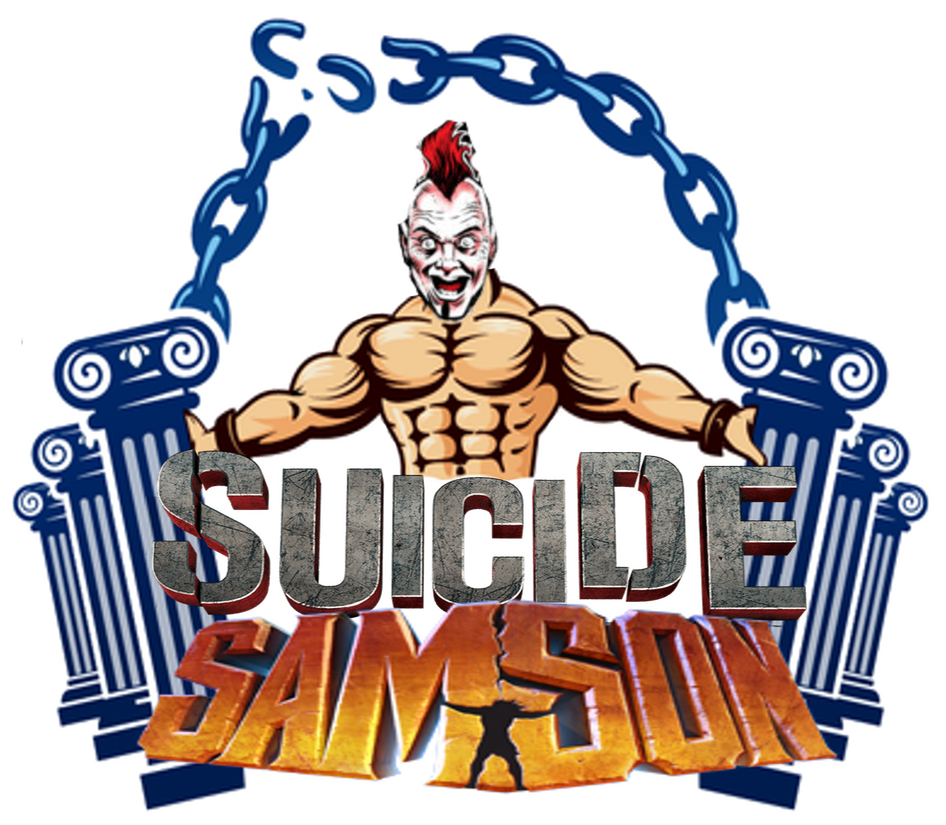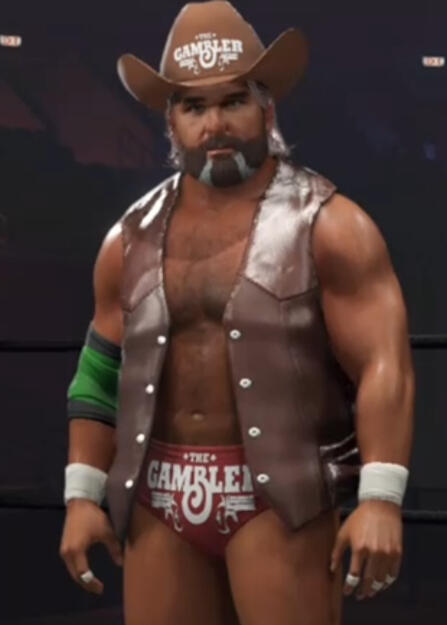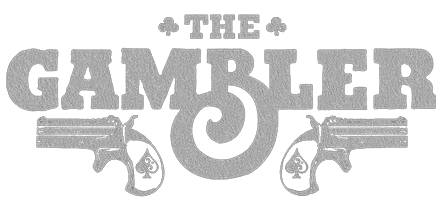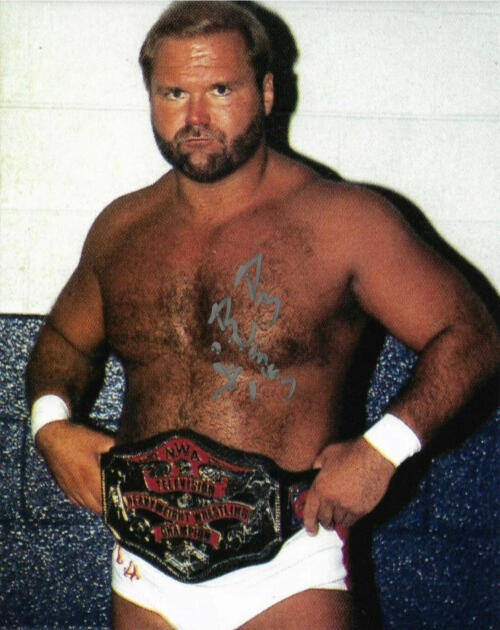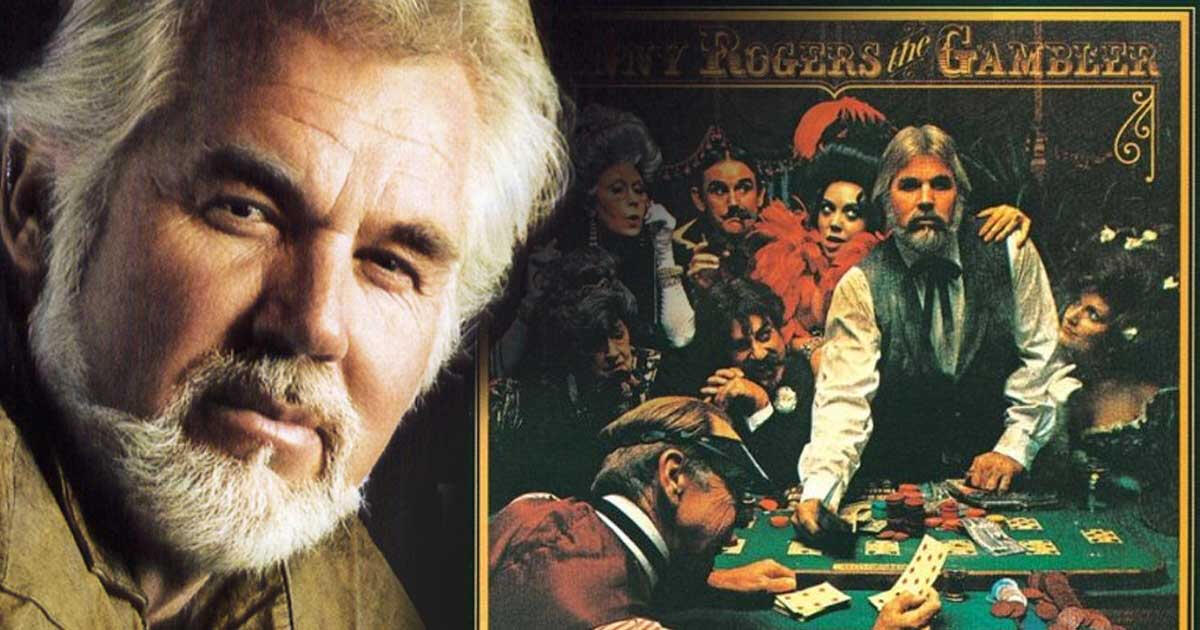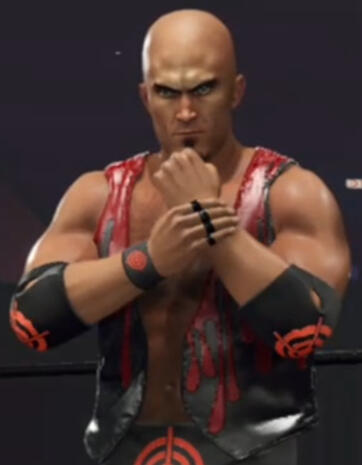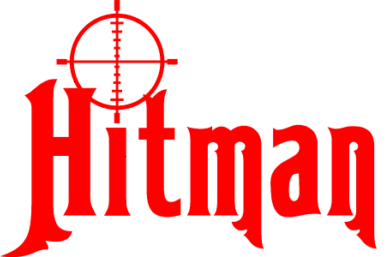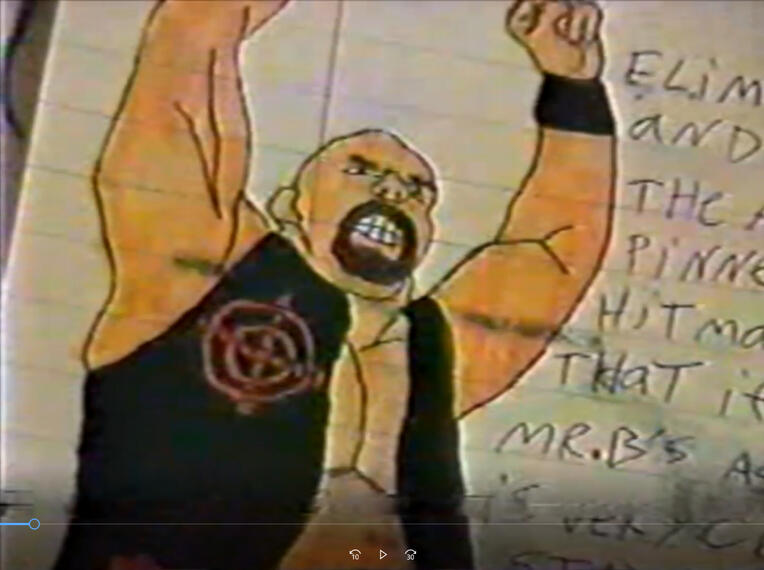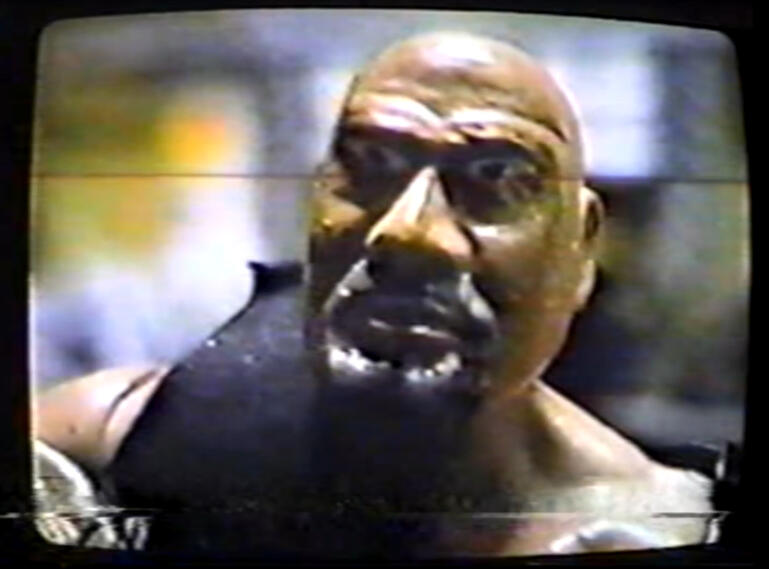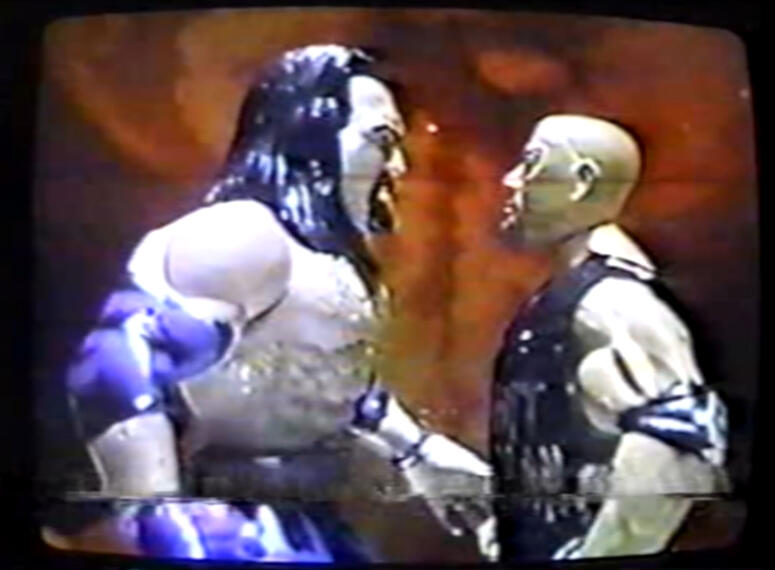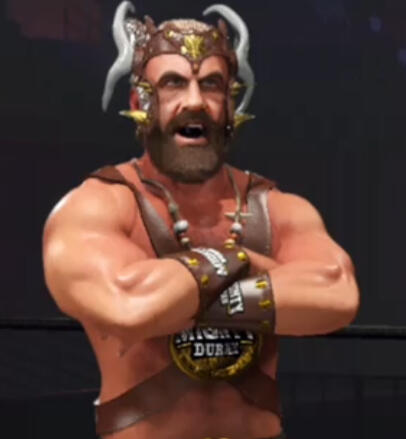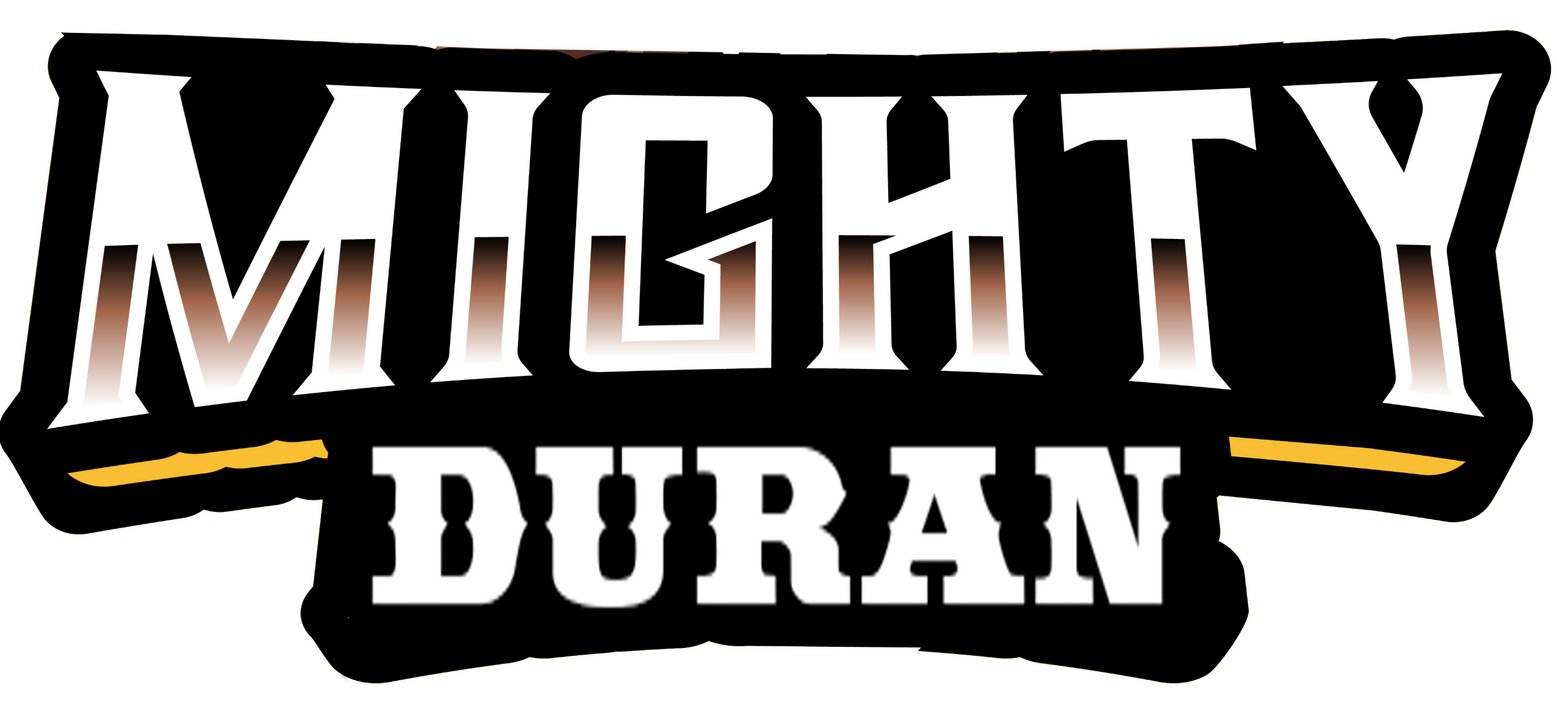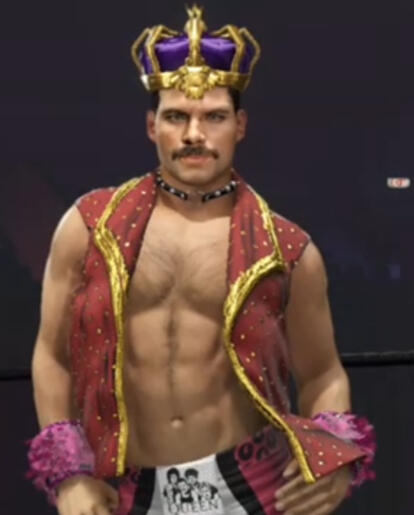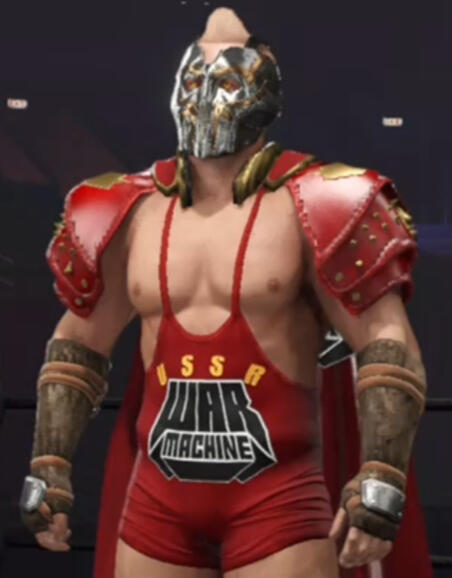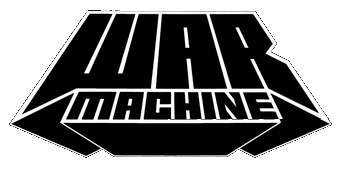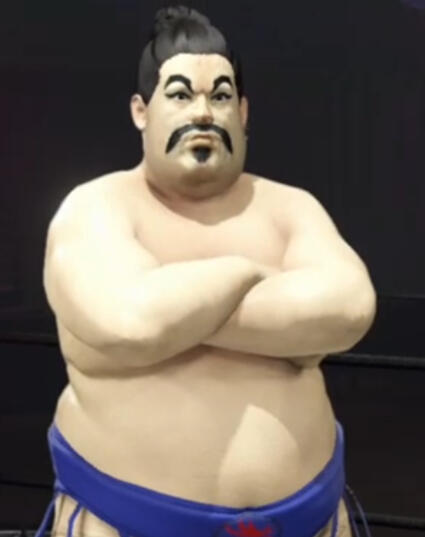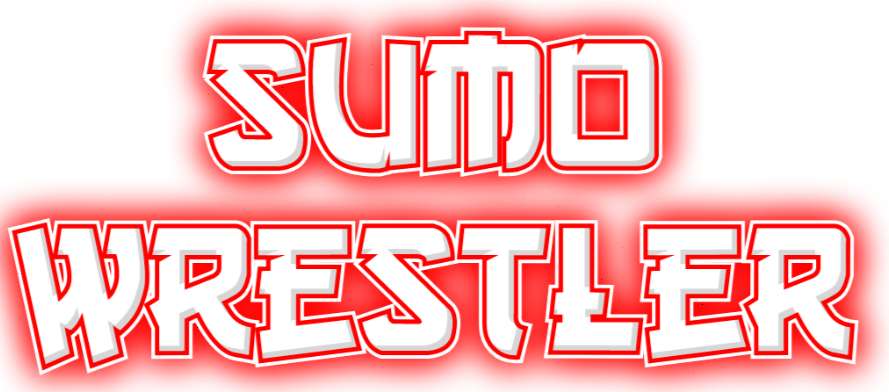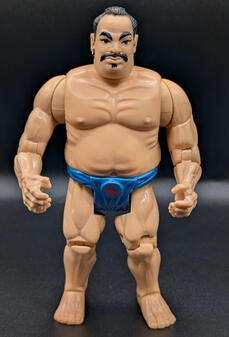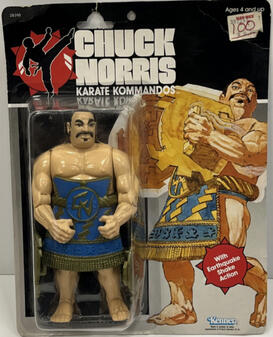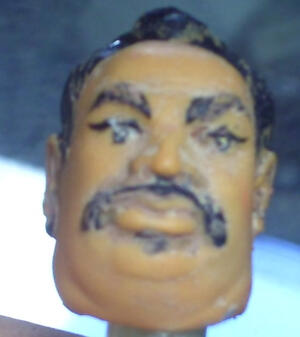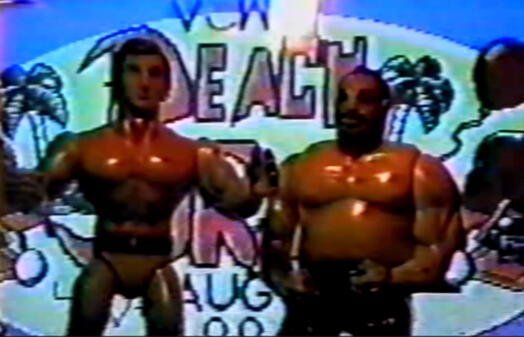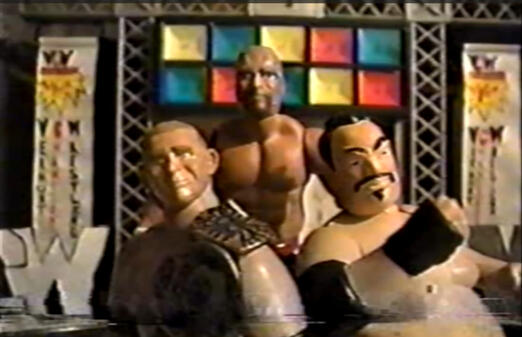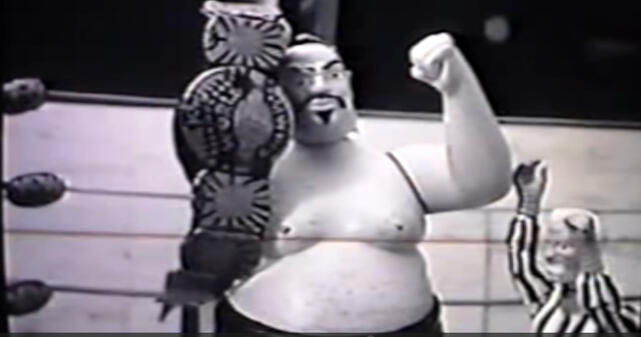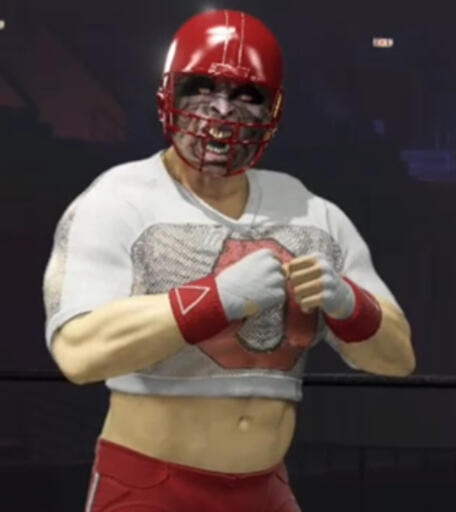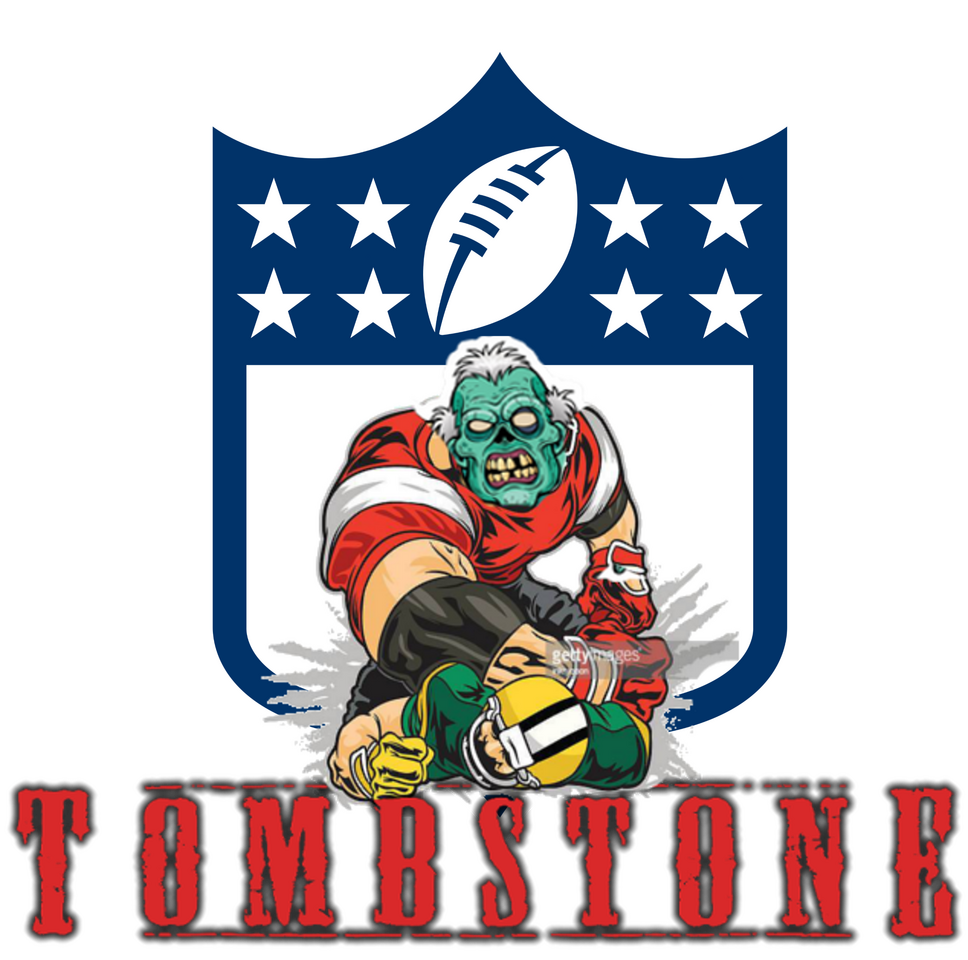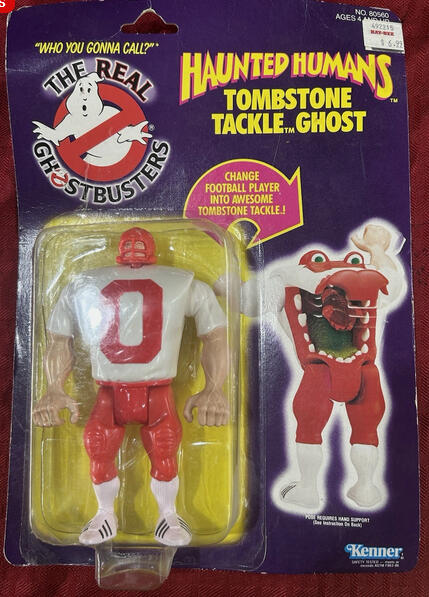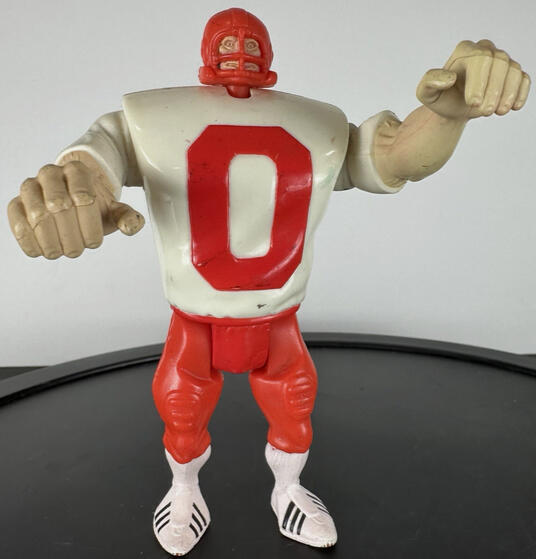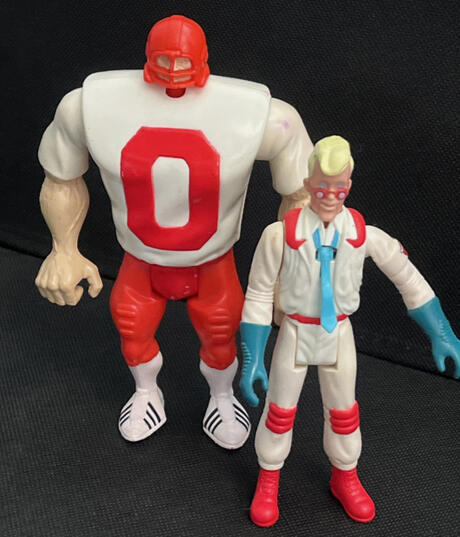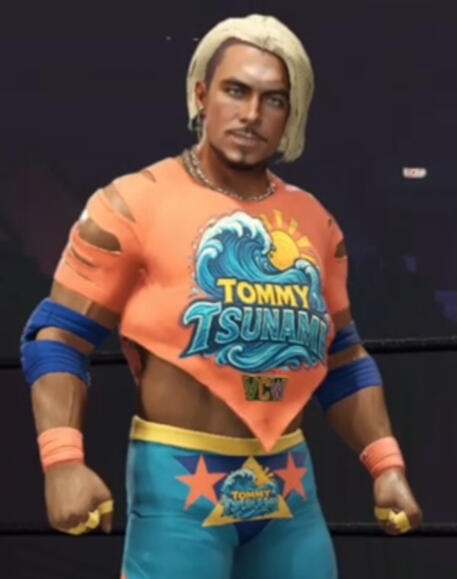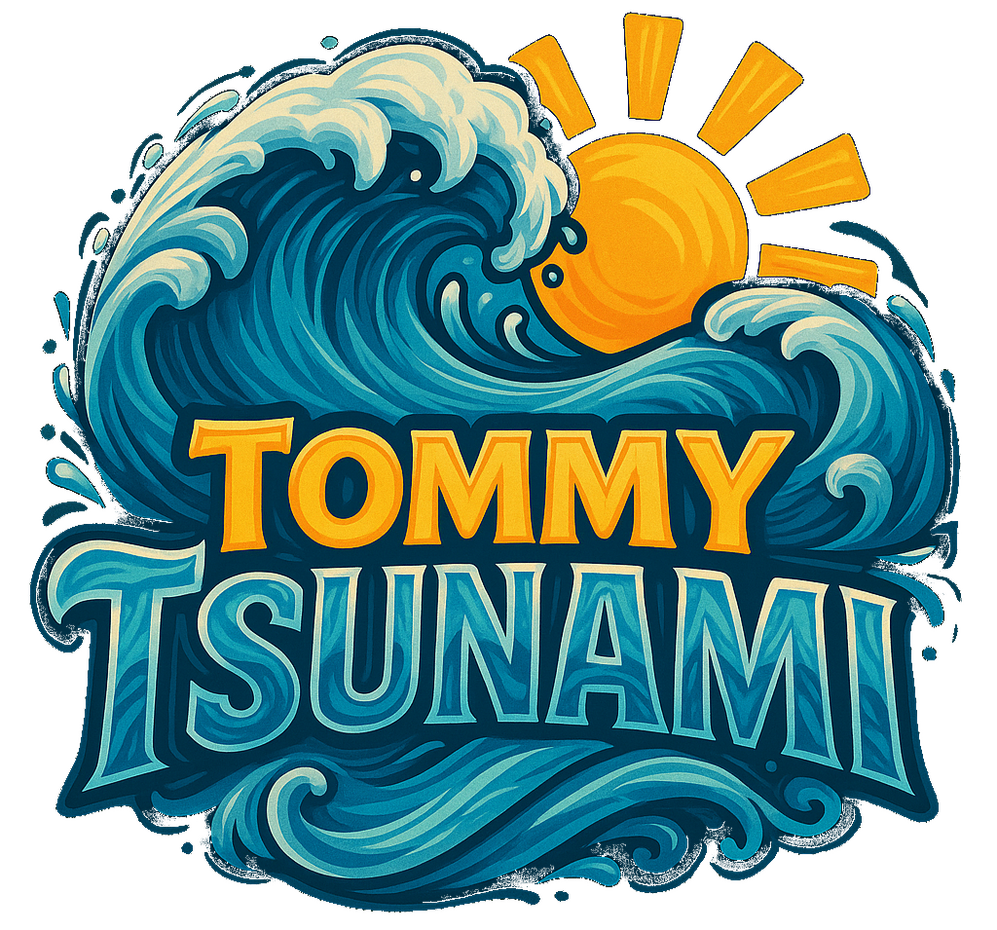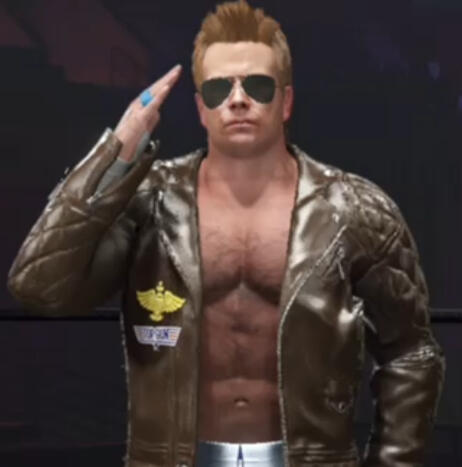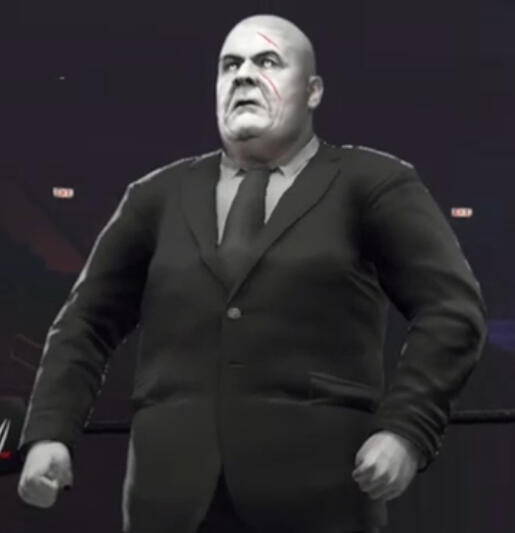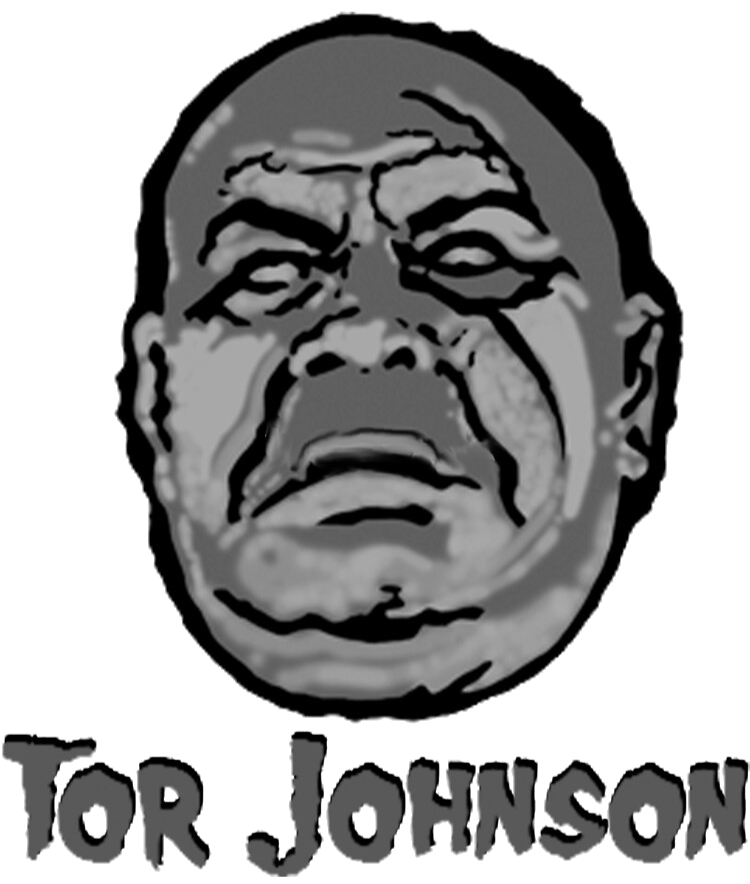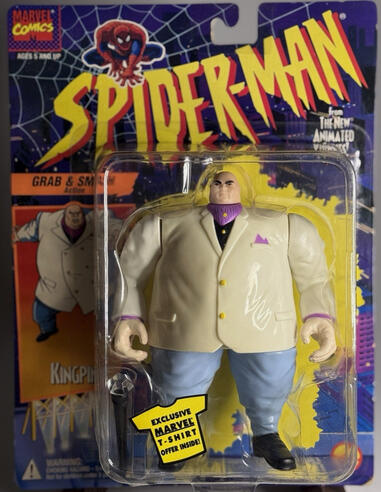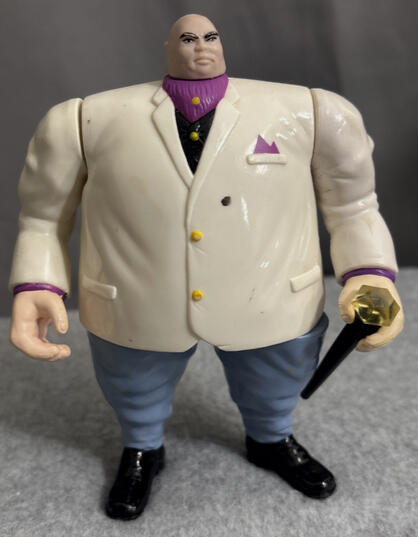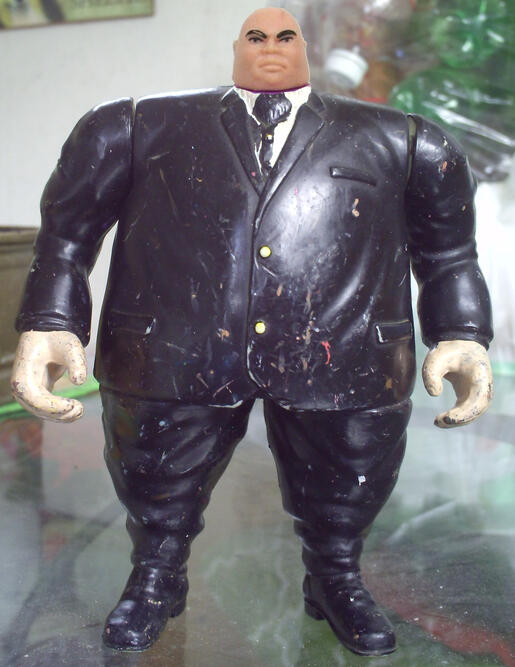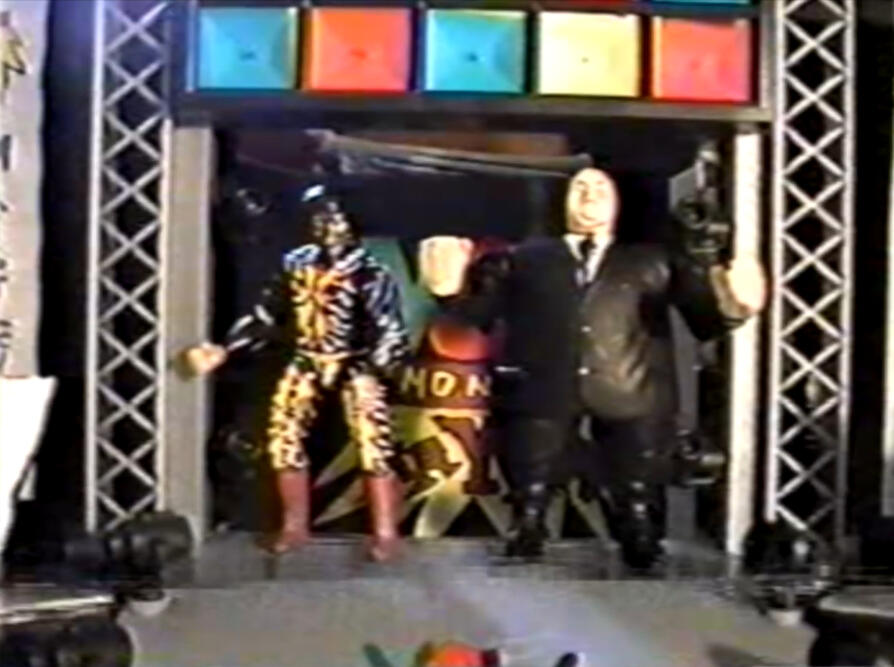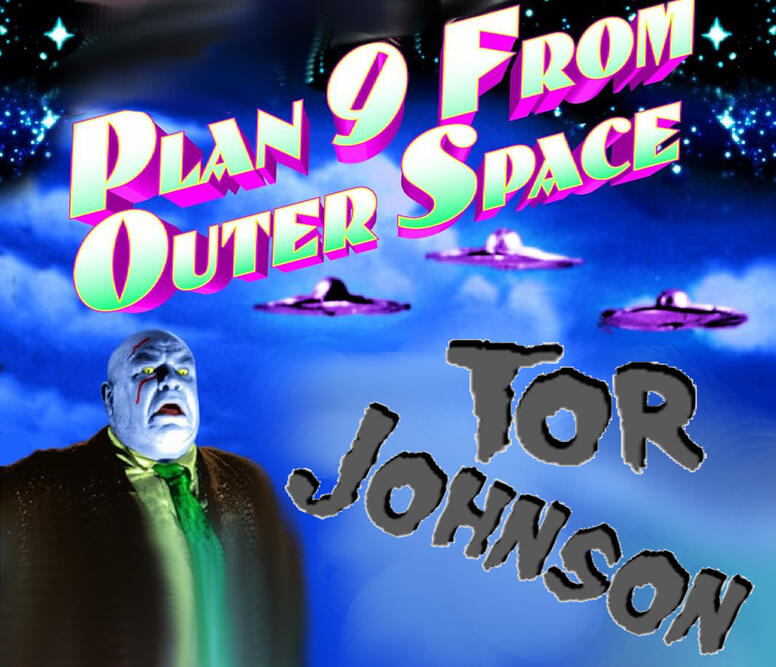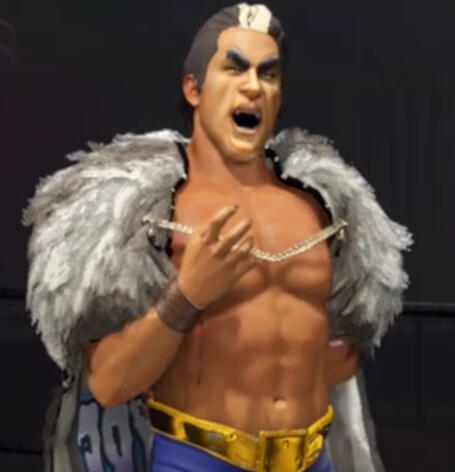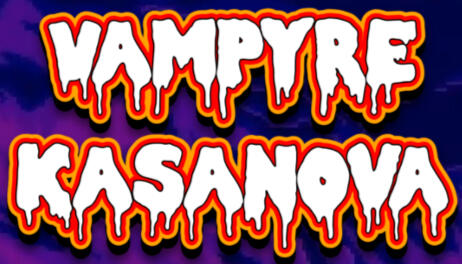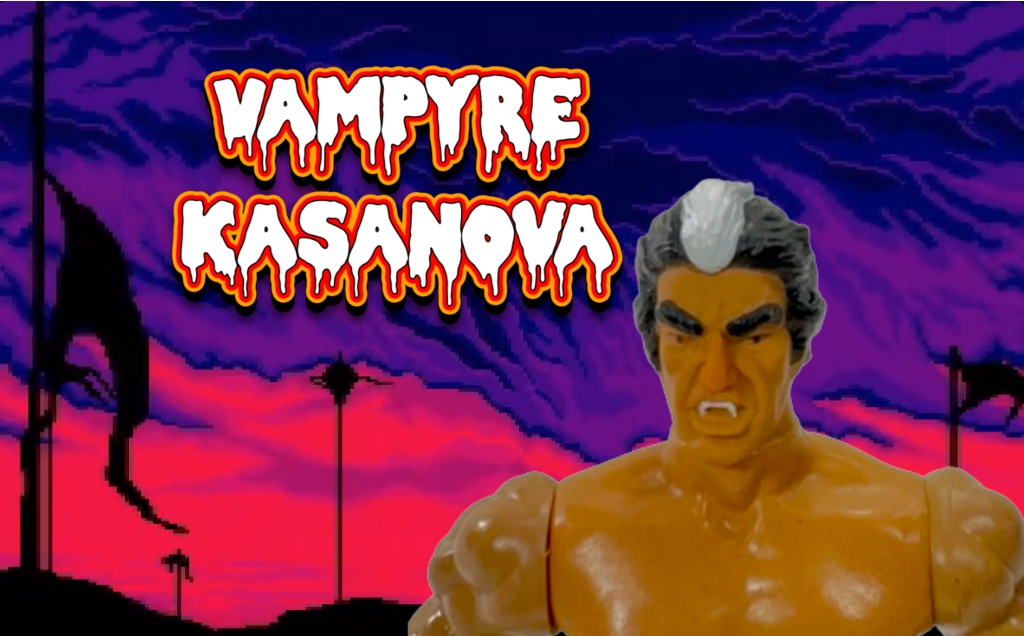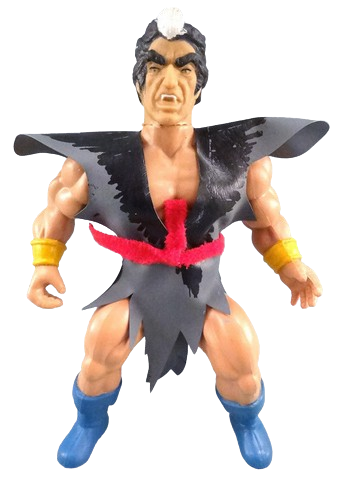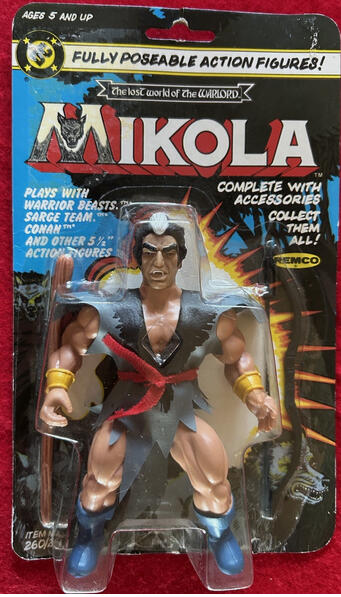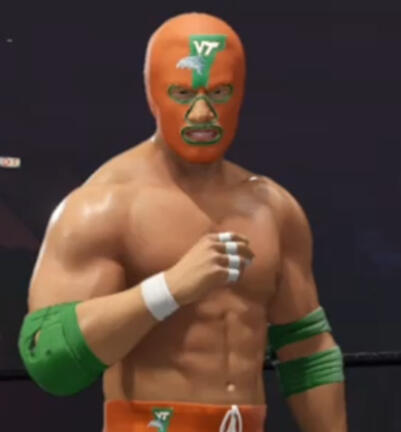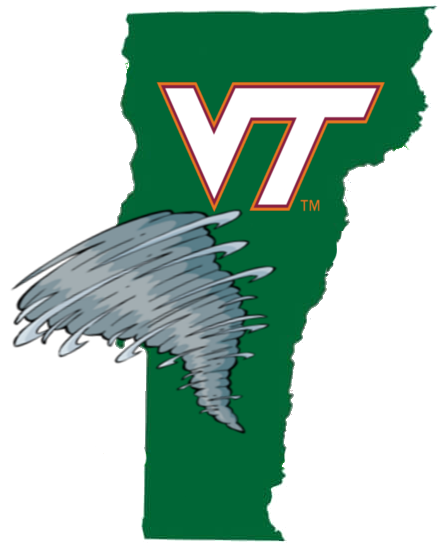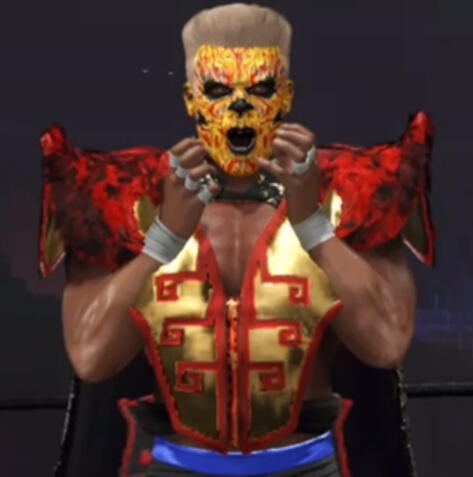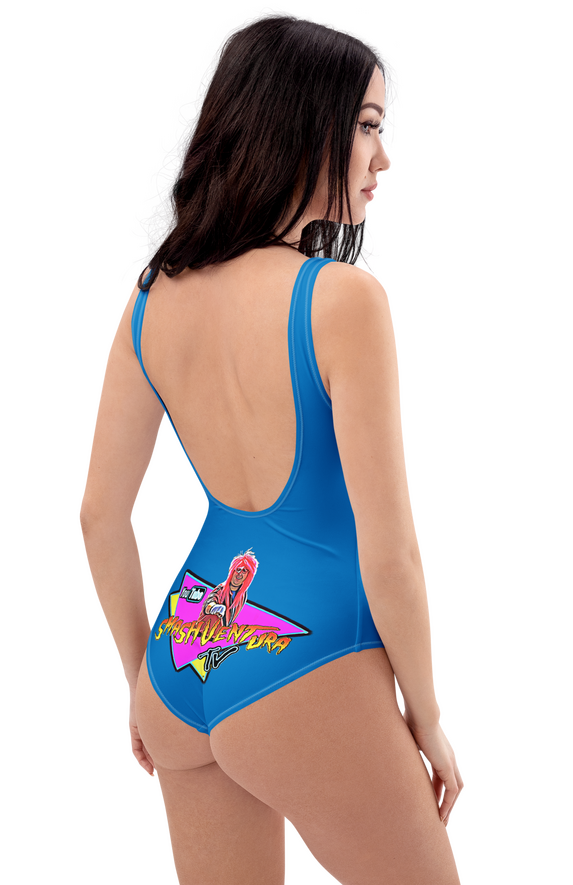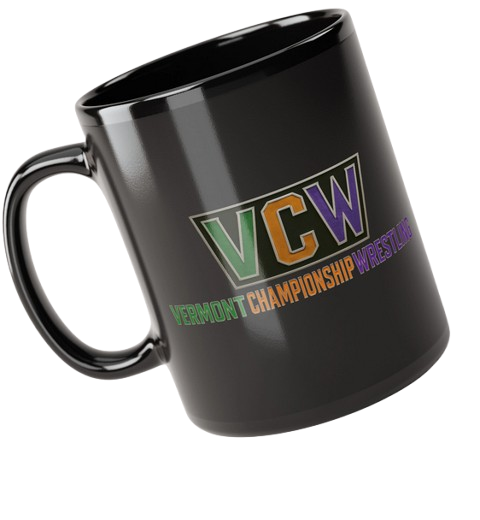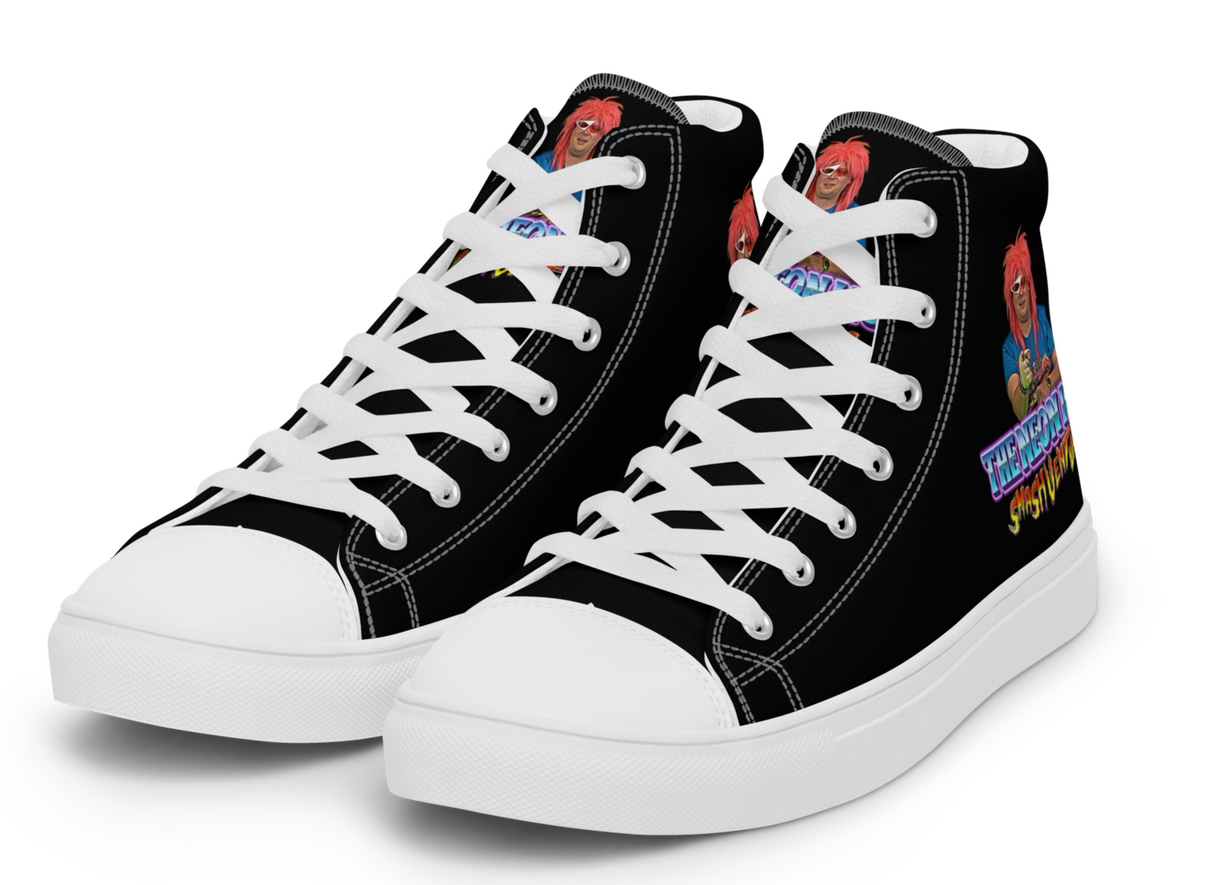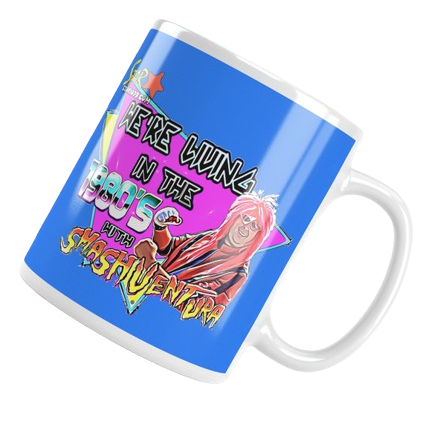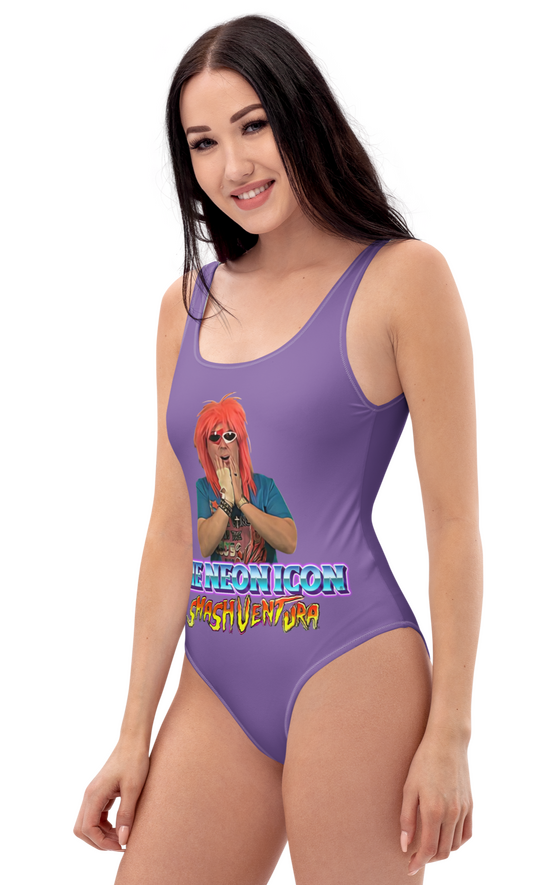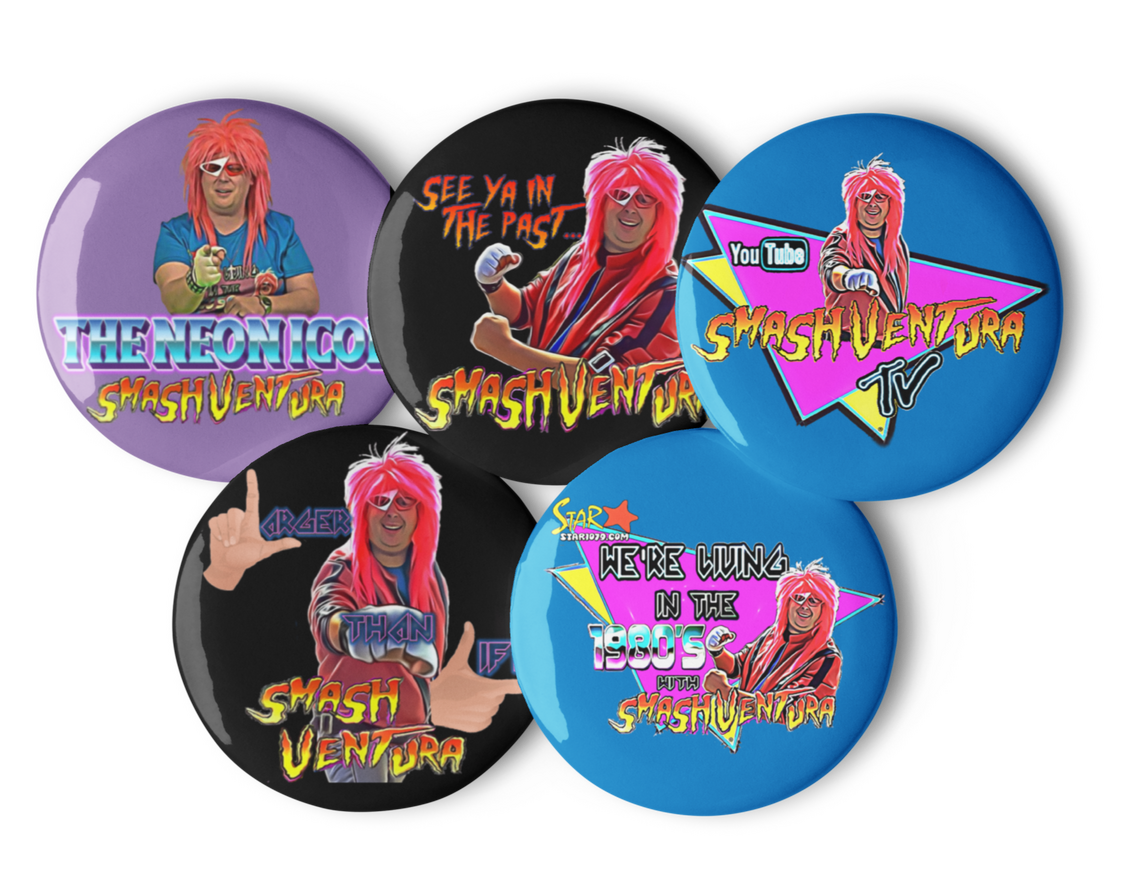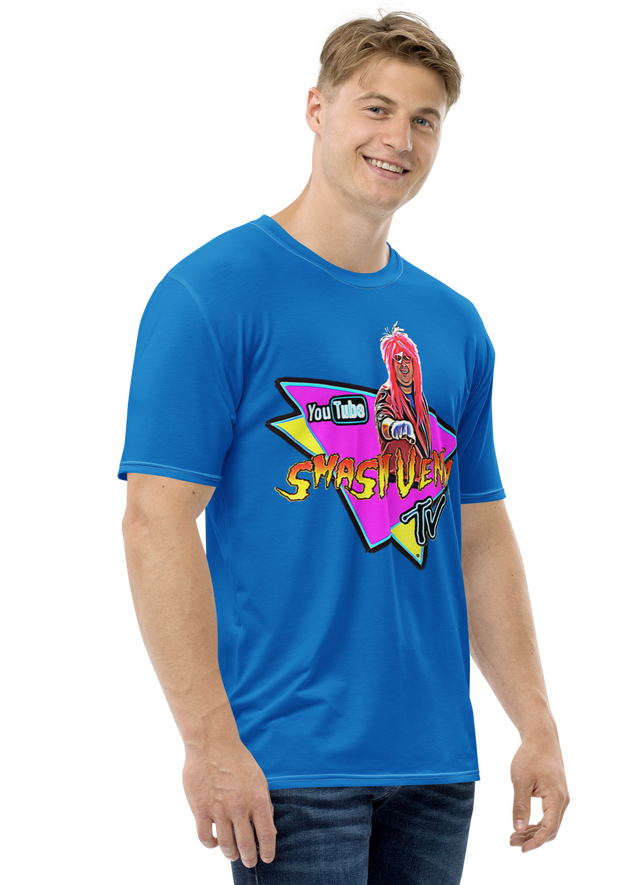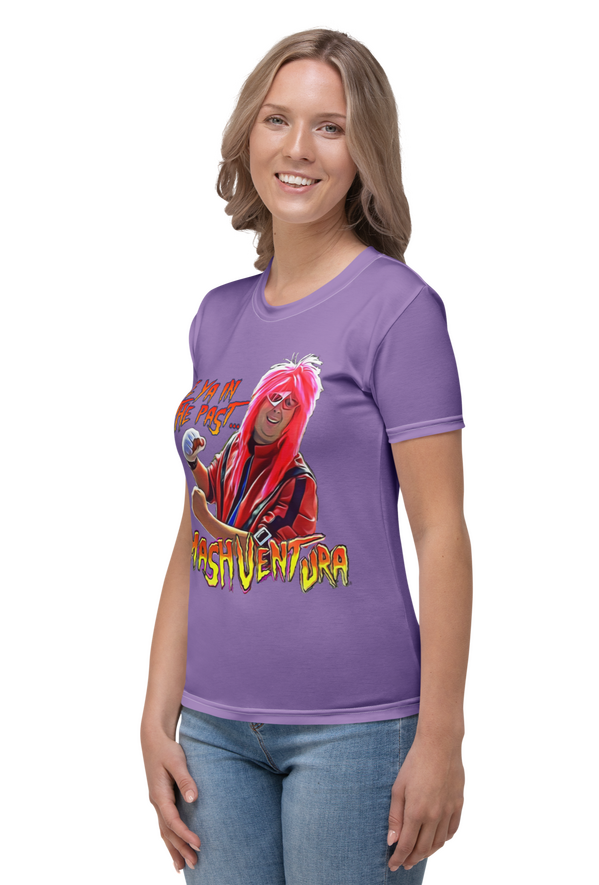VCW Origins — Vermont Championship Wrestling first came to life on October 19, 1992,
as a humble figure wrestling federation founded on State Street in Rutland, Vermont.What began with action figures, imagination, and a passion for pro wrestling would grow into a sprawling universe of storylines, characters, and eras — the roots of what fans know today as VCW.

In 1992, VCW drew its inspiration from three key sources. The first was the Global Wrestling Federation (GWF), whose presentation and atmosphere on ESPN captured the imagination and set the tone for what VCW would strive to create.
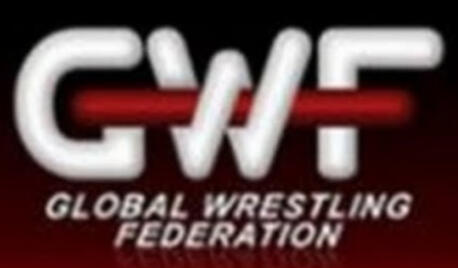
The second inspiration came from the Championship Wrestling Ring & Carry Case, produced by In Time Products Co. Ltd. in 1990 as part of their Championship Wrestling line. This simple but versatile toy became the original battleground for VCW’s earliest matches.
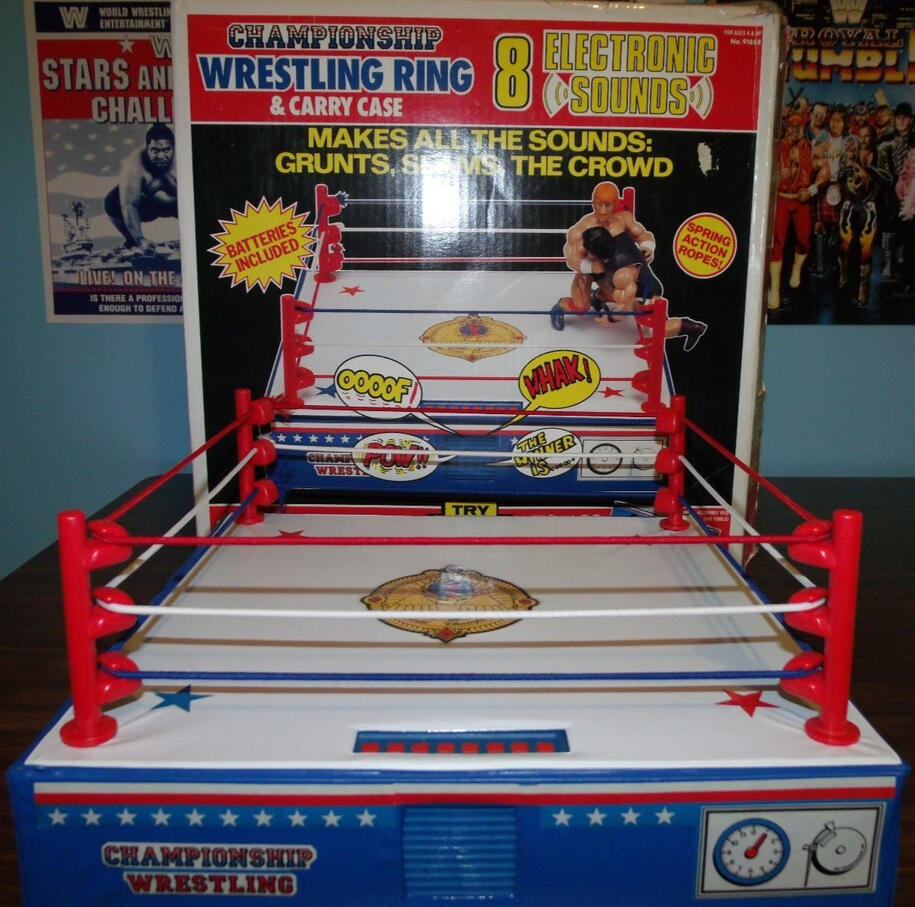
Notable for its time, the ring featured “8 Electronic Sounds” — grunts, slams, and crowd noise — along with spring-action ropes and a clever design that doubled as a carrying case for the figures. These features were proudly highlighted on the retail box, which also advertised the ring as being compatible with WWF, WCW, AWA, and most other wrestling figures of the era.
The third inspiration was the Wrestling Champions figure line — though around Vermont, they were better known as the “Dollar Store Wrestlers.” Sold at the very first dollar store to open in the area, these figures became the backbone of VCW’s earliest roster, fueling countless matches and storylines.
There would also be "Dollar Store Ninjas" & "Dollar Store Sectaurs".
The Toybox Era (1985–1989)The true origins of VCW can be traced back to Mr. B’s childhood toybox. Long before there were rules, logos, or arenas, there was the simple idea of bringing figures from every line (That had potential wrestling talent)
together under one banner.Starting around 1985/1986, (Long before VCW's founding in 1992),
Mr. B began mixing AWA Remco wrestlers with figures from Lost World of the Warlords, Chuck Norris: Karate Kommandos (like Tabe), He-Man, and more.Some characters wrestled under their original names, while others were given entirely new gimmicks or reimagined identities inspired by pop culture icons (such as Bull Hurley in the later VCW.)Kit-bashing and part-swapping became part of the creative process,
ensuring no figure stayed locked into a single role.In the toybox, no collection or character was off-limits for a call-up
into Mr. B's play wrestling fed then.This would plant the seed philosophy that gave the later VCW federation limitless variety and imagination, setting the stage for rosters that felt unlike anything else. Diverse, unpredictable, and endlessly inventive,
these early toybox lineups would become the backbone spirit
of VCW’s identity in the years to come.
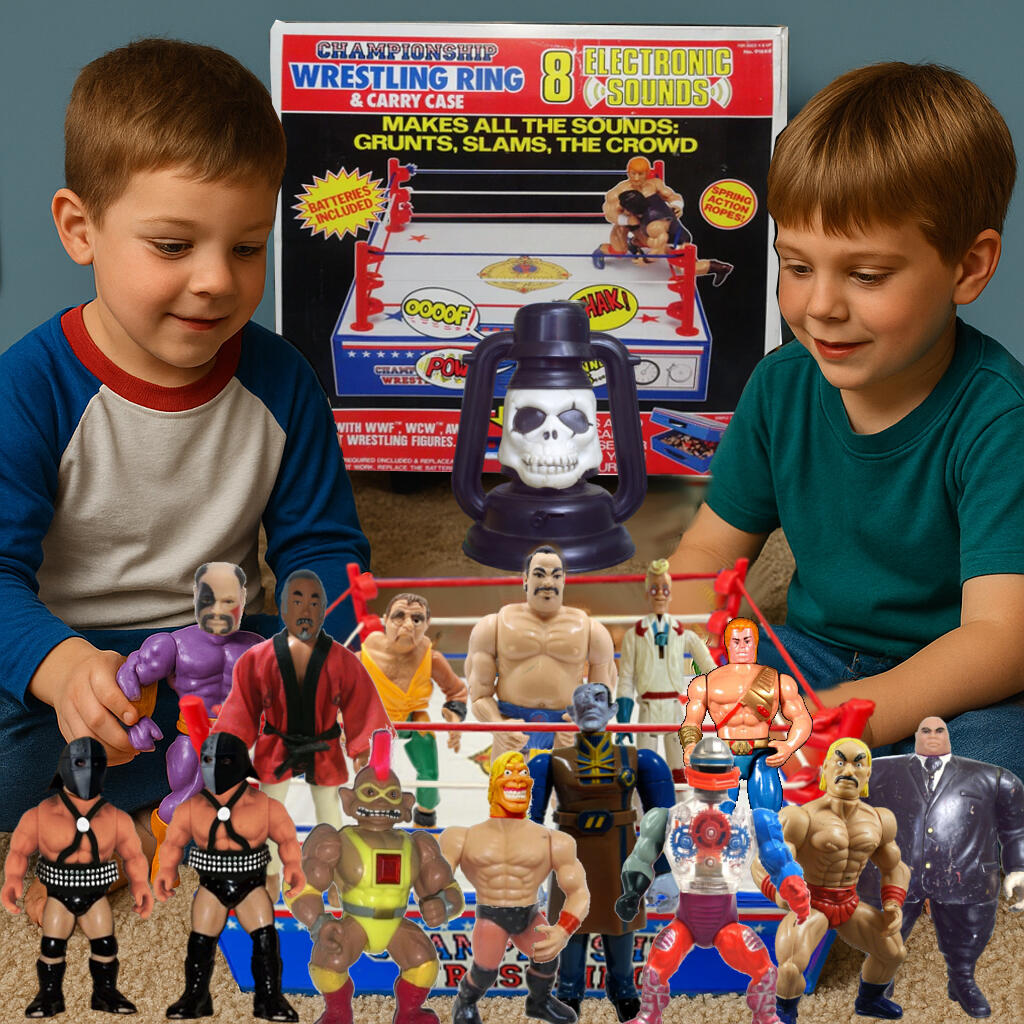
Wrestling Figure Championships by 1992:
Fig wrestling belts were seldom hit,
and many misses back then...
Mr. B’s Innovative Belts:
Mr. B raised the bar for championship design by using coins and coin parts. This creative approach gave VCW titles solid, engraved plates with authentic detail, along with a satisfying weight that felt true to scale with the roster.
VCW's Belts now in The Digital ERA






Mr. B — The Visionary Behind VCWWhile all the kids he knew simply smashed figures together and declared winners, Mr. B elevated the game into an art form. He created, developed, and perfected a system for drawing true performances from his figures. Through carefully designed rules — covering moves, contact, pinfalls, submissions, and reversals — he established a fair, consistent method that allowed momentum to shift and matches to feel alive.By doing this, Mr. B transformed figure wrestling into something greater: thrilling, structured bouts enriched with layered character introductions, ongoing development, and deep storytelling.Beyond rules and stories, he pushed creativity even further — customizing figures to invent entirely new characters and handcrafting arenas to host VCW’s most unforgettable shows.
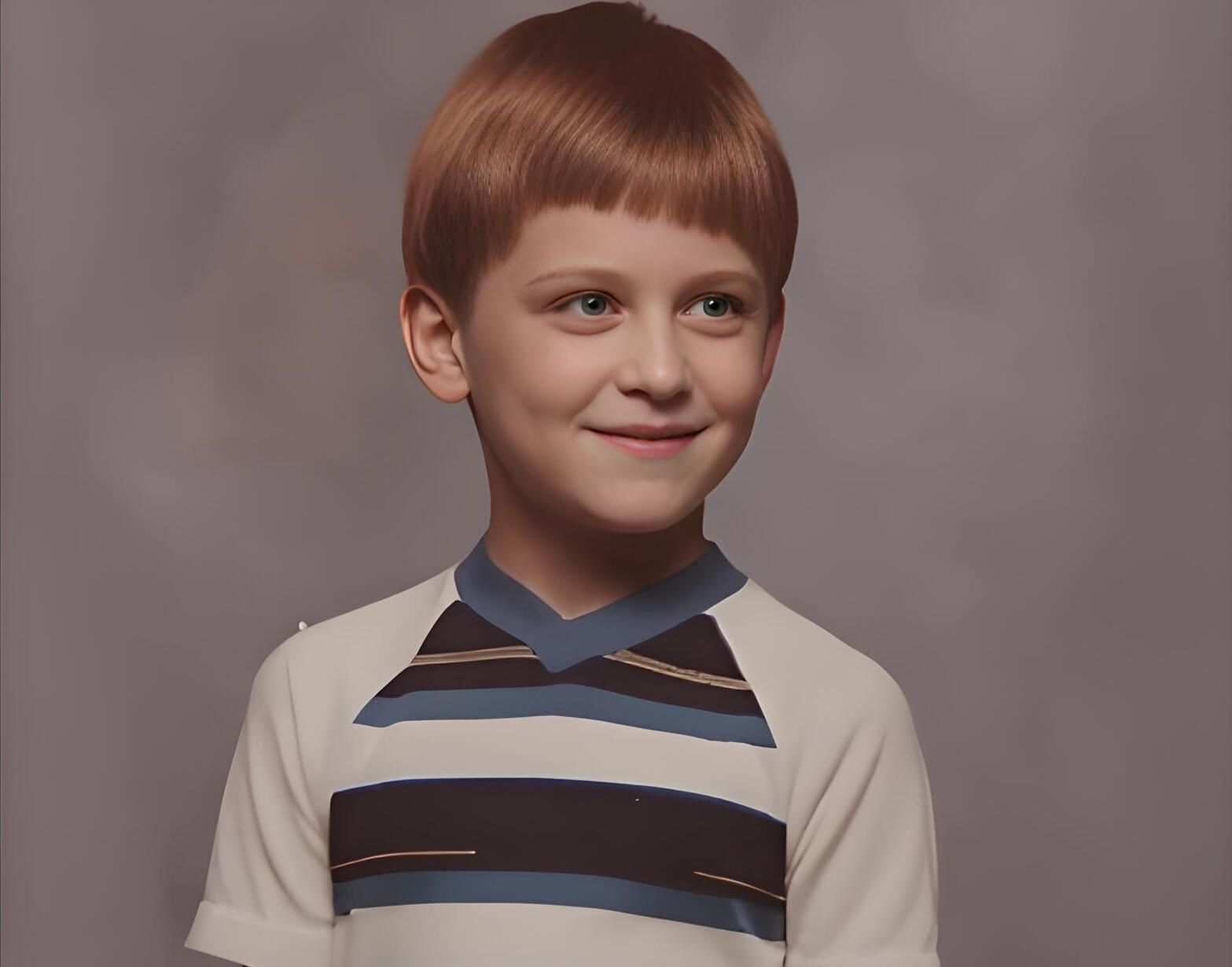
VCW Colors & BrandingVCW developed its own signature colors, taking inspiration from the bold identity of football teams and other iconic branding. Unlike the traditional two-color scheme used in sports or wrestling gimmicks, VCW chose a distinctive three-color palette: Green, Orange, and Purple.Green – Representing the green mountains of Vermont.Orange – Mr. B’s favorite color, tied to his love of Garfield and Heathcliff.Purple – A nod to 1980s and early 90s Americana, symbolizing “purple mountain majesties” as a subtle touch of patriotism.Over the years, the VCW logo evolved alongside these colors:1992 – 19981998 – 20022025 – Future
Multimedia Expansion:
Mr. B introduced a fictional cable TV network (BTV)
& video company, Turnbuckle Video Inc.
(October 20th 1992)
VCW illustrated magazine
(November 1st, 1992),and added crowd effects, real music,
and video game tracks to event shows, entrances,
and promos.
(January 2.1993)
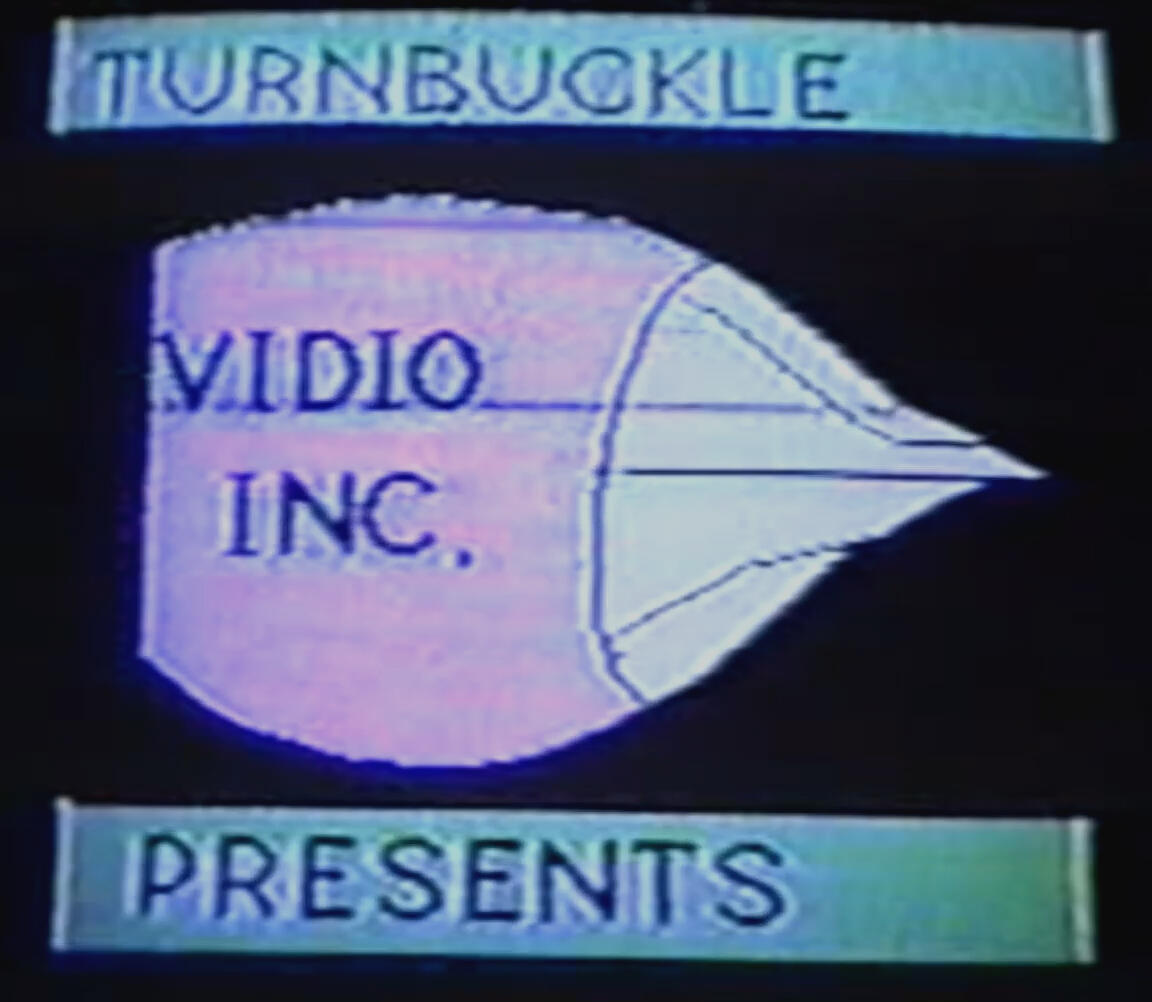
(Above)
Turnbuckle Video Inc logo 1996 made with Art Alive! On Sega Genesis!
Turnbuckle Video even produced three neat B movies!
One, a remake The Quantum Leap episode :"Pool Hall Blues",
Two: "Figure World" & Three: in 2002 "Beavis & Butthead Meet Frankenstien..."
(Below)
Turnbuckle Video Inc.
has also been revamped for VCW's
new digital age!
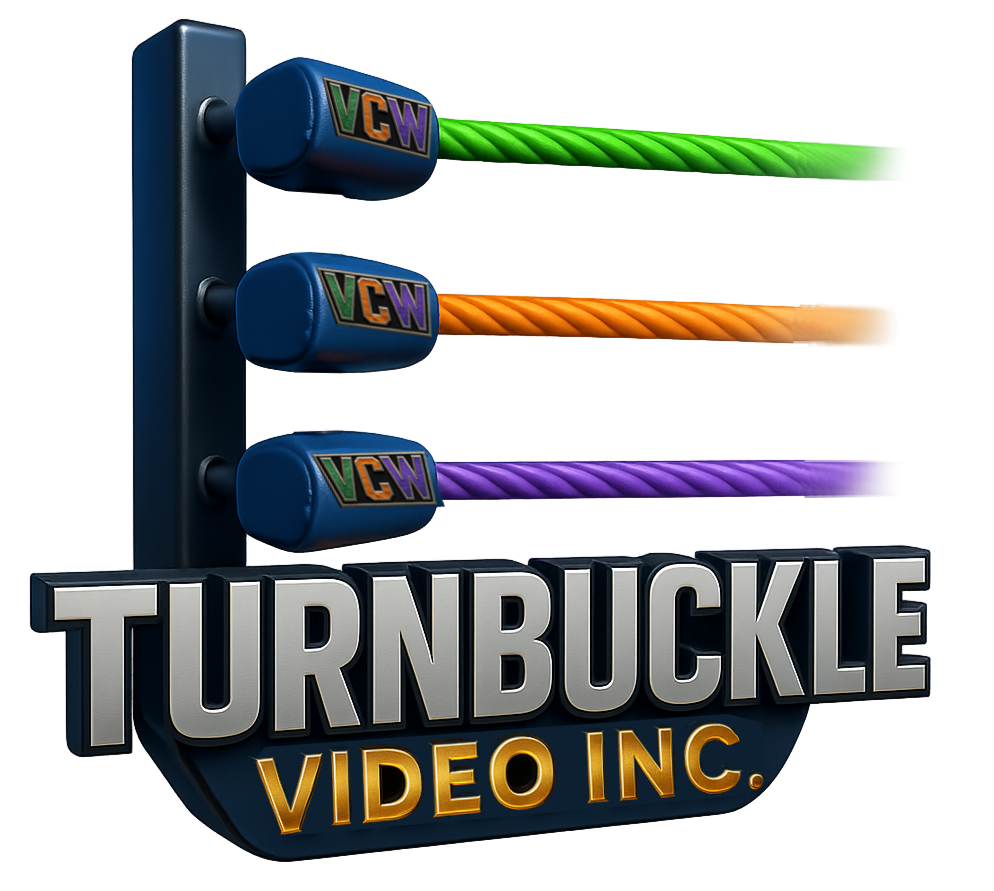

(Above) BTV Then...(Below) BTV Now!
(At the bottom: some of the legendary VCW Illustrated
magazines that kept fans well informed and engaged in the roster,storylines, (fictional - merch) and more.
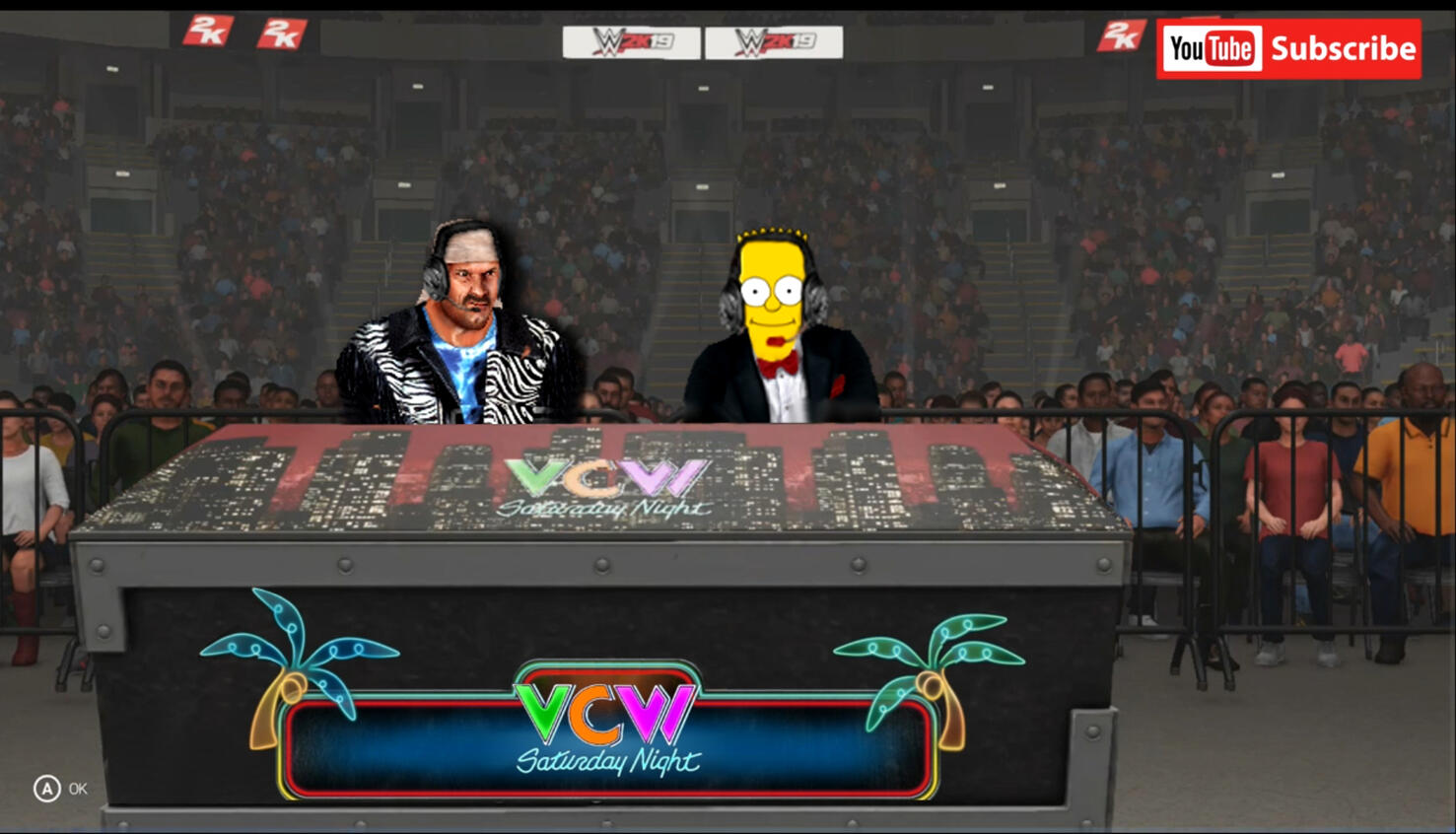
Broadcast Team
(1992–2002)Commentary: Chris Simpson & Jesse “The Body” Ventura
(Pic WWE 2K19 - 1st & only time they were reunited after VCW's Fig Fed Era ended)Ring Announcers: Howard Finkel & Michael BufferPPV Control Centers: Hosted by “Mean” Gene OkerlundMusic: Rocky IV Fanfare/Training Montage theme until 1998, then unique PPV themes.
VCW The Music
VCW The Music –
A Timeline of InnovationIn late 92 and then at a accelerated rate of development beginning January 2.1993,
Mr. B introduced sound effects
(crowd cheering, atmosphere) & music into VCW’s shows,
promos & figure matches.This small addition sparked the creation of VCW The Music— originally a mix of favorite real-world songs and
video game soundtracks, used to give life to entrances,
promo packages, shows, and PPVs.1990s – The First ThemesChuck Rock – Theme (from a rented SNES weekend) became the intro for
VCW Saturday Night, VCW’s flagship TV show.
(This followed the company’s earliest use of the GWF
opening theme in its first few months.)Other examples:AC/DC – Hells Bells was chosen for The DeathSquad: Chainsaw & Blade.SNES Bram Stoker's Dracula theme for Vampyre CasanoveElton John – Measure of a Man gave an added layer
of unique identity to Steve Storm.Power Move Pro Wrestling PS1 Game 1997 - "Unused 2"
for VCW's Monday Mayhem
And more...2018 – 2023 | The Digital ShiftMr. B began reimagining VCW through modern technology,
keeping pace with the rise of digital tools & platforms.From those early innovations to stop motion animation (1995) to a
Facebook Page(Original 2006)
& Youtube Channel (Original 2012)
among many other innovations along the way...
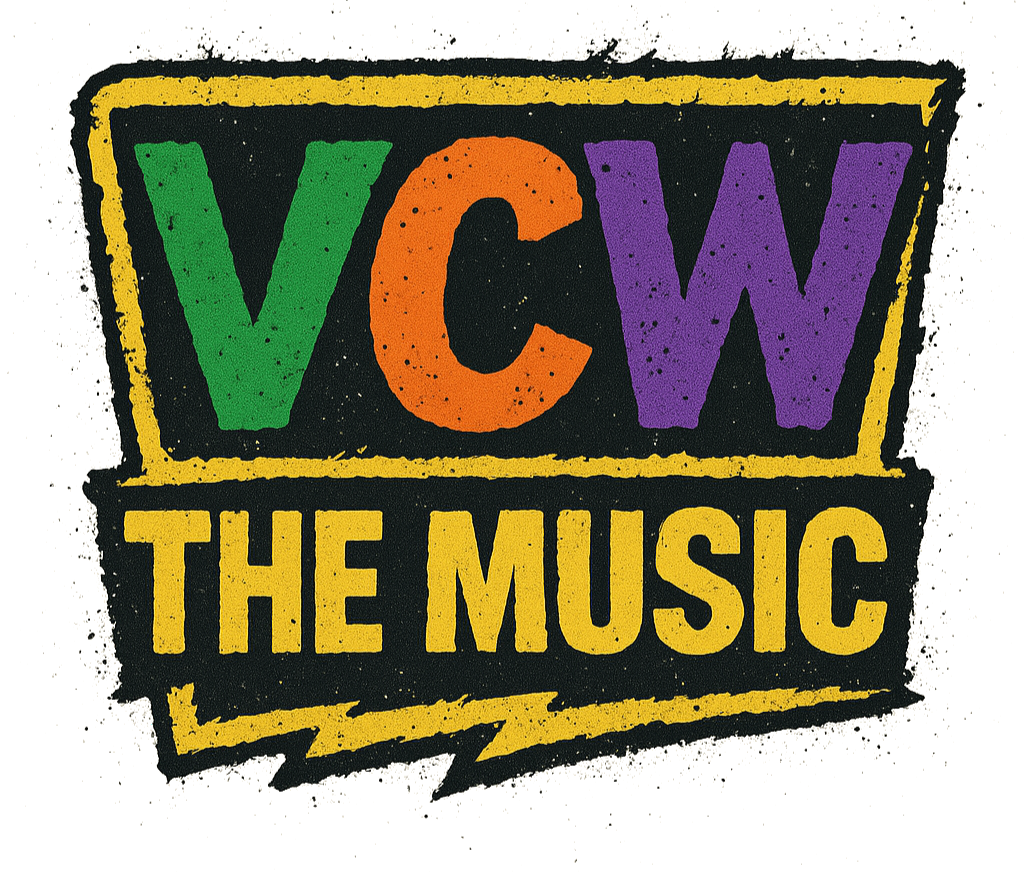
Has evoled into its own full fledged entity!
Not just with an imposing roster of fictional but real life sounding bands,
but also a collection of all original theme songs now available
by the track or by the pack!(Album).No more copyright strikes because VCW owns its own music!This has become a giant leap forward in VCW's originality and branding!
vcwthemusic.bandcamp.com/

VCW's earliest attempt at going digital in video game form:
Using WCW Mayhem for PlayStation 1 in 1999.
Stills: from the only surviving promo...
1997/98: State Street Again!?!?
VCW Reborn!!!
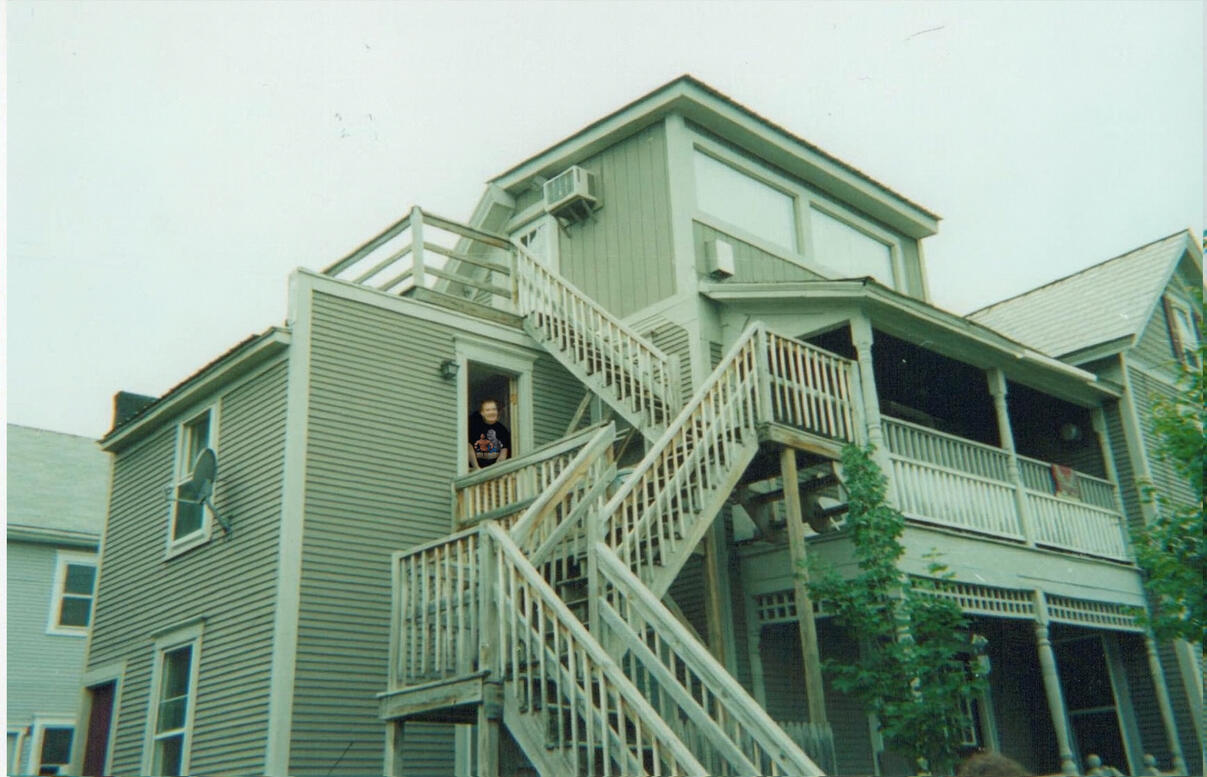
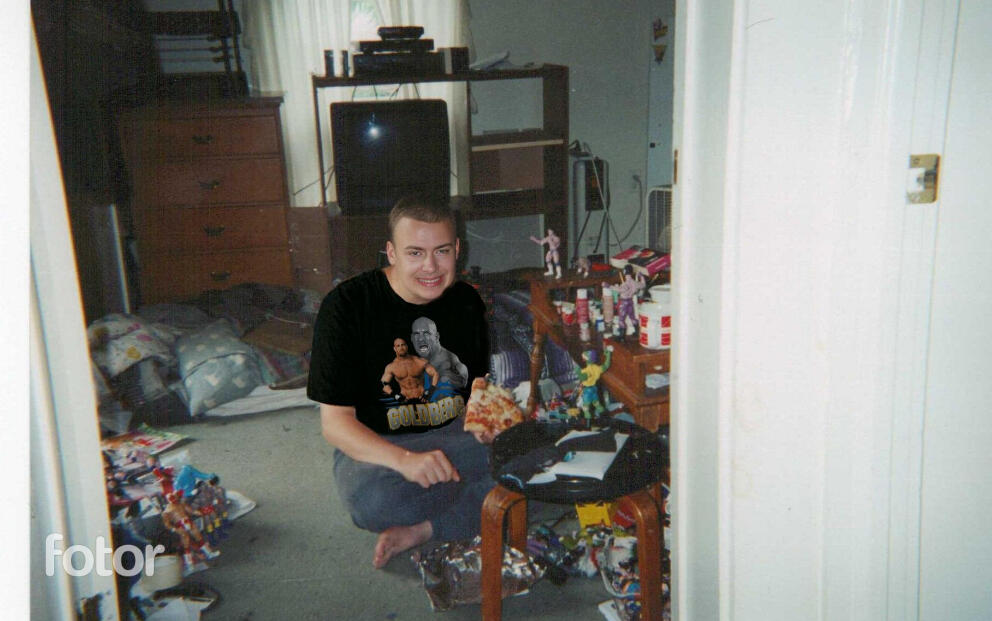
Ironically in 1998 VCW was reborn on State Street in Rutland Vermont,
(After a WWF Hasbro Era Hiatus)
down a few blocks from where it was originally born.The Corporate Power Struggle (1998–2001)In 1998, Mr. B signed Josh Darthmaul (JD) as VCW President.
At first JD balanced the chaos with fairness,
but soon his true agenda was revealed:
aligning with The New World Warriors. who arrived with one goal,
to destroy the established faction, The New Breed and especially
The Endomorphic specimen, Delicious Devon Micheals.Mr. B backed The New Breed, seeing money in their dominance.JD empowered the New World Warriors, signing talent
directly into the faction until it grew from it's original
4 man faction to unmanageably large.This led to one of VCW’s most entertaining but destabilizing eras
— a war between factions, fueled by a corporate rivalry
between Owner and President.Legacy: The angle was red-hot, but the bloated roster
meant many VCW originals were lost in the shuffle.
When that happened, the magic slowly faded, and
there was a 4-month hiatus...
Another outside force arrived in VCW with both a look and a name already fully formed.
A childhood friend of VCW Owner Mr. B witnessed Cold Steel tossing bouncers
out of the famed Double Deuce Bar and said,
“I’ve got someone you need to meet!”It was during the era of corporate struggles and raging gang wars
that new names demanded attention —
chief among them were Cold Steel & The Hitman.Cold Steel would go on to create the devastating Front Face Choke Slam,
a move that etched his place in wrestling lore. From there, the rest was history.
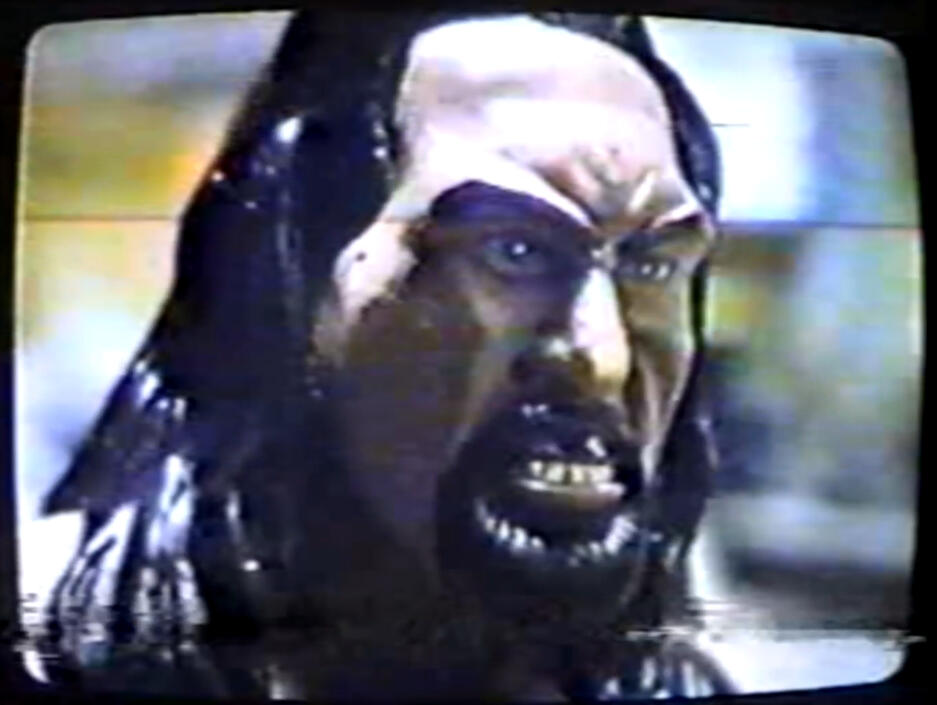
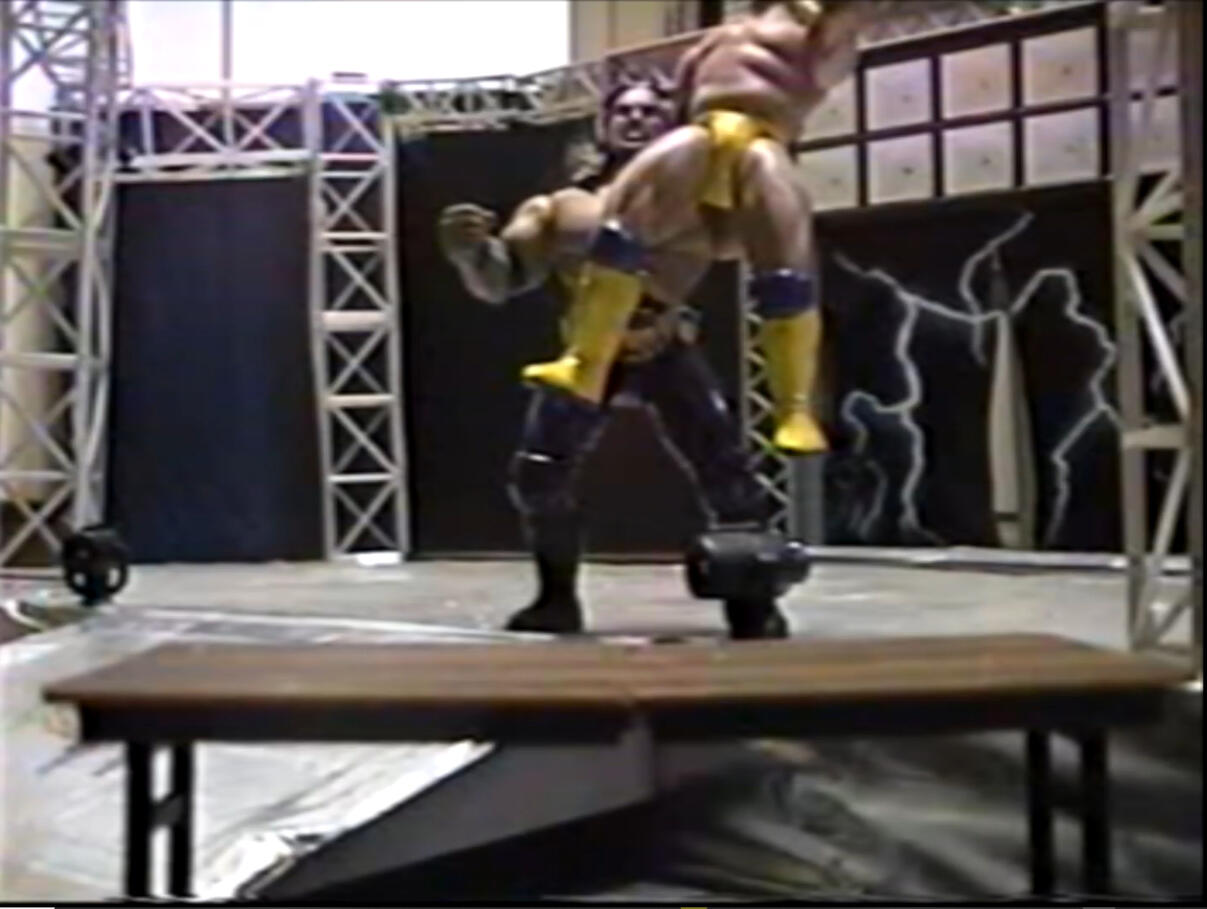
But in the spring of 2002 a reunion and farewell to VCW's
figure fed era would end in grand style...
And Ironically it would end on the street where
Mr.B's Toy Box wrestling era began in the early mid 1980s!The Main Event was
VCW World Champion & NWW member Chance
Vs
VCW's All Mighty Icon: Steve Storm!Steve's long journey began from
a lack luster version of Heman in 1988,
to a tag sale find amongst AWA,LJN & Karate Kid figures in the AWA 1st addition ring in Brandon Vermont.
He would officially debut in VCW in 1995.Chance was a 1998 Toy Biz Gambit figure,
signed to VCW by President Josh Darthmaul.
As the figure became the Chance character
( A gambit superfan ) with a mixed personality of
Gambit & WCW Crow Sting. His rise through the ranks was identically rapid to
that of Steve Storm's only a few years earlier.
Putting these two home grown icons on a collision course of history & hall of fame infamy!
VCW: Where It's Been & Where It's Going...
The Past:
When VCW was officially born, there was one Title
(The famed 1st figure Coin Belt )
The VCW World Championship, The Four Founding Fathers of VCW:
Mr.B, The Dungeon Slave, The Sumo Wrestler & G.T. Spangler... And the "Knock off" ring that would
inspire a full fledged empire!On Oct.19,1992 in a 3 way match for the VCW Championship,
G.T. (Stands for "Ghost Trap") Spangler would survive past
The Sumo Wrestler & The Dungeon Slave to be crowned the 1st VCW World Champion.
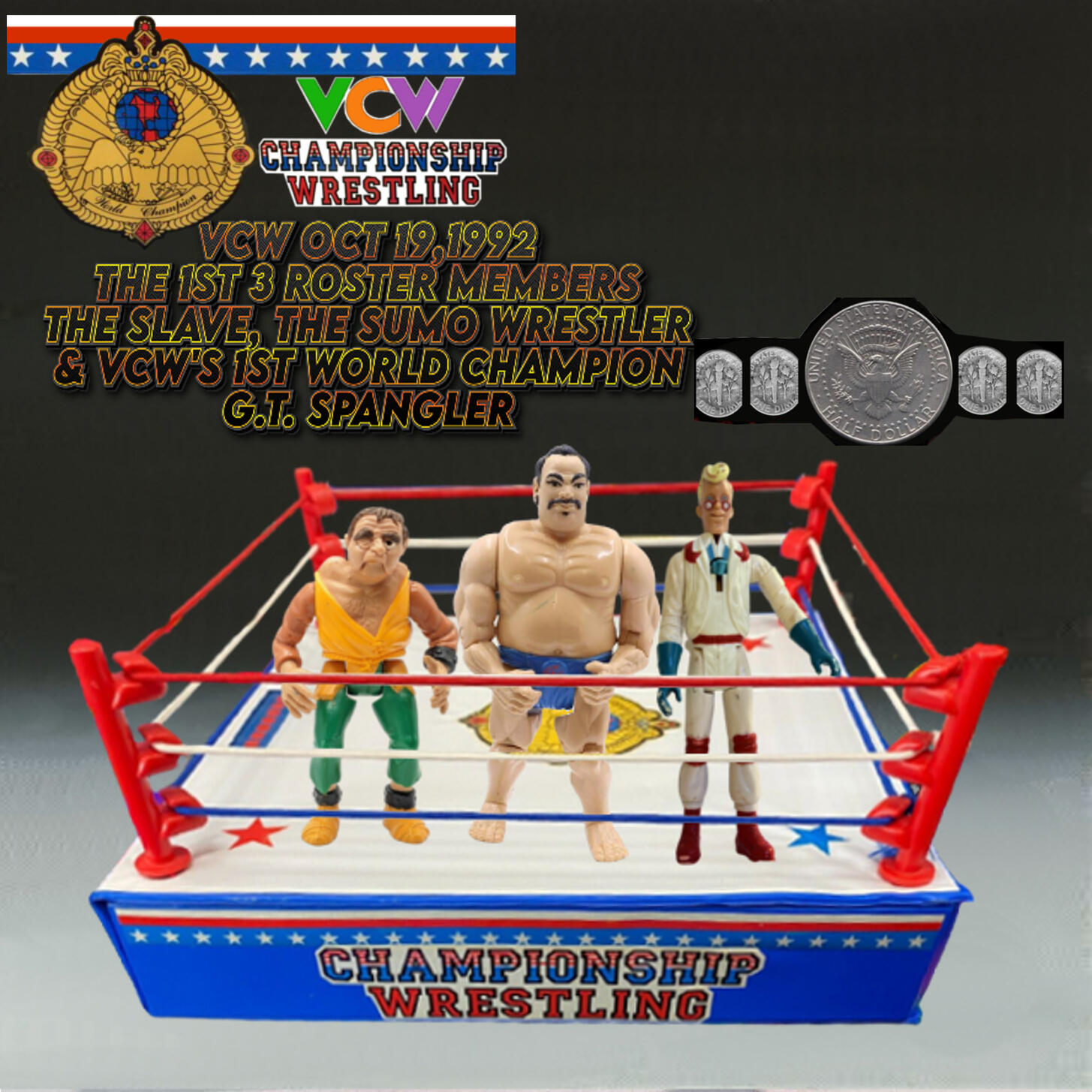
The Future: VCW in the Digital Era
VCW’s launch into the Digital Era through the WWE 2K series has been anything but easy. Since the debut of the first 100-CAW–slotted game (WWE 2K14), the journey has been plagued with glitches, crashes, and devastating restarts.From 2K16 through 2K22, the nightmare repeated itself — three separate times in each game, entire rosters of creations were wiped out by bugs or server updates. Each cycle became a draining ritual of build, erase, rebuild, repeat, nearly dooming VCW’s digital future before it could even start.But persistence never died. Now, with WWE 2K24 finally stable enough to carry the weight, VCW stands ready to rise again — reborn for a new generation in the Digital Era.
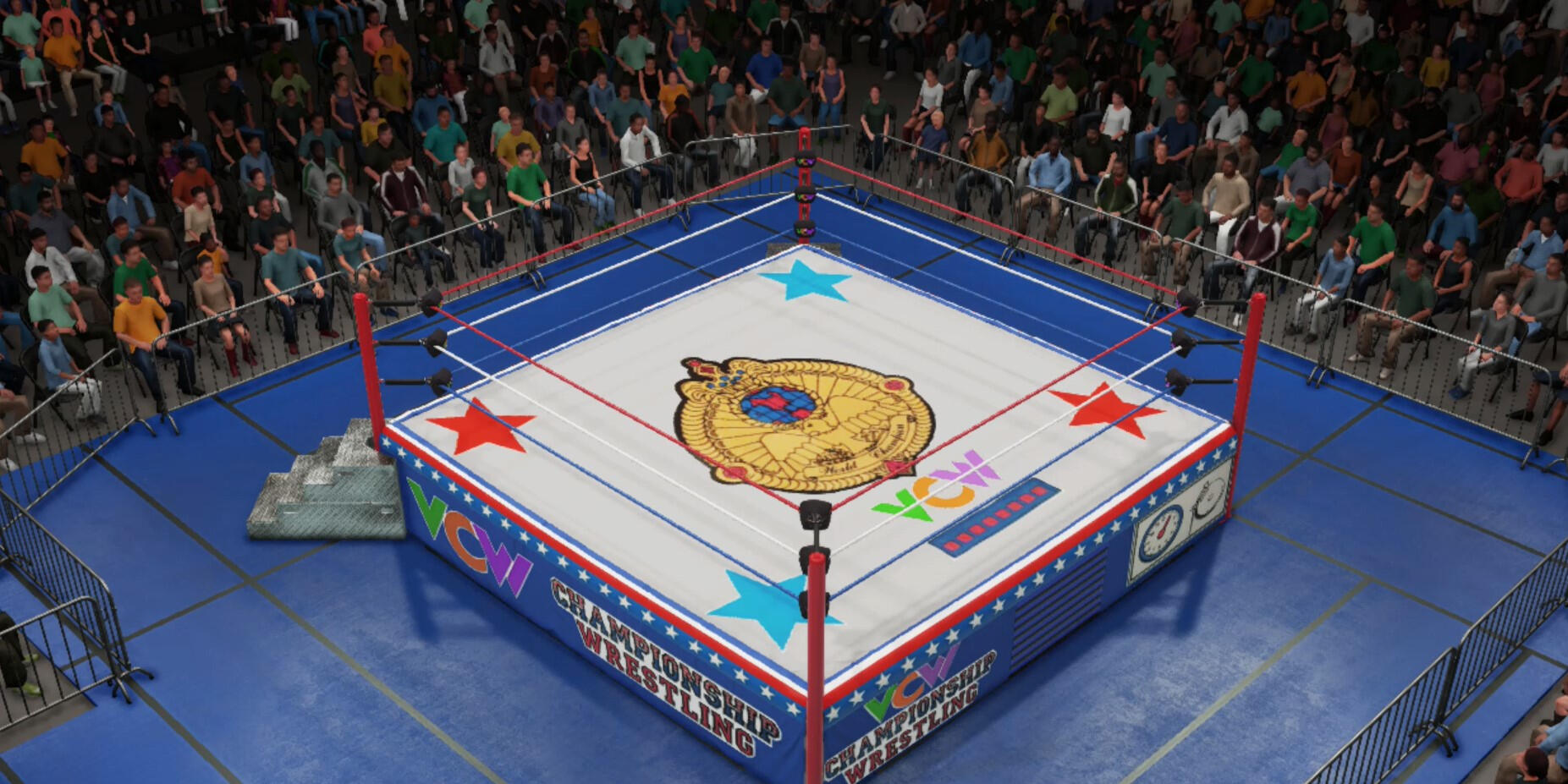
We had originally planned to relaunch VCW on WWE 2K23… but then 2K24 was announced with a plethora of new match features too good to pass up. Once again, everything was torn down and rebuilt from scratch.Yet each of these “do-over” moments became more than just setbacks — they turned into opportunities to fine-tune every creative detail of VCW. From the roster to the rivalries to the presentation itself, the repeated restarts forged a stronger, sharper vision of what VCW could be in the Digital Era.
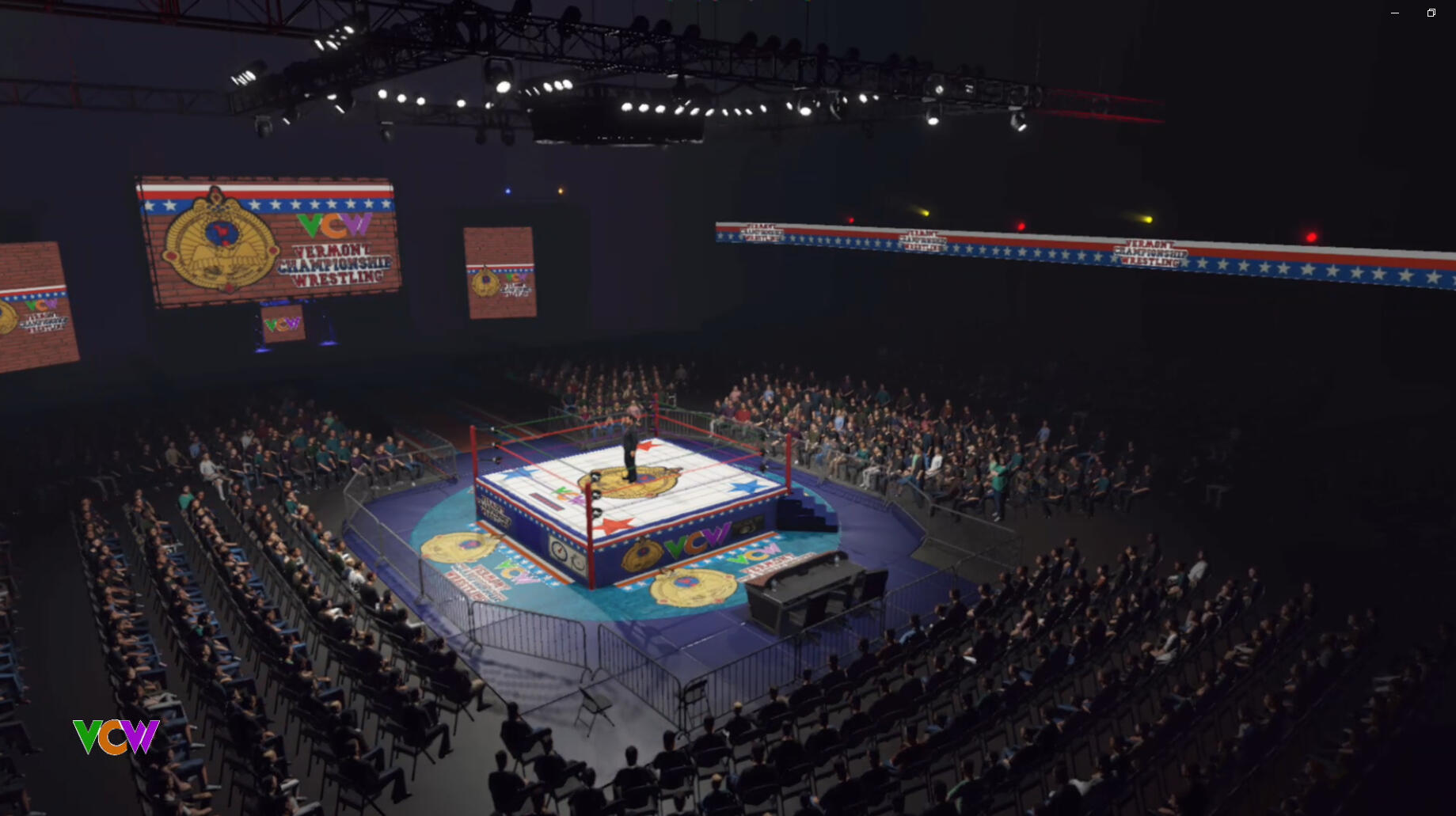
Watch VCW at the link below!
https://www.youtube.com/watch?v=kX9uzOvWHl0&list=PLzzGKK8deGZ-98Dn3uEZnVXLVJt7el91W
Since March 8, 2024, VCW has been in nonstop grind mode — creating, perfecting, testing, and repeating the process until the fed could finally run smoothly despite the usual 2K glitches. What began as a fight just to get the game working evolved into something bigger: the chance to push VCW further than ever before.In that process, new doors opened — the exploration of real-world merchandise for fans. From mugs and t-shirts to official VCW superstar theme music, the Digital Era isn’t just about the game anymore. It’s about bringing VCW to life inside and outside the ring.
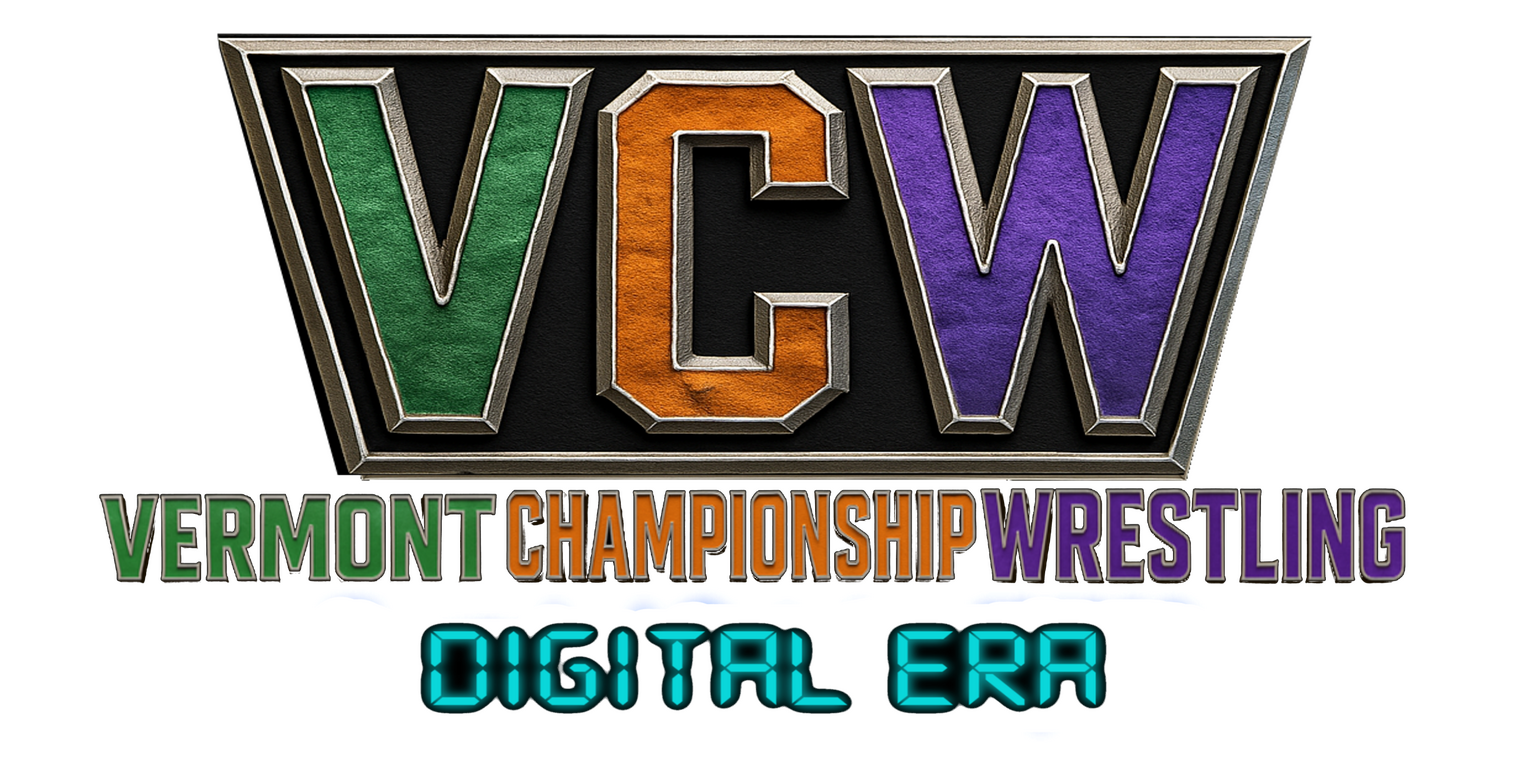
VCW: Honoring Its Legends, While Embracing a New Era...
Since its founding in 1992,
VCW has carried forward a tradition of storytelling through figure wrestling, producing eras defined by unique rosters of stars and unforgettable rivalries.Each period in VCW’s history has left behind a legacy of standout personalities—
Superstars who came to symbolize the spirit of their time and remain embedded in the federation’s identity.These legends are more than just names from the past; they represent the building blocks of what VCW became, and their impact continues to shape the federation today.
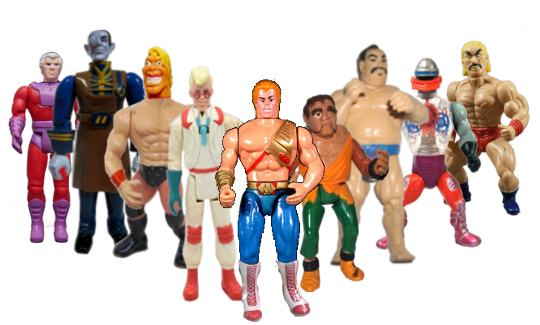
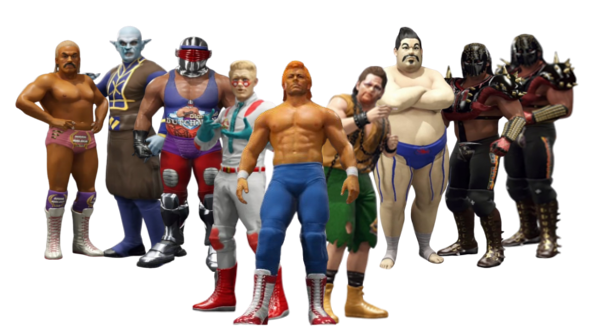
VCW 2K24: Legends & A New Generation!
VCW: The Digital Era - Is Officially Born!
VCW has always carried the spirit of ’80s and early ’90s wrestling — big personalities, bigger action — while adding a dose of Attitude Era grit along the way.Now, with the long-awaited leap into the Digital Era (FINALLY!!!), VCW continues that tradition by also channeling the vibe of the classic wrestling video games we grew up on — the ones that built entire federations, created their own legends inspired by similar influences, and delivered over-the-top energy born from the icons of the squared circle.Those games didn’t just entertain us… they also helped inspire VCW itself.
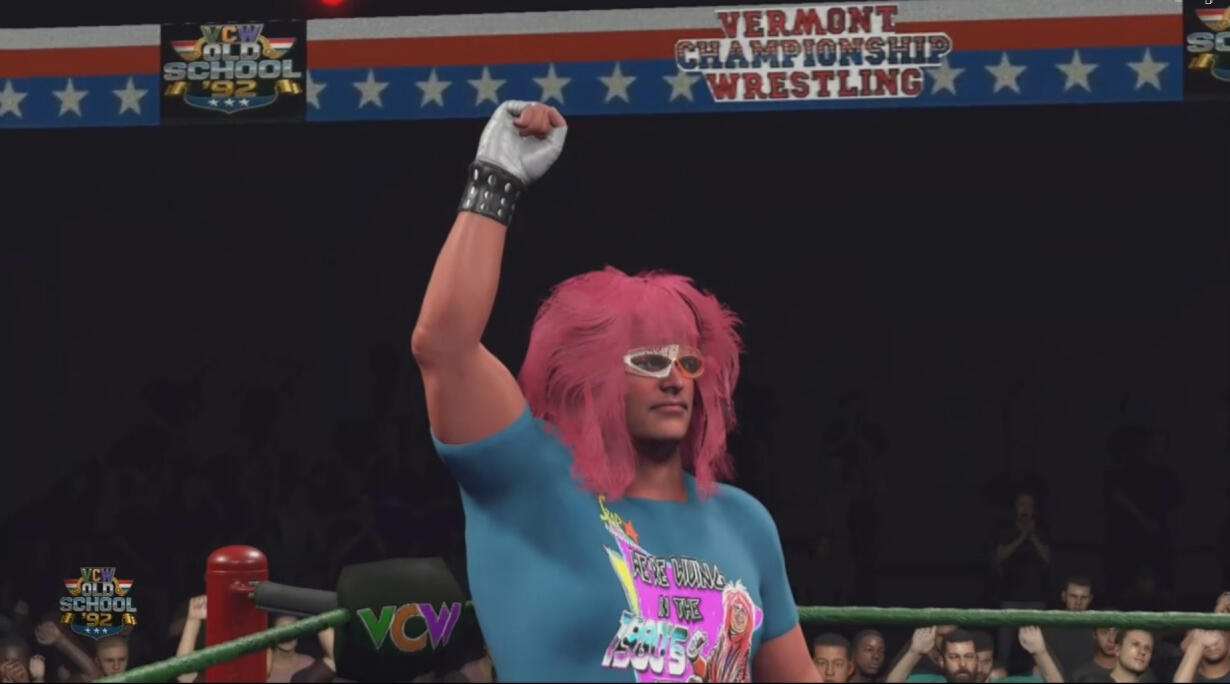
“The Neon Icon” Smash Ventura — A larger-than-life personality both inside and outside the ring, Smash Ventura brings a unique blend of media and wrestling charisma to VCW. Known as an FM radio host, public TV figure, broadcast entertainment personality, and YouTube creator, Ventura has spent years living in front of microphones and cameras — sharpening the same skills that make him magnetic in the squared circle.As “The Neon Icon”, Ventura radiates confidence, energy, and style. His character embodies the flash of the ’80s and the swagger of the modern era, a perfect fit for VCW’s mix of nostalgia and Digital Era innovation.And it doesn’t hurt that the little boy who created VCW back in 1992 grew up to become the Neon Icon himself. Smash Ventura isn’t just part of VCW — he’s woven into its DNA.
🤼Classic Knock-Off Wrestling Games
🧨 Mat Mania / Exciting Hour (1985)
Developer: Technos Japan (distributed by Taito)What Made It a Knock-Off: Features obvious archetypes of real wrestlers: masked luchadors, big brawlers, etc. Characters like Insane Warrior were inspired by bruiser types like Bruiser Brody.Legacy: Set the template for many clones to follow.
🤖 Pro Wrestling (NES, 1986)
Developer: NintendoFictional Roster: Characters like Starman (masked), The Amazon (lizard man), and King Slender—definitely inspired by Ric Flair and Randy Savage types.Cult Favorite: The iconic “A Winner Is You” meme came from this.
The Main Event: 1988
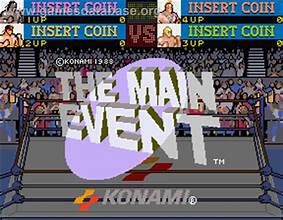
What it is: A 1988 Konami tag-team wrestling arcade game (Japan title: Ringu no Ōja, “King of the Ring”).How it plays: 1–4 players pick two wrestlers to form a team and fight other tag teams. The cab uses a joystick, a big light-up “Action” button (it flashes when you can strike/grapple/pin) and a Tag button. A hyped-up announcer calls the match.Roster vibe: Eight larger-than-life parodies of real-world stars, including Kamikaze Ken, Maui Mauler, San Antonio Smasher, Conan the Great, El Condor, Saturn Six, Bigfoot Joe, and Alan the Empire.Why it stood out: Easy, crowd-pleasing controls (that flashing Action button!), loud presentation, and frantic co-op/versus tag action—classic Konami showmanship.Reception: In Japan, it hit #3 among table-type arcade games in Game Machine’s Aug. 1, 1988 charts.
Wrestle War (1989) – Arcade Wrestling by Sega
Platform & ReleaseOriginally released as an arcade title on Sega System 16 hardware in 1989 and later ported to the Sega Mega Drive/Genesis in 1991 for Japan, Europe, and Australia
Not associated with any real-life wrestling promotion, despite its name sharing a year with the WCW “WrestleWar” pay-per-view
Roster of Opponents (Unofficial Homages)Mohawk KidSledge Hammer (Bruiser Brody–inspired)Mr. J (Jason Voorhees–inspired)Don Dambuster (Road Warrior Hawk–inspired)Nim Rod Falcon / Mad Dog (Mil Máscaras–inspired)Titan Morgan (Hulk Hogan–inspired; featured on Japanese cover art)Buckskin Rogers (Stan Hansen–inspired)Grand Kong (Abdullah the Butcher–inspired).
Tecmo World Wrestling (NES, 1990)
Developer / Publisher: Tecmo
Platform: Nintendo Entertainment System
Release Dates: Japan (1989 as Gekitou Pro Wrestling!! Toukon Densetsu), North America & Europe (April–November 1990)Gameplay & FeaturesRoster of 10 International Wrestlers
Includes characters like Akira Dragon, El Tigre, Pat Gordon, Jackie Lee, Boris Chekov, Dr. Guildo, and the final boss Earl of Doom (Blue King)Play-by-Play Announcer 'Tom Talker'
A pioneering feature—animated commentator bubbles call the action, marking one of the earliest sports games to include commentary.Over 20 Moves per Wrestler without a Grapple Button
Approaching your opponent initiates a grapple, with button and directional combos unleashing varied moves.Action Replays with Zoom Mode
Signature finishers trigger quick replays in cinematic close-up under the right conditionsTraining Mini-Game Between Matches
Choose from exercises like squats or push-ups (complete with a sumo piggyback!) to boost your power meter. Win = gain power; lose = lose power.
💥 Saturday Night Slam Masters (1993)
Developer: CapcomLoosely Inspired: By real wrestling but featured fictional characters like Biff Slamkovich and Gunloc. One character, Mike Haggar, was reused from Final Fight.Cool Touch: Art by manga legend Tetsuo Hara (Fist of the North Star).
💥 Power Move Pro Wrestling (1996)
VCW 2K24 Roster & Bios
Tag Team Devision:
The Awesome Studds: Awesome Alex & Ron Studd:
Both date back to VCW's Figure Federation era. Alex made his debut in 1998 inspired by
GWF superstar Alex Porteau & his beach bully gimmick.
Ron Studd debuted at the same time & was directly inspired by Ron Studd from WCW.
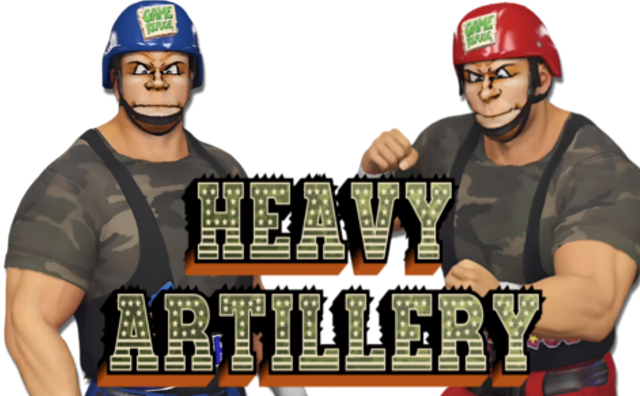
Both date back to VCW's Figure Federation era.
Inspired entirely by one of my favorite Sega Genesis games "General Chaos" Heavy Artillery are a tribute to the game and made their debut in 1997.
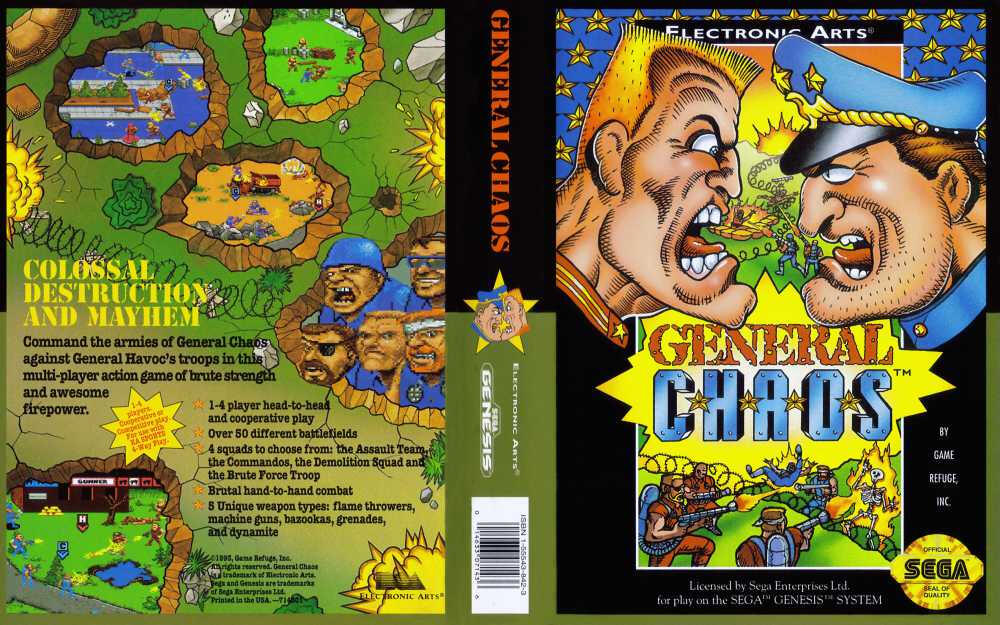
The game is Making a COMEBACK!
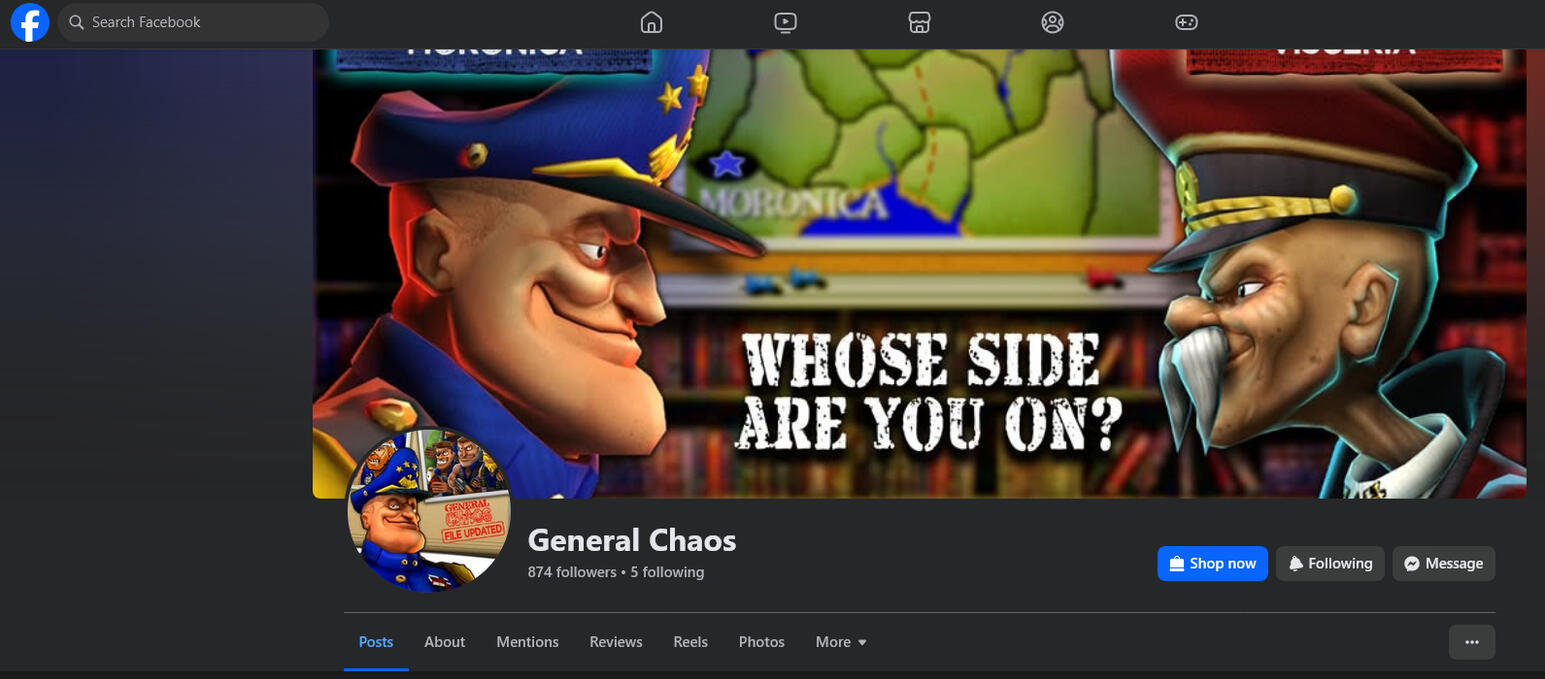
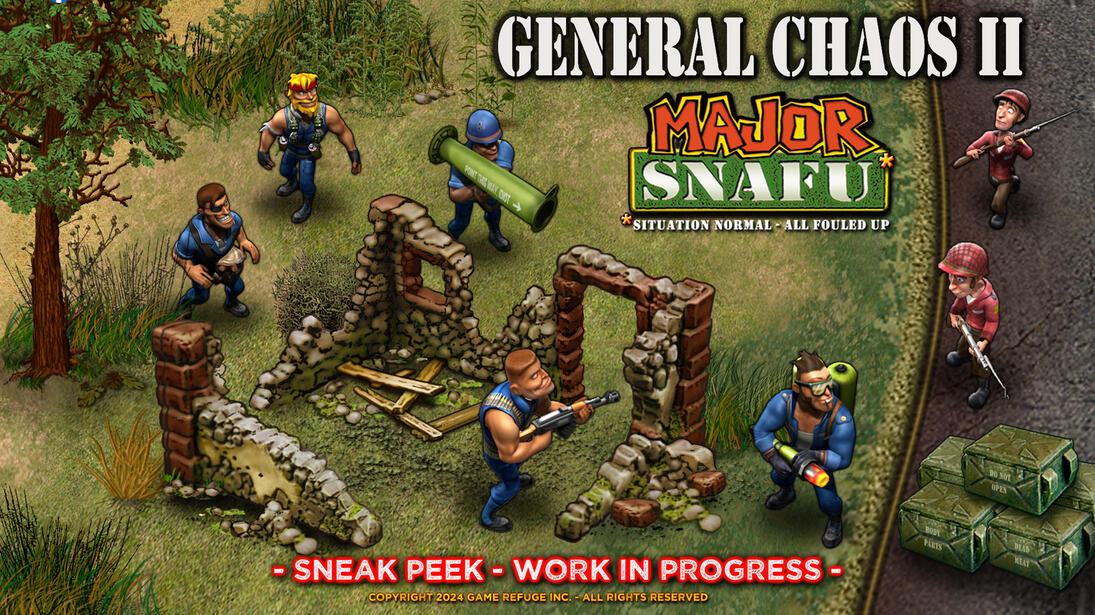
Both date back to VCW's Figure Federation era.
Inspired from one of my favorite episodes of Quantum Leap: "Glitter Rock".
Tonic & Flash McGraph made their debut in VCW in 1996.
Glitter Rock was the seventeenth episode of Quantum Leap’s third season to air,
with Sam fronting a Kiss type glam rock band and trying to solve
his own murder before it happens.
Both date back to VCW's Figure Federation era.
Pirates Gold! - Skull & Crossbones:
Inspired by both The Sega Genesis game of the same name & 2 figures from The Imperial Pirate figure collection, and made their debut also in 1994.
Inspired by The WWF's Quebecers,
The Royal Canadian Kilted Yakksmen & The Powderd Toast Man face
from Ren & Stimpy debuting now in VCW's Digital Era.
Originally two identical Wrestling Champions figures making their dedut December 92/January 93.
In the digital era the twins have decided to exercise more individual looks while maintaining their trademark twin telepathy and in the ring high flying arsenal.
Oct.1993, The DeathSquad -Chainsaw & Blade made their debut in the VCW Figure Fed Era.
However, the idea for them streaches to 6 months prior.The idea came to me after seeing a pic in a magazine for "Troll Force" figures.
Despite my best efforts I could not find 1 of the demolition ish ones let alone 2.
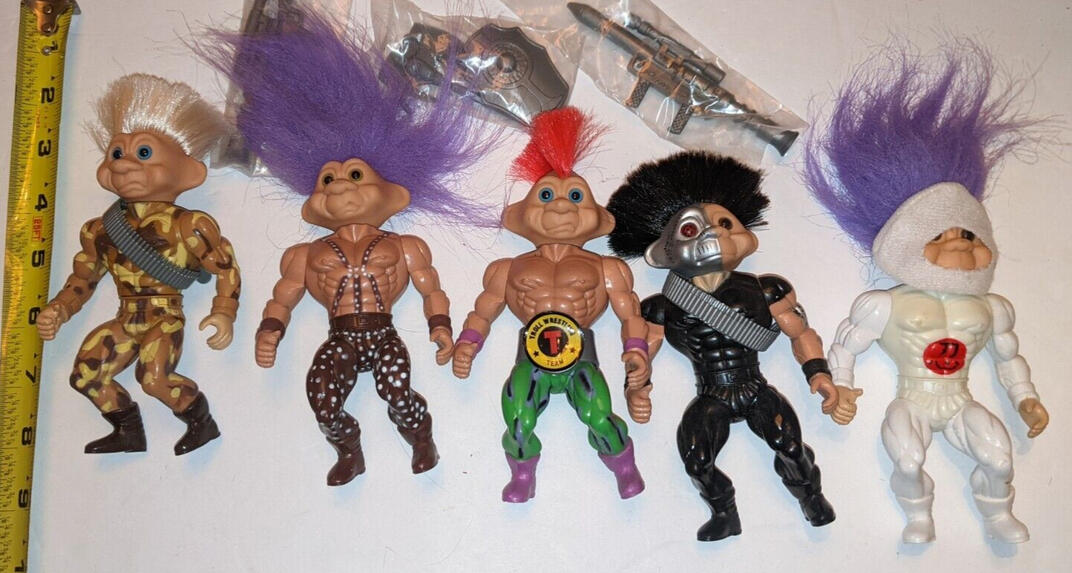
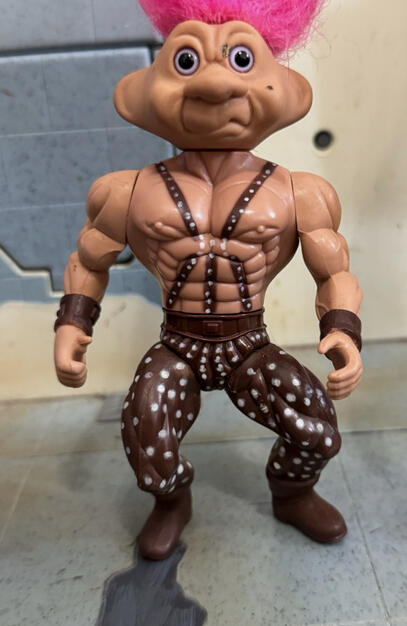
The idea was to make a team in tribute to teams like
the Powers of Pain, The Road Warriors and of course Demolition...
While trying to come up with a plan B for the bodies,
The gimmick concept was further developed on paper.The DeathSquad would wear Demolition Hockey Masks at all times, removable spiked shoulder pads
(made originally from black electrical tape and thumbtacks)and for an added touch, (personality - wise) would never speak
and move like Jason Vorhees & Michael Myers.Their original real life theme song, ACDC's Hells Bells was also pre - selected
before the custom figures even were put together.
Finally plan B would show up at a store I was working at as part
of our school jobs program in
the fall of 1993.
Russ Brands "Doom Slayer" Trolls.
Originally a 4 part set I knew I could make it work with spare
demolition hasbro parts I had.
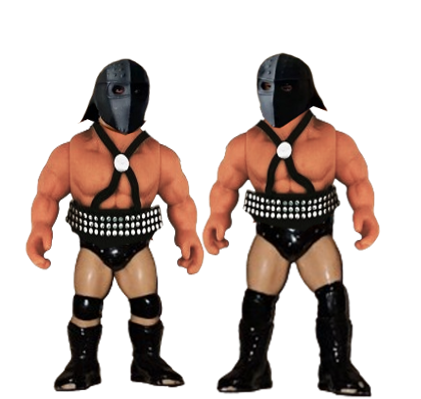
Not long after The game Doom was released, the finishing touches to the gimmick were made.
(as seen in the modern recreation logo above.)
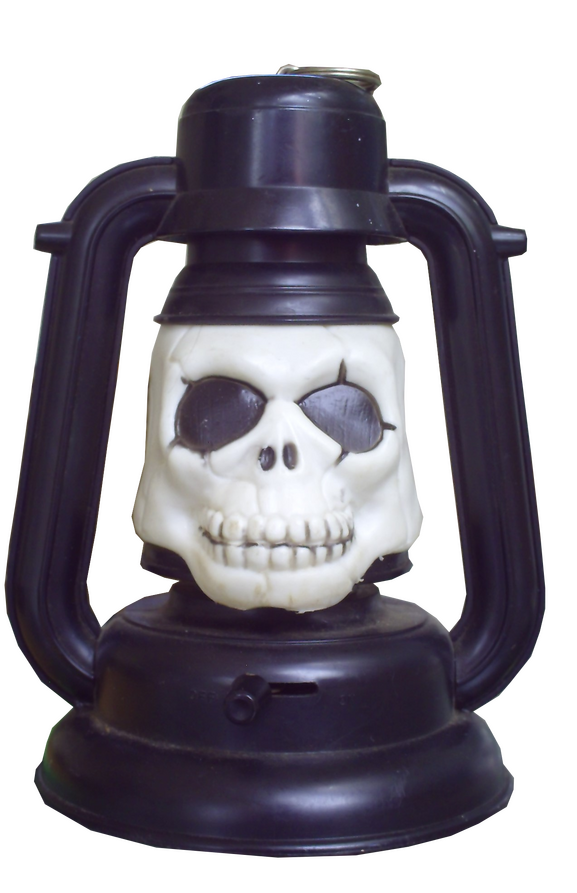
Their debut entrence included the above pictured K Mart Skull light.
A entrance that I later replicated (With also the ACDC song) for another fig fed's home grown superstar,
as a favor to help add some of my promotional magic to a special clash of fig feds event.
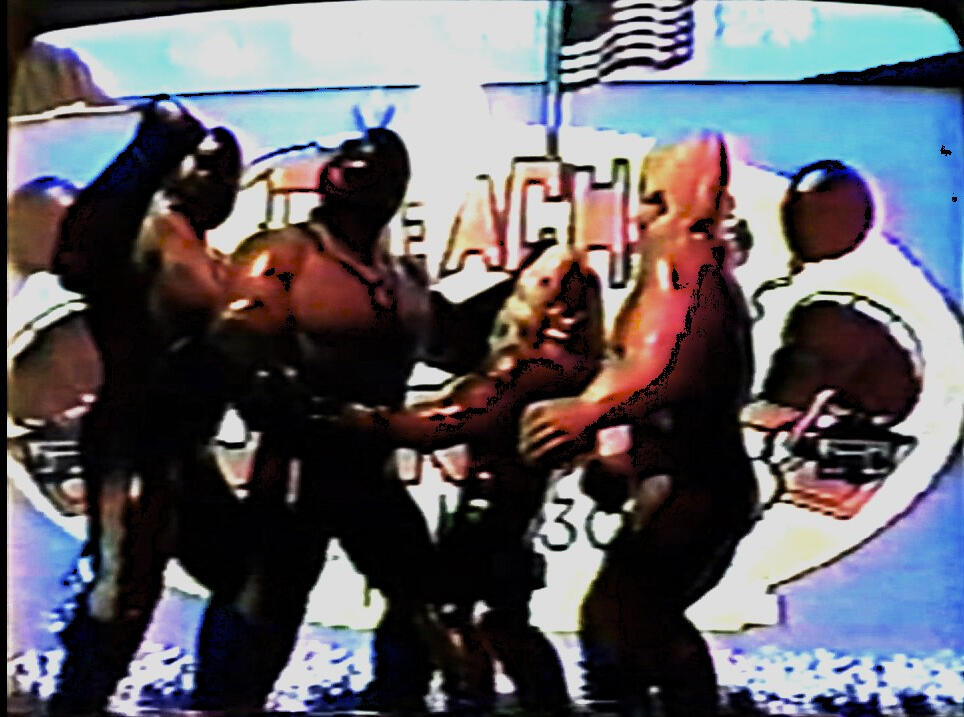
Over time the team switched scales,
with the OSTM Harlem Heat Bodies being the most imposing version in VCW's Fig Fed Era...
And later the Jakks BCA scale...
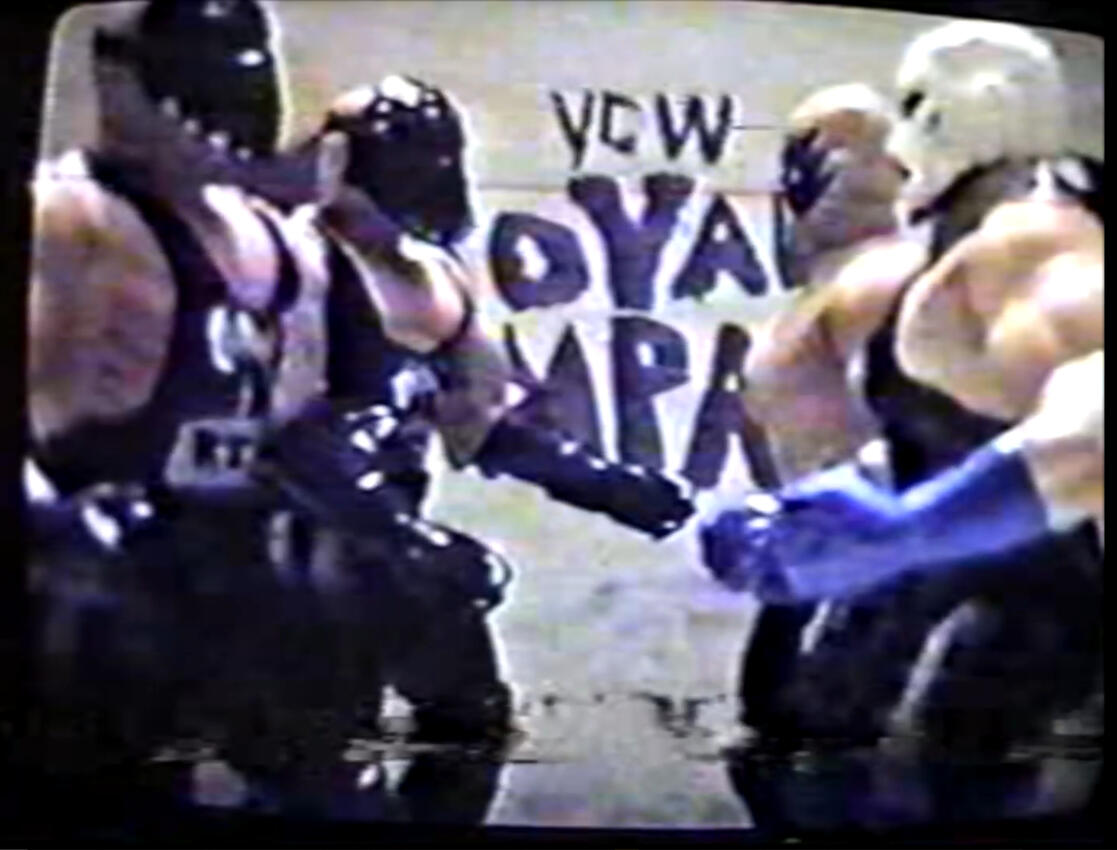
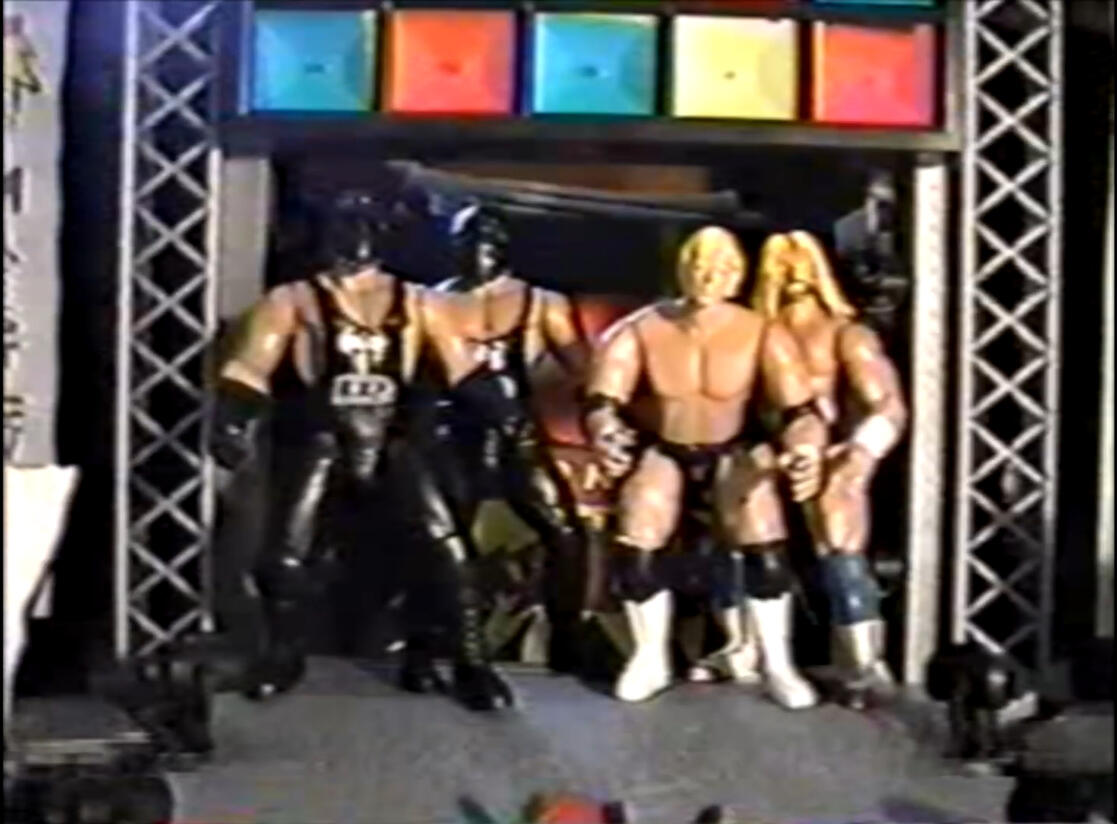
The original masks sit ominously...
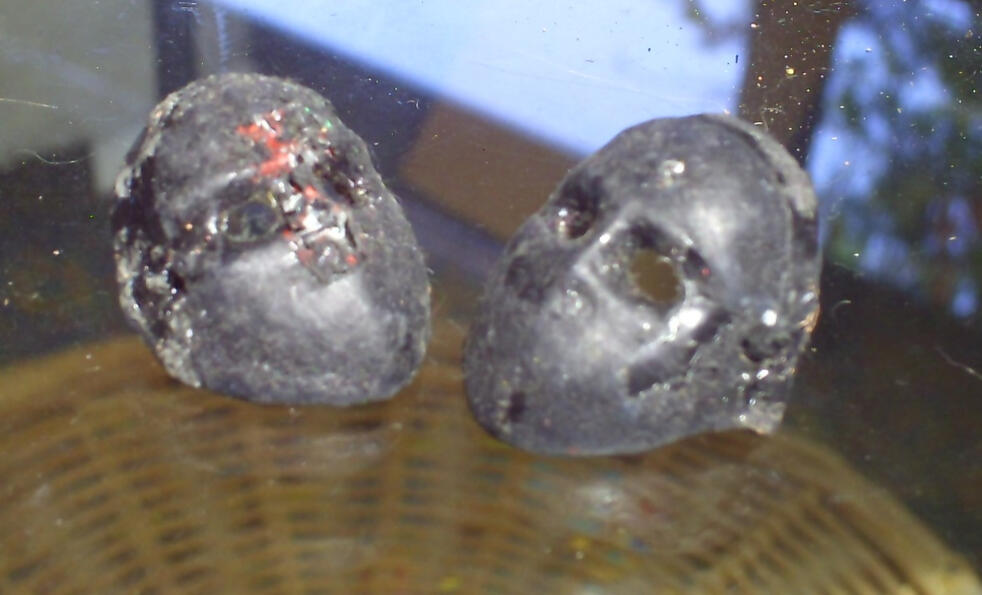
One can imagine, all the iconic horrors of terror still can be seen when looking into
the dark eye holes of the hasbro hocky masks that saw every moment of
The DeathSquad's legendary career...
Spring 1993, Two of The Wrestling Champions masked figures would be renamed "The Quazars" 1 & 2originally but in later years would become "The Quazars: Jupitar & Saturn".
Legendary babyfaces dating back to VCW's famed Figure Fed Era.
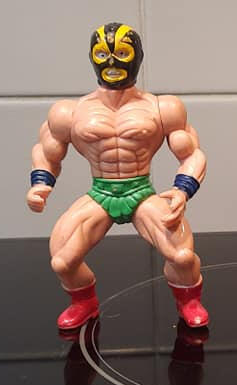
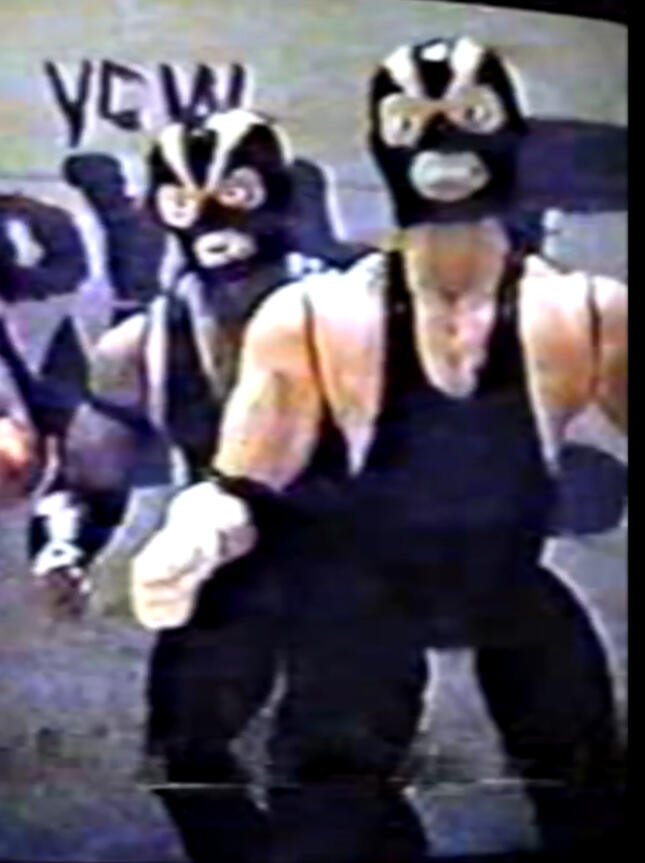
The Orignal Heads with battle scares remain in the VCW Hall of Fame collection...
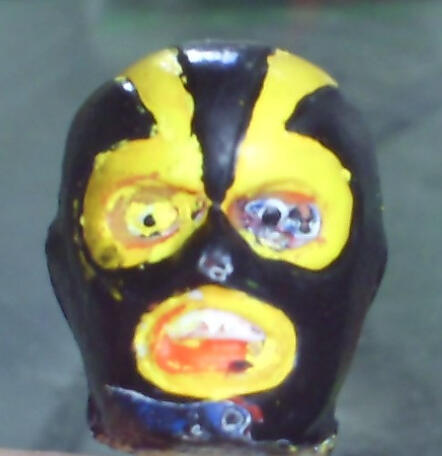
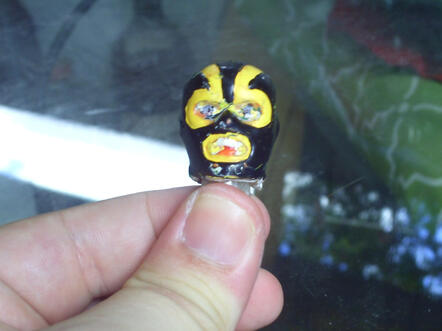
Cannibal (Wrestling Champions Figure with some paint work)(right) debuted in VCW in 1996 while Voodoo(Dhalsim 1998 5.25" Toy Biz Capcom)(left) was signed in 1998 by VCW President Josh Darthmaul.
It was agreed that Vodoo would be paired with Cannibal. Which this resulted in a surprise hit tag team mega over with fans.
Their biggest win was upsetting The Masked Giants by winning their VCW World Tag Team Titles
and ending the MG's undefeated streak.
The RPG - LLC : Captain Dreamboat (Left) Shooter McGavin (Right)
Captain Dreamboat is one of VCW's Digital Era superstars, Shooter McGavin dates back originally to the Fig Fed era in 2000, but was one of many VCW stars who got lost in the over sized roster of the NWW Vs NB Gang Wars Era.
He did get a new run in VCW 2k14, but over the next decade,
the 2k series would prevent the VCW Digital Era with its game -
breaking glitches and erasing countless months of creation efforts over and over again.
Finally VCW 2K24, we're ready!
Below: Far left Shooter McGavin, far right: (Fun Fact: VCW's Additude Era version of Heavy Artillery!)
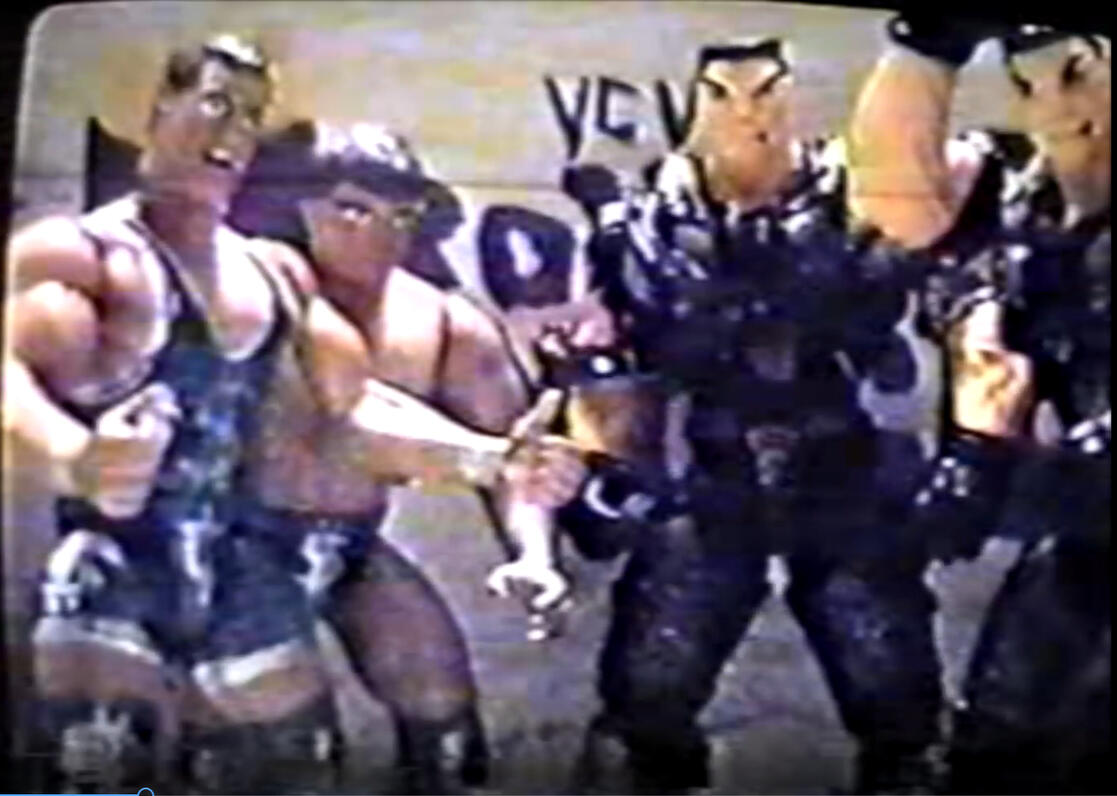
THe Stud Exchange: Originally a tag team name that goes back to VCW in 1993 for Hasbro HBK & Rick Martel, didn't take on its own Identity until 1998 When at first it was reborn as a faction group consisting of Malibu Mike (from PS1's Power Move Pro Wrestling), Carolina John (VCW Debut 1998)
& Diamond Timothy Flowers (Legend journeyman wrestler who been in so many real life feds since 1979).
Thriller(Thrilla) Nights: Ahmed Brown(Left)South Central.
Ahmed Brown debuted during VCW's Fig Fed Era in 1998/
South Central debuts now in VCW's Digital Era.
Symphony — The character’s creation dates back to 1998 in the Fig Fed era, inspired by the Symphony candy bar, while his layered personality drew influence from the movie Amadeus —
channeling the dynamic between Mozart and Salieri.That fusion of theatrical arrogance, undeniable talent, and eventual betrayal of fan support
made Symphony one of VCW’s most compelling and controversial stars.Formed the highly successful team Southern Symphony alongside
VCW Digital Era superstar Alabamer Man.
Inspired from - The Alabama Man figure commercial on South Park &
Poor Harry Sachz who was prank called by Beavis & Butthead.
"12 Packs & Broken Dreams" indeed lol.
Faction Group (Below)
(Far Right)
Arico Ramon — From VCW’s Fig Fed Era, Arico Ramon (originally Arico Sauva) debuted in 1996/97 as a parody of Razor Ramon with a flashy gigolo edge inspired by Gerardo’s Rico Suave. He embodied that pre-babyface Razor vibe — a heel who was arrogant, stylish, and so cool that fans couldn’t look away.The character drew heavily from Razor’s swagger leading into his Royal Rumble match with Bret Hart, especially the mocking of Owen Hart with, “Hey Rocket, yo daddy teach you dat one, mang?” That attitude was amplified in VCW through Arico Ramon.By 1998/99, he was a central figure in The New Breed faction, with his “Bad Cool” persona set to 10/10 — making him one of the standout stars of the Fig Fed Era. And now, he brings an all-new danger in VCW’s Digital Era.
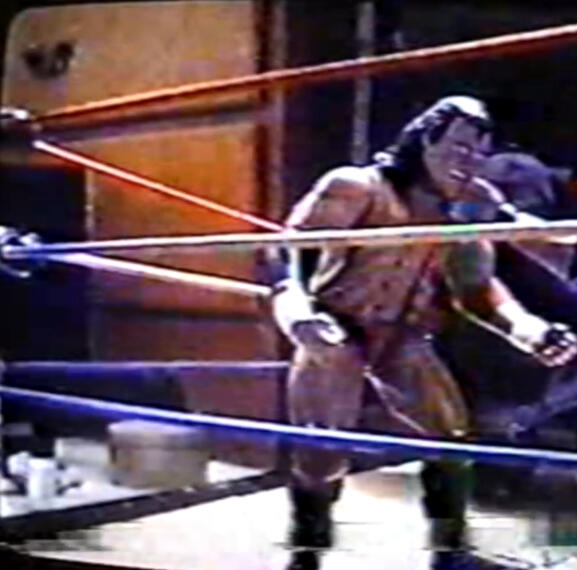
(Middle)
“Big Daddy” Harley Davidson — Originally conceived as a biker parody of WWF’s Diesel, Harley Davidson quickly evolved into his own dominating force in VCW. Standing a towering 7 feet tall, Davidson embodied the “Big Daddy Cool” persona but with a harder-edged biker brawler vibe, reminiscent of the APA’s rough-and-tumble style from WWE’s Attitude Era.Alongside fellow New Breed members Arico Sauva and Devon Michaels, Davidson cemented himself as one of the faction’s cornerstones and became one of the biggest superstars of VCW’s Fig Fed Era. His sheer size, intimidation factor, and no-nonsense approach made him a fan favorite and a feared opponent alike.What started as a parody grew into an awesome, larger-than-life character — a biker titan who blended swagger, brute strength, and old-school toughness into a persona uniquely his own: Big Daddy Harley Davidson. And now, the bike is being revved up once again — and the VCW Digital Era is in big trouble.
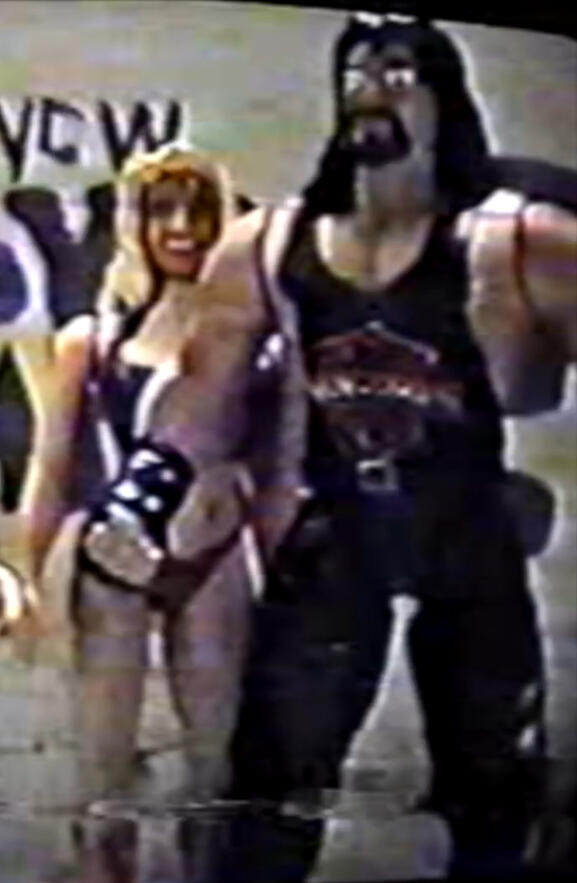
(Left)
“Delicious” Devon Michaels —
Billing himself as
“The Most Endomorphic Specimen in Sports Entertainment”,
Devon Michaels debuted in 1998 during VCW’s Fig Fed Era with three things he swore would guarantee superstardom:An ego the size of King Kong.A sculpted body he believed even God himself envied.A pair of mighty bodyguards, The Ascended Masters: Alha & Omega,
who later evolved on & grew into a formidable tag team on their own.From the moment he arrived, Devon was pure nuclear heat. His arrogance and constant self-worship were so unbearable that even longtime VCW fan Josh Darthmaul stepped into the action — a move that eventually led him to become VCW President. Their conflict escalated when Darthmaul unleashed the New World Warriors, forcing Devon to answer back by forming The New Breed with Arico Sauva and Harly Davidson. The clashes between the two factions became one of the most explosive and defining rivalries in VCW history.Devon’s gimmick — a delusional, self-obsessed egomaniac — was so effective that it blurred the lines between kayfabe and reality. His overblown promos, in which he preached about being “endomorphic” (misusing the term as if it meant the most muscular and powerful body type alive), were the kind of self-parody that only he could make sound serious. Fans and rivals alike mocked him, but he always fired back, ridiculing them for not recognizing his “perfection.”Take the body of Lex Luger and Paul Orndorff, the temper of Orndorff, and the smug delivery of Mr. Perfect, and you get the larger-than-life creation known as:“The Most Endomorphic Specimen in Sports Entertainment”“Your Endomorphic Gawd”“Delicious” Devon Michaels!
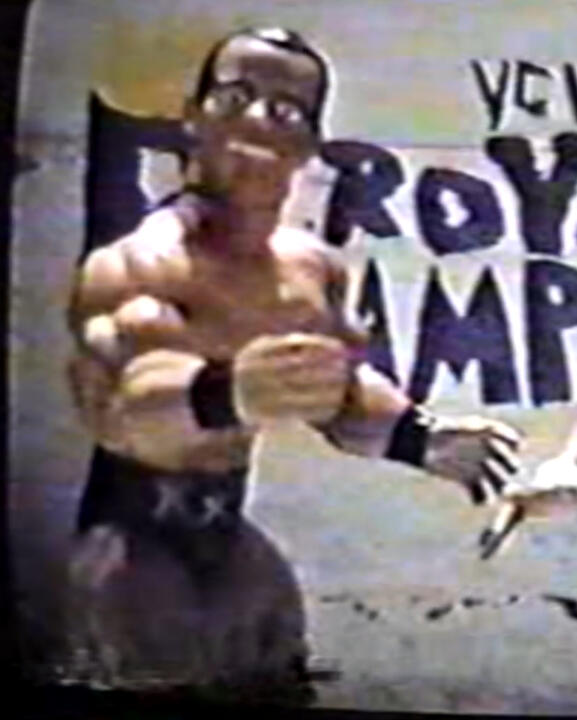
⚔️ The New Breed vs. The New World WarriorsVCW Fig Fed Era (1998–2002)In VCW’s Fig Fed Era, “Delicious” Devon Michaels formed The New Breed with Arico Sauva and Harly Davidson, quickly becoming a dominant faction. Their rise drew the attention of Josh Darthmaul (JD) — once just a fan who lobbied his way into VCW before being shockingly named President. Seeking revenge on Devon, JD created his own stable, The New World Warriors — Massacre, Major Carnage, Chance, and Mr. Olympia.Backed by VCW Owner Mr. B, The New Breed clashed with JD’s Warriors in a heated faction war that doubled as a corporate power struggle. The angle burned hot until a hiatus in 2001, when VCW briefly closed its doors.In 2002, VCW returned for its farewell PPV — and everything turned upside down. In a shocking twist, JD aligned with The New Breed, while Mr. B resurrected the New World Warriors to oppose them. The feud came full circle in the main event, Chance vs. Steve Storm, closing the Fig Fed Era with betrayal, chaos, and a fitting farewell to both the storyline and, for a time, VCW itself.Though The Ascended Masters had long since faded, rumors now swirl in the Digital Era that the check has come due — and certain people are about to pay.
Single Devision:
Amish Angus Walken — Created in 2017 and totally inspired by Weird Al Yankovic’s parody of Gangsta’s Paradise, Angus brings a one-of-a-kind twist to VCW. With his plain Amish garb and stone-faced presence, he’s the last guy you’d expect to step into the ring — but underestimate him, and you’ll find out fast just how wrong you are.Though his journey has been plagued by setbacks — mostly the constant glitches and restarts in WWE 2K’s game engines — Angus has remained a cult favorite waiting for his moment. Now, with WWE 2K24 finally stable enough to let VCW thrive, Amish Angus Walken is ready to make his mark.Don’t think an Amish man can throw down? Step up to Angus… and you’ll find out the hard way!
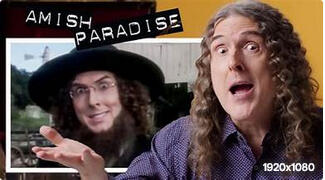
“Spainnard Heat” Antonio Hernendez —
Inspired by Eddie Guerrero & Inigo Montoya from the film The Princess Bride.
Debuting in VCW’s Fig Fed Era in 2001, Antonio Hernendez entered with real promise.
A fiery competitor with charisma to match, he looked poised for stardom but was one of many
talents lost in the shuffle during VCW’s turbulent years of faction warfare and corporate power struggles.Years later, Hernendez resurfaced in WWE 2K17, rebranded as GTA’s DJ Fernando Martinez —
a flashy, tongue-in-cheek reinvention that gave him new life. But fate struck cruelly: a catastrophic
glitch wiped out the entire 100-CAW roster not once, but three times, halting his run before it could begin.Now, in VCW’s Digital Age, Antonio Hernendez is set to return under his original name,
with unfinished business and overdue superstardom waiting to be claimed.
Once lost in the shuffle, Spainnard Heat is ready to turn the spotlight back on himself.
BarKode — Beginning with WWE 2K17, BarKode was one of the darker creations in VCW’s expanding roster of characters. His origin came from a simple, everyday moment — waiting in a grocery store checkout line. Staring at a barcode and wondering, “What’s this actually worth?” sparked both his name and his chilling persona.Visually inspired by WWF’s Nailz, BarKode is portrayed as a former state correction prisoner, branded with a stark barcode tattoo on his head. His unsettling look, violent temper, and unpredictable nature make him a uniquely dangerous figure in VCW.His theme music, one of the most memorable in VCW, drives home his menace with the line:
“Ask what’s your worth, lay you in the earth.”That single phrase embodies everything about BarKode — sinister, uncompromising, and always ready to reduce opponents to nothing more than a number on his ledger. In the VCW Digital Era, he’s a living reminder that everyone has a price.
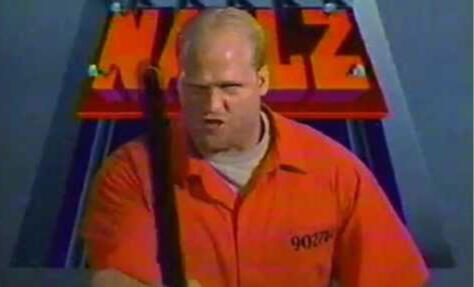
“The Closer” — A brand-new force in the VCW Digital Era, The Closer carries on the proud (and hated) tradition of the 1980s foreign heel. Inspired by the menacing presence of Baron Von Raschke, blended with the cold precision of a German Kurt Angle and the ruthless dominance of WWE’s Gunther, The Closer is equal parts throwback and evolution.His nickname, “The Closer”, speaks to his mission in VCW: when he steps into the ring, it’s not just about winning — it’s about finishing opponents, shutting down hope, and closing the door on anyone who dares to challenge him. With a clipped, authoritative delivery on the microphone and a commanding in-ring style, he exudes the aura of an old-school villain repackaged for the Digital Age.Unapologetically arrogant, brutally efficient, and proud of his heritage, The Closer enters VCW as a throwback to an era when villains were larger-than-life — only this time, the danger is very real.
“Blood Sport” Bolo Yeung — Debuting in WWE 2K14, Bolo Yeung was inspired by his iconic role as Chong Li in the cult classic Bloodsport. With his hulking physique, cold stare, and merciless streak, he was a natural fit for wrestling, instantly standing out as a terrifying presence.In VCW, it’s the Bloodsport incarnation of Bolo that arrived in the Digital Era, bringing his cinematic brutality into the squared circle. Long before Seth “Freakin” Rollins made the Curb Stomp famous, Bolo had already delivered it in the Kumite — nearly killing Jean-Claude Van Damme’s friend with the move. In VCW, that stomp has become his feared finisher, synonymous with ending careers.Capping it all off is one of the catchiest and most sinister themes in VCW history, a dark chant fans can’t resist echoing:
“Bolo stomps on your head, makes you dead…
Blood Red, Bolo’s wrath is spread!”From video game debut to Digital Era domination, “Blood Sport” Bolo Yeung remains one of the most dangerous and unforgettable monsters ever to step into a VCW ring.
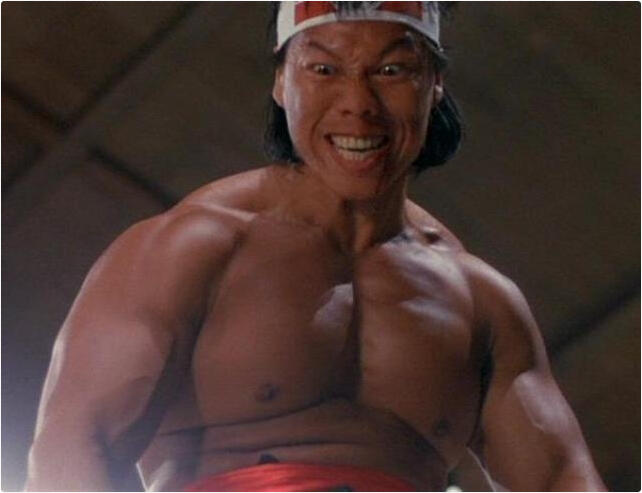
Boogie Knight — Strutting out of the Digital Era with mirror-ball swagger, Boogie Knight is one of the new stars of VCW’s Digital Era, bringing with him the spirit of disco turned up to 11. Inspired by the flashy antics of WCW’s Disco Inferno and the campy cool of The Simpsons’ Disco Stu, this dancing dynamo mixes funk, flair, and parody into a package that’s impossible to ignore.But don’t let the sequins fool you. Behind the polyester and platform shoes is a surprisingly crafty competitor who can turn comedy into chaos in the blink of an eye. He taunts opponents with disco moves mid-match, uses the ropes like a dance partner, and caps it all off with his finishing move: a devastating strike timed perfectly to the beat.More than just a parody act, Boogie Knight represents VCW’s ability to blend humor with spectacle while still delivering in-ring excitement. When the lights dim and the disco ball spins, there’s only one rule in VCW: the party doesn’t stop until Boogie Knight says so.
Bowie Stardust — Another of the new stars of VCW’s Digital Era, “Glitter Chaos” Stardust Bowie is a flamboyant tribute to the late, great David Bowie, with a twist. Rumored to be the love child of Bowie and Madonna, Stardust is mentally locked in the neon-soaked, synthesizer-fueled world of the mid-1980s — all splashy colors, androgynous fashion, and unapologetic style.Stylish and lightning fast, Stardust combines dazzling charisma with high-speed offense, leaving opponents stunned and crowds mesmerized. He’s part rock star, part ring star — a surreal performance every time he steps into the arena.His presentation is completed by an all-original theme song that sounds like it could have leapt straight off the Revenge of the Nerds soundtrack — quirky, catchy, and impossible to forget. When Bowie Stardust arrives, the chaos turns to glitter, and the Digital Era shines just a little brighter.
“Big” Brian Titan — Debuting in 2000, Titan was VCW’s answer to the “Hogan clones” that showed up in classic wrestling video games like Wrestle War and The Main Event. Those games couldn’t use Hulk Hogan for copyright reasons, so they created larger-than-life knockoffs — and in that same tradition, VCW unleashed its own powerhouse: the godlike thunder power from Mount Olympus, “Big” Brian Titan.Partially inspired by Thunder Punch He-Man, Titan had the physique, the aura, and the presence of a wrestling god. For years, though, his destiny remained out of reach. Attempts to revive him from WWE 2K14 through 2K22 were wiped away again and again by glitches, each run ending before it could begin.Now, in WWE 2K24, Titan has finally arrived on stable ground. This time, he doesn’t just have the look and the charisma — he comes armed with an epic all-original theme song, one of the best in VCW today, that transforms every entrance into a godlike spectacle.After a decade of digital setbacks, “Big” Brian Titan is back — and the signal is clear: the Titan Era has arrived, and nothing will stop the power from Mount Olympus. ⚡
Brother Mathias — Another striking addition to the VCW Digital Era, Brother Mathias is proof that pop culture continues to inspire some of wrestling’s most unforgettable characters. Pulled straight from the 1971 cult classic The Omega Man (a remake of Last Man on Earth and precursor to I Am Legend), Mathias was originally the chilling leader of the plague-ravaged “Family” in the Charlton Heston film.What stood out most — and carried over into VCW — was his Shakespearean, almost poetic delivery of villainy. That calm, deliberate bad guy speak made him feel larger than life, the perfect foundation for a wrestling persona.In VCW, Brother Mathias fills a role similar to Bray Wyatt: a mesmerizing cult leader type who captivates crowds with eerie sermons before unleashing chaos in the ring. Stylish in speech, unsettling in presence, and unpredictable in action, Mathias stands as one of VCW’s most chilling inspirations — a superstar born of cinema, reborn in the squared circle.
Buddy Revell — Since WWE 2K22, VCW has been trying to kickstart the career of one of its most unique Digital Era creations: a wrestling reinvention of Buddy Revell, the menacing school bully from the cult-classic ’80s film Three O’Clock High.A hugely underrated pop culture icon, Revell’s quiet intensity and explosive violence made him unforgettable on screen — and a natural fit for the squared circle. Just like in the movie, there’s one ironclad rule: don’t touch him. The legend follows him everywhere: “Did you hear what he did to his teacher in the gym???”In VCW, Buddy Revell channels all that pent-up intimidation into a dangerous, brawler-style persona. No frills, no wasted motion — just raw menace and sudden violence. He doesn’t need to talk much. He doesn’t need flashy gimmicks. All he needs is a target… and the bell to ring.Three o’clock… be there, or he’ll find you!
“Blaster” Bull Hurley — Another great pop culture icon of the ’80s brought to life in the ring, Bull Hurley stomps into VCW as a true monster heel. Obviously inspired by the arm-wrestling beast from the cult classic Over the Top, Hurley naturally fills that Big Van Vader–esque spot on the VCW roster — a massive powerhouse who thrives on intimidation and destruction.Debuting in early 2000 during VCW’s Fig Fed Era, Hurley immediately struck fear in the hearts of anyone who dared step into the ring with him. His brawler’s aura was impossible to ignore, summed up perfectly by the warning heard backstage and in the crowd alike:
“Come on! Get in here!!! He’s gonna wreck you!”Since WWE 2K14, VCW has been trying to revive Hurley digitally, but the era was plagued with glitches, resets, and setbacks that kept him from returning in full force. Each attempt felt cursed — until now.In WWE 2K24, the long wait is finally over. “Blaster” Bull Hurley has returned to unleash havoc in the Digital Era, bringing the same brute force and destructive presence that made him a legend of VCW’s past. When Hurley enters the ring, there are no games, no gimmicks — just carnage.
Chance — What began as a long shot turned into one of VCW’s most surprising success stories. Originally, an X-Men Gambit figure brought in by VCW President Josh Darthmaul as part of the feared New World Warriors, Chance was named almost as a joke — he was small in size, and no one knew what kind of chance he would actually have in VCW.At first, he seemed destined to linger in the background. But everything changed when he scored a shocking upset at VCW’s Royal Rampage, defeating “Awesome” Alex to capture the VCW U.S. Title. Alex's original challenger, Nick Nitro had been attacked back stage by Alex's bodyguard and was unable to compete in the match. Then in a outburst of ignorance and arrogance, Alex exclaimed he can beat anyone back there any time! Which led to Chance's shocking involvement and win.That victory catapulted him into the spotlight. As U.S. Champion, Chance earned the #1 seed in the Pyramid of Pain Tournament at Beach Brawl. Against all odds, he ran the gauntlet and defeated “Massive” Mike Thor in the finals — earning a world title shot against VCW Legend and reigning champion “Precious” Paul Paradice.By the end of VCW’s Fig Fed Era, Chance had defied every expectation. At the company’s final PPV, the once-overlooked underdog stood as a three-time VCW World Champion. Backed by the monstrous New World Warriors, Massacre and Major Carnage, he defended his crown against none other than VCW’s icon, Steve Storm, in a showdown that marked the dramatic finale of VCW’s original era.
“The Native American Warrior” Cherokee —
First debuting in late 1996,
(Following the footsteps of his brother from another fig fed promotion) Cherokee made an immediate impact in VCW with his unforgettable airbrushed wolf-head wrestling gear.Cherokee also had formed a tag team with VCW's WarPath in 1998 called Tribal Nation, based on the original team from 1993 consisting of Warpath & MoHawk.Now reborn in the Digital Era, Cherokee is ready to rise again — fighting in the name of his four fathers of Mother Earth: the wind, rain, sun, and soil. Cherokee's all-new digital incarnation pays tribute to his brother’s original inspiration, drawn from the Lost World of the Warlord Arak figure. It's a Heritage that runs deep in Vermont wrestling history.With heritage, spirit, and pride driving him, the Tribal Nation lives on in Cherokee.
Chono Miyagi — Literally a Remco Mr. Miyagi figure, Chono Miyagi made his VCW debut in December of 1992. At the time, WCW was showcasing Masahiro Chono, whose toughness, for the VCW character was combined with Miyagi’s iconic look and wisdom, plus Ricky Steamboat’s eternal babyface vibe, went into the creation of this unique superstar.The result was Chono Miyagi — a respected competitor who quickly became one of VCW’s most beloved and enduring legends. His presence carried a blend of martial arts discipline, quiet strength, and an unshakable sense of honor.In later years, the character evolved through custom work, becoming a mix between the Remco Miyagi and Remco Ninja figures — further solidifying his legacy as both a creative original and a cornerstone of VCW history.

Charming Chuck Valentine — One of the bold new superstars of VCW’s Digital Era, Valentine is all about style, swagger, and self-adoration. Imagine a cocktail of Brutus “The Barber” Beefcake’s flamboyance, Ravishing Rick Rude’s arrogance, and Tom Selleck’s Magnum P.I. charisma — and you’ve got Chuck Valentine.To the ladies, he’s not Beefcake — he’s high-caliber, expensive Beef Steak. (Though some say he smells a little more like Steak-umms… you decide.) Either way, his titanic ego doesn’t leave much room for modesty.Cocky, charming, and convinced the world revolves around him, Charming Chuck Valentine struts into every arena like it’s a catwalk. He’s here to flex, flirt, and flaunt — and if you get in his way, he’ll make sure you’re left looking second best.
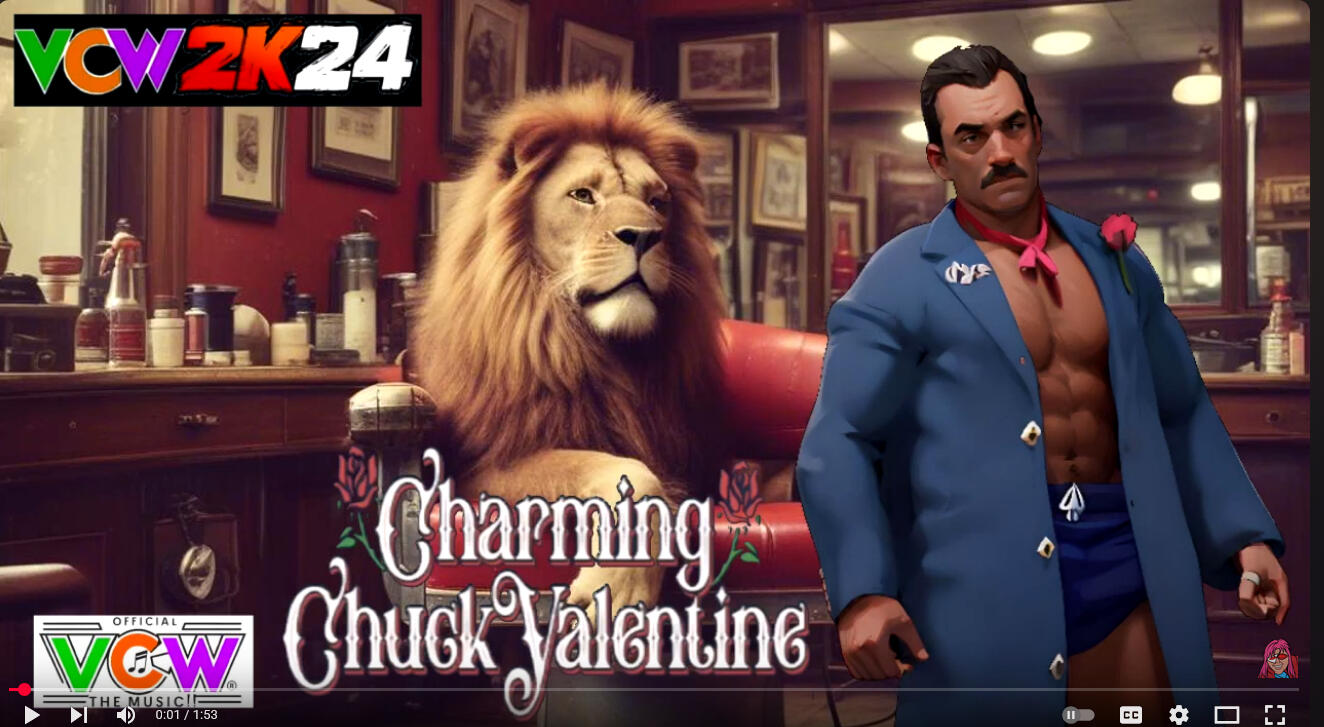
Cold Steel — VCW’s resident bad ass.In 1999, Cold Steel stormed into VCW with no fanfare, no promos, no gimmicks — just pure destruction. He would march to the ring, deliver a brutal Front Face Choke Slam, and leave without a word. That was all it took to build his reputation: a man who believed words were for wussies and did his talking with the broken bones of his victims.Cold Steel wasn’t a creation born inside VCW — he was an outside force, arriving fully formed with the look and the name of a street legend. A childhood friend of VCW Owner Mr. B discovered him after witnessing Cold Steel single-handedly tossing bouncers out of the infamous Double Deuce Bar, and knew right away: “I’ve got someone you need to meet!”From that moment on, Cold Steel carved his legacy with his devastating Front Face Choke Slam, a move that etched his place in wrestling lore. He didn’t need the mic. He didn’t need flash. He was violence, cold and unrelenting. And from there, the rest was history.
Dan “The Plan” Verceti — Arriving in VCW in 2001, Verceti was a swaggering mix of mobster cool and unhinged danger. Inspired by The Sopranos, GTA: Vice City’s Tommy Vercetti, and especially Joe Pesci’s fiery personas from Goodfellas and My Cousin Vinny, he combined sharp wit, a short fuse, and a knack for violence into one unforgettable package.Adding a touch of humor and the slicked-back style of The Sopranos’ Paulie Walnuts, Dan “The Plan” Verceti could keep you laughing one minute and put you through a table the next. Fun-loving on the surface but deadly underneath, he was the kind of character who always had a scheme in motion — and in VCW, you could never be sure if you were in on the plan… or the target of it.
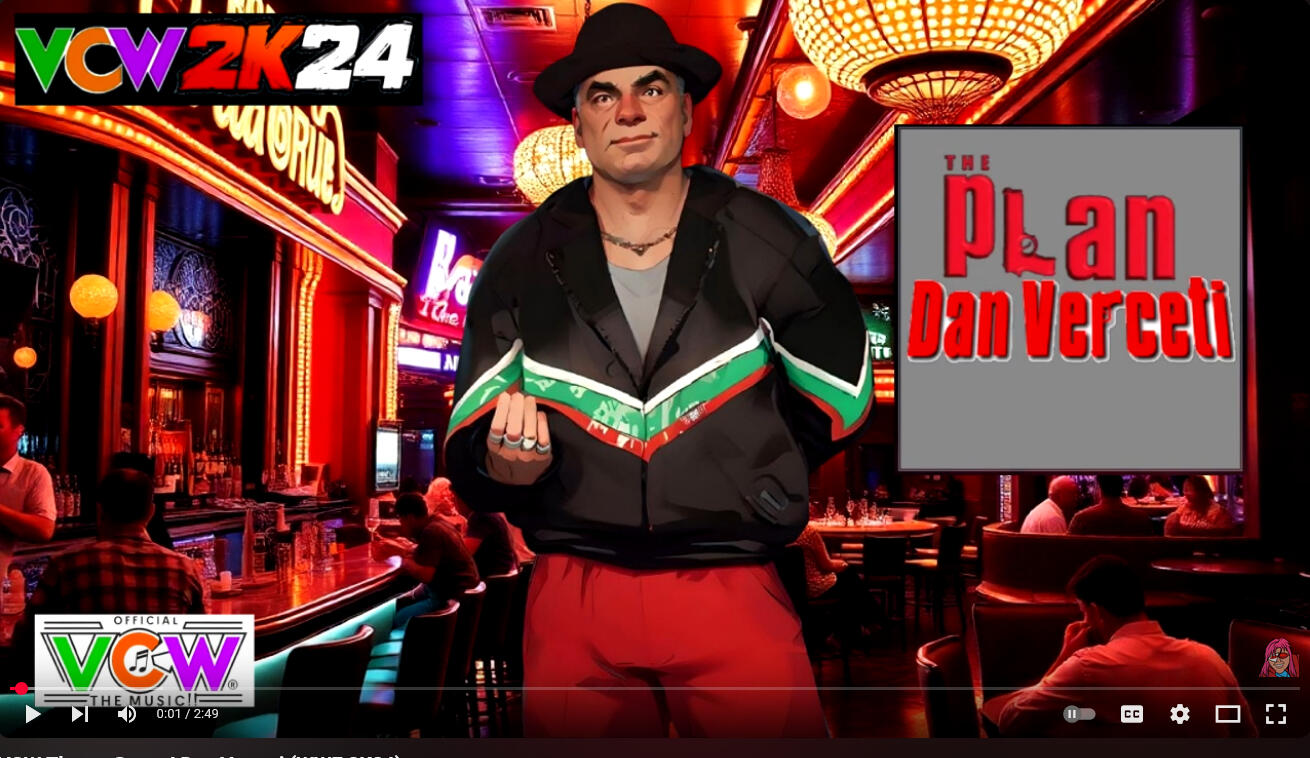
Deathrow — VCW’s Iconic Deadman.On Halloween Night, 1992, the world met Deathrow. His story begins in the haunted village of Lugos, Hungary, where legends told of a pale terror who swooped down like a hawk, draining victims mid-air before discarding their lifeless bodies. Townsfolk said he drank their souls as a child would drain a juice box — leaving only husks behind.Over the centuries, Deathrow was captured again and again, but no execution ever held him. Was he a vampire? A corpse? A voodoo curse? None could say for certain. What was clear was his face — scarred and twisted by the sins of mankind — and his body, marked by failed executions that could never end him.In late 1992, VCW’s 1st roster expansion introduced him to the squared circle. Inspired by a 1985 Robotech Breetai figure, his eerie resemblance to Nosferatu brought the character to life. Like WWE’s Undertaker years later, Deathrow was treated as a rare spectacle, appearing exclusively at VCW’s annual Horror Havoc event. There, he became the foundation of fear — the “pale blue destroyer of souls” that fans both dreaded and revered.Now, after a long slumber in a deep grave, Deathrow has risen once more. His presence in VCW’s Digital Era signals the return of a nightmare that never truly died. The reaper has come to collect… and in his wake, no soul will be forgiven.
Diamond Dutchman (DDM) — One of the true cornerstones of early VCW, Diamond Dutchman was born during the first roster expansion in December 1992. His origins were as unconventional as they come: a broken Masters of the Universe Roboto figure, with his torso swapped for a He-Man body courtesy of a schoolyard trade. To top it off, his right arm had been replaced with a Hordak arm, creating a mismatched, almost Frankenstein look that somehow screamed potential.That odd arm swap became his trademark — the black glove he wore on his right hand symbolized it, and his devastating belly-to-belly suplex finisher was built around the idea that his unique grip gave him perfect leverage.
The name came from a WCW nod — inspired by The Diamond Studd, rebranded with a strange twist as Diamond Dutchman. At the time, the thought was: “Has there even been a Dutch wrestling character?” It was a stretch creatively, but it stuck — and DDM became a fixture of the fed. By the time VCW’s Fig Fed Era wound down, DDM had done it all — and done it again. He captured titles in every division and held the tag belts with six different partners, rounding the bases of success half a dozen times over.Oddly enough, in hindsight, he could have just been Roboto with “Mr. Roboto” as his theme. But giving him a new name, a new theme, and a creative twist was what made VCW unique — and why Diamond Dutchman will always be remembered as one of its great originals.
The Dungeon Slave — One of the Founding Fathers of VCW.VCW was born on October 19, 1992 with only three wrestlers on its roster. Among them was The Dungeon Slave, a figure who became both a cornerstone and a tragedy — the only founding father to never win the VCW World Championship.Inspired by the Ghostbusters Monsters Quasimodo figure, his character blended the tortured soul of Quasimodo, the reckless intensity of WCW’s Cactus Jack, and the wronged heroism of Edmond Dantès from The Count of Monte Cristo. His debut theme, “Paint It Black” by the Rolling Stones, perfectly captured his suffering and surrender to darkness — but his new all-original theme song elevates that story, telling the tale of a soul betrayed, now fighting to clear his name and rise as a hero.Since WWE 2K14, VCW has tried to bring him back, but glitches and resets kept his redemption on hold. Now, in the Digital Era, The Dungeon Slave finally returns as the “Hardcore Stuntman,” armed with chairs, ladders, tables — even steel chains — to chase the one prize that eluded him.For The Dungeon Slave, this isn’t just about survival. It’s about vengeance, vindication, and proving that even the most broken soul can still rise to the top.
Karnov the Egyptian Genie — Debuting in 1999 during VCW’s Fig Fed Era, Karnov was one of the most haunting creations to step into the fed. Inspired by the NES game Karnov, the terrifying presence of Abdullah the Butcher, and the mystical flair of Disney’s Genie, Karnov combined horror and spectacle into a single, unforgettable figure. His design, with the frightening scars of Abdullah and the blue skin of a genie, made him instantly stand out on the roster.His original entrance theme was taken from The Mummy soundtrack, giving him that unmistakable vibe of an ancient Egyptian curse — as if he’d stepped right out of a black-and-white horror film or the ’90s Brendan Fraser Mummy movie. Now, in the Digital Era, Karnov enters with an all-original theme song that elevates his mystique even further, perfectly capturing the spirit of a supernatural force returning to claim his place.Equal parts menace and mystery, Karnov the Egyptian Genie remains one of VCW’s most chilling and distinctive icons.
G.T. (Ghost Trap) Spangler — One of the Founding Fathers of VCW.When VCW officially launched on October 19, 1992, the roster was only three figures deep: two Ghostbusters and Tabe from Chuck Norris Karate Kommandos. These three, along with their creator, would forever be remembered as the men who built the foundation of VCW.From the start, the Ghostbusters cartoon figure of Egon Spengler stood out as full of potential. But instead of simply making Egon a brainy, science-based character, VCW gave him a twist: he became Egon’s brother, G.T. Spangler — with “G.T.” standing for “Ghost Trap” and his catchphrase, “Got That!”Rather than chasing ghosts, G.T. was reimagined as a former Jr. Ghostbuster turned wrestler, blending a scientific, methodical style with bursts of daredevil high-flying. Like his brother, he thrived on pushing boundaries and taking risks — only now, he did it in the squared circle.His biggest moment came immediately. After winning the inaugural tournament (3 Way Dance) on October 19, 1992, G.T. Spangler etched his name into history as VCW’s very first World Champion. With his unforgettable theme song and trailblazing style, he set the tone for everything VCW would become.
Forsaken — A New Star of VCW’s Digital Era.Dark, brooding, and dangerous, Forsaken embodies the aura of a man who walks the line between prophet and predator. Clearly inspired by the sinister psychology of Jake “The Snake” Roberts, the chaotic energy of Trevor from Grand Theft Auto V, and the gravel-voiced menace of Sam Elliott in Road House, Forsaken is as much a presence as he is a wrestler.His appearance alone tells the story: a knife tattoo carved into his forehead, and across his throat, a dotted line with the words “Cut Here.” These marks announce to the world that Forsaken is a dark soul — one who performs not for the crowd, but purely for his own twisted amusement.Slow, deliberate, and unpredictable, he stalks his opponents with the patience of a predator. And when his all-original theme song hits, the chilling lyric echoes his mission: “You will not be saved, but you will be claimed.”With that haunting mantra, Forsaken steps into VCW’s Digital Era as one of its most unsettling new stars — a man less interested in victory than in possession, leaving only broken bodies and shattered spirits in his wake.
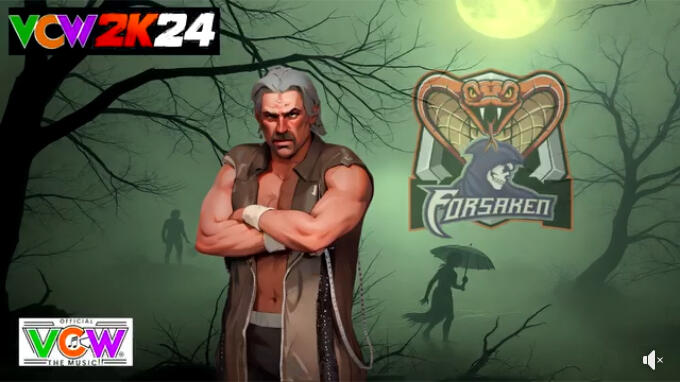
“Shakin’” Frankie Grease — The Wrestling Rebel With a Cause.Straight out of a jukebox dream, Frankie Grease brings Elvis swagger and James Dean cool to the world of VCW. As his all-original theme proclaims, “Elvis in his soul, got the James Dean flare.” In the ring, he channels the showmanship of the Honky Tonk Man mixed with the charisma and flash of HBK, creating a one-of-a-kind performer who’s part rock ‘n’ roll, part rebel, and all attitude.Originally debuting in VCW’s Fig Fed Era in 1999 under the name Frankie Bluez, he struggled to find his place before the fed’s hiatus. His long-delayed rebirth came in the Digital Era, starting with WWE 2K14 — but like so many others, glitches and resets repeatedly derailed his momentum.Now, in 2K24, Frankie has reaffirmed his roots, returning as “Shakin’ Frankie Grease” — cruising into the spotlight in his ’57 Chevy loaded with cupcakes and earth angels. Wildly popular and ready to finally fulfill his promise, Grease lives by his mantra:“Drive like thunder, crash like lightning.”After years of waiting, the wrestling rebel is ready to rock, roll, and take home VCW gold.
Freak Show — The Nightmare Clown of VCW.Long before WWE unleashed their Boogeyman, VCW had its own twisted carnival of terror: Freak Show. Born from a mashup of a monstrous Spawn clown figure and the haunting vibes of ICP’s “Boogie Man”, this deranged character emerged to torment VCW five years ahead of the curve.Towards the end of VCW’s Figure Fed Era, a McFarlane Akira Joker (Clown Bike Gang Leader) figure was rebranded into the nightmare persona known as Freak Show. With his painted grin, serial-killer presence, and chaotic energy, he instantly stood out as one of the fed’s most unsettling creations.But his path to glory was cursed. Since WWE 2K14, Freak Show suffered the same fate as so many others — erased time and again by glitches and resets, leaving him trapped in limbo. Like a bad dream you can’t wake up from, he kept slipping back into the shadows.Now, in the VCW 2K24 Digital Era, Freak Show has finally broken free. The circus doors have reopened, and this time, there’s no glitch to stop him from turning VCW into his personal house of horrors.
Ghetto Master — A New Superstar of VCW’s Digital Era.Inspired by the ferocity of Rocky III’s Clubber Lang and the legendary might of the late, great George Foreman (RIP), Ghetto Master is built for destruction. His boxing roots give him a foundation of power, but inside the ring he’s become something even more terrifying: a force of pure, unrelenting rage.His style is nothing but cast-iron fists, pile-driving power, and concrete-blistering blunt force trauma. Every strike is a hammer, every move designed to break rather than outlast. He doesn’t just fight opponents — he punishes them.Fueled by intense fury, Ghetto Master brings a presence unlike any other in VCW. He isn’t here to dance, entertain, or play games. He’s here to destroy, dominate, and leave wreckage in his wake.In the Digital Era of VCW, Ghetto Master isn’t stepping into the spotlight to compete — he’s stepping in to own it.
Giant Dojo — A New Superstar of VCW’s Digital Era.Inspired by the towering presence of Giant Baba and the iconic sumo warrior E. Honda from Street Fighter, Giant Dojo storms into VCW as a force of tradition and spectacle combined. He represents the discipline of the dojo, the honor of sumo, and the crushing power of a true giant.In the ring, Giant Dojo brings thunderous palm strikes, bone-shaking chops, and earth-rattling slams. His style blends the raw impact of sumo with the showmanship of puroresu, making him a competitor who can overwhelm with size and still surprise with agility.And, like every great VCW creation, Giant Dojo is accompanied by an all-original theme song — a soundtrack that showcases how VCW’s music is as diverse and unique as its characters. His entrance theme is massive, booming, and unforgettable, echoing the aura of a mountain walking to the ring.With his arrival in the Digital Era, Giant Dojo stands as a living monument — a colossus whose every step shakes the ring and whose every match feels like a natural disaster.
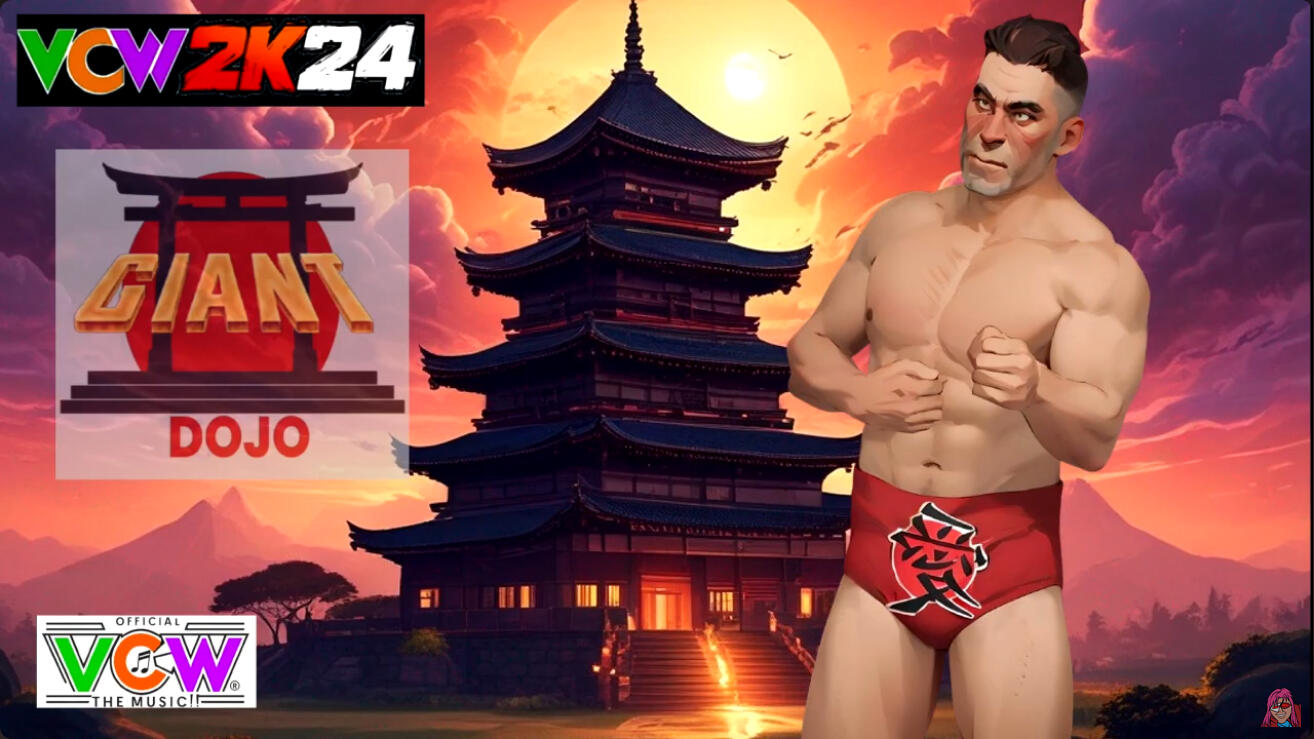
Gwar-Zilla — A New Superstar of VCW’s Digital Era.Straight from the depths of heavy metal nightmares and kaiju chaos comes Gwar-Zilla, one of the most outrageous and destructive forces ever unleashed in VCW. Inspired by the shock-rock spectacle of GWAR, the ruthless ring presence of WWF’s Killer Khan, and the sheer monster power of Godzilla, this creation is larger than life — and twice as terrifying.Covered in monstrous armor and face paint that looks ripped from an alien warband, Gwar-Zilla stomps to the ring like a kaiju on a rampage. His style is brutal and unrelenting: stomps, chops, and crushing slams delivered with the force of a city-leveling beast.And just like his inspirations, he’s not here to blend in — he’s here to stand out. With an all-original theme song that mixes metal chaos with monstrous roars, Gwar-Zilla is both spectacle and destruction, a perfect example of how wild and creative VCW’s Digital Era can get.When the smoke clears and the music fades, one truth remains: Gwar-Zilla is here to crush everything in his path.
“The Jaded Icon” Hunk Golden — A Superstar Consumed by Revenge.Hunk Golden’s story is unlike any other in VCW. His origins trace back to the generic “Wrestling Champions” figure line, instantly recognizable for his long blonde hair, thick black mustache, and wide, crazy eyes. The name came from the 1987 Troma B-movie Hunk Golden, and like that cult oddity, this figure always stood out — but never truly fit in.In the Figure Fed Era, Hunk Golden bounced between VCW and both of the other fig feds in Vermont. Despite his look, his promos, and his talent, he never found his footing. Time and again, he was overlooked, lost in the shuffle, and forgotten.That became his angle when he was reborn in VCW’s Digital Era: a man who had it all but was screwed over by every promoter in every fed. His bitterness boiled over into full-blown obsession. In a legendary parody of the WWE 2K commercial where Seth Rollins torched the Hall of Fame, Hunk Golden set fire to the Green Mountain Wrestling Hall of Fame, destroying priceless memorabilia from all three Vermont figure feds.In his mind, it wasn’t just the promoters who held him back — it was fate itself. The repeated glitches and resets of the 2K games from 2K14 onward became, to him, part of a grand conspiracy against his career. By 2K18, he had nothing left but his anger.Now, christened “The Jaded Icon”, Hunk Golden is a man on a mission: to finally claim the main event spotlight he believes was stolen from him. His all-original theme song captures the bitterness, the madness, and the burning hunger that drive him.And since his bad luck began with VCW, he places the blame squarely on its owner, Mr.B. His vow is simple:
to exact revenge, rewrite history, and finally become the icon he was always meant to be.
The Iraq Sheik — A Classic Bad Guy Reborn in the Digital Era.In the tradition of wrestling’s most feared 1980s foreign villains, The Iraq Sheik embodies the terror and intensity of a bygone era. A brutal combination of influences — the savagery of The Original Sheik, the arrogance of The Iron Sheik, and the blood-soaked chaos of Abdullah the Butcher — he is the kind of villain who doesn’t just wrestle, he wages war.Debuting in 2002 at the very tail end of VCW’s Fig Fed Era, The Iraq Sheik immediately stood out as one of the fed’s most dangerous heels. His wild eyes, vicious strikes, and unpredictable brawling style made him a force fans feared and hated in equal measure.But his journey into the Digital Era was nearly derailed. Like so many others, from 2K14 onward, The Iraq Sheik was plagued by glitches and game resets that robbed him of the chance to dominate. Still, he endured, waiting for the moment to strike.Now, with VCW reborn in 2K24, The Iraq Sheik is back — meaner than ever. His all-original theme song mixes guttural metal vocals with driving guitar riffs, echoing the ominous dread of the Jaws theme. It’s a warning siren: when you hear it, destruction is coming.Classic in inspiration yet fresh in execution, The Iraq Sheik is ready to carve his place in VCW history — and this time, nothing will stop him.
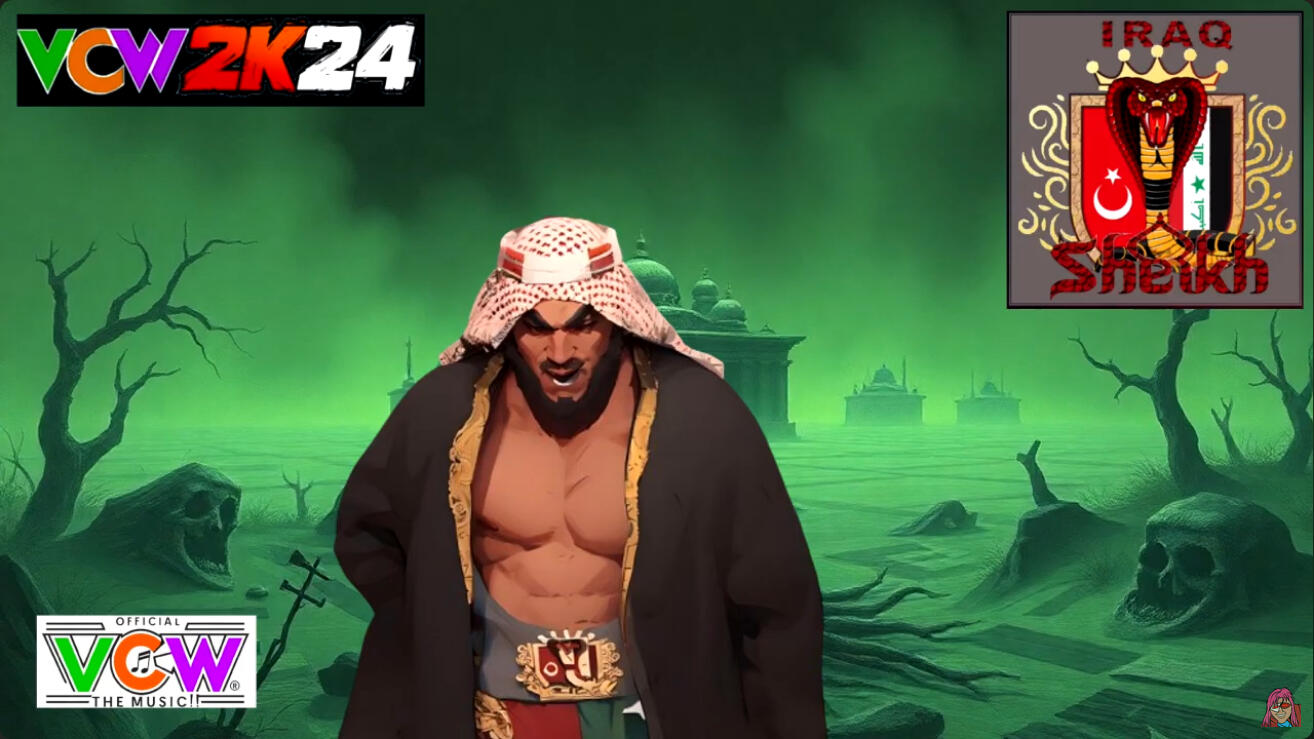
Jack of Diamonds — The Three-Faced Gambler of VCW.
Originally a LJN Brutus Beefcake.Never trust his word. Never bet on his loyalty. Jack of Diamonds has only ever been loyal to one person: himself. Like the pre-ring mask he wears, he isn’t just two-faced — he’s three-faced.Debuting in 1995, Jack of Diamonds quickly became one of VCW’s more unusual and unpredictable creations. His crowning moment came at Beach Brawl ’96, when he shocked fans by defeating Mr. America(Stone Protector Chester The Wrestler) to capture the VCW World Title.He resurfaced in 2000, teaming with the King of Hearts to form the tag team Full House, a duo as flashy as they were dangerous.In the Digital Era, Jack’s return has been as frustrating as it has been intriguing. Since 2K14, his career has been hampered by the same glitches and setbacks that plagued much of VCW’s roster, keeping him from reaching the spotlight he once commanded.Still, his presence is undeniable. With his quirky, ’90s boy-band–style theme song, “Back Street Blackjack”, echoing through the arena, Jack of Diamonds remains a wildcard in VCW — a gambler whose only real bet is on himself. This time his pile of chips are bet on his return in VCW's Digital Era on WWE 2K24.
Jaw Breaker — A New Star of VCW’s Digital Era.Wild. Bold. Uncontrollable. Jaw Breaker is the kind of superstar who thrives on chaos and lives to defy expectations. Inspired by the fiery temper and unpredictable swagger of Rowdy Roddy Piper during the Rock ’n’ Wrestling Era, Jaw Breaker brings that same reckless energy into the modern VCW ring.He doesn’t play by the rules, and he sure as hell doesn’t do what he’s told. Whether it’s smashing through opponents, breaking the mold, or starting fights no one saw coming, Jaw Breaker is a walking powder keg with a short fuse and a mean right hand.As one of the new stars of VCW’s Digital Era, he represents everything the fed has always been about: big personalities, raw energy, and a refusal to be tamed. When Jaw Breaker hits the ring, one thing is certain —
someone’s leaving with their jaw broken.
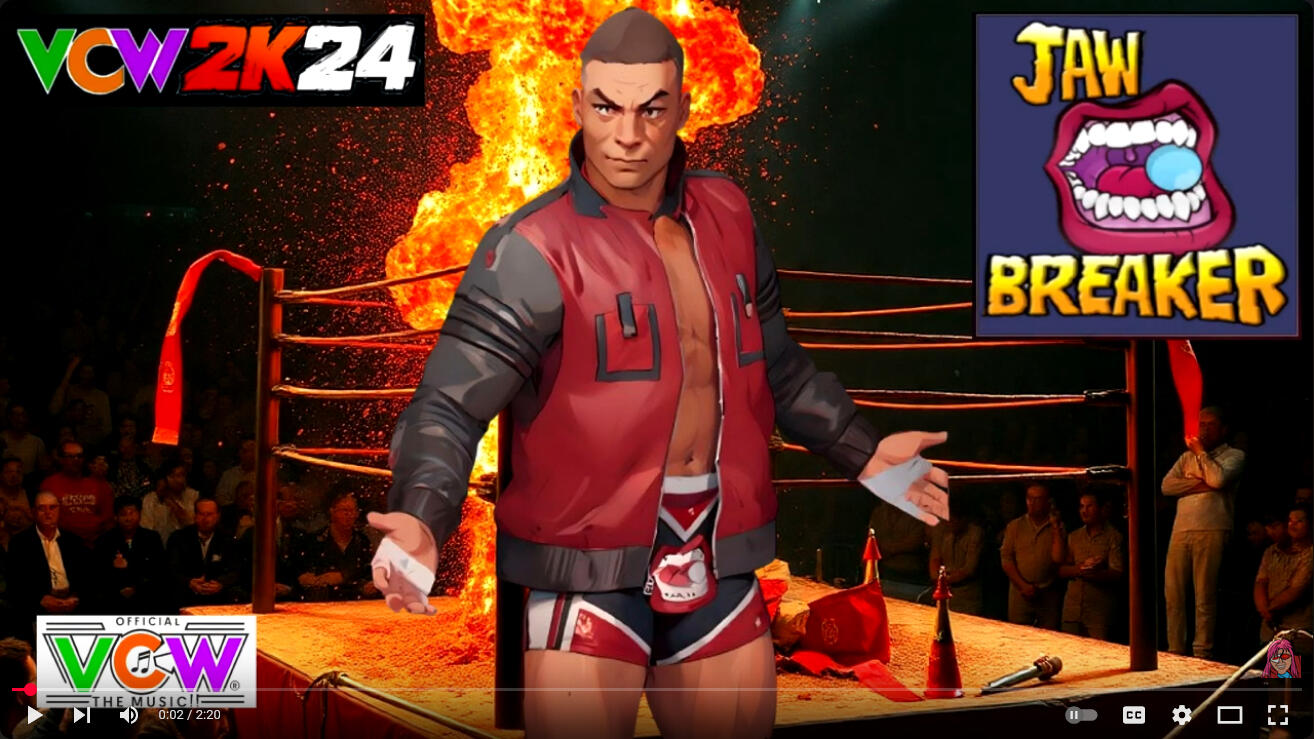
Judgment John Kelly — A New Star of VCW’s Digital Era.With his fiery mustache, iron will, and barrel-breaking hammer fists, Judgment John Kelly is one of VCW’s toughest new babyfaces. Inspired by Fisto from Masters of the Universe, Kelly embodies the raw power of a brawler, but with the heart and honor of a true hero.His roots also draw from the tradition of classic Irish fist fighters, as seen in Far and Away starring Tom Cruise. In that film, Irish immigrants fresh off the boat proved themselves in smoky saloons and bare-knuckle fight clubs, where pride, survival, and respect were earned with every blow. Kelly channels that same spirit — a fighter of the people, battling with fury but always with fairness.In the ring, his style is straightforward and devastating: no tricks, no shortcuts — just hammer fists that deliver justice one crushing strike at a time. When pushed to his limit, his temper explodes, and opponents quickly learn why his fists are known as verdicts of finality.Now, as one of the new stars of VCW’s Digital Era, Judgment John Kelly fights not just for victories, but for pride, respect, and the fans who believe in him.When the fists fly, the outcome is clear: Judgment has been served.
Junkyard Savage — A New Star of VCW’s Digital Era.Part wildman, part warrior, part street-born powerhouse — Junkyard Savage is a living blend of three icons: the unchained chaos of Bruiser Brody, the raw charisma of Junkyard Dog, and the fearless high-flying of Jimmy “Superfly” Snuka.He’s unpredictable, he’s untamed, and he’s dangerous whether he’s swinging chains in the junkyard or flying through the air in the squared circle. Savage’s style mixes bone-crushing brawls, primal energy, and daredevil risk-taking, making him one of the most unique threats in VCW’s roster.With his wild-eyed intensity and larger-than-life personality, Junkyard Savage brings the spirit of wrestling’s most memorable outlaws into the Digital Era of VCW. He doesn’t care about rules, reputations, or rivals — he only cares about raising hell and leaving opponents broken in his wake.Whether it’s in the yard or in the ring, one thing is certain: the Savage is loose, and nobody is safe.
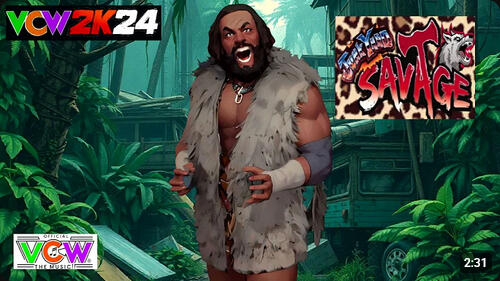
Larz — VCW’s Pumped-Up Powerhouse.Debuting in 2000 during VCW’s Fig Fed Era, Larz exploded onto the scene as a parody turned powerhouse. Inspired by Arnold Schwarzenegger and the hilarious “Pump You Up” bodybuilder characters from Saturday Night Live, Larz was larger than life from day one.With his over-the-top flexing, thick accent, and comedic bravado, fans instantly connected with him — but it wasn’t just laughs that made him a star. Once the bell rang, Larz proved he had the power, the charisma, and the drive to become a major player in VCW.He embodied the perfect mix of parody and powerhouse — entertaining crowds with his personality while bulldozing opponents with raw strength. By the time VCW closed its figure-fed chapter, Larz had cemented himself as one of the fed’s most unforgettable creations.Now, with VCW thriving in the Digital Era, the pumped-up powerhouse is ready to flex, fight, and once again prove why he was an instant hit.
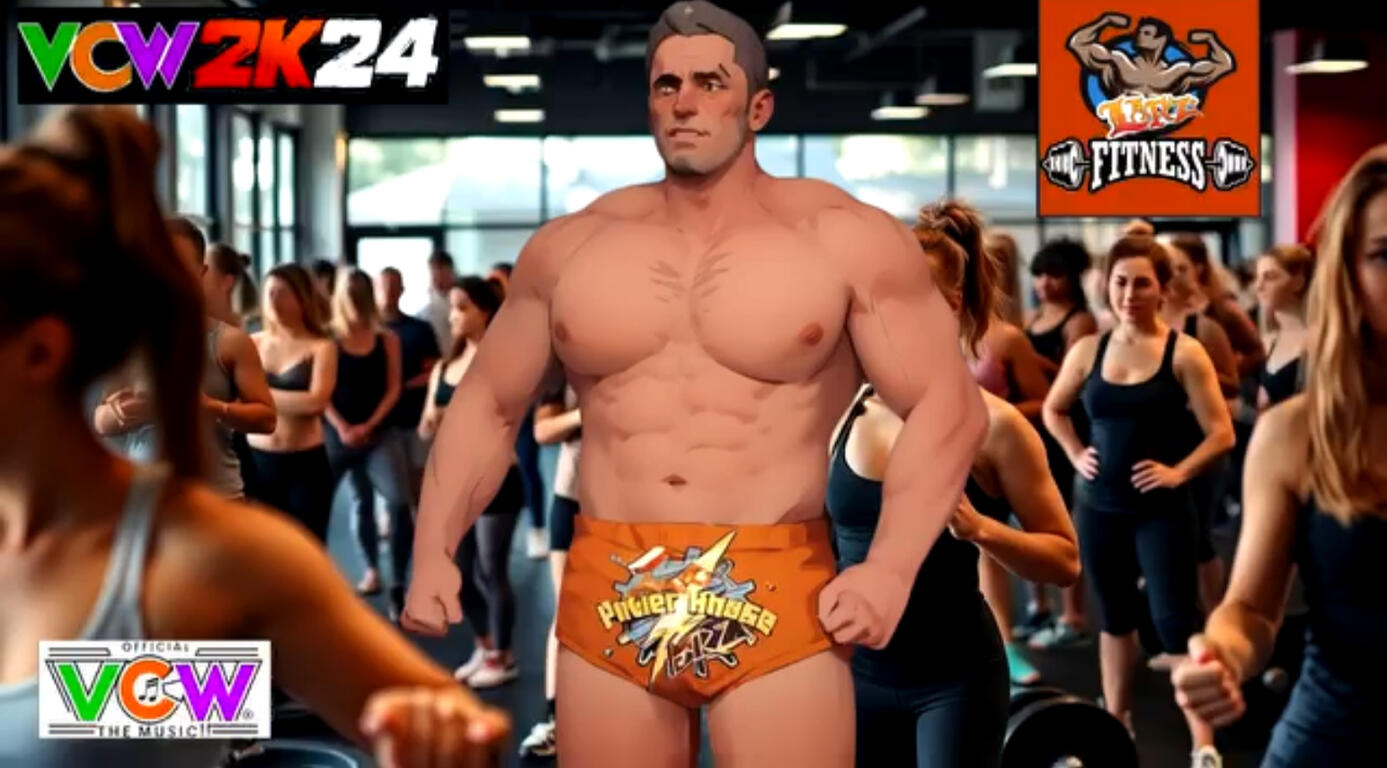
“Lethal” Lex Perez — Madness with a Master Plan.Debuting in 2000 during VCW’s Fig Fed Era, “Lethal” Lex Perez quickly stood out as a dangerous mix of charisma, cunning, and chaos. Drawing inspiration from the high-energy intensity of Macho Man Randy Savage, the grit and resilience of Diamond Dallas Page, and later the chilling intellect of the “Why So Serious” Joker, Perez became one of the most unpredictable figures in VCW.Perez thrives on keeping opponents off balance — one moment wild and explosive, the next eerily calm, calculating, and cold. It’s this dual nature that earned him the nickname “Lethal” — because no matter how he approaches the fight, the result is always destruction.Like many VCW legends, his return in the Digital Era was stalled by the glitches and wipeouts that plagued the series from 2K14 onward. But now, in 2K24, Perez finally steps back into the spotlight, ready to unleash his mix of madness and method on a new generation.With his lethal blend of intensity and intelligence, Lex Perez doesn’t just want to win — he wants to make you regret ever
stepping into the ring with him.
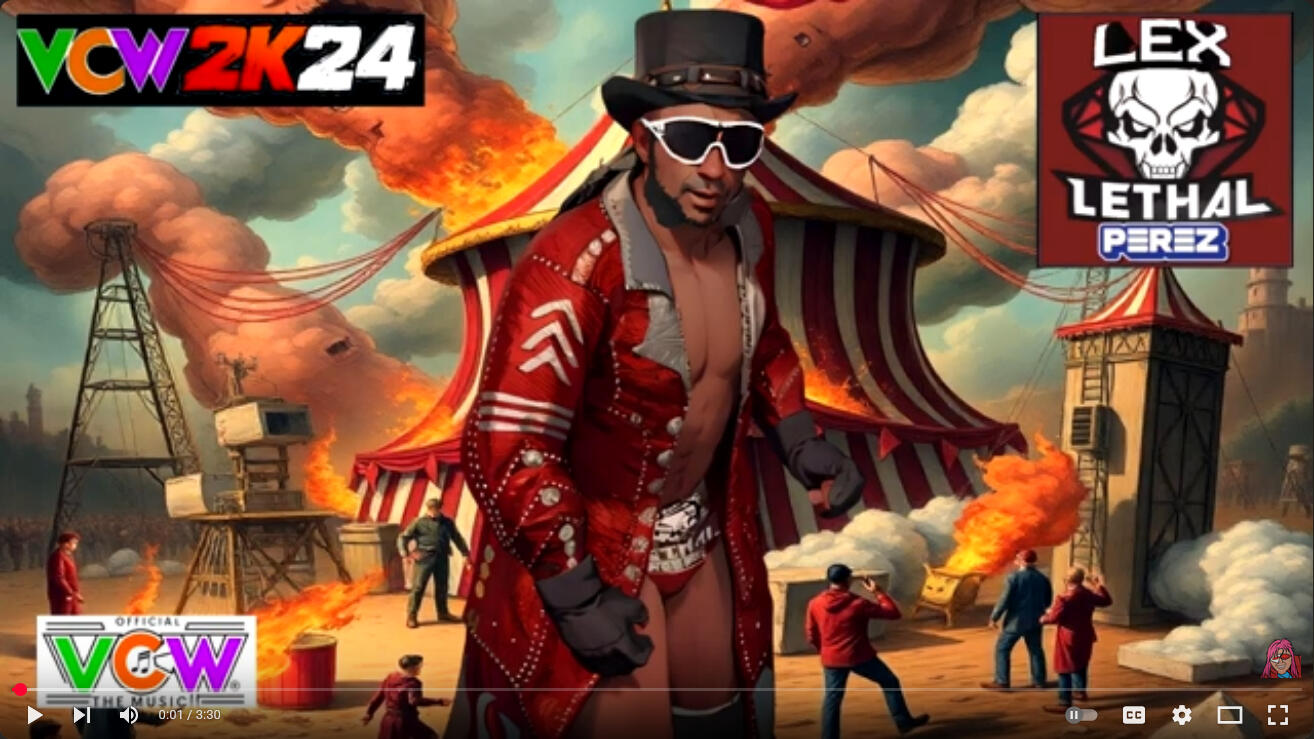
Lord Wellington Arnold — Treachery in the Digital Era.Arrogance. Betrayal. Cruelty. Few creations in VCW radiate pure villainy like Lord Wellington Arnold. Inspired by infamous historical figures Charles Cornwallis and Benedict Arnold, he is the embodiment of treason and tyranny — a man who believes that the colonies, then, now, and forever, belong to His Majesty the King.Arnold carries himself with aristocratic pride, sneering at the fans as “commoners” unworthy of sharing his presence. His disdain runs so deep that even his theme song, “Guillotine the Commoners,” captures his essence: a dark, brooding anthem that reflects his cold heart and absolute lack of humanity.Debuting as one of the new stars of VCW’s Digital Era, Lord Wellington Arnold has quickly risen as one of its most hated villains. To him, loyalty is weakness, compassion is failure, and rebellion is a crime punishable by humiliation and pain.He doesn’t just want to win matches — he wants to reassert his “rightful” dominance over all of VCW, crushing anyone who dares oppose the crown.In an era built on heroes, icons, and legends, Arnold stands apart as the aristocratic tyrant fans love to despise.
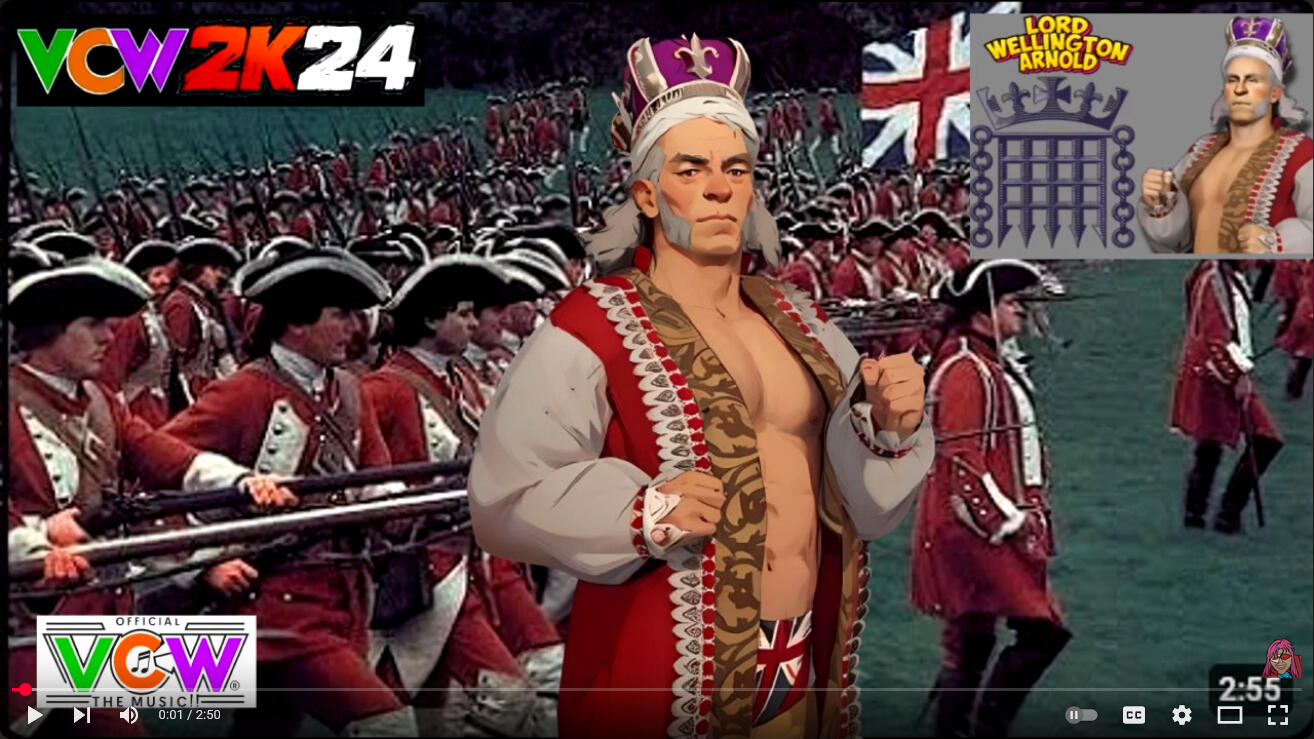
MC ICE — VCW’s Heavy Rap Master.One of the major building blocks of classic VCW, MC ICE made his debut during the first roster expansion in December 1993. Originally created from a morphing Rocksteady figure from the Teenage Mutant Ninja Turtles line, his human form became the Heavy Rap Master of VCW — a larger-than-life character inspired by the styles of MC Hammer and Vanilla Ice, with a dose of love for Pn News.From those early days, MC ICE became a cornerstone of the federation. He rose to incredible success, achieving the rare status of a VCW Grand Slam Champion, holding every title across the promotion multiple times and cementing himself as a Hall of Fame legend.But like many VCW originals, his return to the Digital Era was delayed again and again by glitches and setbacks from WWE 2K14 onward.
Despite those frustrations, the time has finally come.Now, in VCW 2K24, MC ICE is ready to rhyme and shine once again, this time reuniting with his longtime ally —
the human version of Bebop, Road Rage. Together, they bring back a legendary partnership,
ready to dominate in the Digital Era just as they did in the past.
Major League Morrison — VCW’s Big-Swinging Villain.Built like a powerhouse in the mold of Kerry Von Erich, Major League Morrison is one of the bold new superstars of VCW’s Digital Era. Once a celebrated hometown slugger, Morrison had the look, the charisma, and the swing that made fans believe he was destined for greatness. But when his baseball career collapsed, his ego didn’t. Instead, it carried him into the squared circle — where he embraced his arrogance and became one of wrestling’s most self-obsessed villains.His official theme, “Legend At The Plate” by The Bleacher Kings, captures this fall from grace perfectly. With jangly guitars, stomping drums, and ballpark harmonies, it plays like a sugary baseball anthem — until the lyrics twist into mockery. The chorus chants like a sarcastic crowd from the cheap seats, reminding Morrison (and everyone else) that his legend isn’t what it once was.In the ring, Morrison wrestles with the power of a slugger and the confidence of a man who still believes the stadium lights should shine only on him. Every suplex, strike, and sneer is delivered like a home run swing meant to humiliate his opponents. Fans once cheered him — now they boo him out of the building.With his Von Erich-like build, villainous swagger, and that mocking anthem blasting, Major League Morrison is VCW’s arrogant ex-hero turned jumbotron-worthy menace.
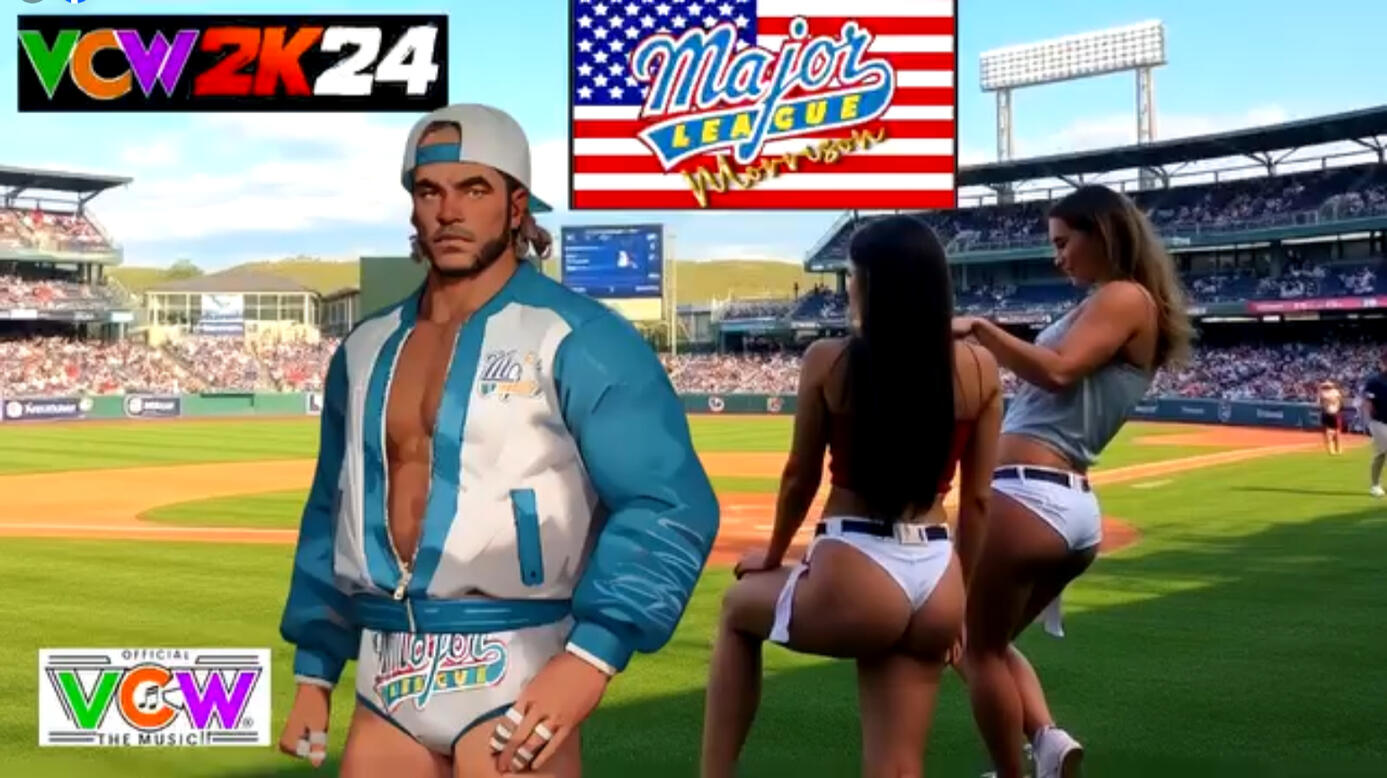
Master Lock — VCW’s Street-Born Enforcer.Need protection? Need a problem solved? Pay up front, and Master Lock will handle the rest. Straight from the gritty city streets, Master Lock is the kind of brawler who doesn’t ask questions — he just gets the job done. Inspired by the powerhouse grit and presence of WCW/WWF legend Ron Simmons, Master Lock brings that same raw intensity into VCW’s Digital Era — a mix of hired muscle, wrecking machine, and unstoppable force.His official theme, “Damn Groove” by Groove Terminal, captures his essence perfectly. Built on pounding basslines, thunderous drums, and talkbox-soaked vocal hooks, it’s equal parts fight song and late-night funk anthem. The beat hits like a heavyweight fist, while the chorus — “DAMN, he shouts out loud / Don’t mess with Master Lock now” — rings out like a warning to anyone foolish enough to test him.In the ring, Master Lock blends street-fighting toughness with powerhouse wrestling, channeling that Ron Simmons–style dominance to overwhelm and intimidate opponents. Whether he’s working as a hired bodyguard, settling scores for cash, or simply breaking bones for his own satisfaction, one thing is always certain: when Master Lock steps into the spotlight, somebody’s getting hurt.With his brutal style, no-nonsense attitude, and a theme song that grooves as hard as it hits, Master Lock is here to leave a mark on VCW’s Digital Era — one broken opponent at a time.
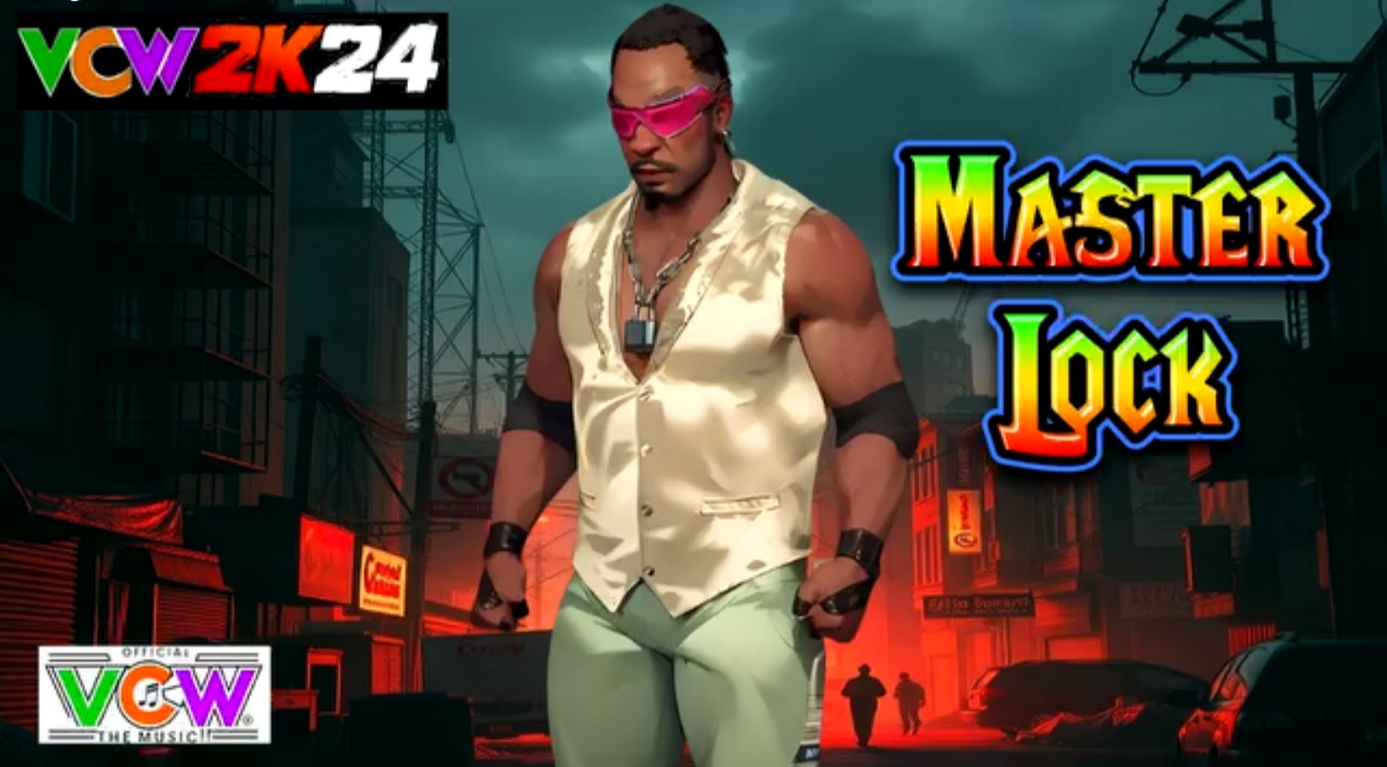
Max Power — “Your Ultimate Master.”Debuting in 2001 during VCW’s Fig Fed Era, Max Power came from a mash-up of pop culture brilliance. In a classic Simpsons episode, Homer Simpson changes his name to the “dynamic-sounding” Max Power — but in that same episode, a TV cop show character named Homer Simpson delivers the perfect catchphrase: “And that’s the end of that chapter…”The idea clicked: combine that catchphrase with Homer’s new name and fuse it all with the charisma and arrogance of The Rock.The result was Max Power, a Rock-like figure with his own unique flair — an African American powerhouse with blonde hair and sideburns, carrying himself with Hollywood Rock–style swagger. He speaks in the third person, demands the spotlight, and has an ego so big it practically needs its own locker room.In the ring, Max Power is explosive. On the mic, he’s unforgettable. And when he ends a promo with his signature closer…“And that’s the end of that chapter…”…it’s a mic-drop moment every time.What began as a parody turned into one of VCW’s most memorable creations, a character so full of swagger and ego that even his creator admits he generated real heat. Now revived for the Digital Era, Max Power is ready to once again remind the world why he’s “Your Ultimate Master.”The result was Max Power, a Rock-like figure with his own twist: an African American powerhouse with blonde hair and sideburns,
modeled with the same arrogant strut and verbal swagger as The Rock.
From the moment he arrived, Max Power spoke in the third person, demanded the spotlight, and carried himself like the world
revolved around him. His ego was so massive it practically needed its own locker room.In the ring, he combined athleticism and charisma, but it was his promos that sealed his place in VCW history.
His trademark closer never failed to send fans into a frenzy:“And that’s the end of that chapter…”What began as a playful parody became one of VCW’s most memorable personalities. Now reborn in the Digital Era,
Max Power is primed to once again electrify arenas and remind everyone why he’s “Your Ultimate Master.”
Mike Legacy —Debuting in 1998 during VCW’s Fig Fed Era, Mike Legacy entered the ring as a clean-cut, all-American athlete — a no-nonsense, pure wrestler inspired by the technical excellence of Kurt Angle. A former contestant who outperformed monsters on American Gladiators, Legacy was obsessed with setting records, winning trophies, and proving himself better than every “gimmick guy” who dared step in his path.His biggest feud came against the monstrous New World Warrior, Mr. Olympia. Their bloody steel cage clash at VCW’s Beach Brawl became the stuff of legend, cementing Legacy as a warrior who could hang with anyone, no matter how big or brutal.But Legacy wasn’t just a singles star — he was also king of the VCW frat house. As leader of The Frat Pack with Bad Brad and Turbo Erich Freedom, he lived the Alpha Omega lifestyle: beating up guys, loving women, and coining the motto long before WWE’s Evolution made it cool.Cocky to the bone, Legacy became infamous for lines like:
“Humble? That’s for losers! Now watch how many push-ups I can do in 10 seconds!”Since WWE 2K14, Legacy’s Digital Era return was delayed by the same glitches that plagued so many VCW stars. But in 2K24, this arrogant, record-obsessed showoff is finally back, ready to remind everyone why he’s “The Alpha Male of VCW.”
Monsieur Excellance — Perfection, With a French Twist.What do you get when you mix “The Model” Rick Martel, Mr. Perfect Curt Hennig, and the pompous arrogance of France’s ruling elite before the Revolution? You get Monsieur Excellance — the walking embodiment of superiority, elegance, and disdain.From the moment he struts to the ring, Excellance oozes arrogance. His carefully tailored gear, flawless poses, and smug expressions all scream one thing: he’s better than you — and he knows it. Even his theme song is an insult, composed like a grand aristocratic march that acts as if it’s too refined for the unwashed masses in the audience.A natural heat magnet, Excellance thrives on jeers. Every smirk, every arrogant gesture, every “let them eat cake” attitude only fuels his fire. Inside the ring, he’s as sharp as he is pompous — blending the technical brilliance of Curt Hennig with the vanity and flair of Rick Martel.Monsieur Excellance is more than a wrestler. He’s a living reminder of why the peasants once stormed the gates… and in VCW’s Digital Era, the crowd would love nothing more than to see someone finally chop this aristocrat down to size.
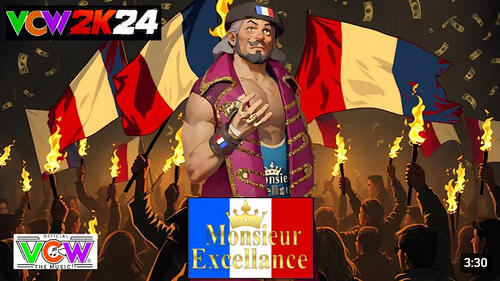
Nick Nitro — The In-Ring General.Debuting in 1996 during VCW’s Fig Fed Era, Nick Nitro was VCW’s answer to Bret “Hitman” Hart — a pure wrestler, smooth technician, and fiery showman rolled into one. Californian-born but Canadian-raised, Nitro was the first major superstar to step out from under the massive shadow of Steve Storm, determined to prove he was every bit the franchise player.Though his lone VCW U.S. Title reign is his only accolade on paper, Nitro’s legacy is built on something greater: consistency. He feuded with every top name in VCW, delivering five-star matches up and down the card. Blending the technical mastery of Bret Hart with the charisma and flamboyance of Shawn Michaels, Nitro was both the goat in the ring and a mouthy showman who never failed to back it up bell to bell.In 2001, Nitro made VCW history by becoming the first superstar to receive his own original theme song, crafted on the MTV Music Generator for PS1 — a groundbreaking moment that set him apart.After years of setbacks and stalled attempts since WWE 2K14, Nitro is finally reborn in VCW’s Digital Era. For a man who’s long been “the best there is” in VCW’s ring wars, this is more than just a comeback — it’s the shot at glory he’s always deserved.
Overdose — The Digital Warrior.Born from pixels and chaos, Overdose is one of the wildest creations in VCW’s Digital Era. Originally a hidden gem from the PlayStation classic WCW vs. The World, he was that game’s answer to Road Warrior Hawk — a face-painted, musclebound wrecking machine built for destruction.When VCW brought him into its digital revival, Overdose was updated for modern times, with a Remco Hawk head scan giving him new life in the 2K series. The result? A snarling, unhinged powerhouse who hits like a freight train and thrives in all-out brawls.Overdose isn’t about finesse. He’s about punishment. With raw strength, smash-mouth strikes, and a taste for chaos, he embodies the danger of his name — once you’re in the ring with him, you’re in too deep, and there’s no coming back.Though absent from VCW’s figure-fed past, Overdose now storms into the Digital Era, carrying the same road warrior energy but with his own darker twist. He’s not here to entertain. He’s here to overwhelm.
Precious Paul Paradice — The Dynasty’s Foundation.Originally a Marvel Magneto figure, he was reborn in VCW’s first roster expansion in late 1992 as the flamboyant, 65-year-old veteran Precious Paul Paradice (intentionally spelled wrong). While keeping a nod to his Magneto-inspired look, Paradice’s character was that of a retired superhero — a man who had walked away from saving the world after growing bitter and frustrated. In his mind, people’s ignorance always forced him to rescue them, and he eventually snapped with his signature attitude: “Oh, go and save yourselves!”From there, he carved out a legendary in-ring career. By the year 2000, Paradice had already held the VCW World Championship 25 times, making him one of the federation’s most decorated icons.His story grew into family legacy when he formed The Paradice Dynasty, a three-man faction with his less memorable son and his far more popular grandson, Mark Kerr Paradice — VCW’s only third-generation superstar. Paul and Mark Kerr would go on to make history as the only grandfather/grandson tag team champions in VCW, forever sealing their dynasty in the record books.A cornerstone of VCW, Precious Paul Paradice remains the ultimate contradiction: once a hero who refused to save, now a bitter ex-savior who found glory inside the ropes.
Rampage — Unleashed Fury.Debuting at the tail end of VCW’s Fig Fed Era in 2002, Rampage came crashing onto the scene as a whirlwind of raw power and intensity. Inspired by the explosive energy of the Ultimate Warrior and the hard-hitting grit of “Raging Bull” Manny Fernandez, he was built to overwhelm opponents with reckless abandon and a never-say-die fury.When VCW transitioned into its Digital Era, Rampage was one of the most anticipated returns. But like so many others, his comeback was constantly stalled by years of glitches and tech setbacks beginning with WWE 2K14. Now, after more than a decade of false starts, the cage has finally burst open — and Rampage is free to run wild again.His arrival is punctuated by a blistering power metal theme song that feels like pure adrenaline in audio form: fast, thunderous, and unstoppable. The moment it hits, fans know chaos is coming, and no one is safe once Rampage explodes into action.The time has come. Rampage is loose in the Digital Era — and nothing can contain him.
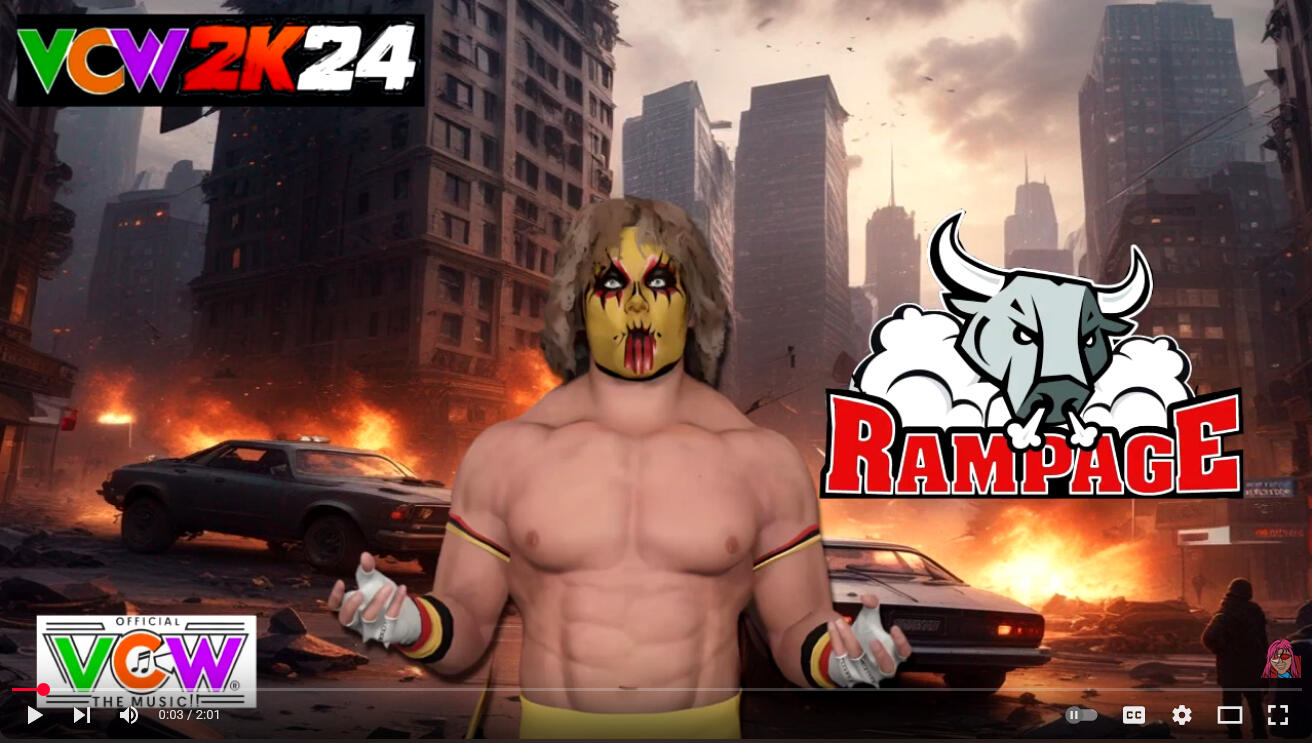
“Soul Glow” Randy Watson — Sexual Chocolate!Trying to kickstart his wrestling career since WWE 2K14, “Soul Glow” Randy Watson is one of VCW’s most outrageous Digital Era creations — straight out of the Eddie Murphy classic Coming to America.Watson struts to the ring as the horrible lead singer of “Sexual Chocolate” (and never misses a chance to repeat it in an annoyed drawl before tossing the mic: “Sexual Chocolate!” [Mic Drop]). His entrances are legendary for all the wrong reasons — drenched in nearly ten gallons of 1980s Jheri Curl spray. Fans joke that when his pyro goes off, he should erupt into a giant blue-orange fireball… but somehow he survives, slick and smiling.Of course, survival comes with a price: the mat is left stained with oil wherever he goes, but Watson doesn’t care. To him, that’s just the mark of style.His theme, a parody of the infamous Soul Glo jingle, is as over-the-top as he is — part comedy, part ego trip, and all heat magnet. The fans may boo, but he demands they “put their hands together for Sexual Chocolate!” Whether they clap or not, Watson soaks it in like the star he thinks he is.Love him or loathe him, Randy Watson is proof that in VCW, even the most absurd can shine — or at least, glow.
Red Dead Sawyer — The Chainsaw Nightmare.One of the most terrifying new stars of VCW’s Digital Era, Red Dead Sawyer fuses the monstrous power of WWF’s Kane, the raw horror of The Texas Chainsaw Massacre movie, and the grim brutality of Undead Redemption. At nearly Kane’s size, Sawyer isn’t just another big man — he’s a walking horror movie come alive.From the moment his entrance theme hits — a doom-drenched anthem laced with the roar of revving chainsaws — the atmosphere changes. The lights dim, the crowd’s buzz turns to fear, and then Sawyer steps through the curtain dragging a roaring chainsaw behind him. Sparks fly as steel teeth grind against the ramp, making his arrival as unsettling as it is unforgettable.Inside the ring, he doesn’t need finesse. Sawyer relies on brute destruction — devastating choke slams, earth-shaking boots, and sledgehammer-like strikes. Matches don’t end with clean finishes; they end with opponents laid out, as if Sawyer has carved his name into their broken bodies.Red Dead Sawyer isn’t chasing belts or glory. He’s bringing the chainsaw to VCW’s Digital Era, and every superstar is just another tree waiting to be cut down.
Rick Revolution — The Patriot Rises.A brand-new force in VCW’s Digital Era, Rick Revolution is inspired entirely by Mel Gibson’s character from The Patriot. A fiery blend of grit, vengeance, and unshakable resolve, Rick has stepped into the ring with one mission: to wage war on the arrogant aristocrat, Lord Wellington Arnold.Carrying himself with the same rugged defiance as a battlefield general, Rick Revolution represents the spirit of rebellion and the fight for freedom. His all-original theme song thunders with fife-and-drum energy fused with modern arena rock, making every entrance feel like the start of a revolution.Inside the ring, Rick is relentless. He mixes brawling power with tactical precision, overwhelming opponents with raw emotion and sheer determination. But his true fire burns brightest when facing Lord Wellington Arnold — the pompous tyrant who believes the colonies, past and present, still belong to the crown.The Digital Era has found its soldier of liberty, and VCW has found its newest battlefield. With Rick Revolution leading the charge, one thing is certain: tyrants beware — the rebellion has begun.
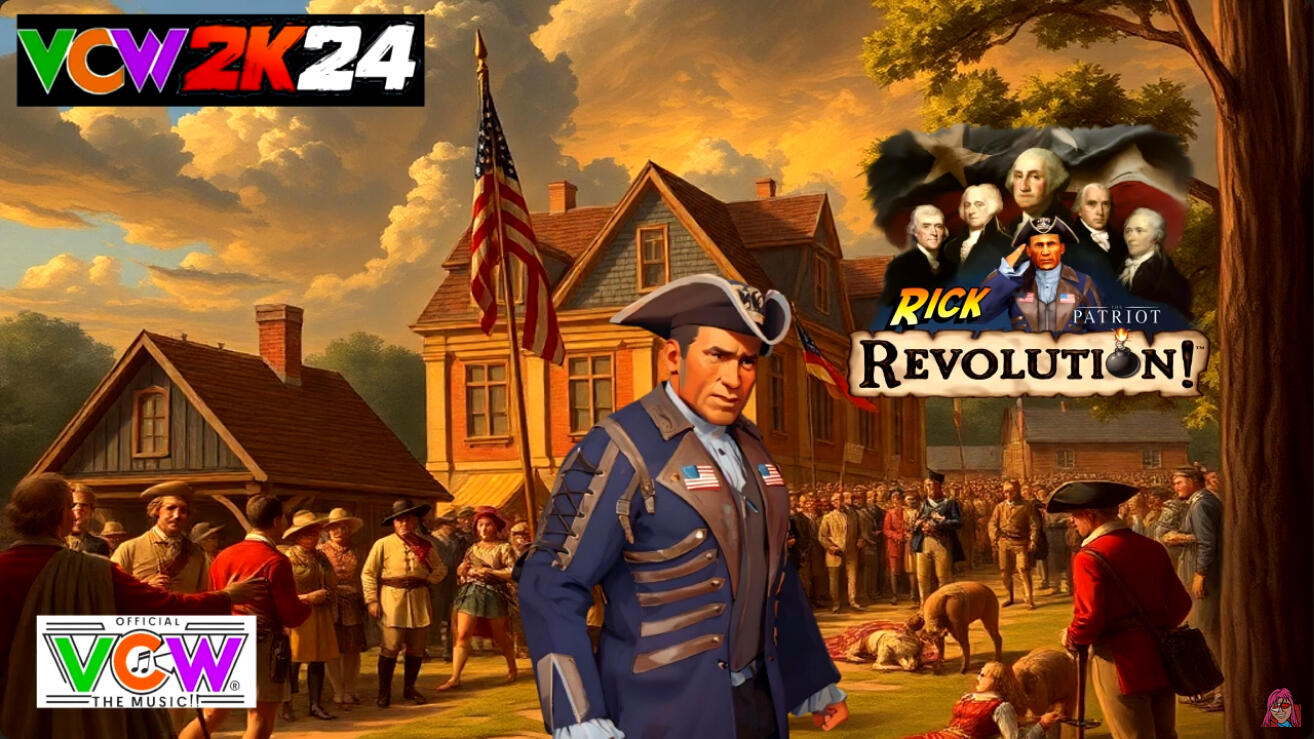
Road Rage — Back on the Streets.Debuting in VCW’s Digital Era, Road Rage roars to life from the TMNT transforming figure of Bebop. Built like a tank and fueled by street-born fury, Road Rage is all brawl, no finesse — a fighter who hits like a car crash and leaves nothing but wreckage behind.What makes his arrival even more significant is his long-awaited reunion with M.C. Ice. After years of setbacks and delays since the launch of VCW’s Digital Era, the two finally stand together once again — not as rivals, but as brothers-in-arms. Their partnership rekindles the energy of VCW’s classic tag scene, now supercharged for a new generation.With an entrance theme that blares like revving engines and shattering steel, Road Rage completes the duo’s return. Together with M.C. Ice, he’s ready to crash through the Digital Era, proving that their brand of hip-hop-meets-hard-hitting chaos never went out of style.
Samoan Kong — The Island Juggernaut.A towering new force in VCW’s Digital Era, Samoan Kong combines the ruthless intensity of Samoa Joe, the commanding aura of Roman Reigns, and the primal strength of King Kong himself. He’s a monster in every sense of the word — explosive, unrelenting, and devastating once the bell rings.But beneath the fury lies a warrior’s heart. Samoan Kong fights not just for dominance, but with the pride and spirit of his heritage, channeling both his rage and his honor in every battle. That duality — beastly power with a kind heart — makes him as respected as he is feared.Already, fans are buzzing about the inevitable clash: Samoan Kong vs. Gwar-Zilla. Two unstoppable monsters, destined to collide in a war of seismic proportions that will shake the Digital Era to its core.The beast has risen. The island roars. Samoan Kong has arrived.
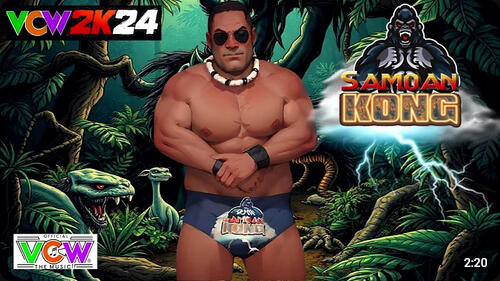
Sin Malice — The Malice of the Ring.A brand-new superstar of VCW’s Digital Era, Sin Malice brings the raw, unhinged energy of Sid Vicious/Justice into a new age of chaos. Towering in stature and built like a living weapon, he combines Sid’s chilling intensity with his own brand of cold, merciless dominance.Sin Malice isn’t here to entertain — he’s here to destroy. His very presence is unsettling, his glare enough to freeze opponents in place before the first strike even lands. Once the match begins, he unleashes pure carnage: powerbombs that shake the ring, strikes that flatten rivals, and a temper that can explode without warning.At a size and power level rivaling Sid himself, Sin Malice doesn’t just want victories — he wants to leave broken bodies in his wake. In the Digital Era, he stands as one of VCW’s most dangerous new threats… a monster whose only fuel is violence.Sin Malice has no friends. No allies. Only destruction.
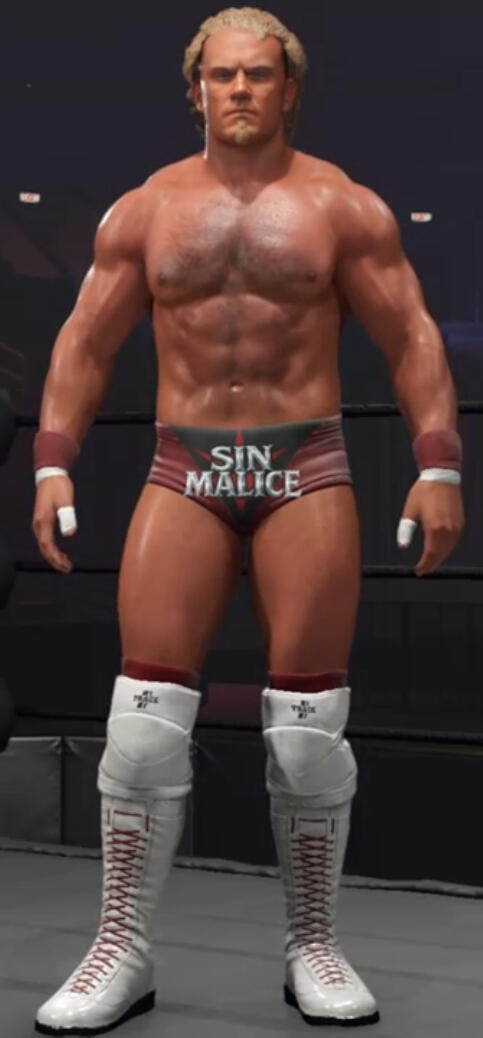
Since WWE 2K22, VCW has been trying to unleash the chaos of Skate Punk, but glitches and setbacks kept this daredevil grounded. Now, in the Digital Era, the wait is finally over.A wild mix of Jeff Hardy’s high-risk style and the rebellious attitude of the blonde kid from the ’90s cult-classic Sega Genesis game, Zombies Ate My Neighbors, Skate Punk is a neon-soaked risk-taker who lives for the next insane stunt. With every dive, flip, and crash, he proves he’s willing to sacrifice his body to steal the show.His all-original theme song captures that reckless, youthful energy — the soundtrack of skateboards hitting pavement, adrenaline pumping, and the roar of the crowd daring him to climb even higher.Skate Punk isn’t just here to wrestle. He’s here to defy gravity, push limits, and live forever in highlight reels.Ride or die. Skate or bleed. Skate Punk has arrived.
SlamDunk — From the Court to the Canvas.Another long-awaited VCW creation, SlamDunk has been trying to make his debut since WWE 2K16, but tech issues kept him sitting on the bench. Now, in the Digital Era, the former NBA powerhouse finally trades the hardwood for the squared circle.At nearly seven feet tall, SlamDunk combines basketball agility with wrestling brutality. His style mixes thunderous powerbombs with explosive leaps that echo his days above the rim. Every slam feels like a backboard shattering, every strike like a fast break gone violent.His persona is all swagger — headbands, trash talk, and highlight-reel theatrics. But once the bell rings, the fun is over: SlamDunk brings the same hunger he once had on the court, now focused on VCW gold.From buzzer-beaters to bell-ringers, SlamDunk is here to prove he’s more than a player — he’s a game-changer.
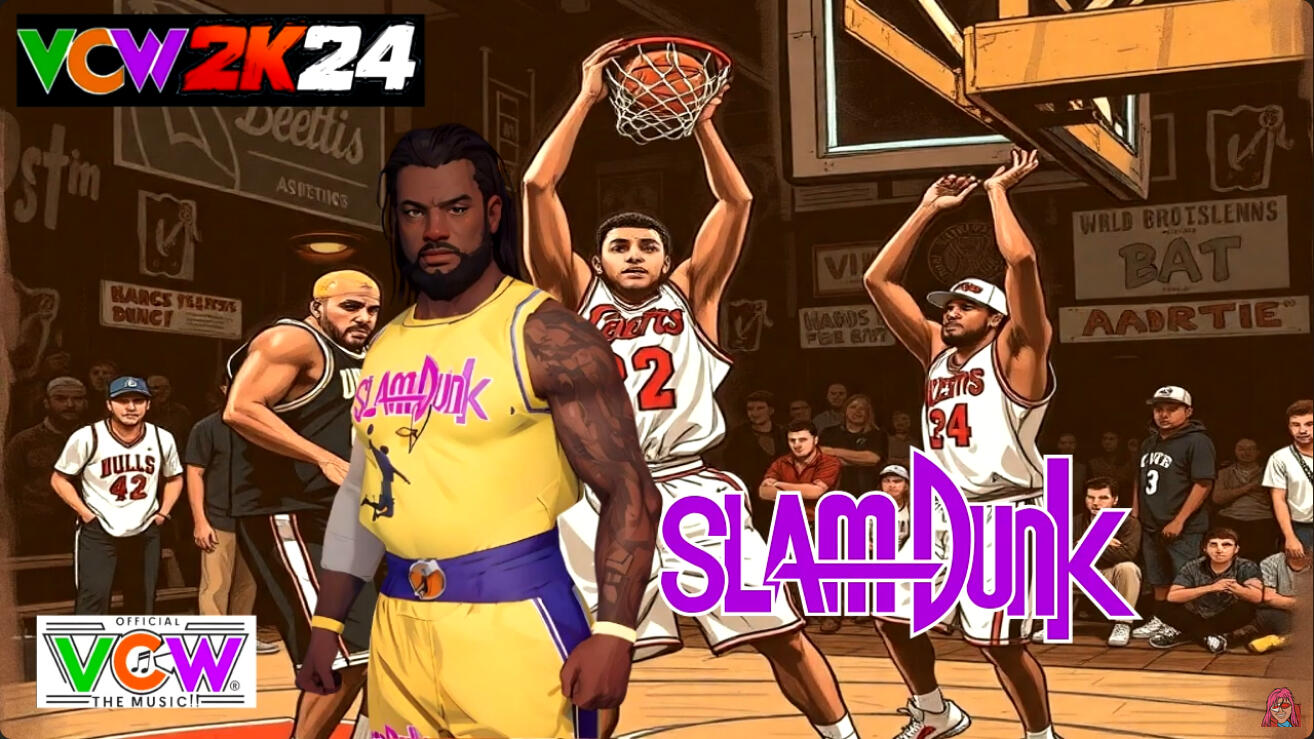
Smash Ventura — The Neon Icon of VCWSmash Ventura wasn’t born inside VCW’s original figure-fed era — he was the one imagining it. Back in 1992, VCW started as nothing more than a little boy’s big idea, crafted from action figures, wrestling love, and limitless creativity. That imagination built the foundation for everything VCW became: its stories, its characters, its rivalries, and its soul.As the years went on, that boy grew up — but the fire never went out. He would shape himself into Smash Ventura, The Neon Icon, a living extension of the spirit that first made VCW possible. Equal parts broadcaster, showman, and fighter, Smash Ventura is larger than life, glowing with charisma, and unapologetically bold.Now, with VCW finally thriving in the Digital Era, it only feels right that Ventura has stepped into the ring himself. He’s not just another superstar — he’s the embodiment of VCW’s history, heart, and future. The kid who dreamed it all up is now one of its brightest stars.Smash Ventura is VCW. VCW is Smash Ventura.
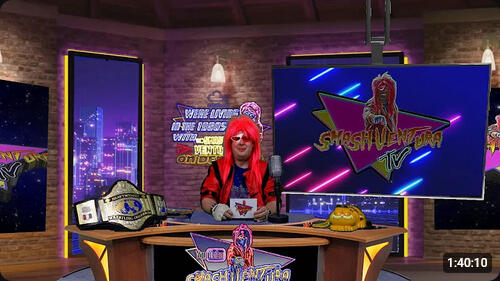
The Southern Dandy — VCW’s Whiskey-Soaked CharmerStraight out of VCW’s Digital Era comes The Southern Dandy, a throwback to the glory days of the 1980s when wrestling rosters were packed with colorful, over-the-top personas. Drawing inspiration from the larger-than-life Col. Robert Parker and the flamboyant Adorable Adrian Adonis, this whiskey-sipping gentleman is equal parts showman and scrapper.In the ring, The Southern Dandy struts with old-school charm, dazzling the crowd with his preening theatrics and flirtatious bravado. But make no mistake — when his honor is challenged, he turns from smooth talker to saloon-style brawler, throwing fists like bar stools in a Saturday night fight.Every match is a mix of elegance and chaos, fueled by bourbon breath and a dangerous pride that won’t let him back down. His southern drawl and signature line — “Lawdy, Lawdy, it’s gettin’ mighty deep on in hee-yer, sir!” — always gets a reaction, whether it’s cheers, jeers, or laughter.The Southern Dandy is proof that sometimes the most dangerous men in the room wear perfume, lace, and a wicked grin.
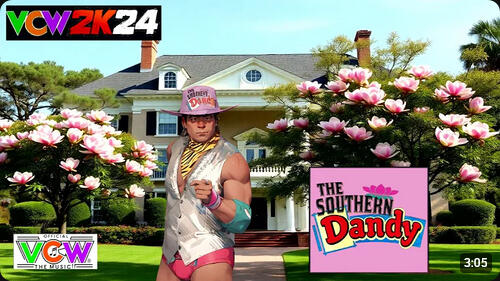
Steve Storm – The All Mighty IconIn 1995, during VCW’s Fig Fed Era, a new name stepped into the spotlight: Steve Storm. He started at the bottom, grinding his way through the roster with his dreaded Indian Death Lock, a move that left opponents writhing in pain.Storm soon earned a shot at the TV Title against The Southern Conman. Their first encounter went the distance — a grueling 45-minute time-limit draw. In the rematch, Conman exposed his classic heel nature by deliberately getting counted out just to keep his belt. But in their third meeting, inside a steel cage, Steve Storm overcame the odds and captured the championship.From there, Storm became the working man’s champion, defending his title week after week against VCW’s biggest stars. His legacy only grew as he moved on to win the U.S. Title and eventually climbed to the very top, securing seven historic reigns as VCW World Champion.Storm’s figure roots trace back to a 1988 He-Man. The figure already wore blue tights, but when his gold boots were swapped out for the red-and-white boots of a Bendie Arn Anderson, the result was a unique look that added a subtle touch of patriotic flair. His personality drew inspiration from Sam Beckett of Quantum Leap — a humble farm boy from Elkridge, Indiana, with a mission to set things right wherever he went.Even his music told a story. Before his official debut, Storm briefly came out to the title theme from Sega Genesis’s Golden Axe — a fittingly heroic tune. But from his 1995 debut onward, his career-defining theme became Elton John’s “Measure of a Man” from Rocky V, an anthem that perfectly captured his role as VCW’s heroic cornerstone.In the ring, he became VCW’s answer to Sting or Hulk Hogan — the true face of the company. Win, lose, or draw, every opponent left the ring elevated just by sharing it with him. His career also saw unforgettable storylines, including evil twin brother angles in 1996 and 1999, which added layers to his heroic mythos.Years later, it came to light that a real-life wrestler named Steve Storm existed first, with others following after — but none had any connection to VCW’s Steve Storm, who had already become a cornerstone of the promotion’s history.Now, in VCW 2K24, Steve Storm returns to carry that same heroism into the Digital Era. Old rivalries are set to ignite, new battles are waiting, and his all-original theme song — created specifically for Steve and owned outright by VCW — fits every fiber of the character. Epic, iconic, and tailor-made for him, it ensures the legend’s legacy marches into the future on his own terms.
The man. The myth.
The All Mighty Icon.
Steve Storm!
Suicide Samson – The Walking ApocalypseFirst unleashed in VCW’s Fig Fed Era, Suicide Samson was a one-man wrecking crew whose original theme blasted the warning: “See them dropping like flies.” From the moment he debuted, Samson was destruction personified — a mix of Goldberg’s raw dominance and the savage fury of the mohawked warlord from Mad Max: The Road Warrior.In the ring, he didn’t play mind games. He broke bodies. His spear was a bullet train, his power slam a death sentence. Opponents didn’t just lose to Samson — they were crushed beneath him.Now, in VCW’s Digital Era, Suicide Samson has been reborn. Updated with a sharper, more authentic Road Warrior-inspired look, complete with the unmistakable mohawk menace, Samson enters arenas to a brand-new all-original theme — one that channels his apocalyptic presence for a new generation.Suicide Samson is back. More violent. More merciless. More inevitable.
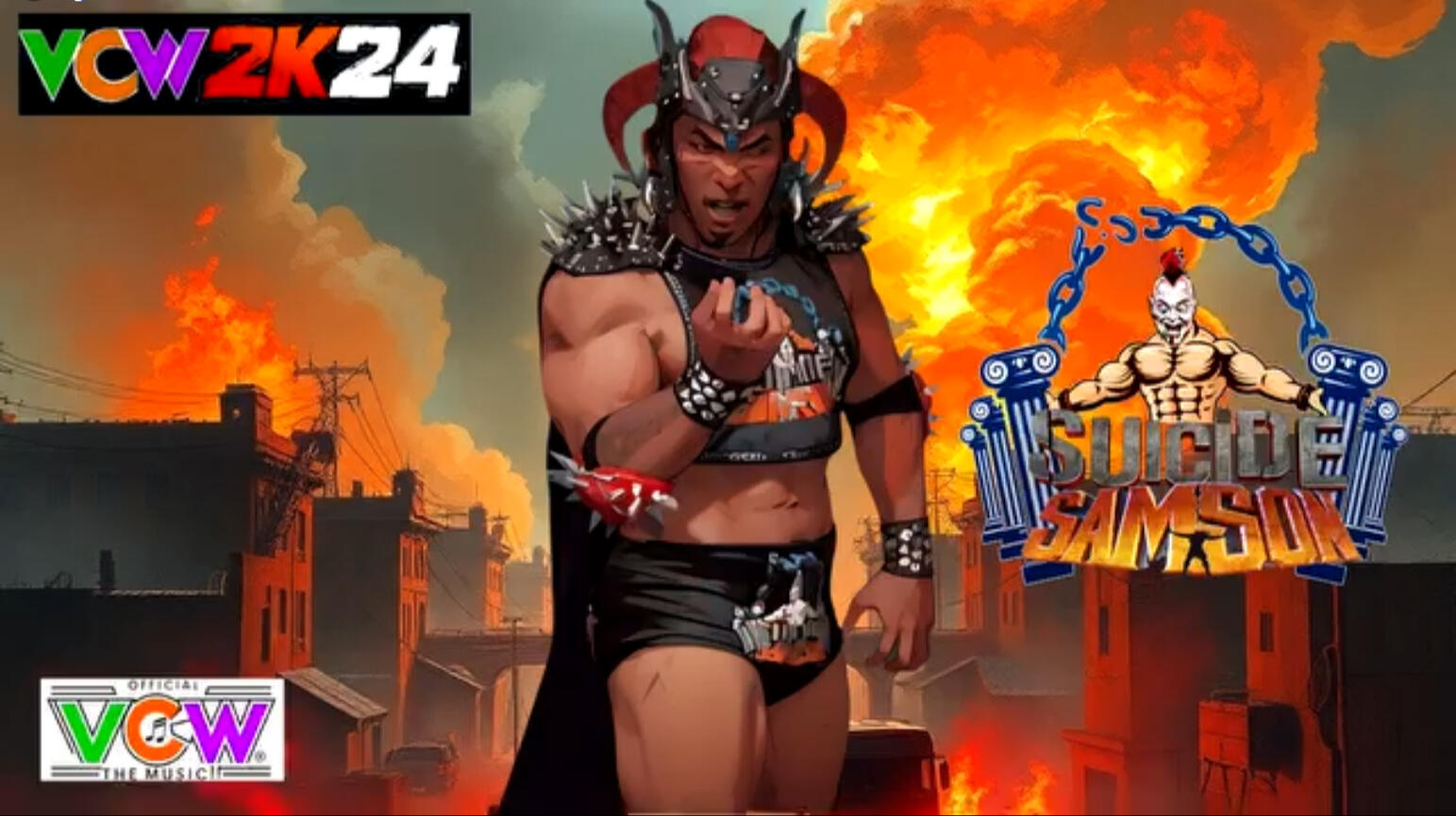
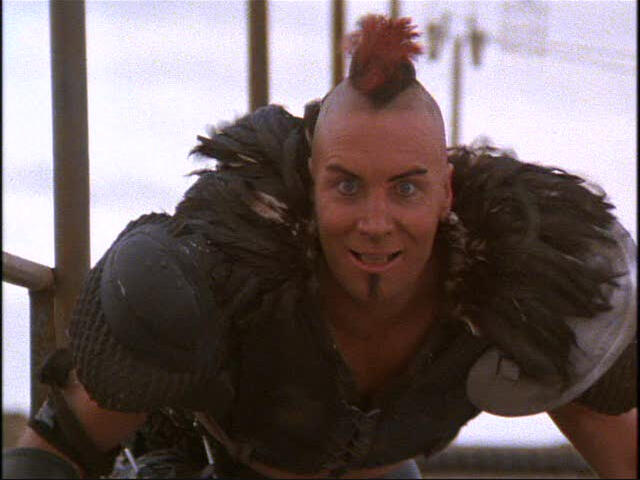
🎲 The GamblerInspired by the grit of Arn Anderson and the smooth-talking charisma of Kenny Rogers, The Gambler is a throwback to when toughness and psychology could outsmart brute force. He doesn’t just wrestle opponents—he plays them, reading every move like a card on the table.His signature theme song sets the tone perfectly with the lyric: “I am probably bluffing, but you should fold…” A warning to every rival that when you step into the ring with The Gambler, you’re playing his game, not yours.Cool under pressure and built on patience, timing, and punishing ring smarts, The Gambler thrives on making others take the wrong risk. Every match is a high-stakes poker hand, and more often than not, he’s holding the winning cards.
The Hitman
Cool under pressure. Cold in execution.Making his debut in 1999, The Hitman exploded onto the scene during VCW’s Figure Fed Era and became a main-event star almost overnight. Inspired by the cold precision of the video game assassin and fueled by the defiant, rebellious energy of Stone Cold Steve Austin, The Hitman combined technical mastery with raw intensity—and backed up every word with action.Feared and respected in equal measure, The Hitman’s path through VCW was lined with chaos and controversy. His bitter feud with VCW owner Mr. B blurred the lines between business and personal warfare, shaking the very foundation of the company. But nothing compared to his brutal, all-out war with Cold Steel—a rivalry so violent and unhinged it reportedly took the police forces of six counties and six teams of federal marshals to finally restrain them.For The Hitman, it was never about fame or glory—it was about domination. Every fight was a mission. Every opponent was a target. And once he locked in… there was no escape.Signature Traits: Tactical brawler • Calculated aggression • Ruthless intensity
Catchphrase: “You’re already dead—you just don’t know it yet.”
The Mighty Duran
Muscle, heart, and the unforgiving grit of the Outback.Hailing from Australia and crowned the Aussie Hercules, The Mighty Duran stormed into VCW as a powerhouse of the Digital Era. Unlike most wrestling gimmicks from down under that play for laughs, Duran is no punchline — he’s a living legend of muscle and might. The only Australian bodybuilder to ever defeat both Lou Ferrigno and Arnold Schwarzenegger in competitive posing and weightlifting, Duran brings legitimate power to the squared circle.Instantly a fan favorite, the only comedy he delivers is the sound of his opponents turning to dust. A good soul, tanned and weathered by the harsh Outback sun, Duran is as loyal as he is lethal. If he likes you, he’ll help you to the death — but cross him, mate, and you’ll find that’s a much shorter trip to extinction.Signature Traits: Monumental strength • Unshakable loyalty • Outback-born toughness
Catchphrase: “Help a mate, bury an enemy.”
The Queen Jack Classic
“The show must go on.”A true original in VCW’s Digital Era, The Queen Jack Classic is one of the most progressive and captivating new superstars in company history. A lifelong fan of Queen, Jack’s persona is a bold tribute to his idol, Freddie Mercury, right down to the uncanny resemblance and the unmatched stage charisma.Before stepping into the ring, Jack lit up stages Off-Broadway as a classically trained ballet dancer, channeling grace, timing, and dramatic flair into an in-ring style unlike anything VCW has ever seen. His moves are a mix of rhythm, showmanship, and pure athleticism — a performance worthy of an encore every night.A fan favorite from day one, Jack’s entrance theme is both a tribute and a confession — telling the story of Freddie’s untimely passing and Jack’s own uncertainty about finding his place in VCW’s high-stakes spotlight. But make no mistake — The Queen Jack Classic is here to claim his throne, his way, and to honor the legacy of Freddie Mercury and the greatest band in history.Signature Traits: Flamboyant showmanship • Artistic agility • Emotional storytelling
Catchphrase: “For Freddie. For Queen. For the crown.”
The Russian War Machine
Cold power. Quiet pain.A terrifying presence in VCW’s Digital Era, The Russian War Machine stands as a towering figure of raw strength and silent fury. Inspired by the cold precision of Ivan Drago from Rocky IV and the relentless menace of Jason Voorhees, this Russian giant embodies the perfect fusion of fear and fascination.But behind the stoic expression and monstrous power lies a man at war — not just with his opponents, but with himself. Beneath the armor of muscle and menace beats a heart scarred by loss, guilt, and the ghosts of his past. Every match is not only a fight for victory, but a battle for redemption.Feared in the ring, respected by the fans, and haunted by his own story, The Russian War Machine is more than a brute — he’s a force of nature carrying the weight of his own humanity.Signature Traits: Relentless power • Silent intensity • Inner torment
Catchphrase: “The war outside is nothing compared to the one within.”
The Sumo Wrestler
The foundation of power. The spirit of tradition.One of the four founding fathers of VCW, The Sumo Wrestler is a cornerstone of the company’s rich legacy. Before VCW was even officially born, he made his debut in Mr. B’s original LJN Figure Fed back in late 1987, where his larger-than-life presence and unmatched discipline set the stage for everything that followed.Originally adapted from Tabe, the martial-arts powerhouse from The Chuck Norris Karate Kommandos figure line, The Sumo Wrestler embodied a perfect blend of respect, strength, and combat philosophy. As VCW evolved from its early figure-fed roots into a global phenomenon, he remained a constant — the living bridge between eras.A legend of balance and honor, The Sumo Wrestler isn’t just a competitor; he’s a teacher, a protector of VCW’s heritage, and a symbol of its fighting spirit. When he steps into the ring, it’s not just a match — it’s a ritual of power, discipline, and respect.Signature Traits: Founding father • Master of balance • Symbol of tradition
Catchphrase: “Strength is nothing without honor.”
Tombstone Tackle
“Touchdown of Doom. Scoreboard of Hell.”Once a gridiron great, now a ghostly gladiator — Tombstone Tackle is one of VCW’s most haunting and imaginative legends. Originally based on a figure from the 1980s Ghostbusters toy line, he was reimagined for the squared circle as a supernatural enforcer unlike any other.According to VCW Illustrated Magazine, Tombstone Tackle made his official debut in 1995, bringing spine-chilling energy and horror-fueled theatrics to the VCW arena. His backstory tells of a brutal on-field pile-up that ended his life during a championship football game… but death couldn’t keep him down. Now resurrected, he roams what he calls his “Football Field of Wayward Souls,” burying opponents one by one in search of eternal victory.With the roar of a crowd echoing through the grave and the lights of the Scoreboard of Hell flickering above, Tombstone Tackle isn’t just playing for points — he’s playing for your soul.Signature Traits: Supernatural powerhouse • Bone-crushing tackles • Haunted endurance
Catchphrase: “Touchdown of Doom… Scoreboard of Hell!”
Tommy TsunamiA new wave of charisma has crashed into VCW’s Digital Era, and its name is Tommy Tsunami. A free-spirited surfer with unpredictable charm, Tommy channels the eccentric energy and off-beat confidence of Johnny Depp’s most iconic characters — part dreamer, part drifter, and completely impossible to pin down.Easygoing on the surface but sharp beneath it, Tommy carries himself with that same unshakable cool and subtle madness that made Depp’s roles like Ed Wood and Captain Jack Sparrow unforgettable. In the ring, he moves with the rhythm of the ocean — smooth, fearless, and always one step ahead.What looks like improvisation is instinct, honed from a lifetime chasing the perfect wave and surviving the ones that tried to bury him. Fans see a relaxed showman; opponents see a storm they can’t predict.Tommy Tsunami doesn’t follow the current — he is the current.Signature Traits: Surfer swagger • Unpredictable charisma • Instinctive ring style
Top GunFast, fearless, and born for the spotlight — Top Gun soars into VCW’s Digital Generation as one of the most electrifying new superstars on the roster. Drawing inspiration from Tom Cruise’s iconic “Top Gun” persona, this high-adrenaline competitor lives life like every match is a mission — no fear, no hesitation, no limits.With his confident grin and unmistakable resemblance to Kevin Bacon from Footloose, Top Gun embodies the perfect mix of cocky charm and heart-driven determination. In the ring, his speed, precision, and daredevil athleticism make him a crowd favorite and a nightmare for anyone standing across from him.He’s the embodiment of motion — all confidence, adrenaline, and cool control. Whether he’s flying off the ropes or rallying the crowd, Top Gun doesn’t just fight for victory — he fights for the thrill of it.Signature Traits: High-flying athleticism • Cocky charisma • Fearless energy
“Tower” Tor JohnsonThe Monster Lives OnIn 1994, the film Ed Wood hit theaters, starring wrestling legend George “The Animal” Steele as Swedish strongman Tor Johnson — a real-life wrestler turned cult-movie icon. For years, my dad had told us stories about how awesome Tor was — from his terrifying appearance in Plan 9 from Outer Space to that famous Halloween mask that sold every October and haunted his childhood dreams.With Ed Wood bringing Tor’s legacy back into the spotlight, stores suddenly carried copies of Plan 9. Dad finally let us watch it — and it was everything he’d promised: zombies, aliens, Bela Lugosi’s final role, and the eerie glamour of Vampira, the original dark hostess my Dad always said came long before Elvira.Watching Plan 9, I was hooked. Tor Johnson wasn’t just a monster — he was power personified. Learning that he had actually been a professional wrestler sealed the deal for me.n a trip to Kay- Bees determined to make my own tribute to Tor. A few head swaps, a pale paint job, dark suit, scars, and those signature dead eyes later, “Tower” Tor Johnson was born — pale, brutal, unstoppable.And from that day forward, Tower Tor Johnson became a legend in VCW, one of its most enduring creations — a bridge between classic monster cinema and the golden age of the figure federation.Signature Traits: Horror legend reborn • Pale powerhouse • Cult-movie aura
Vampyre Kasanova“Beauty fades. Blood endures.”Originally inspired by the Mikola figure from the Lost World of the Warlords Remco line, Vampyre Kasanova made his seductive and sinister debut in the winter of 1994, quickly becoming one of VCW’s most alluring yet feared superstars in VCW's Figure Fed era.Equal parts gothic heart-throb and in-ring predator, the Vampyre’s charm drew crowds in while his ruthlessness sent opponents running. His presence was hypnotic — graceful, dangerous, and steeped in the dark romance of old-world legend.Personality and spectacle, Vampyre Kasanova embodied both — a creature of the night who turned every match into a tragic story written in blood and moonlight.Signature Traits: Gothic allure • Seductive menace • Deadly precision
The VT Tornado“Quiet strength. Relentless motion.”Making his debut in 1994, The VT Tornado quickly became one of VCW’s most dependable and dynamic performers. Though often underrated by fans and critics alike, those who stepped into the ring with him knew the truth — he was one of the greats.A solid mid-card superstar with main-event skill, The VT Tornado brought consistency, power, and heart to every match. His style was a perfect balance of technical precision and raw athleticism — a whirlwind of intensity that could overwhelm any opponent.While others chased the spotlight, The VT Tornado earned respect the old-fashioned way: through performance, passion, and perseverance. To the VCW faithful, he remains one of the true unsung heroes of his era.Signature Traits: Relentless energy • Technical excellence • Quiet determination
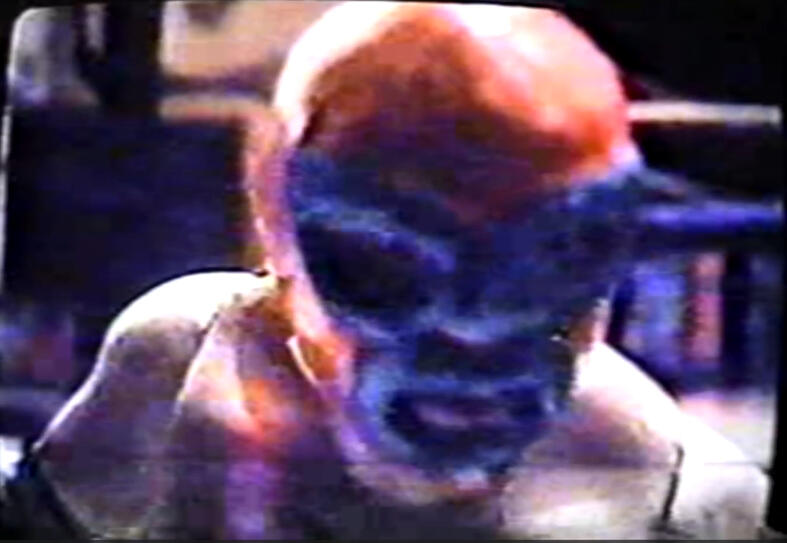
VolcanicOriginally debuting in late 2002, near the end of VCW’s Figure Fed Era, Volcanic blazed onto the scene with energy, color, and charisma inspired by NWA’s Surfer Sting. With his bright gear, explosive athleticism, and fiery passion, he became one of the final breakout stars of that generation — a symbol of transition as VCW evolved into its modern form.Now, after years away, Volcanic has erupted once more — reborn in the Digital Era with renewed purpose and intensity. Older, wiser, but still burning with that same electric spirit, he’s ready to remind the world that legends never truly cool down… they just build pressure until it’s time to blow the roof off again.A mix of nostalgia and new fire, Volcanic represents both VCW’s past and future — a living link between eras, still chasing the thrill of the fight and the roar of the crowd.Signature Traits: High-energy charisma • Explosive offense • Fiery determination
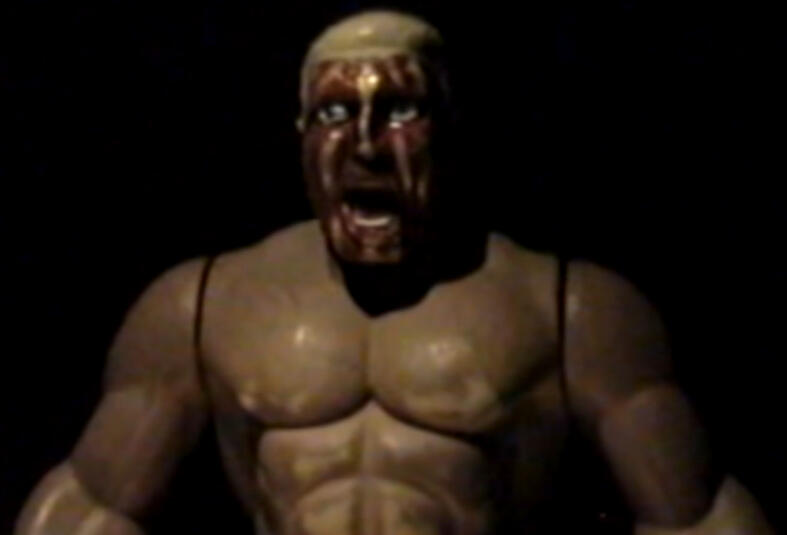
Vermont Championship Wrestling (VCW) Merchandise NoticeRight now, Vermont Championship Wrestling (VCW) isn’t offering merchandise for individual characters.This is out of respect for the real-life legalities involving copyrights, trademarks, and intellectual properties tied to the figure lines and pop culture characters that inspired VCW’s early “figure-fed” era.Before releasing character-based merch, VCW will roll out original redesigns to ensure all likenesses, names, and creative elements are fully our own.Some stars — like Steve Storm or the Sumo Wrestler — will only need minor updates such as new, original face designs. Others, like MC ICE and Tombstone, will get full revamps to move away from their figure-based origins.Characters such as Bull Hurley and Bolo Yeung represent examples of more extensive future updates — including new names, likenesses, and theme song lyrics — as part of VCW’s ongoing evolution into a digital-era wrestling promotion built entirely on original creations.For now, fans can show support through official VCW Logo Gear and Smash Ventura merchandise, which are wholly original and legally cleared.Your support helps VCW grow while honoring the creativity, nostalgia, and history that started it all.
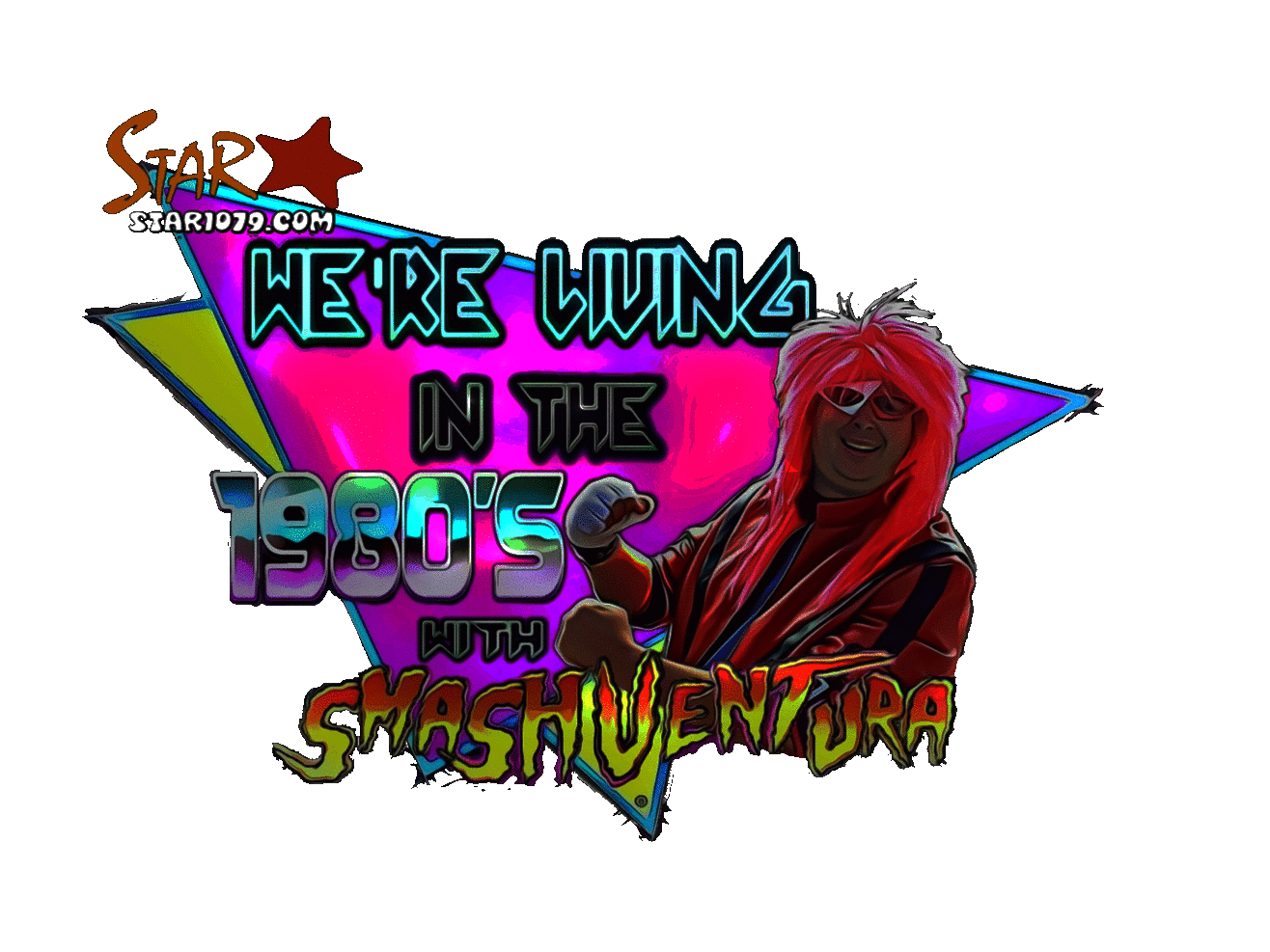
Links Below:
- Smash Ventura TV
- The VCW Playlist
- VCW on Facebook
- We're Living In The 1980's - Listen Here!
- VCW Official Theme Songs!
- Official Smash Ventura & VCW Gear!
- Smash Ventura Website!!!
Smash Ventura™, We’re Living in the 1980s™, “Neon Icon”™, Smash Ventura TV™, Larger Than Life™ hand gesture & catch phrase “See Ya In The Past”™, Vermont Championship Wrestling™
© 2025, Retro Radio Media Group LLC. All Rights Reserved.
